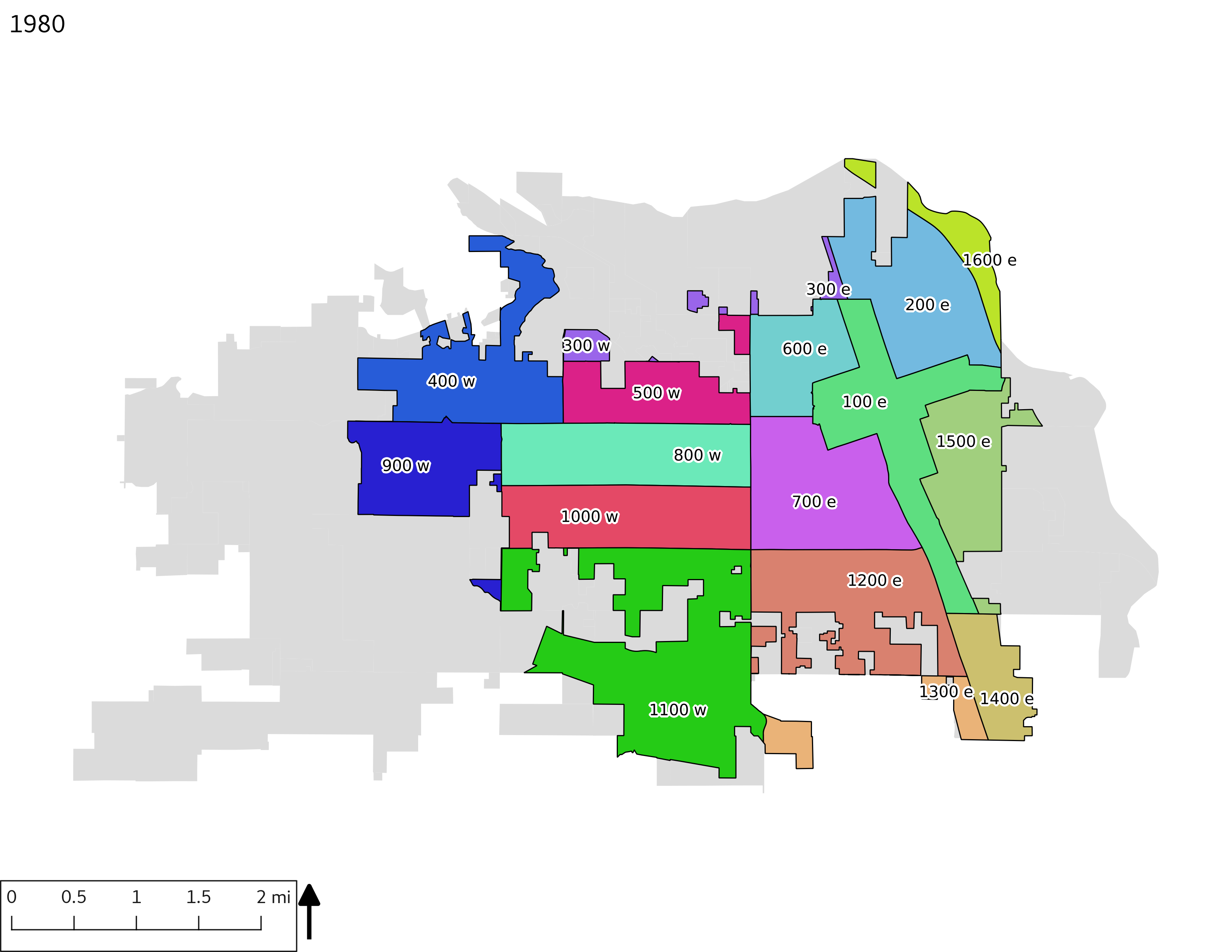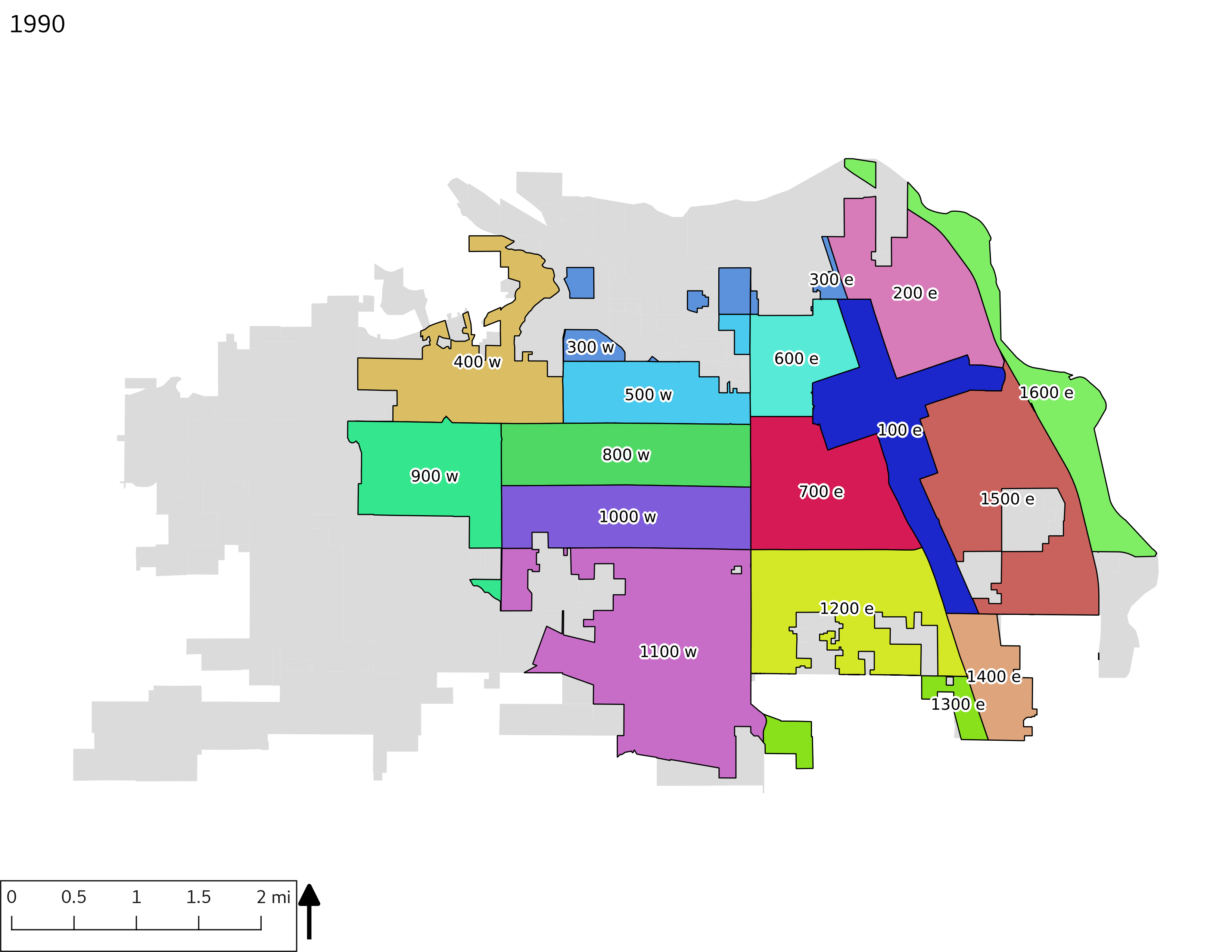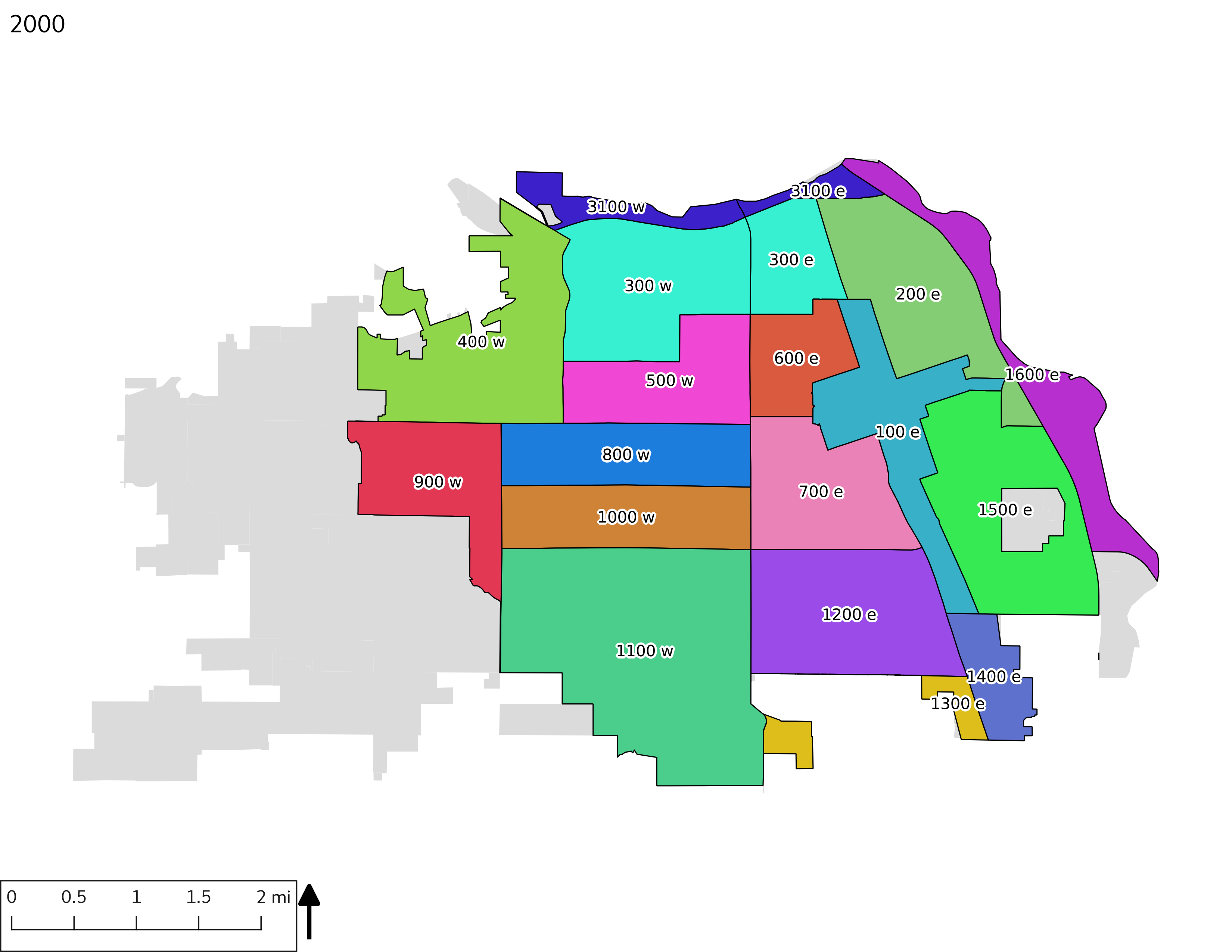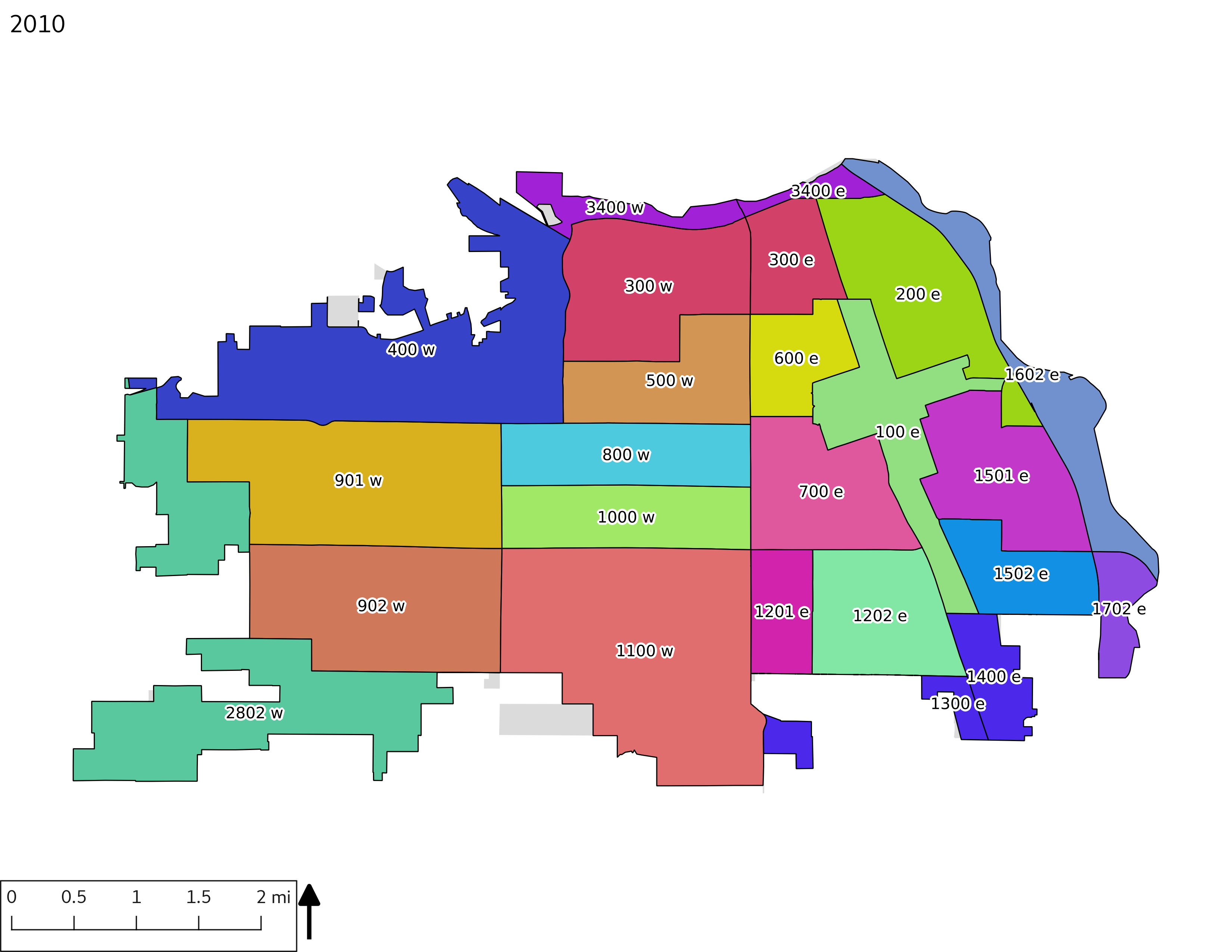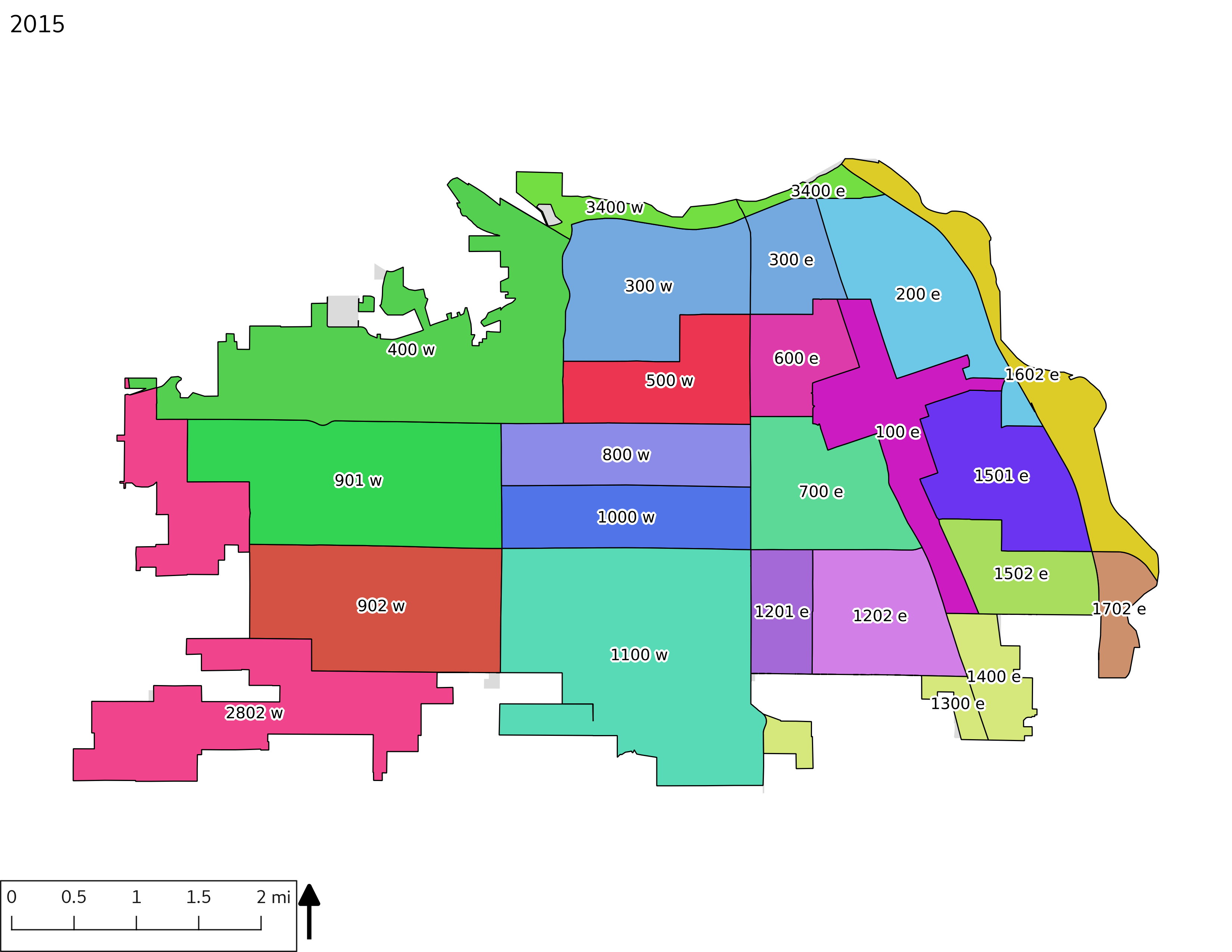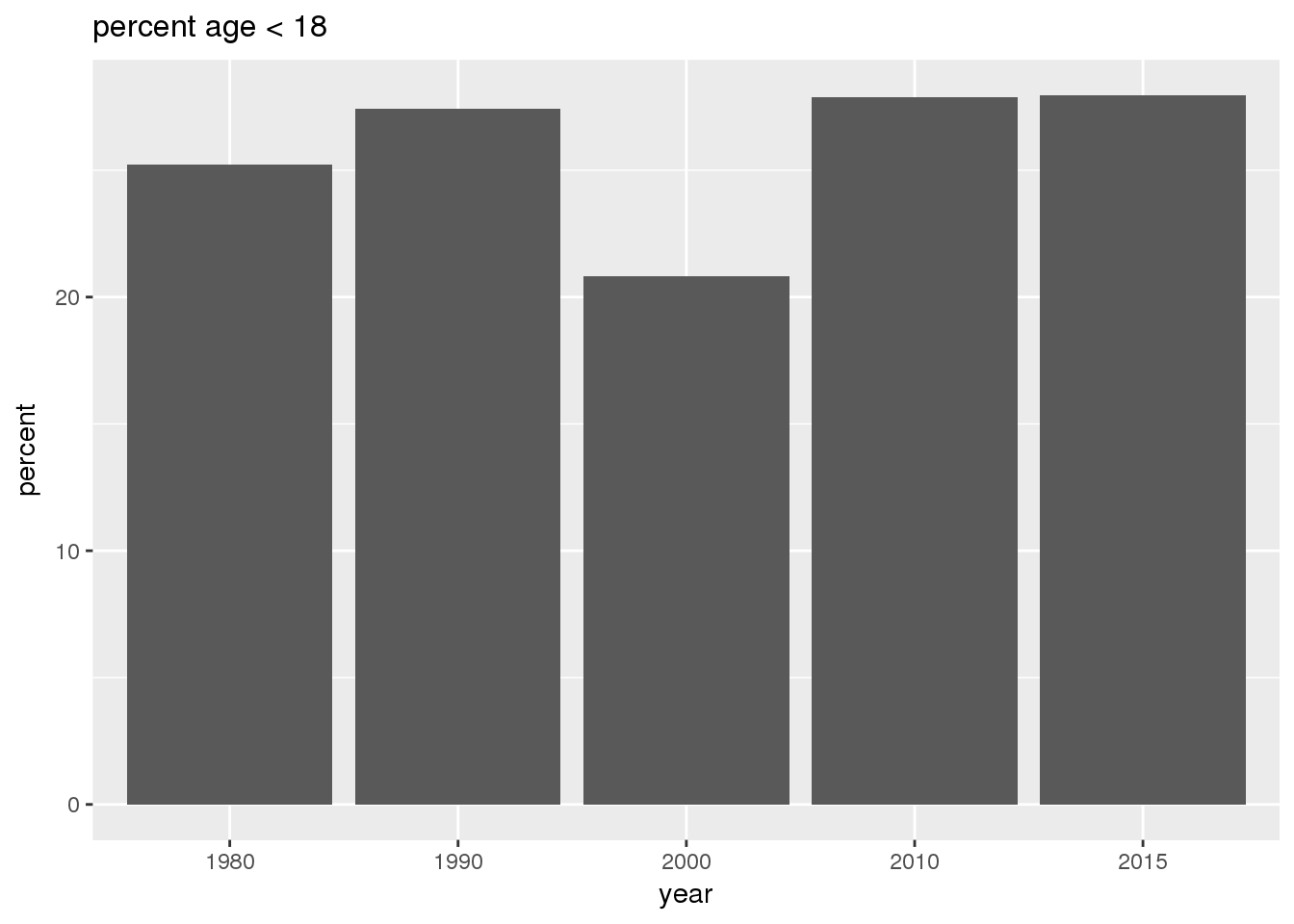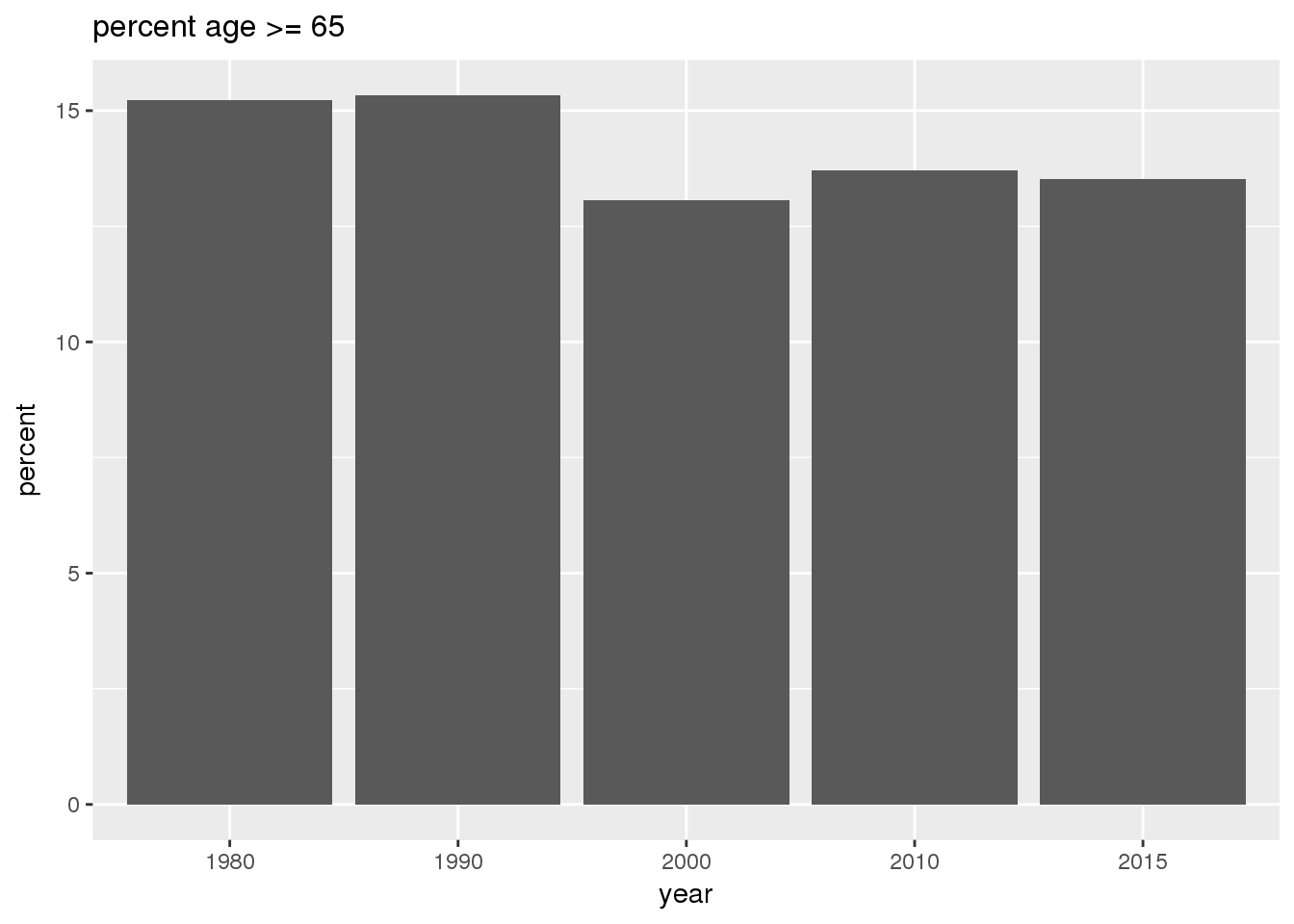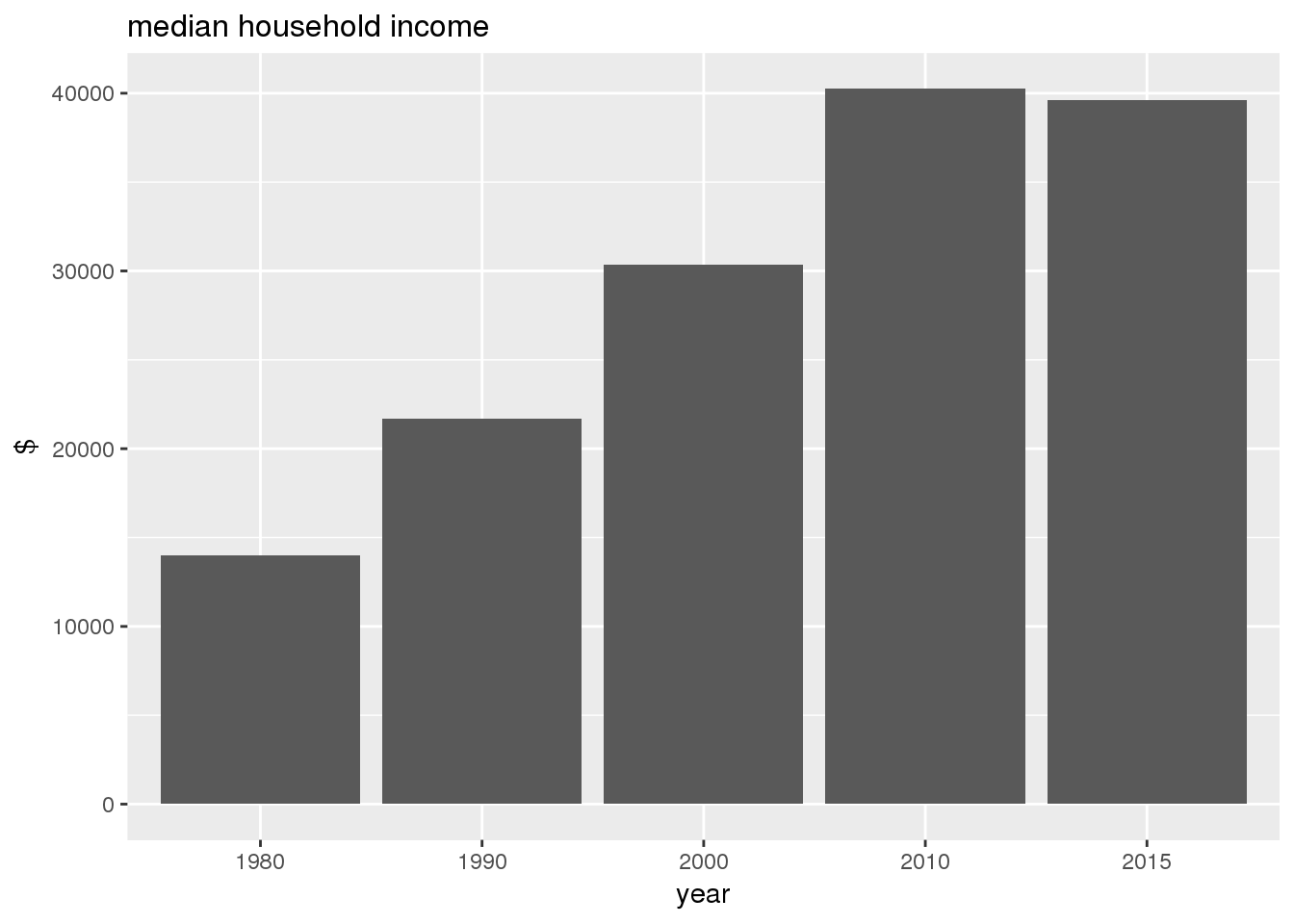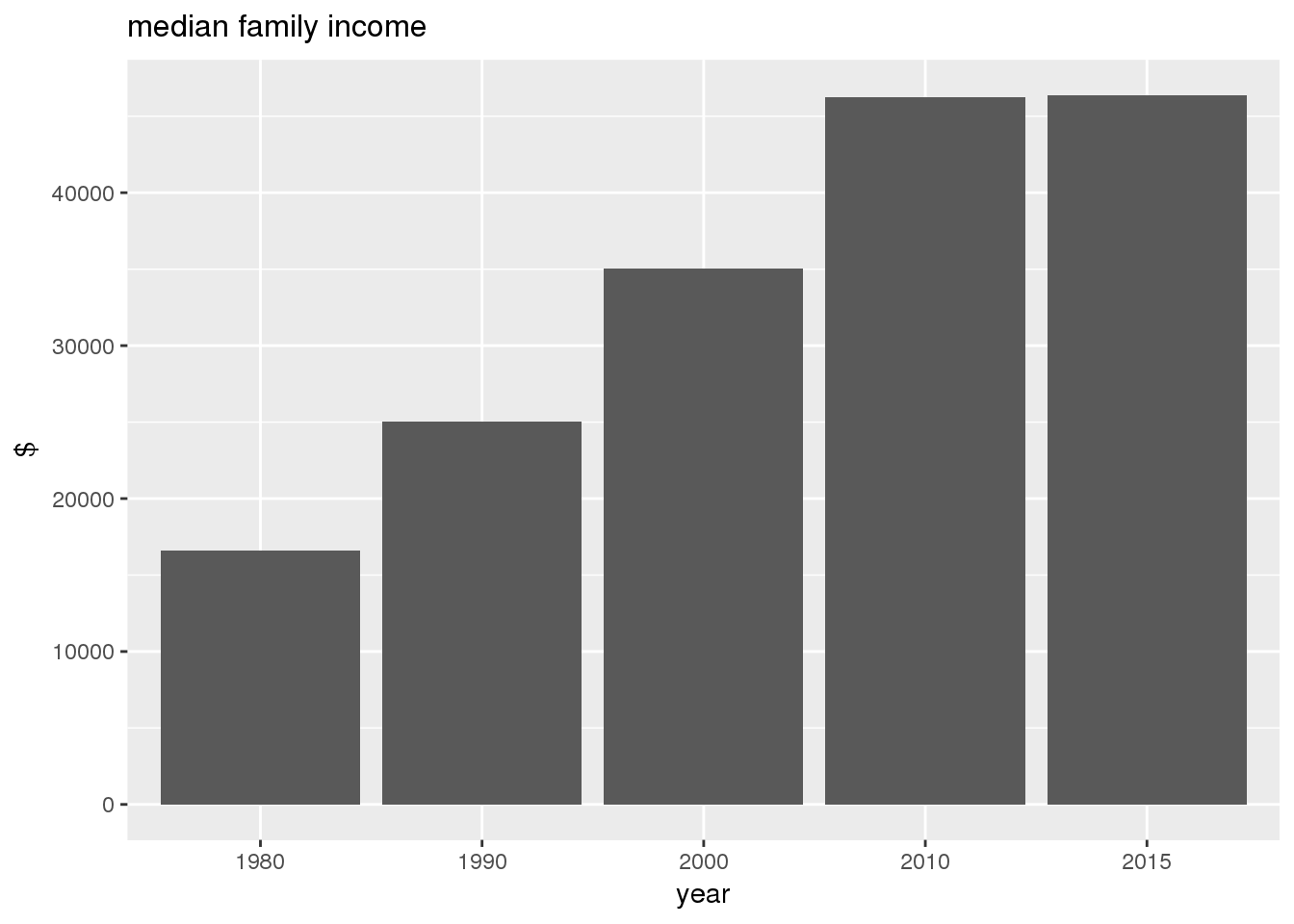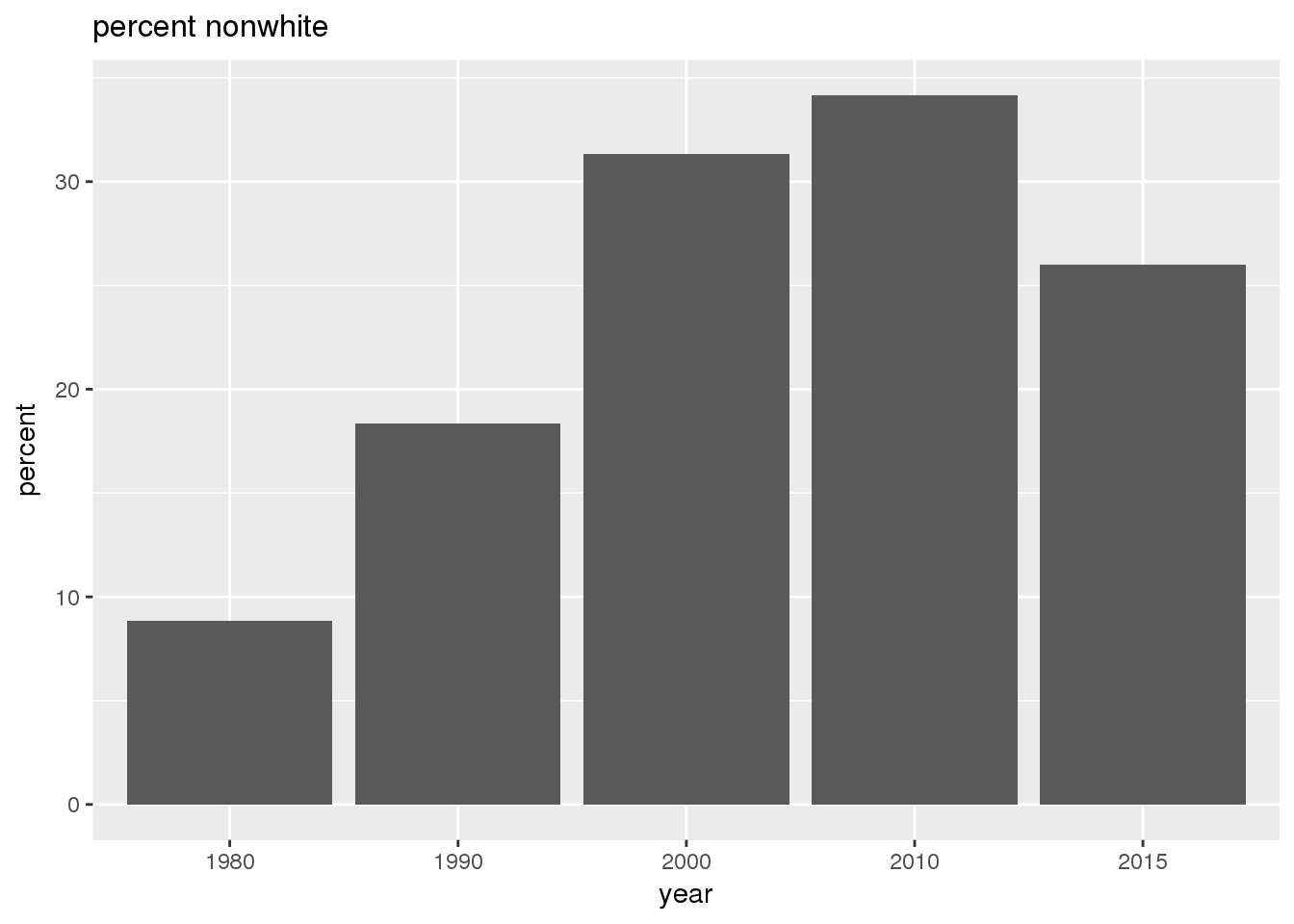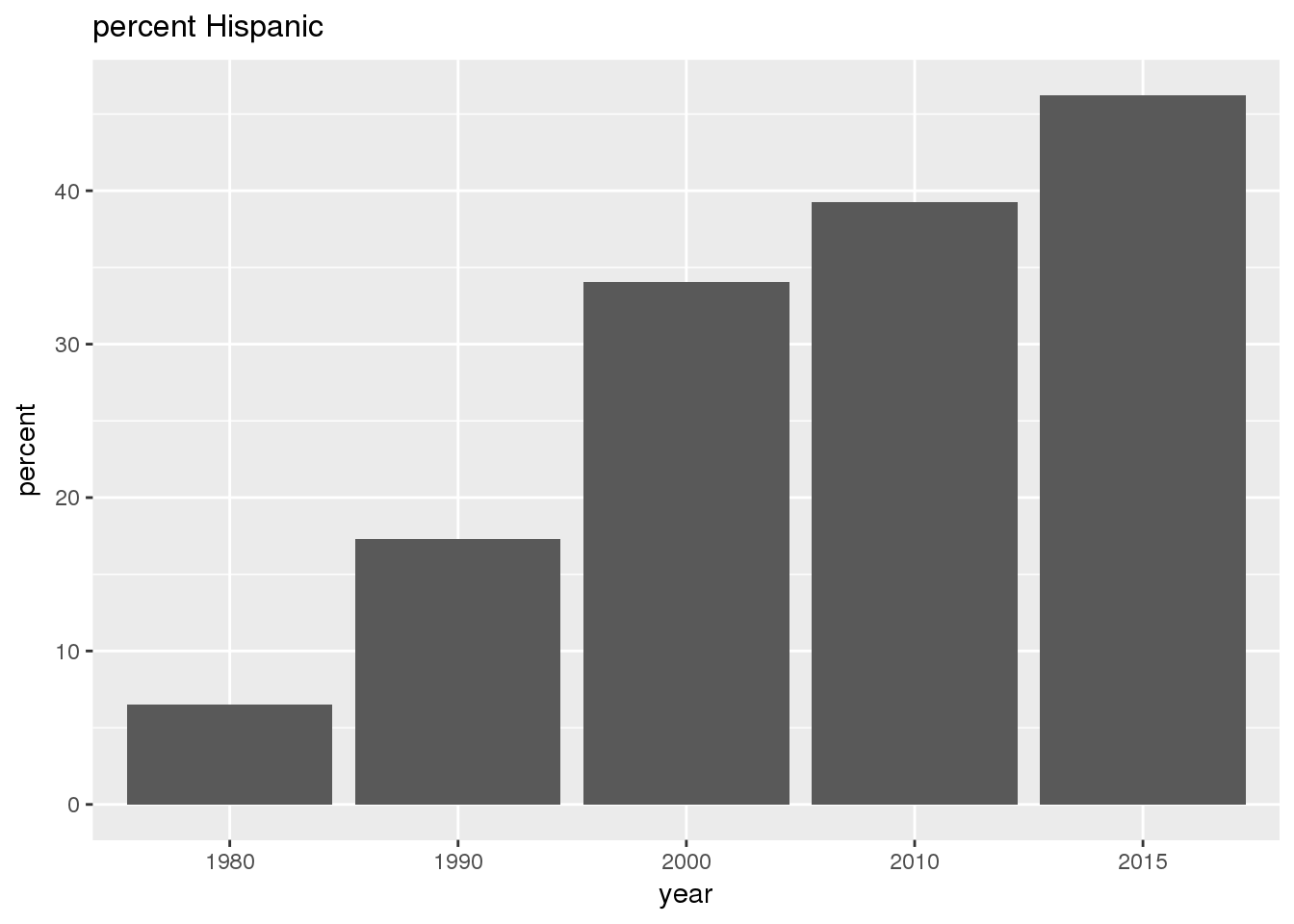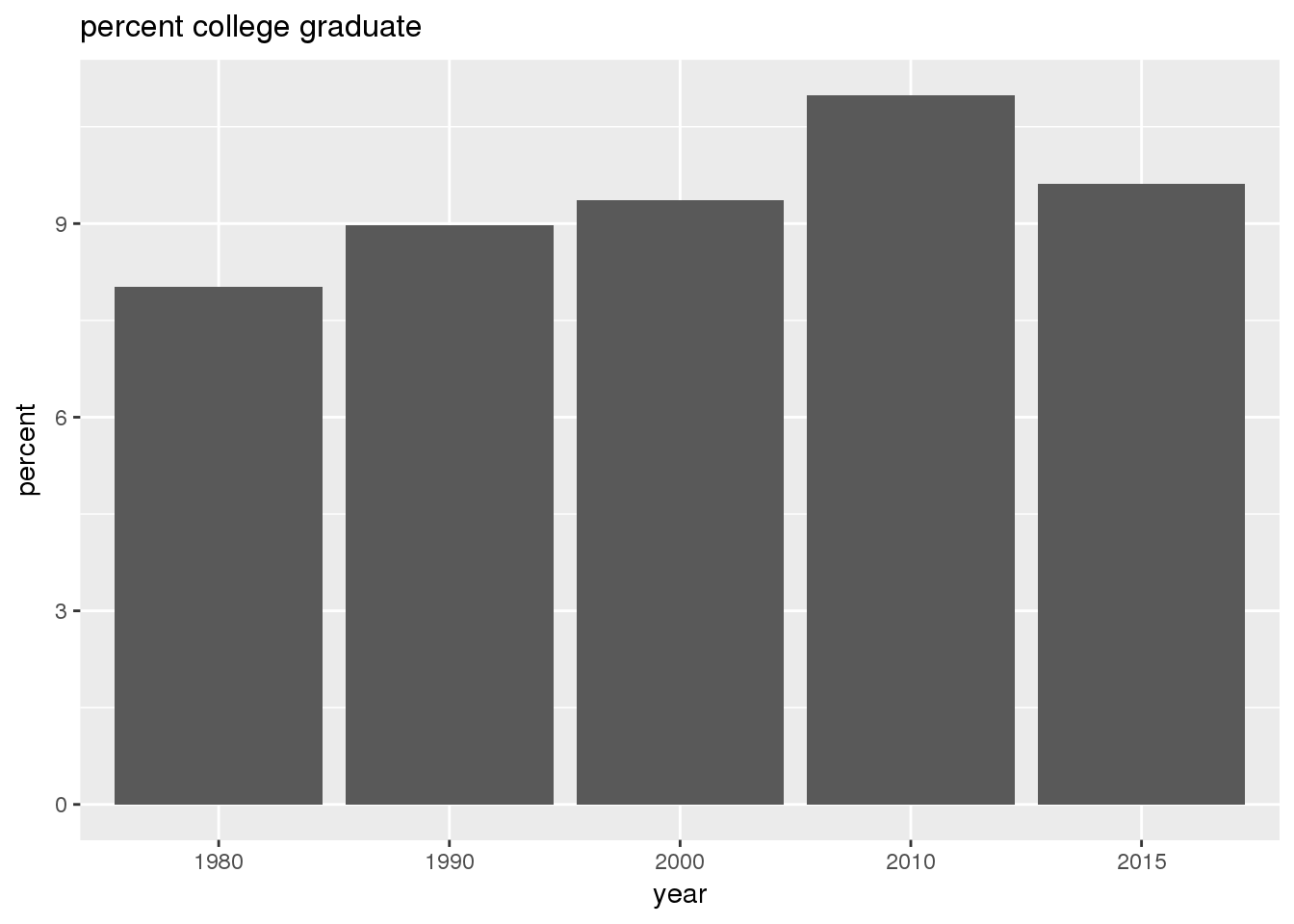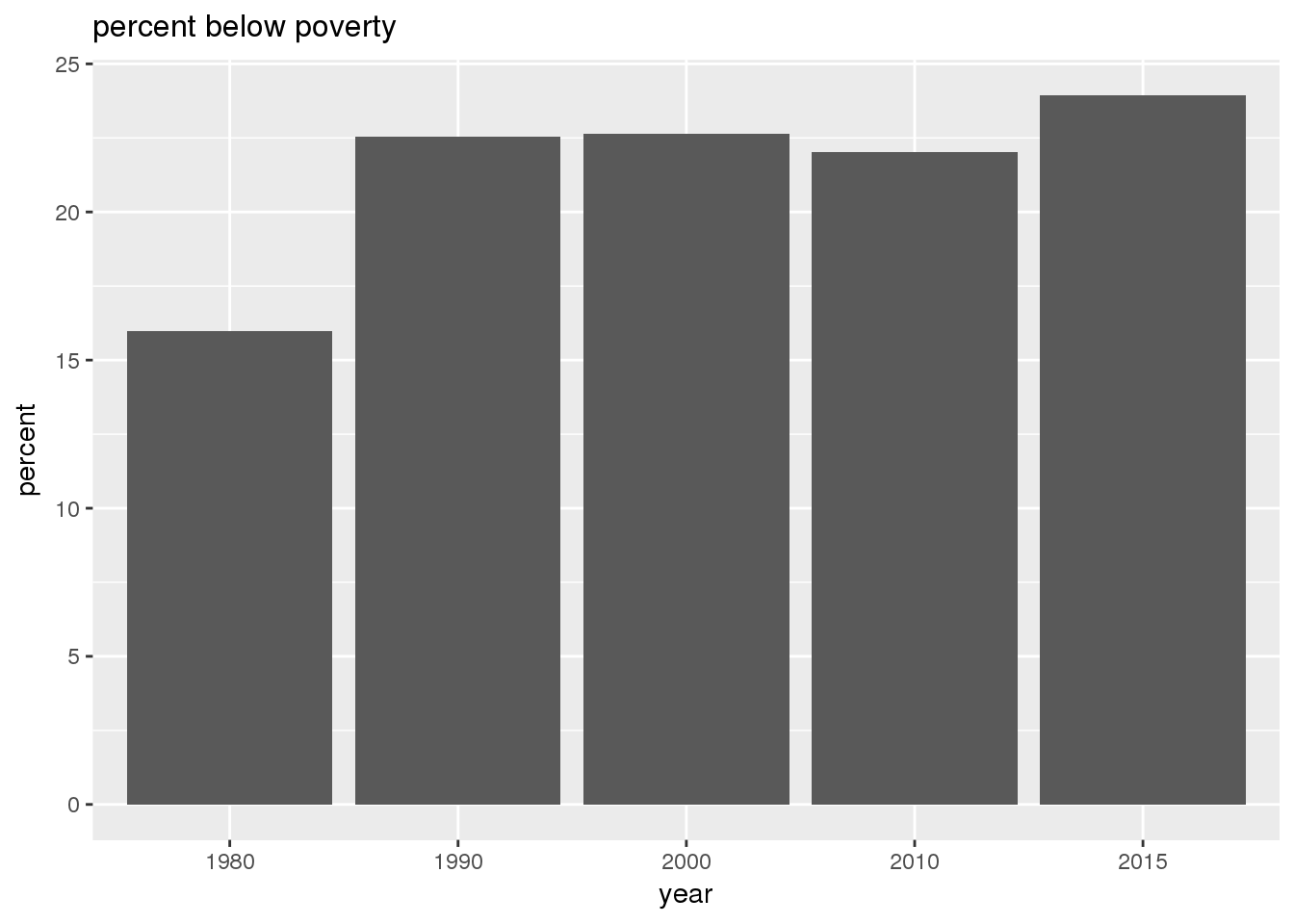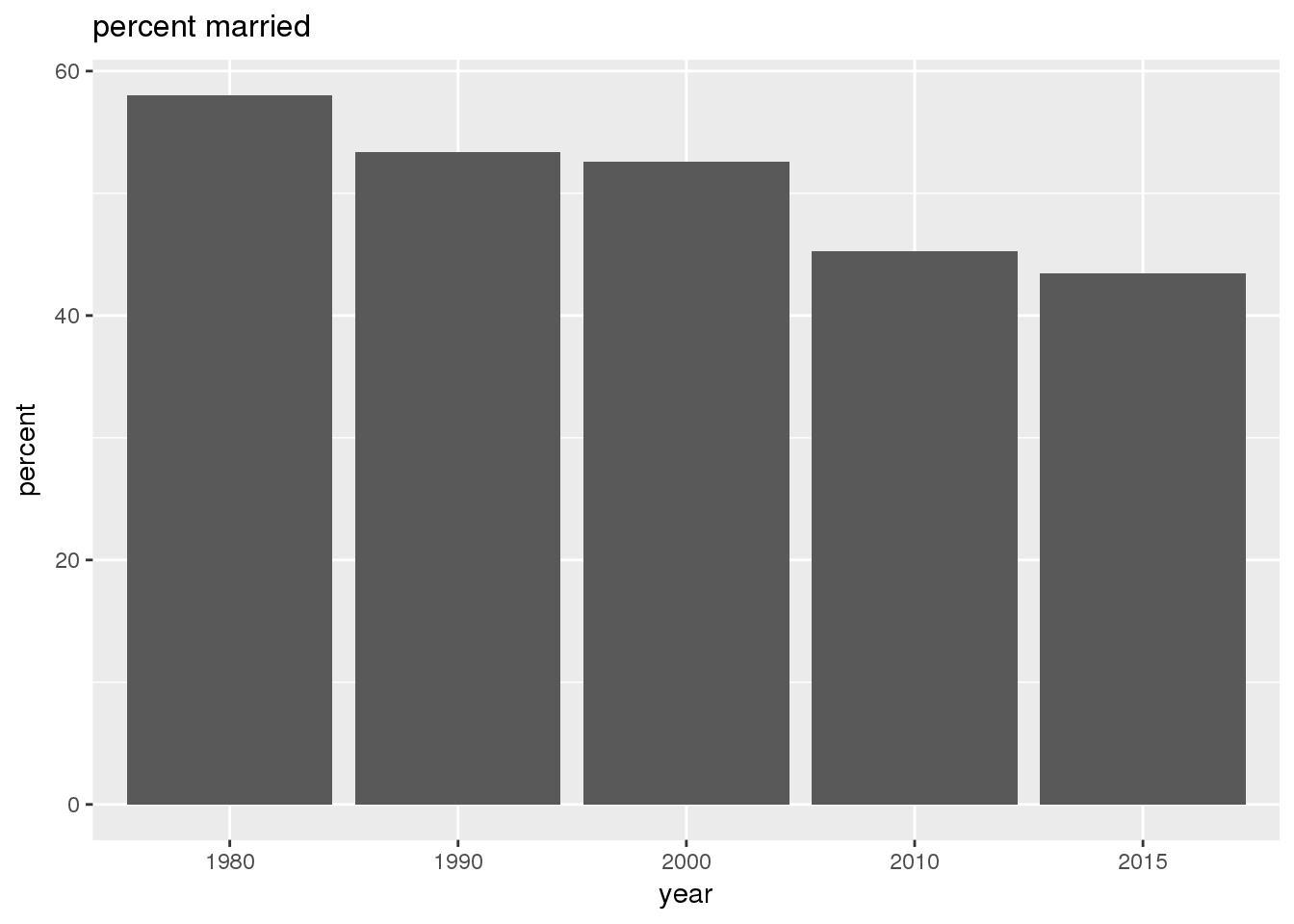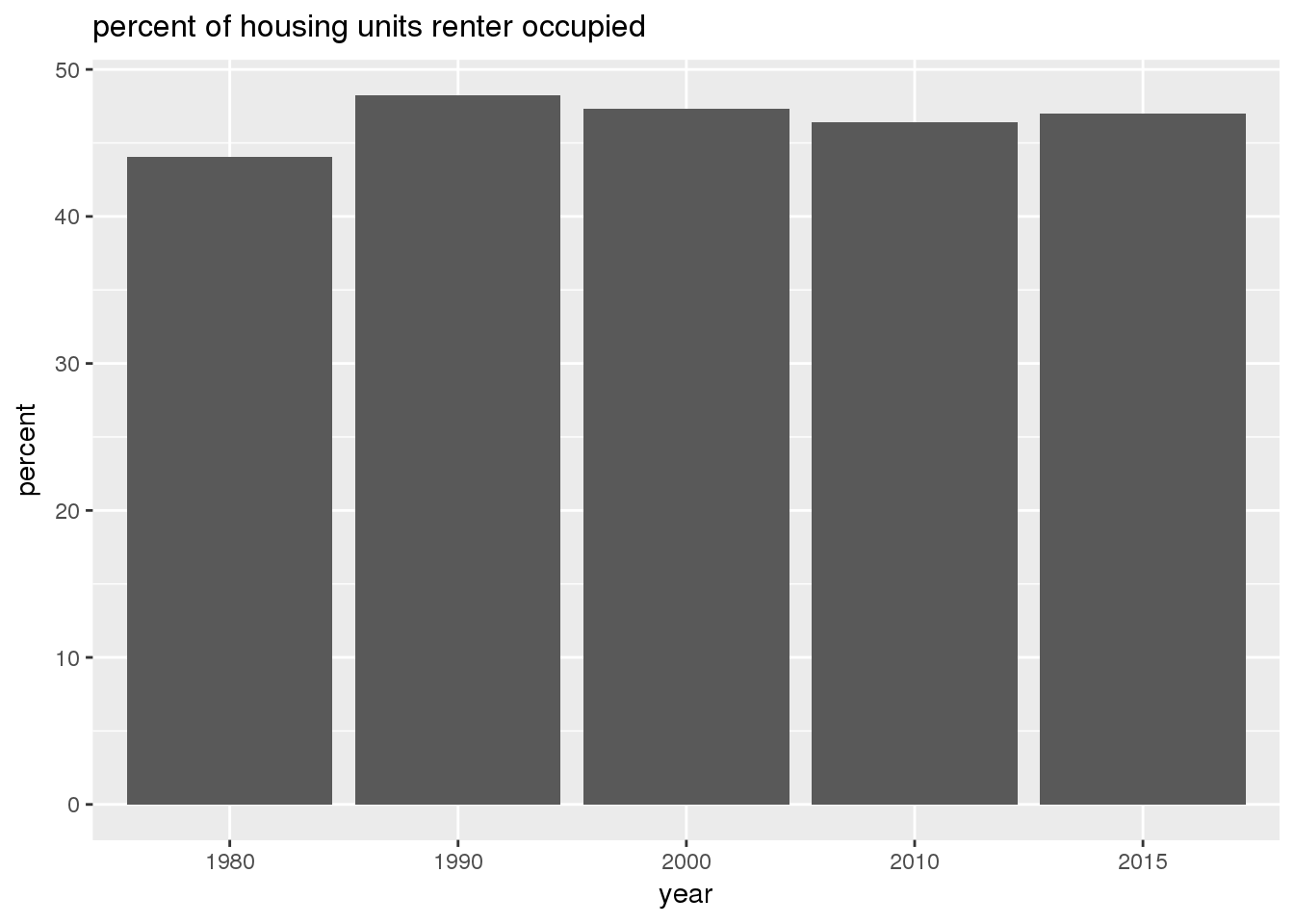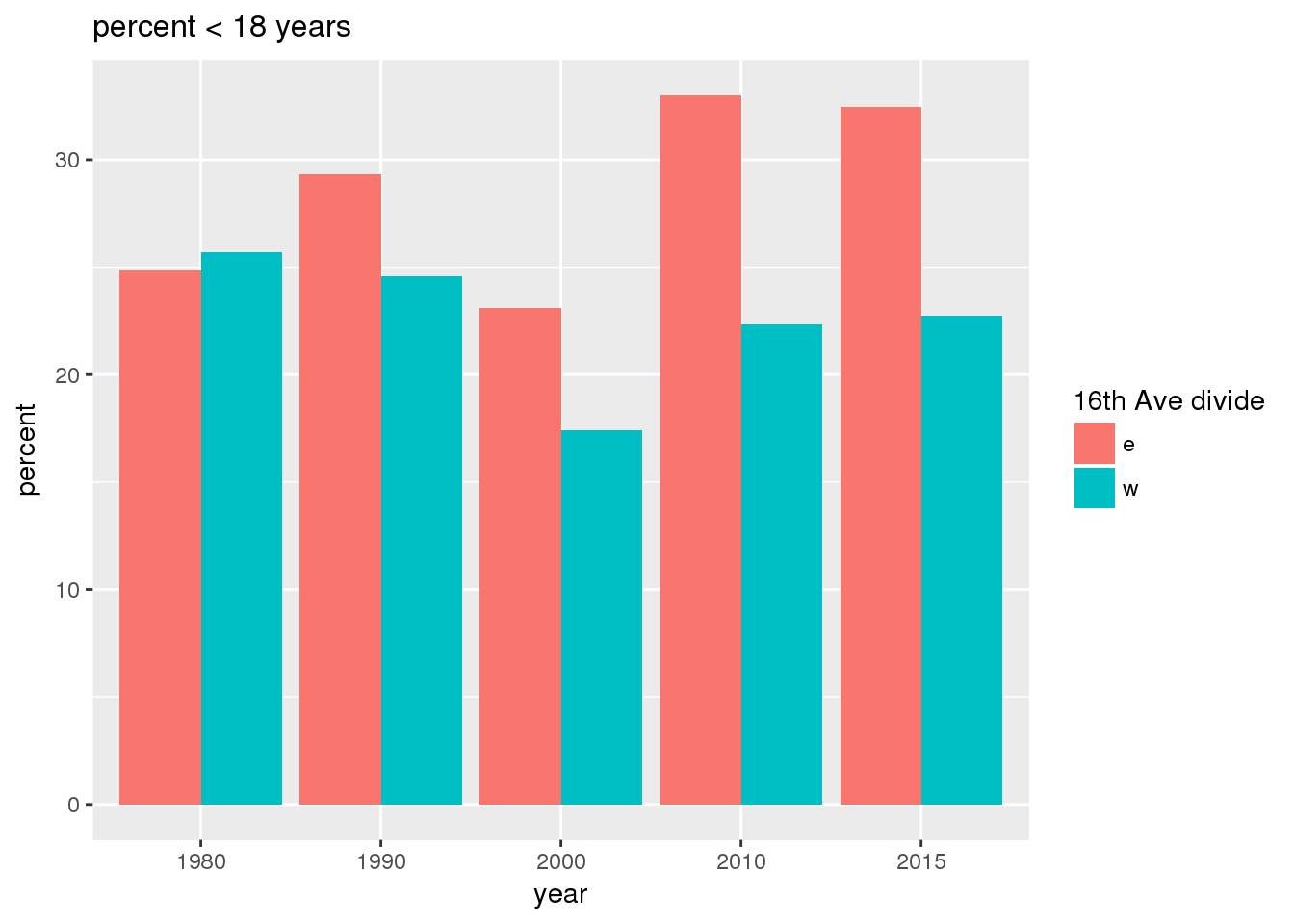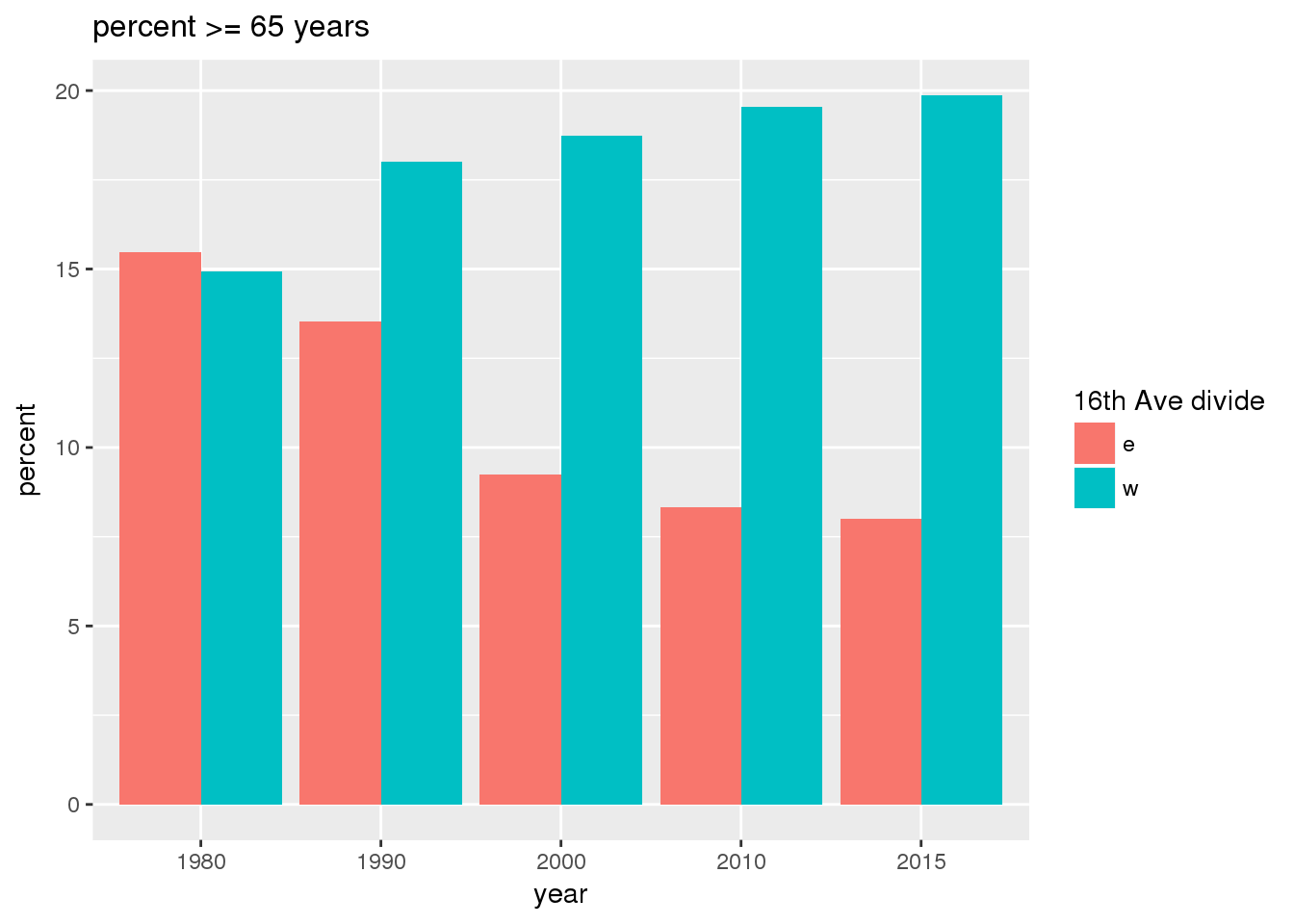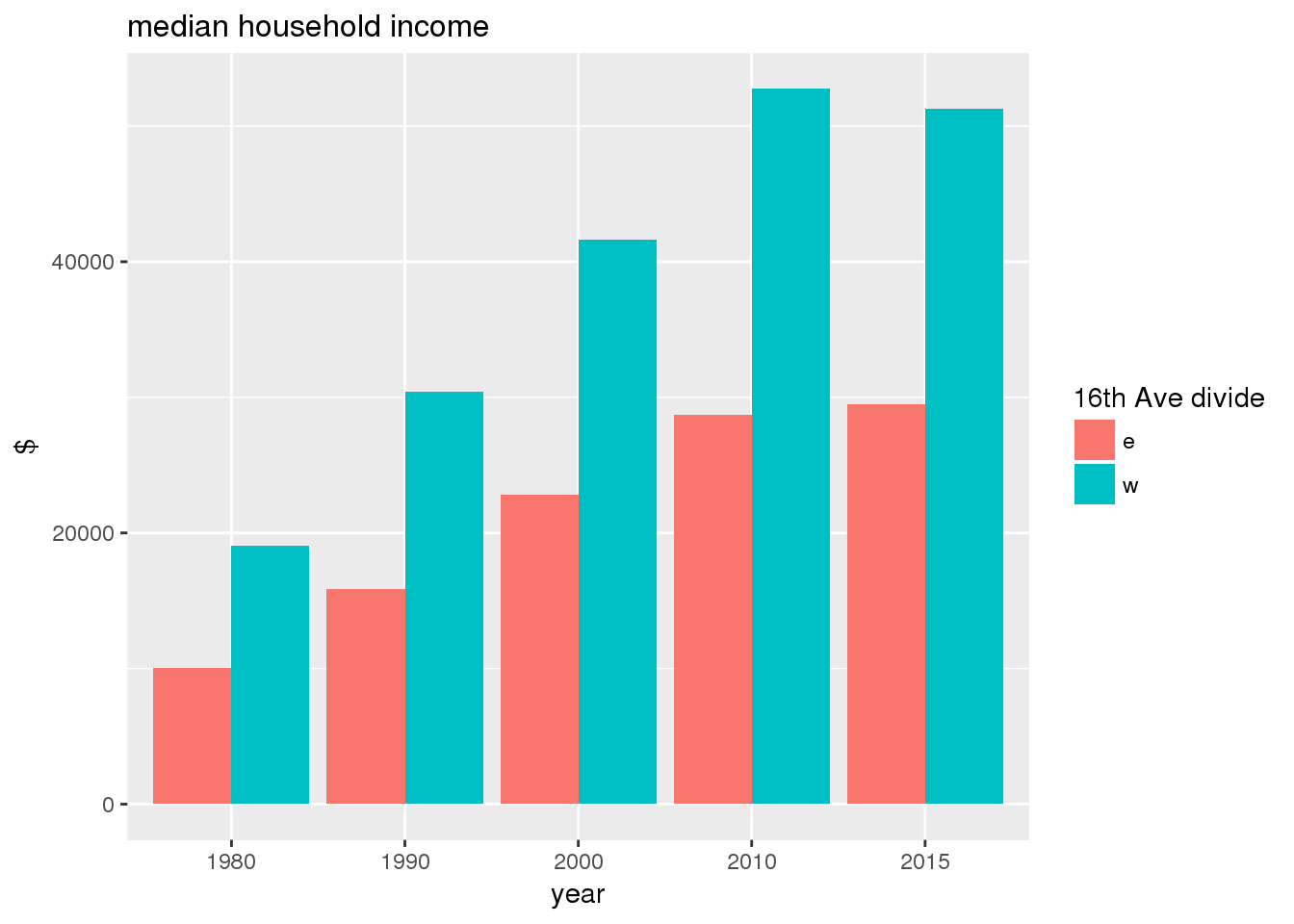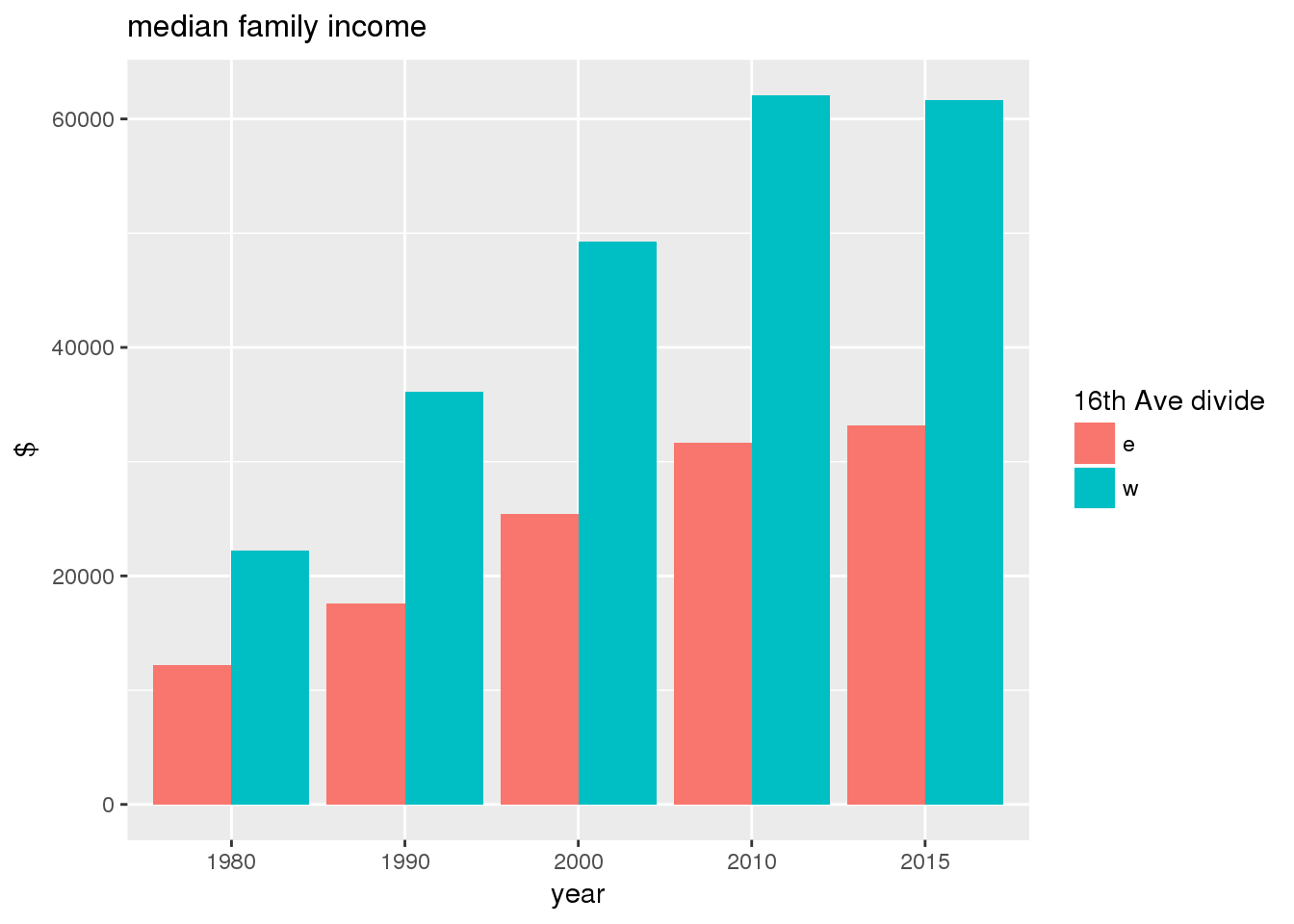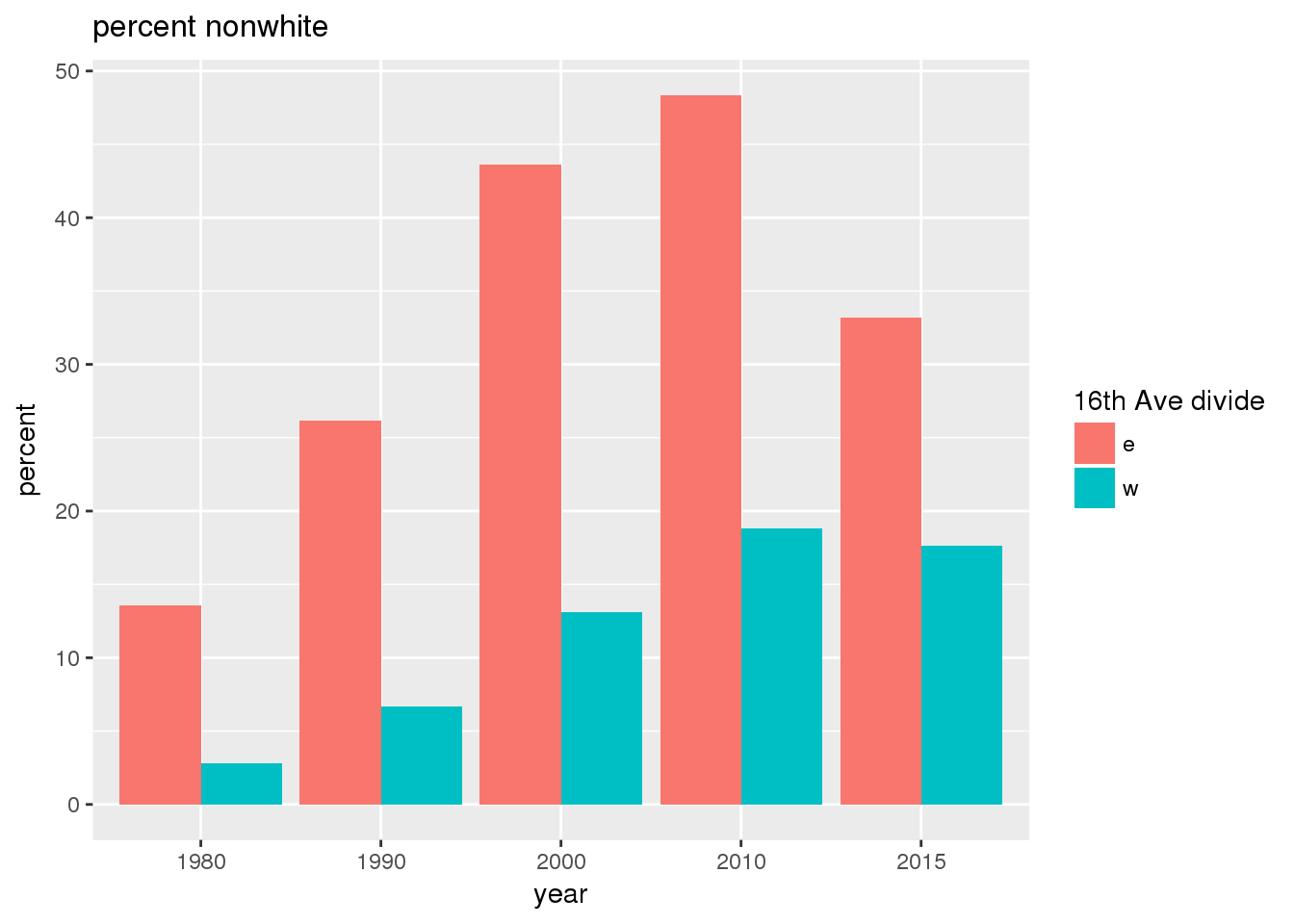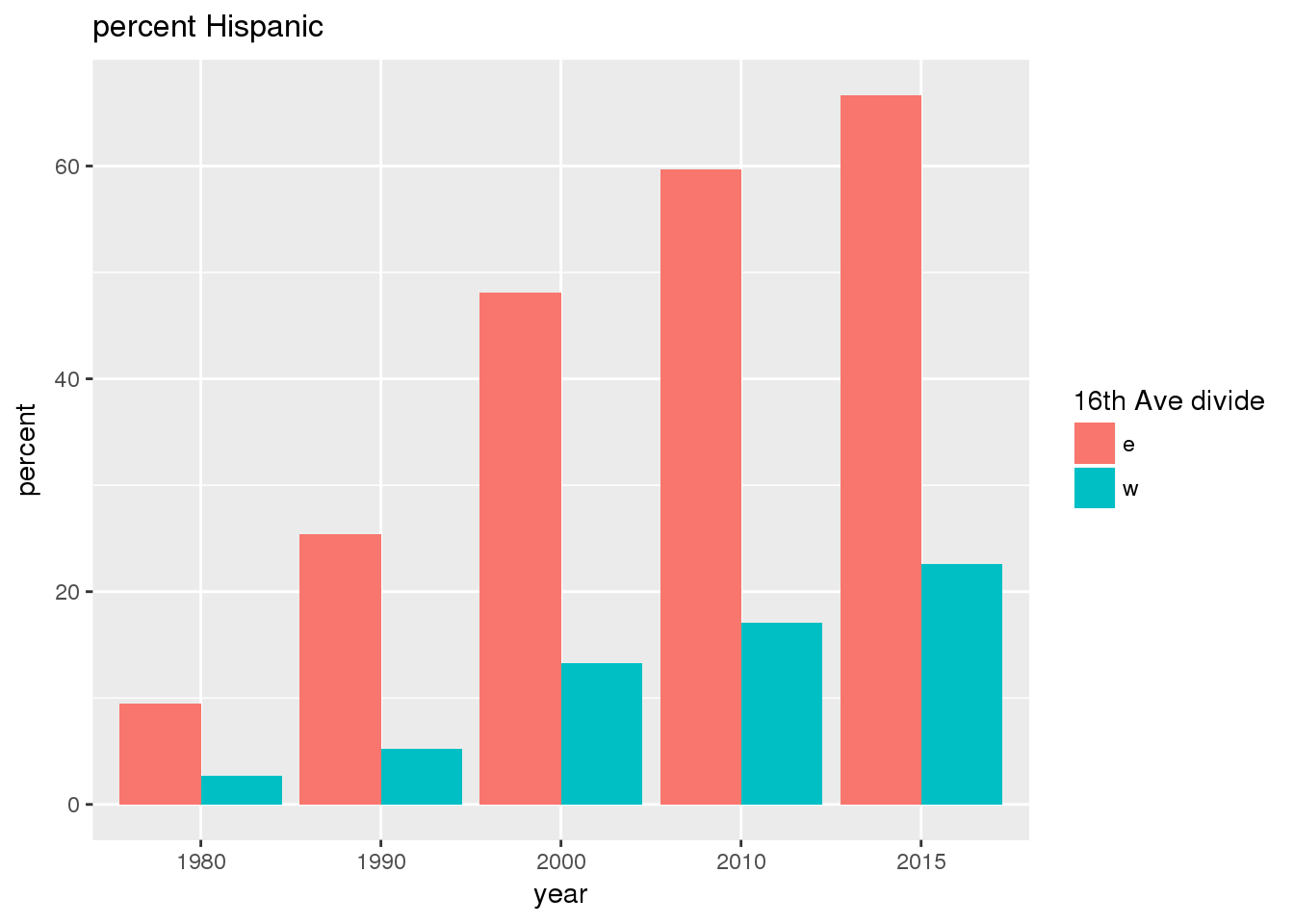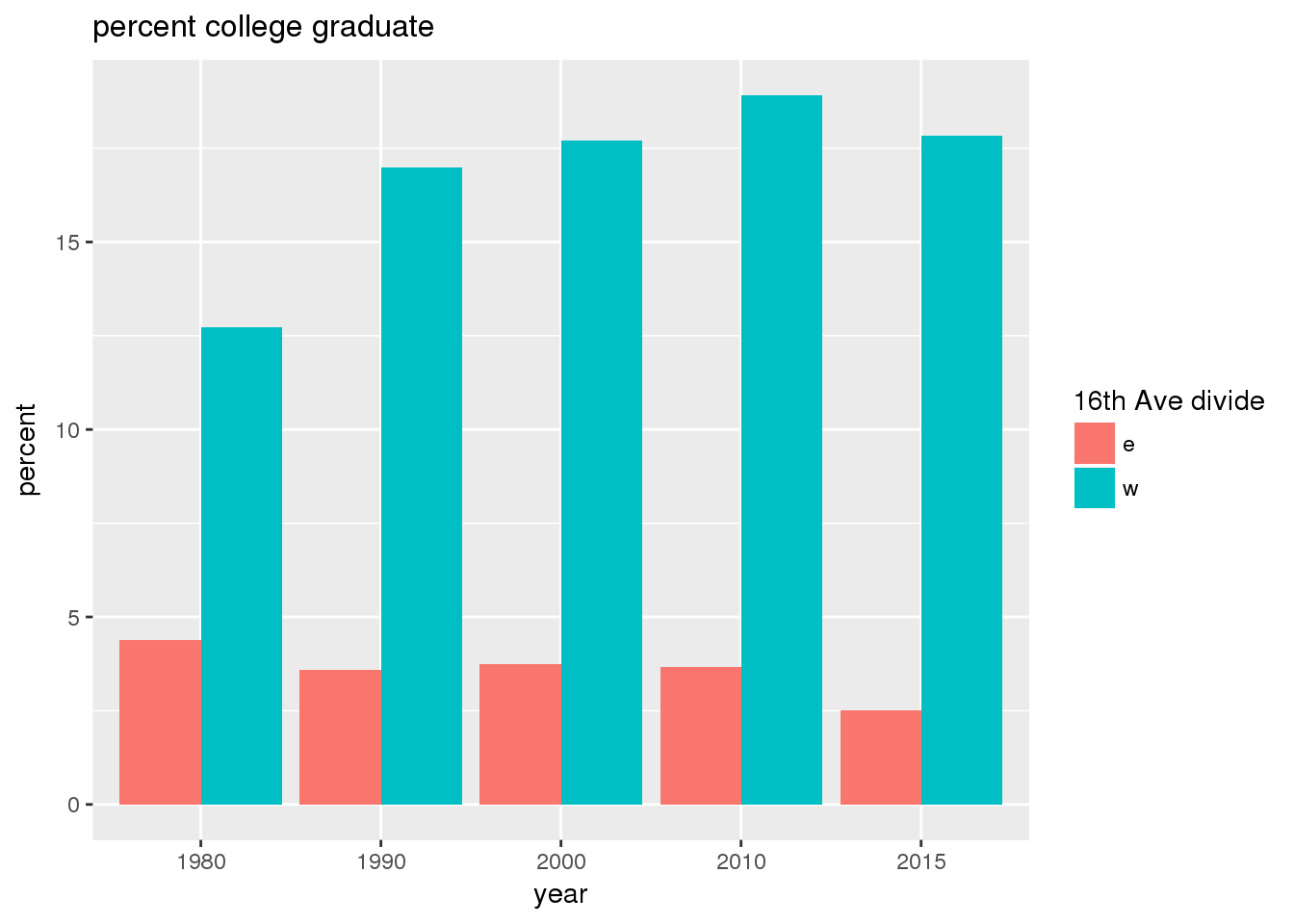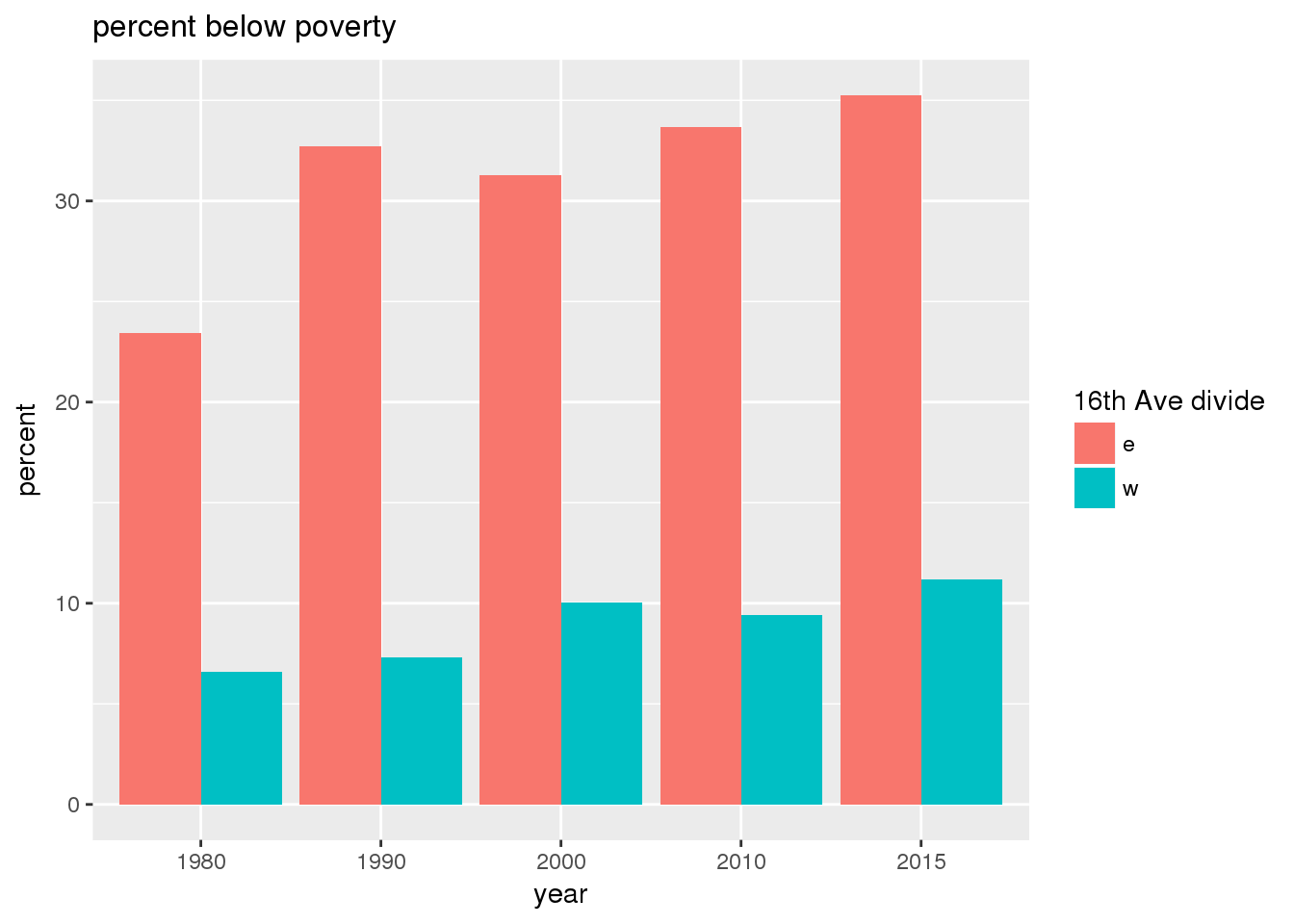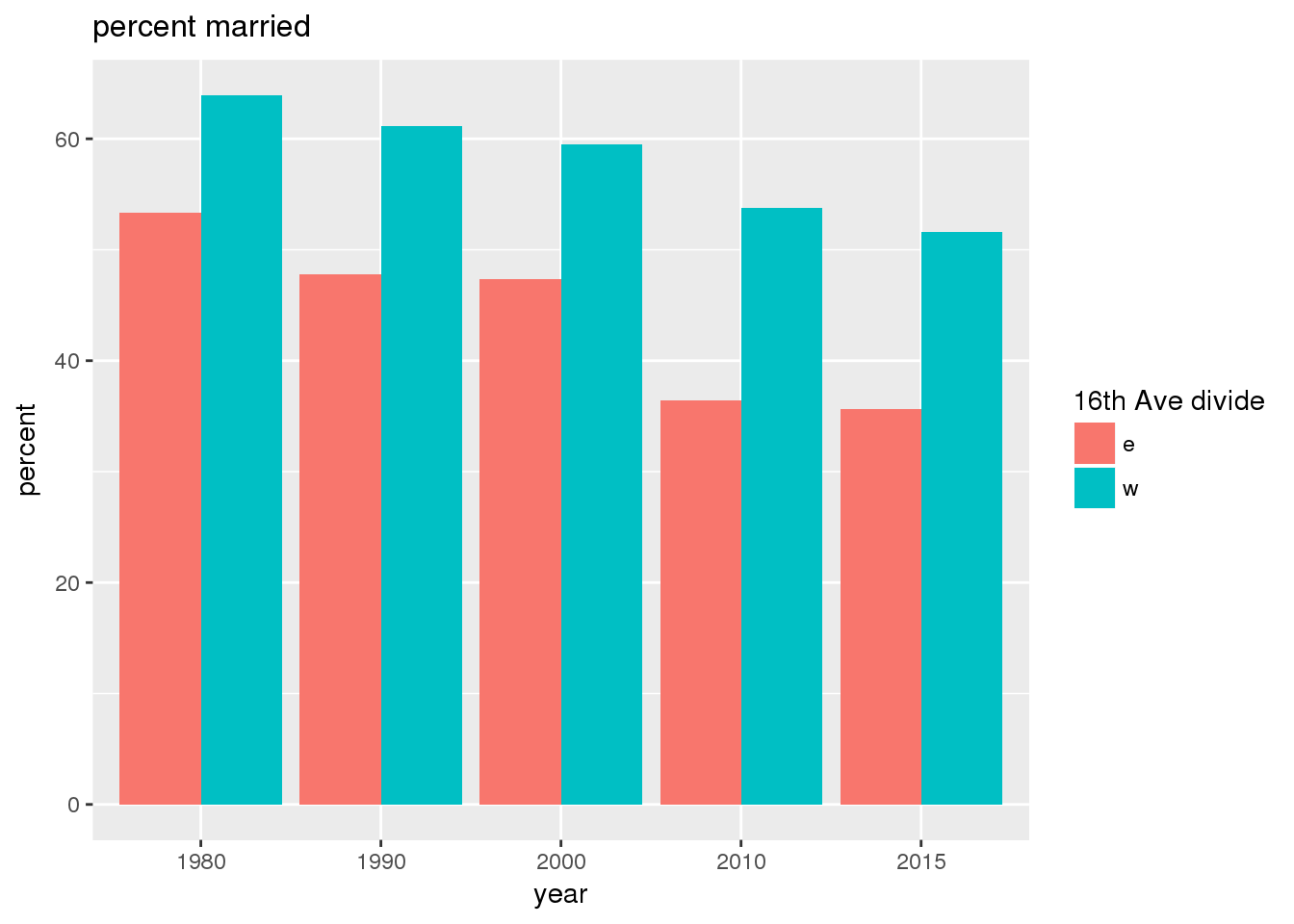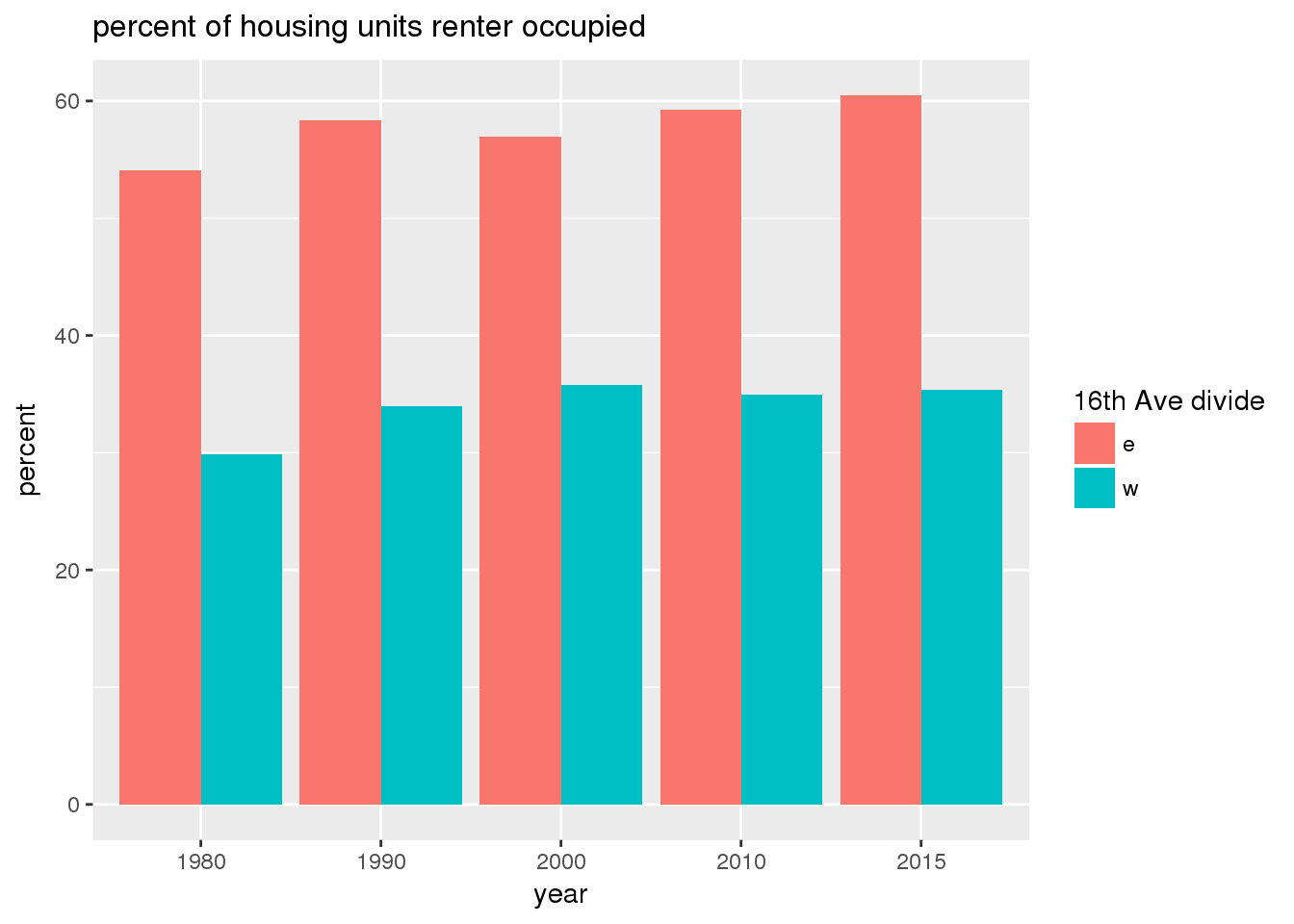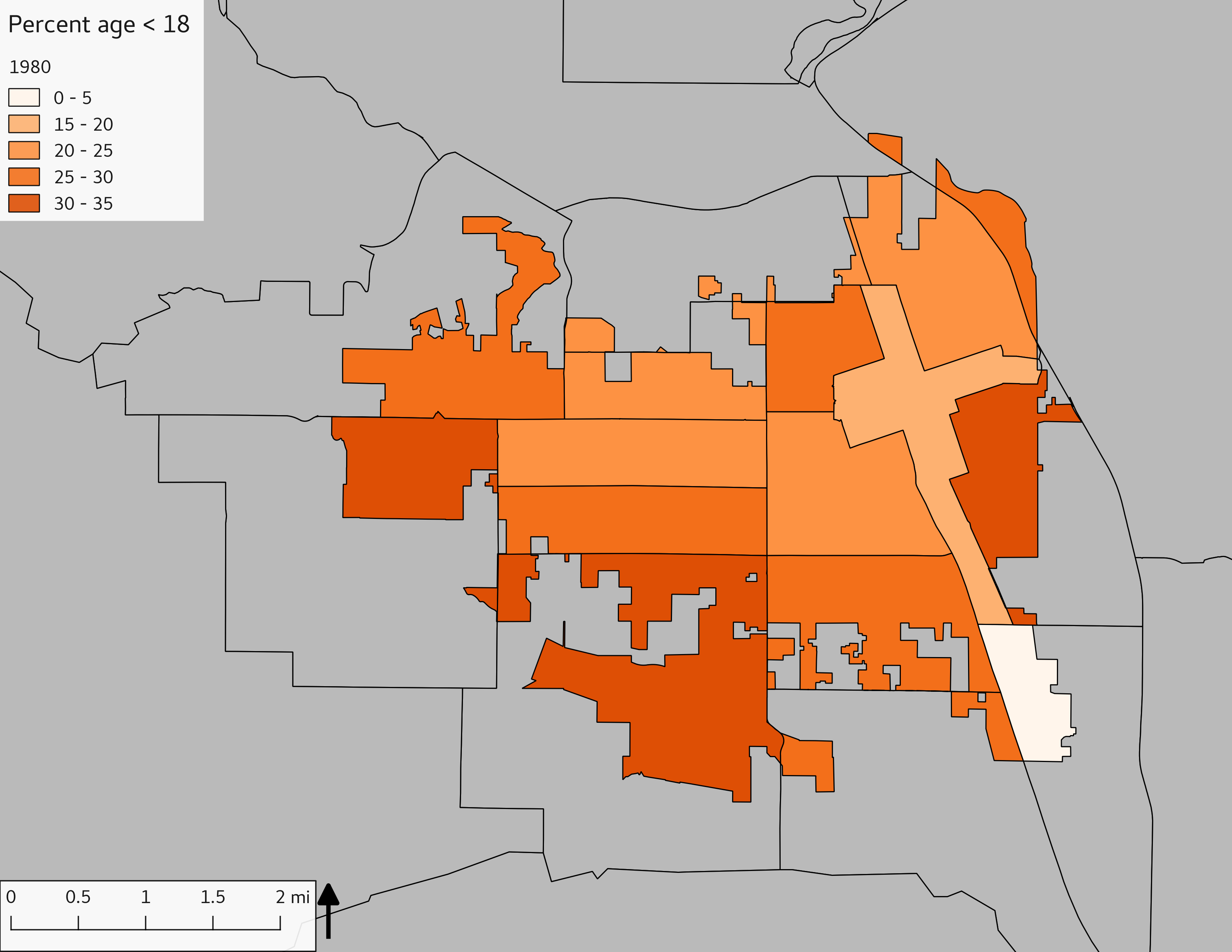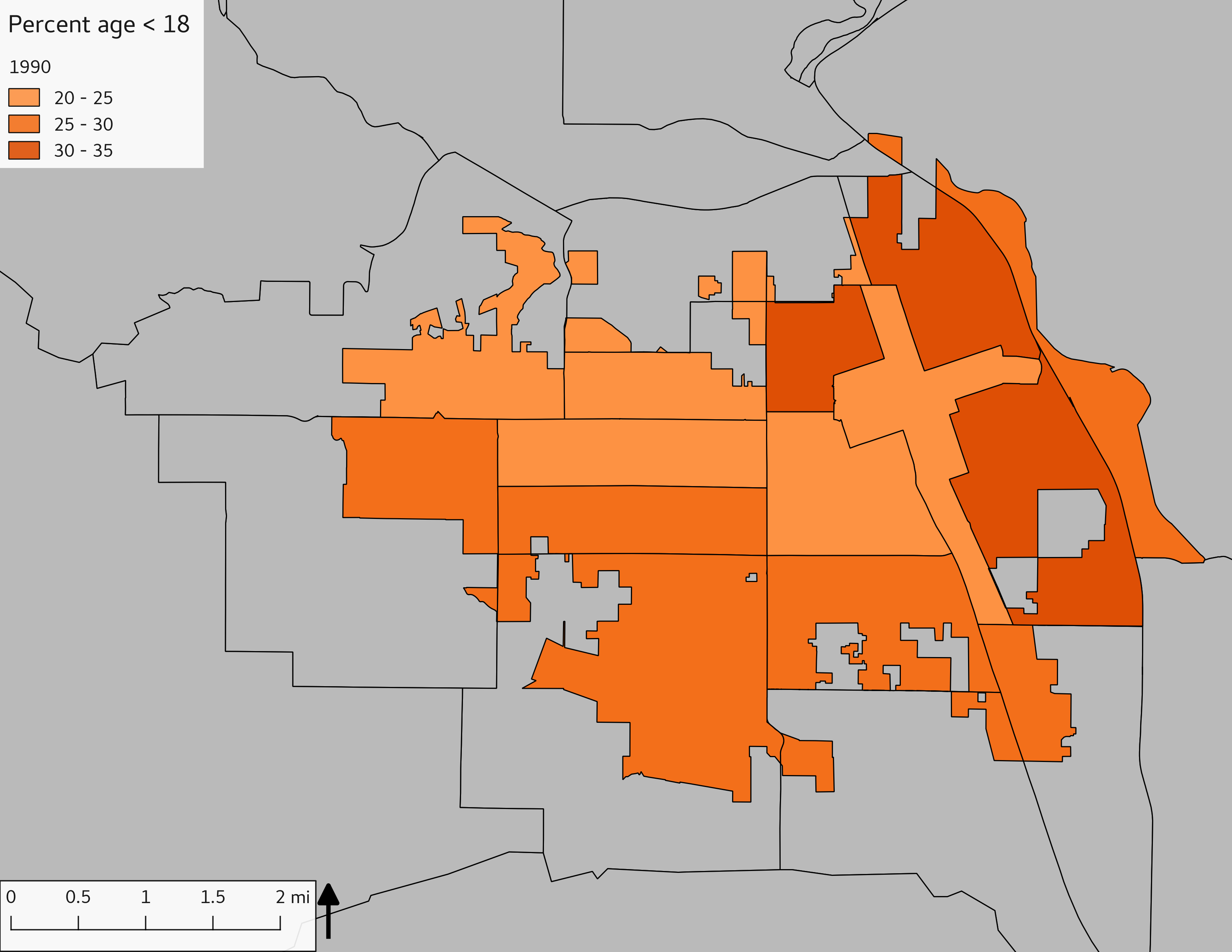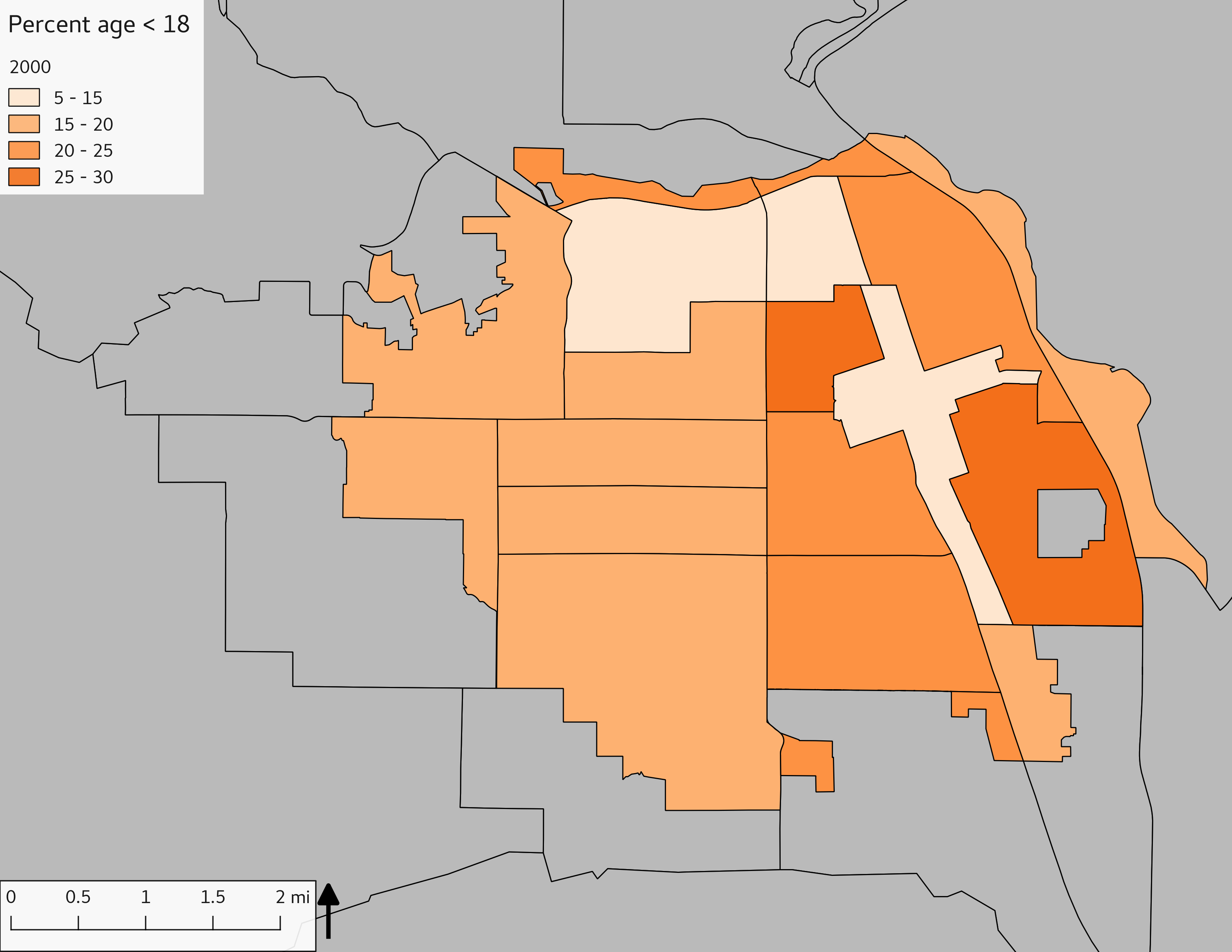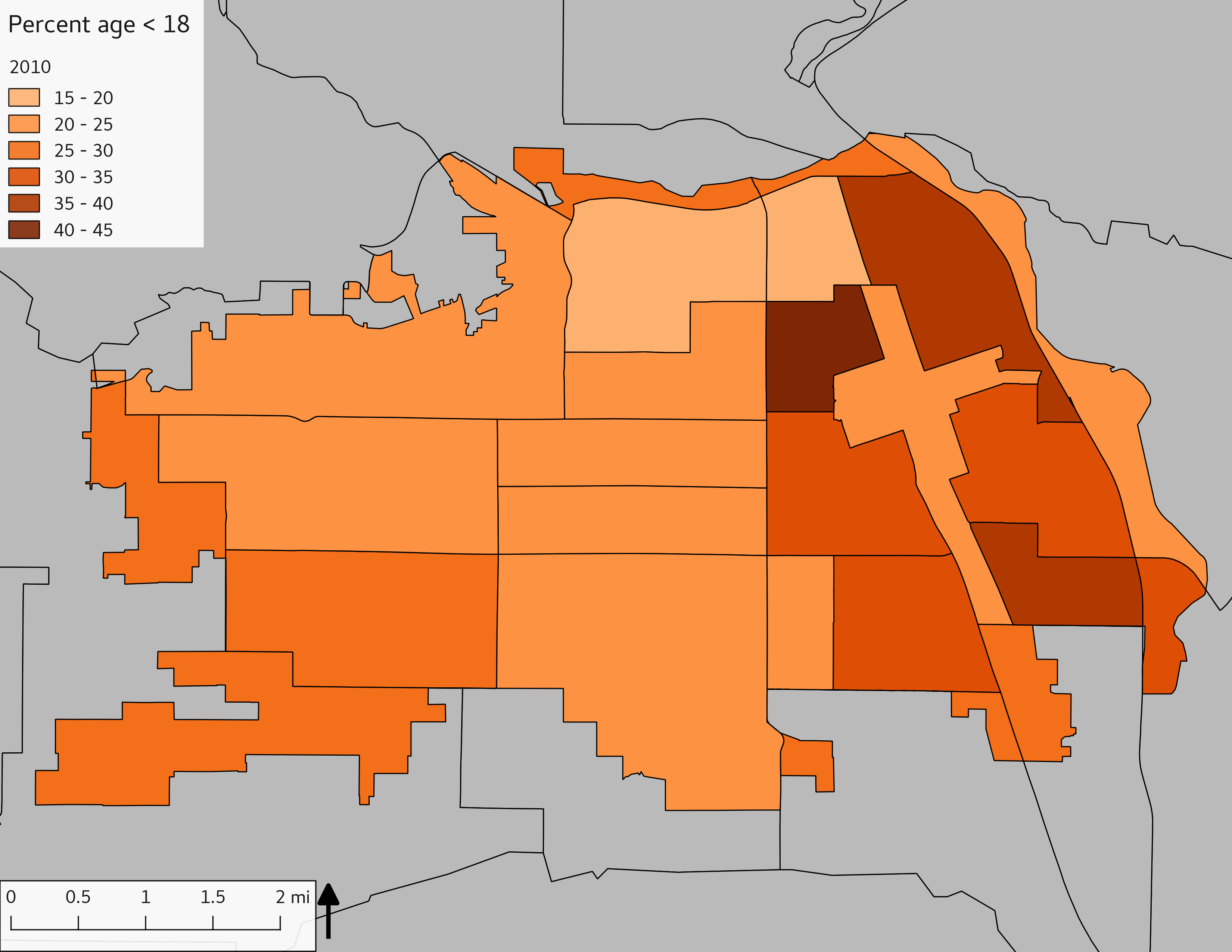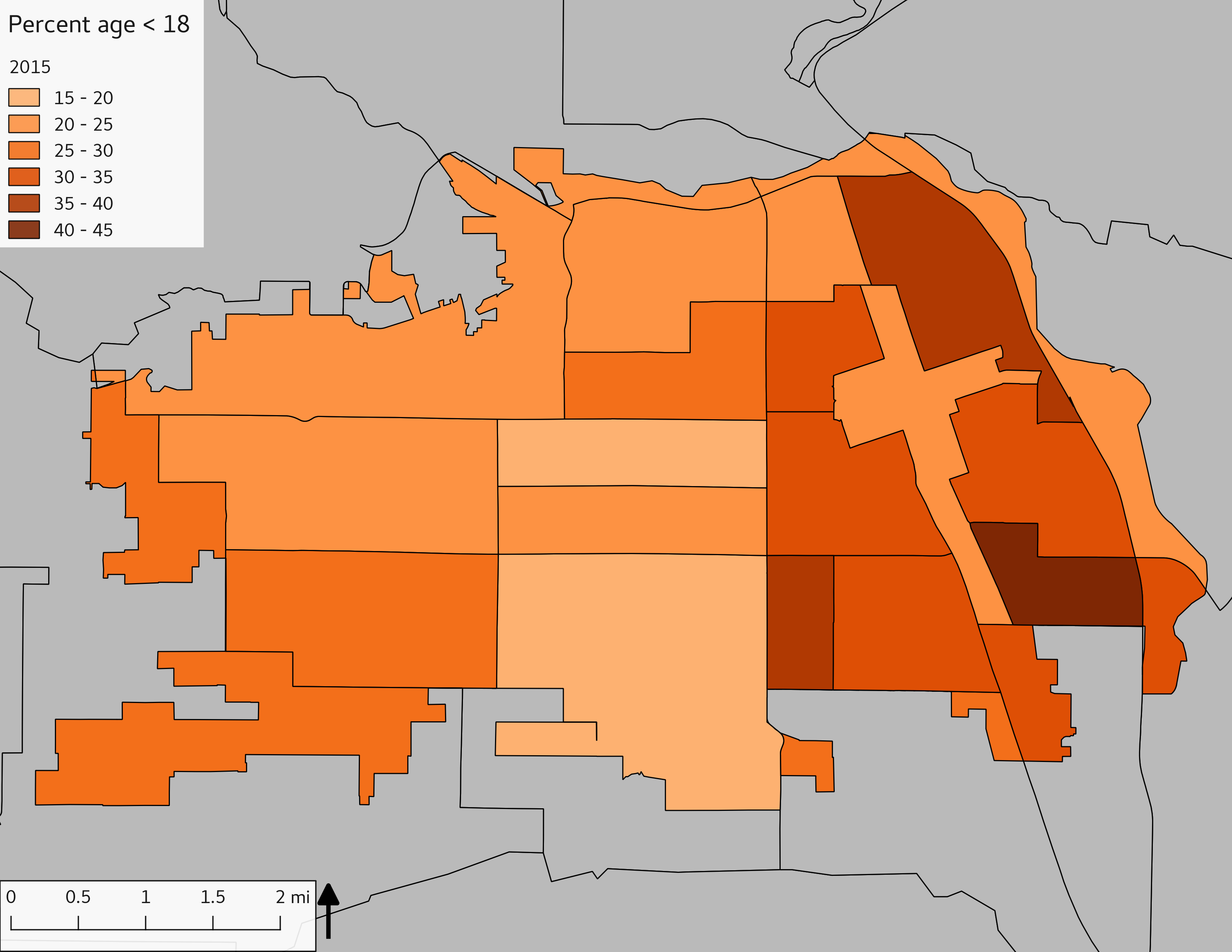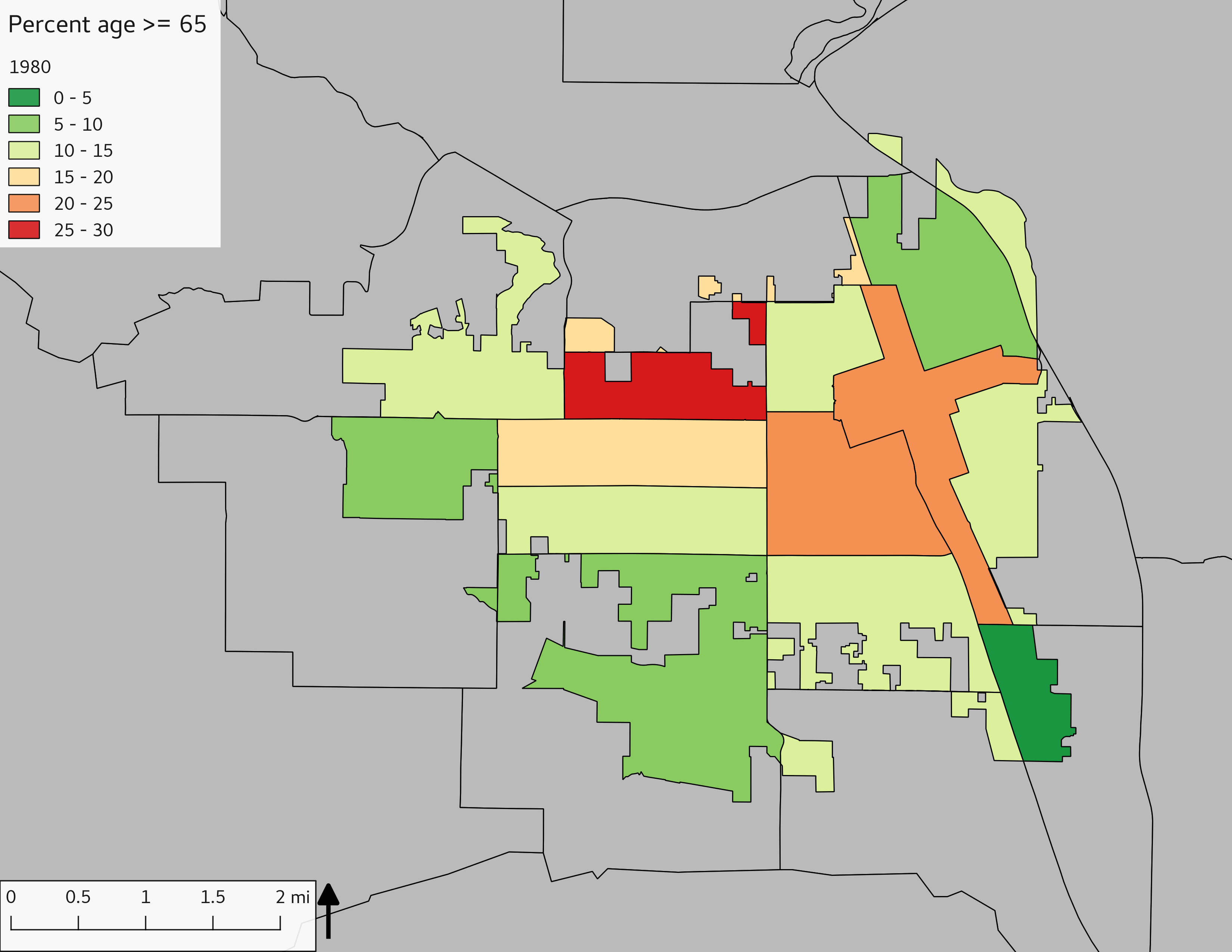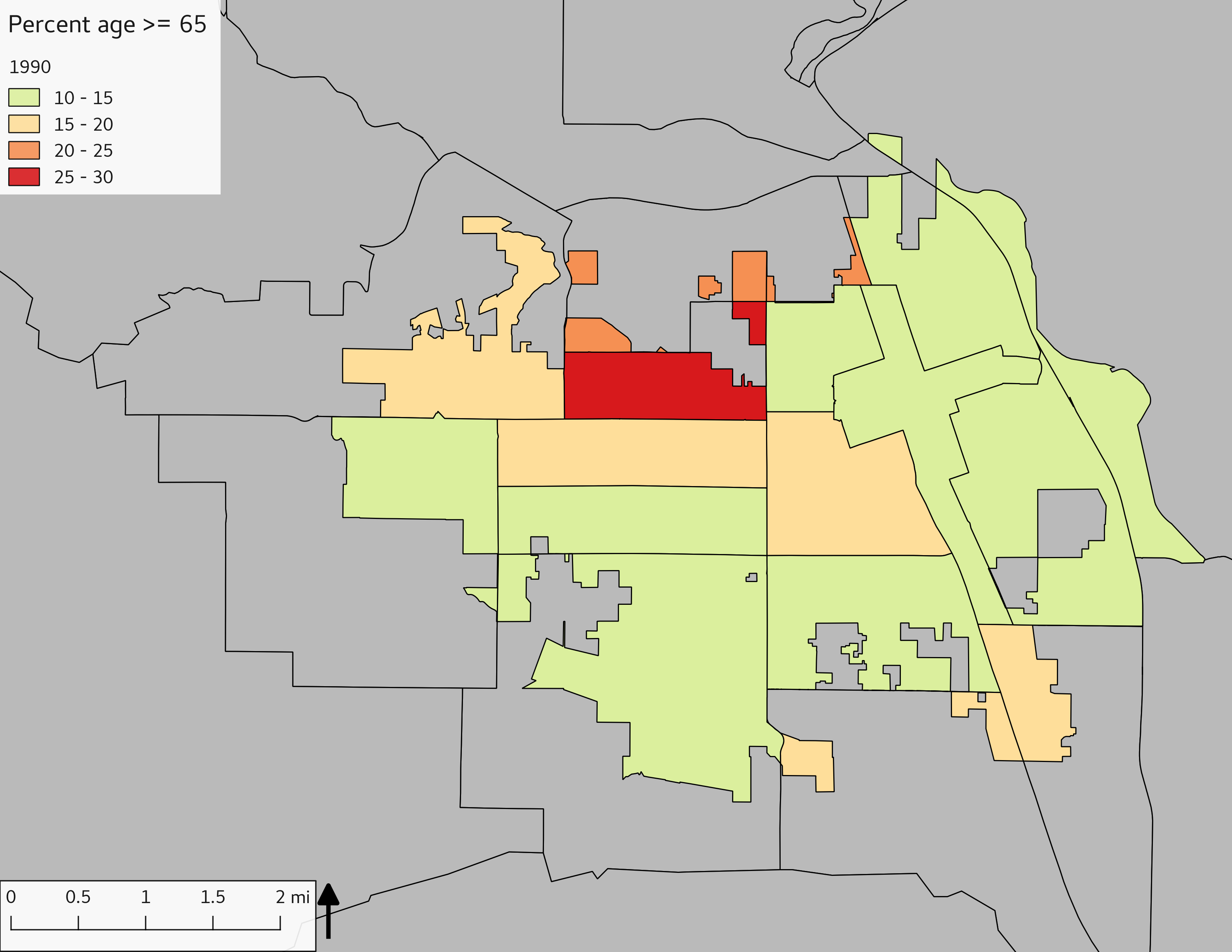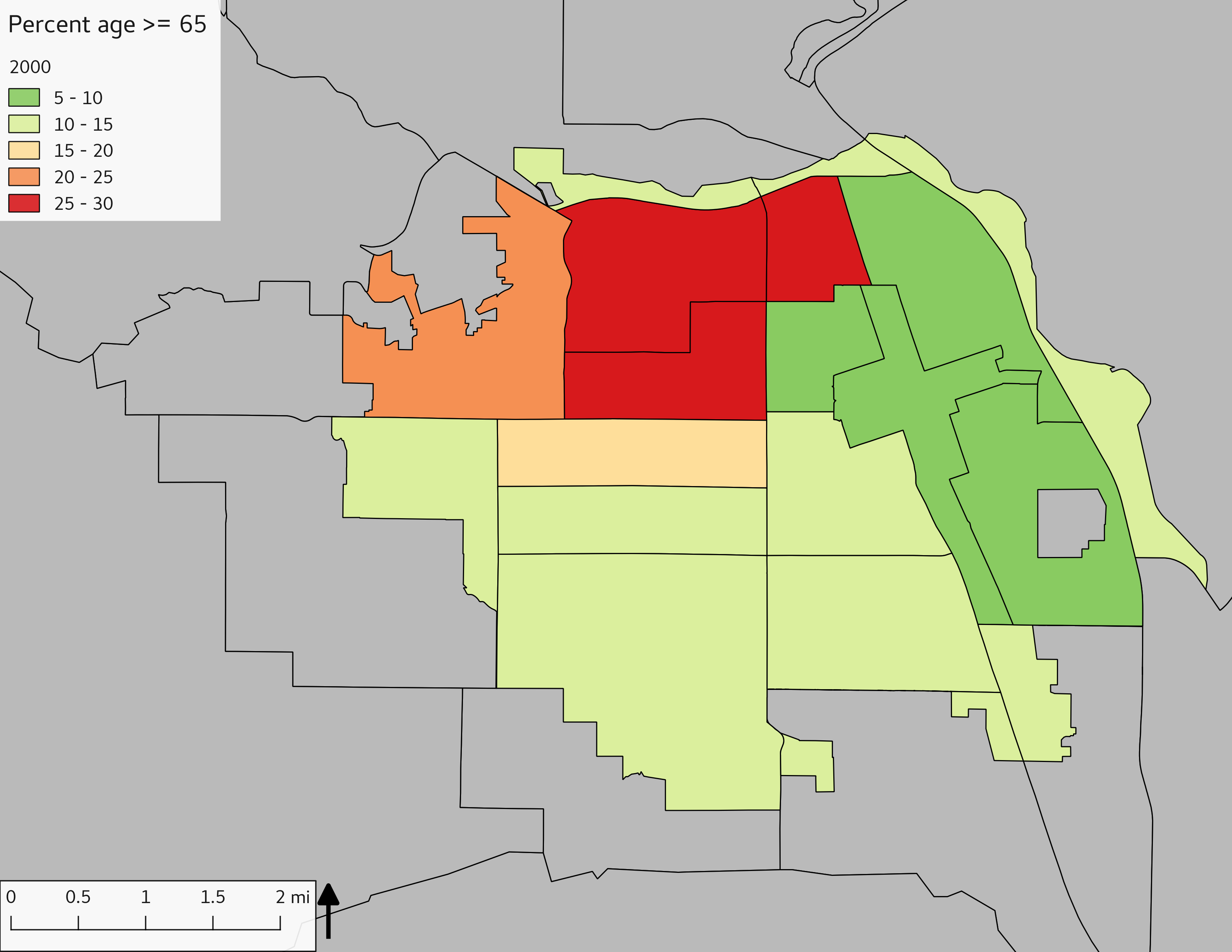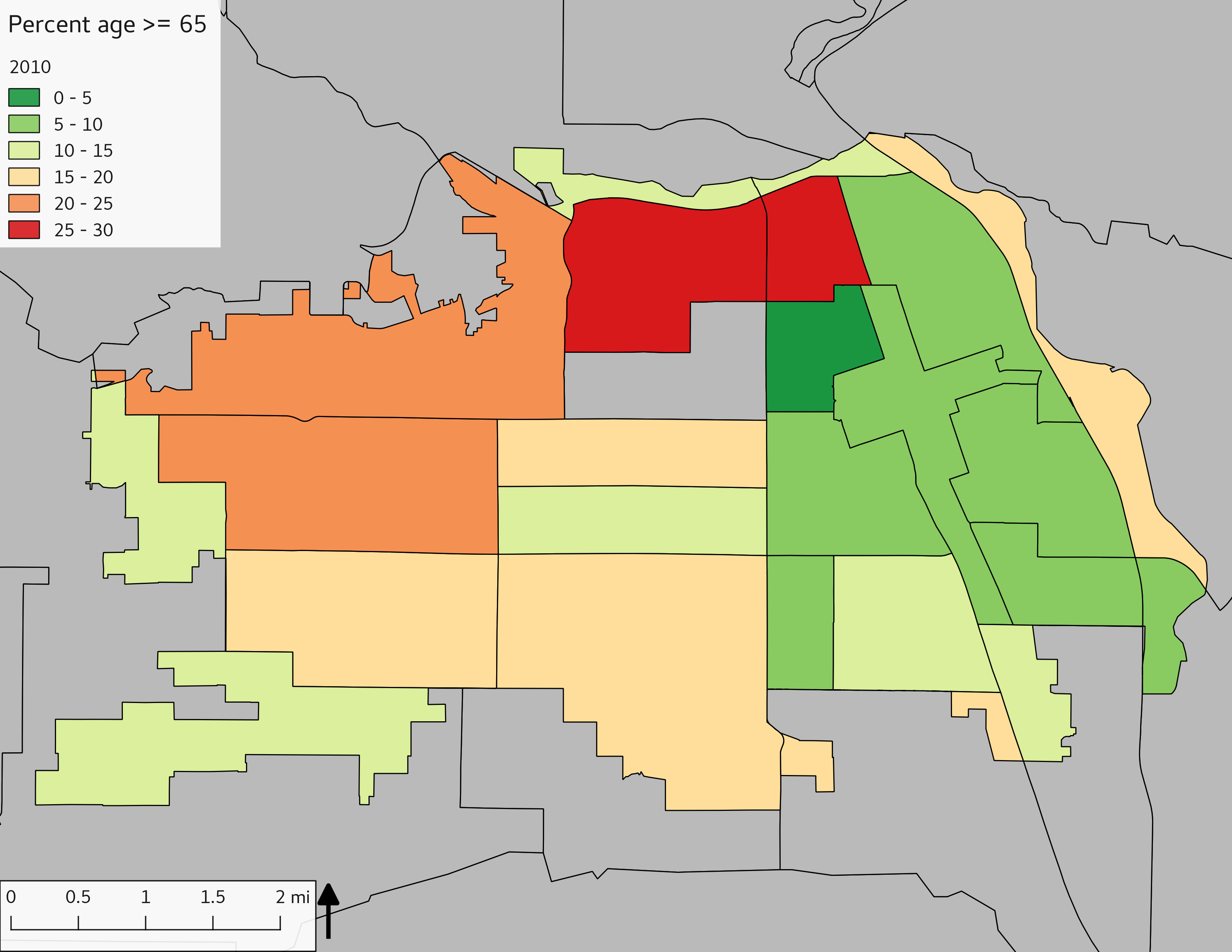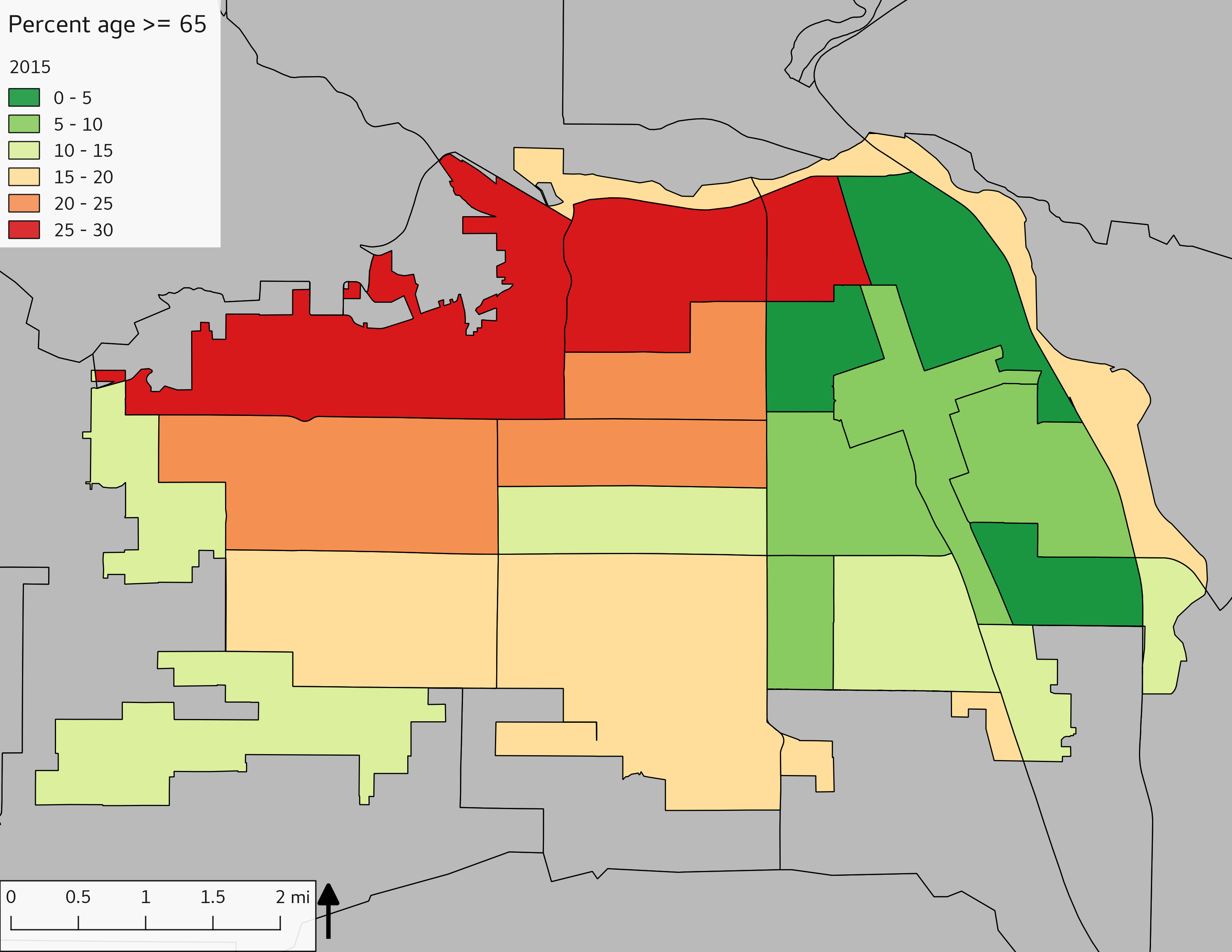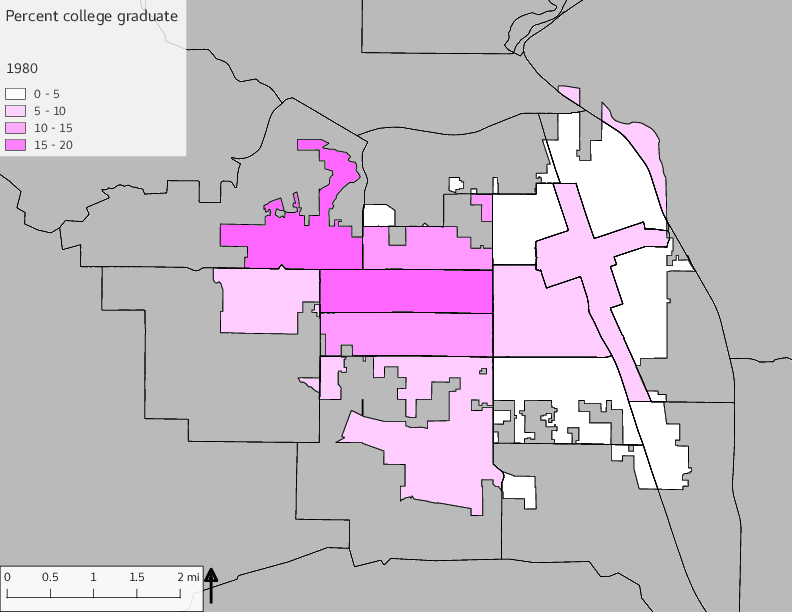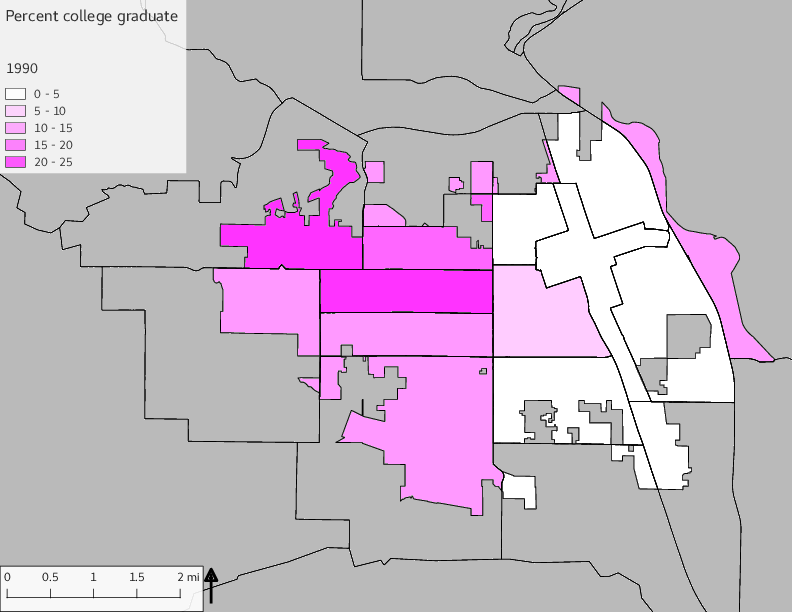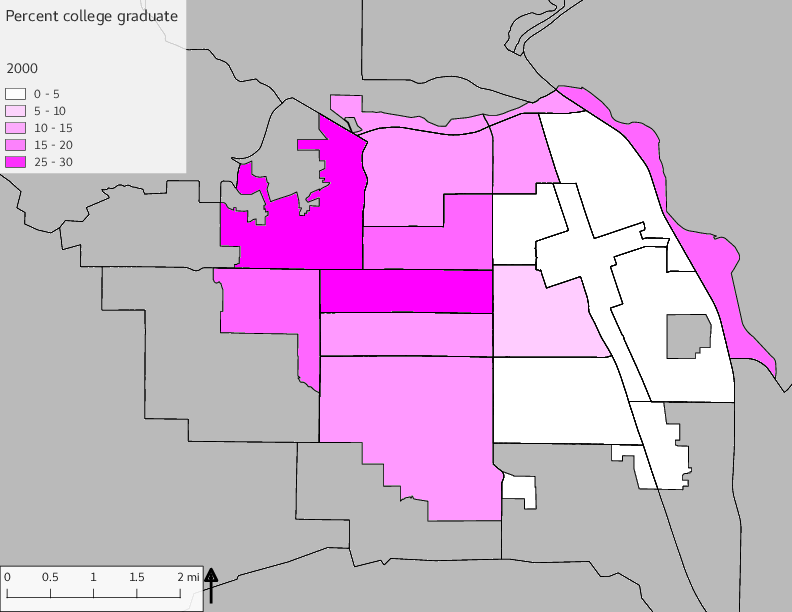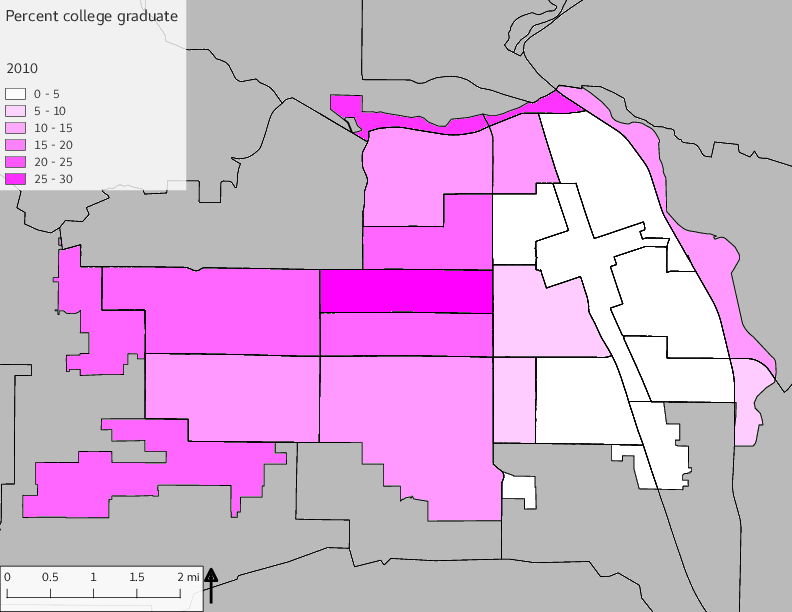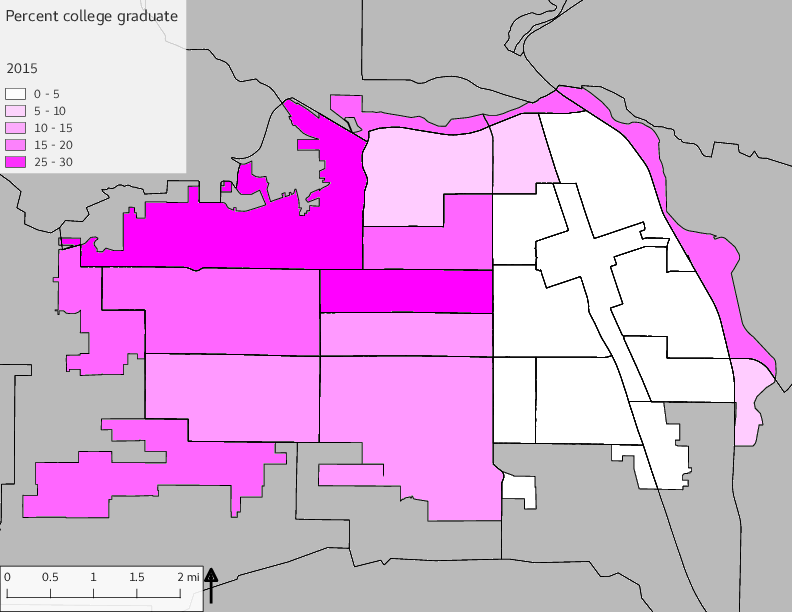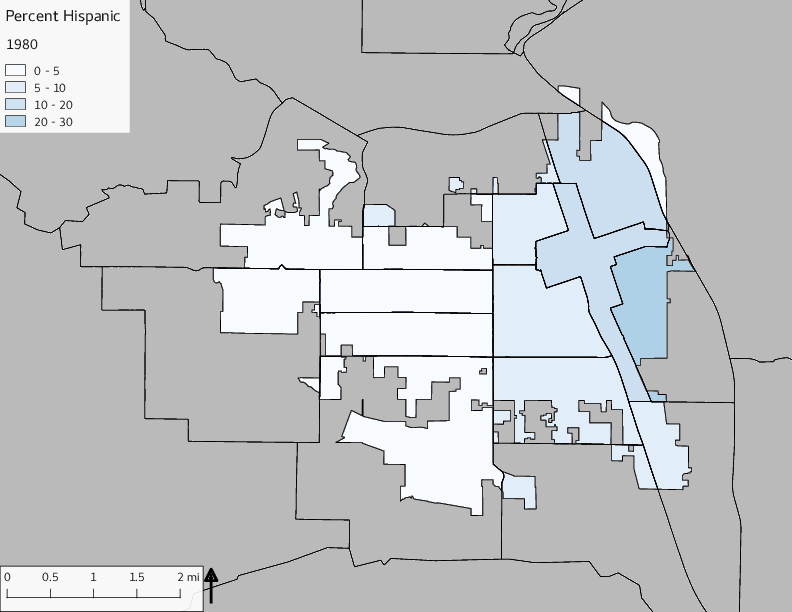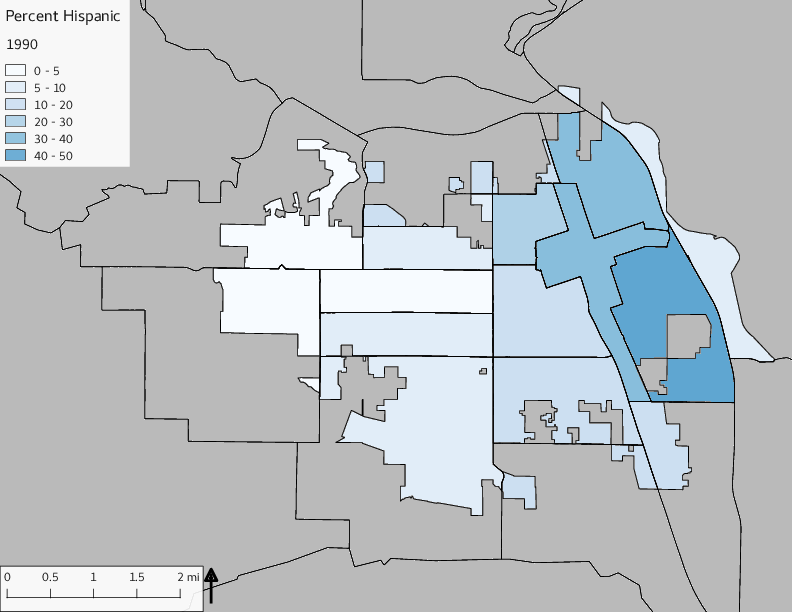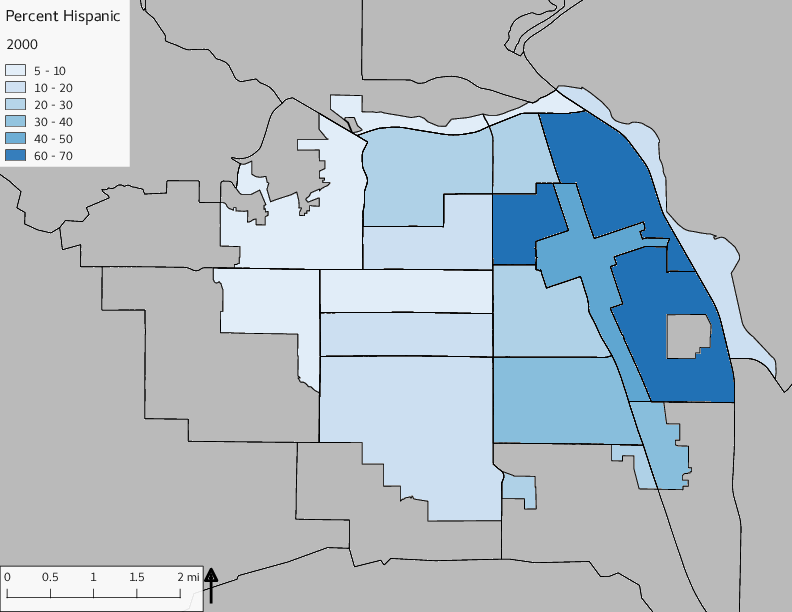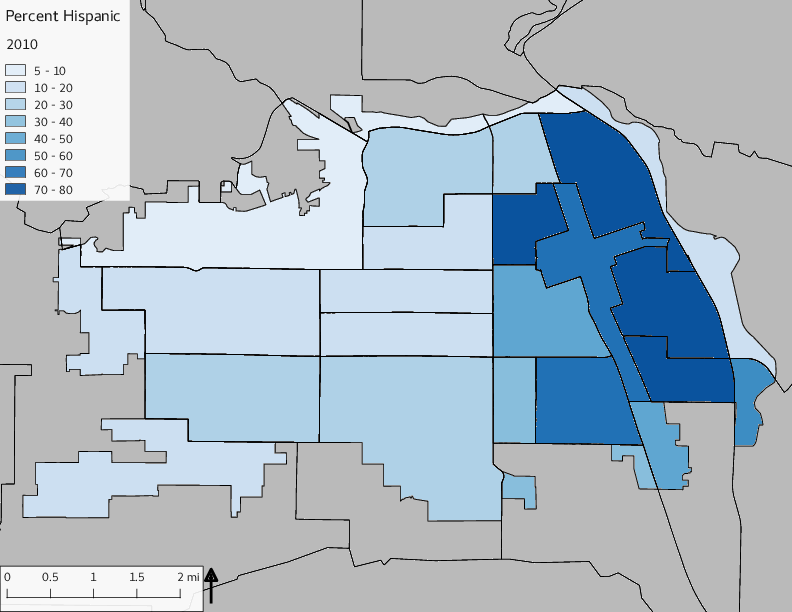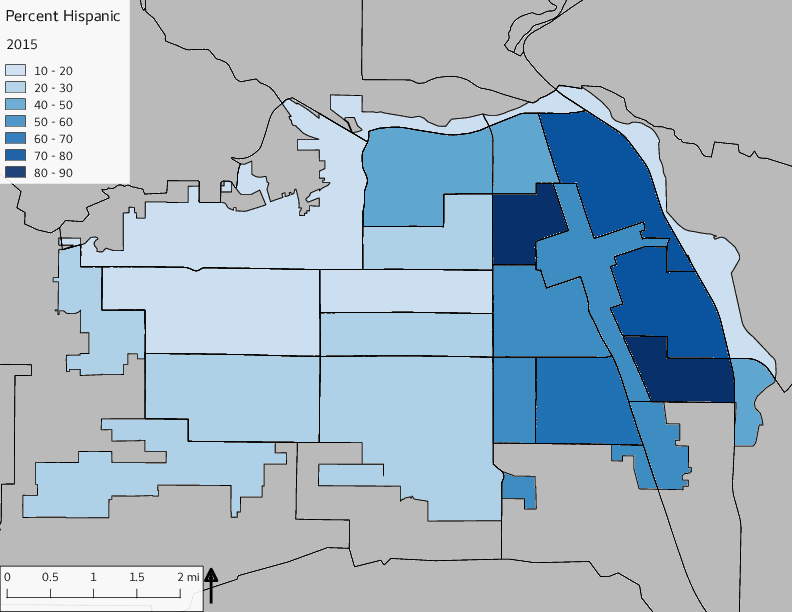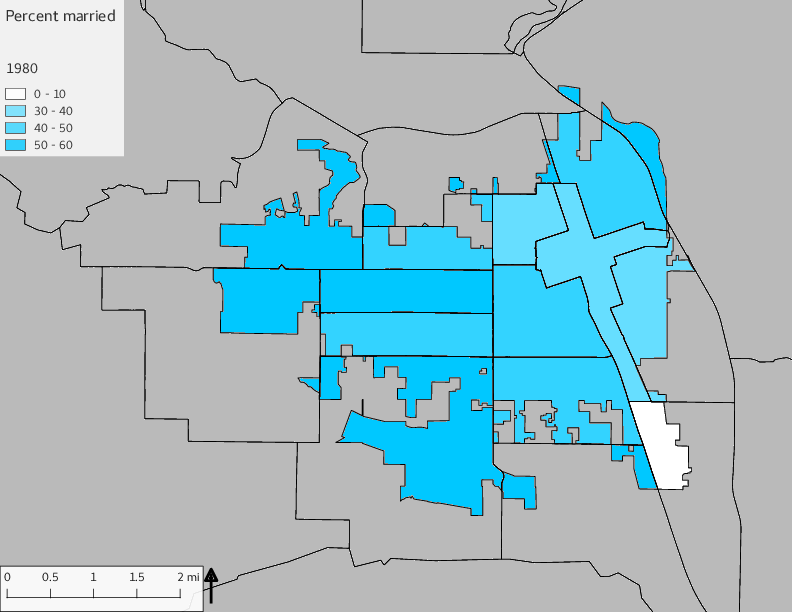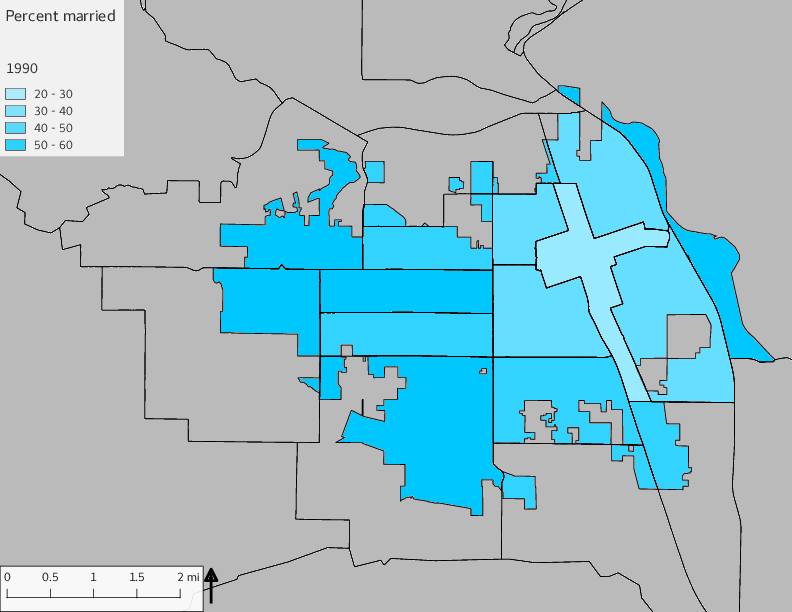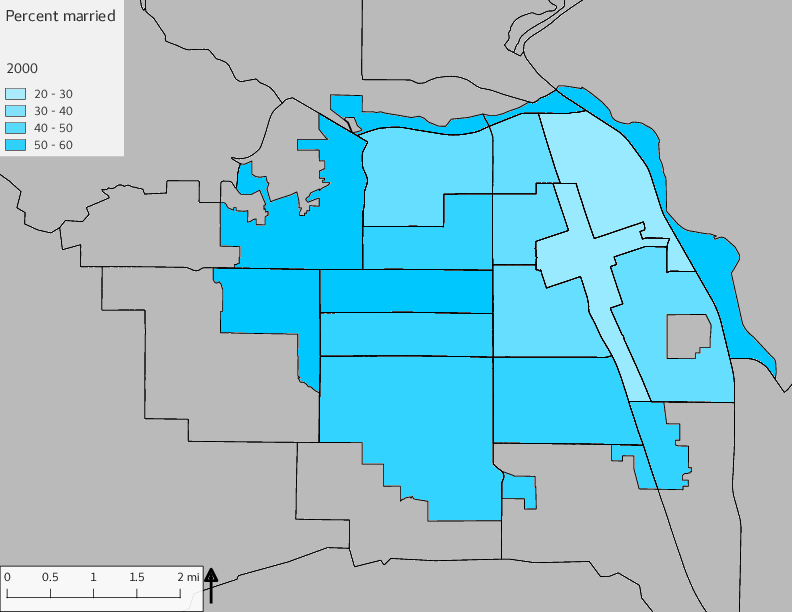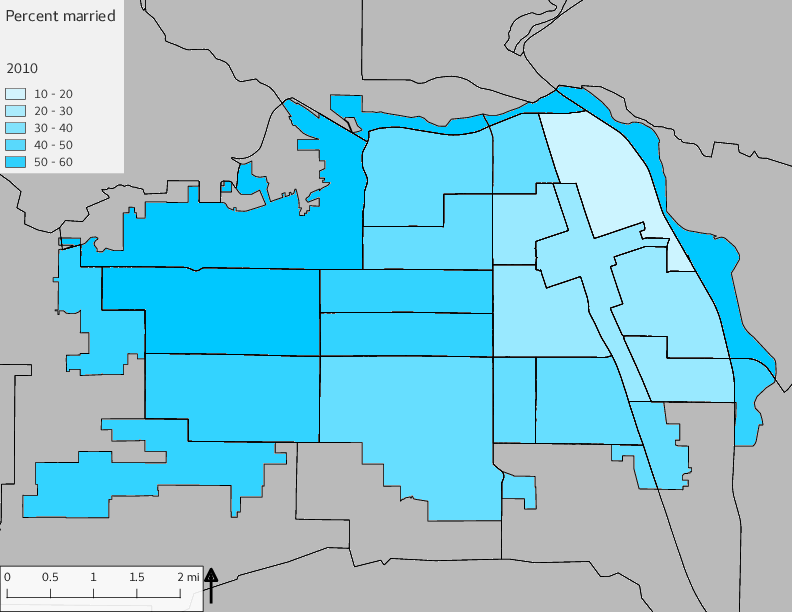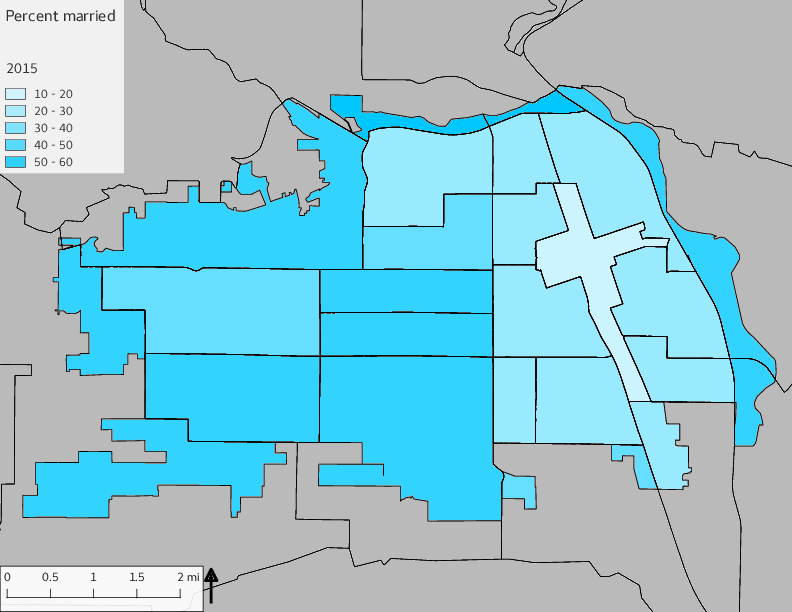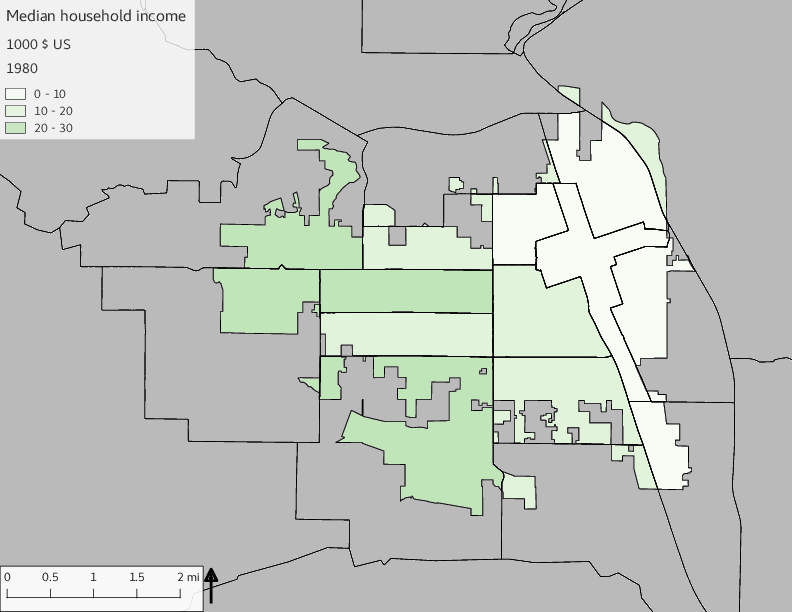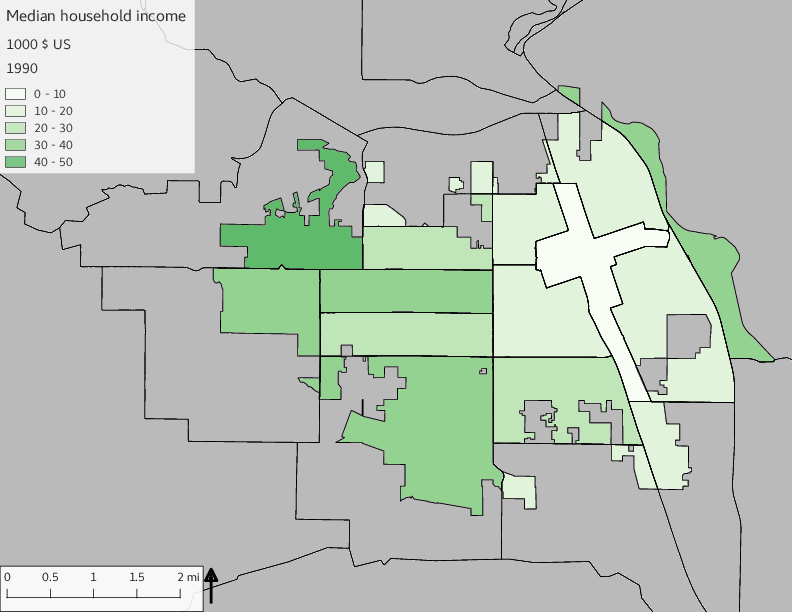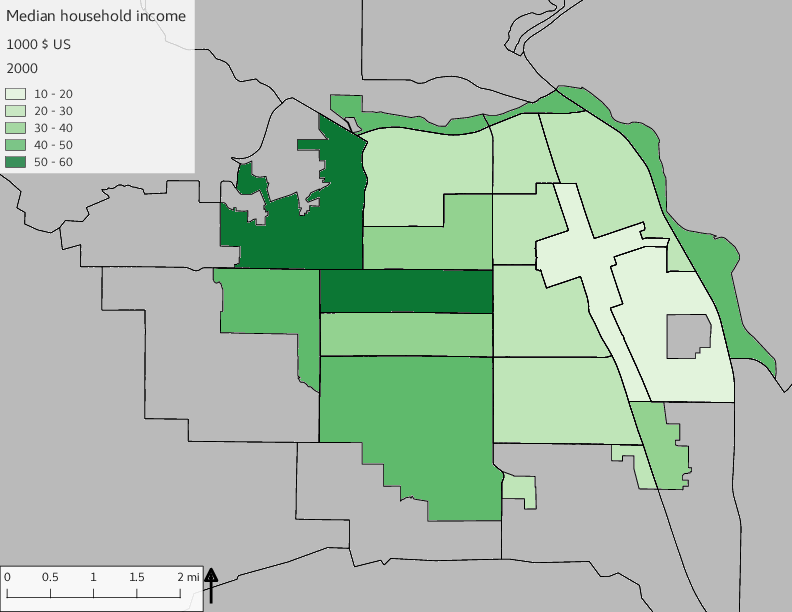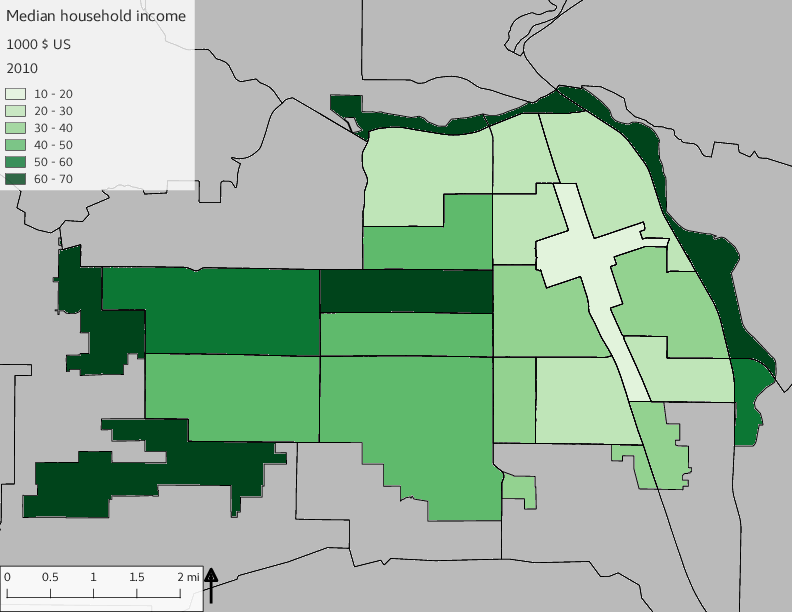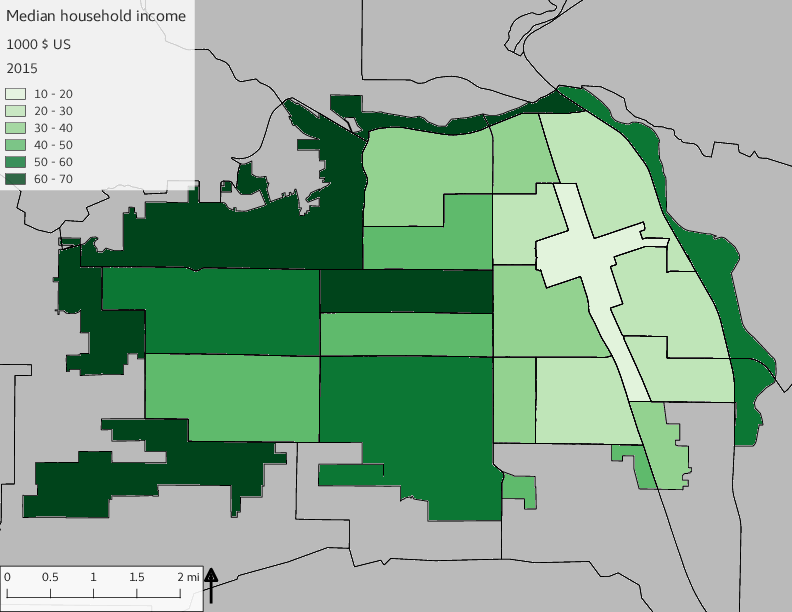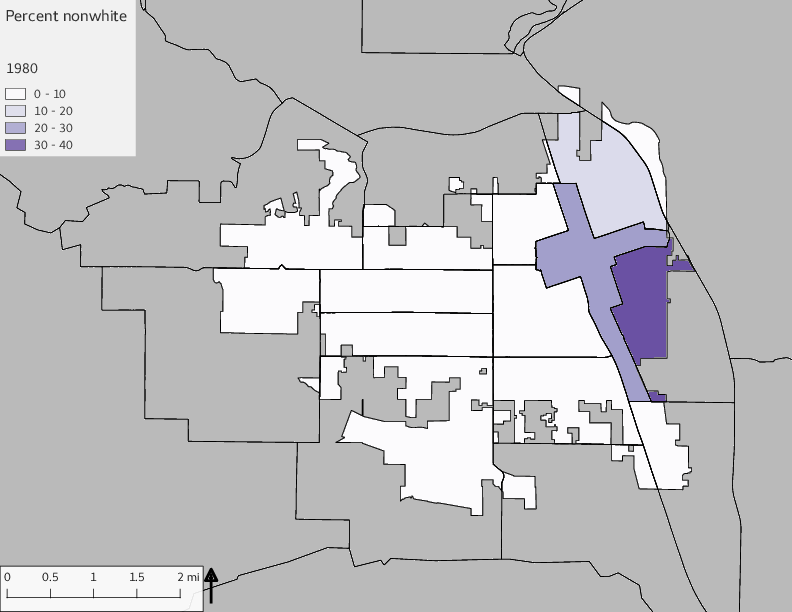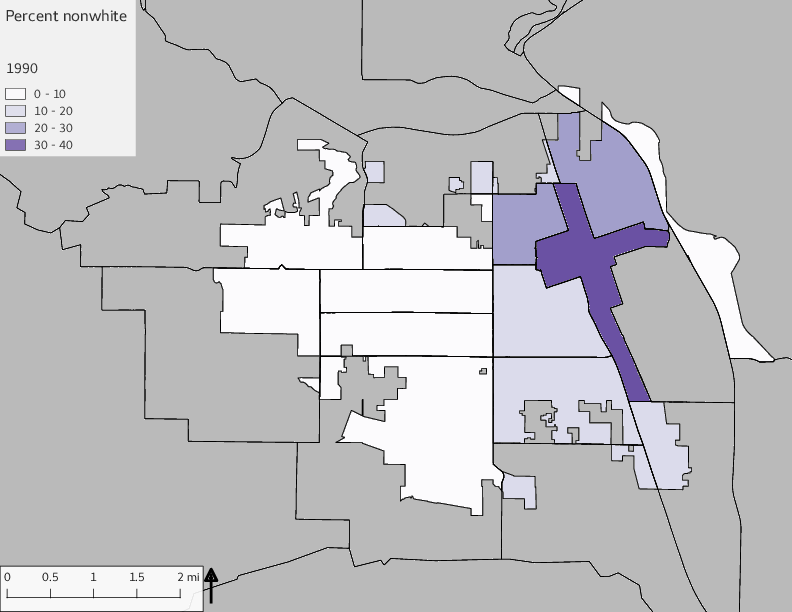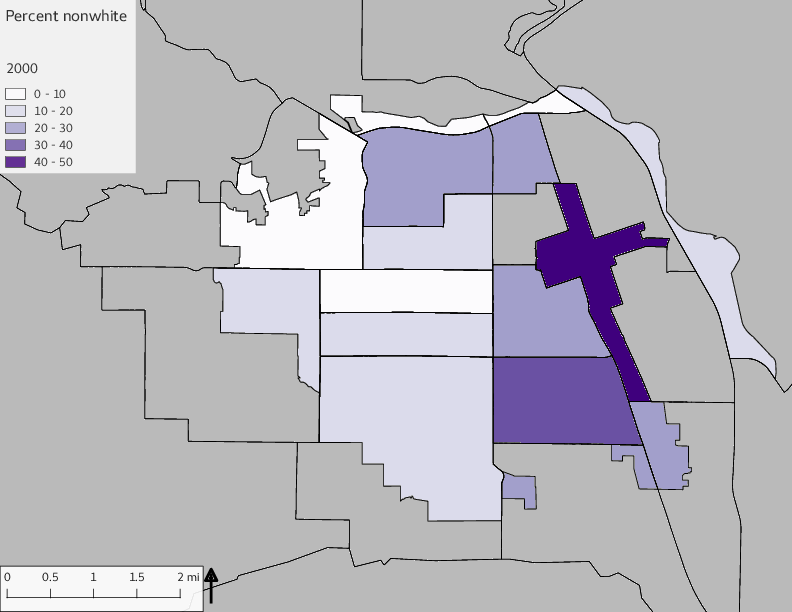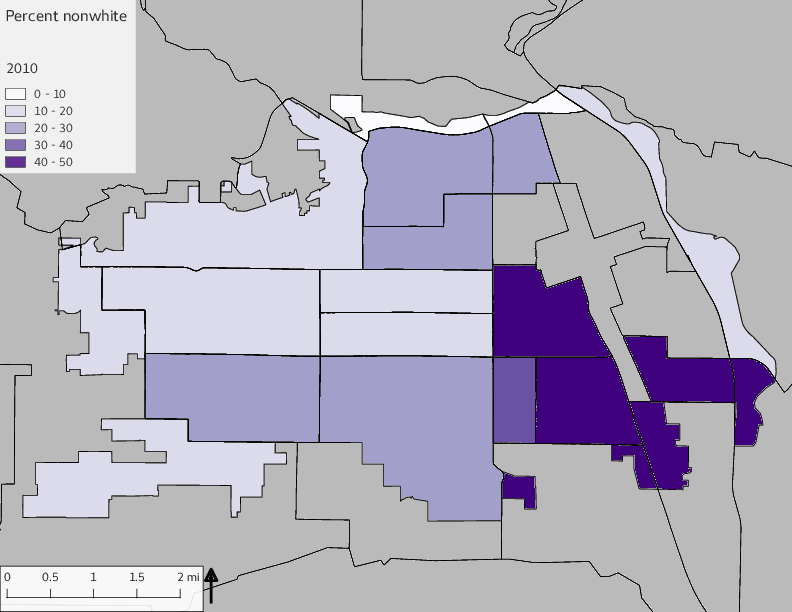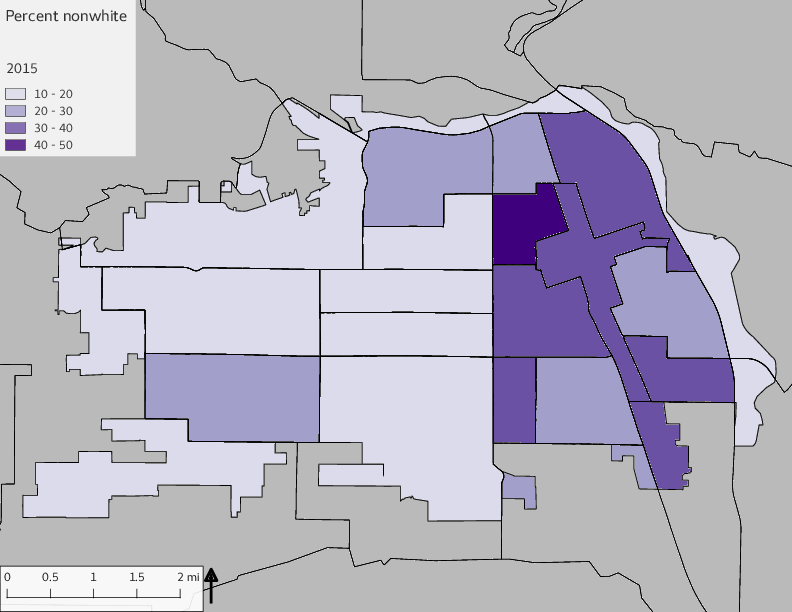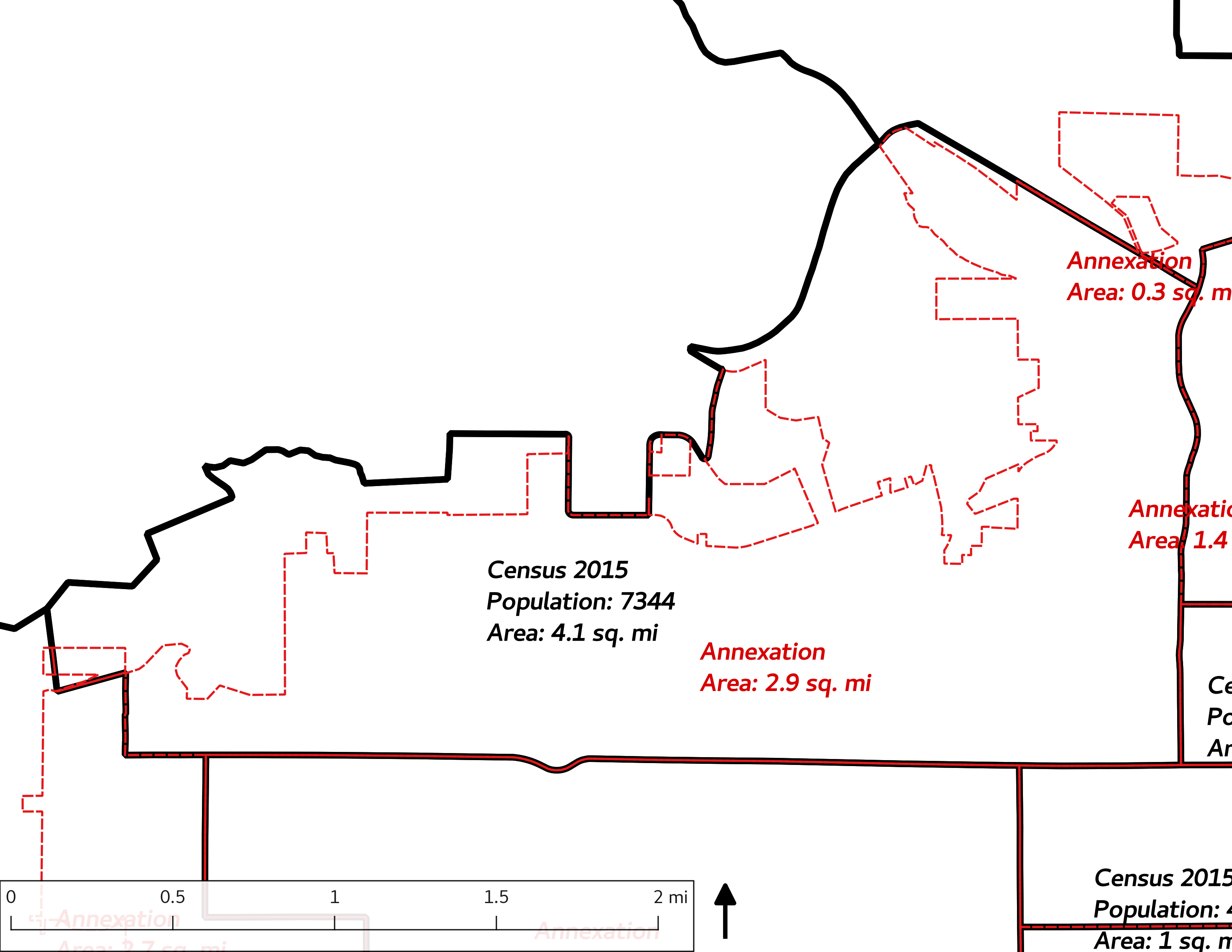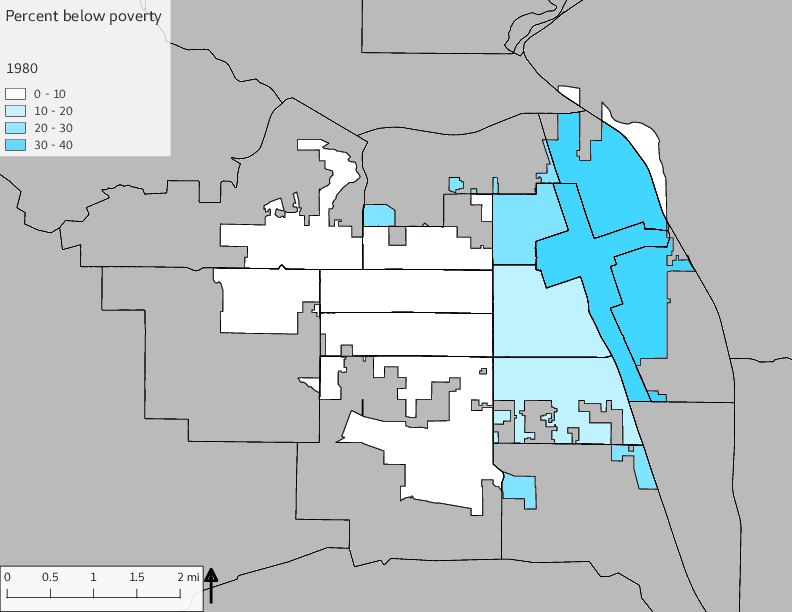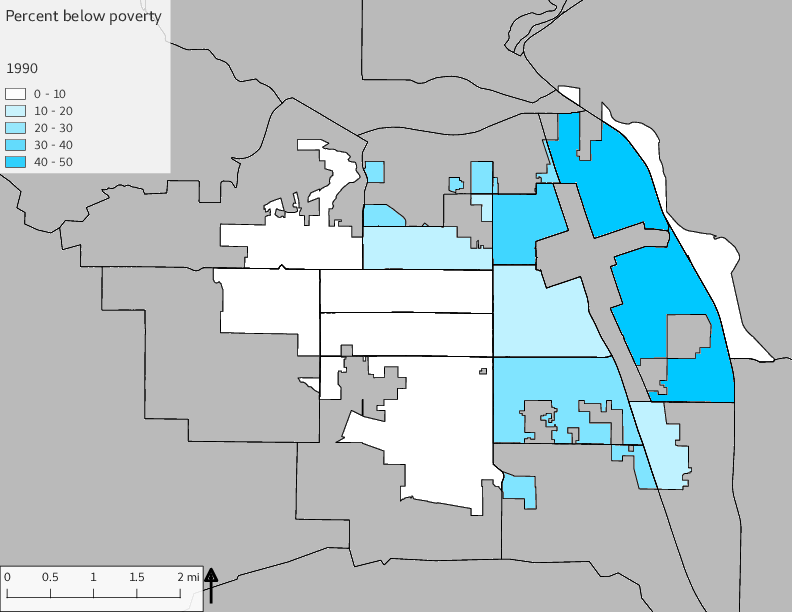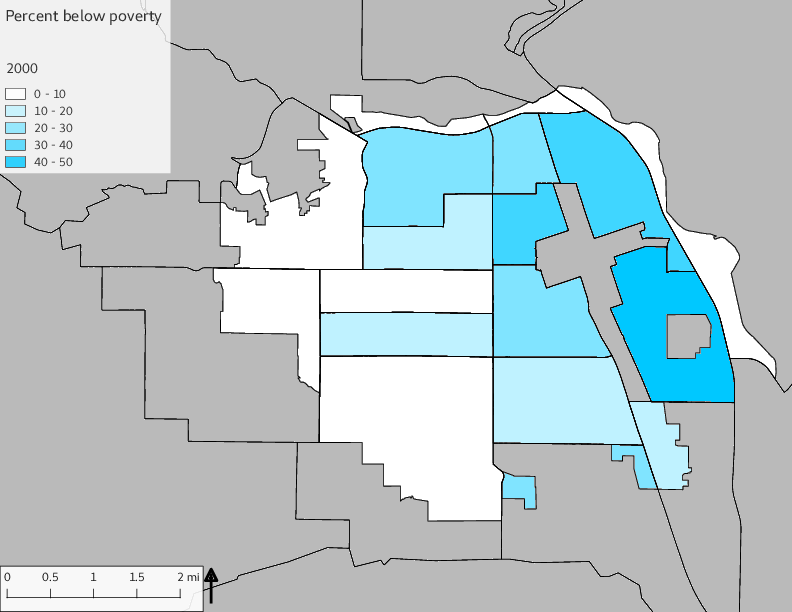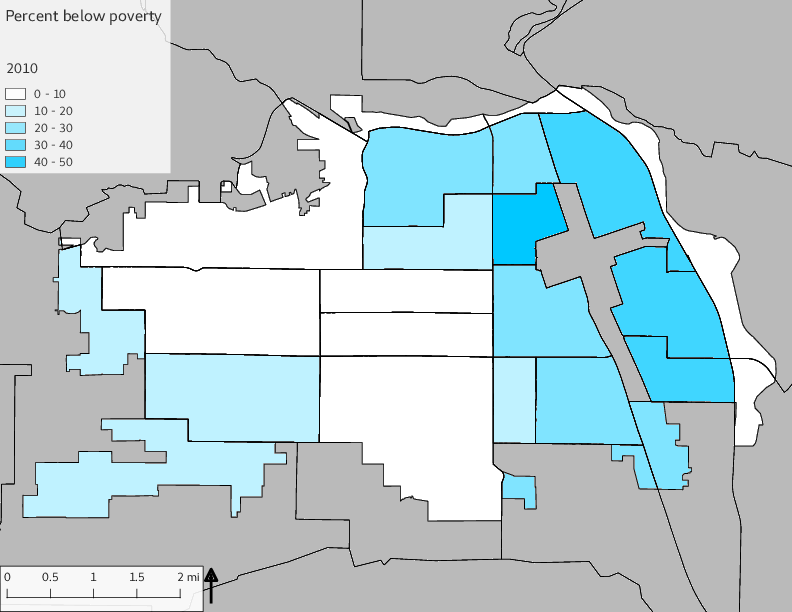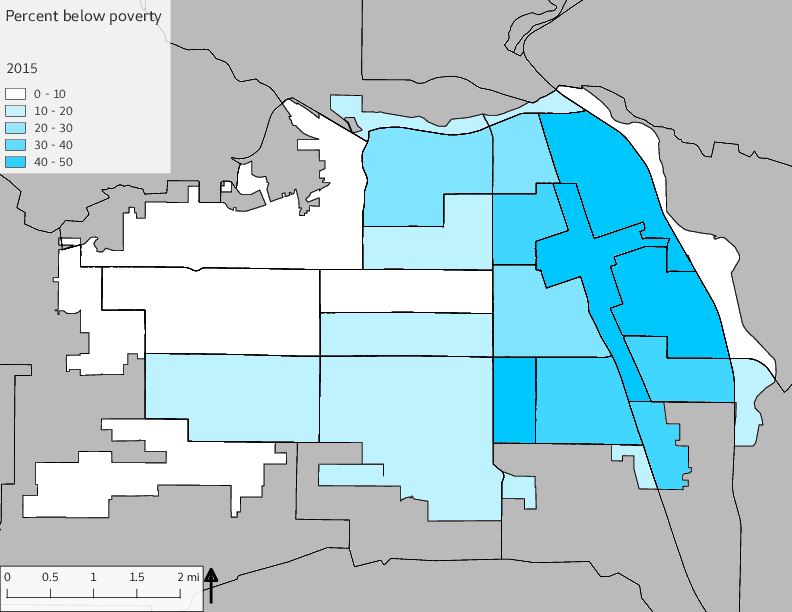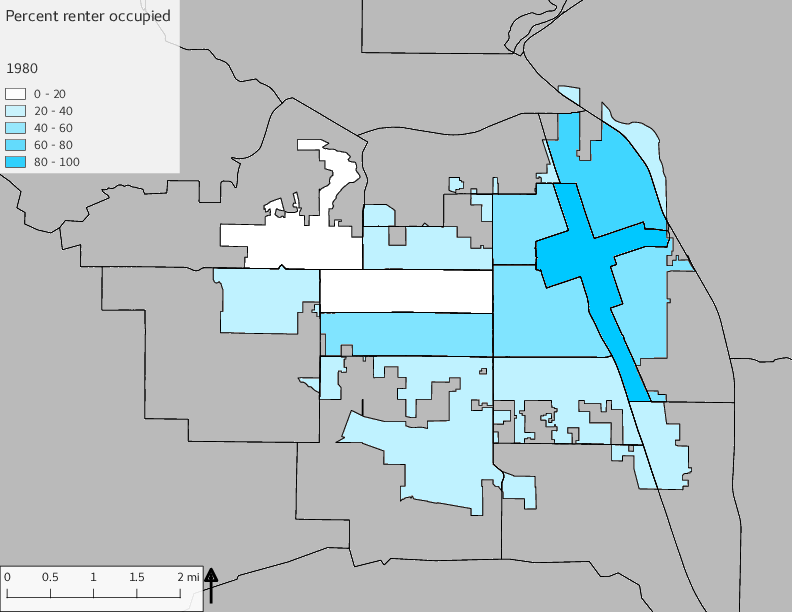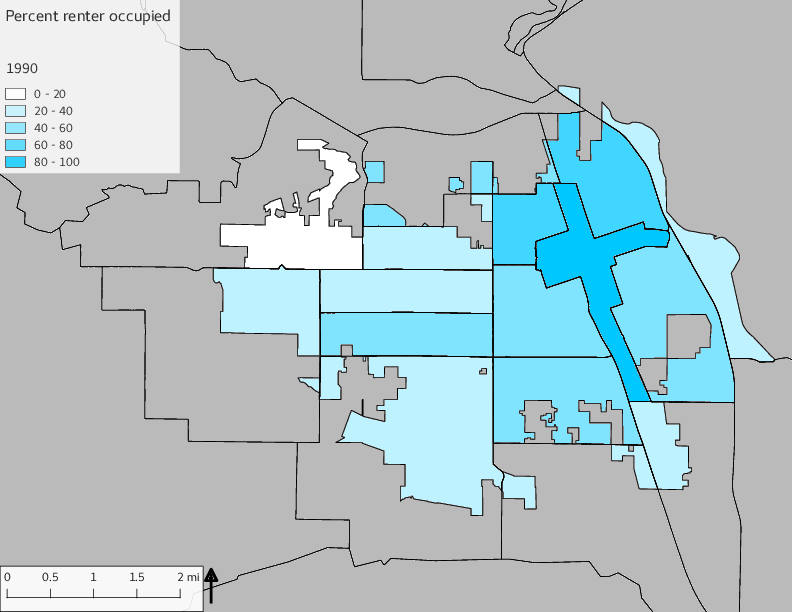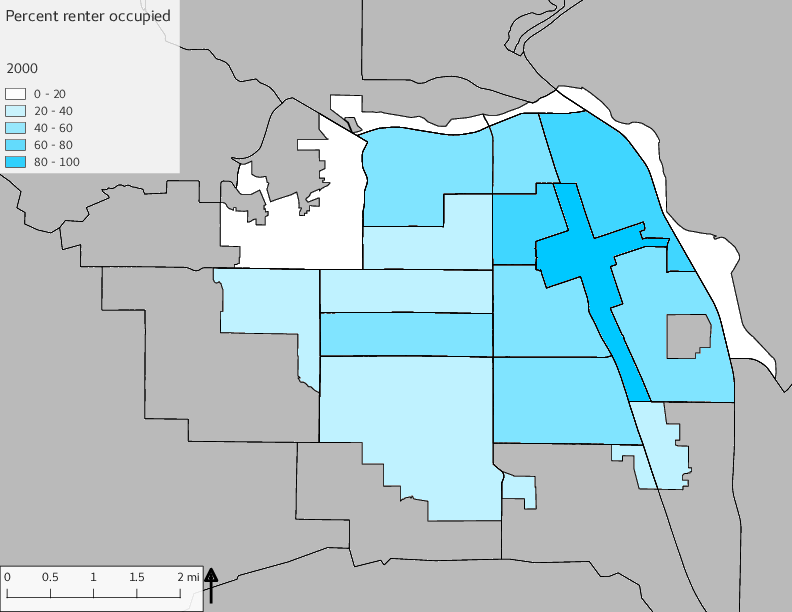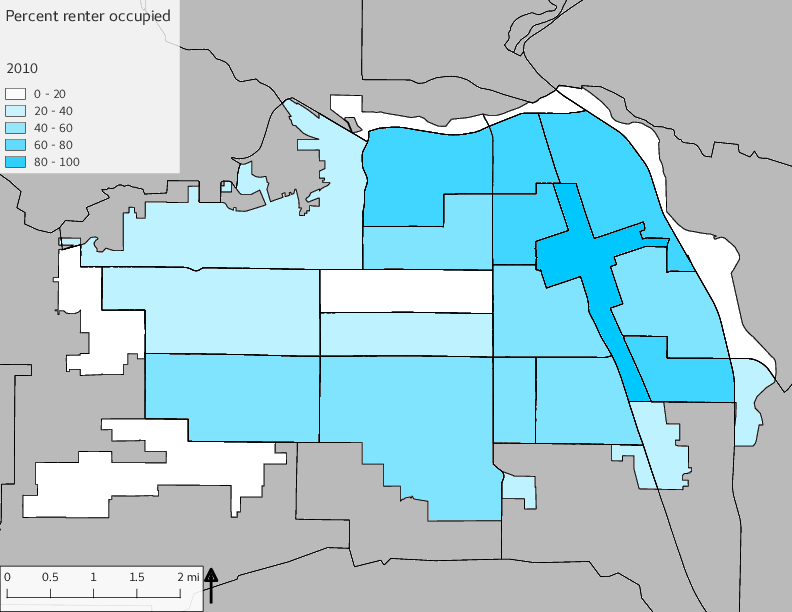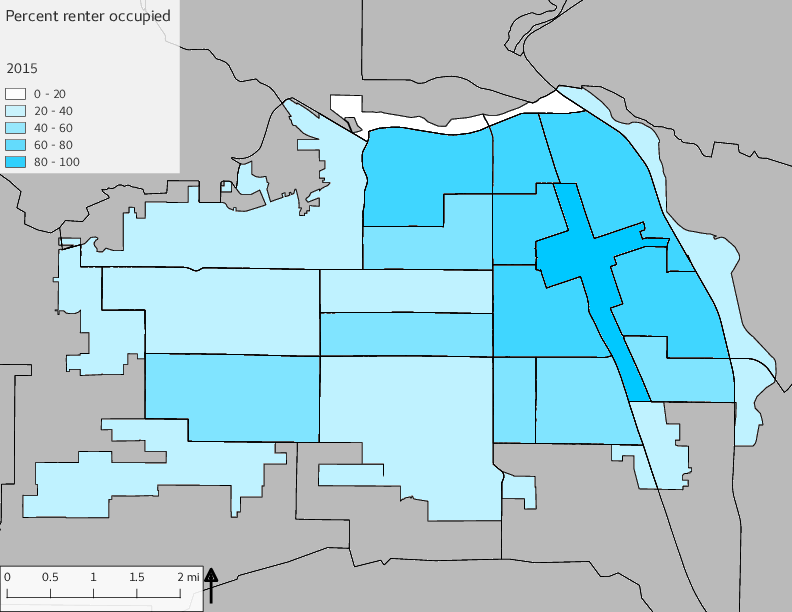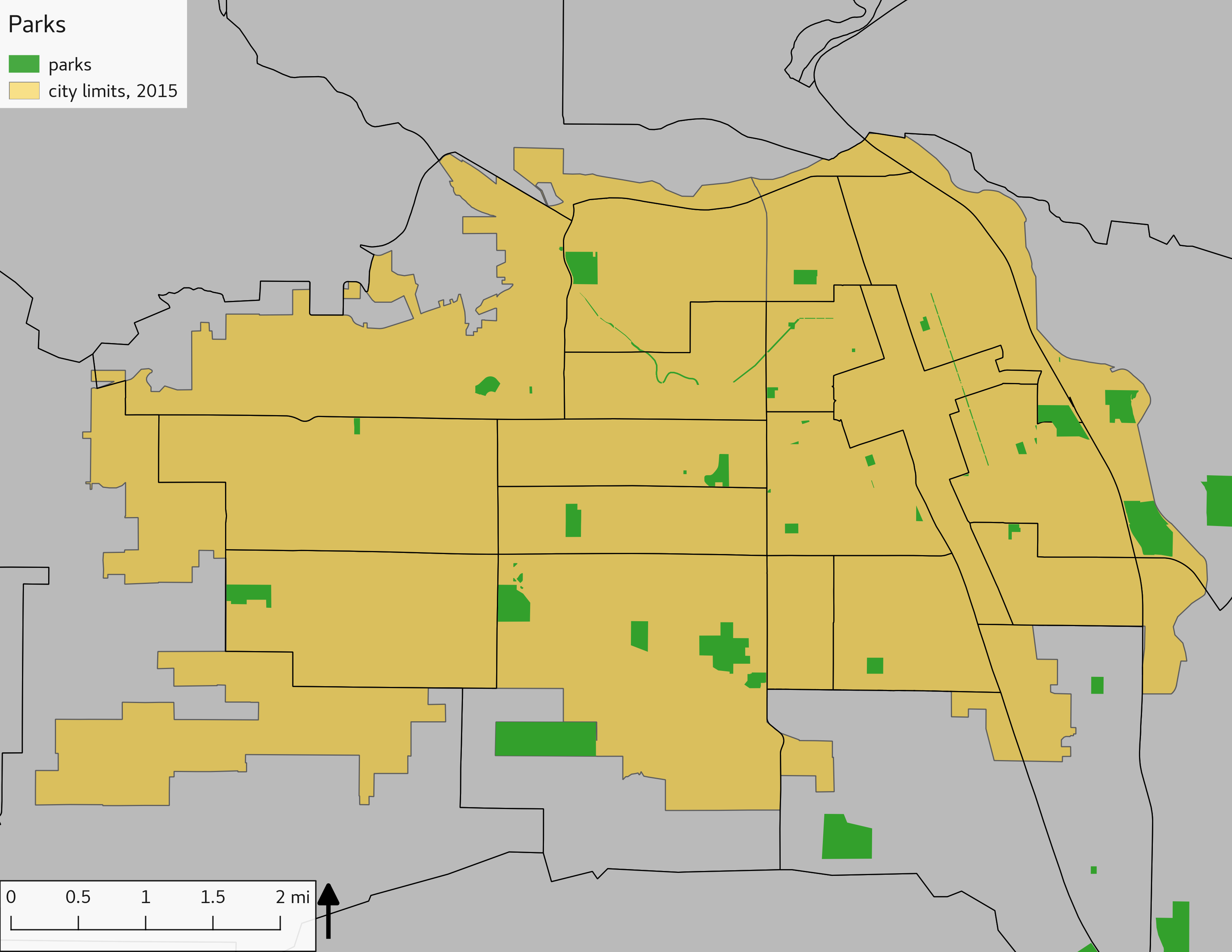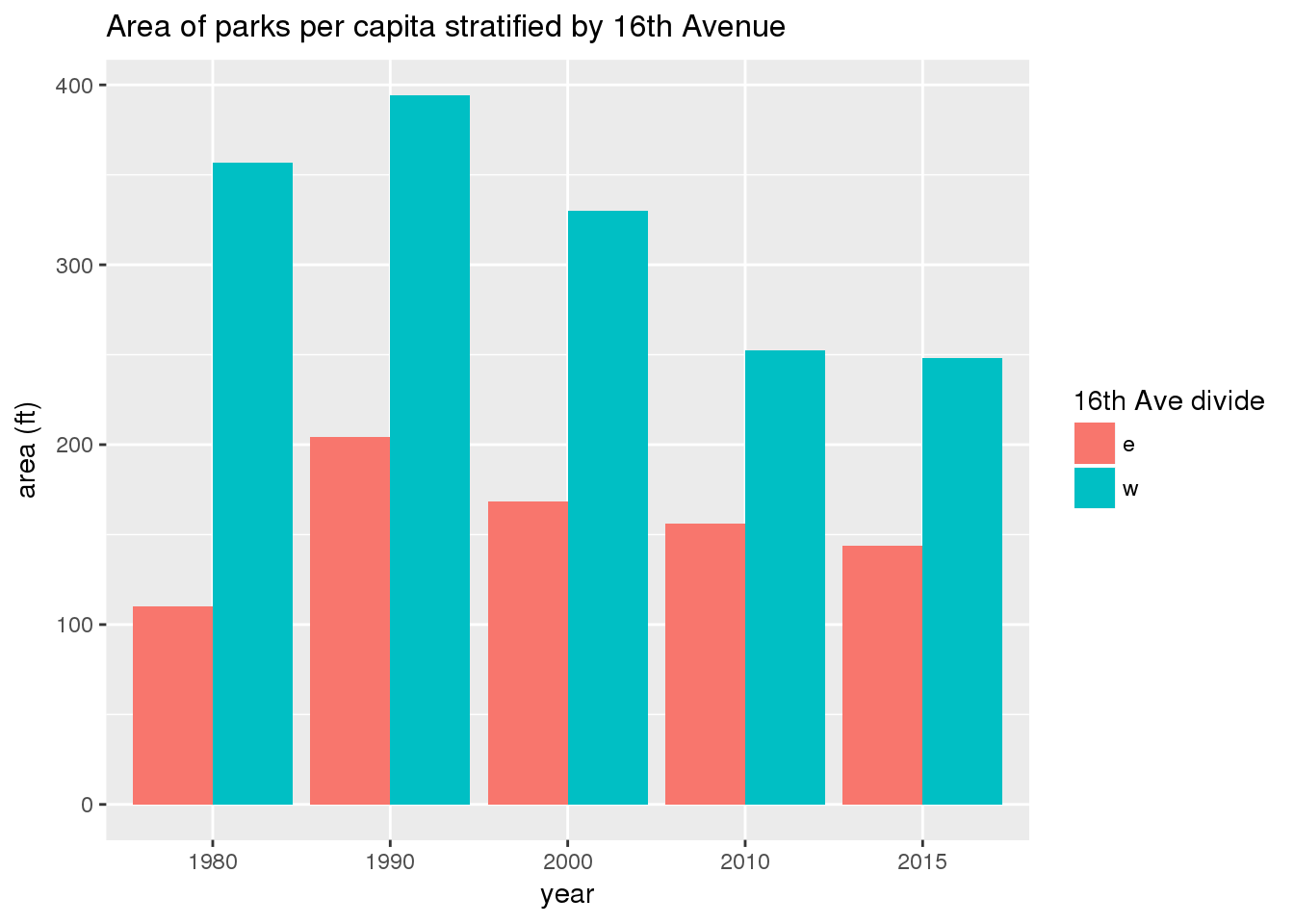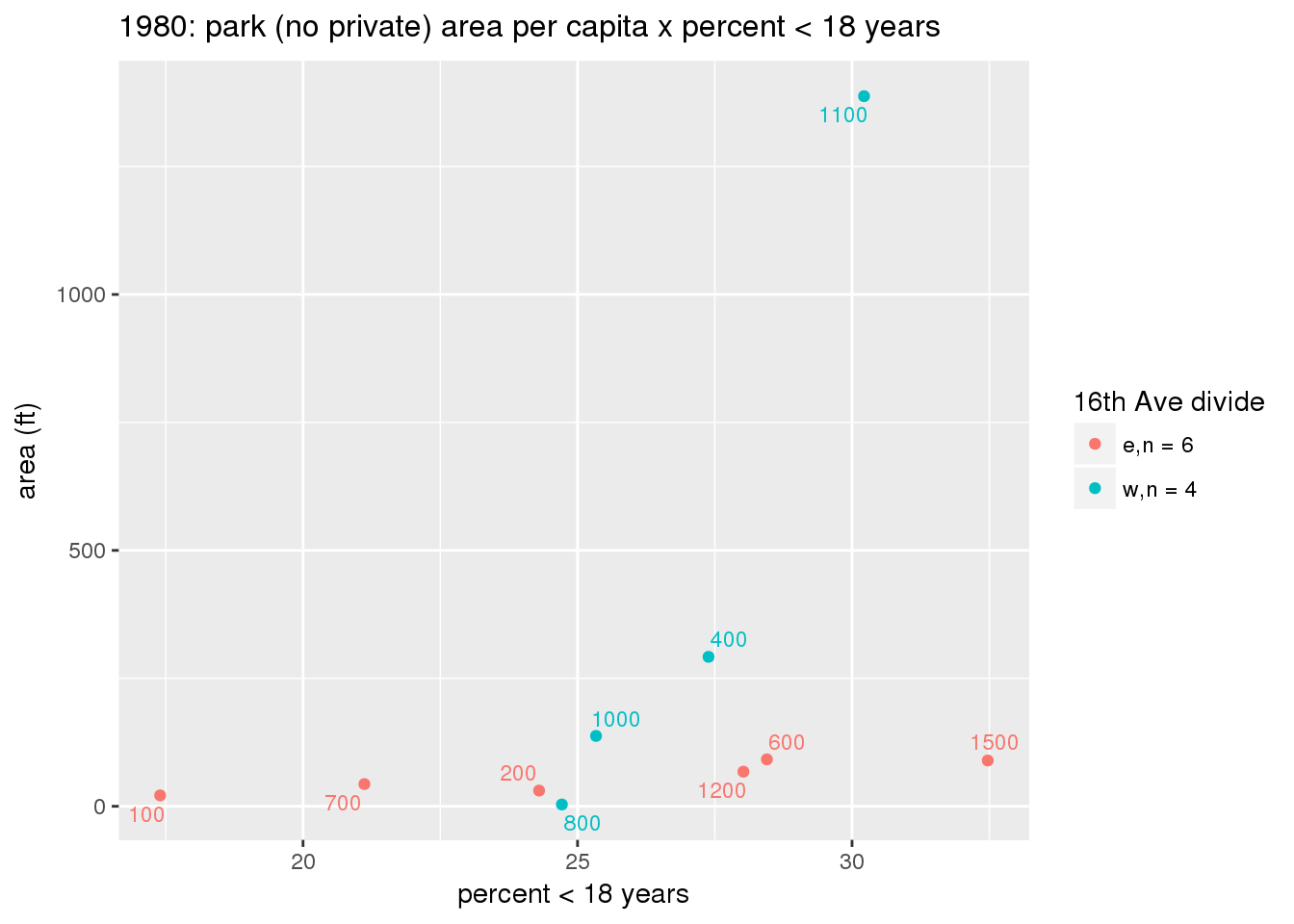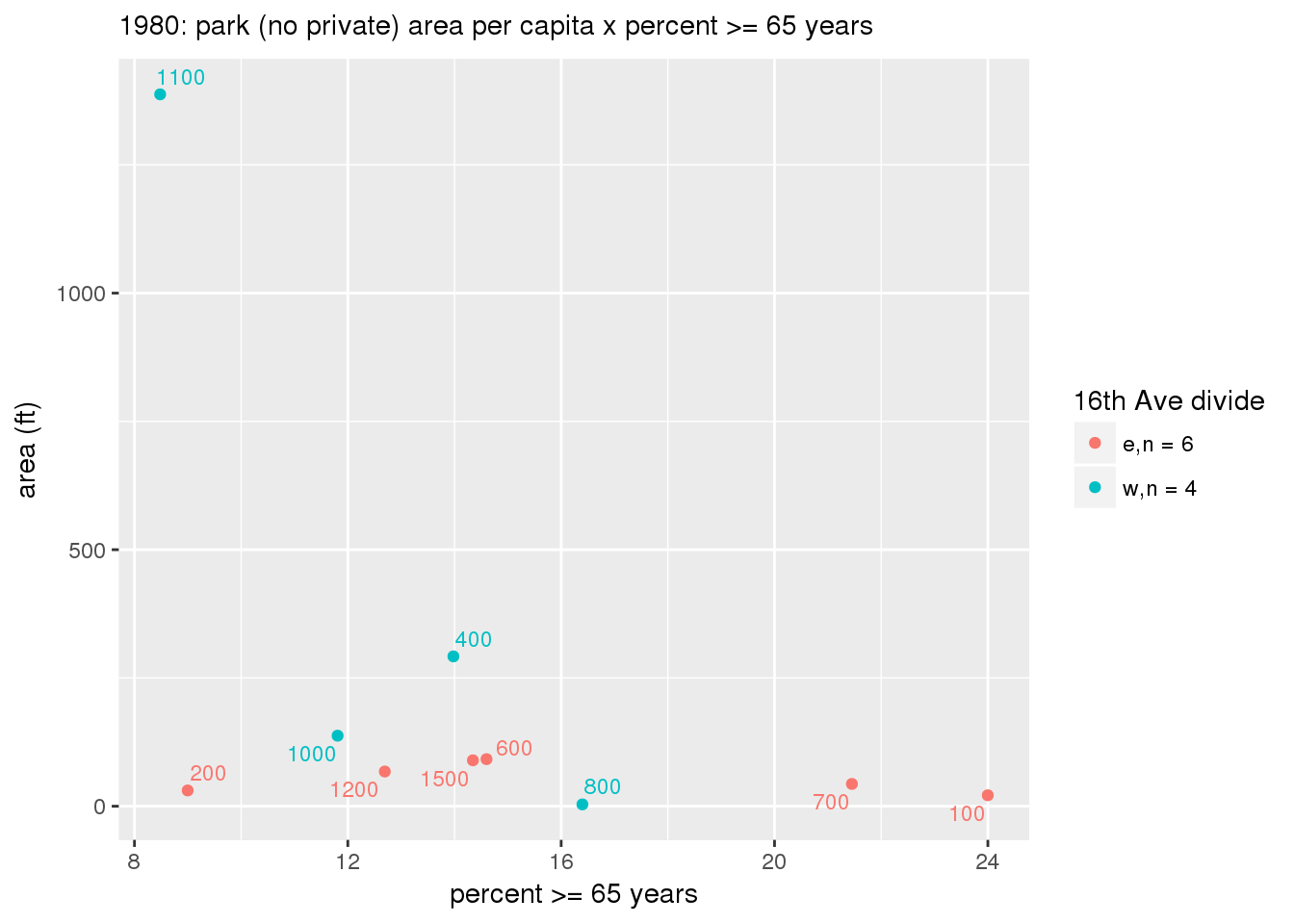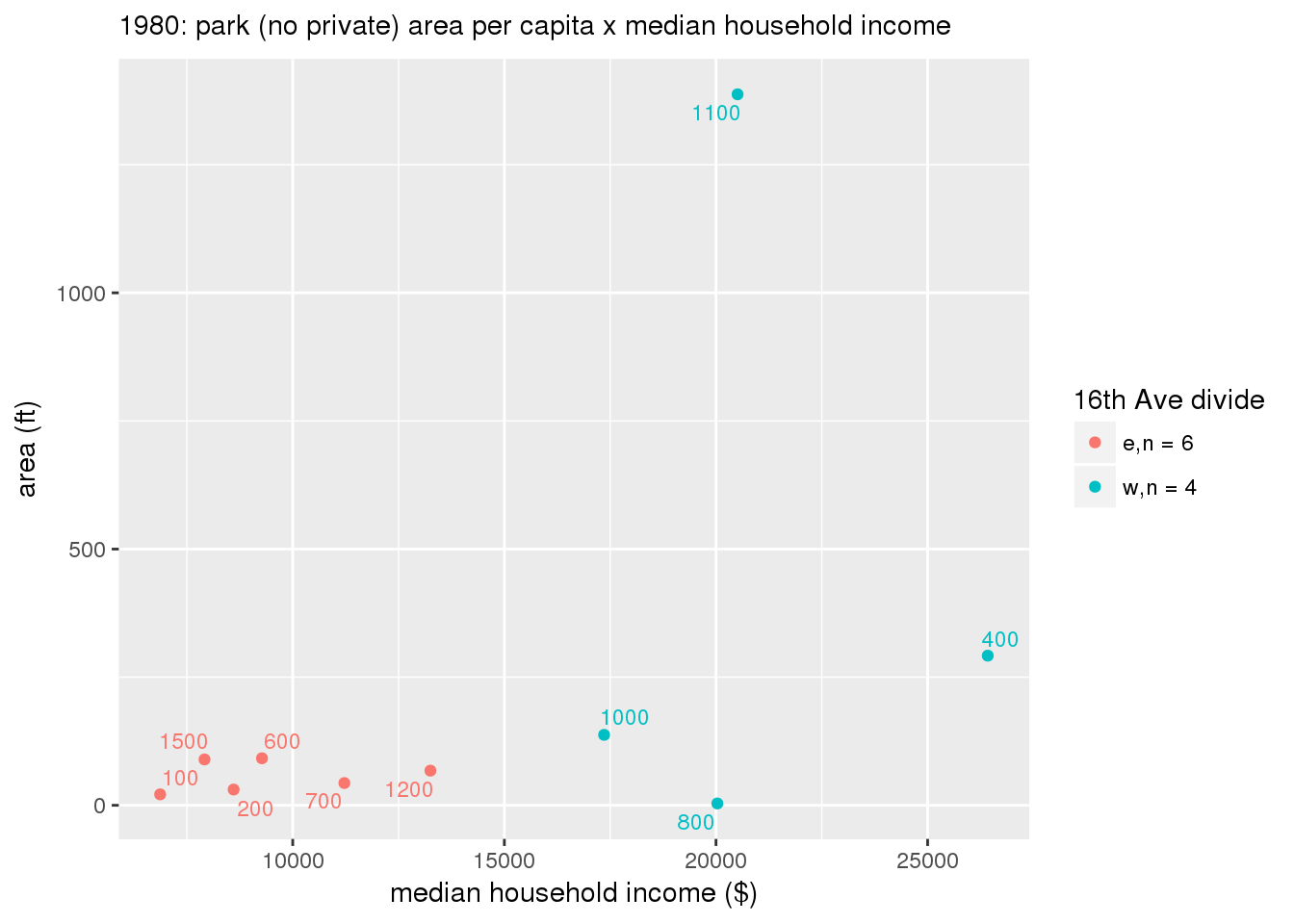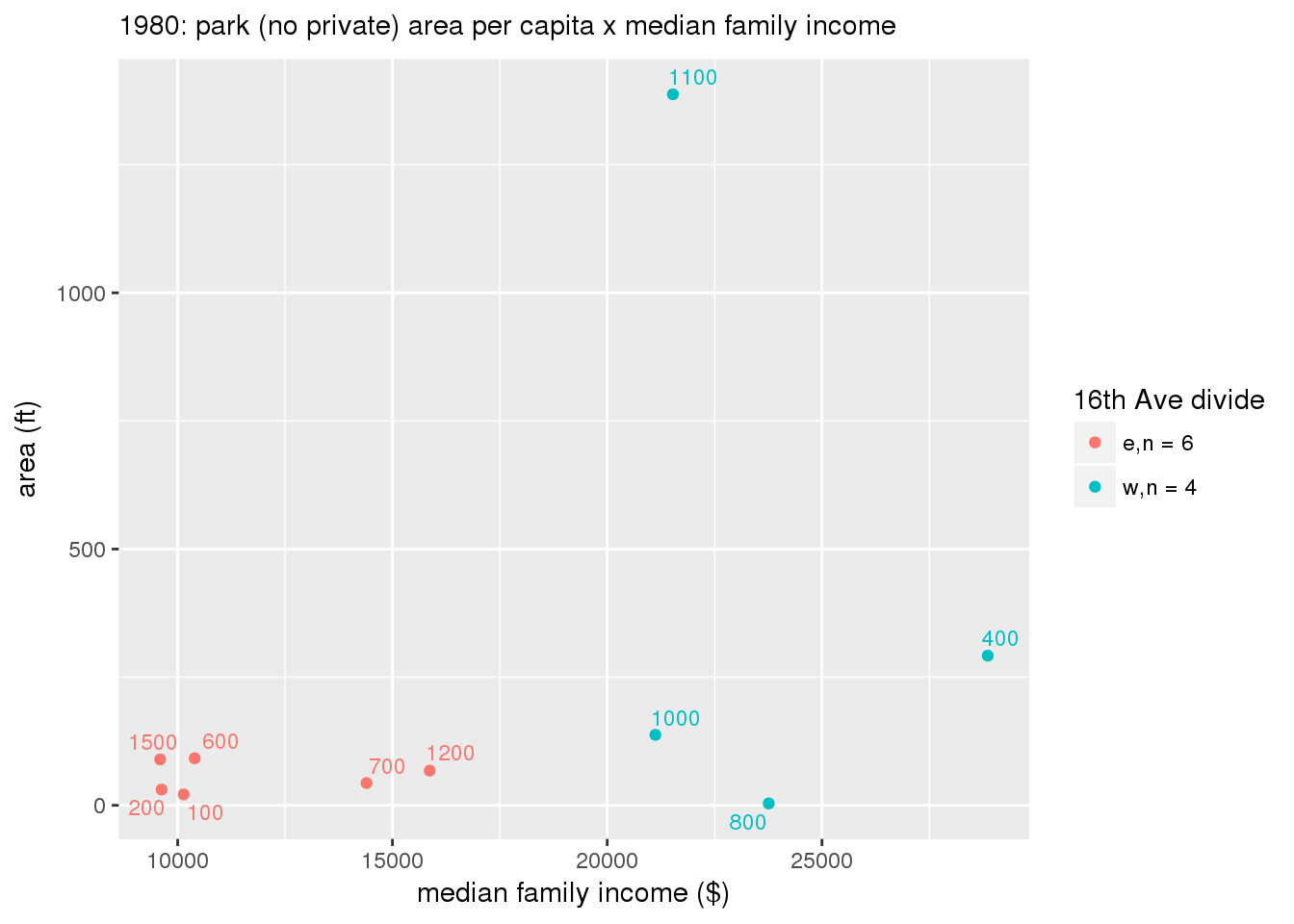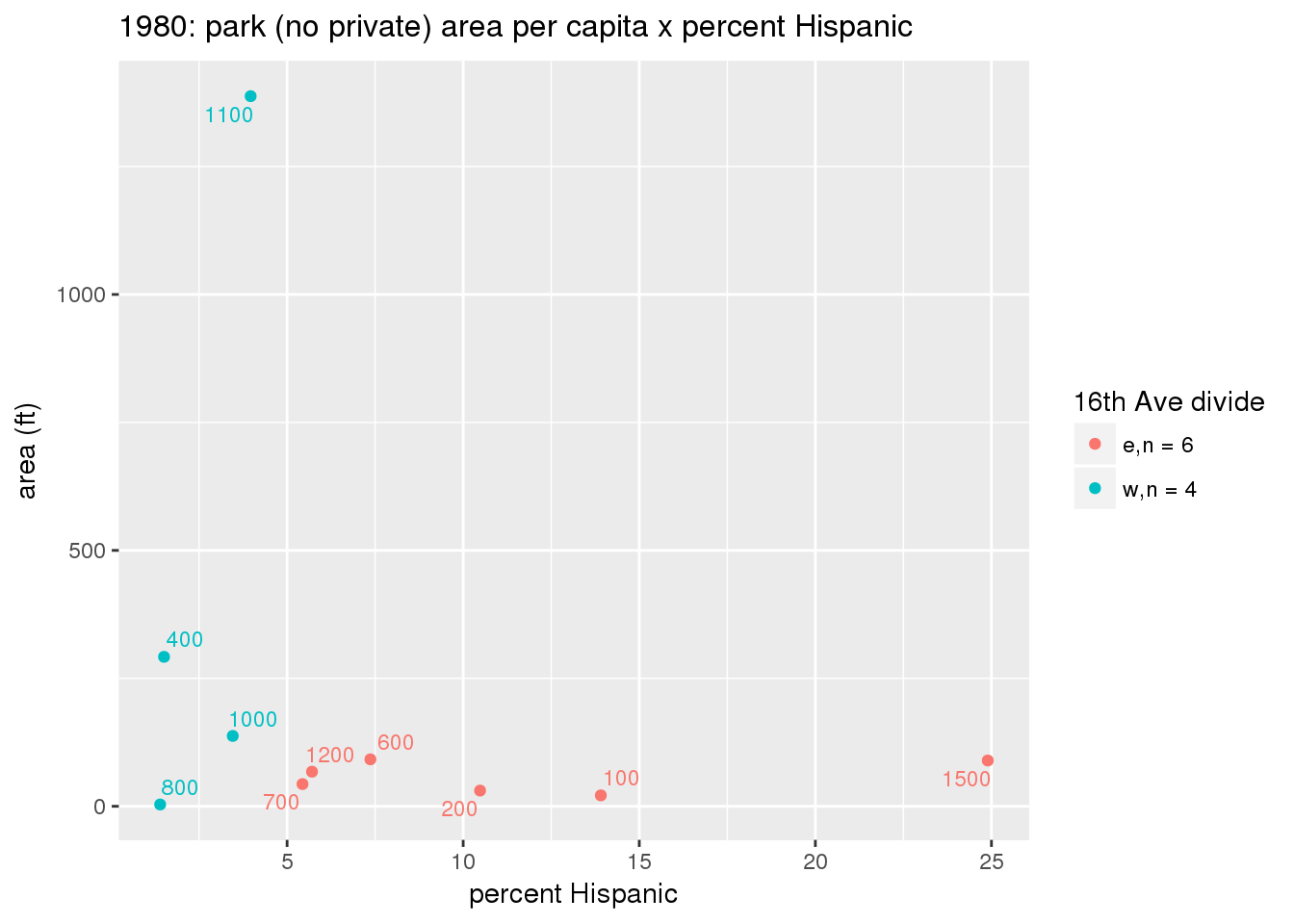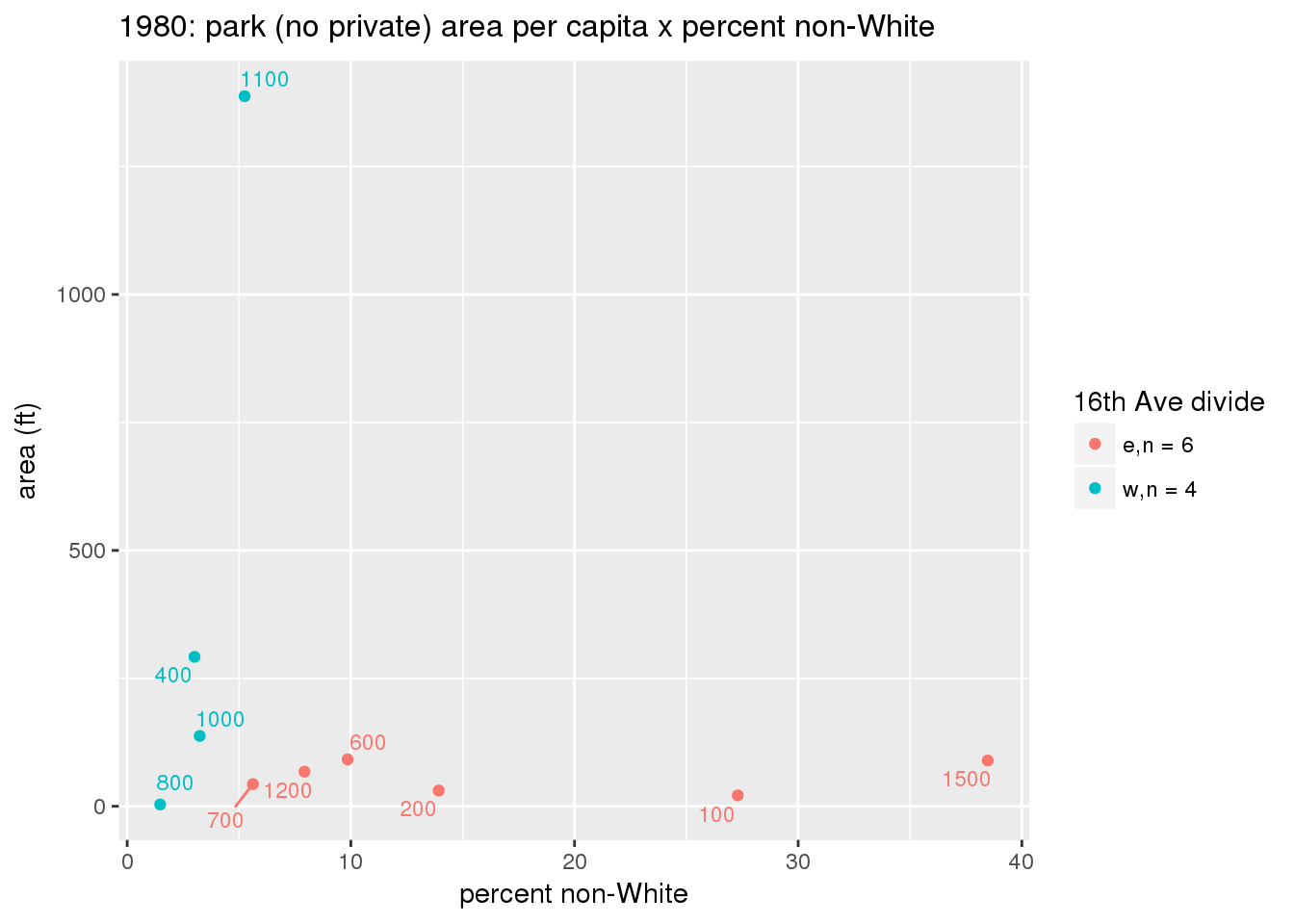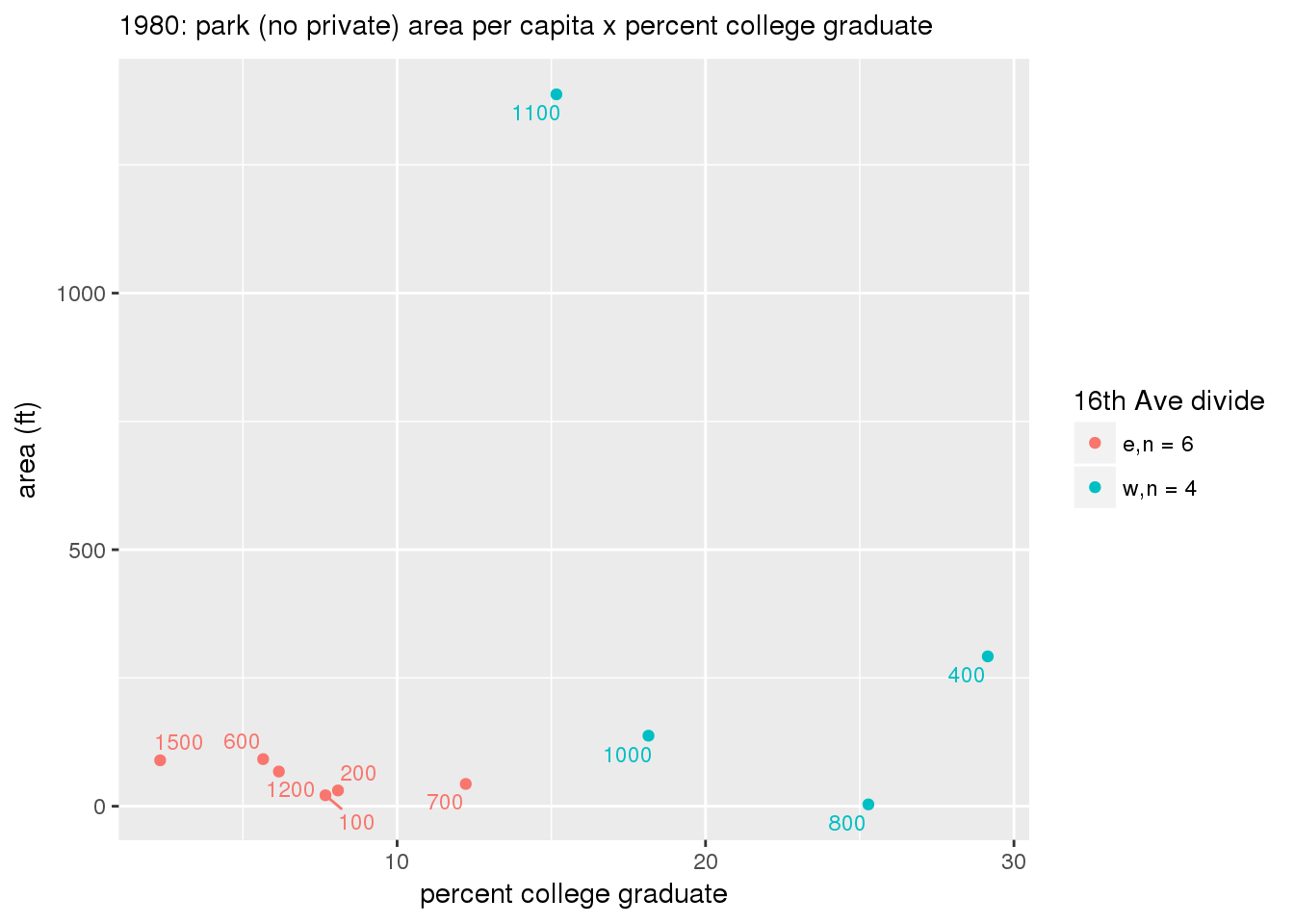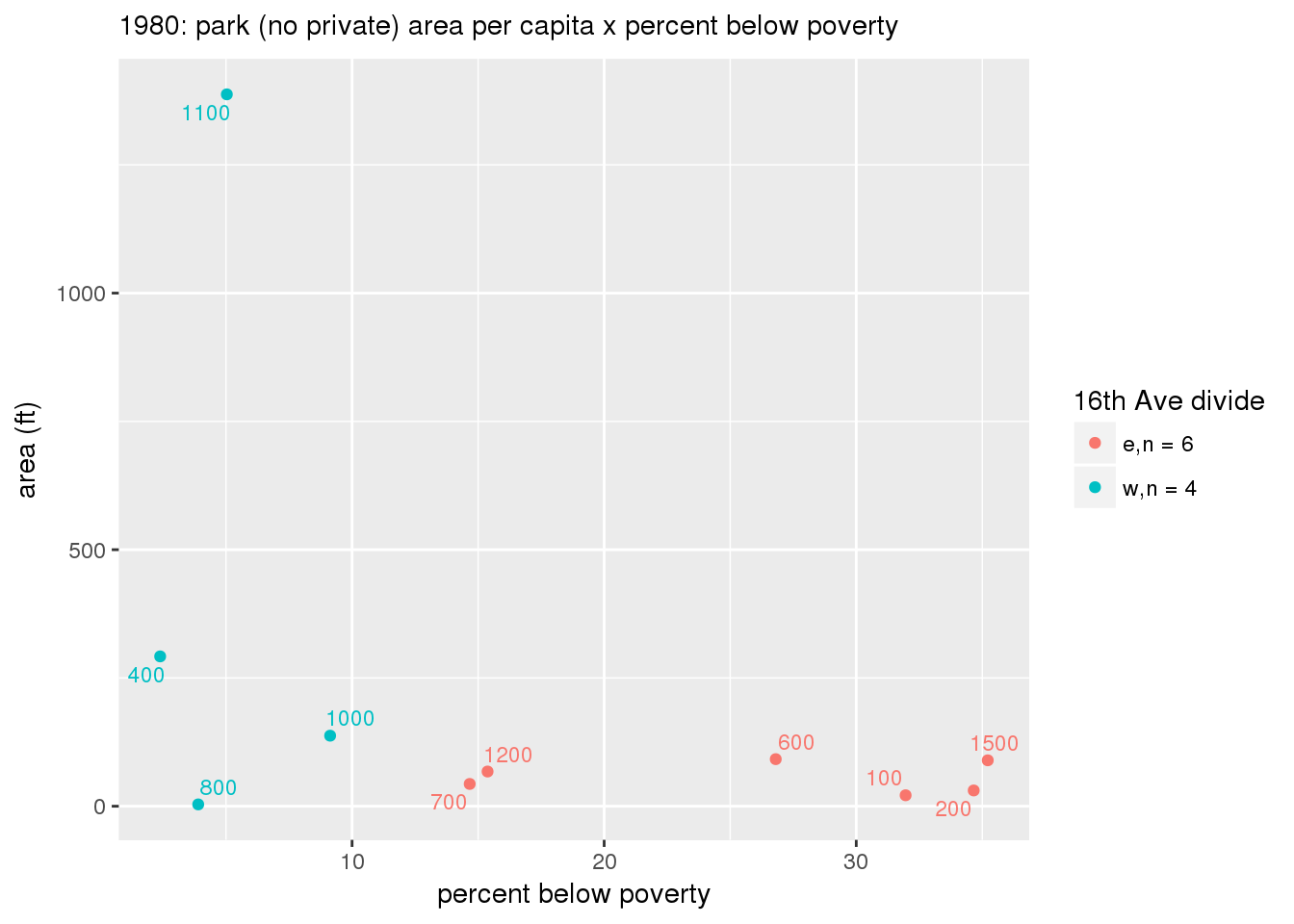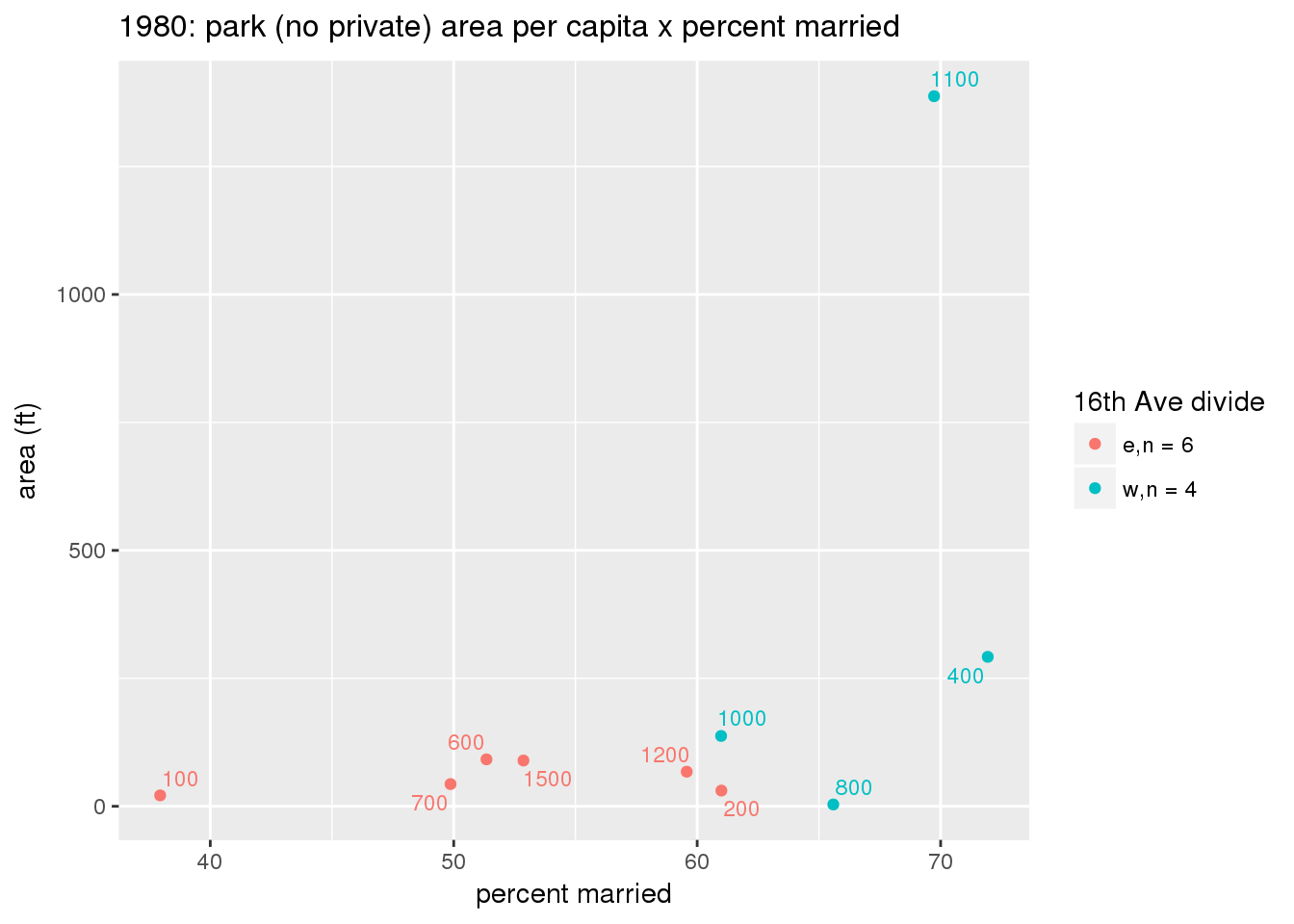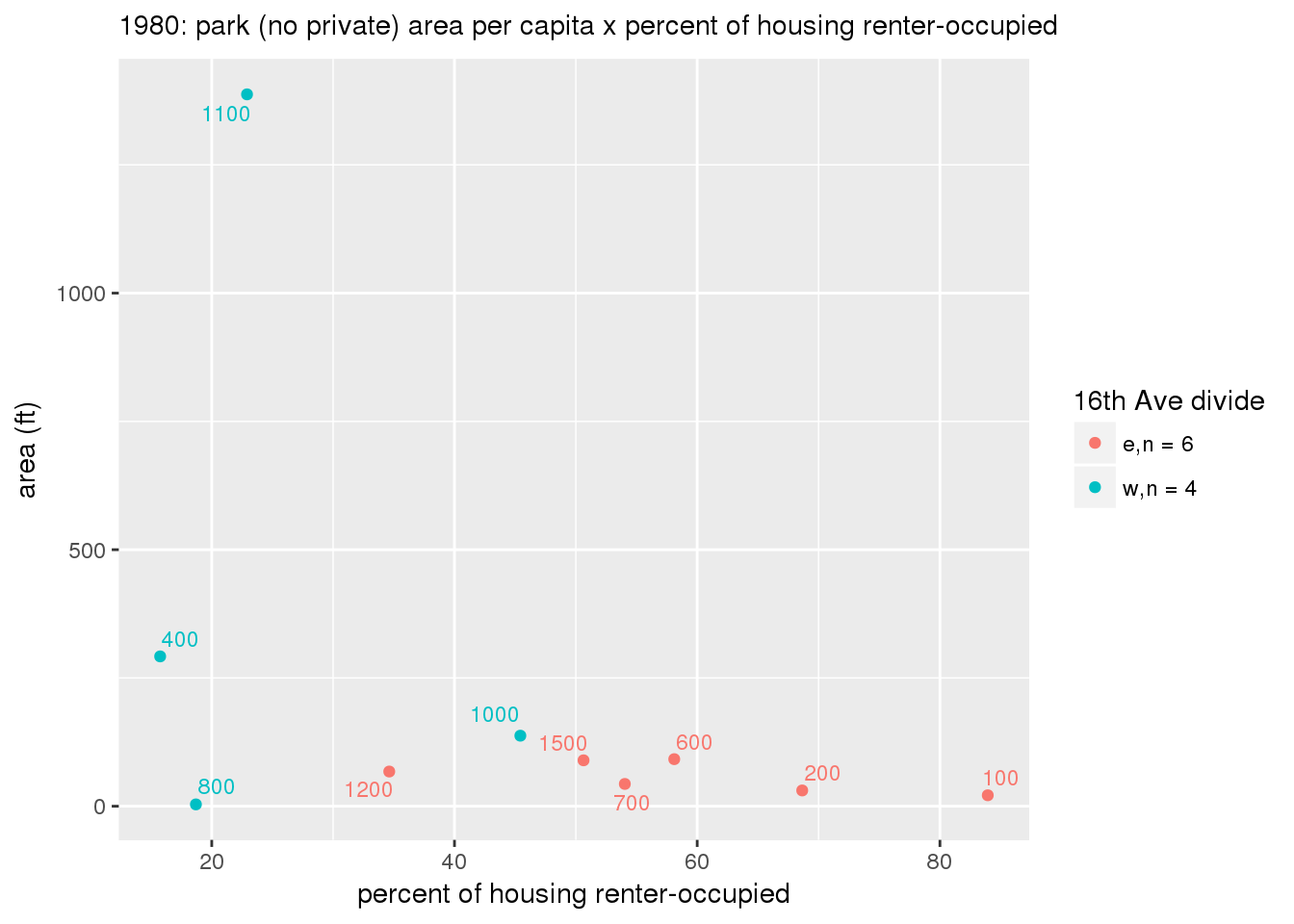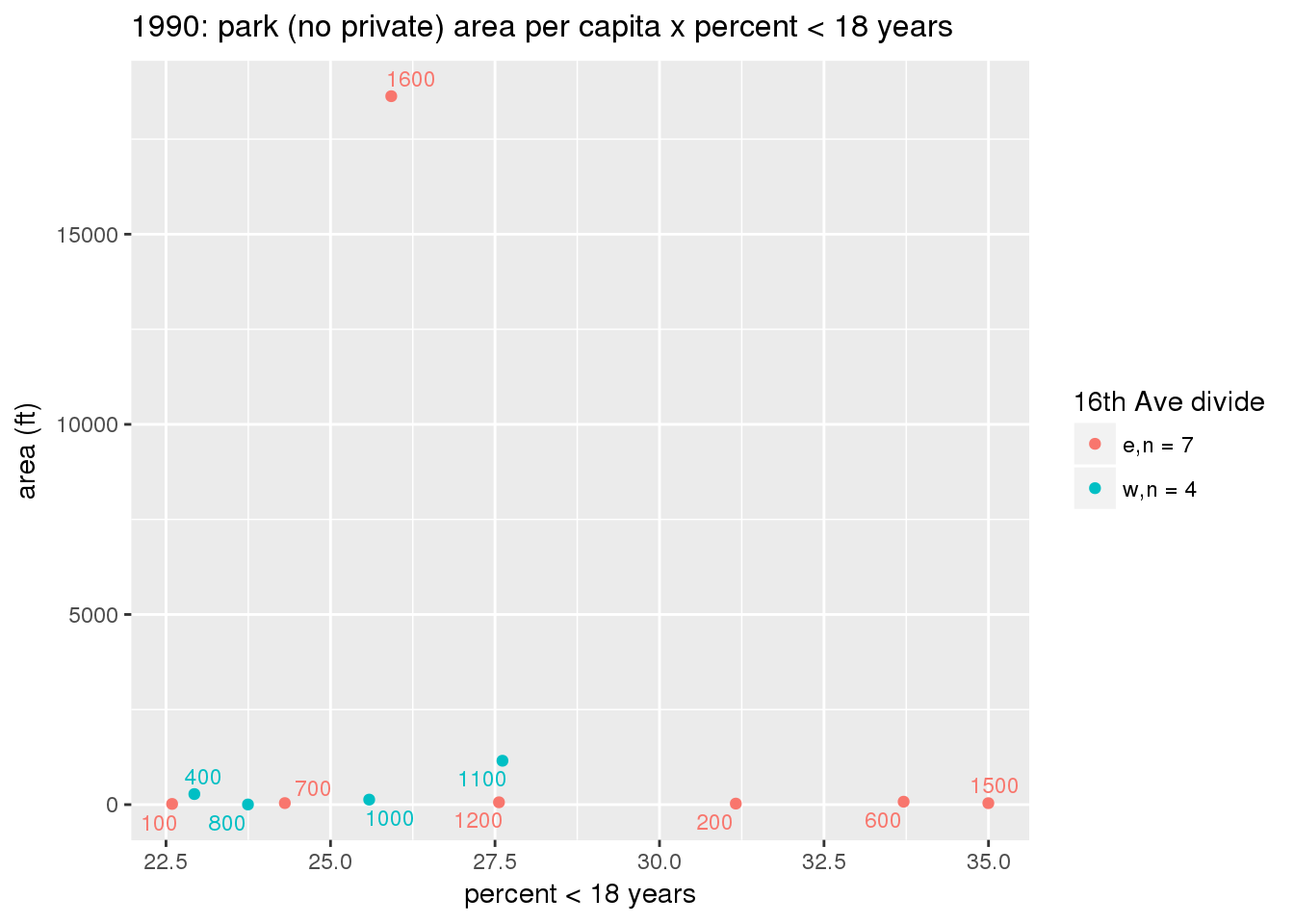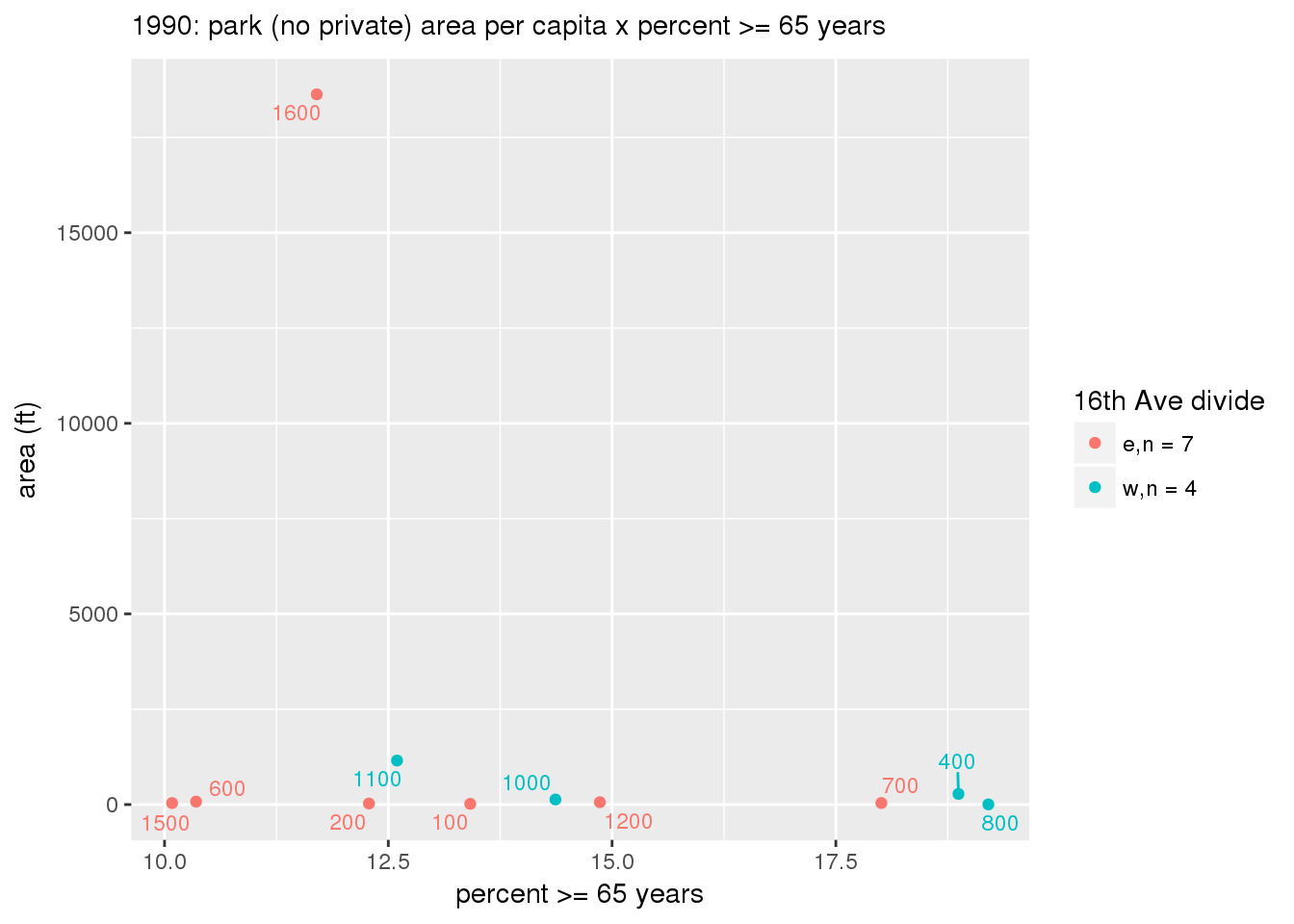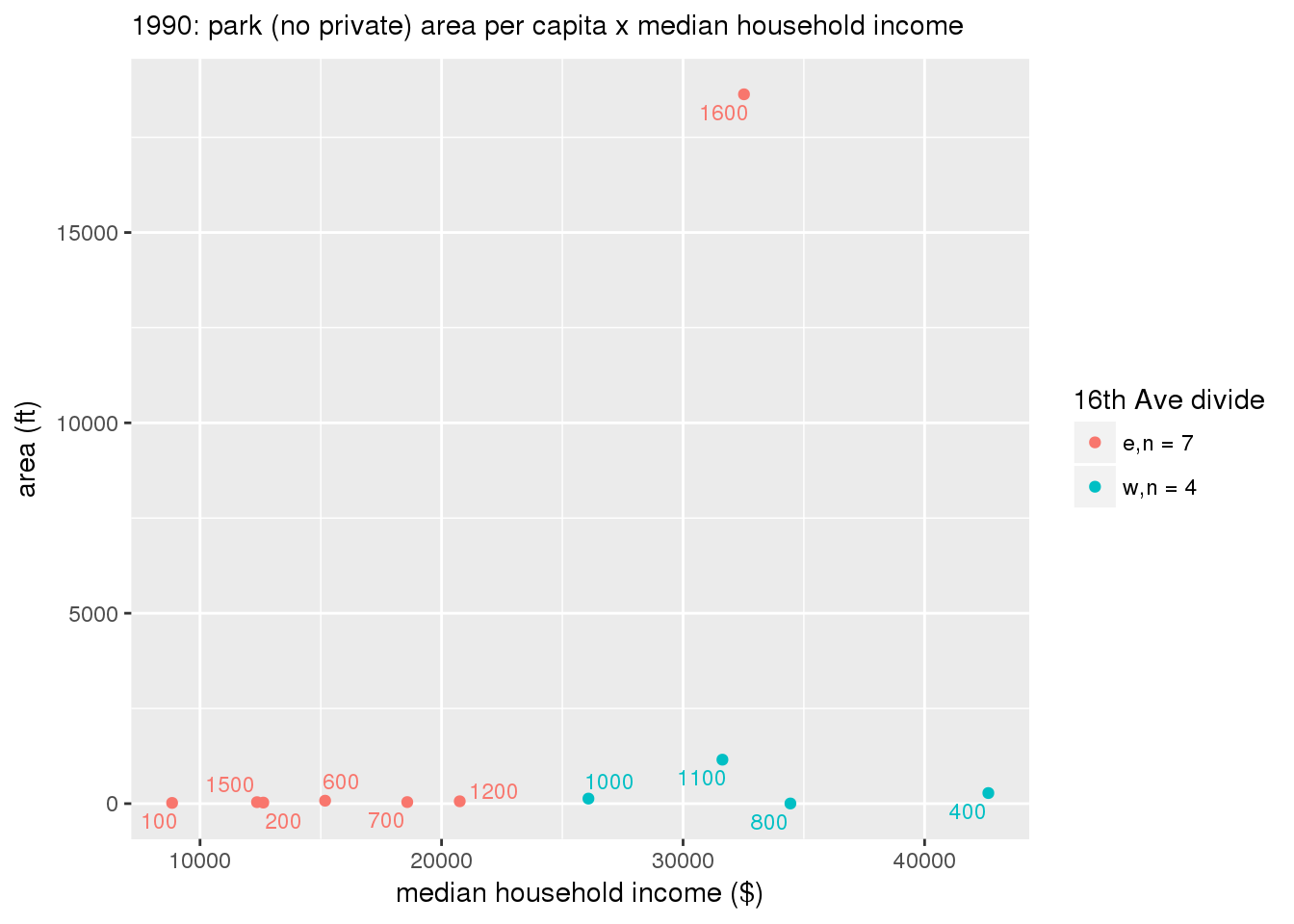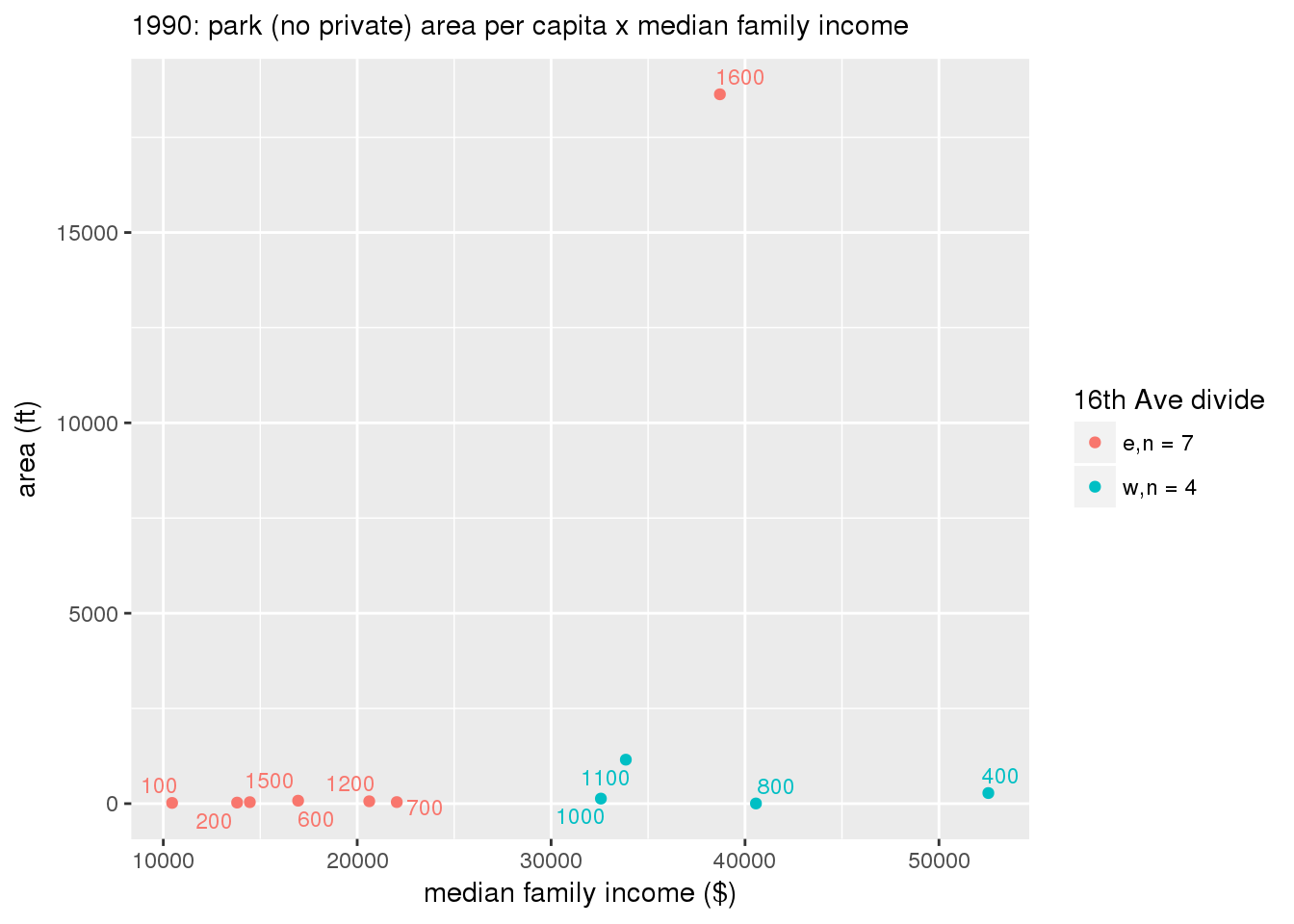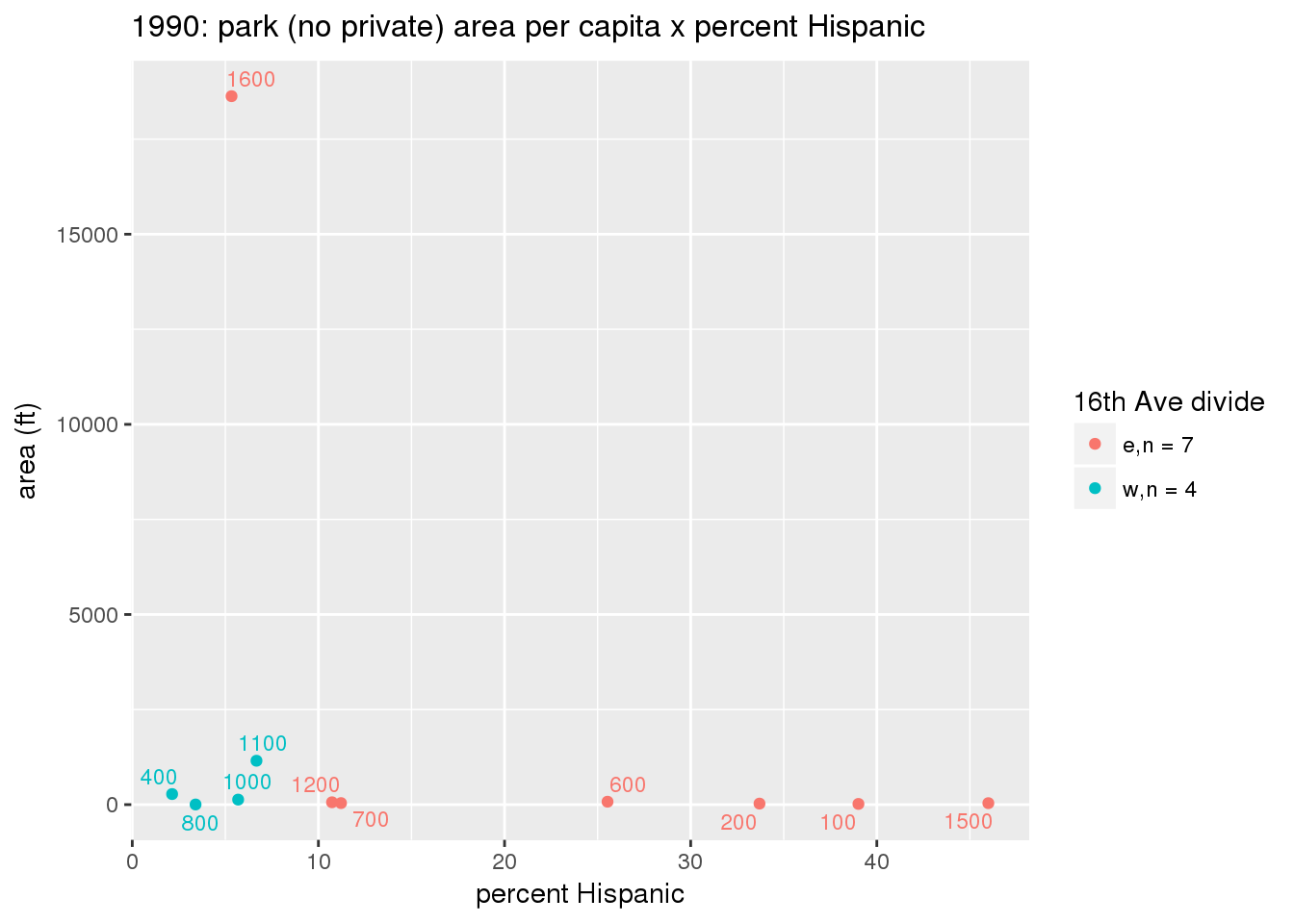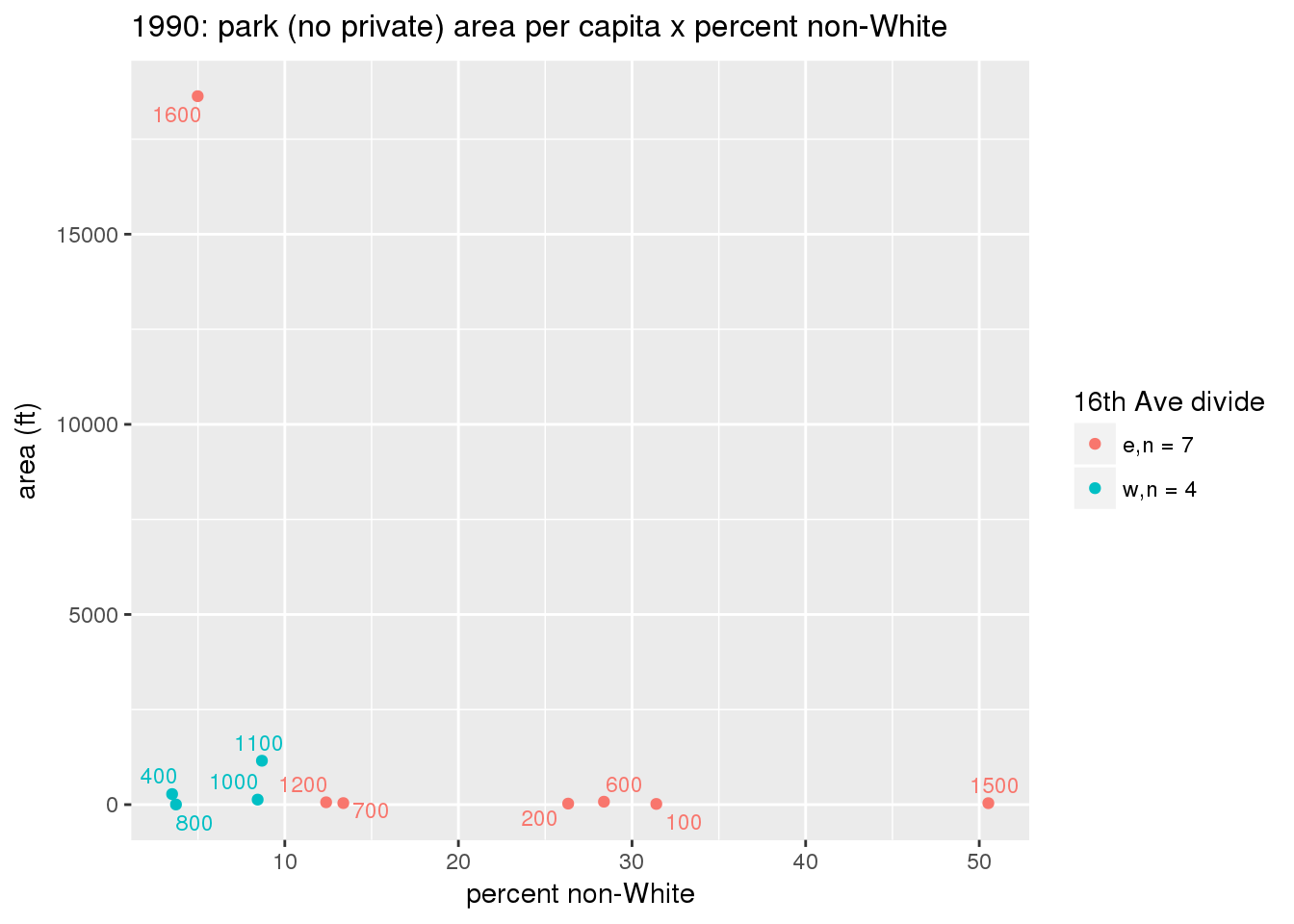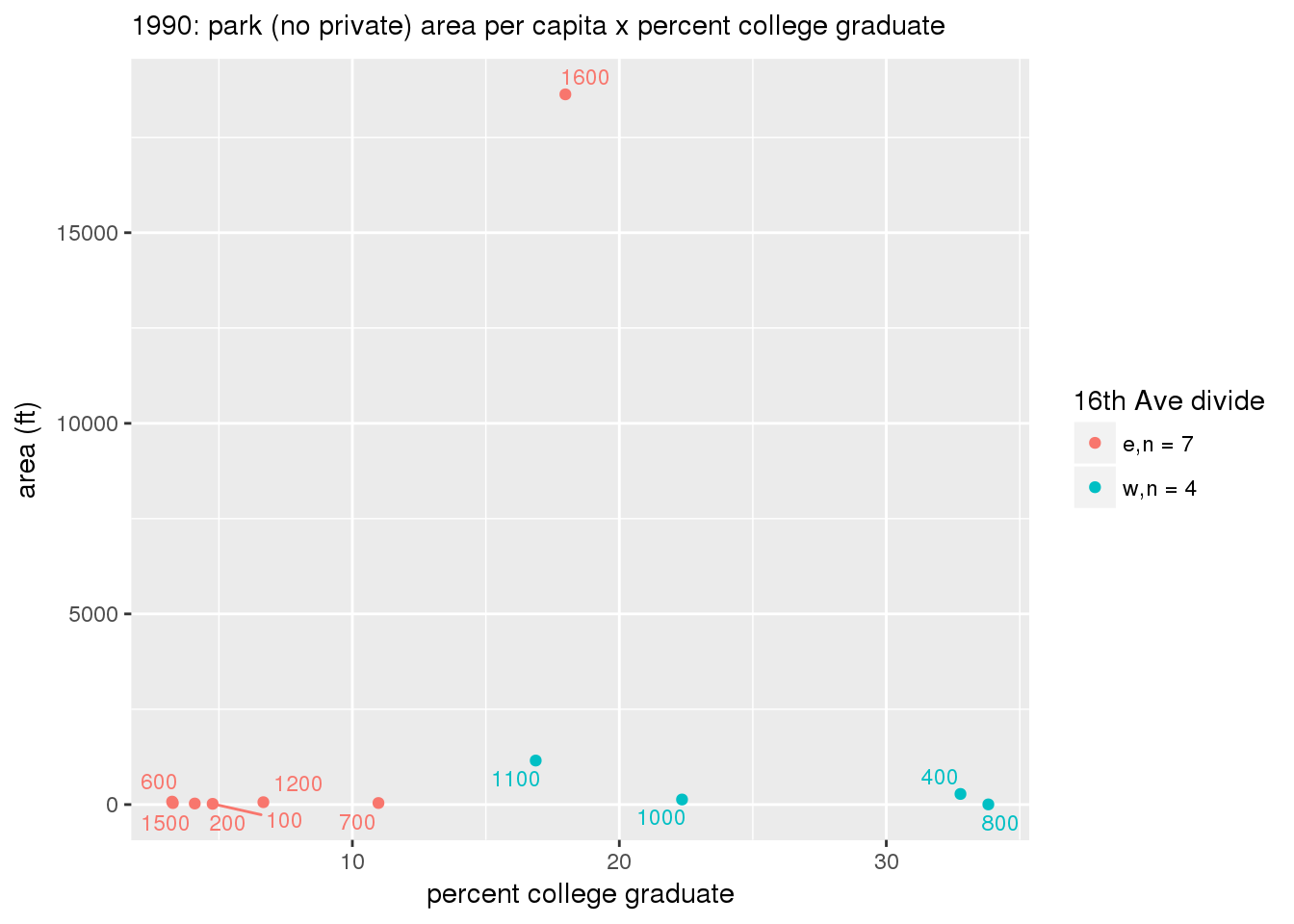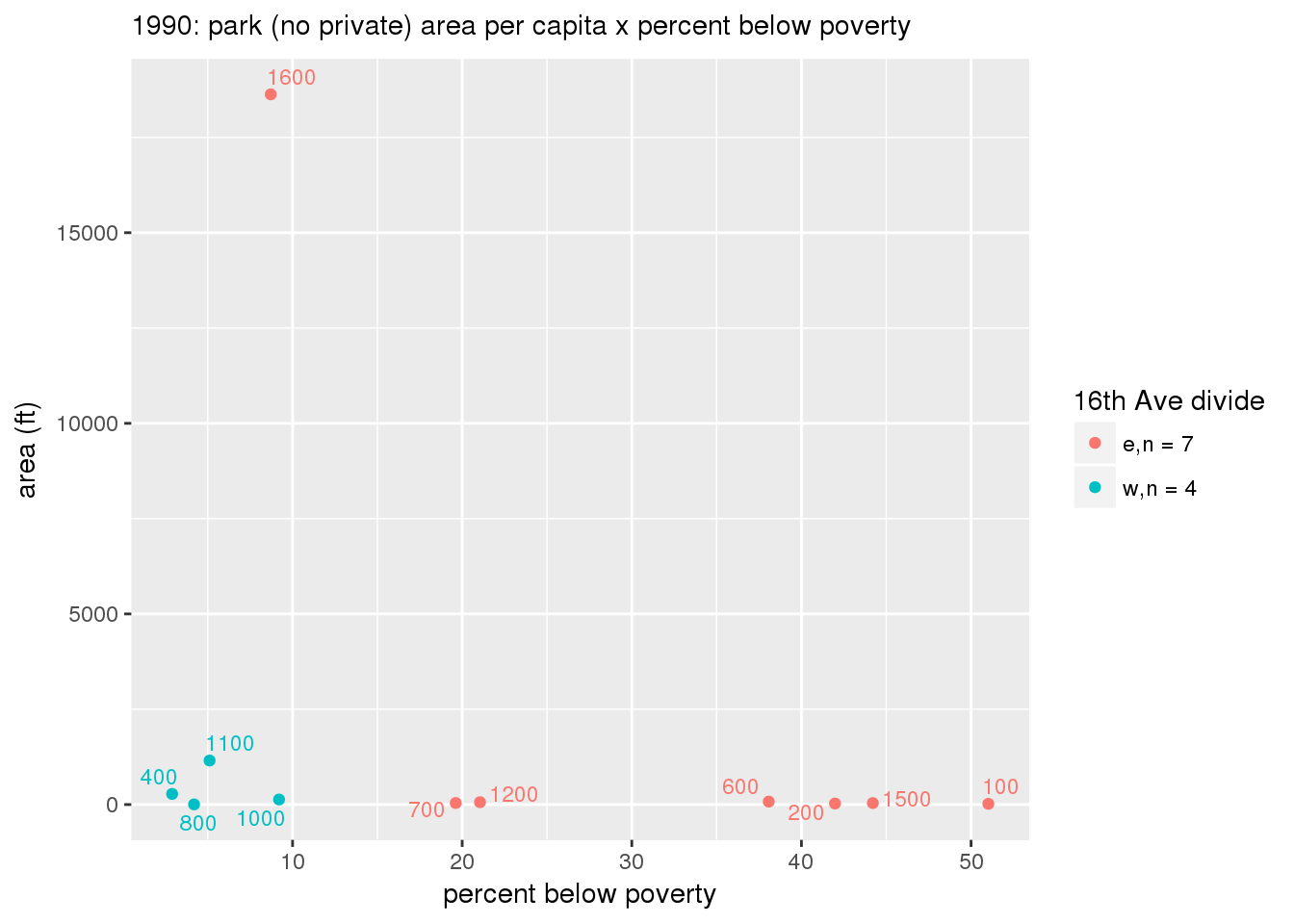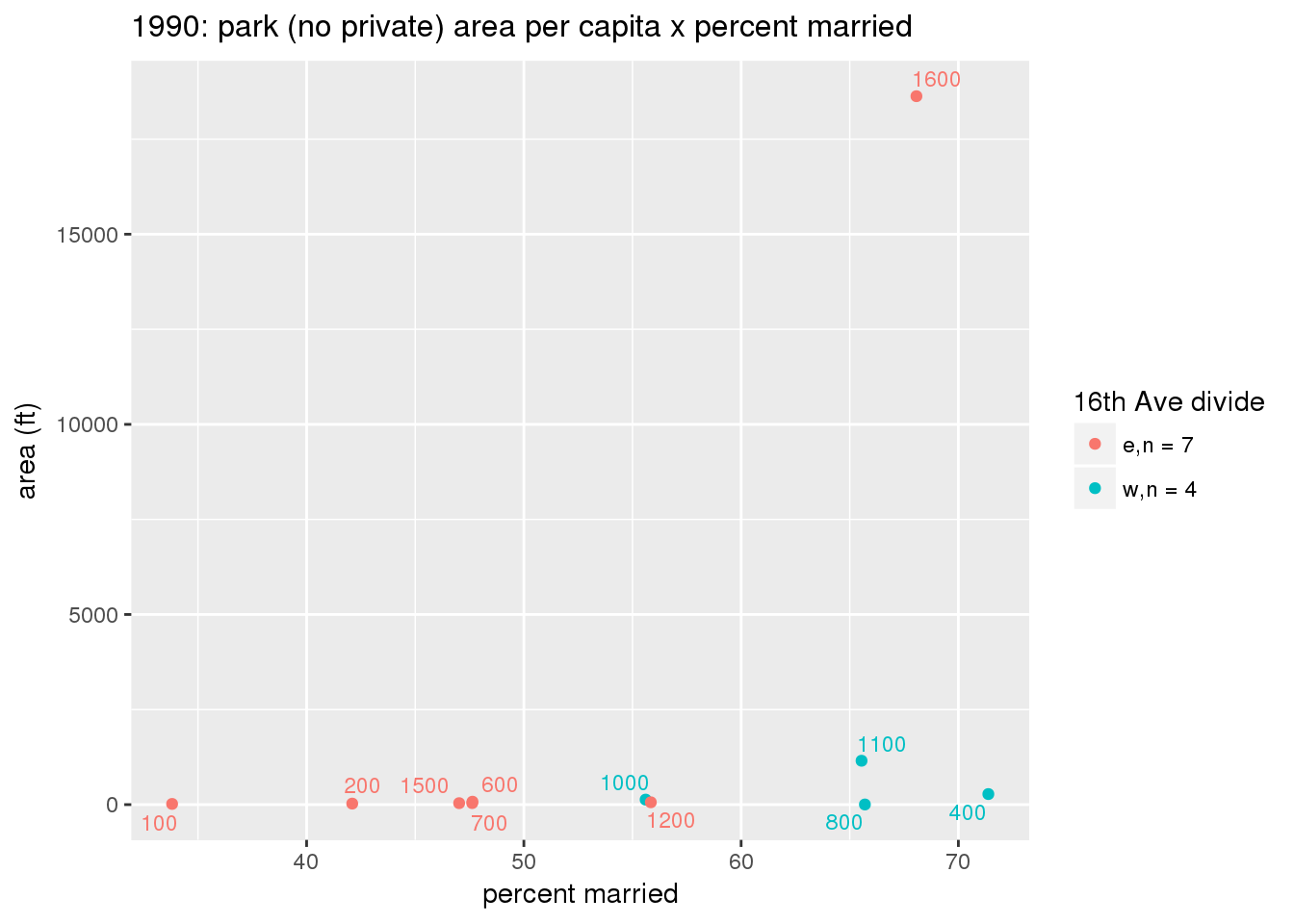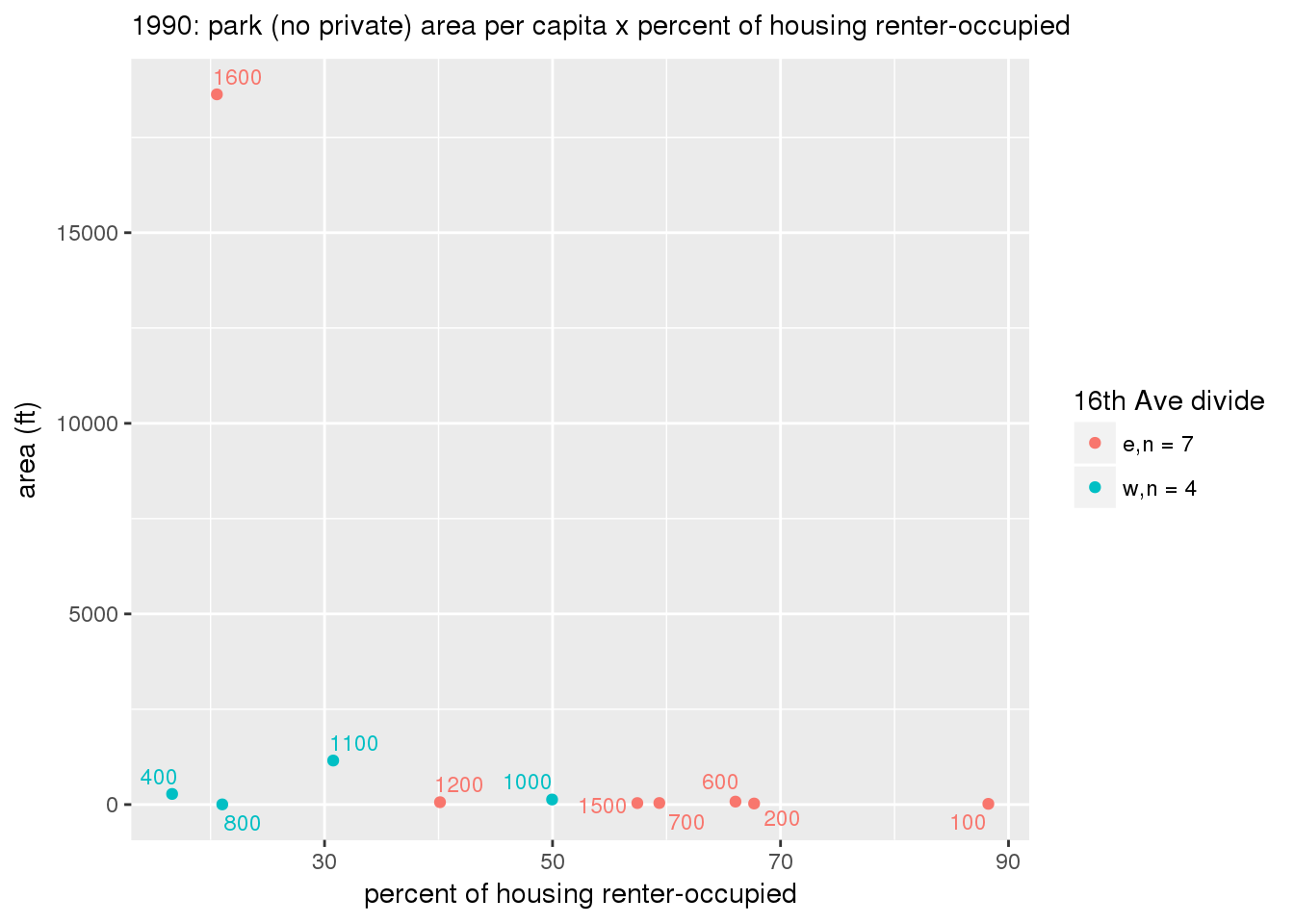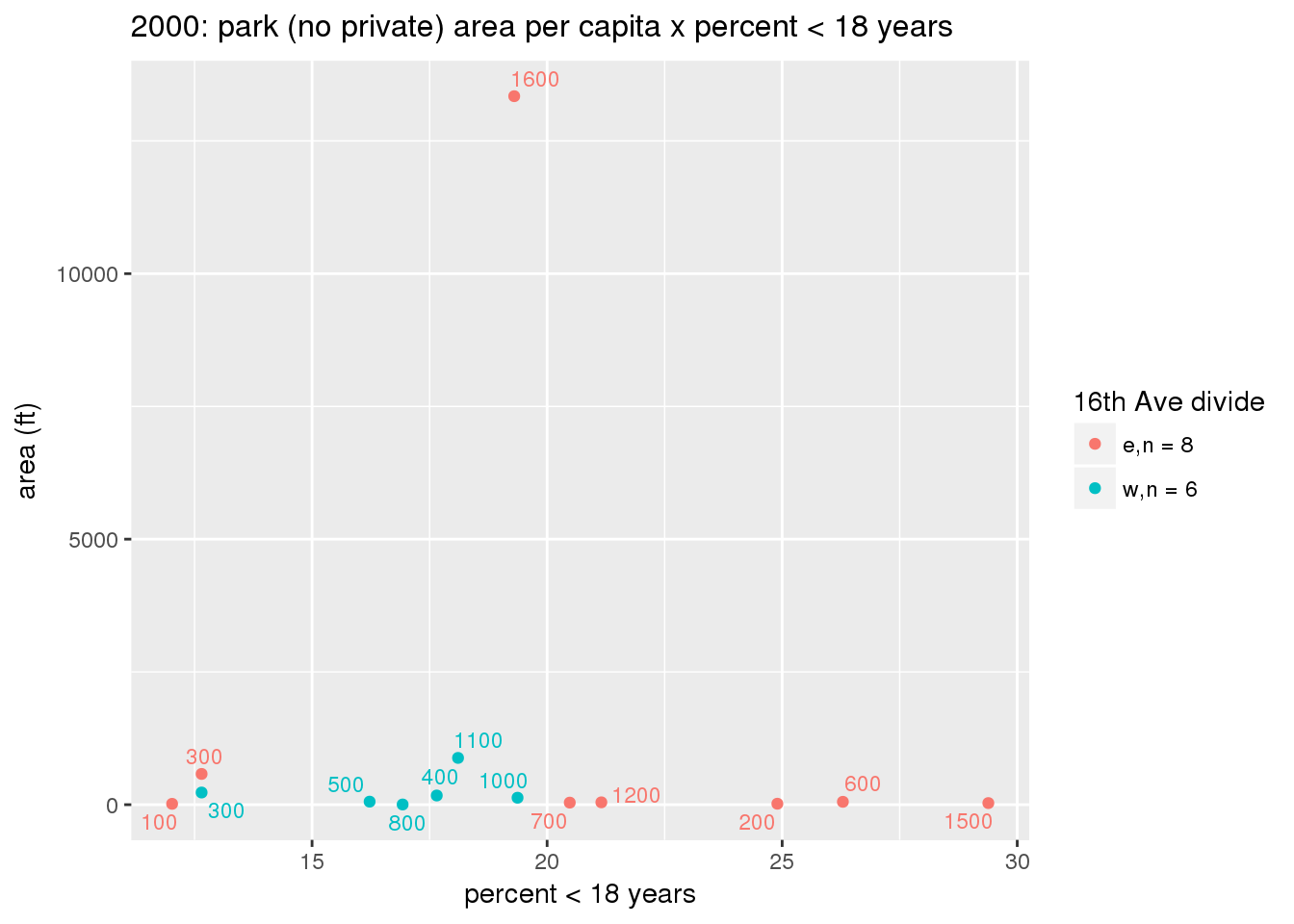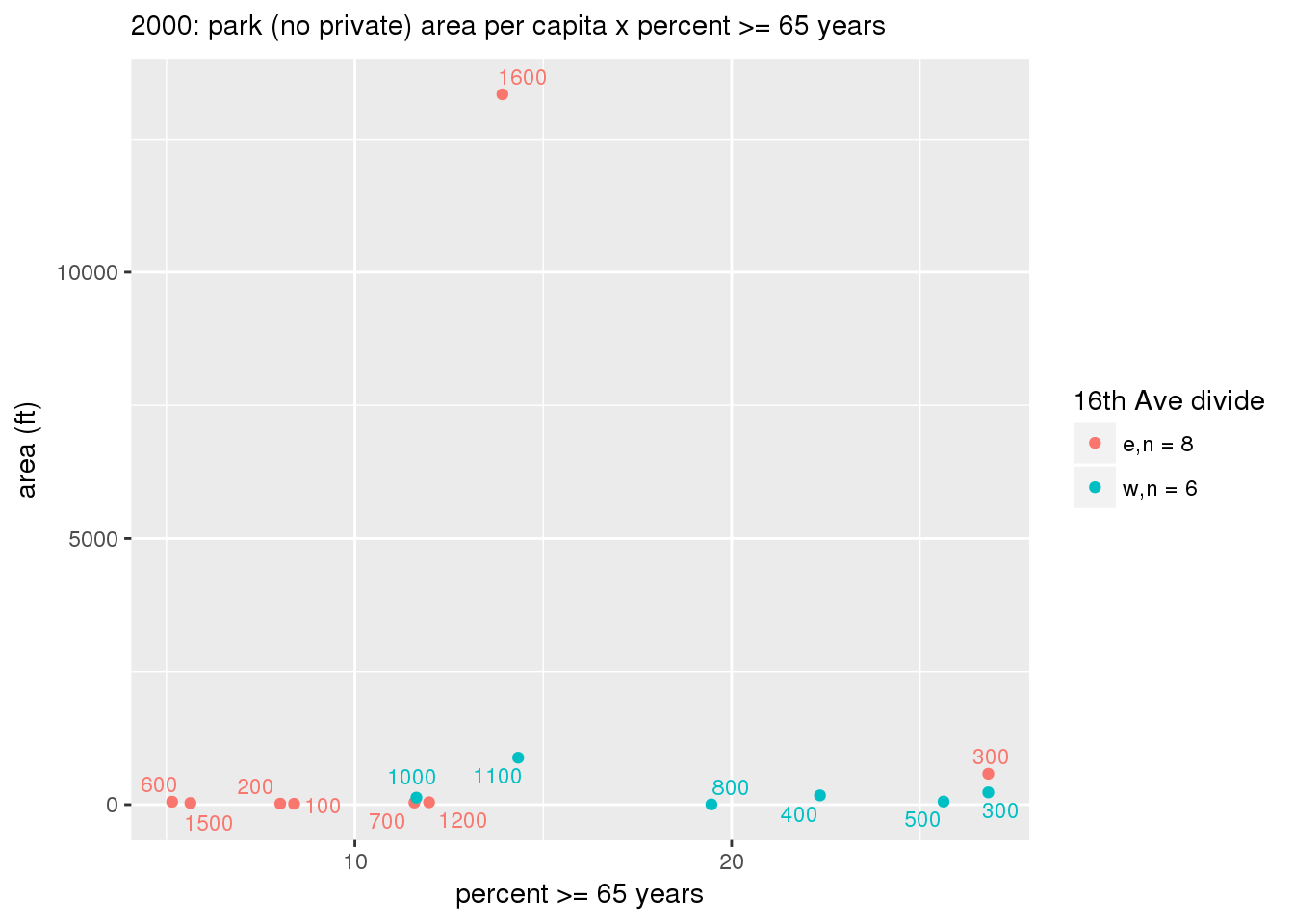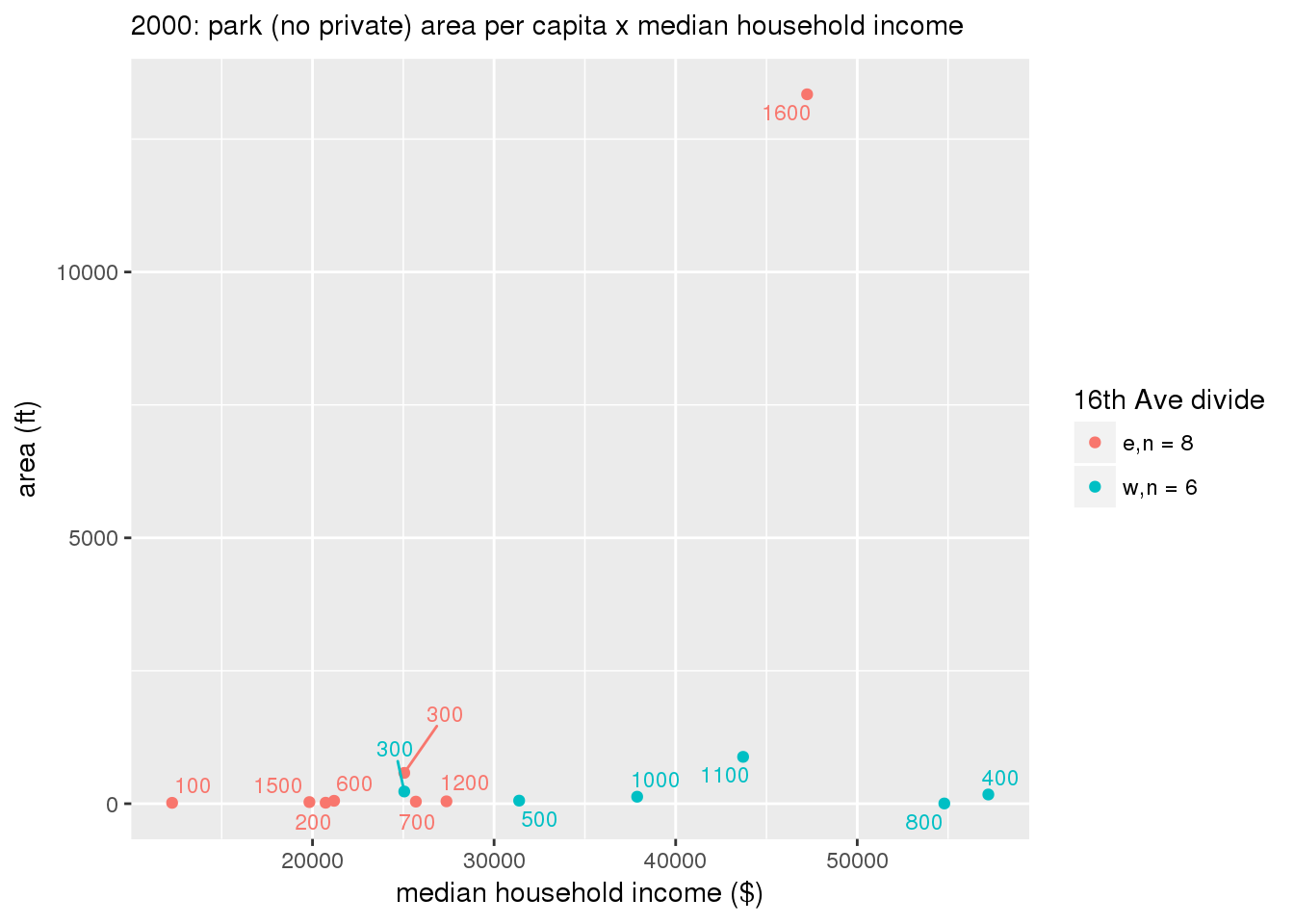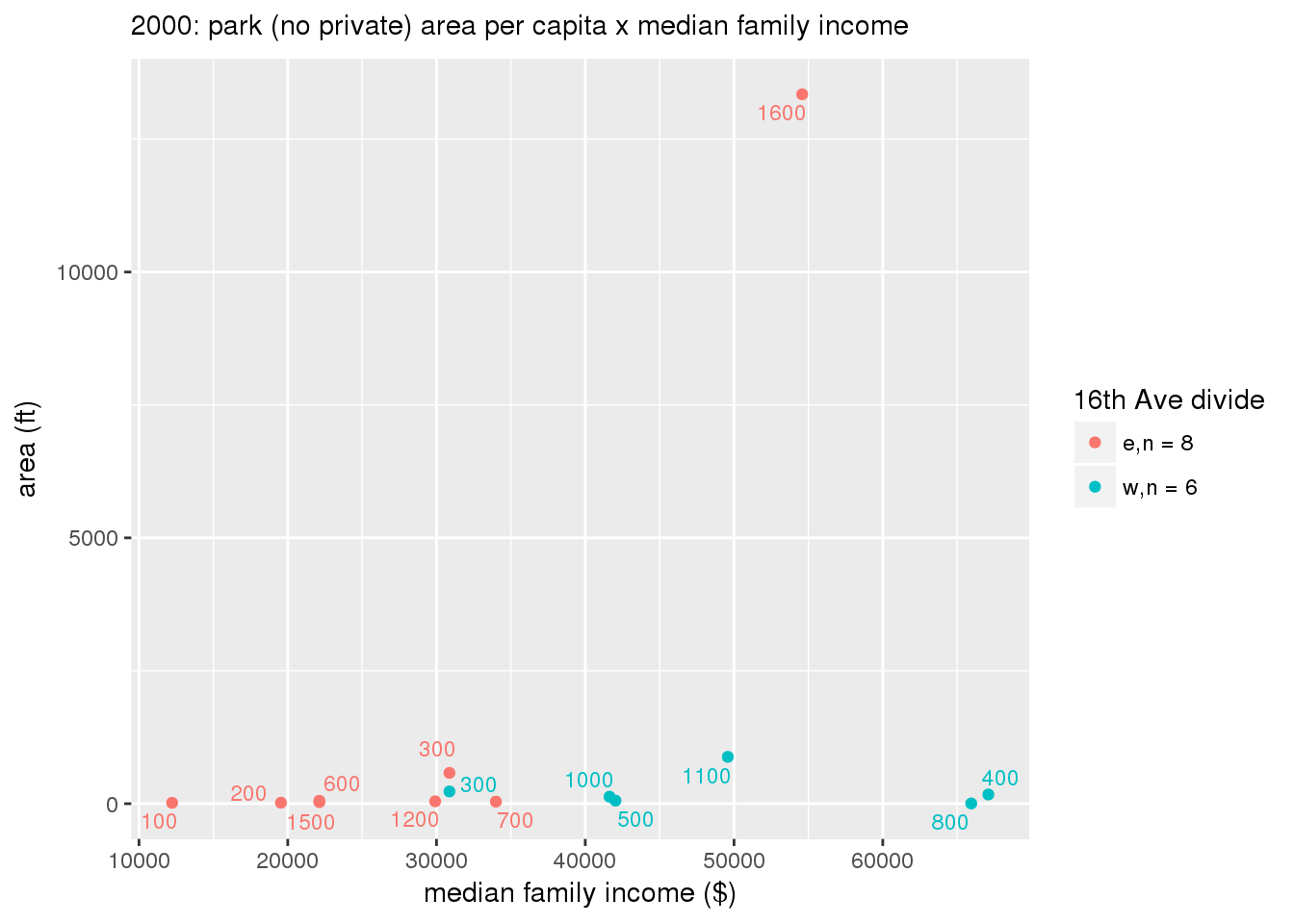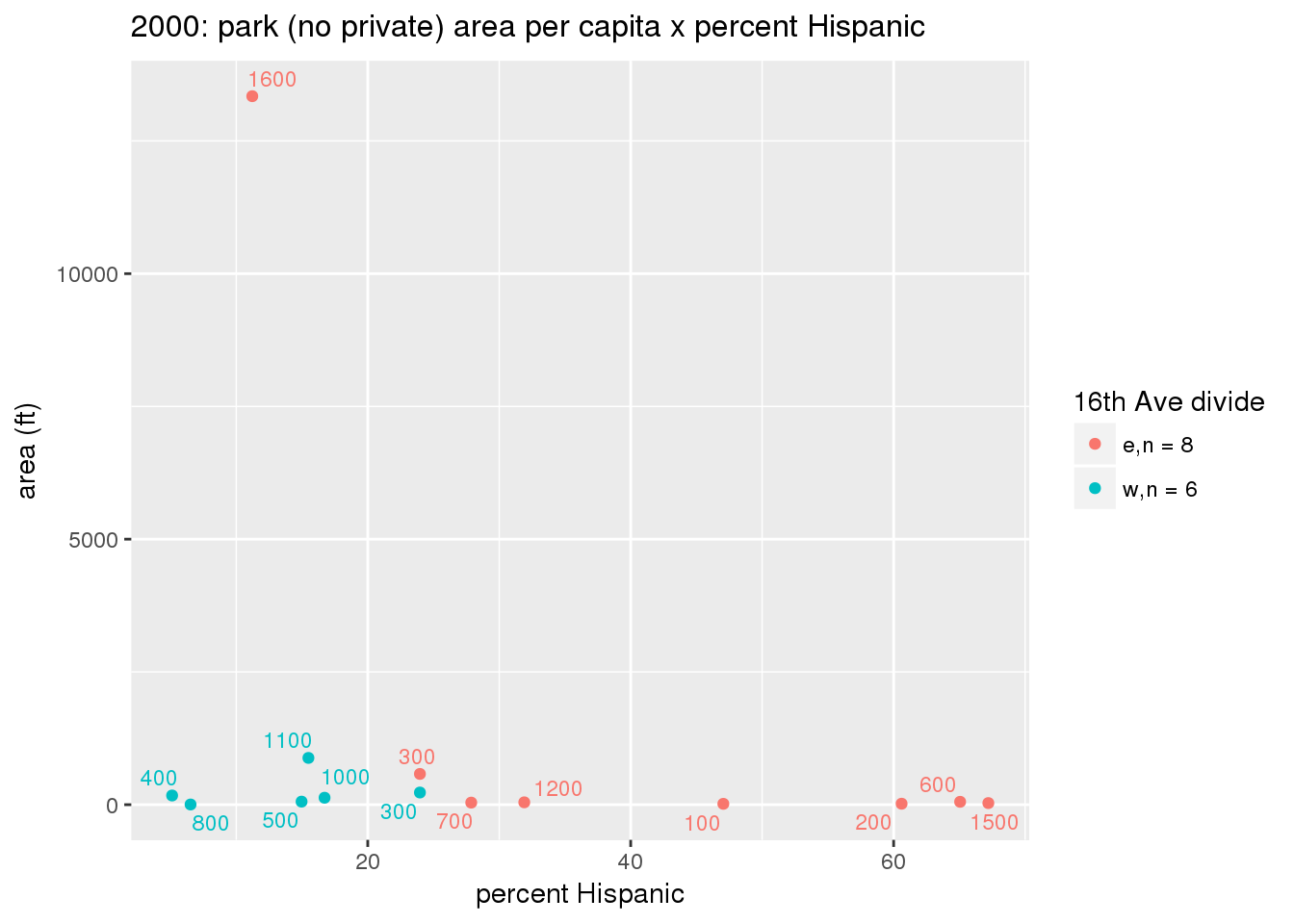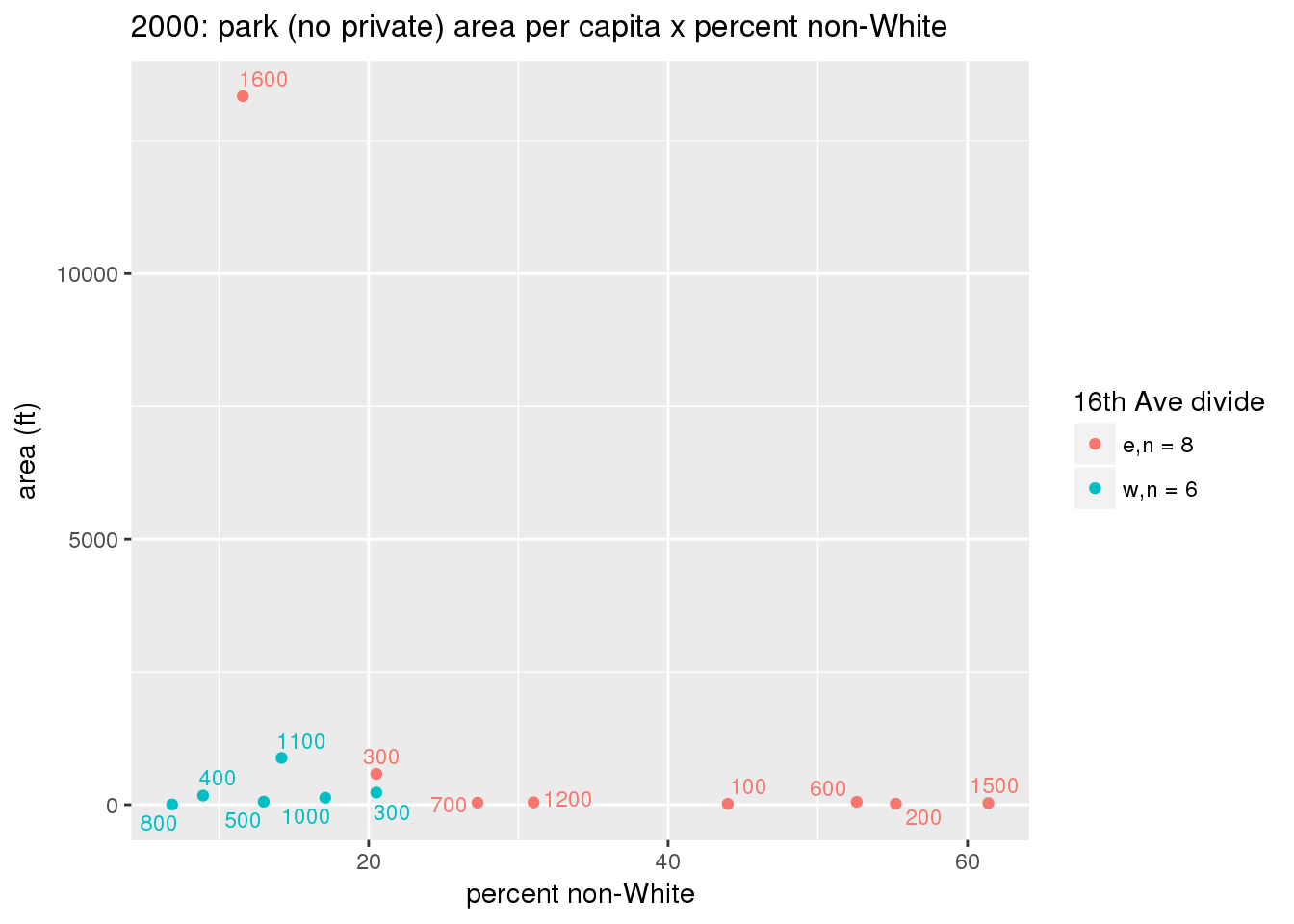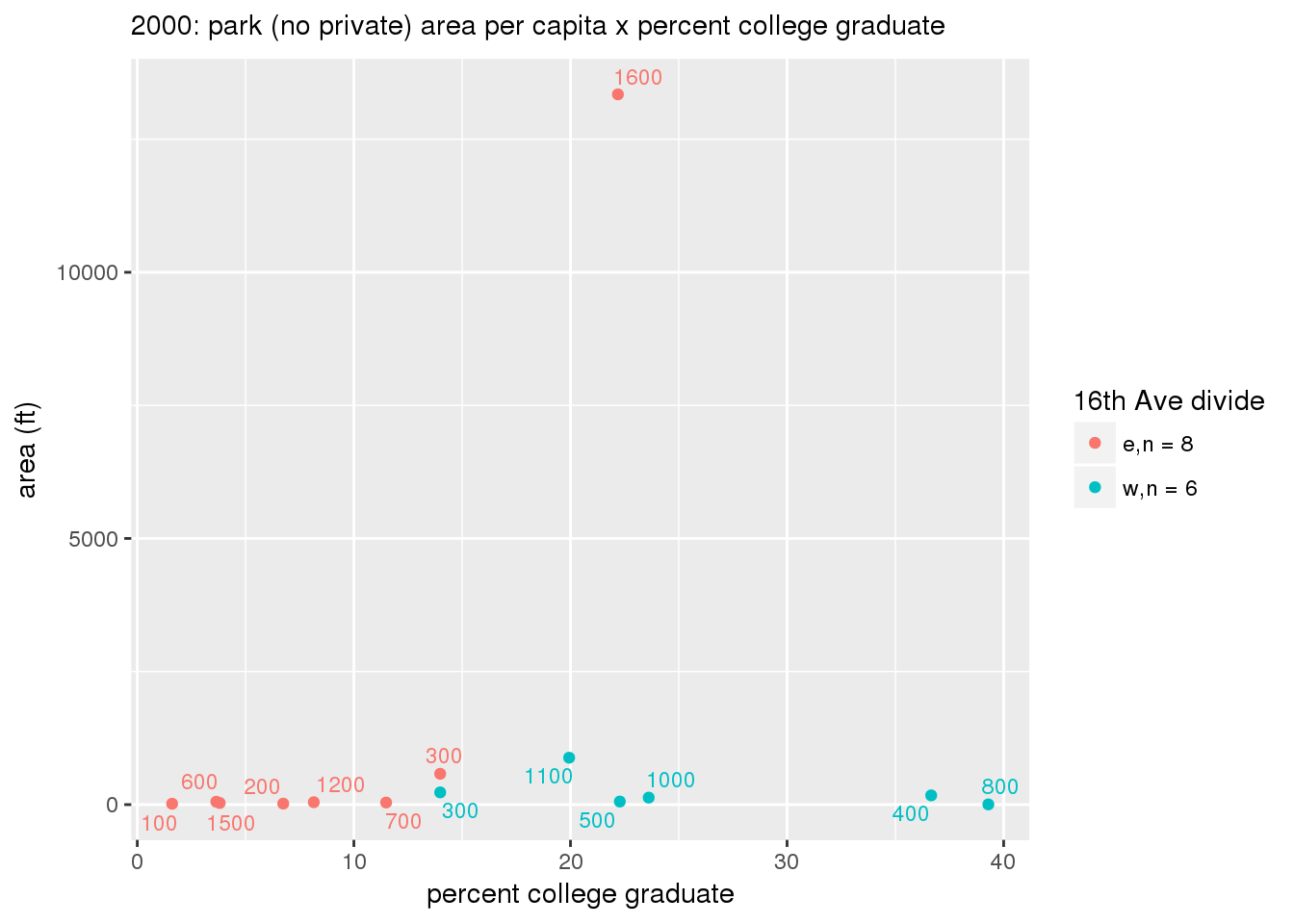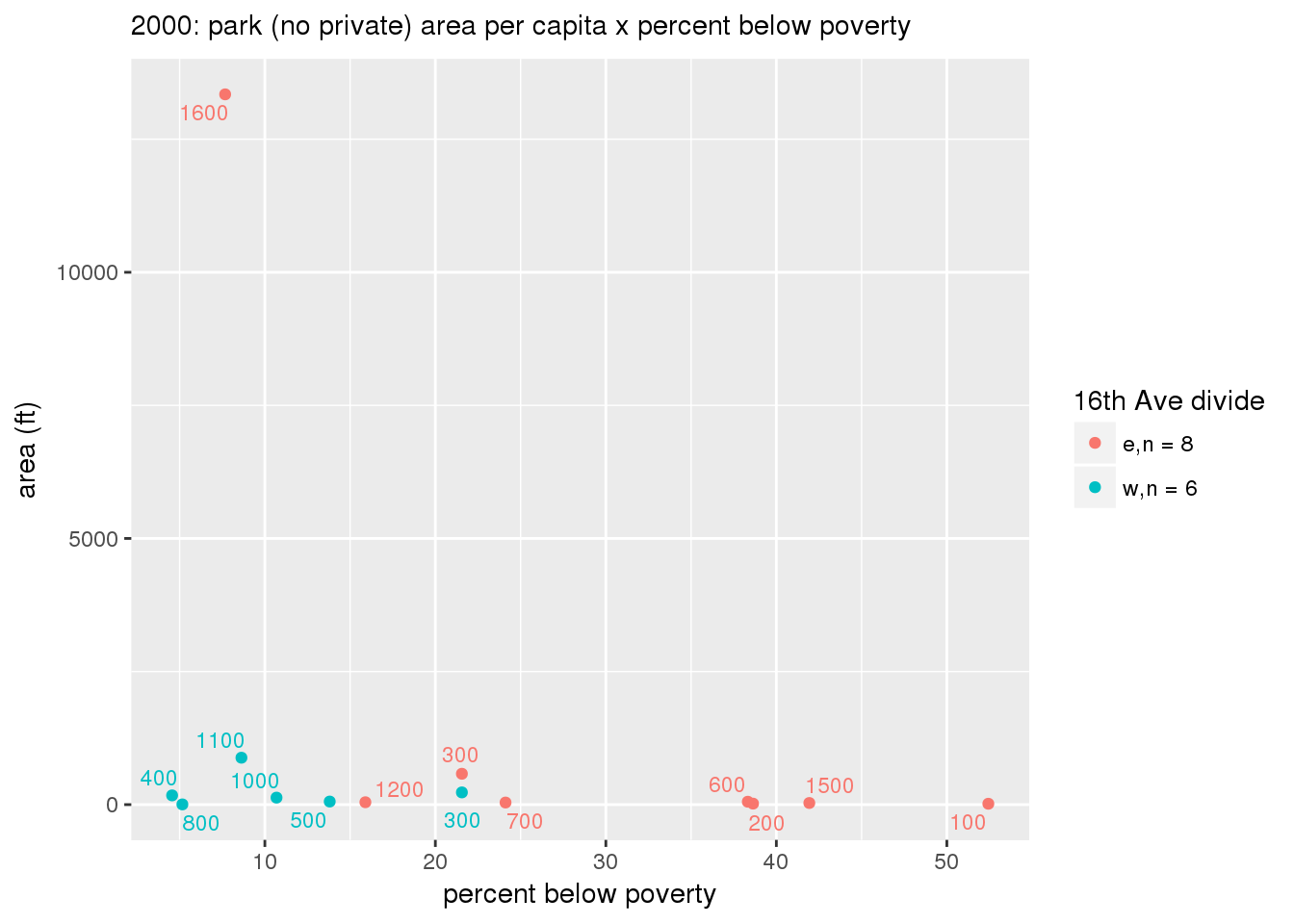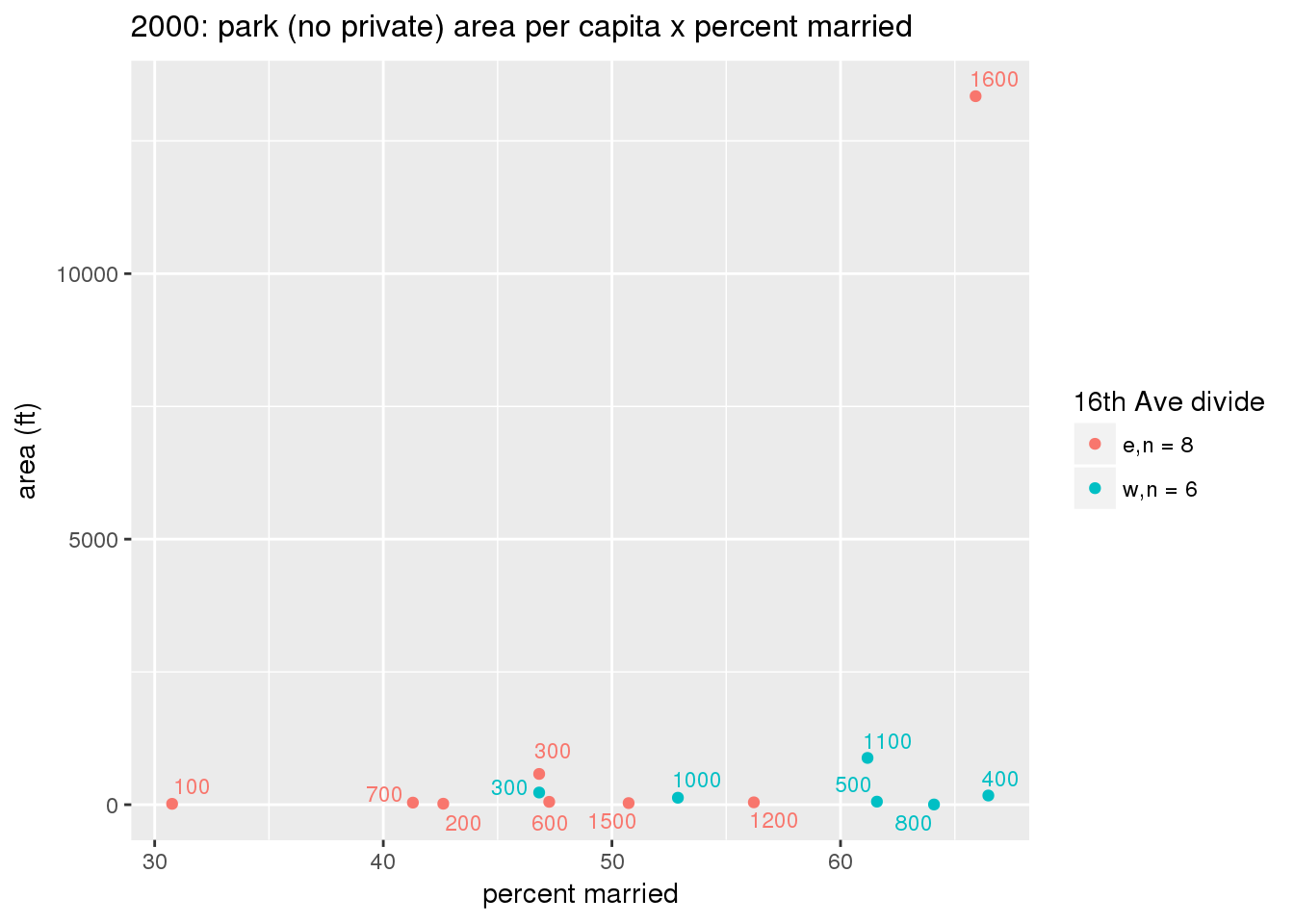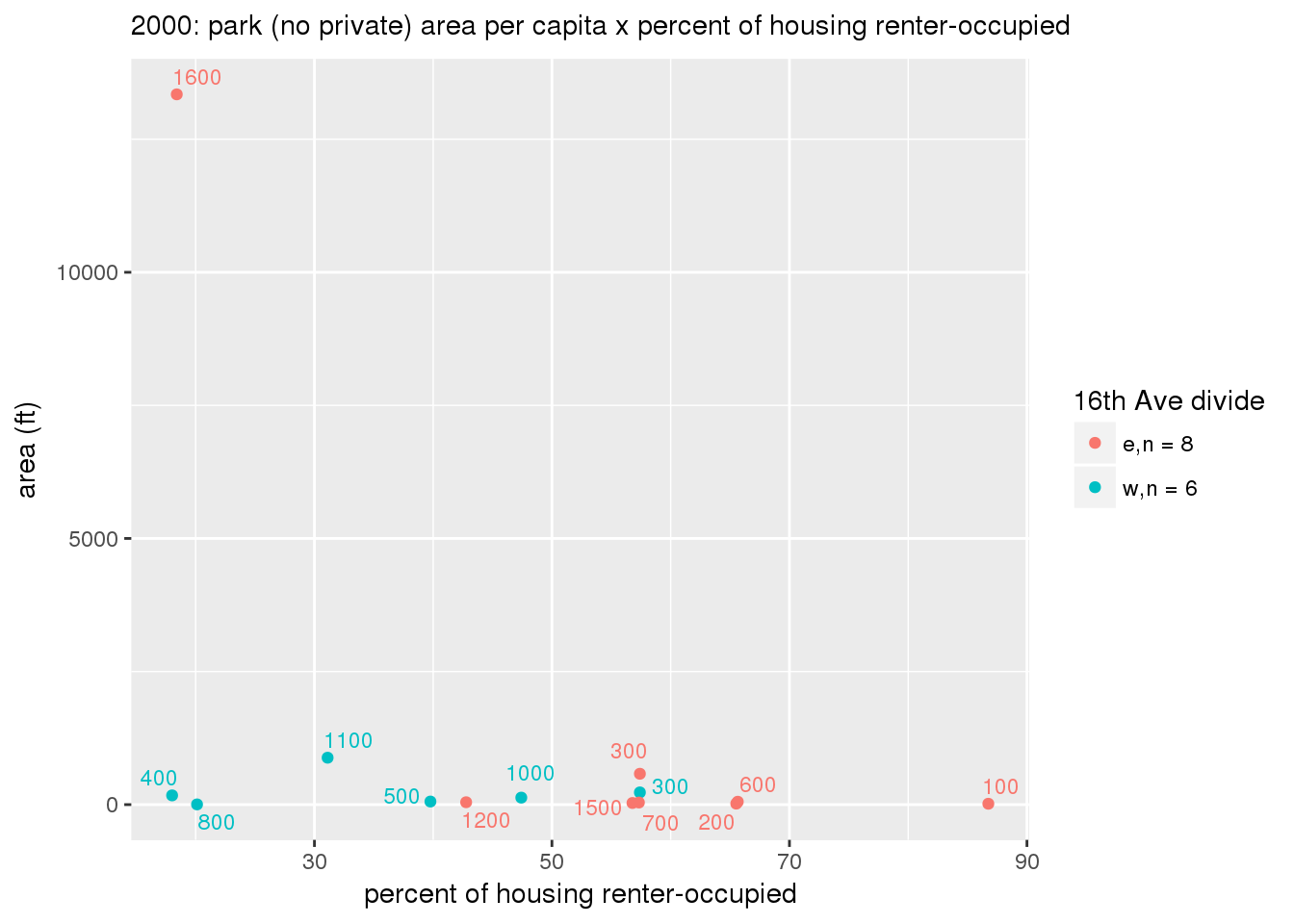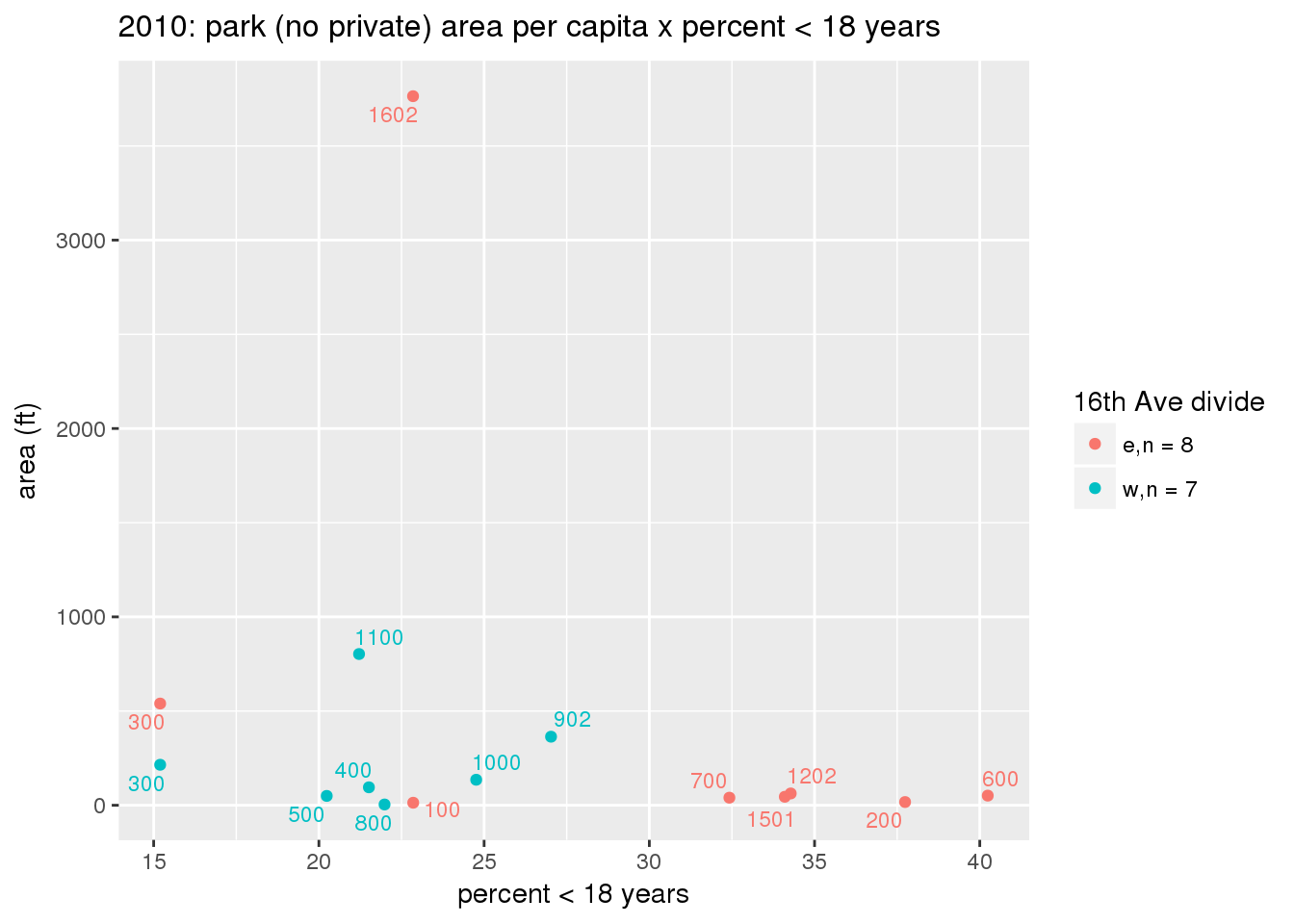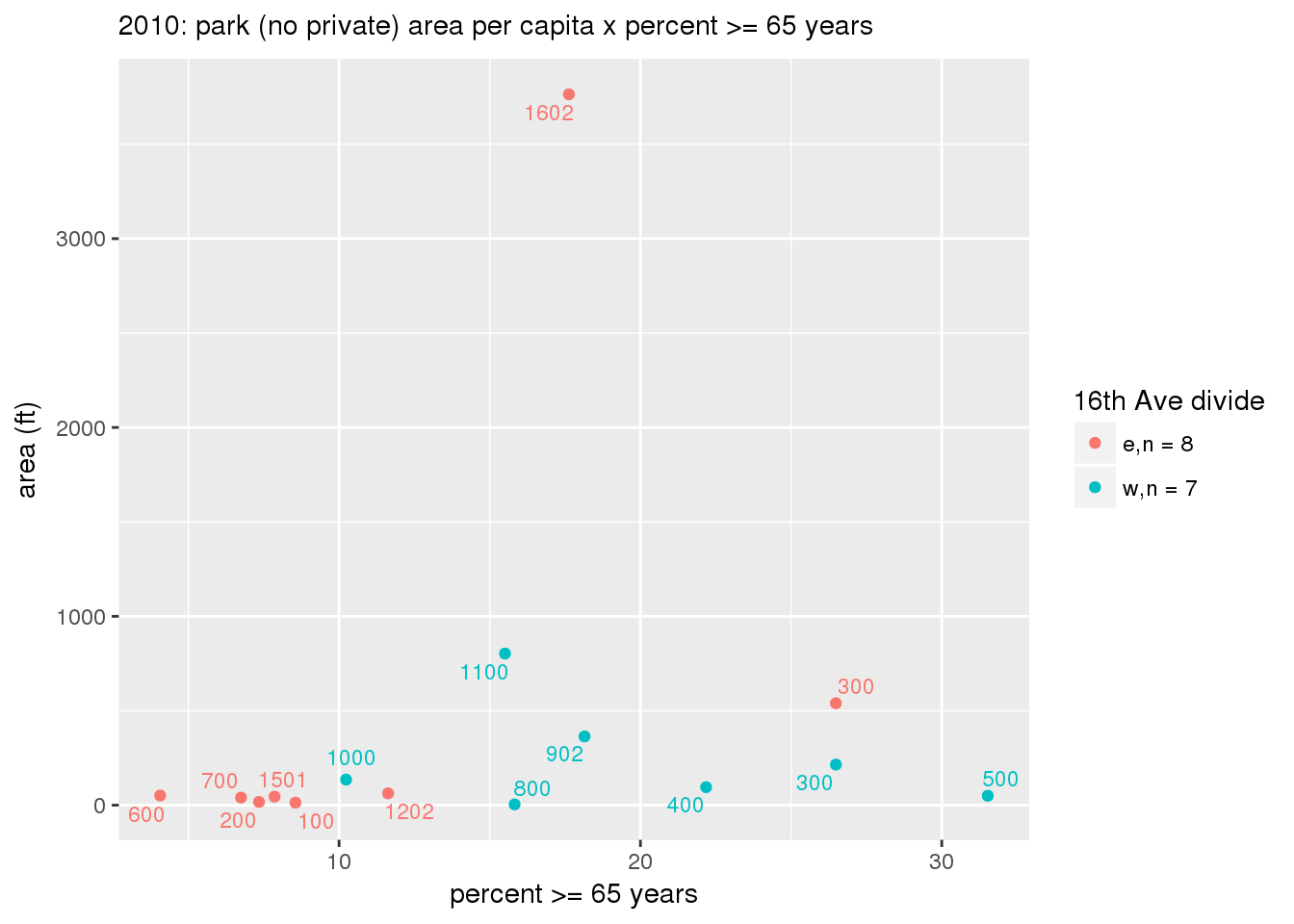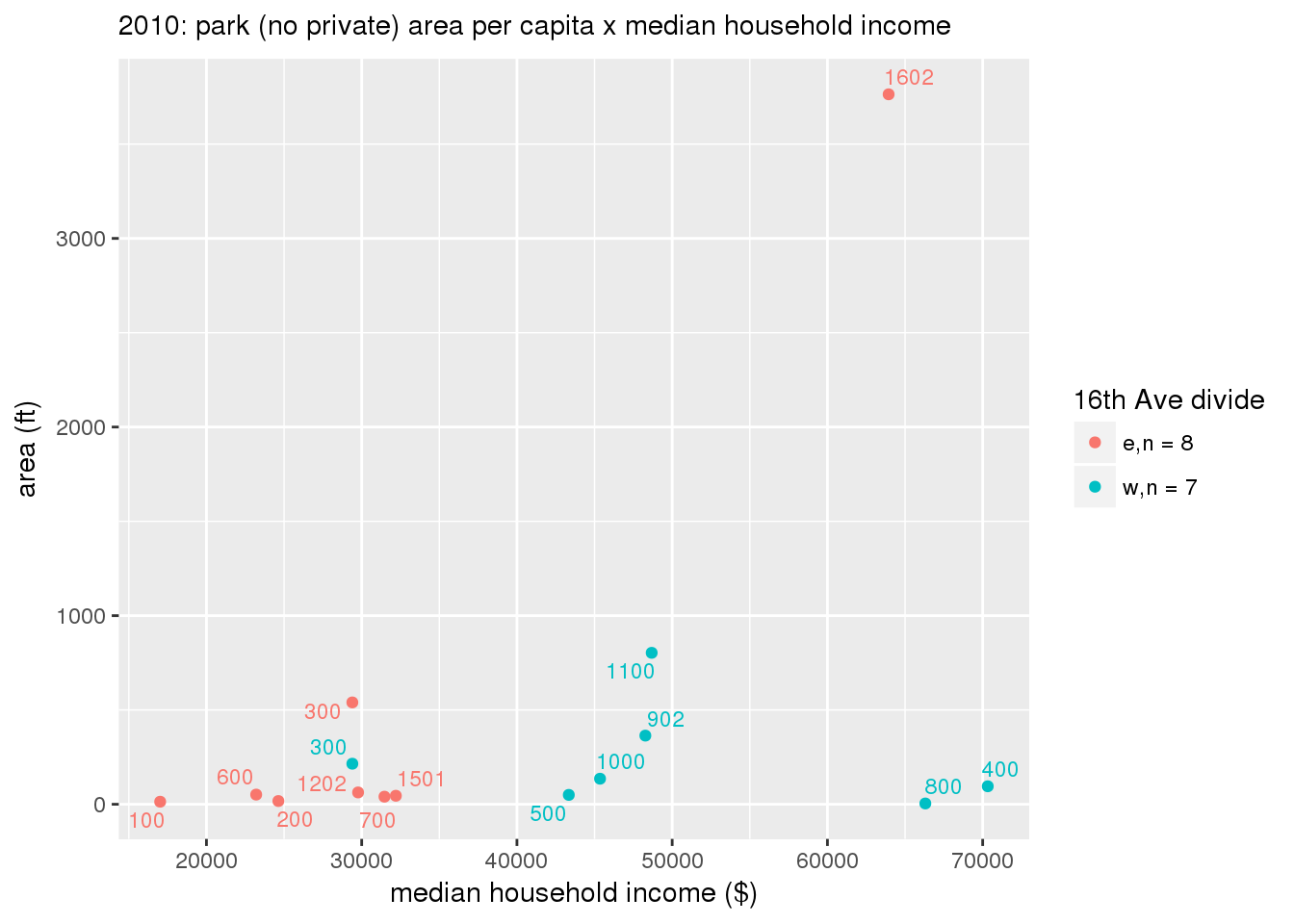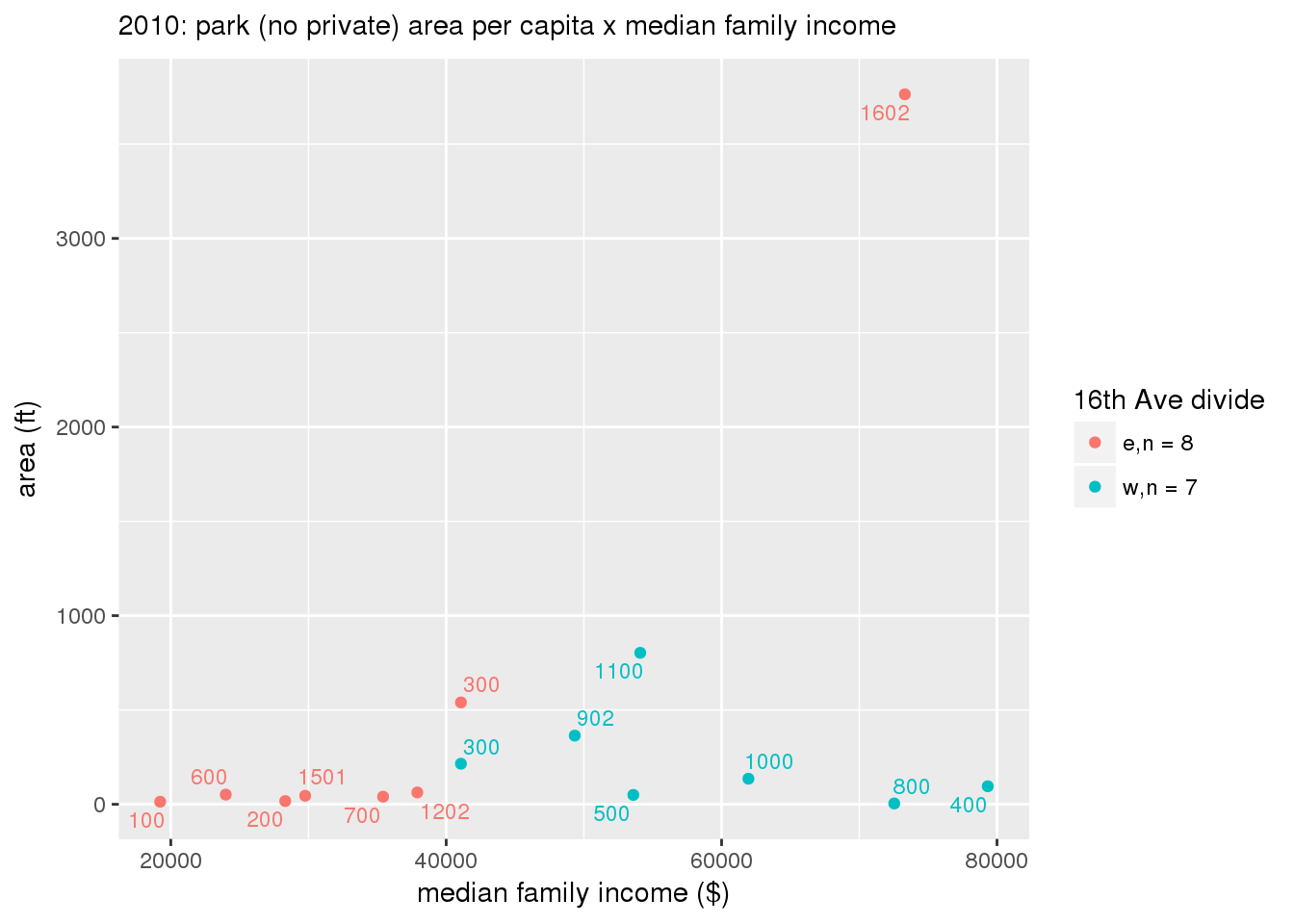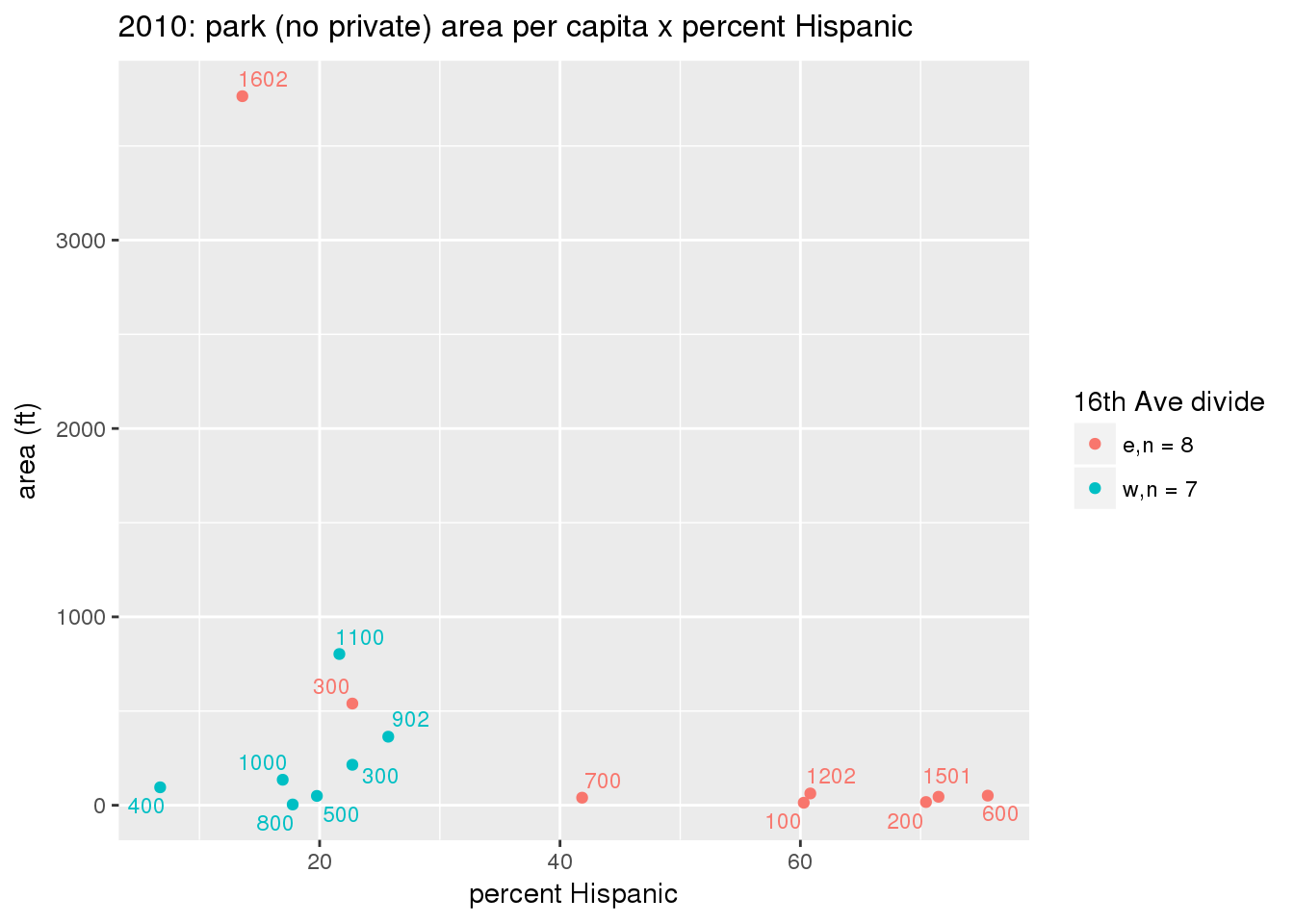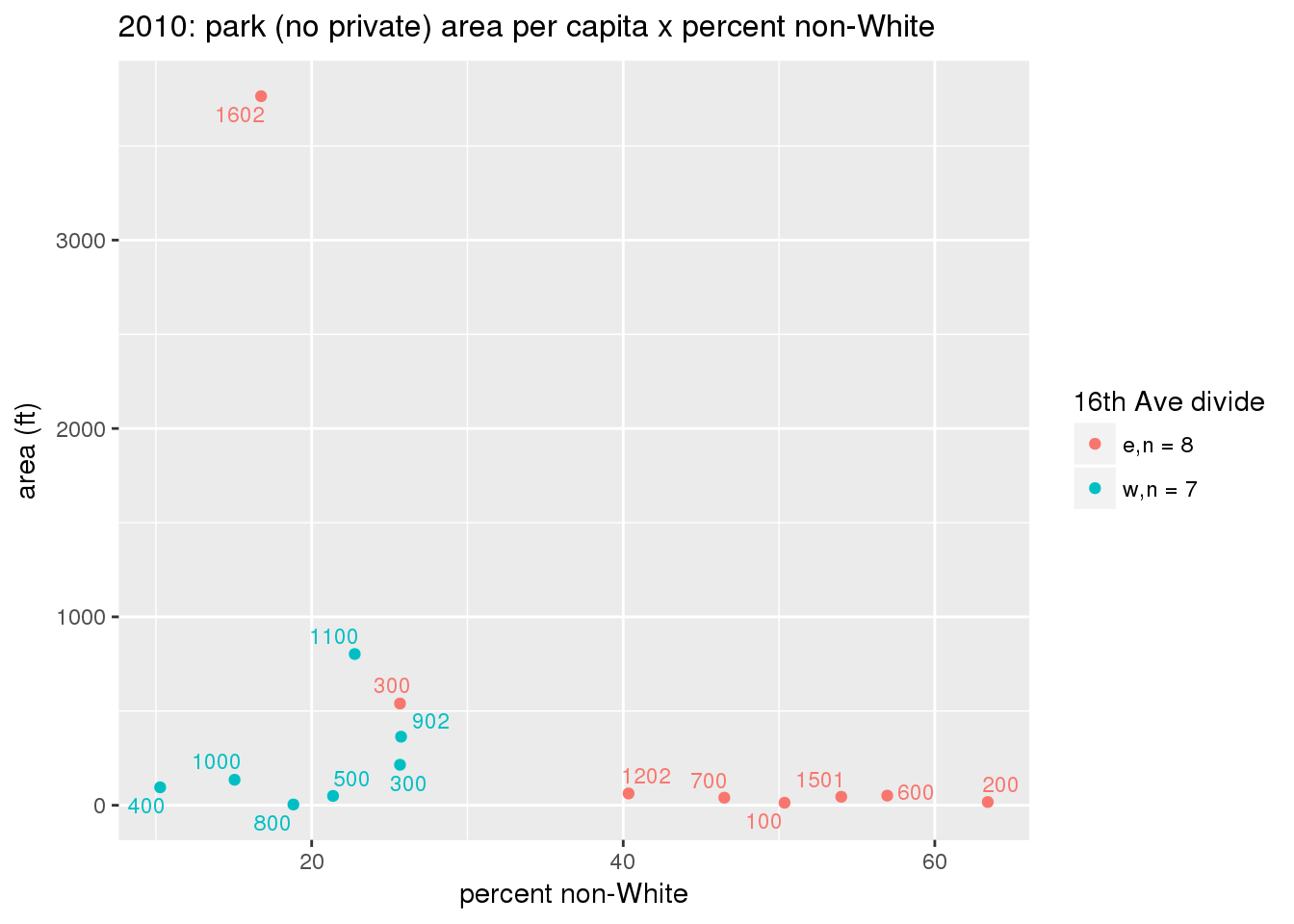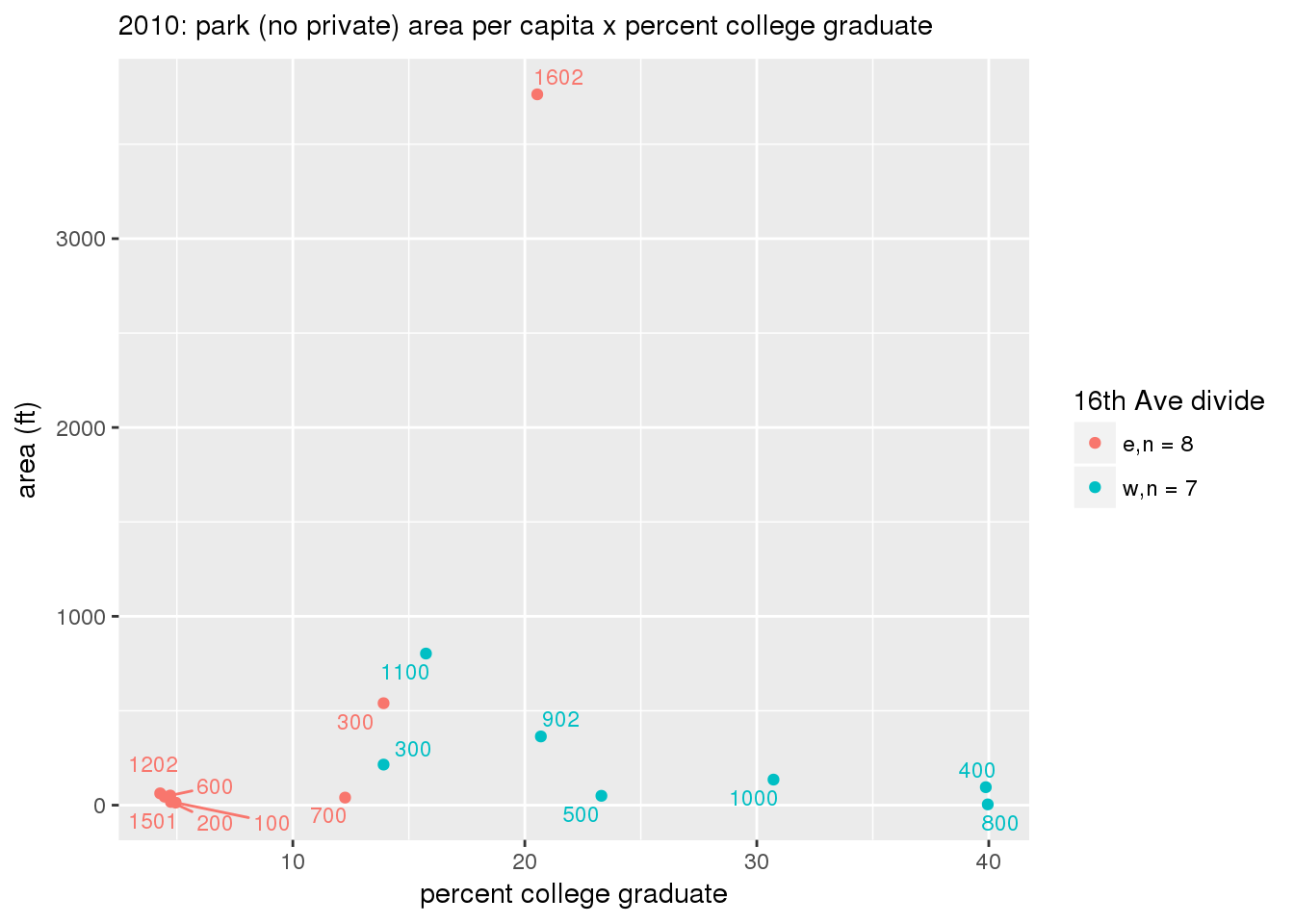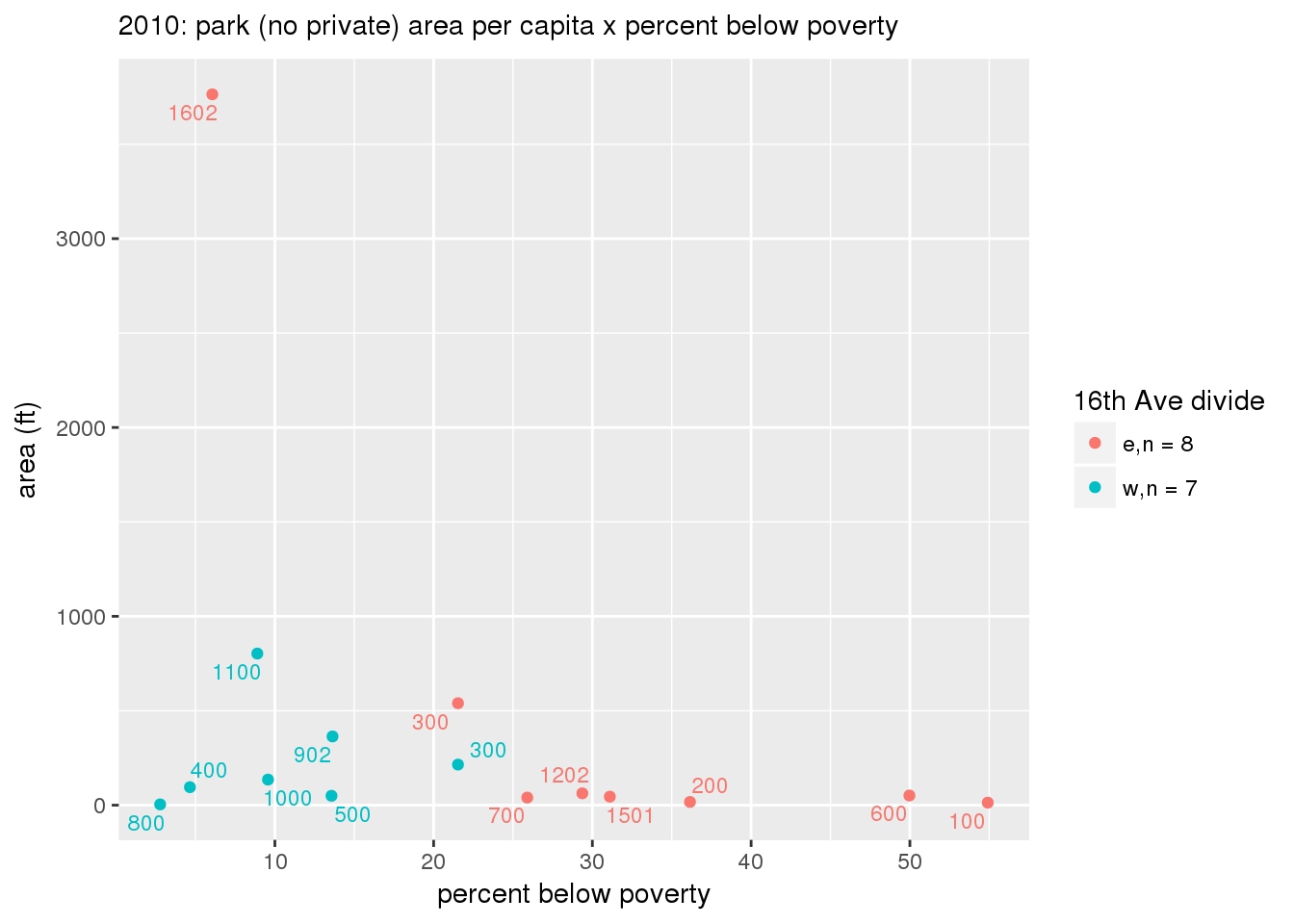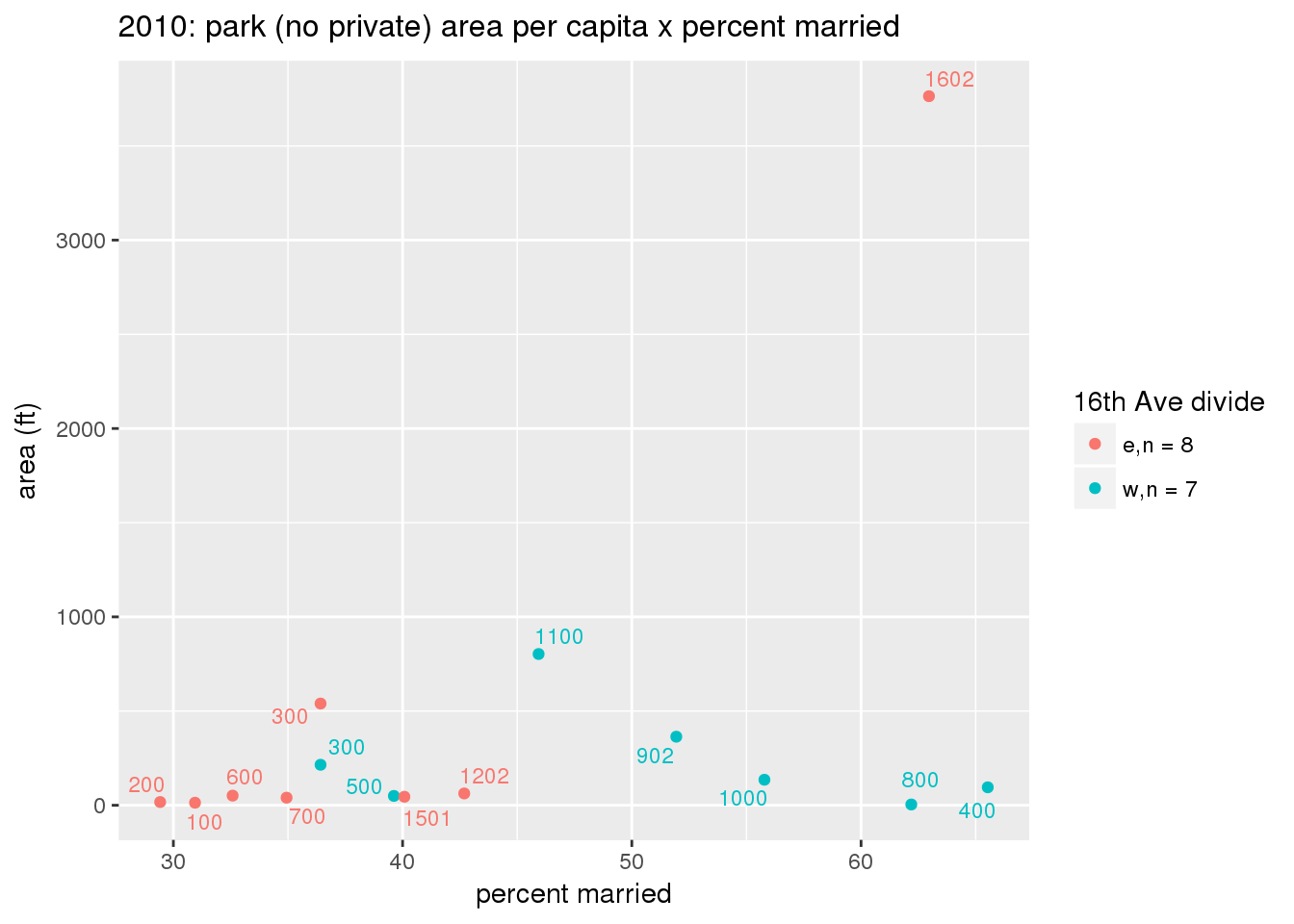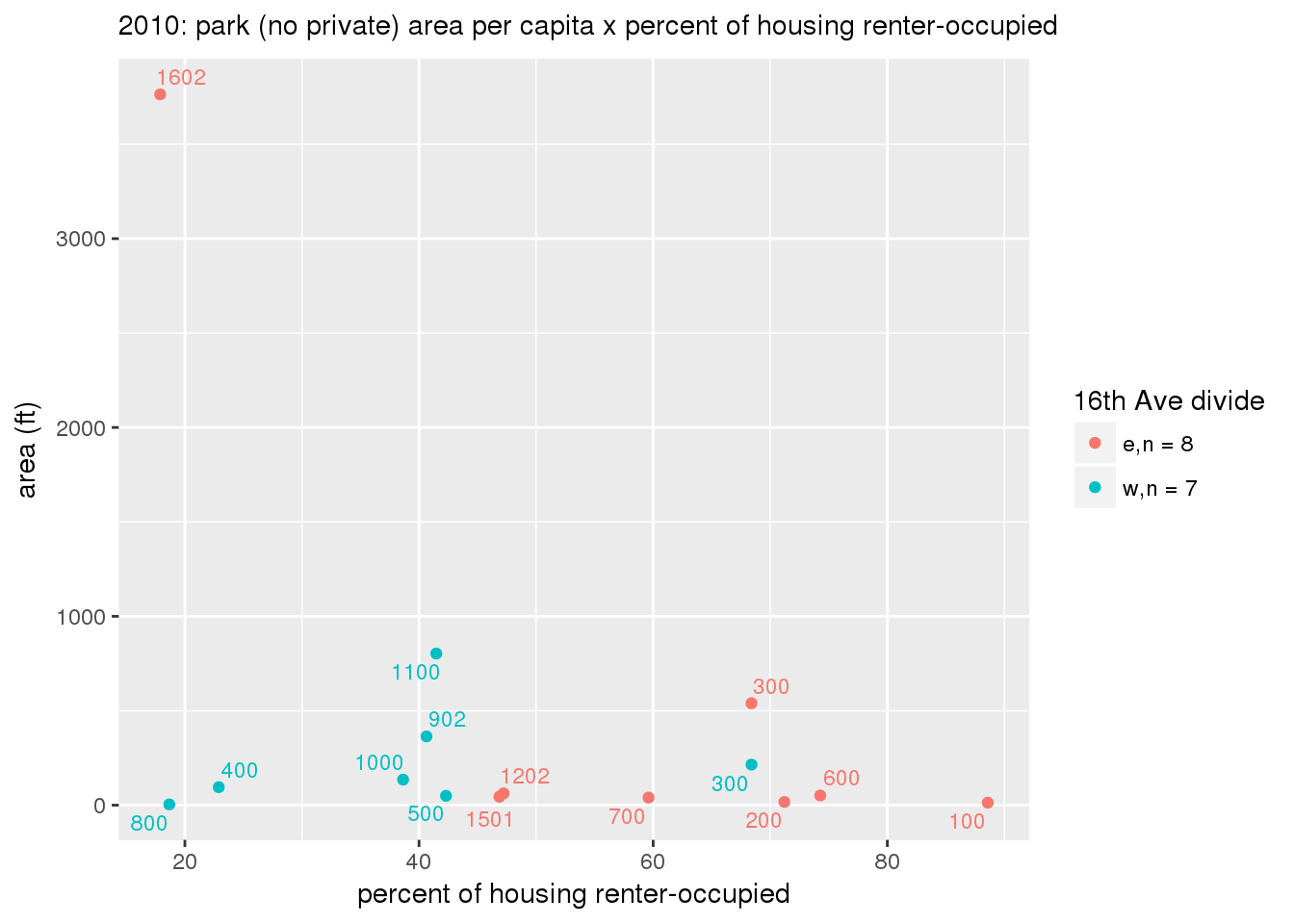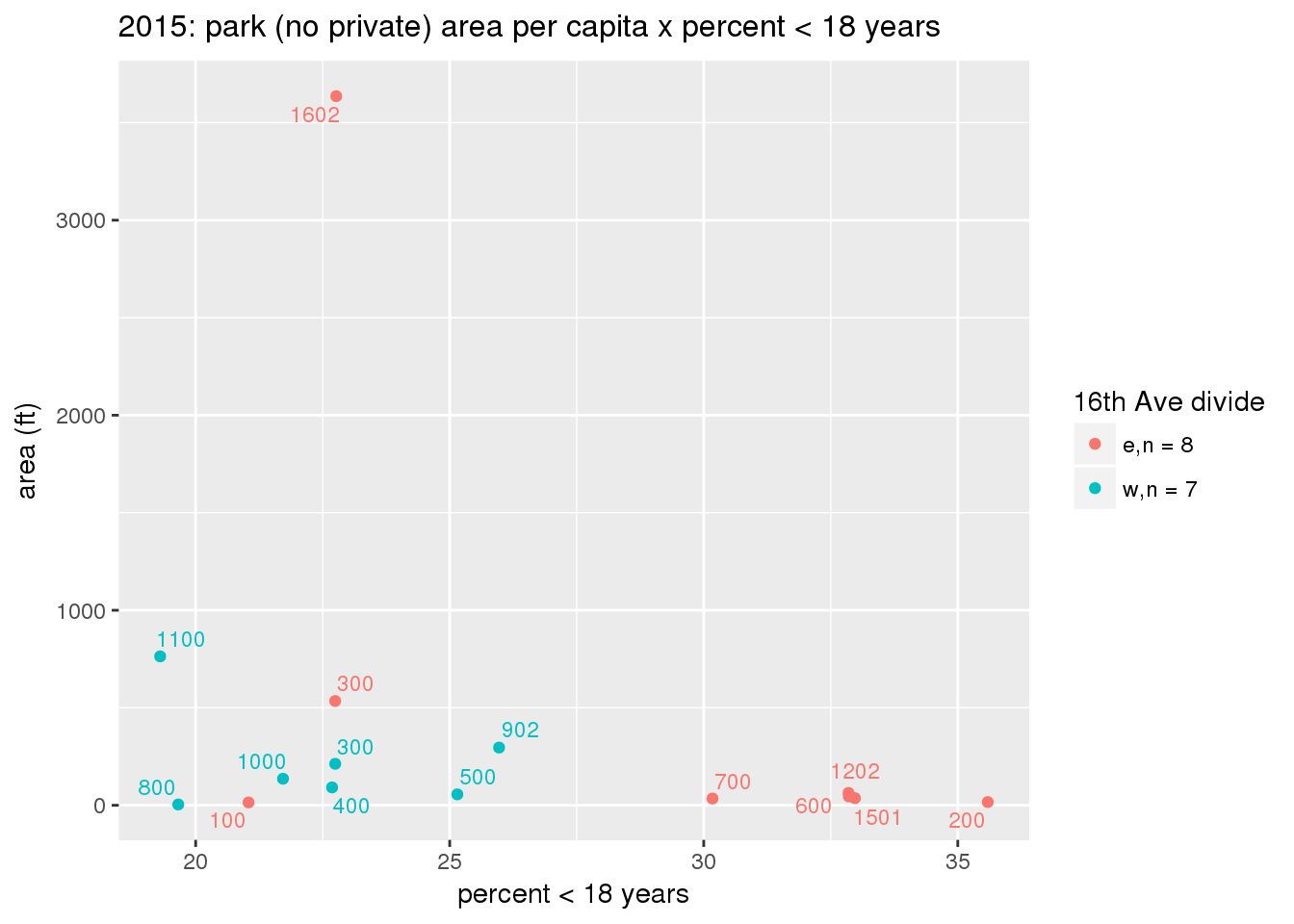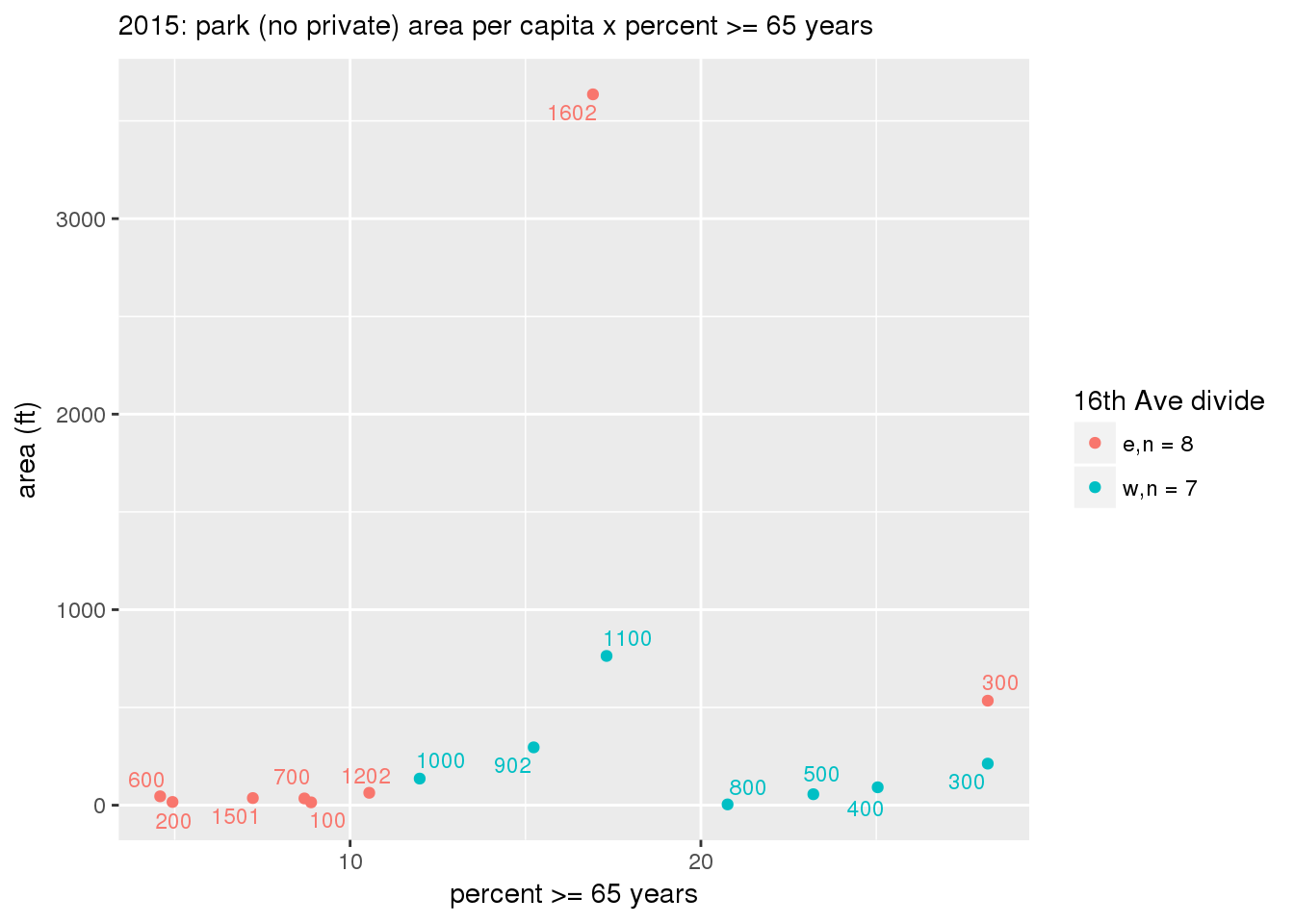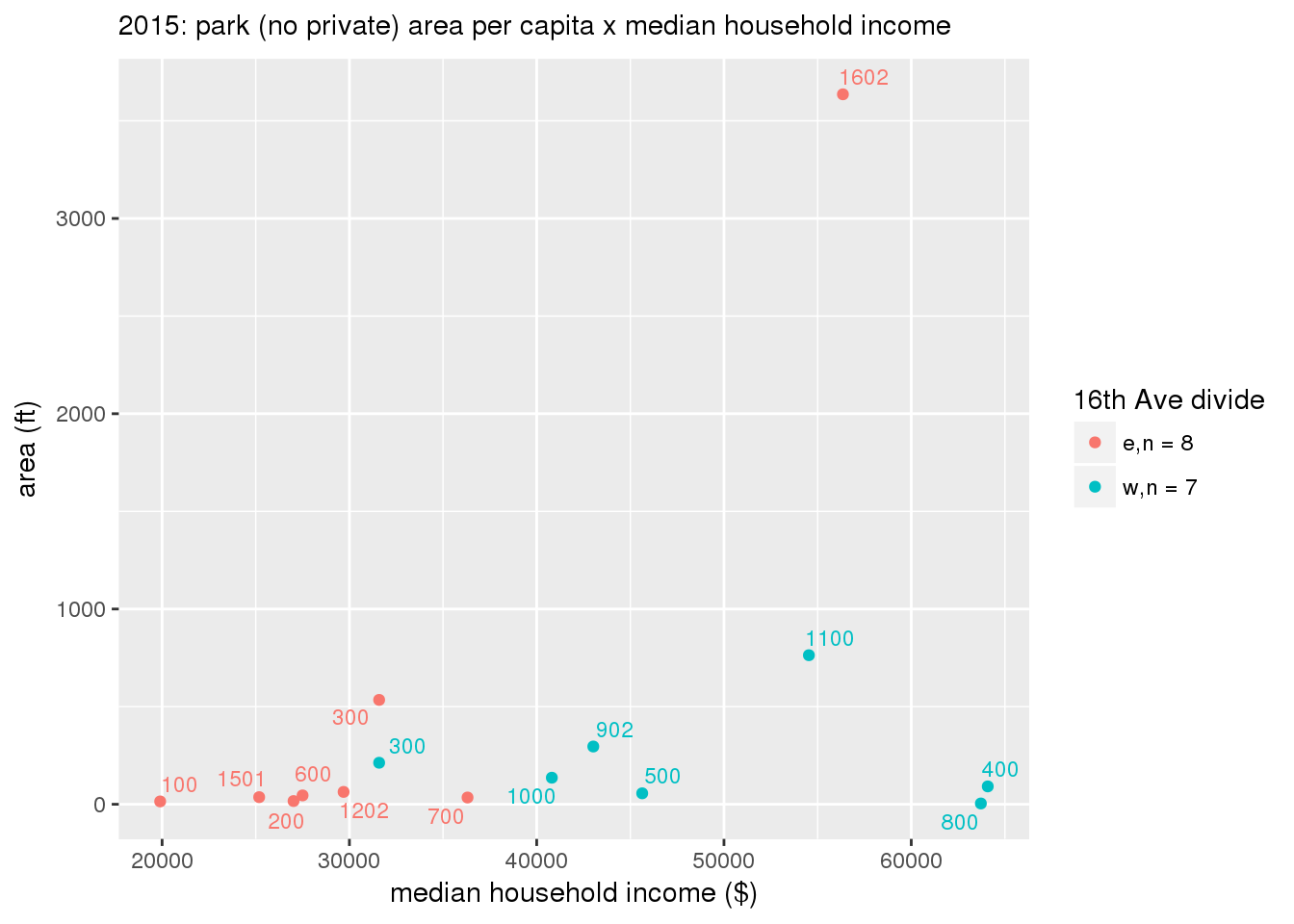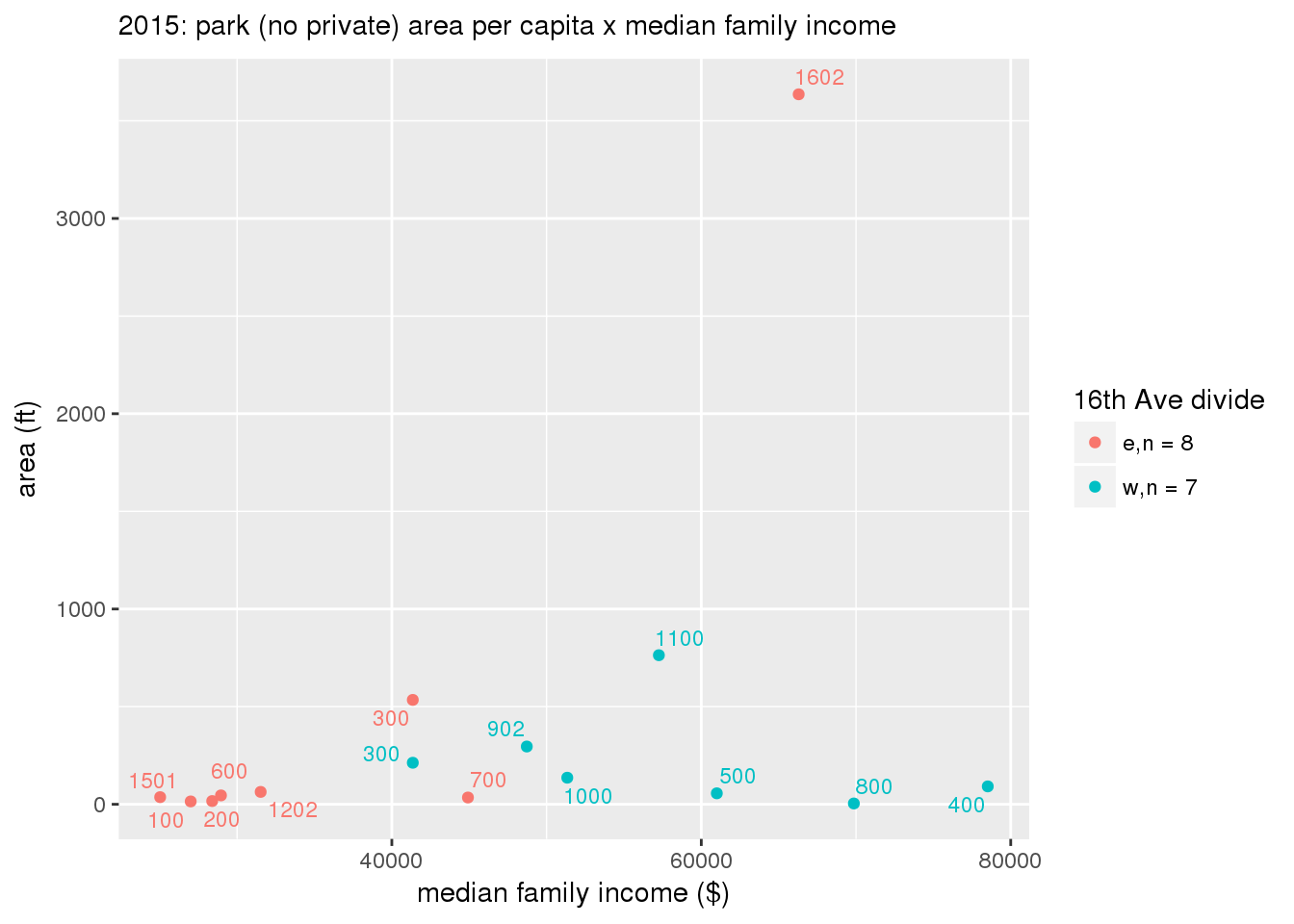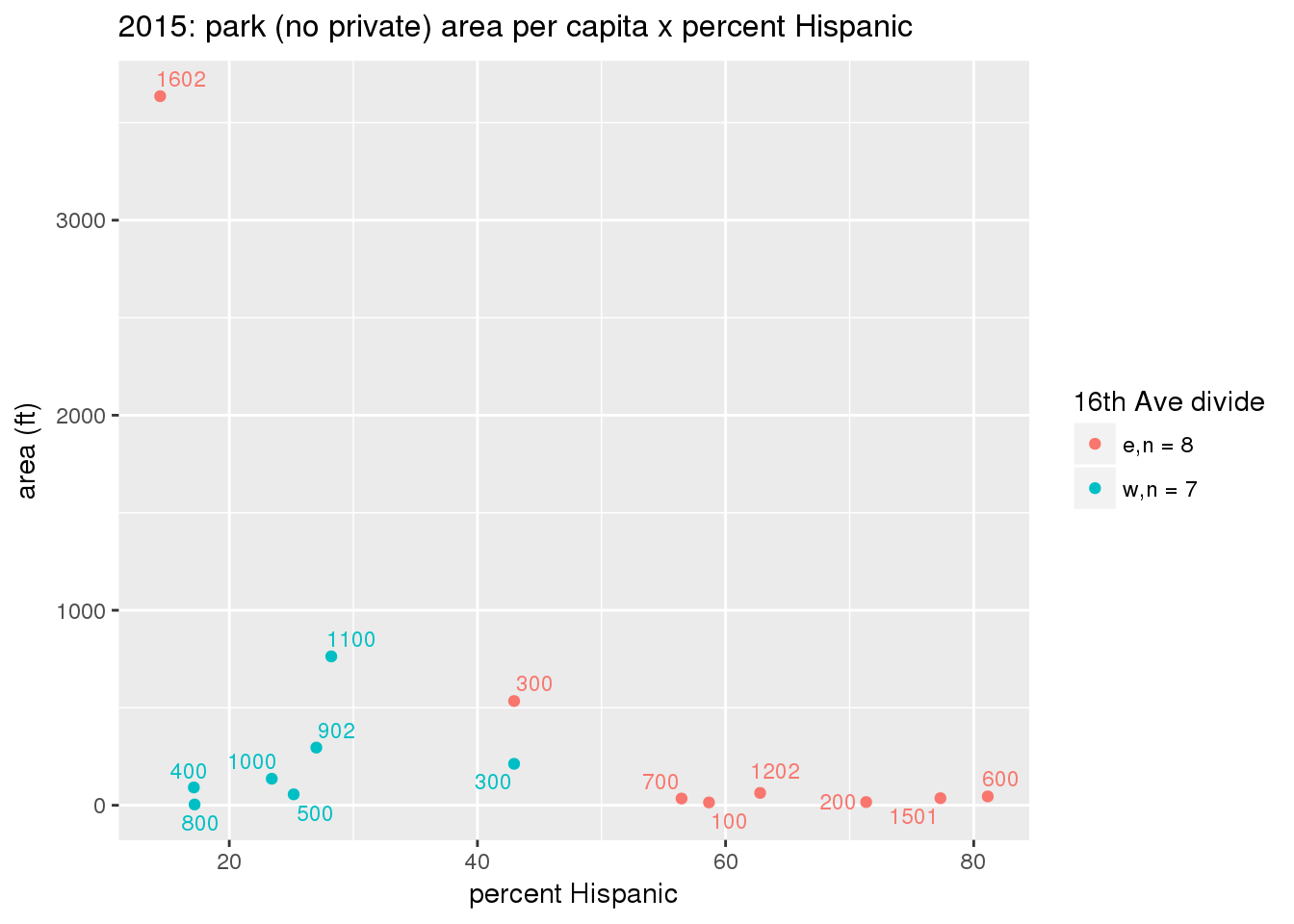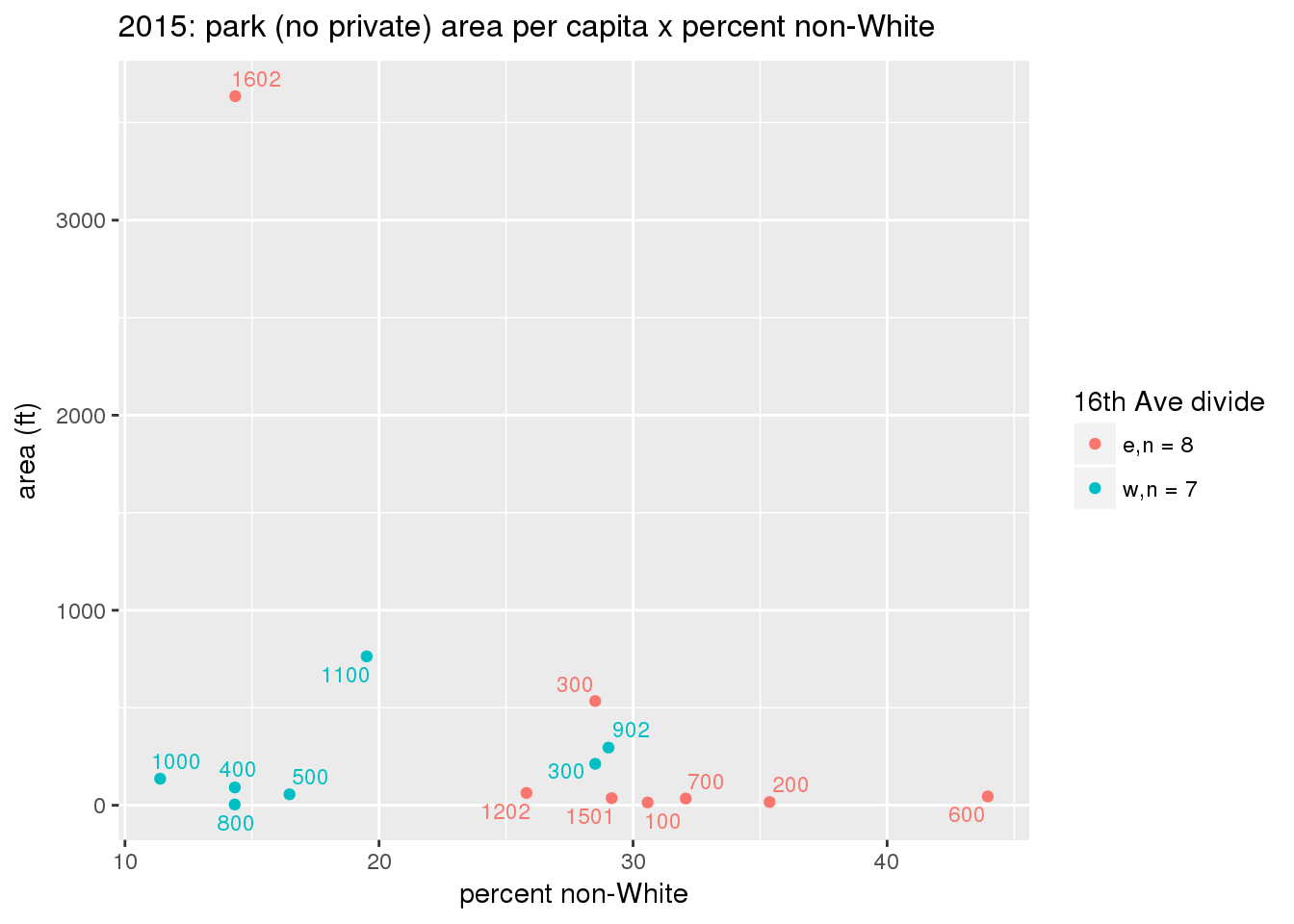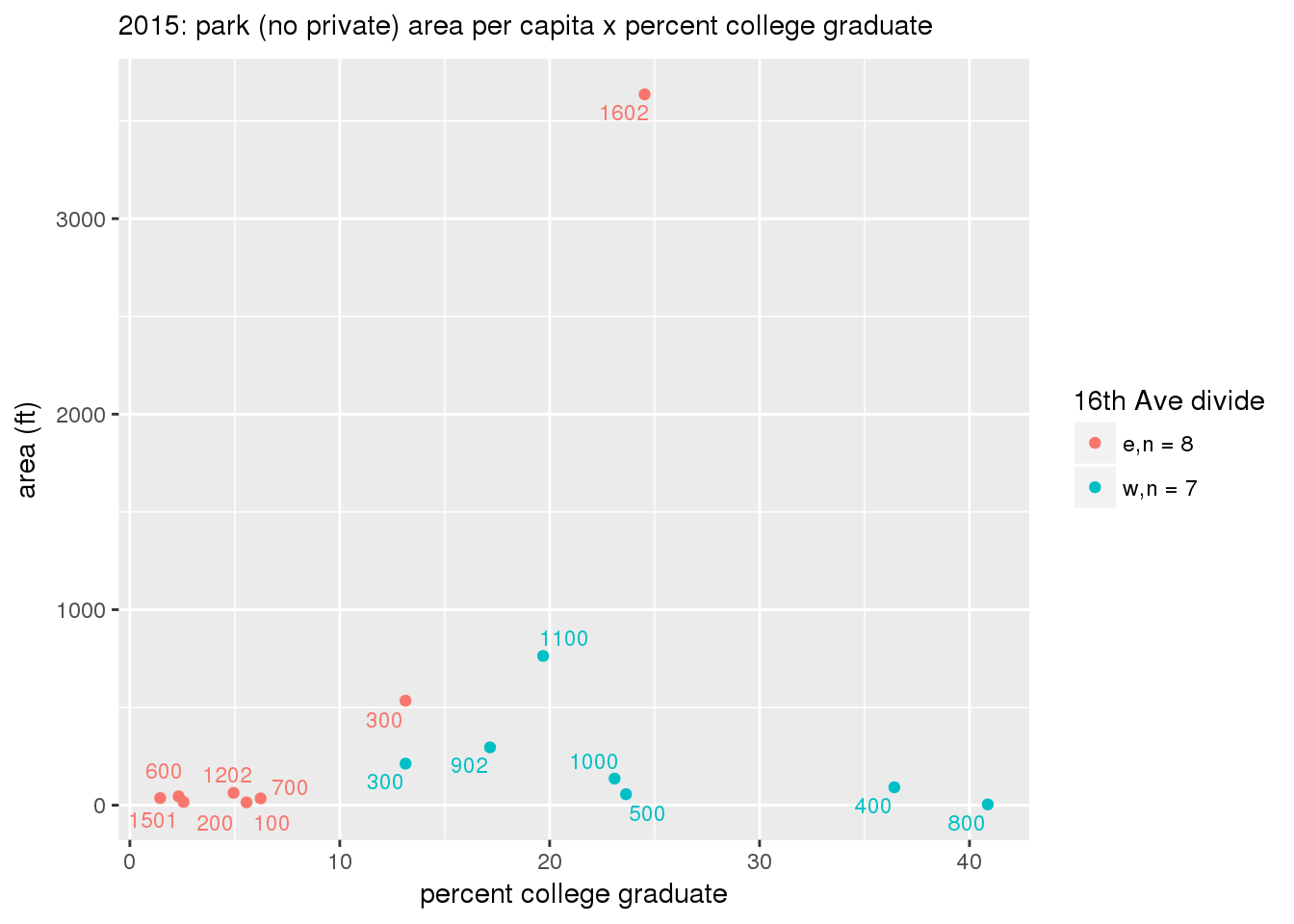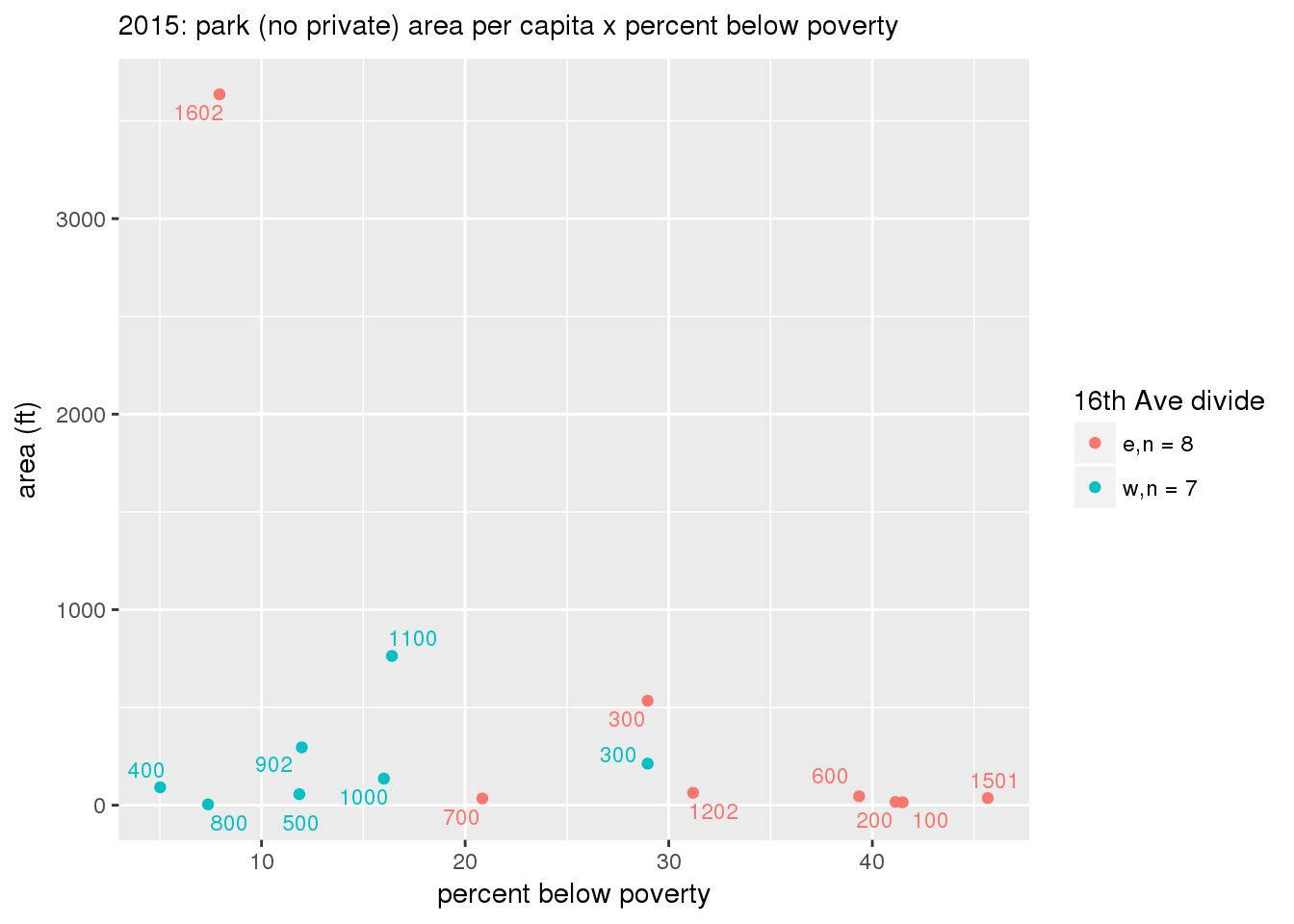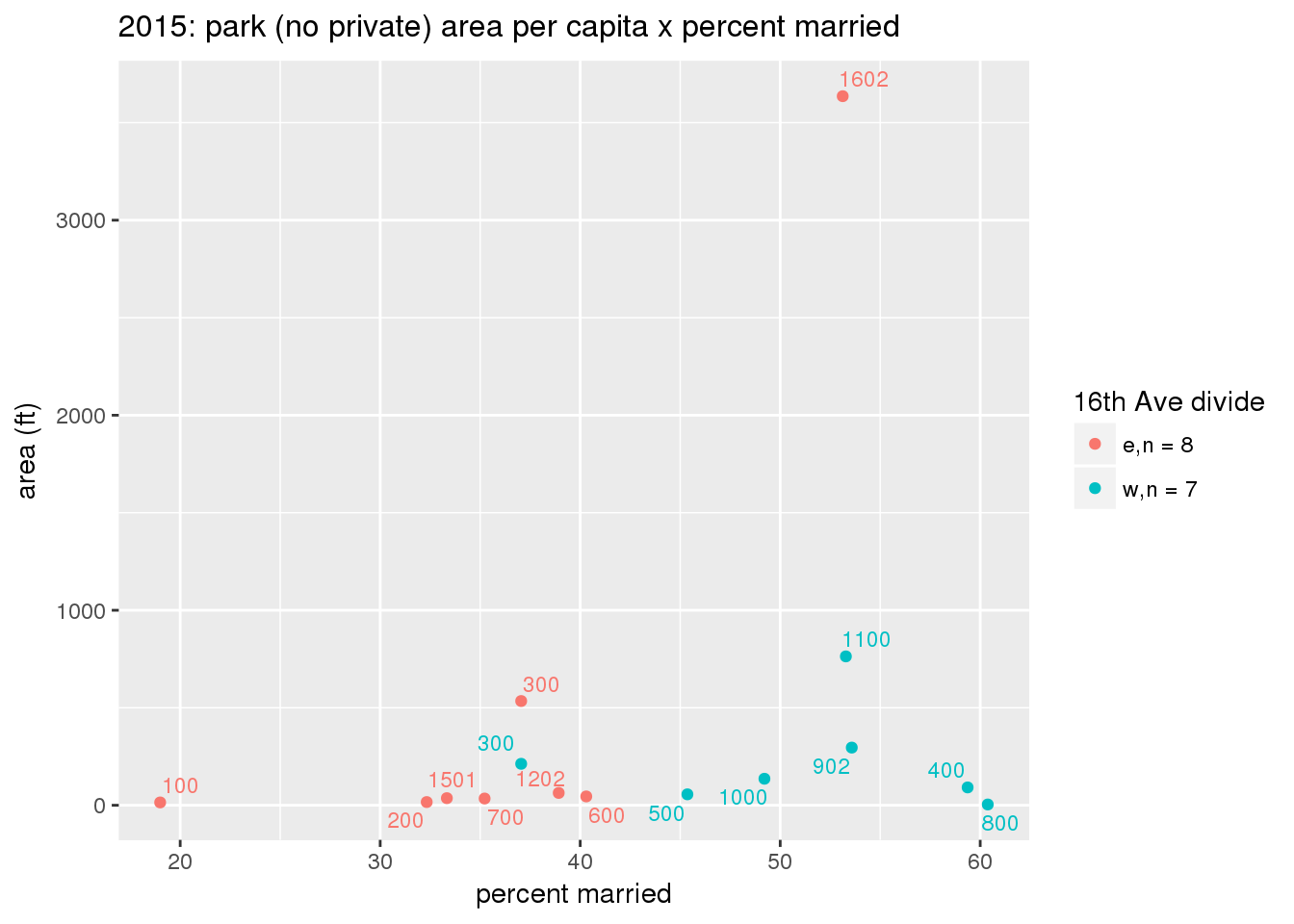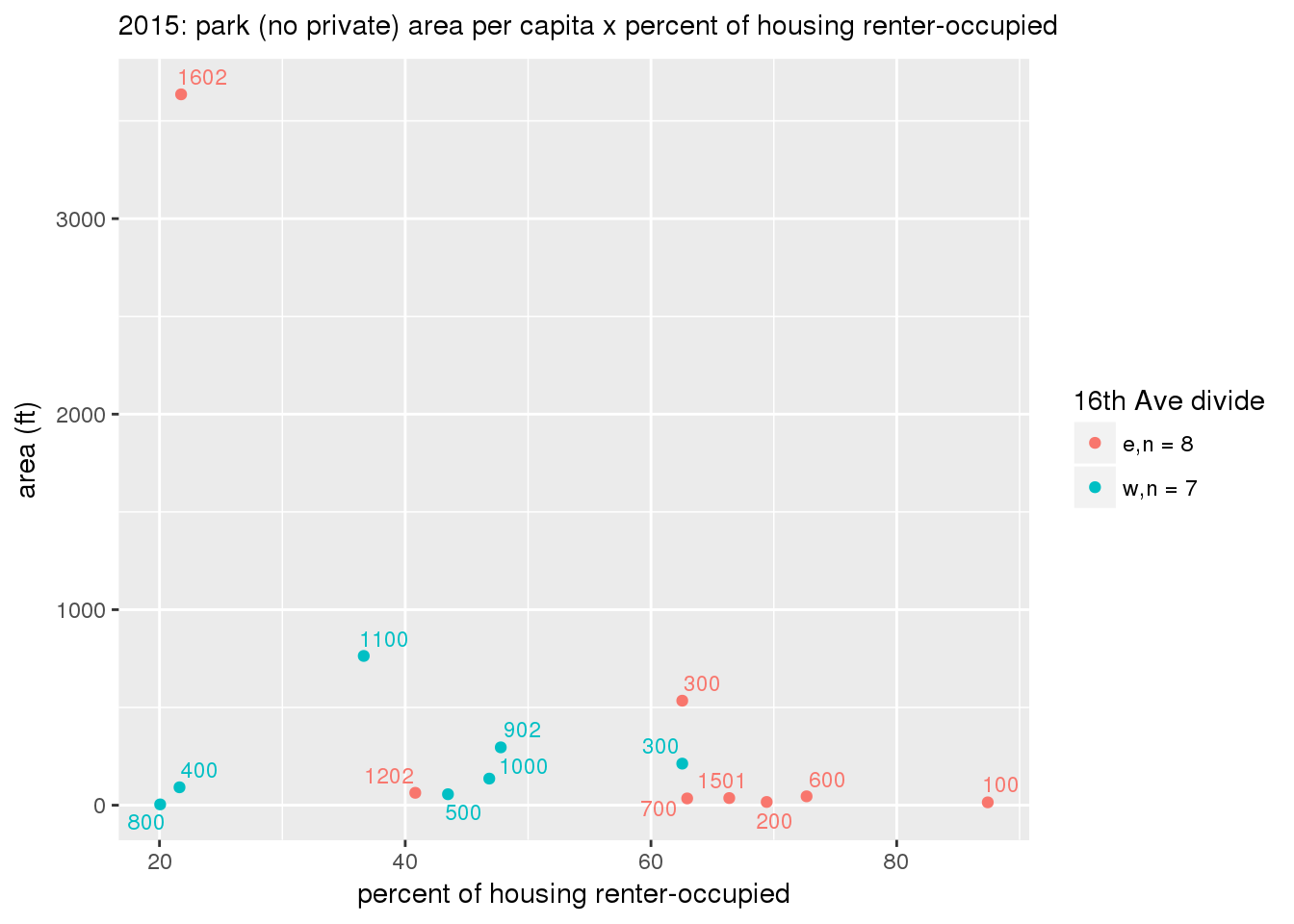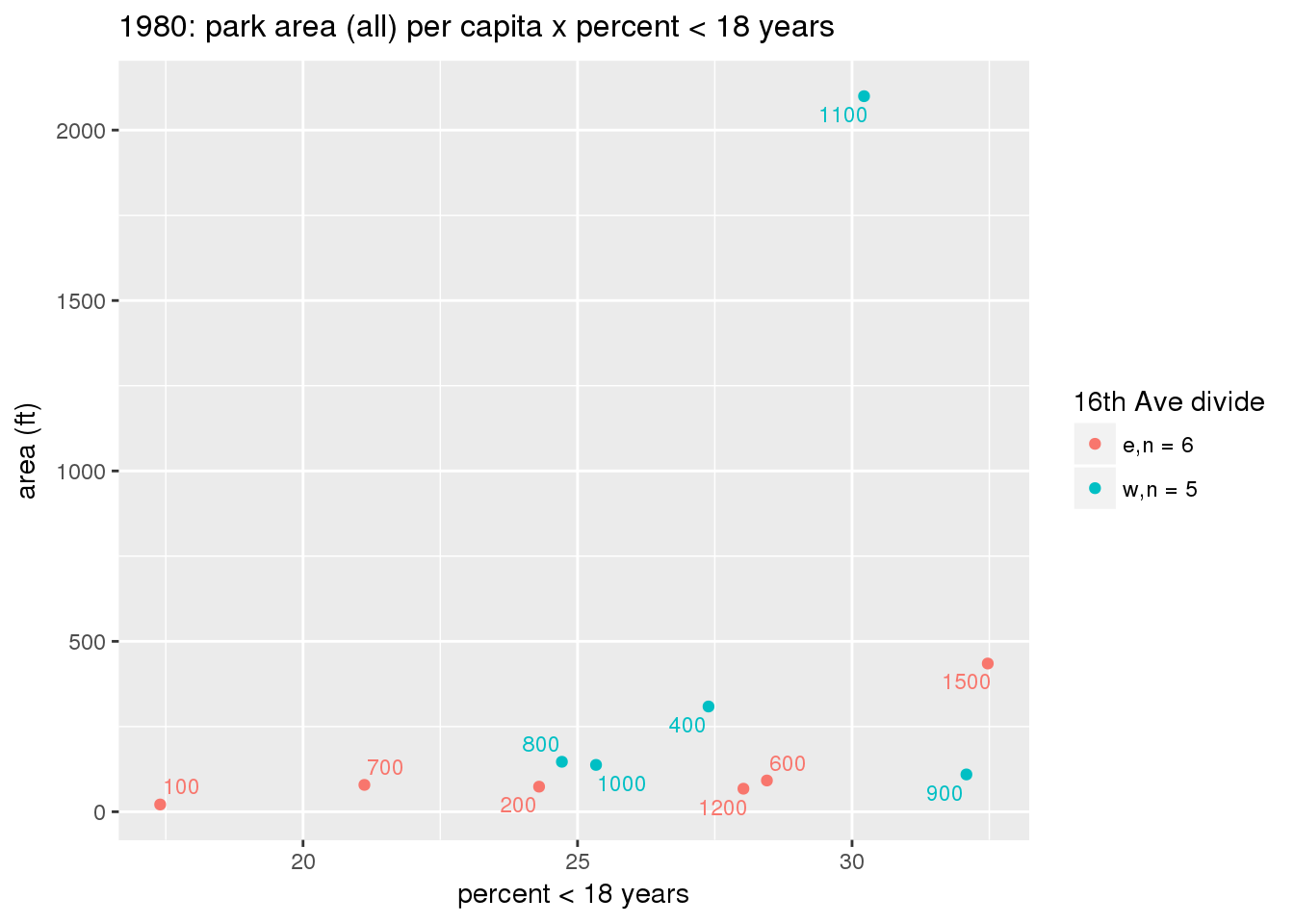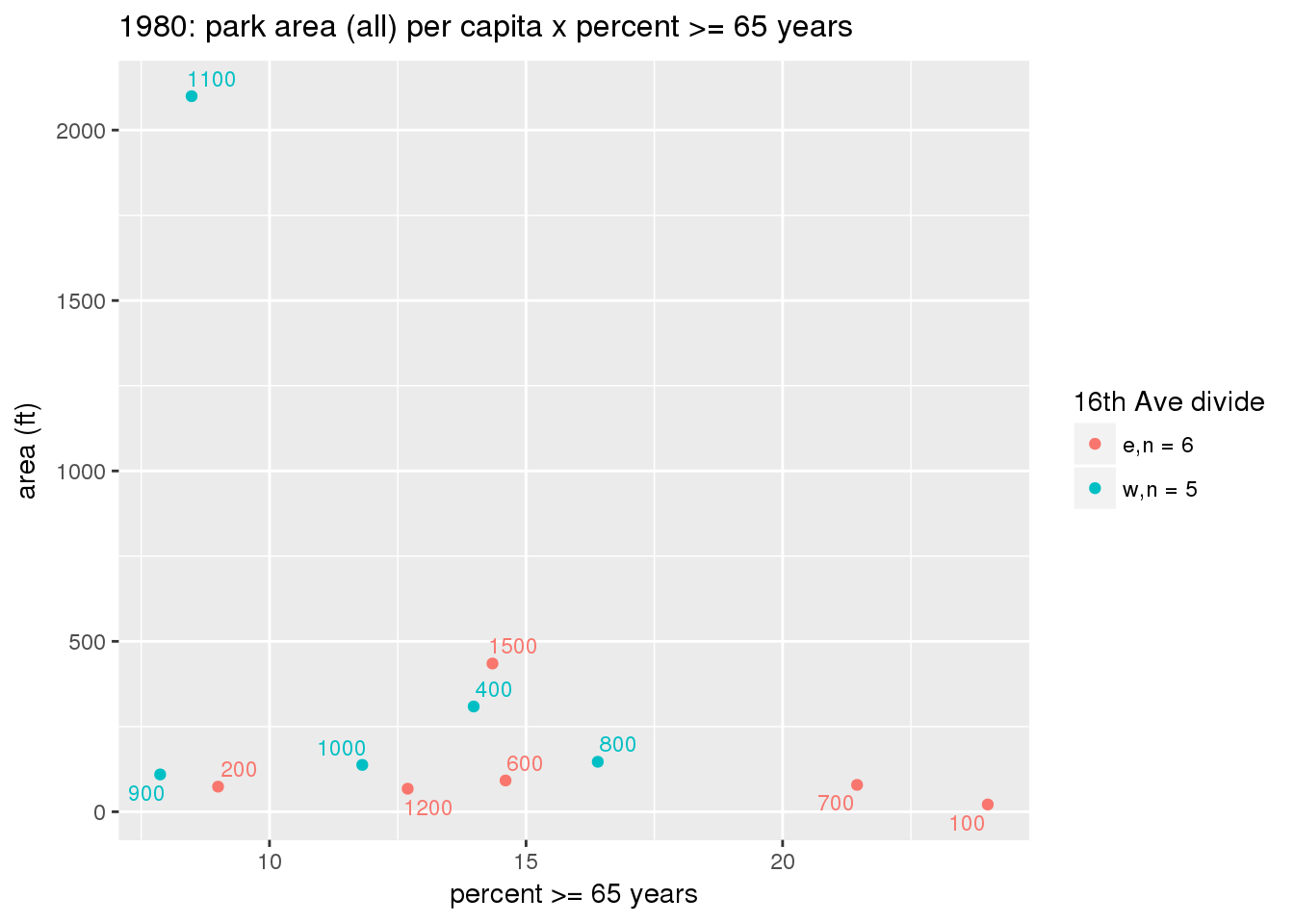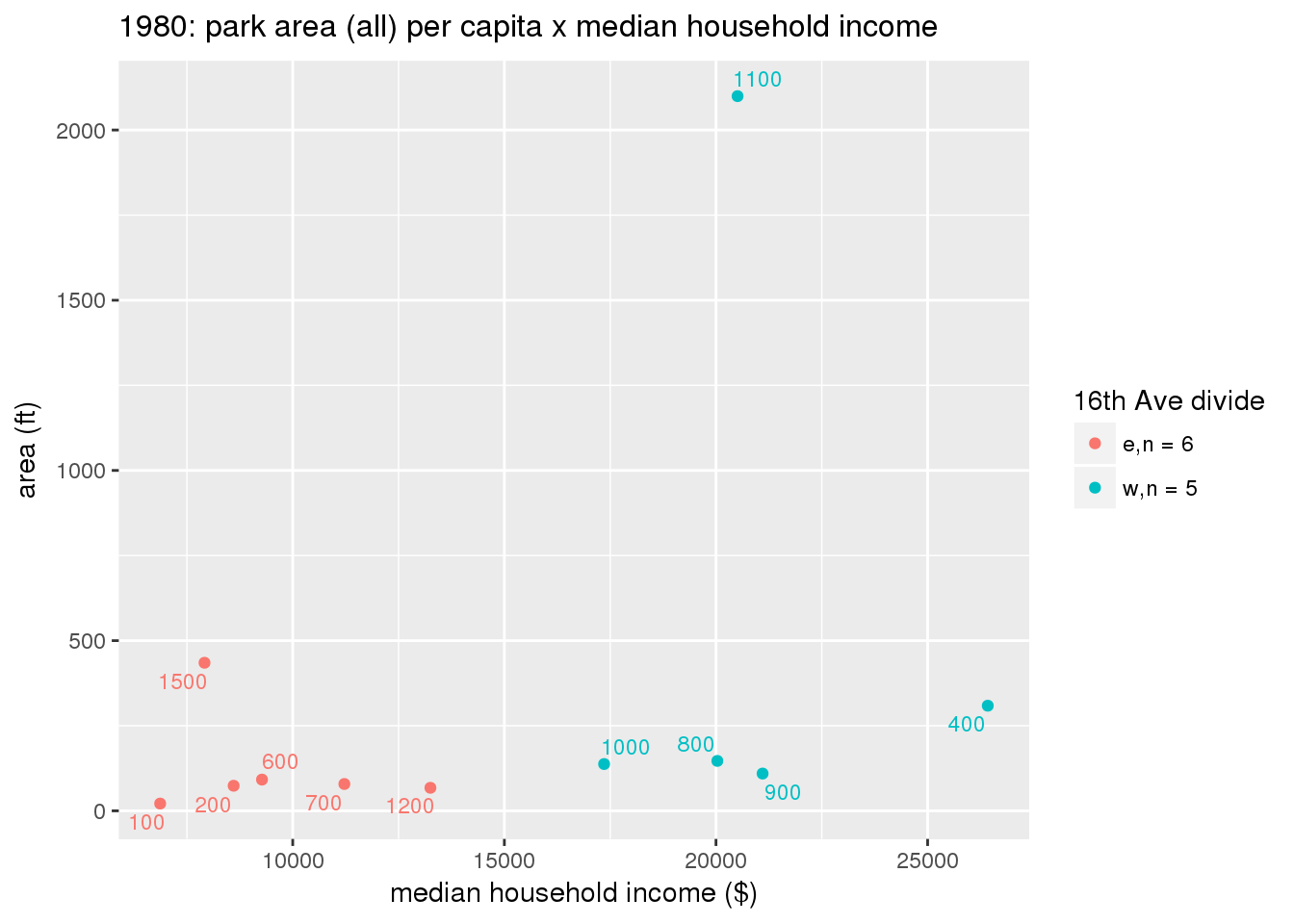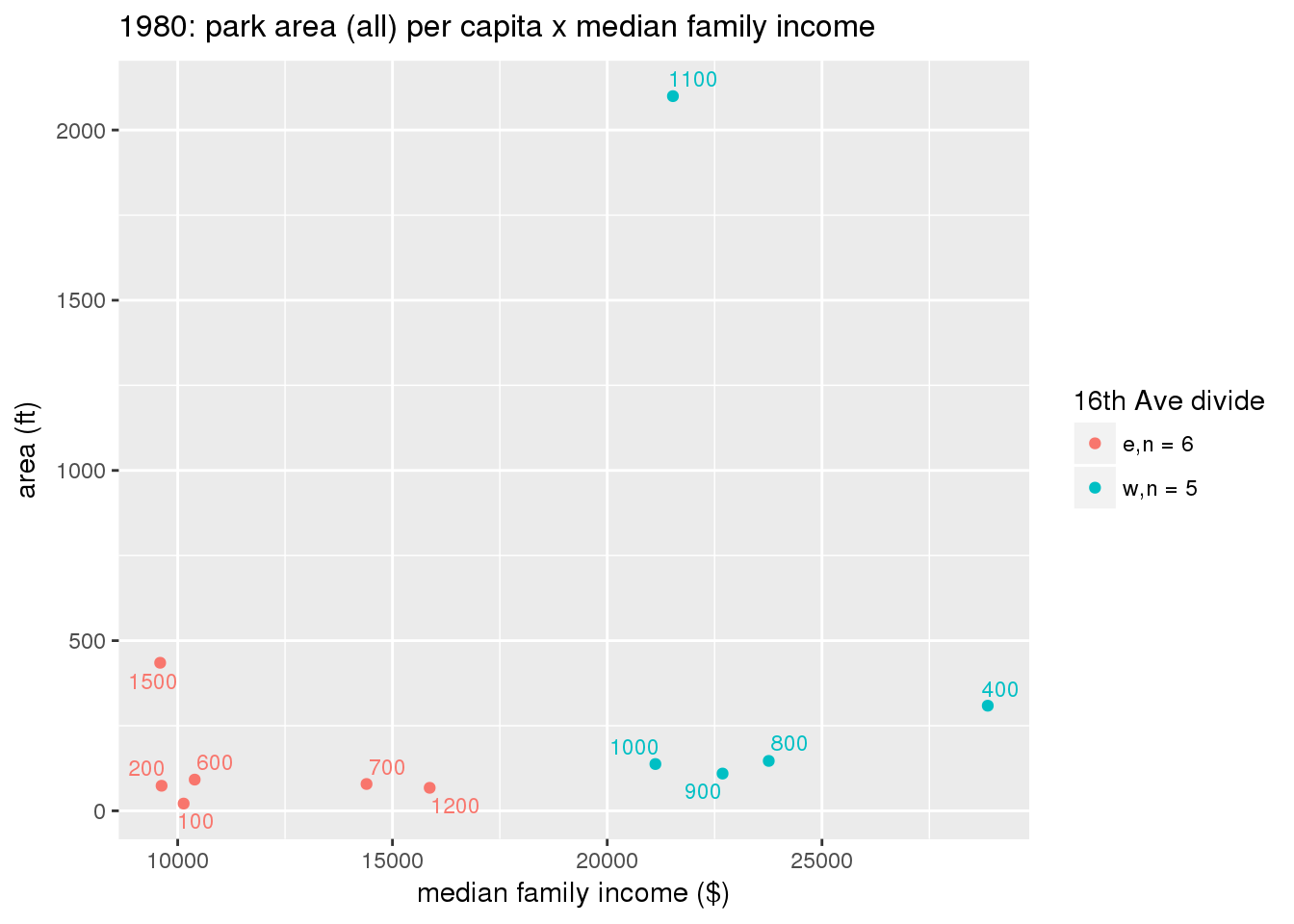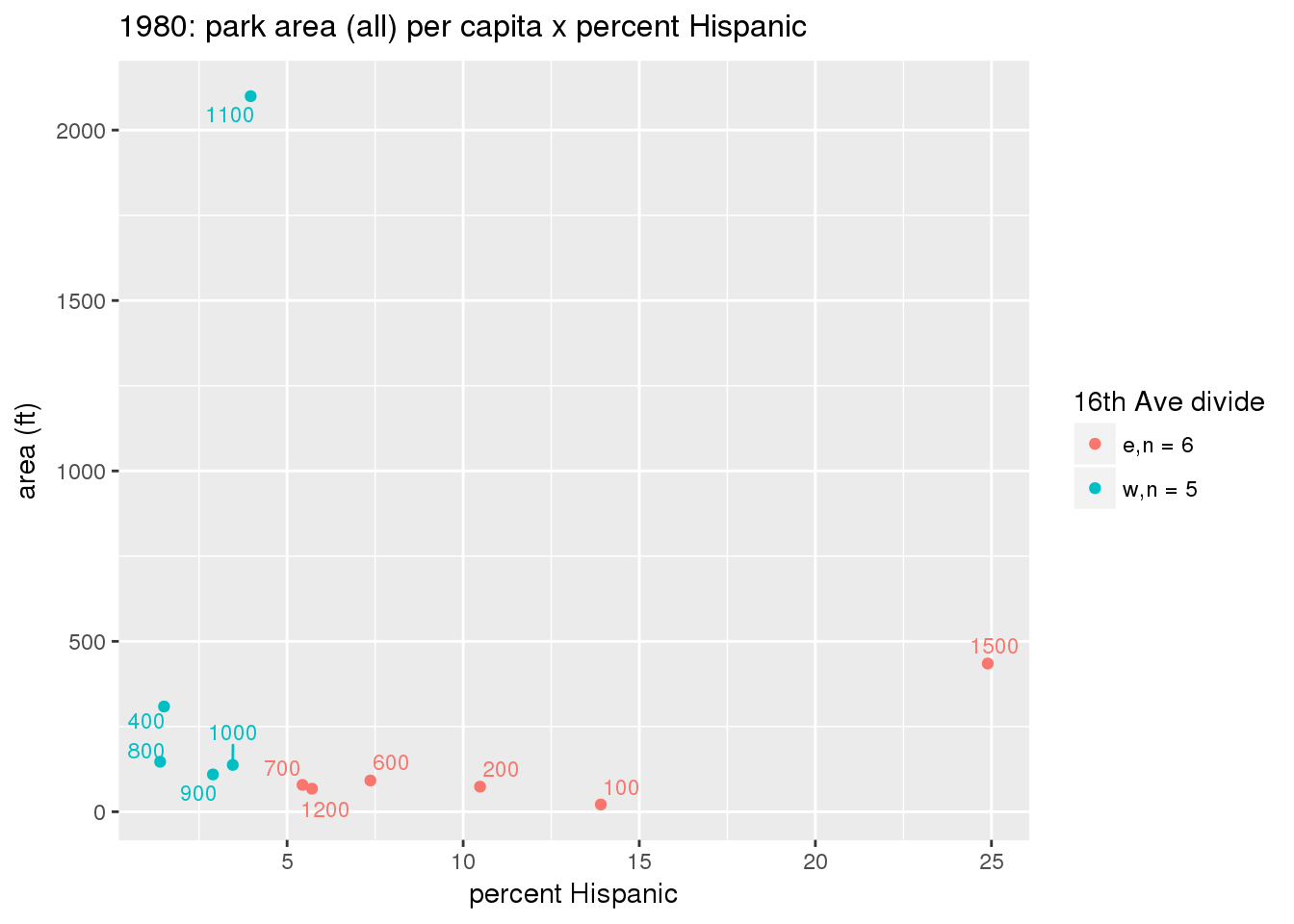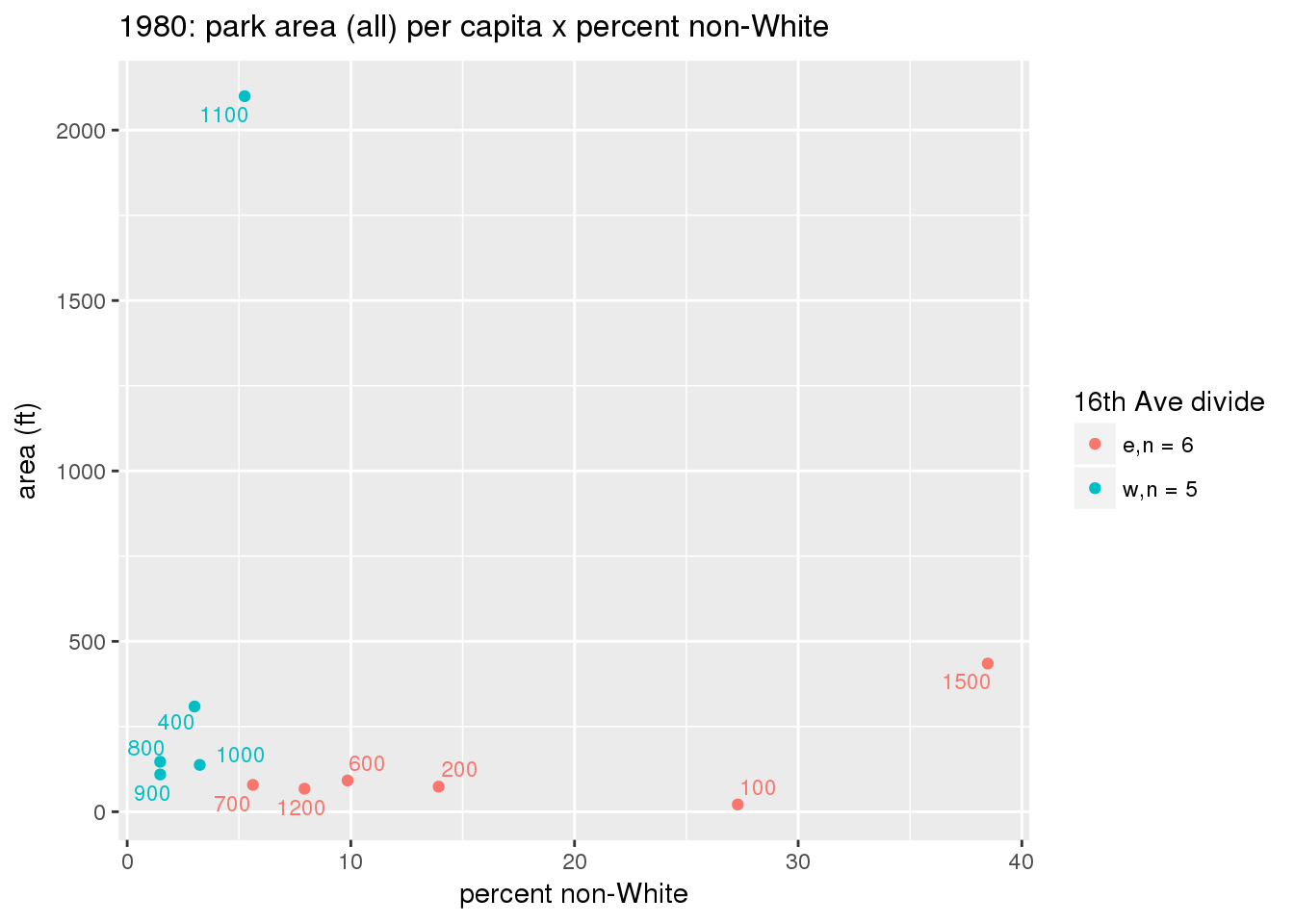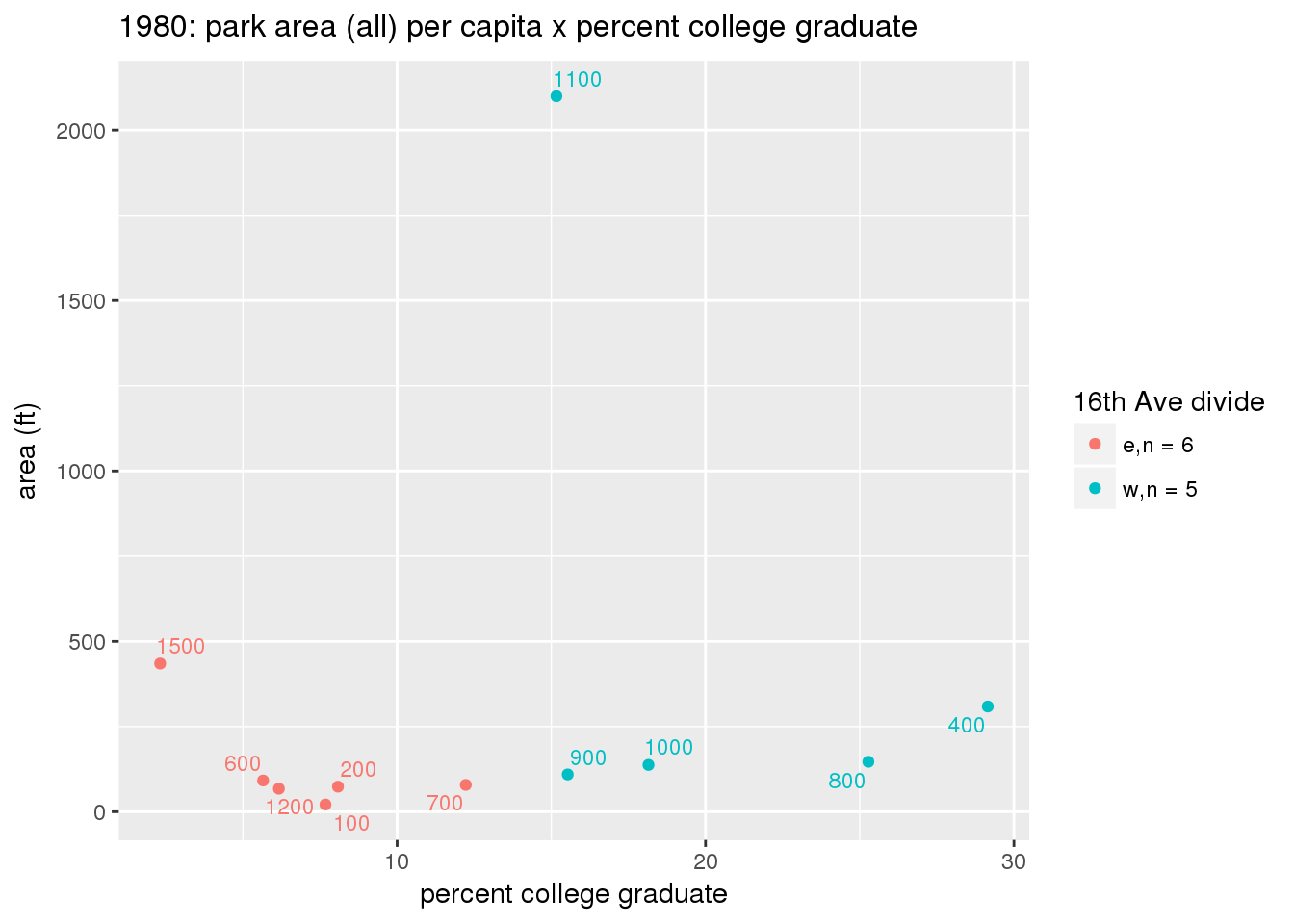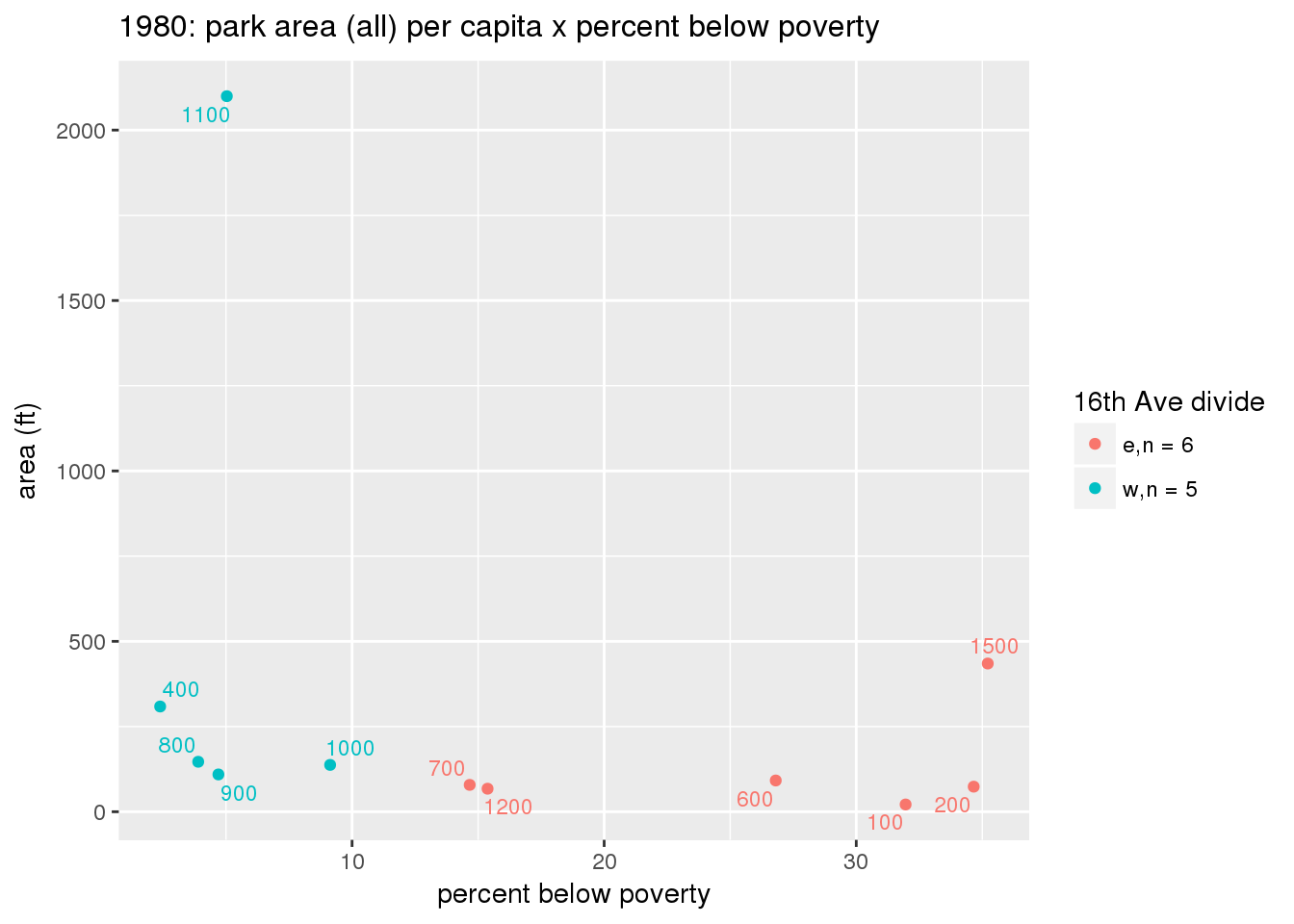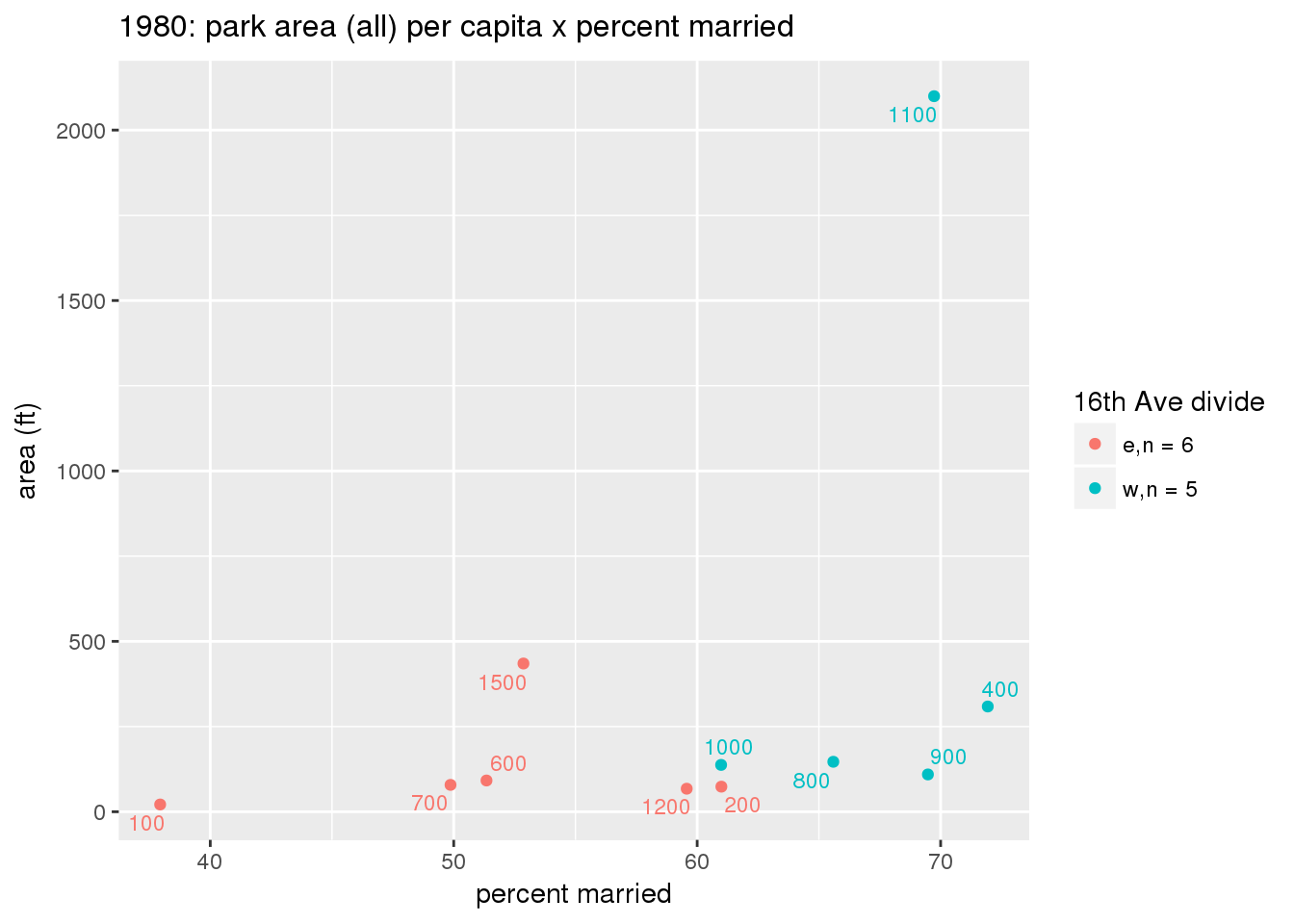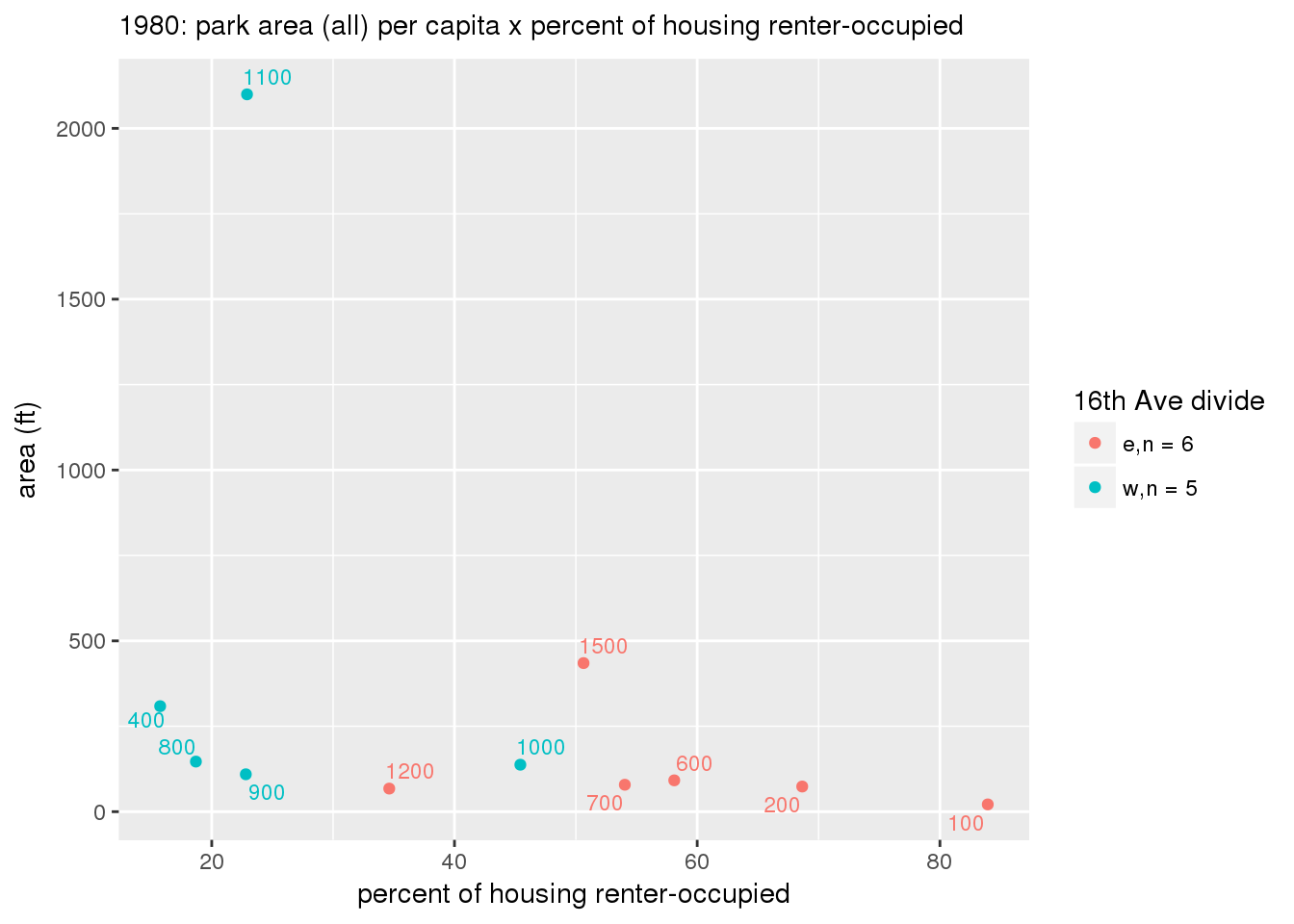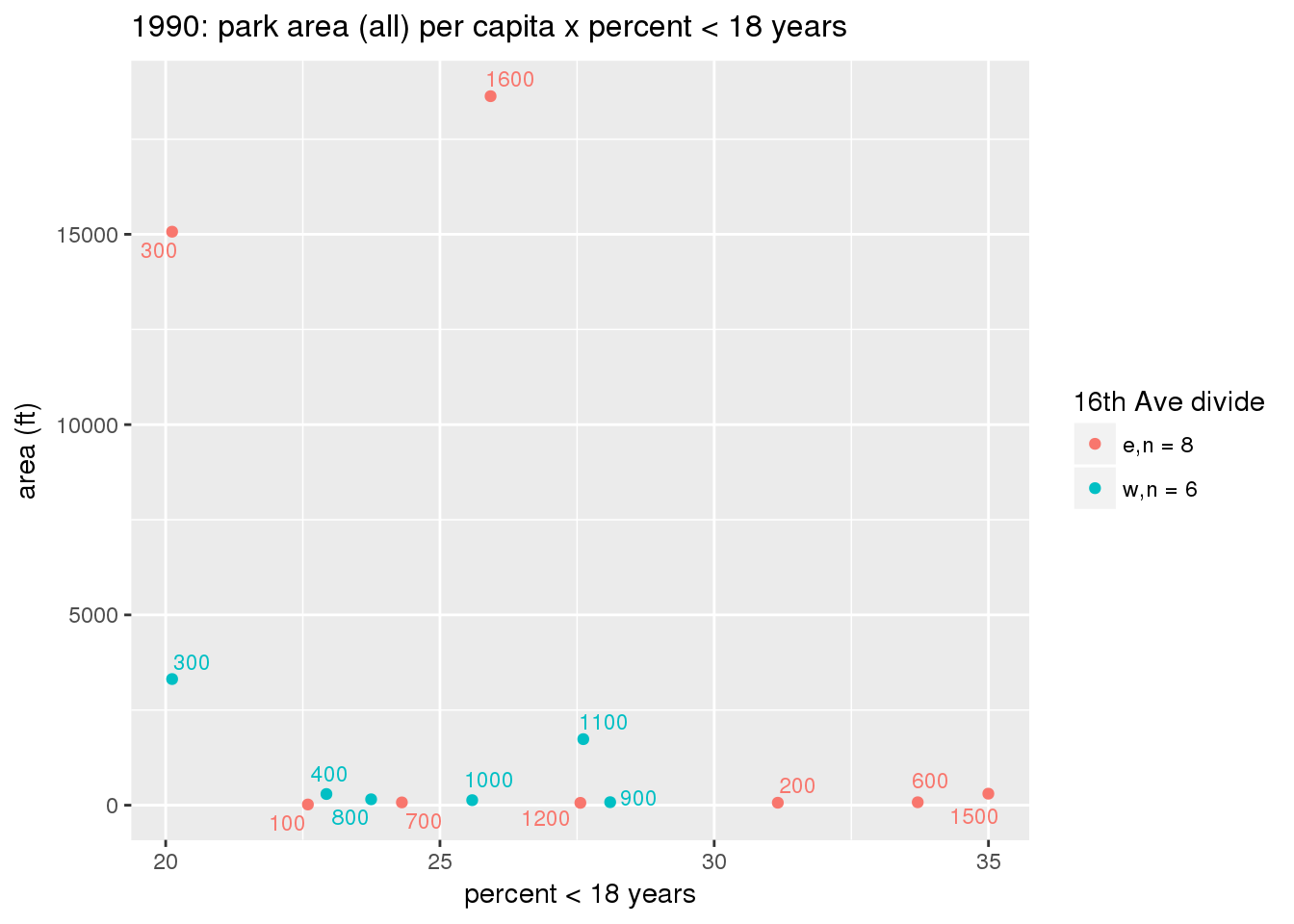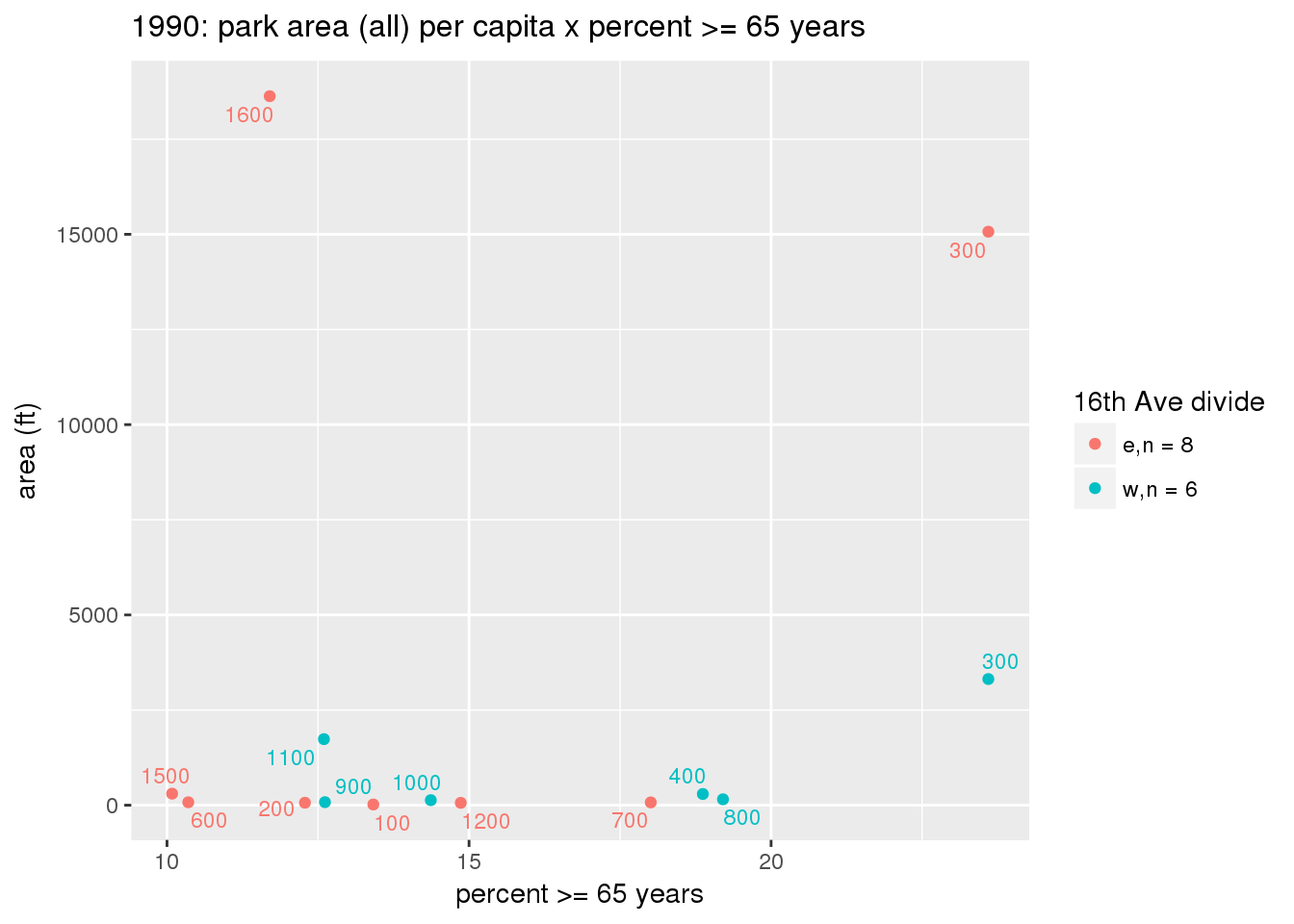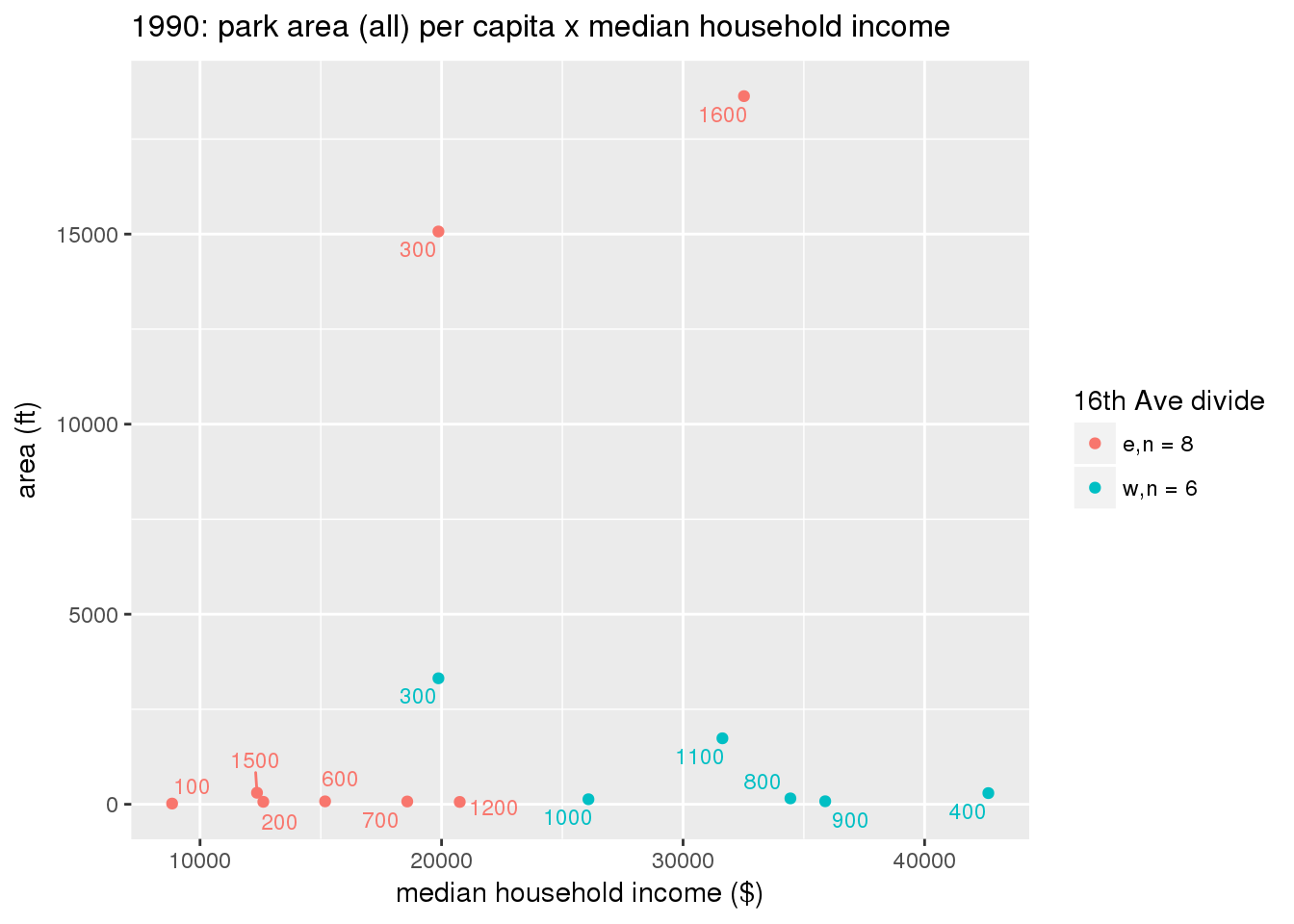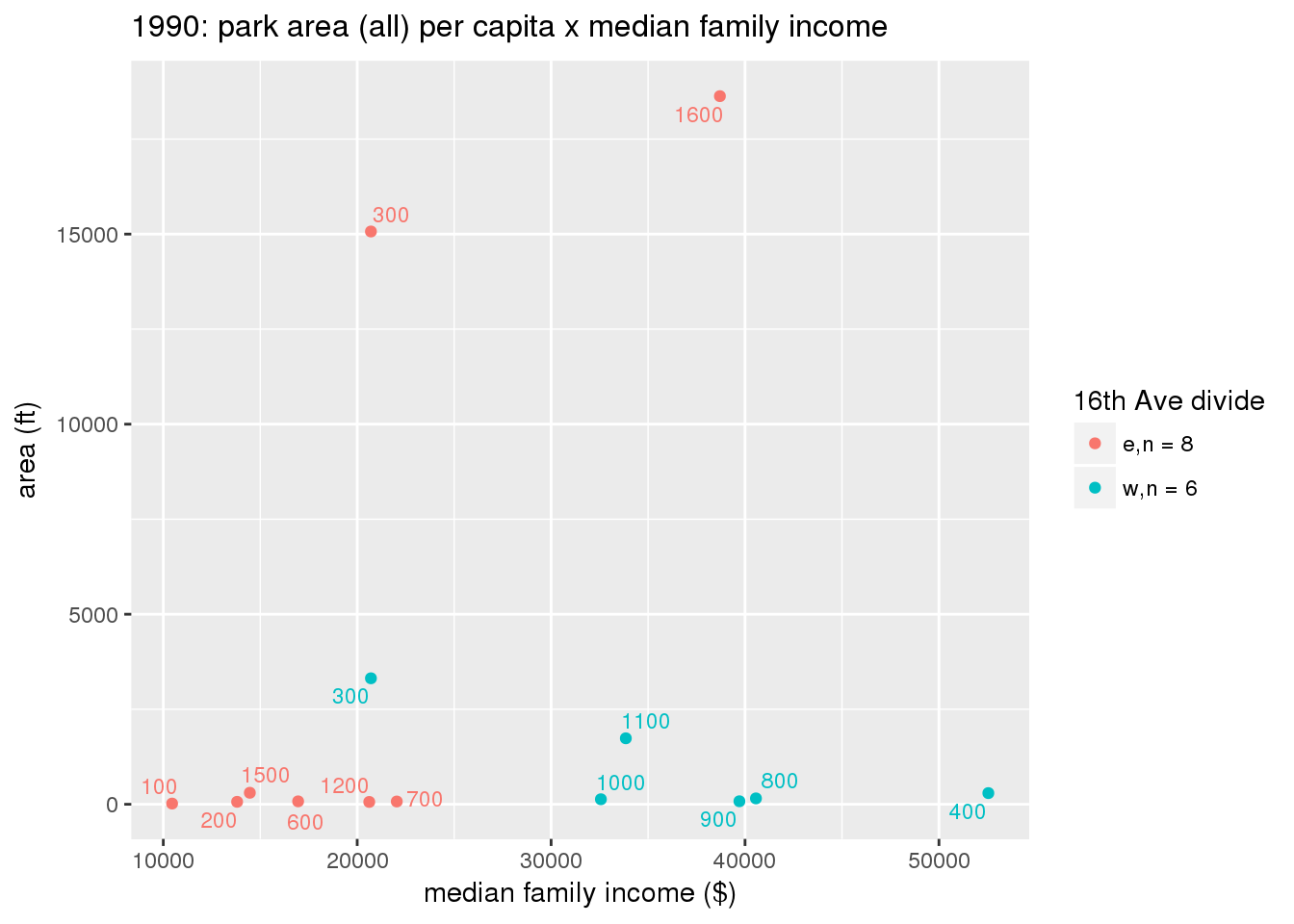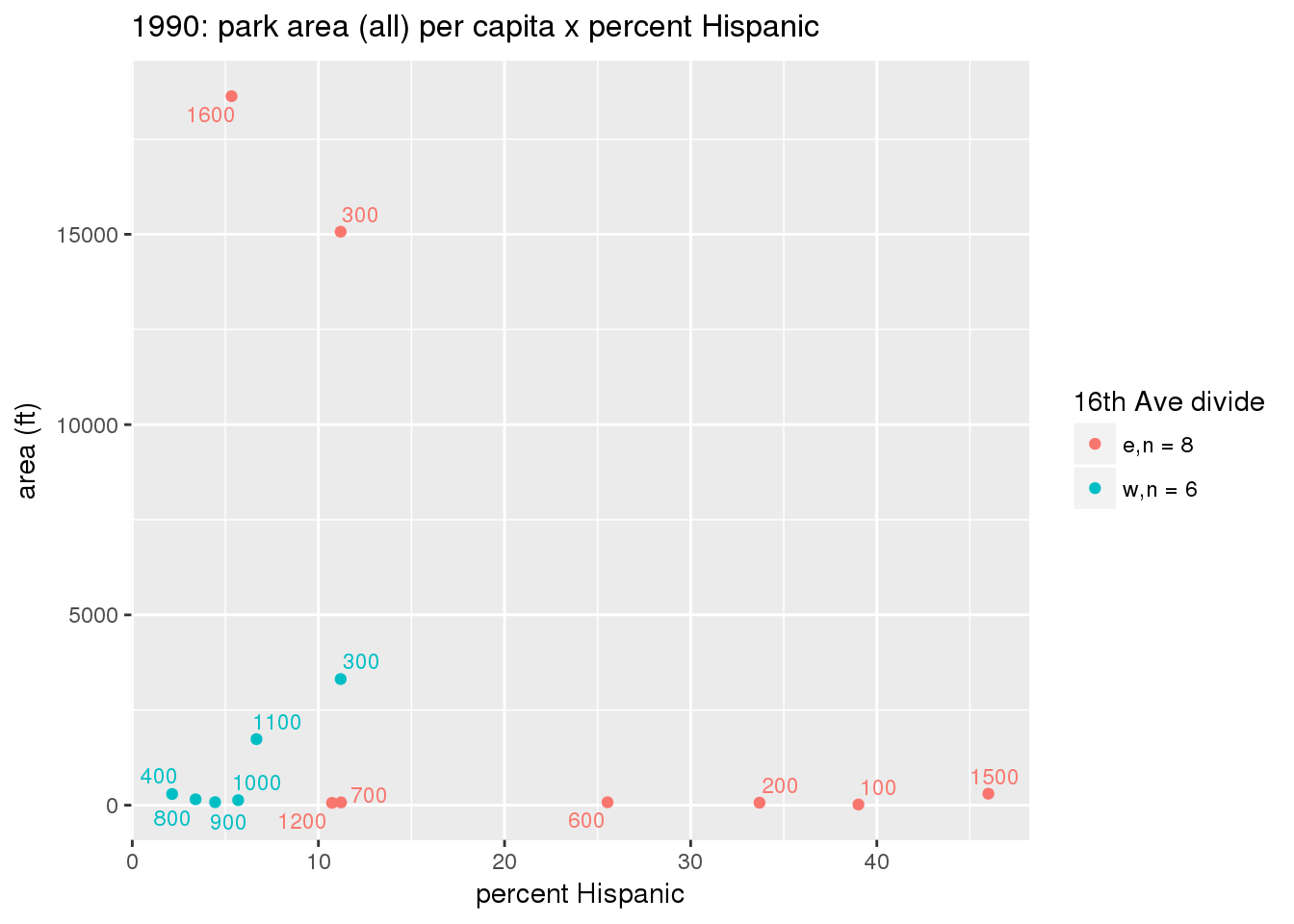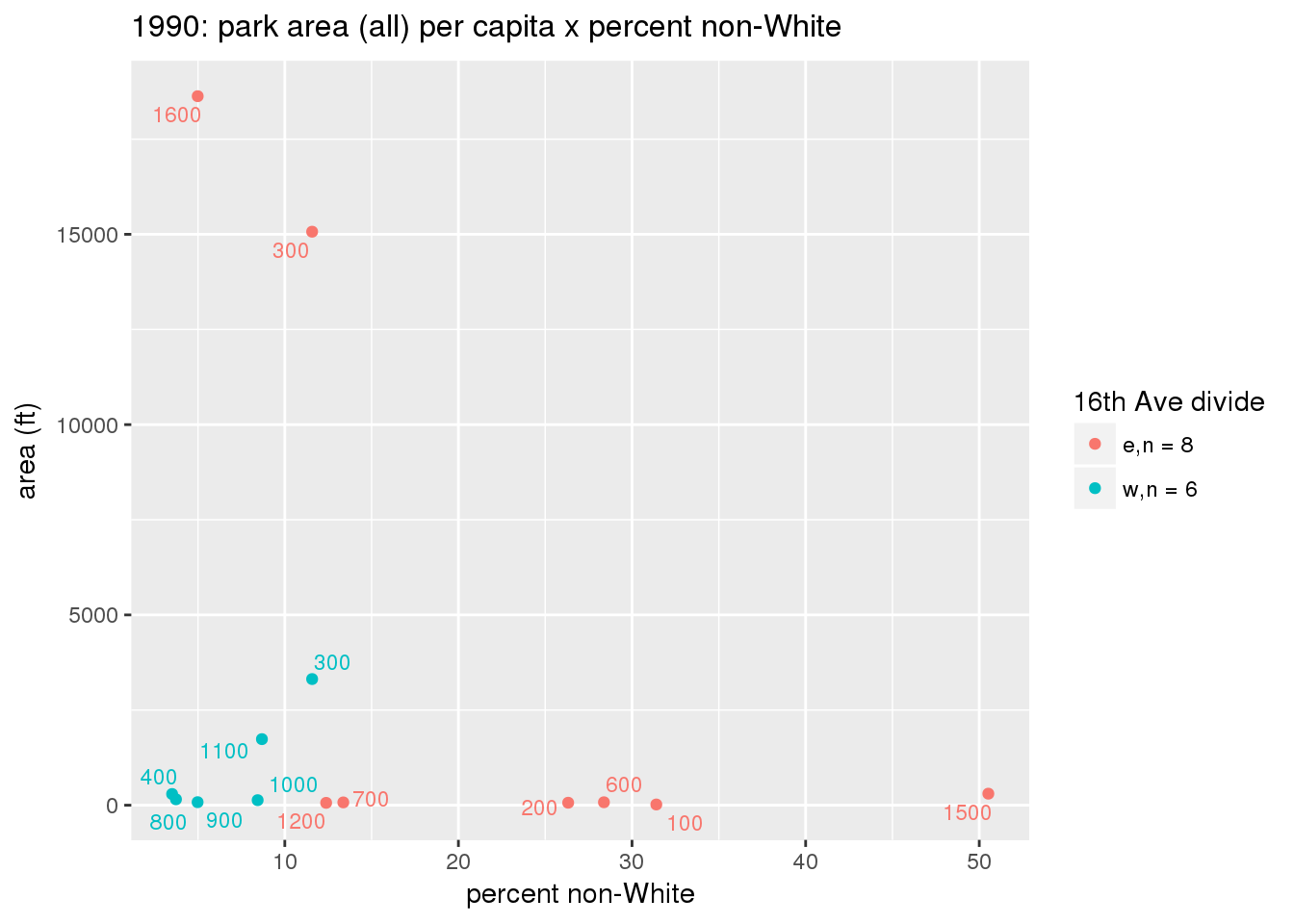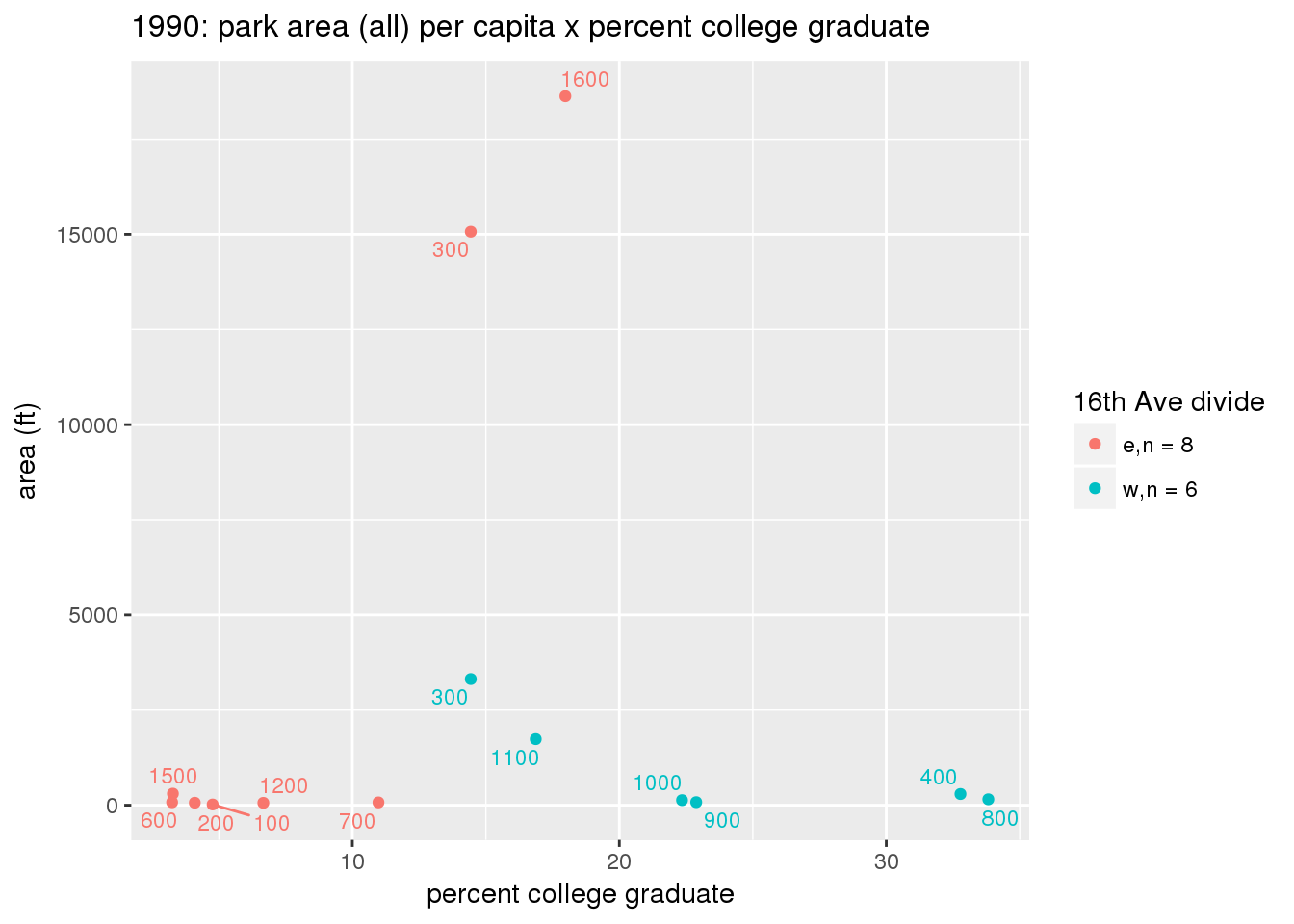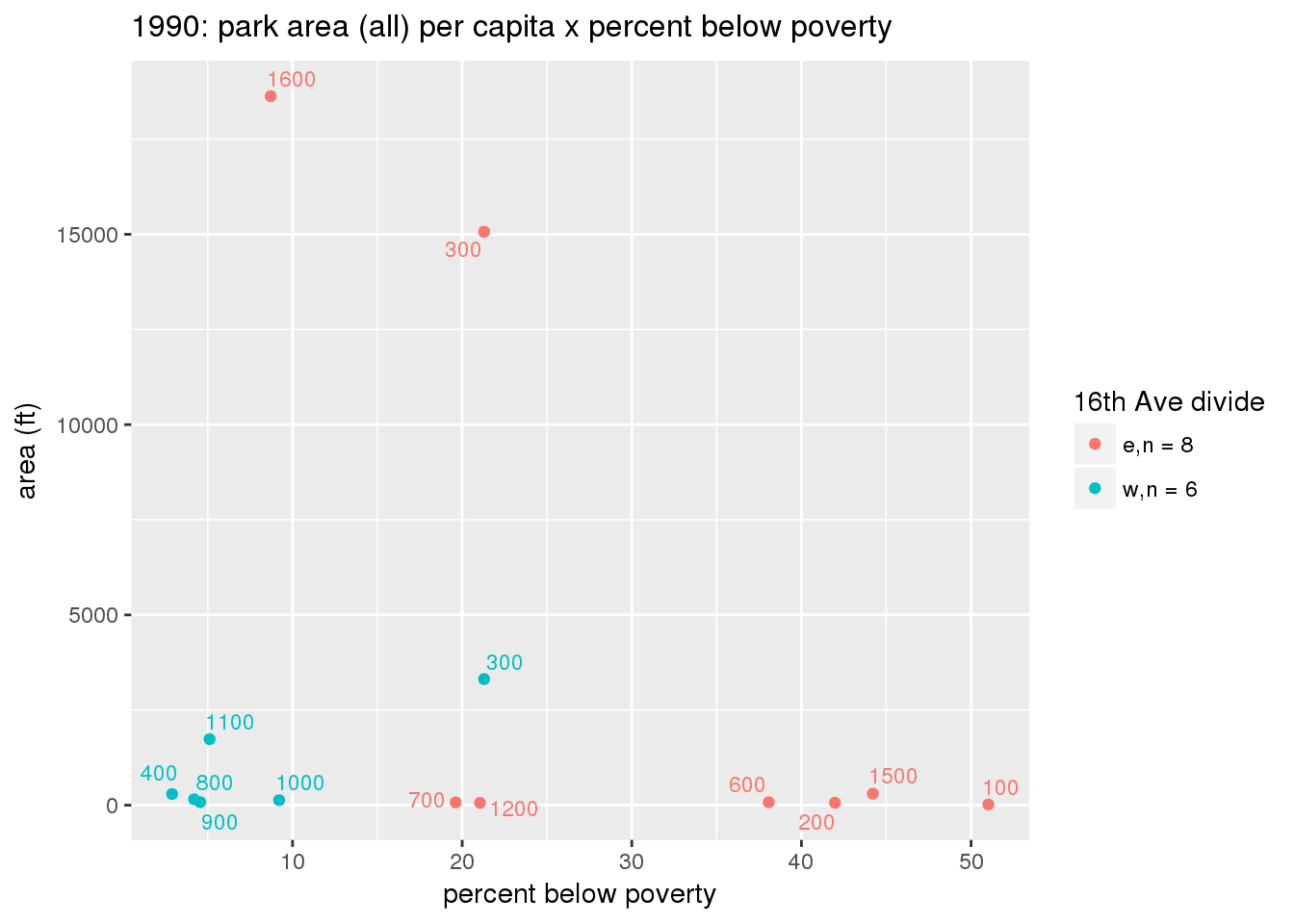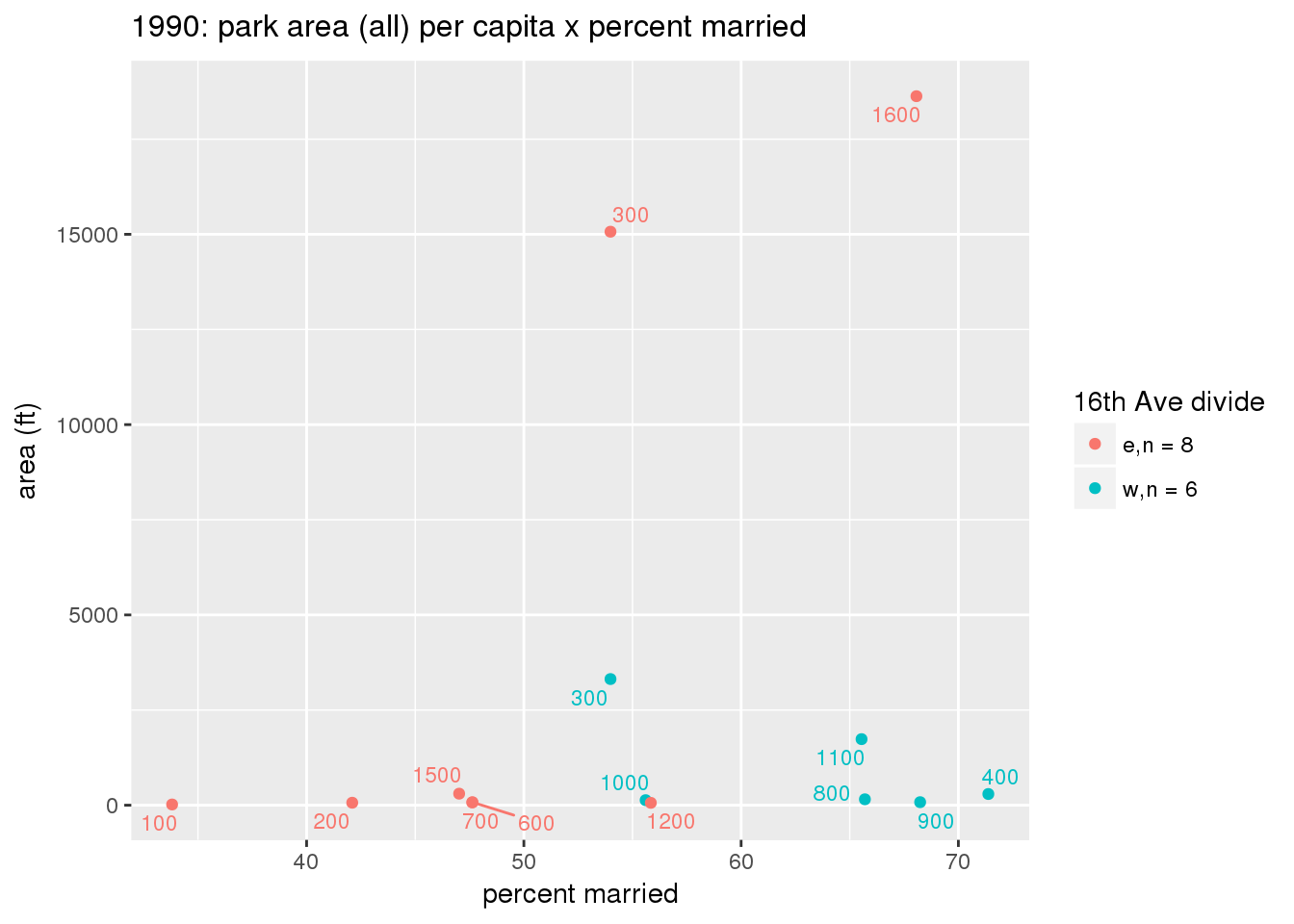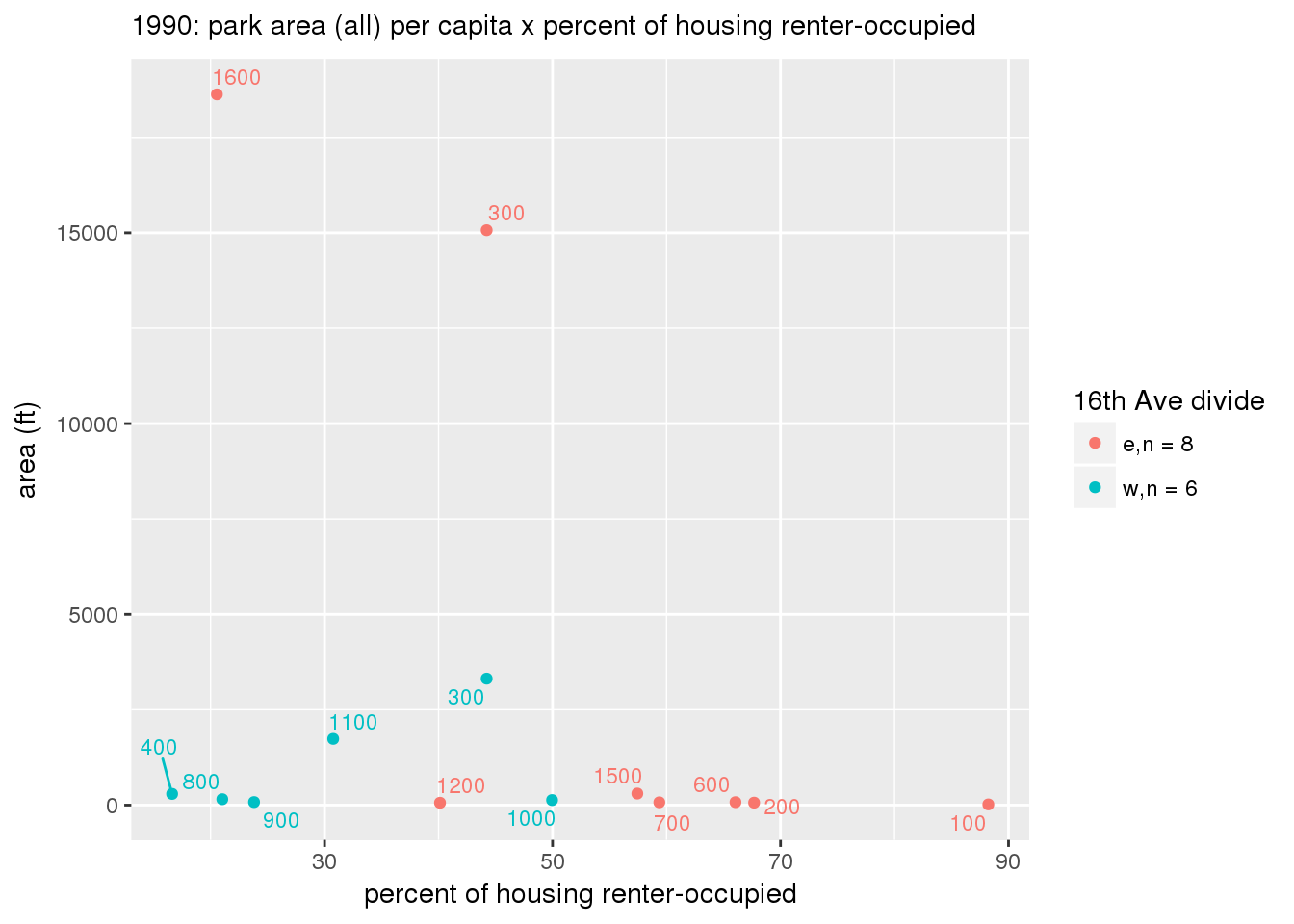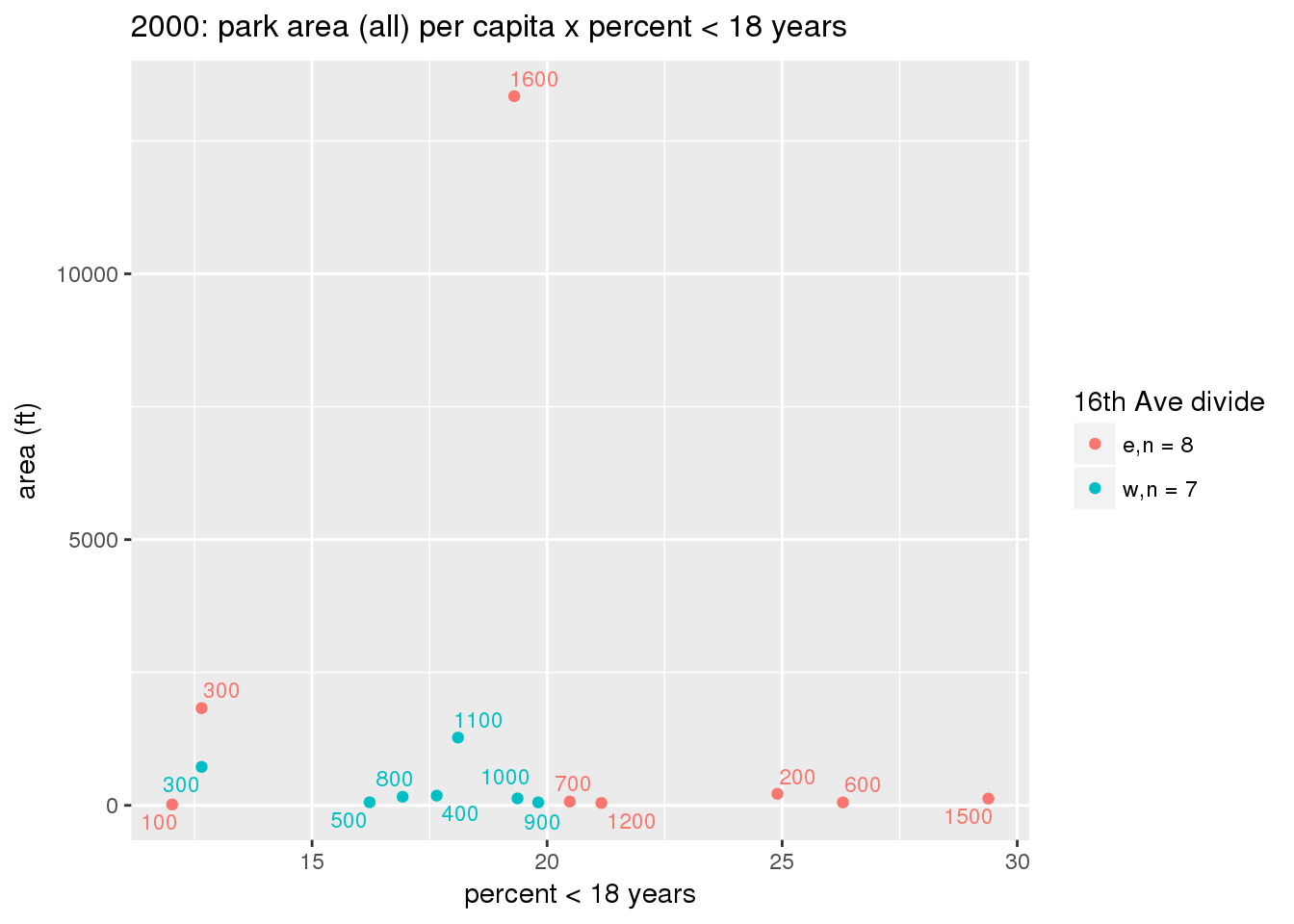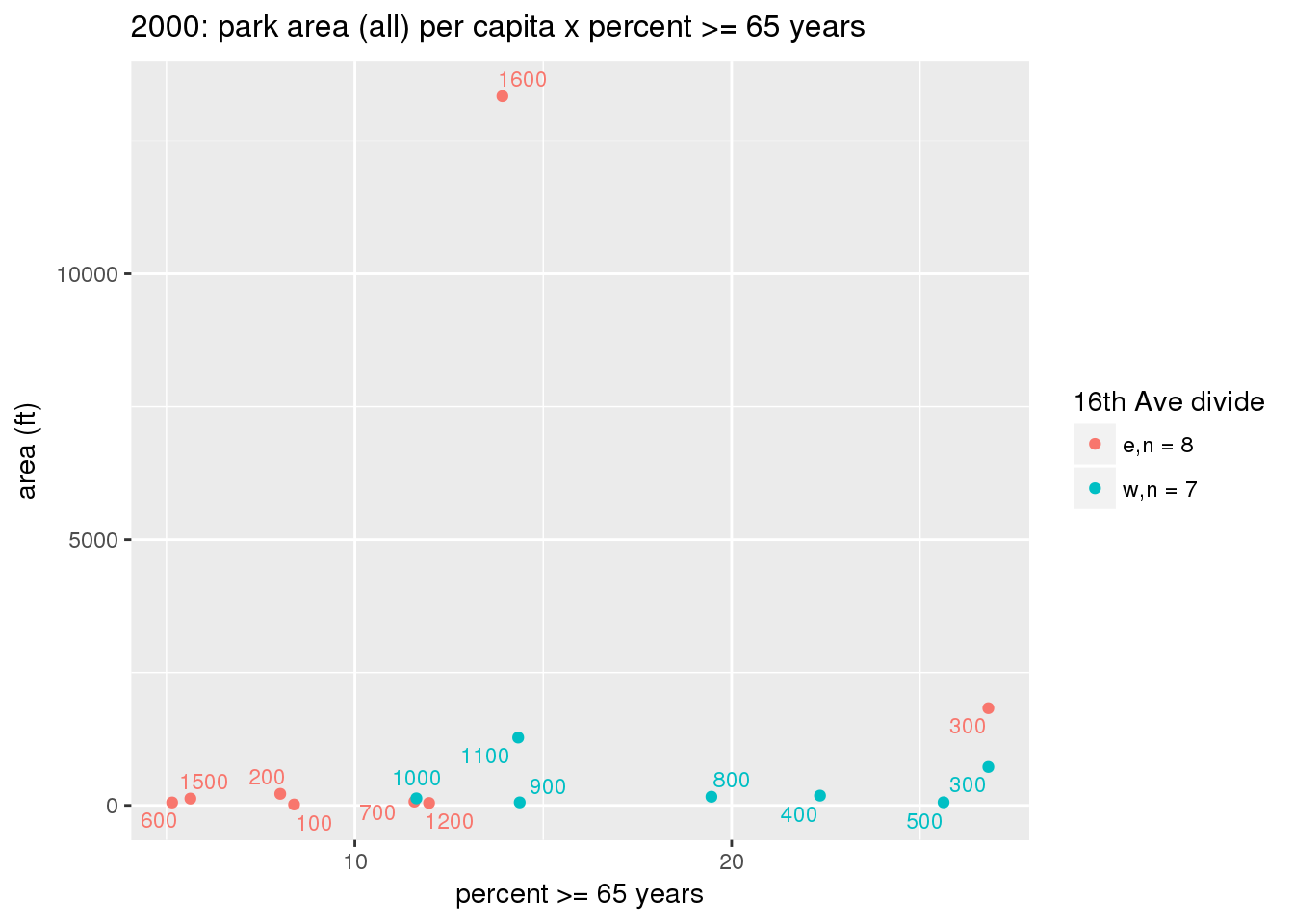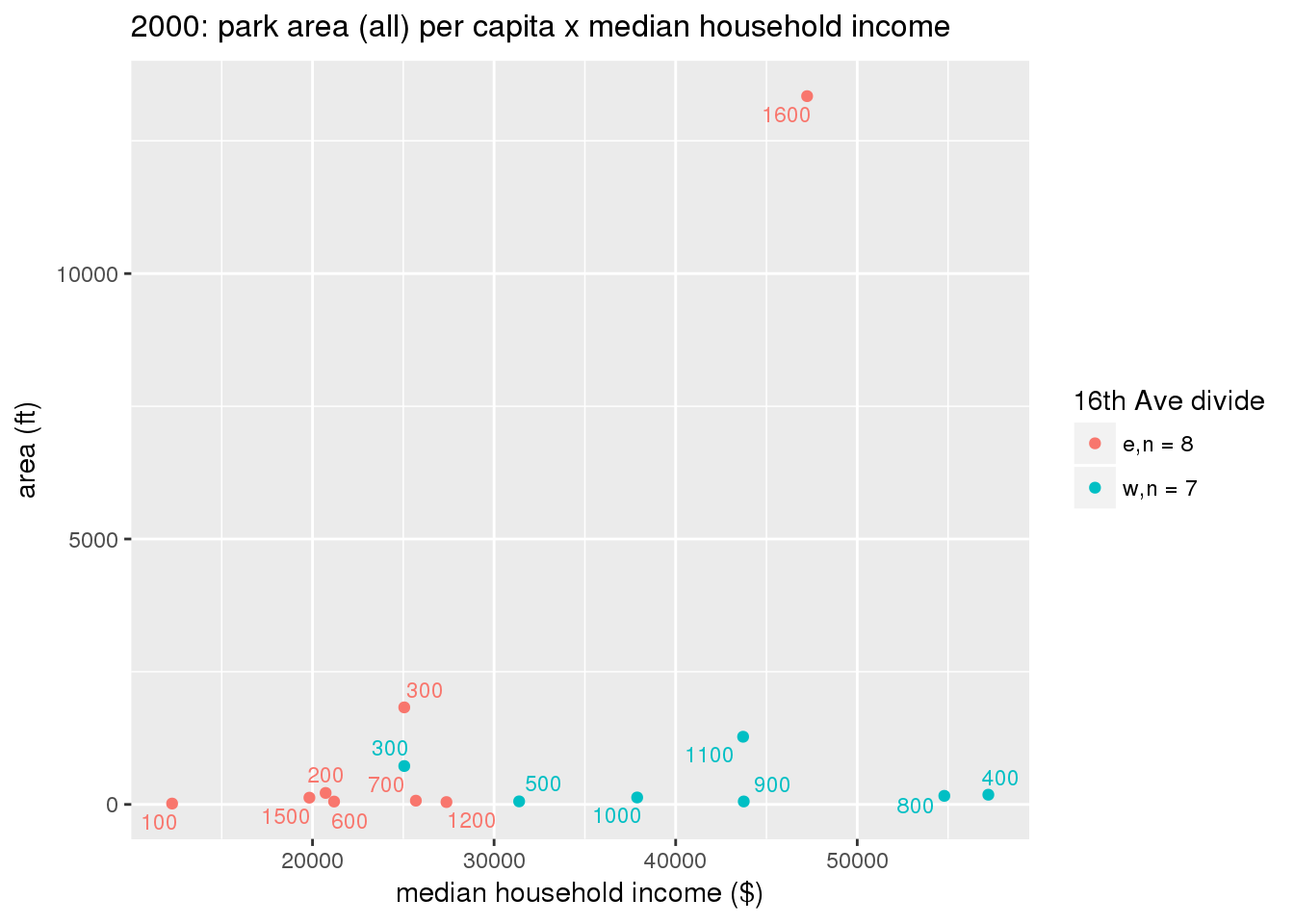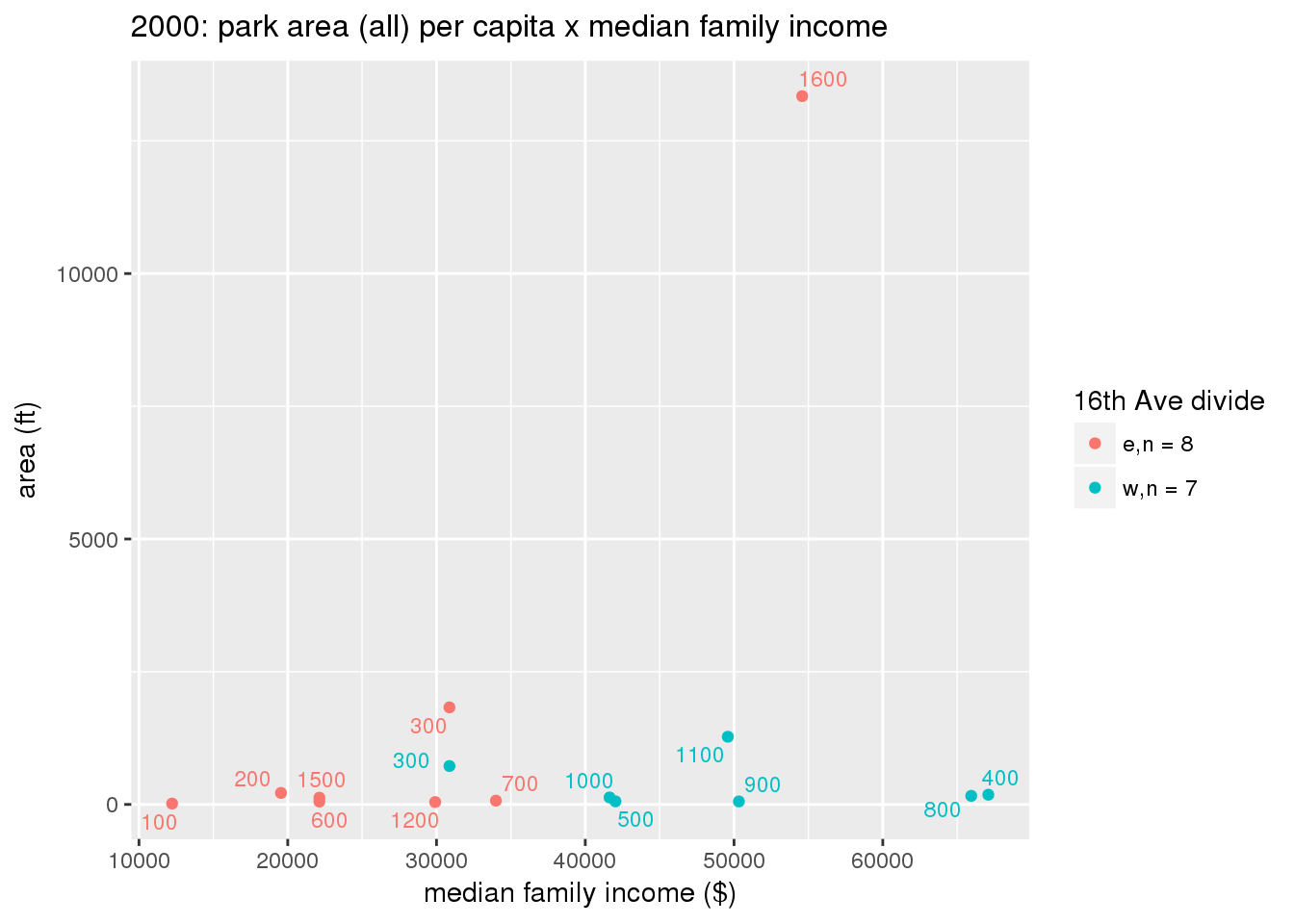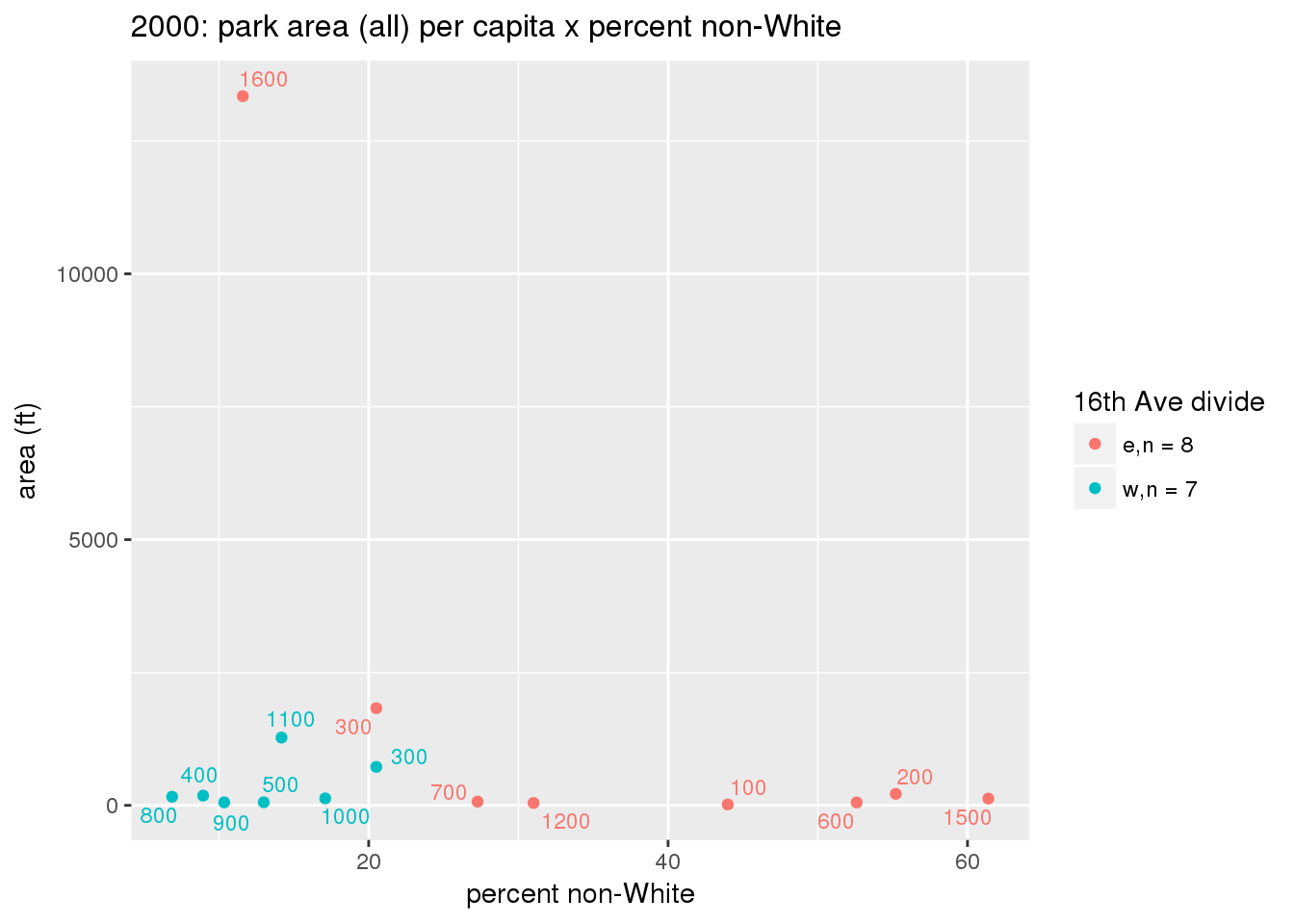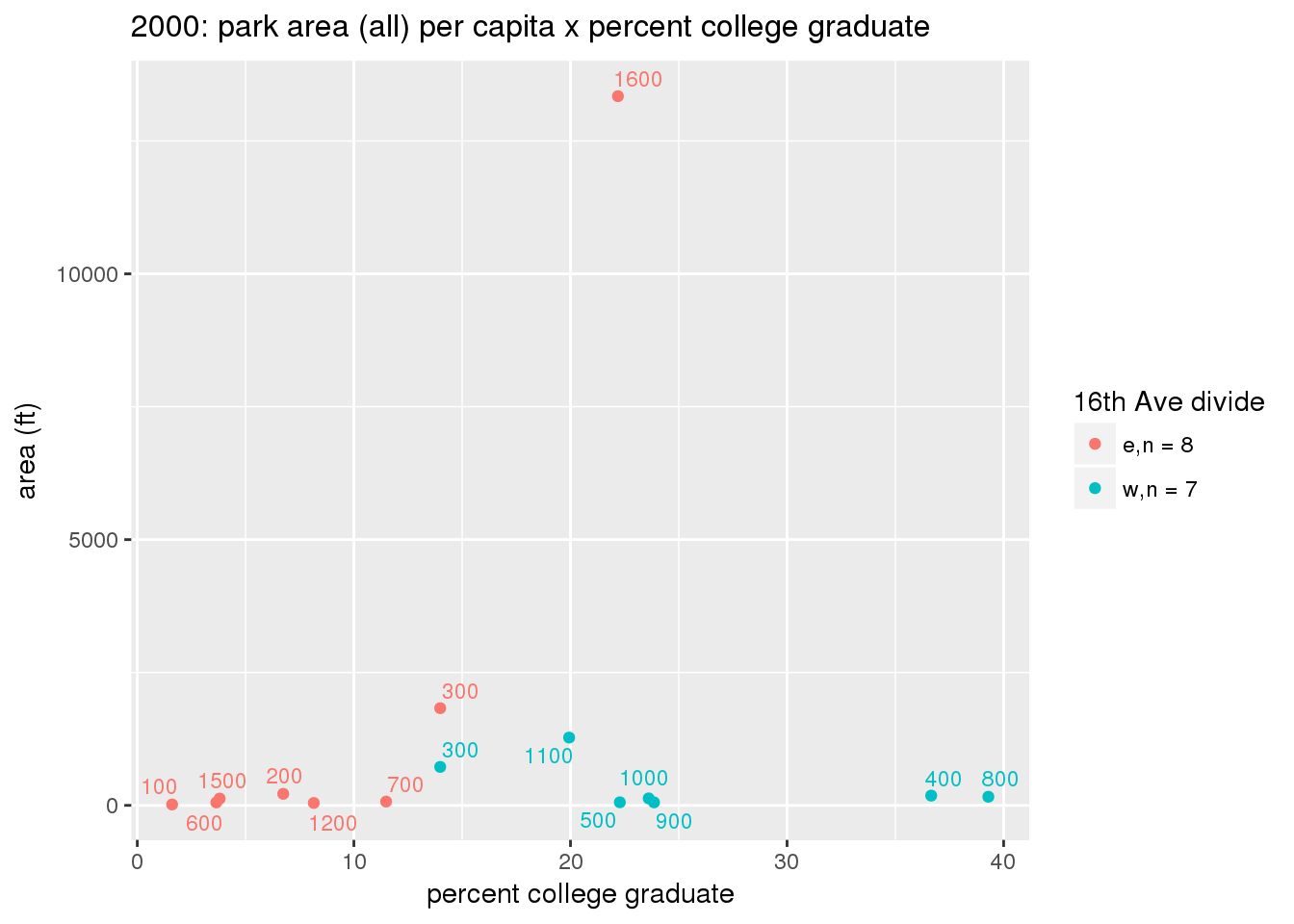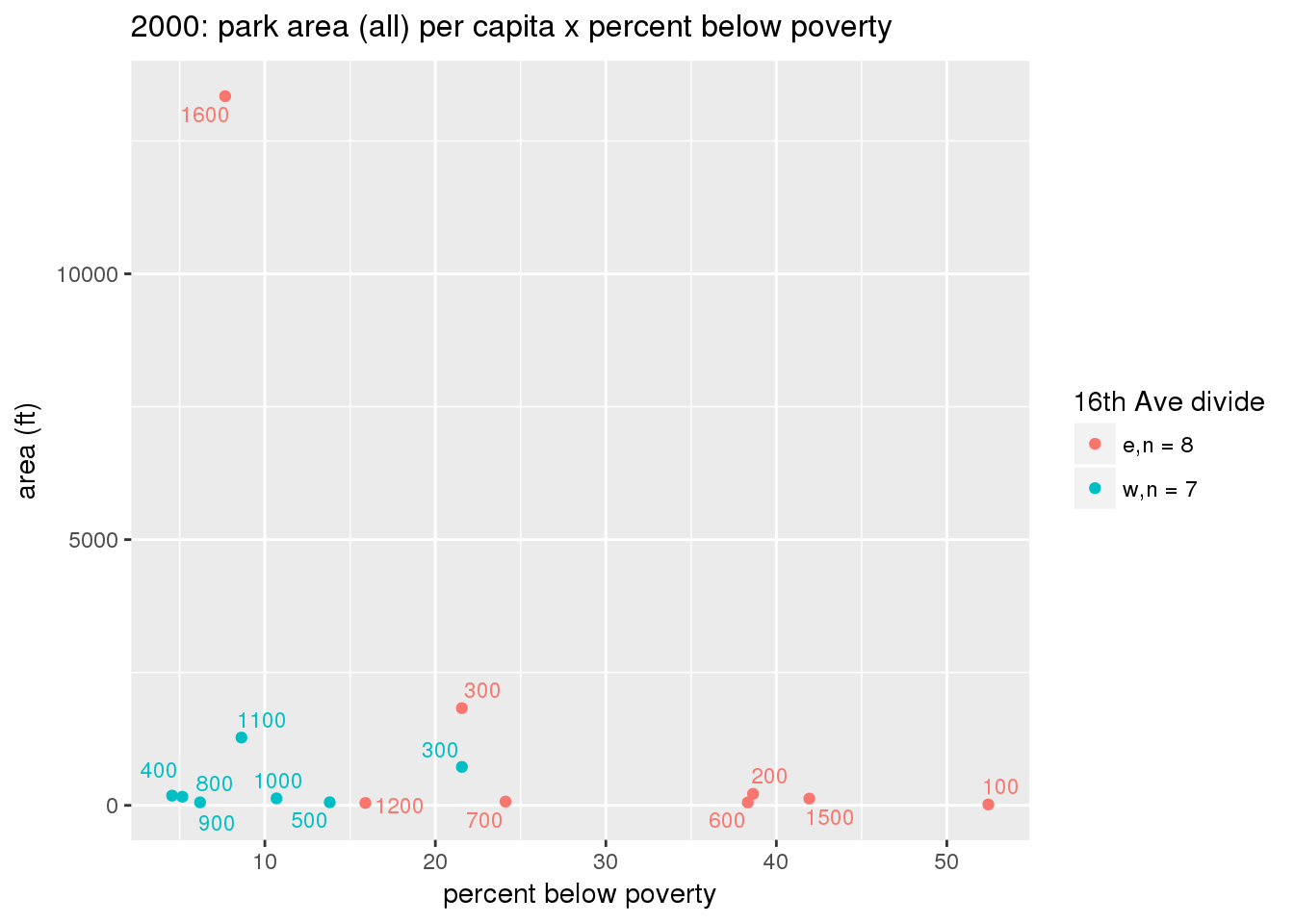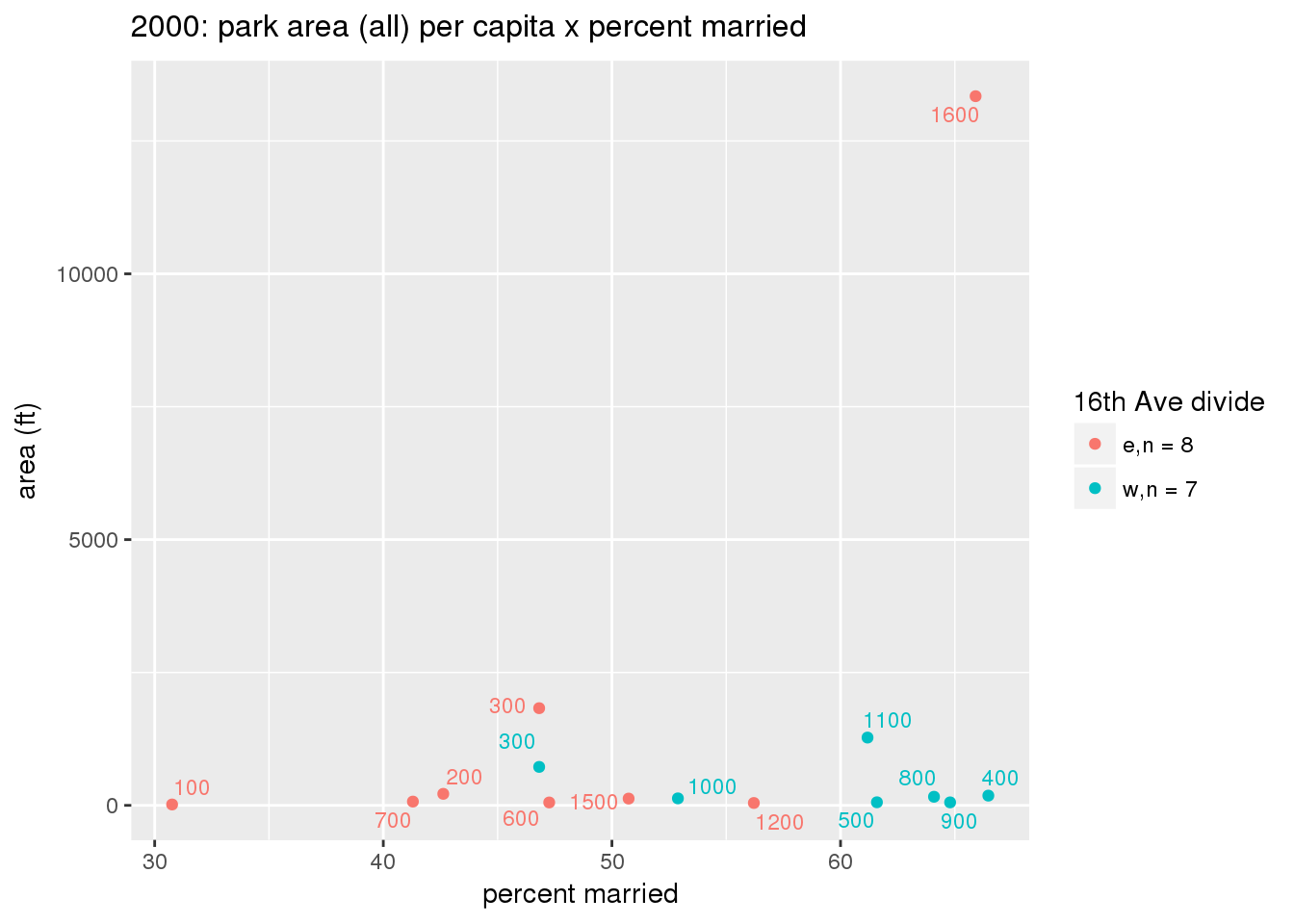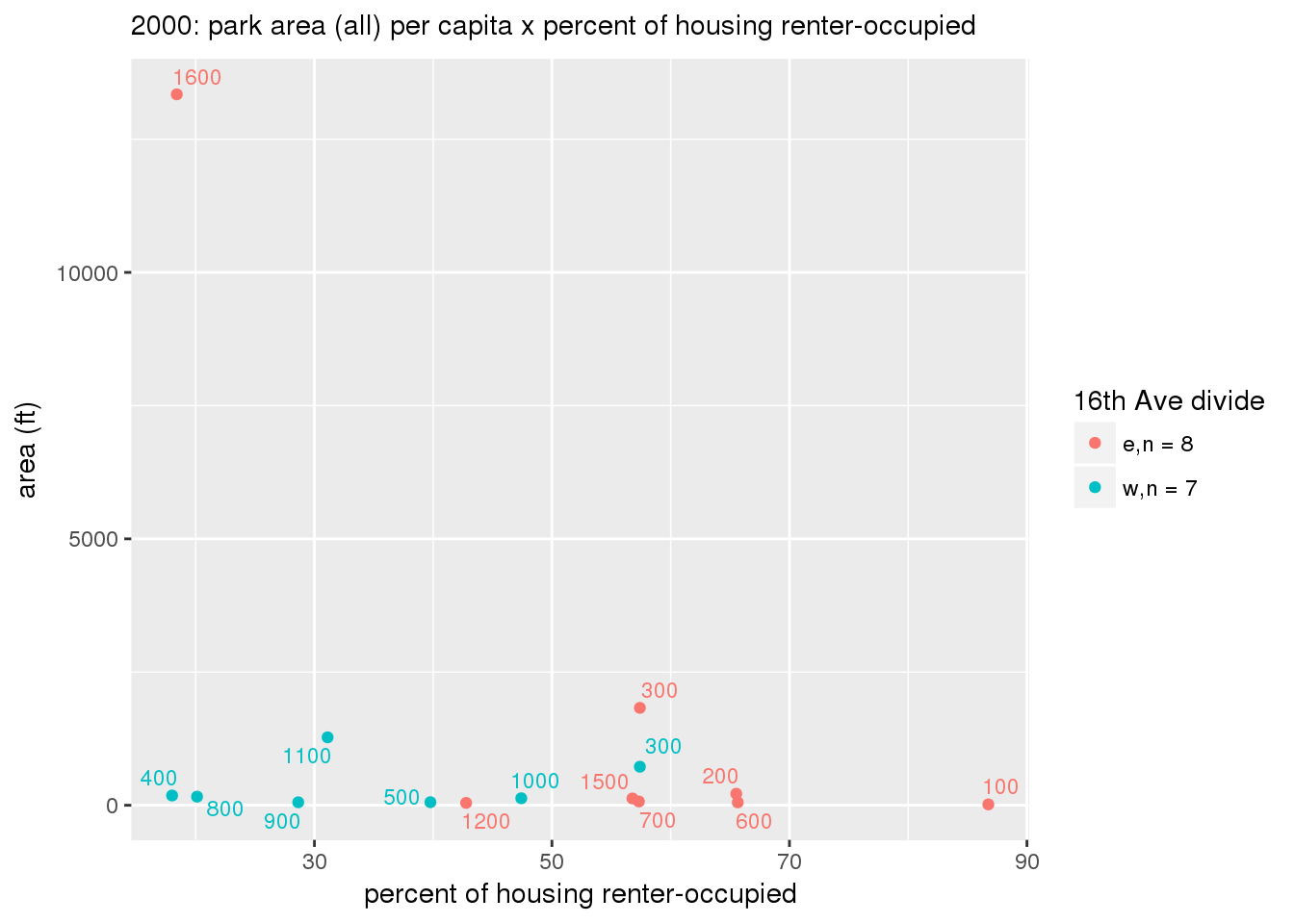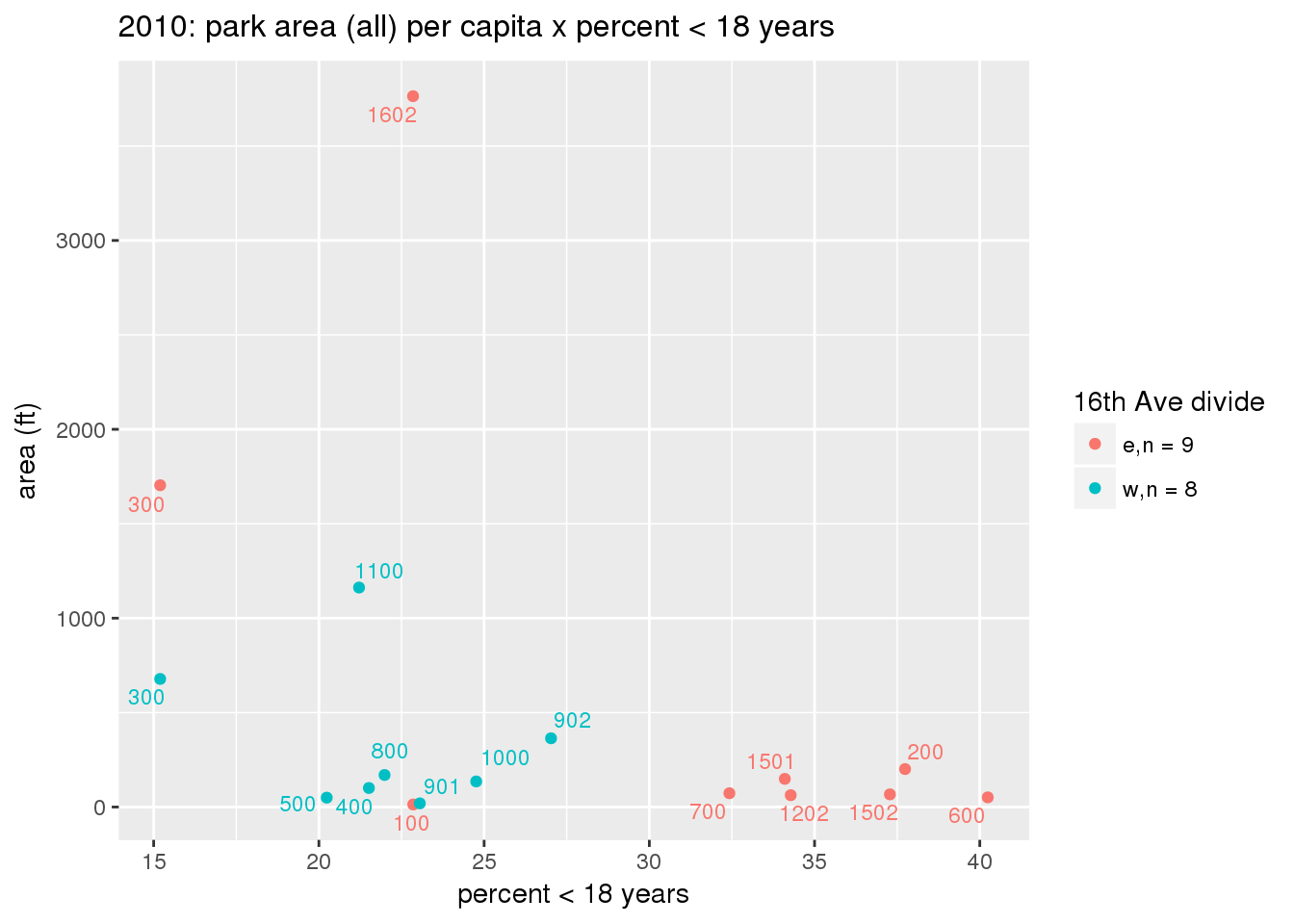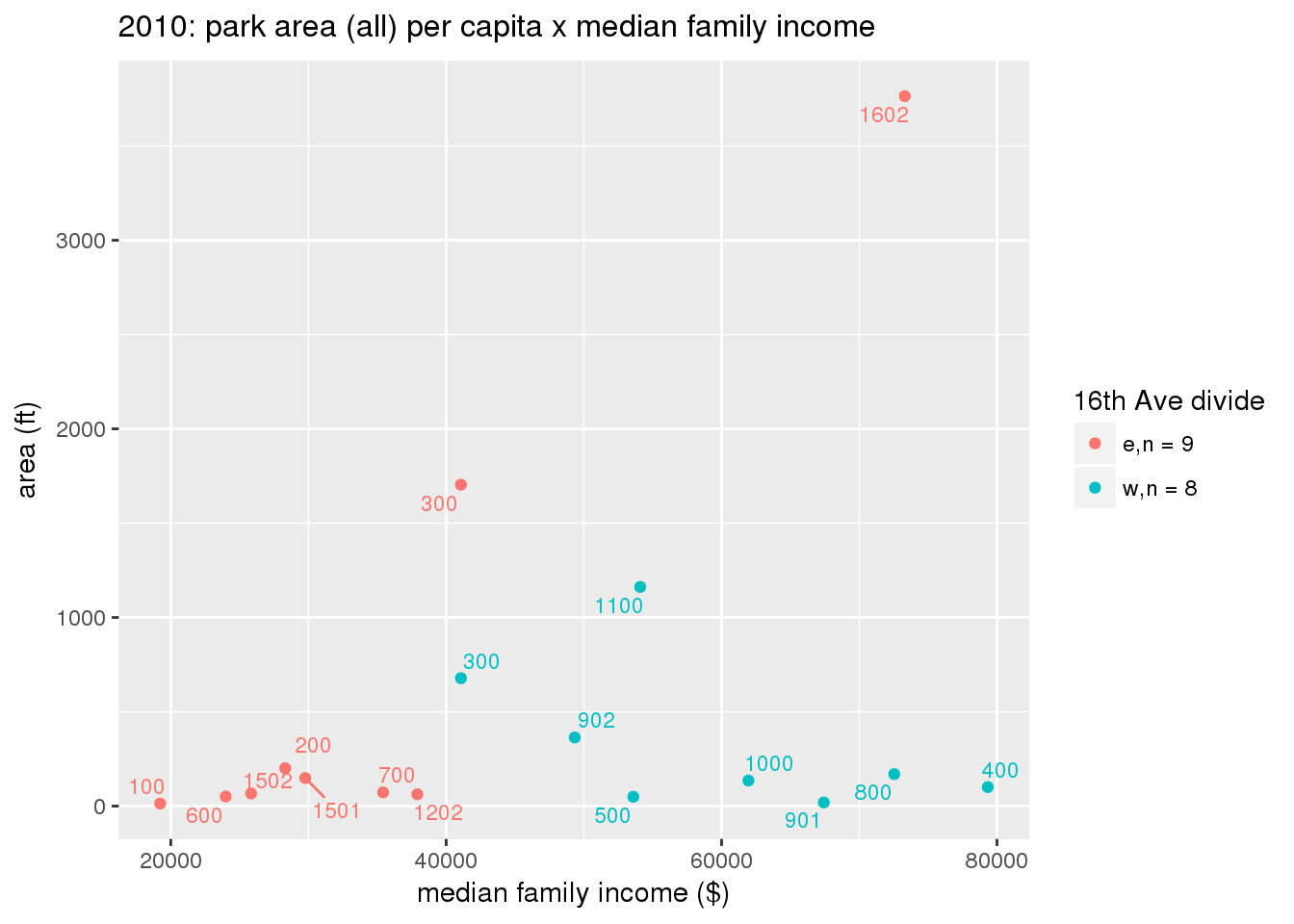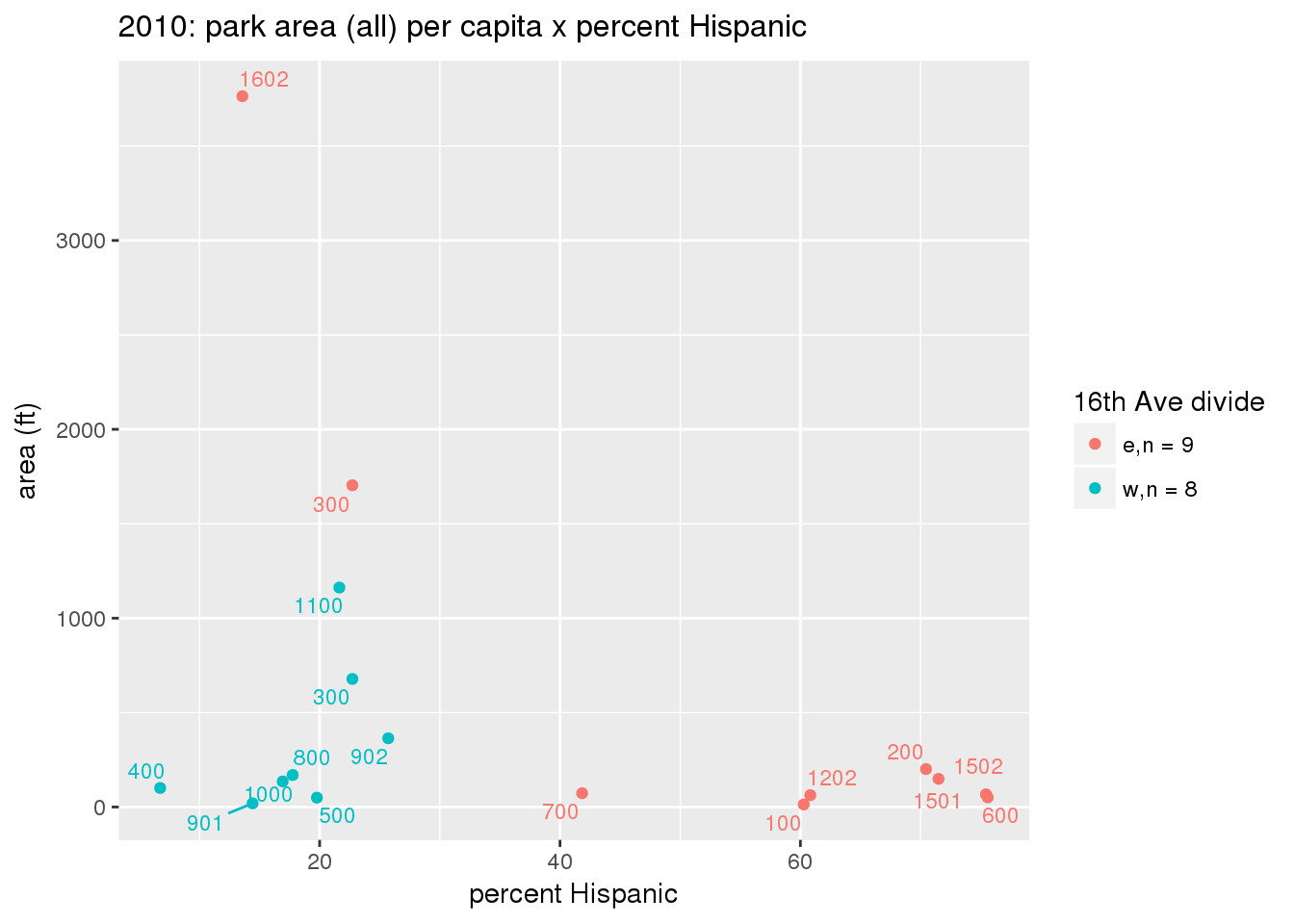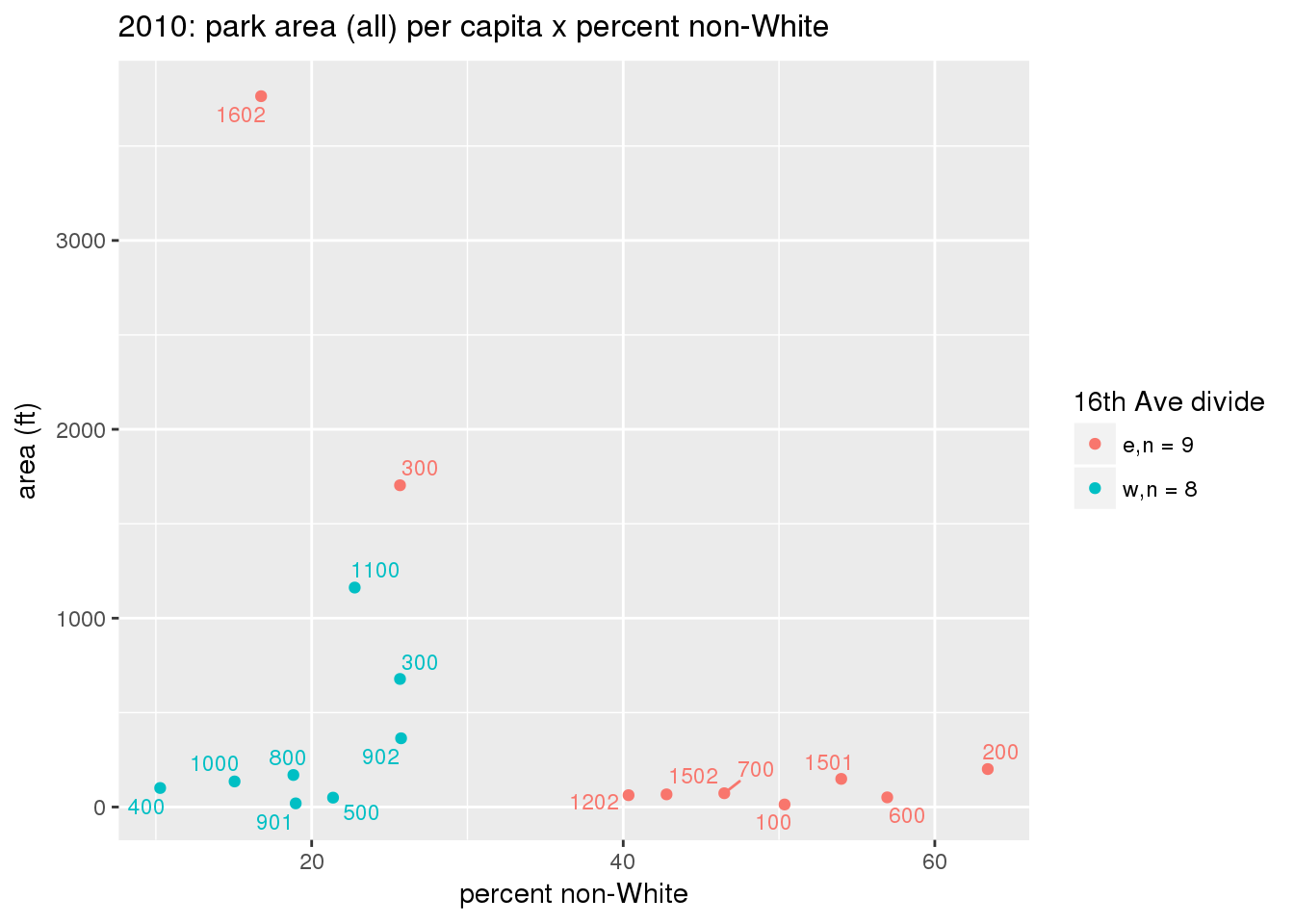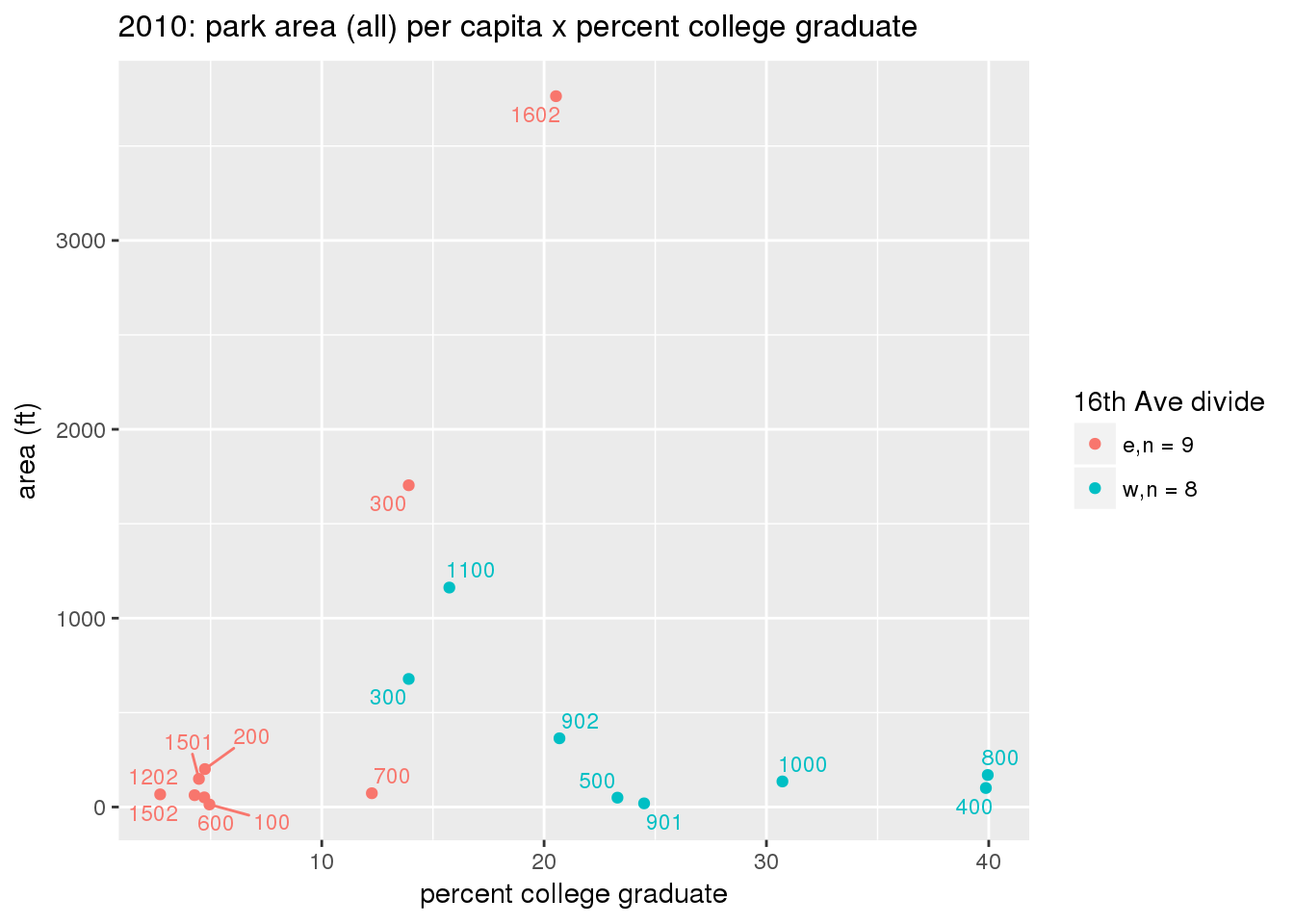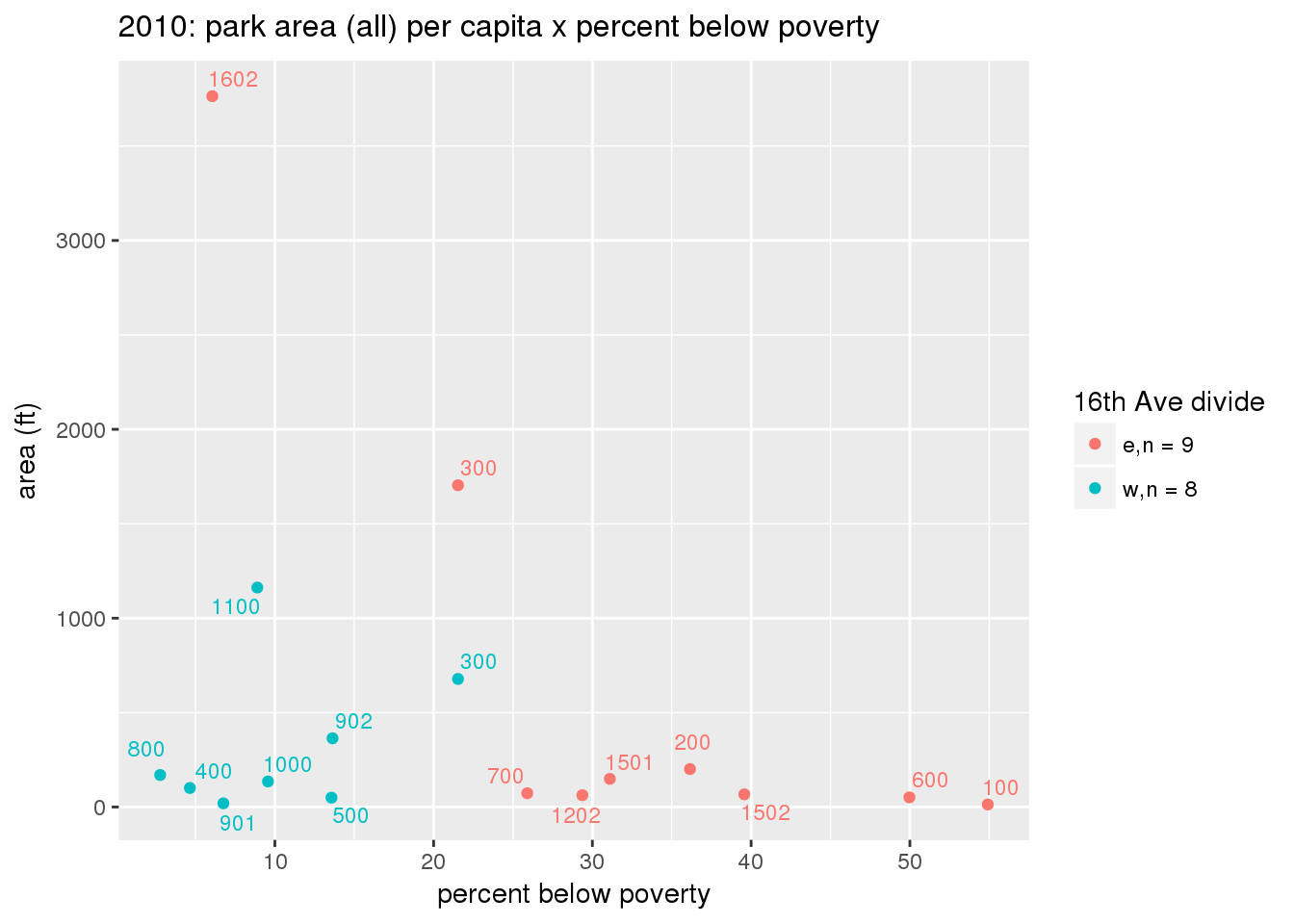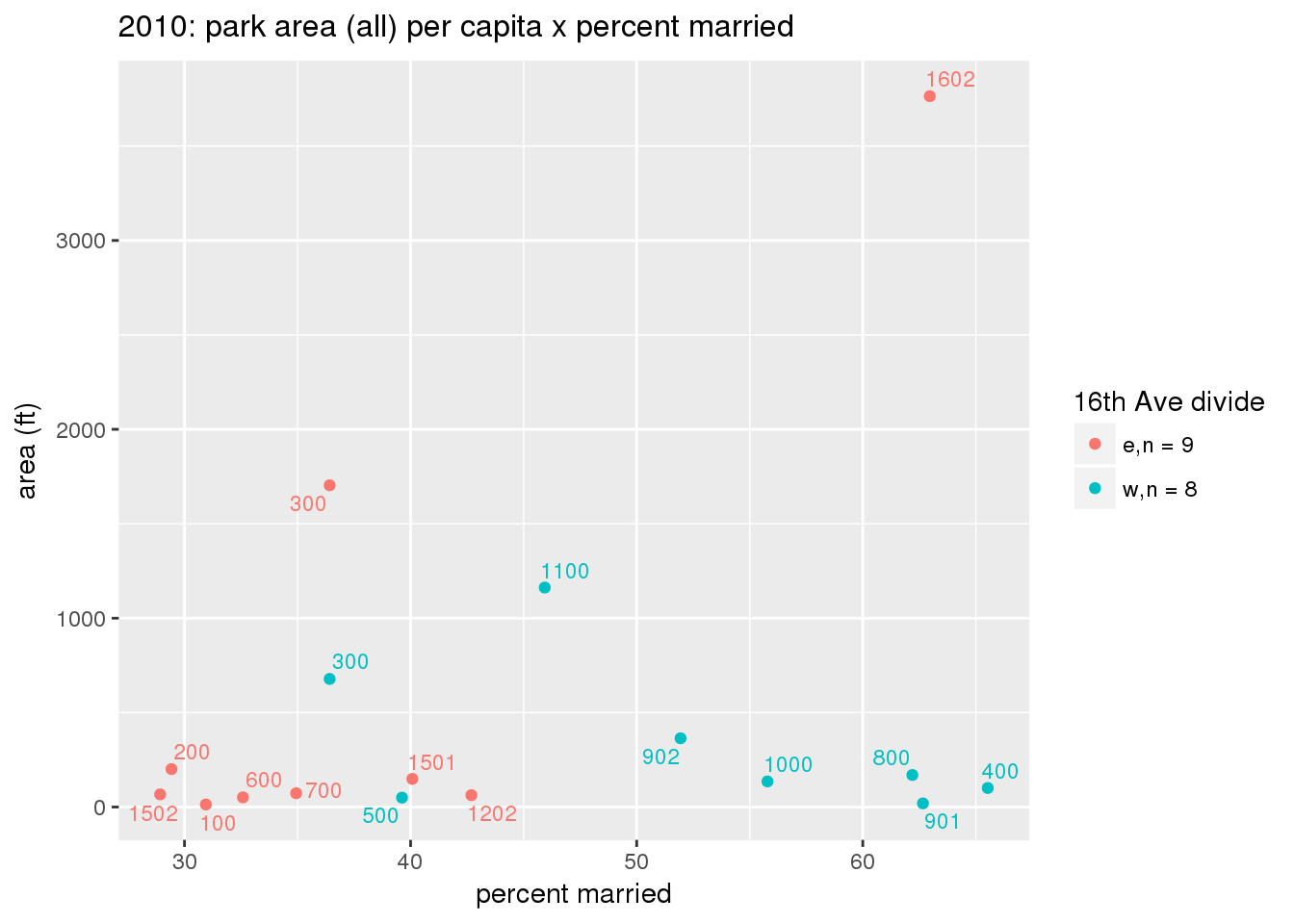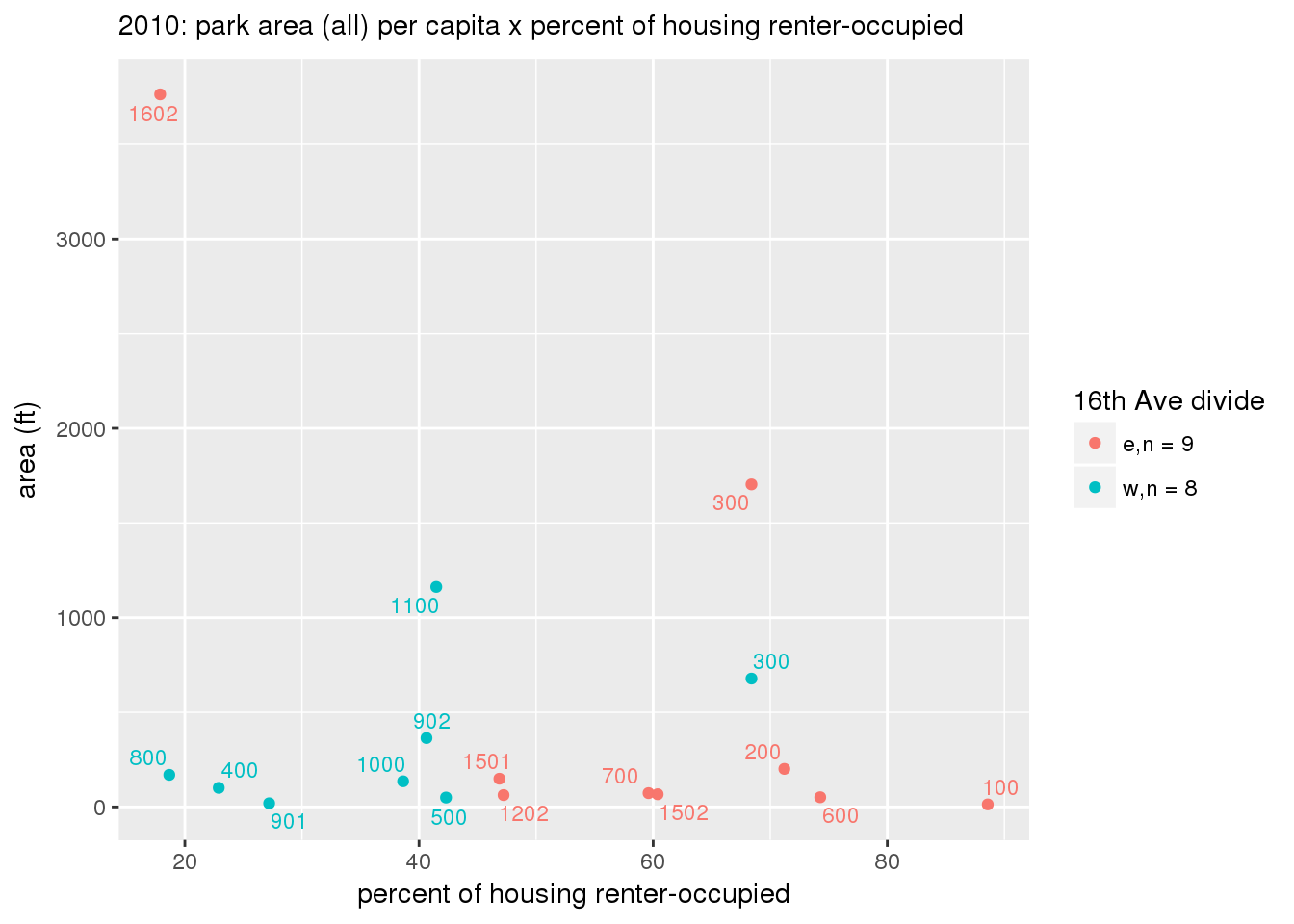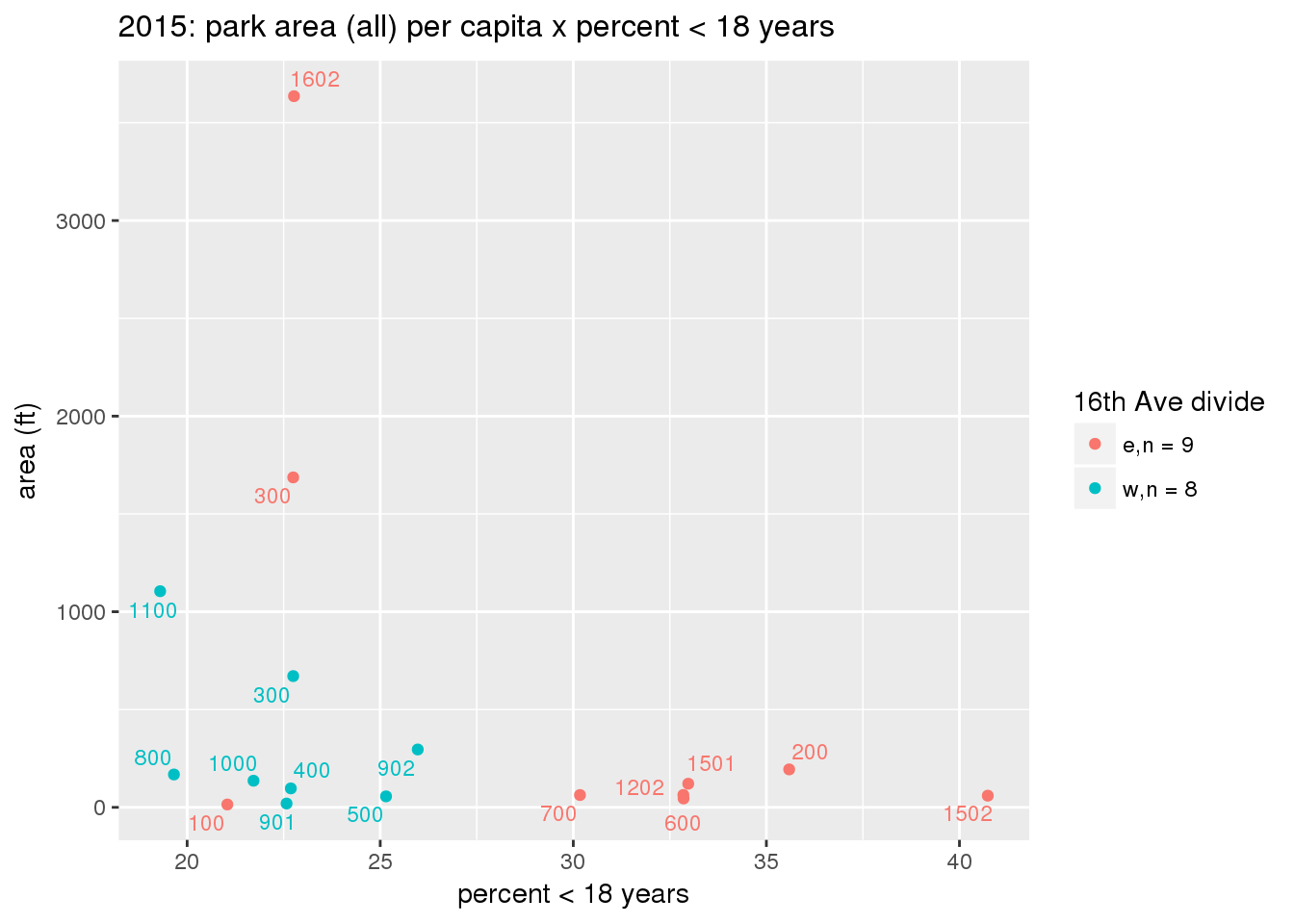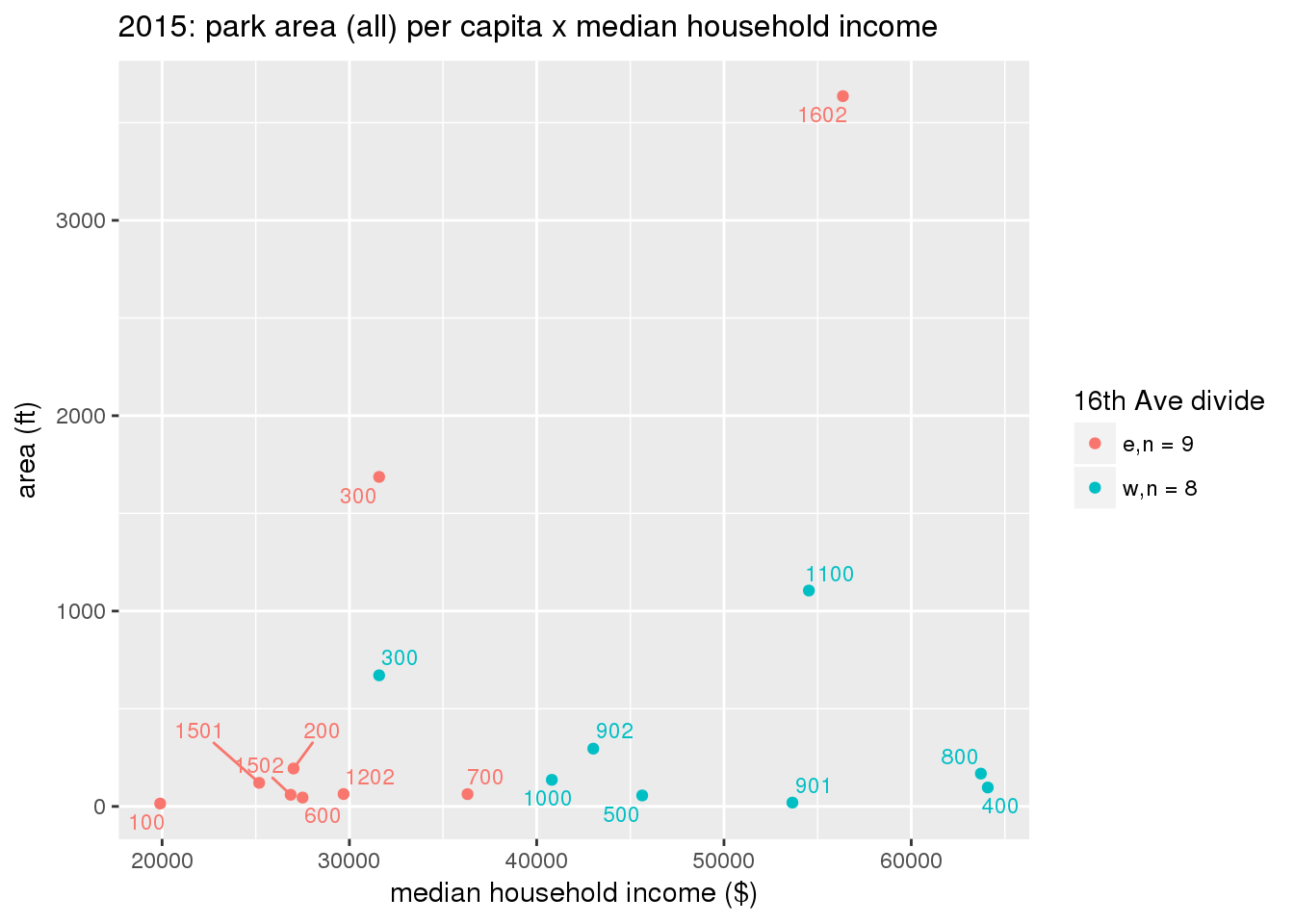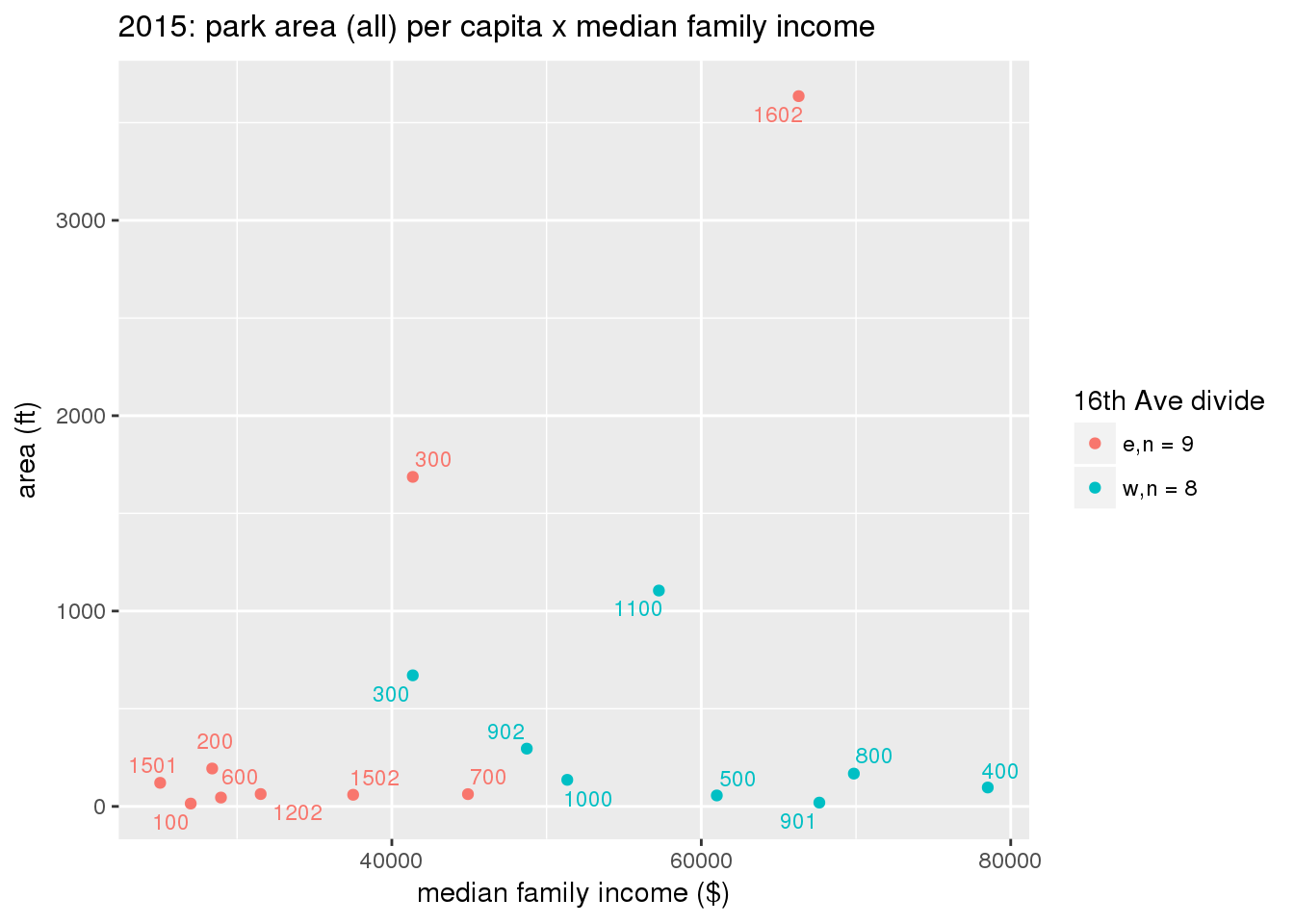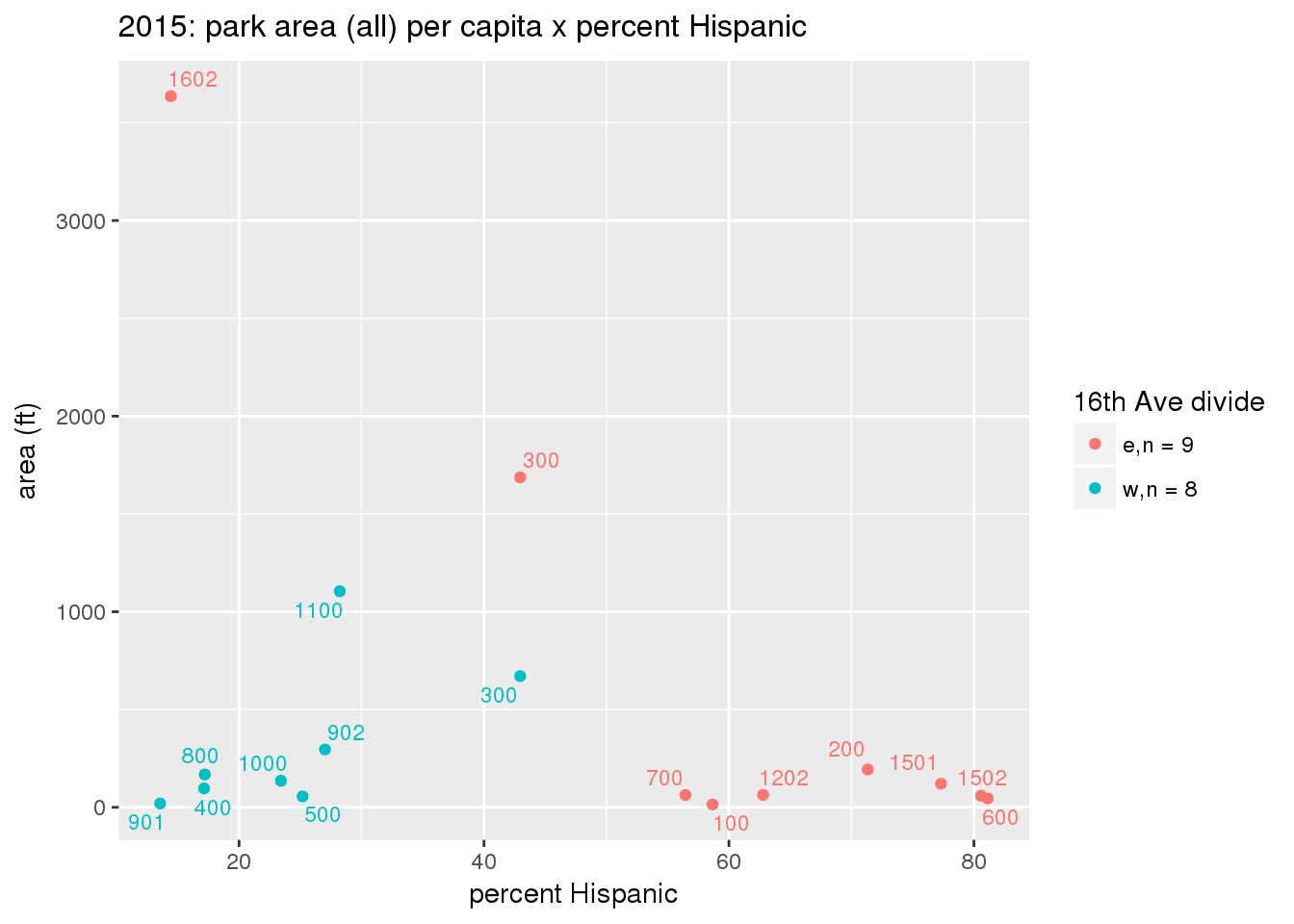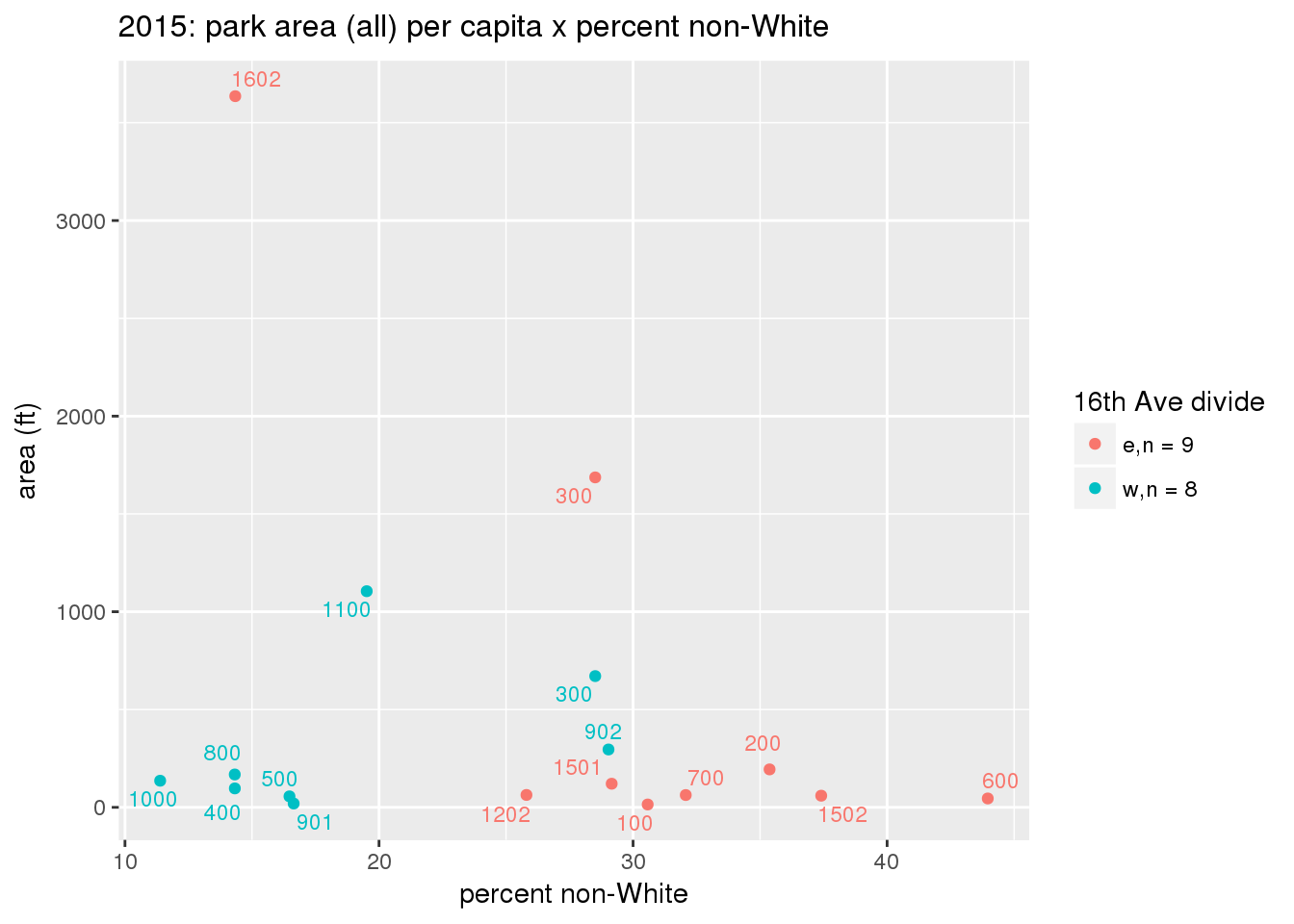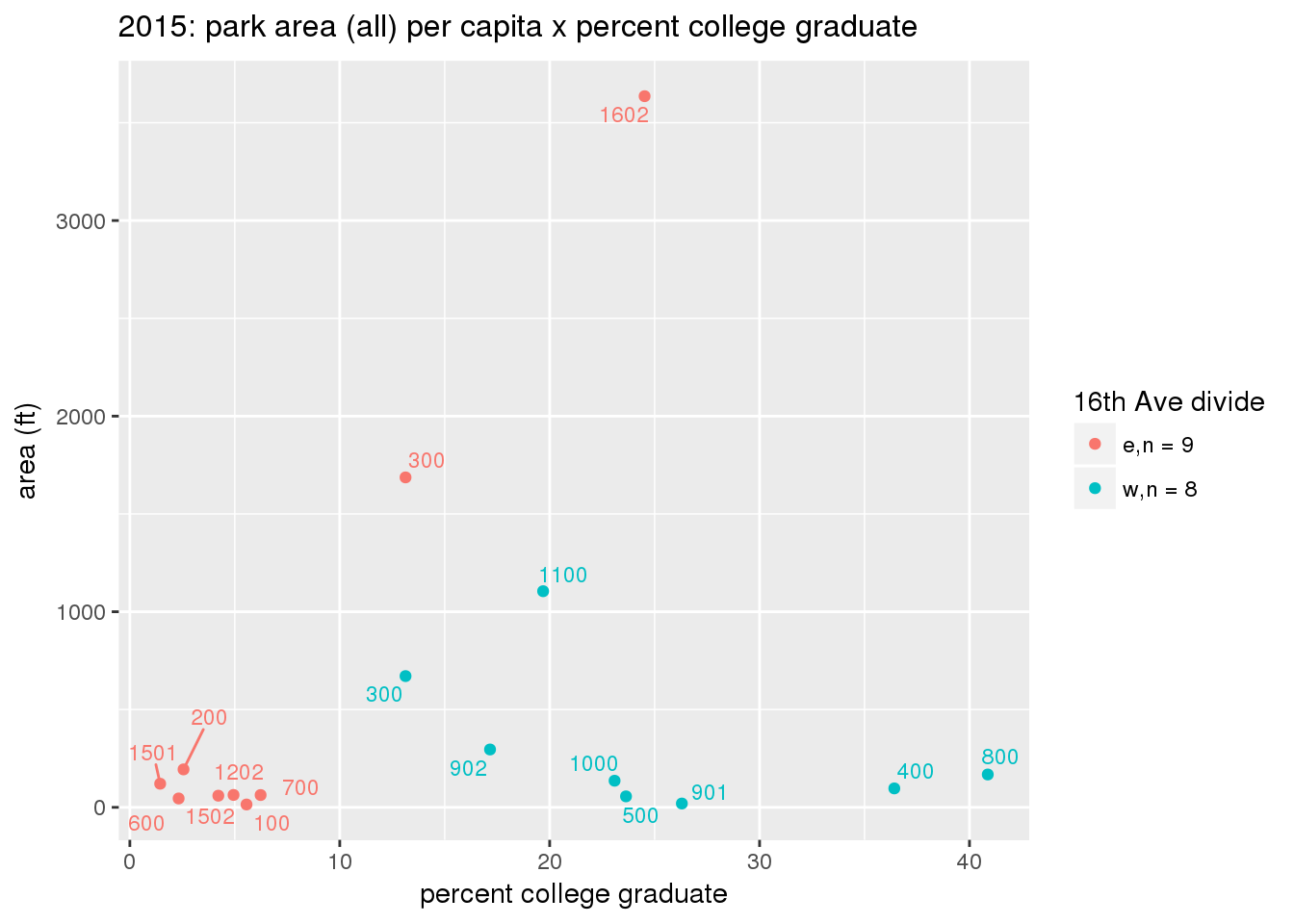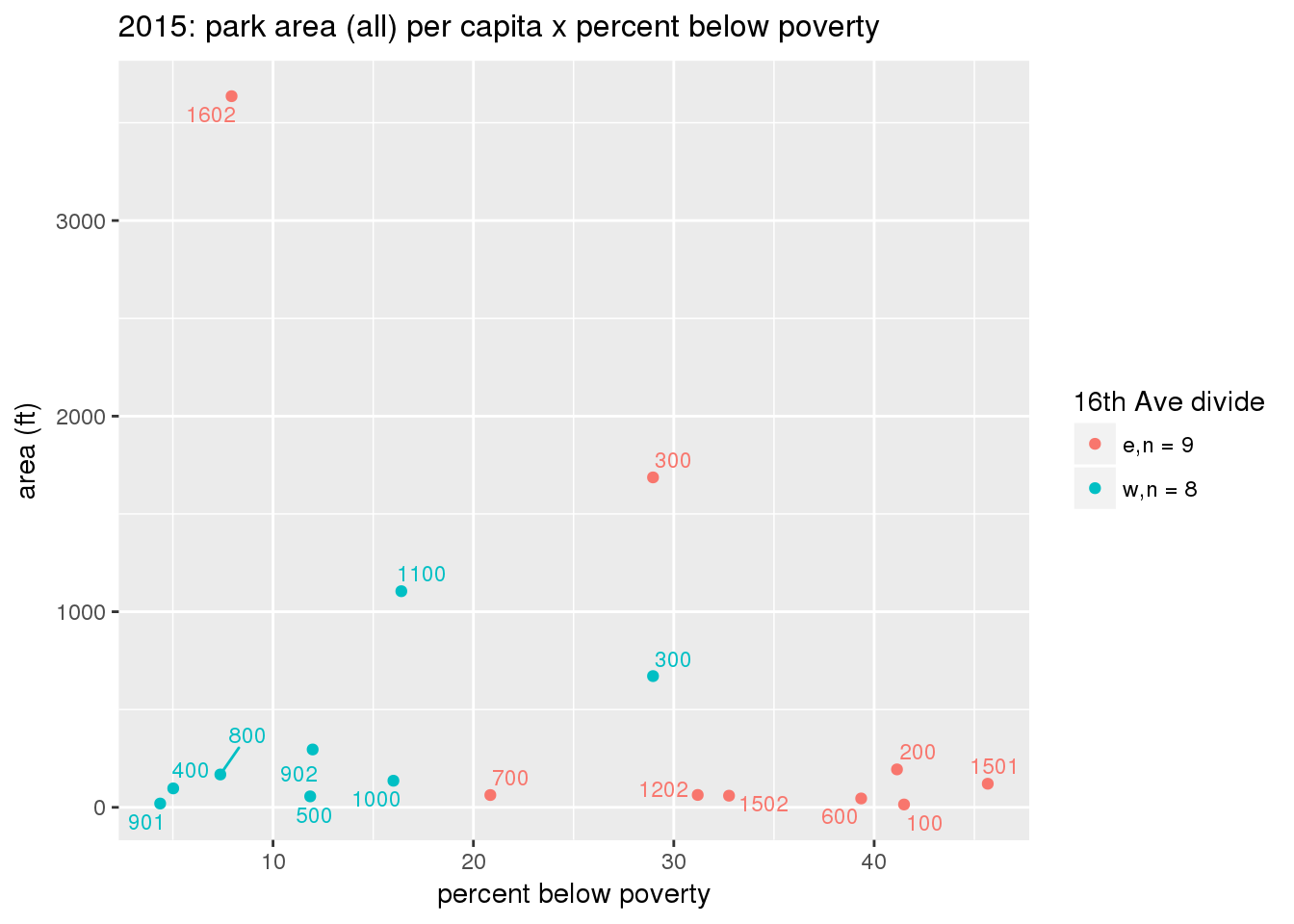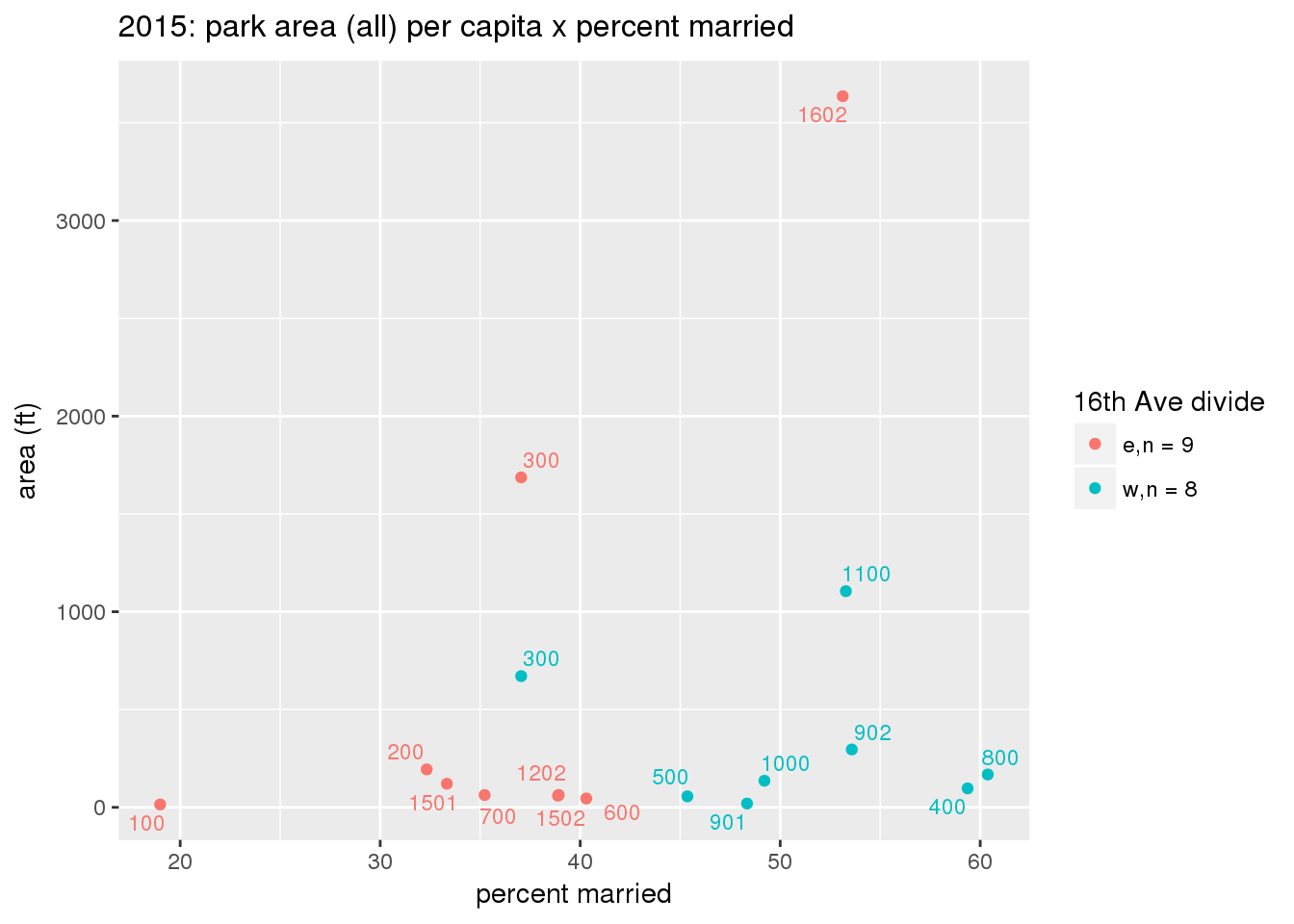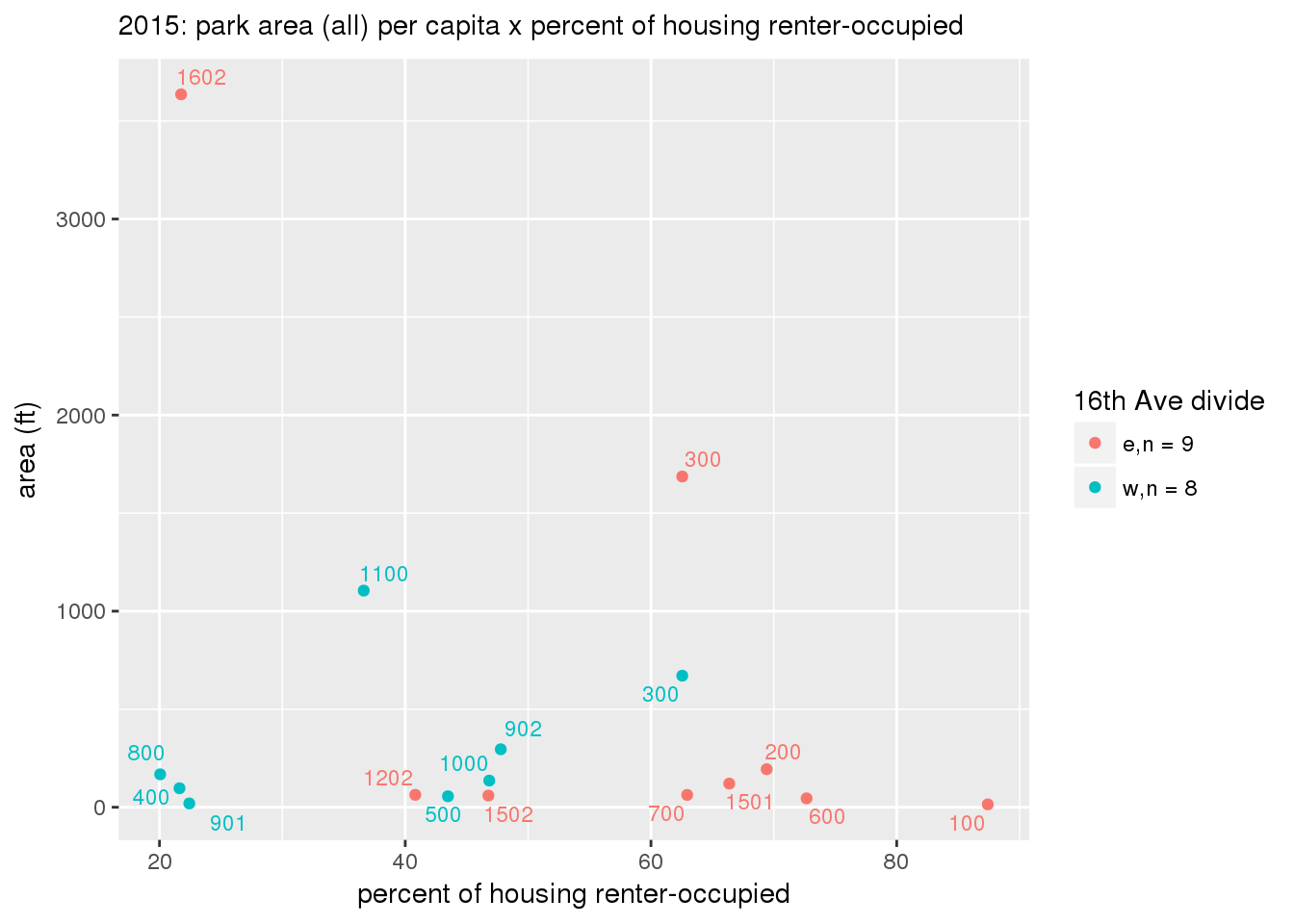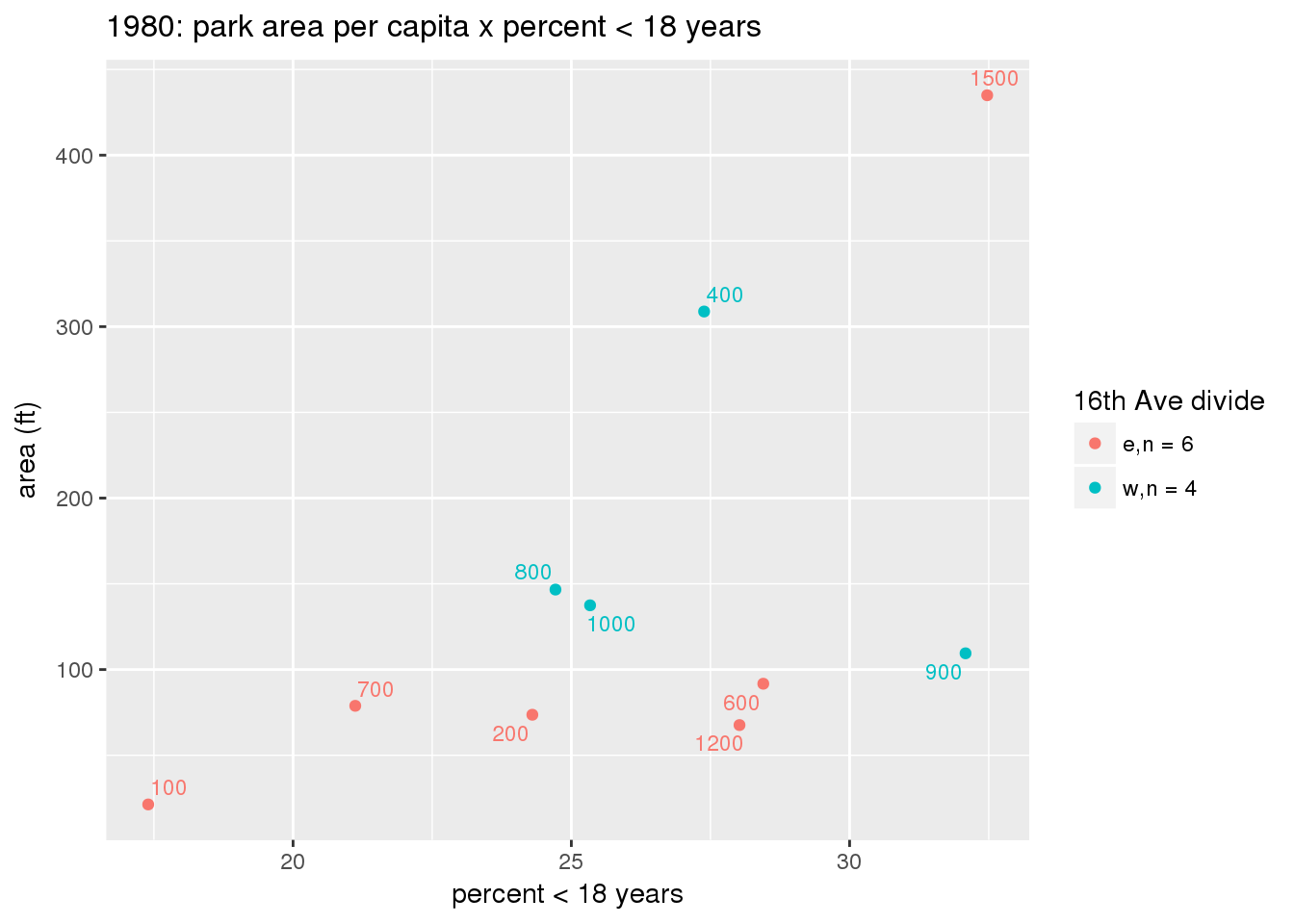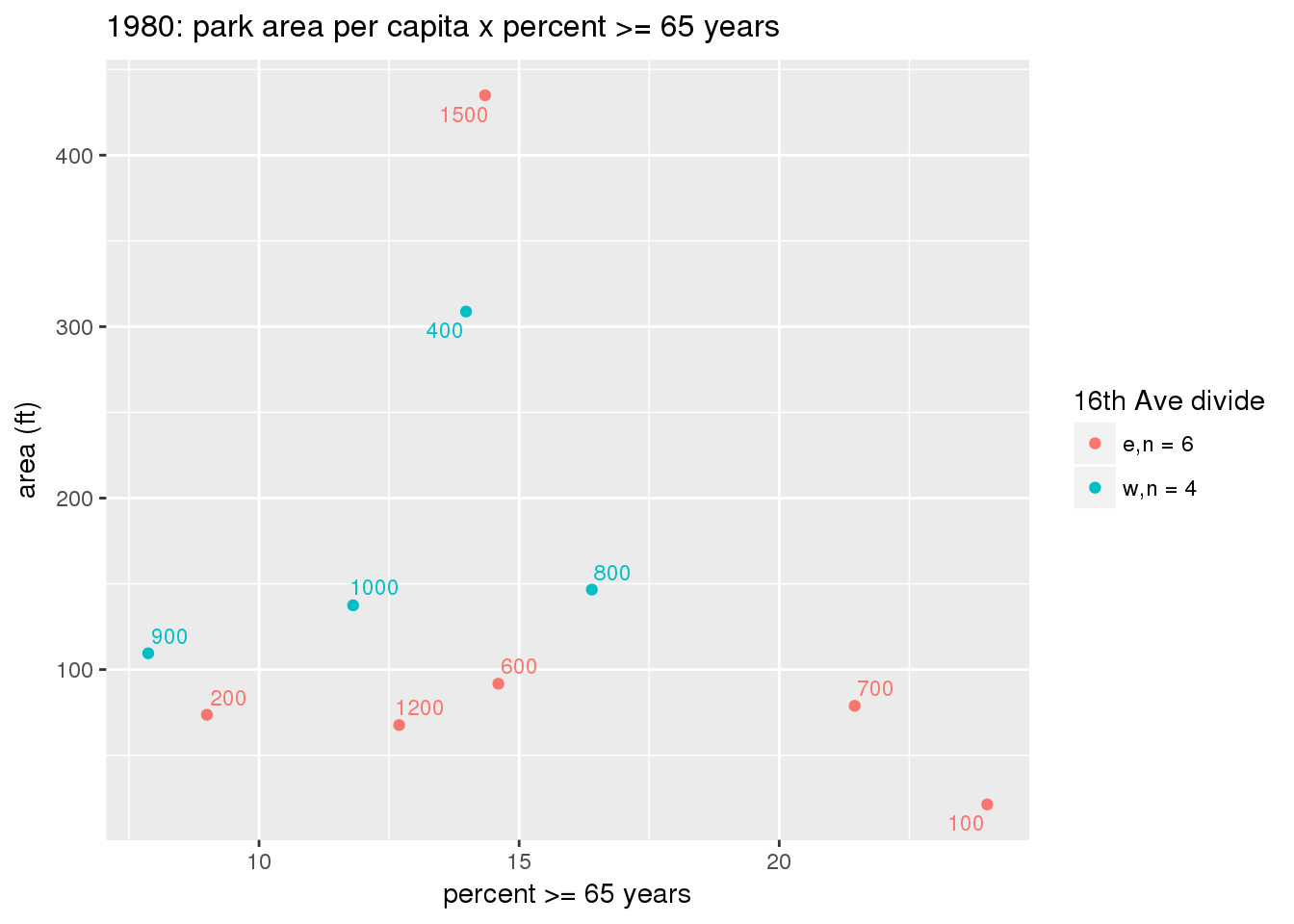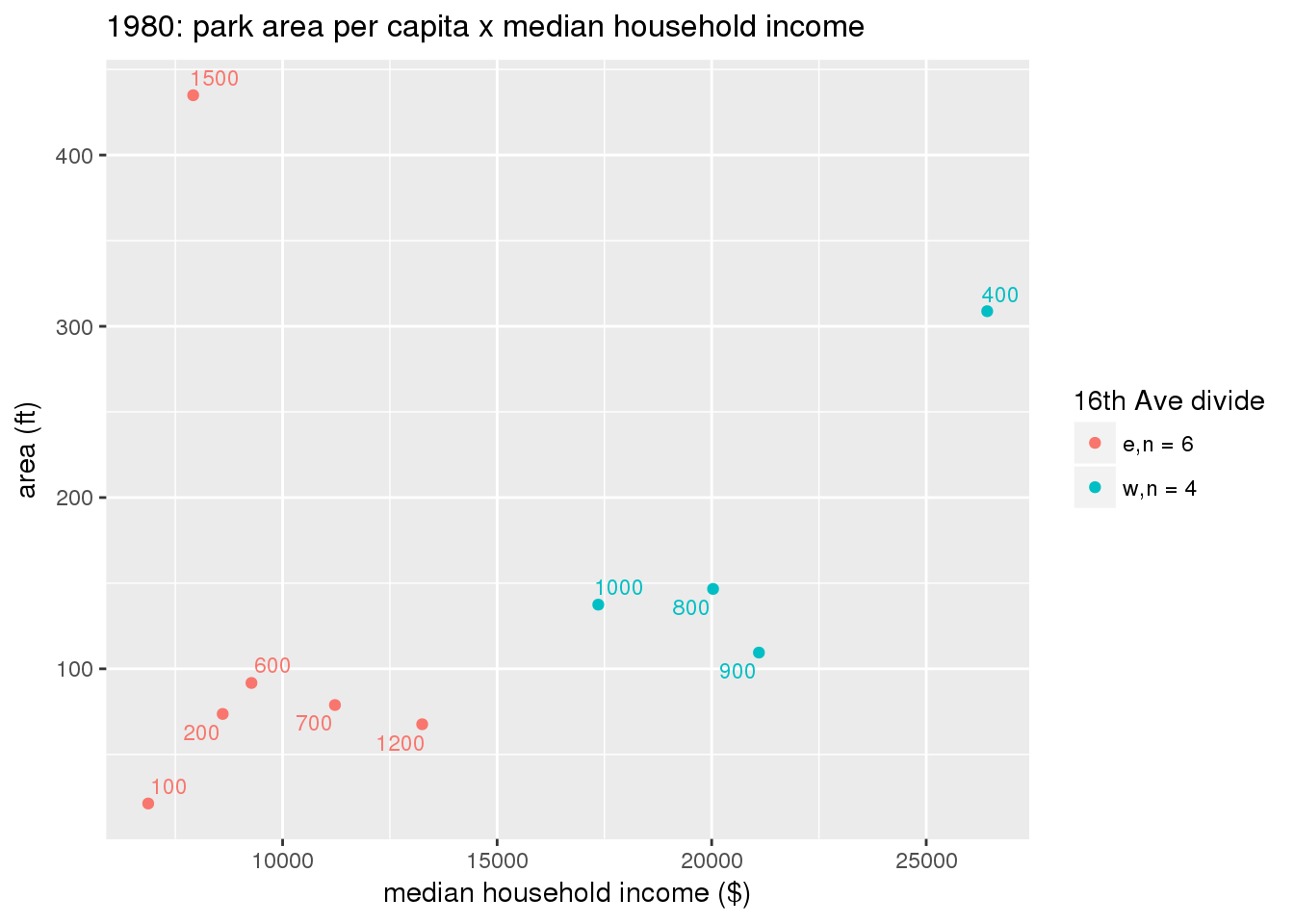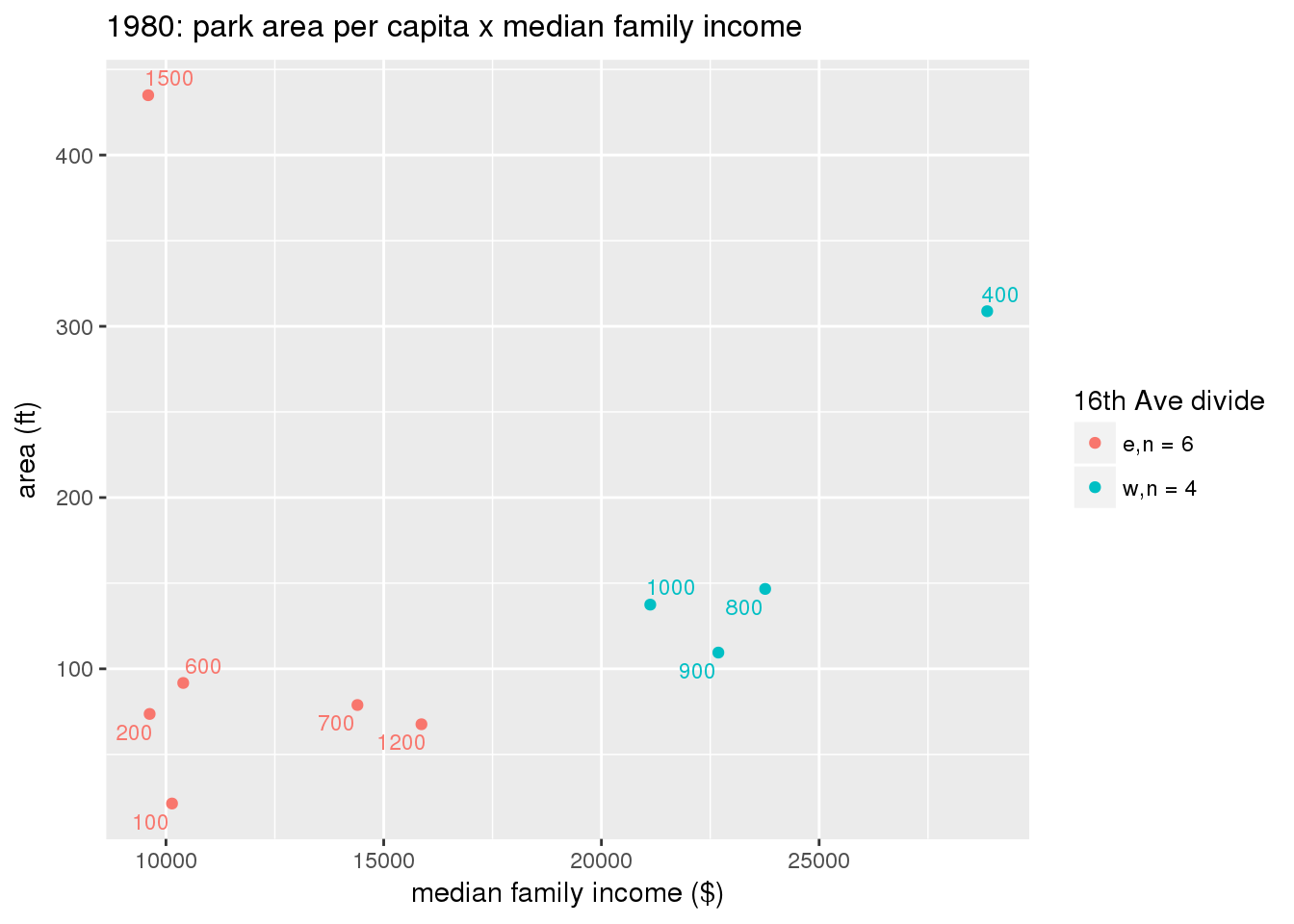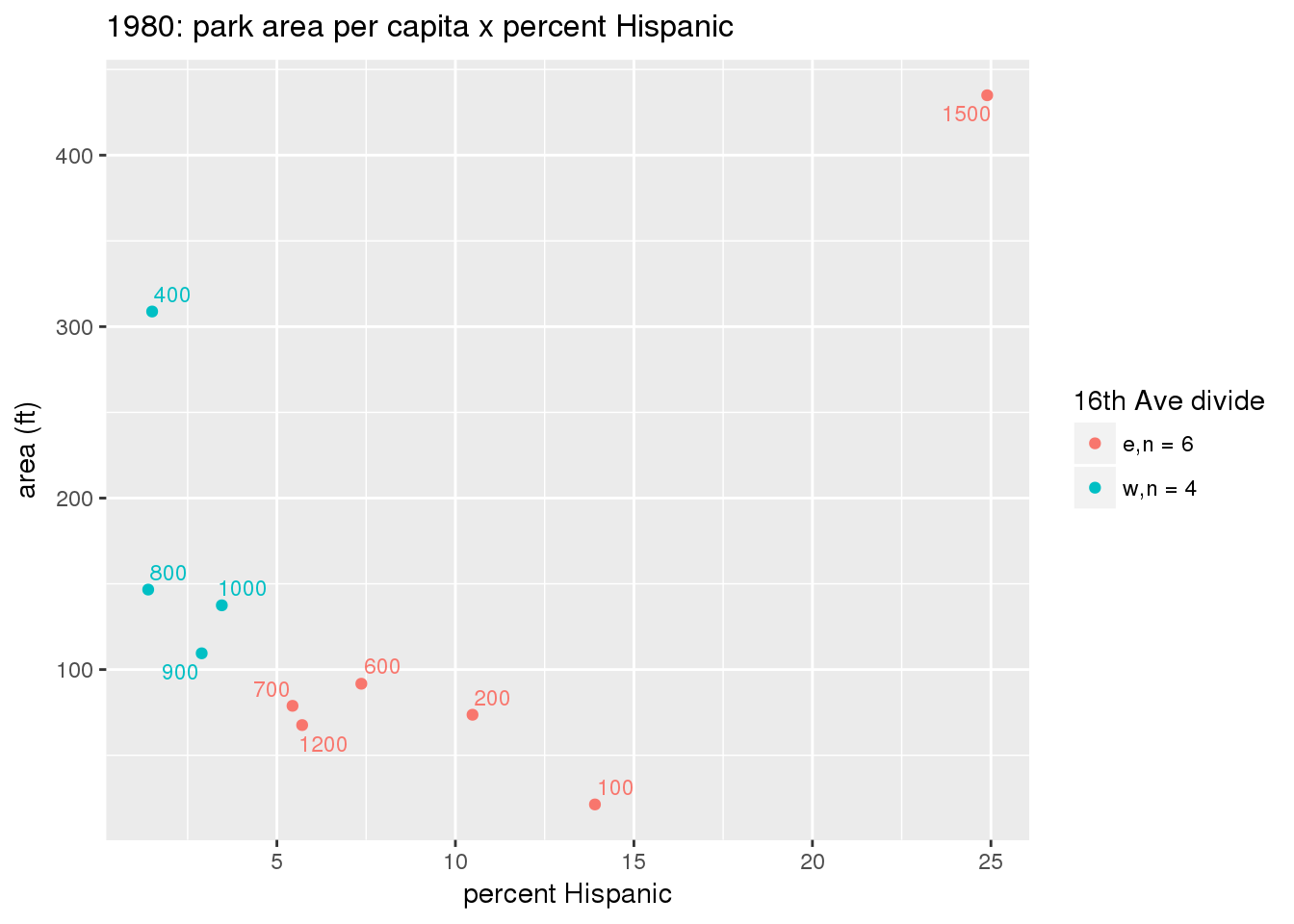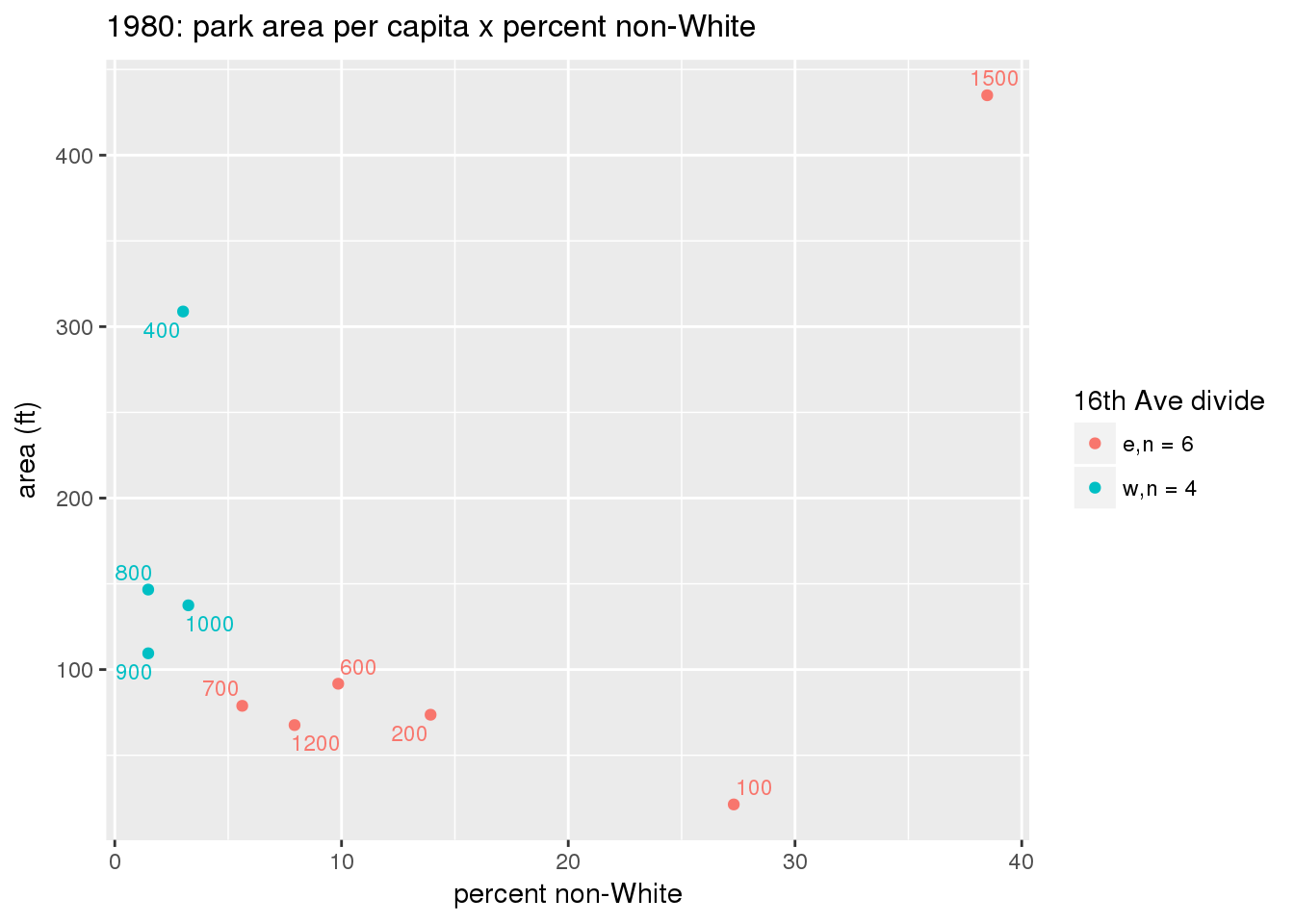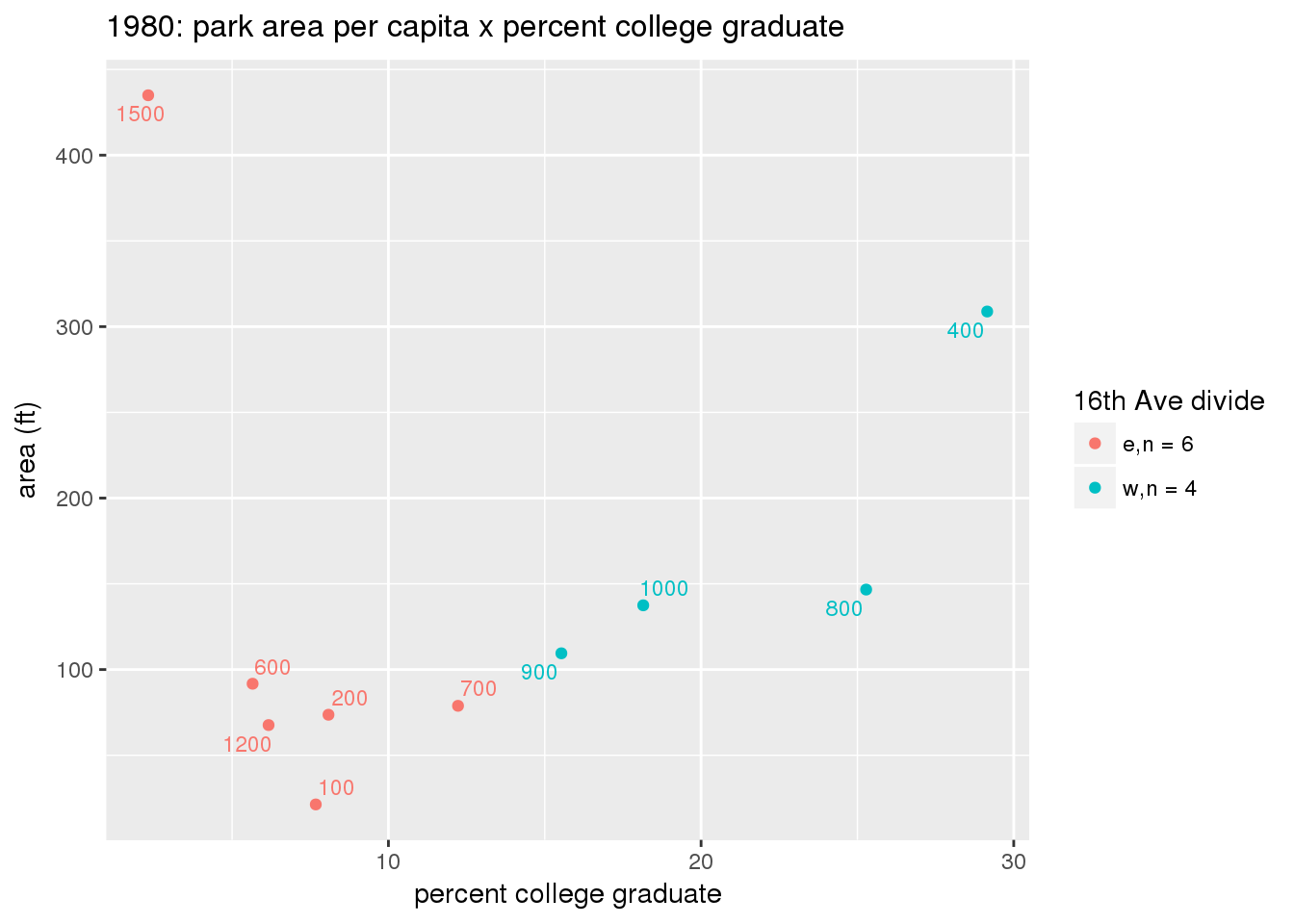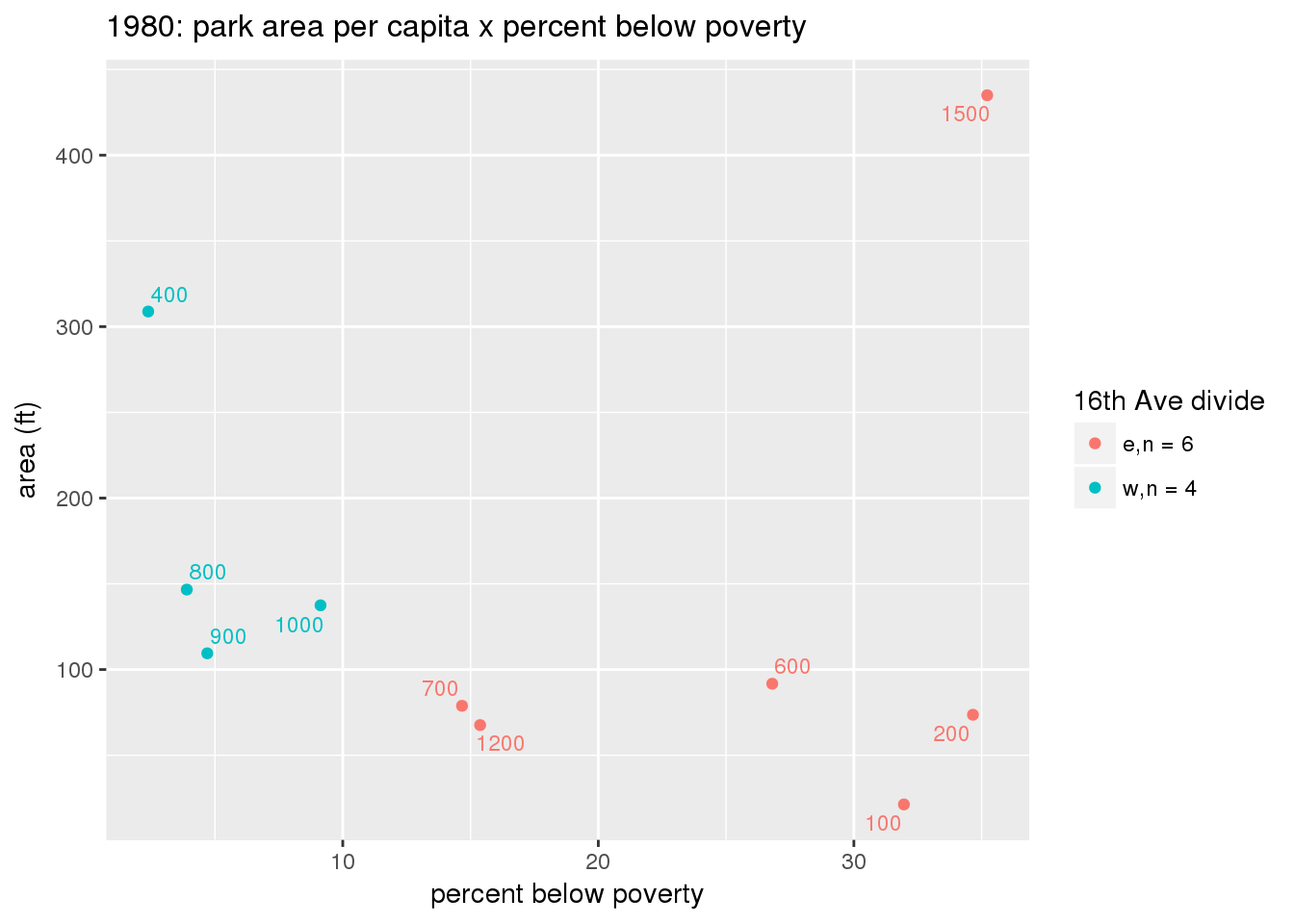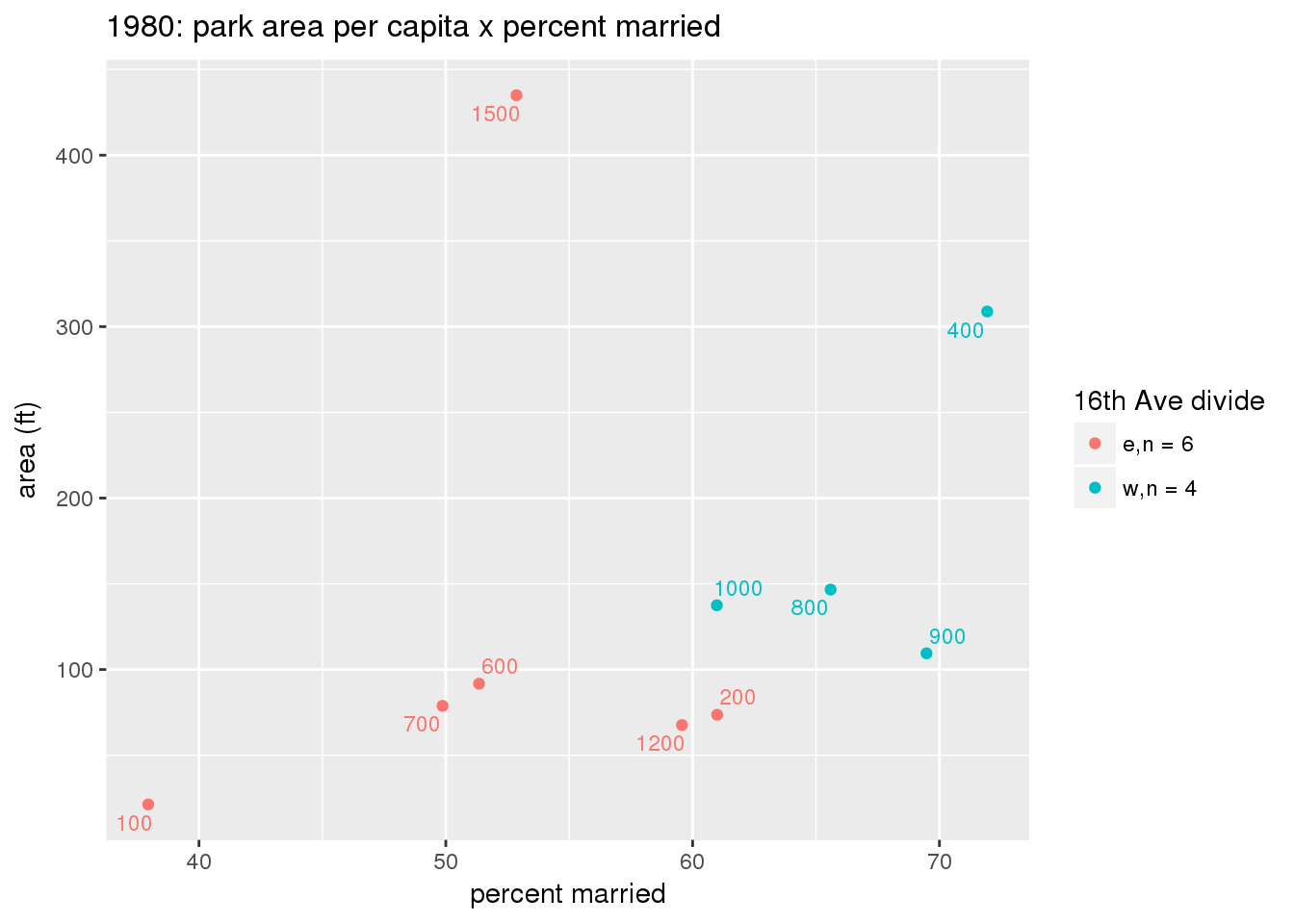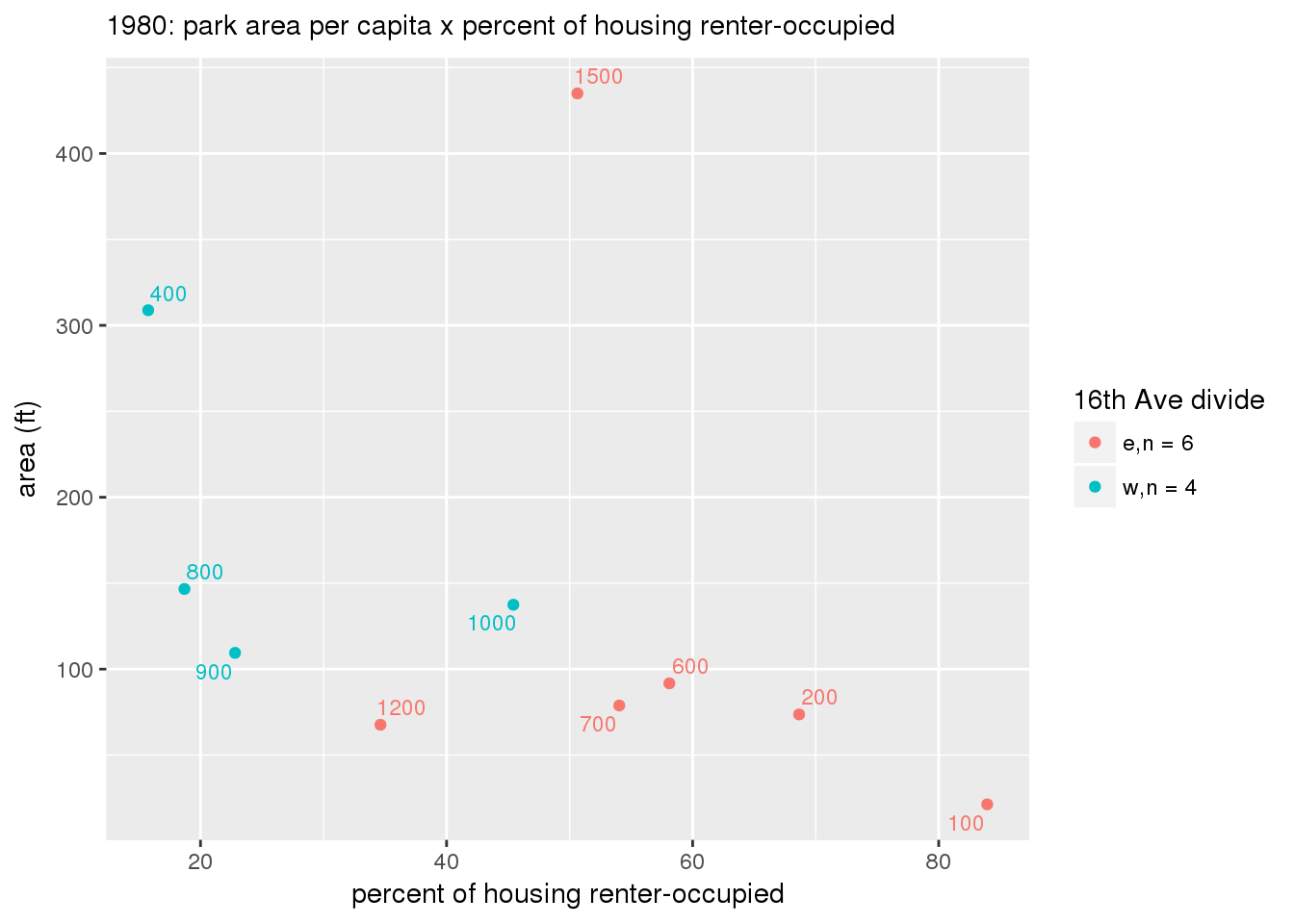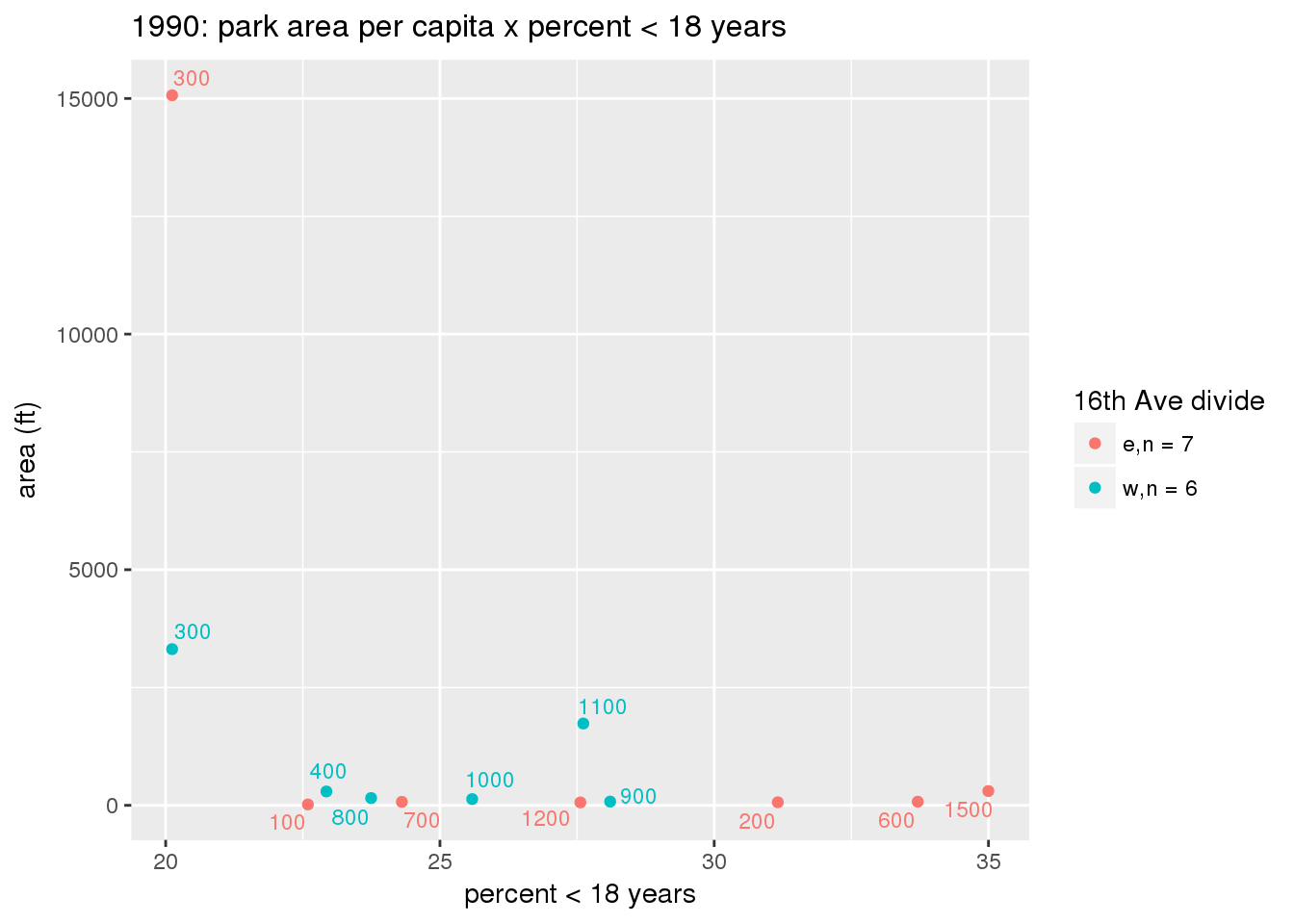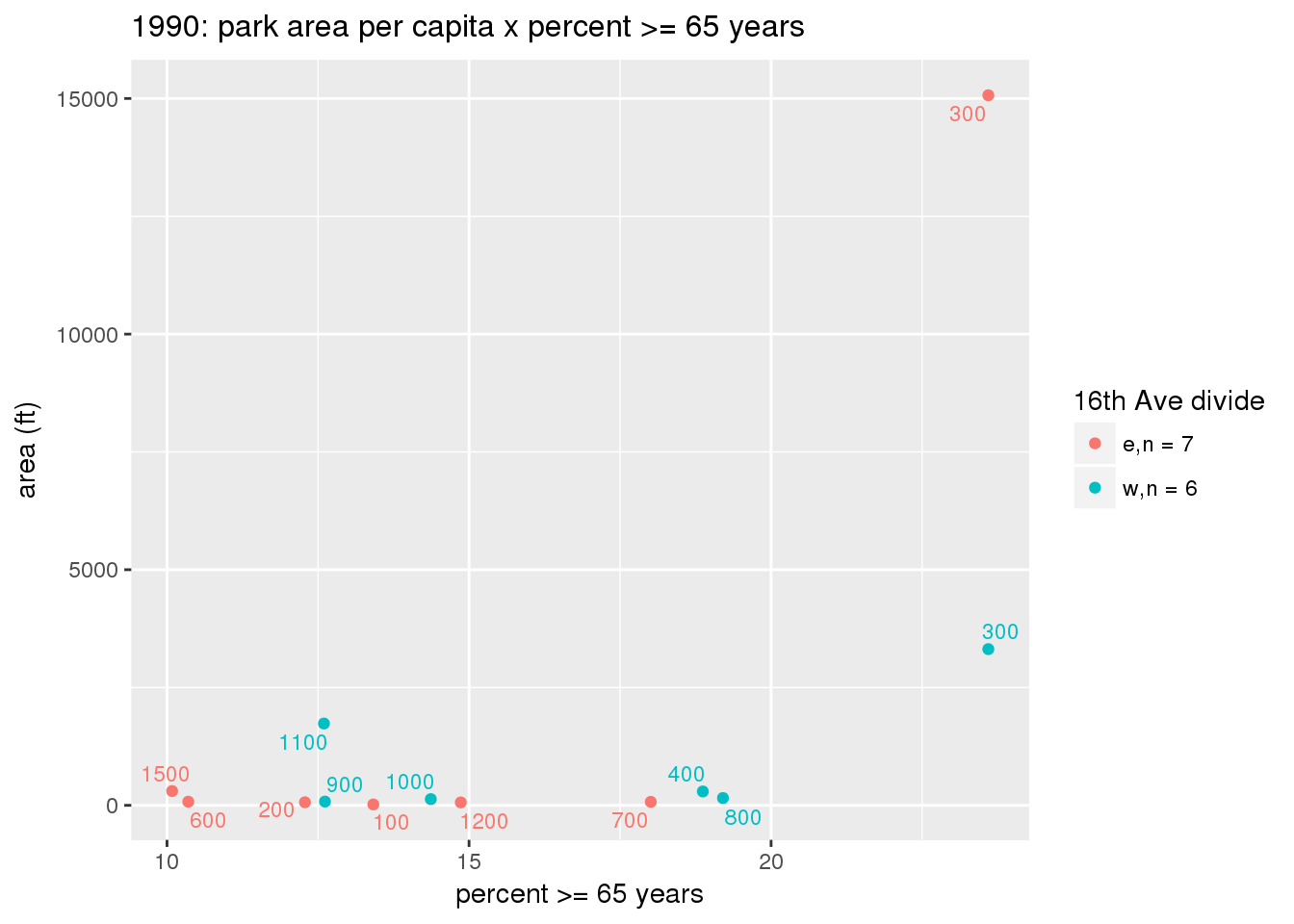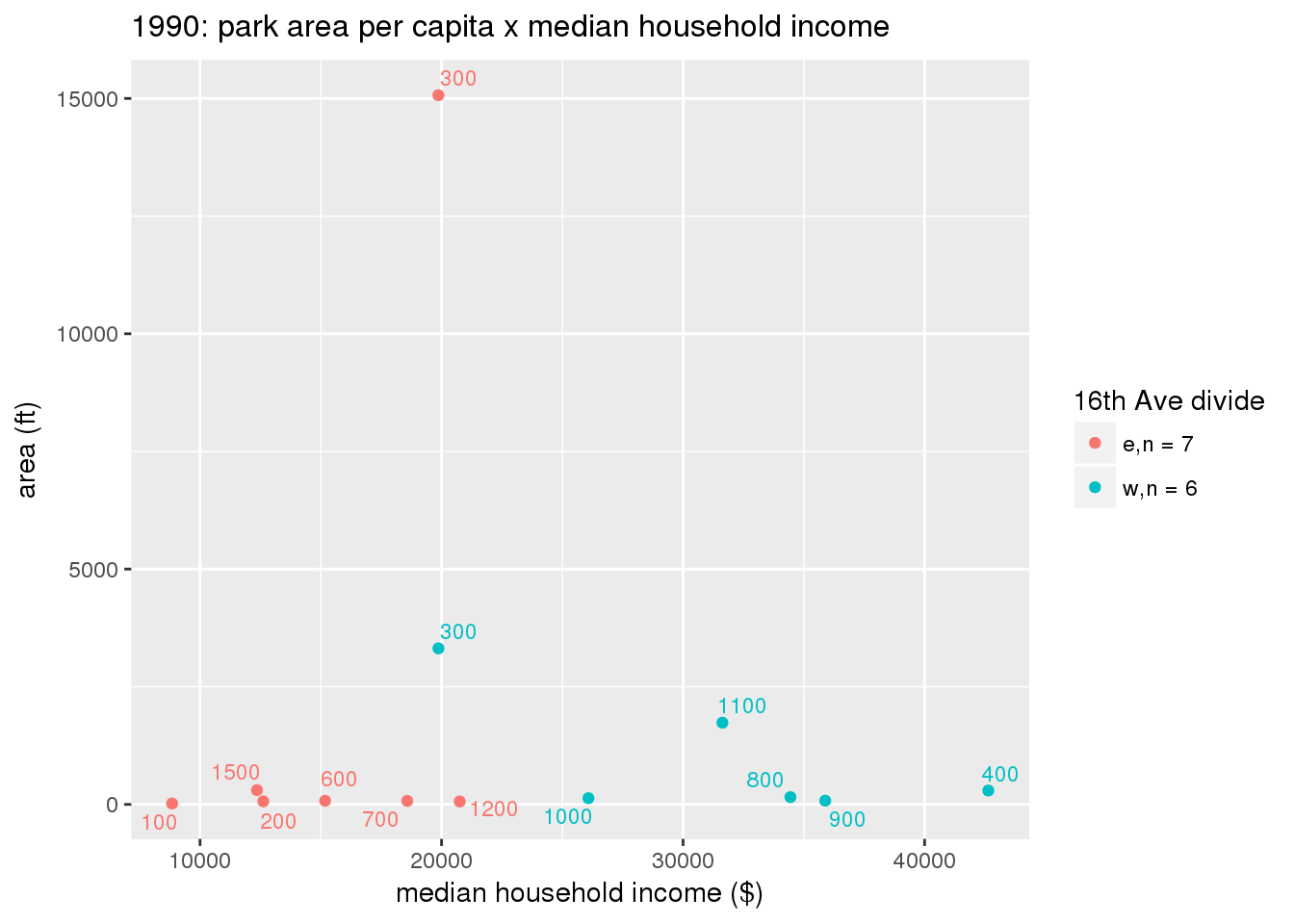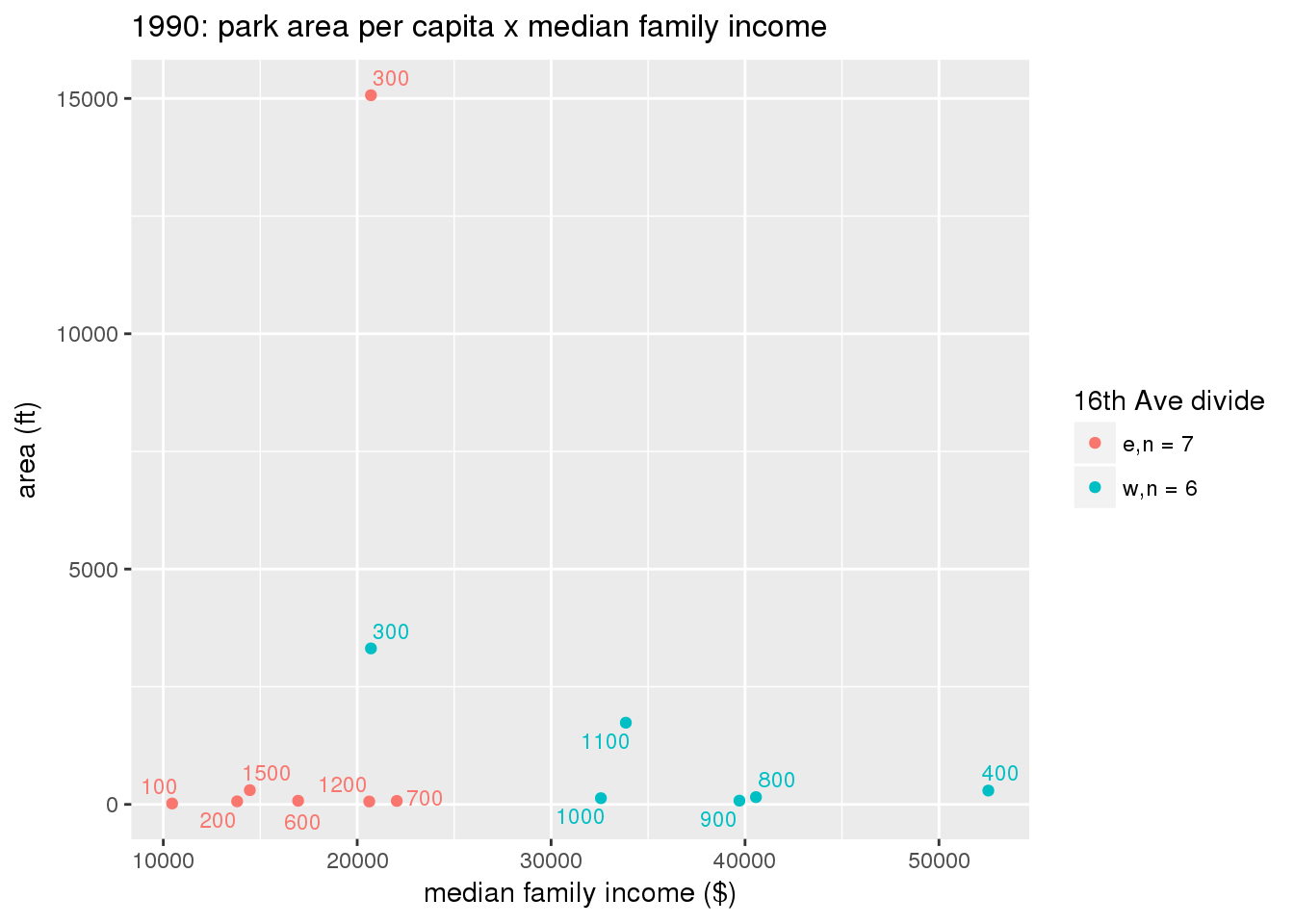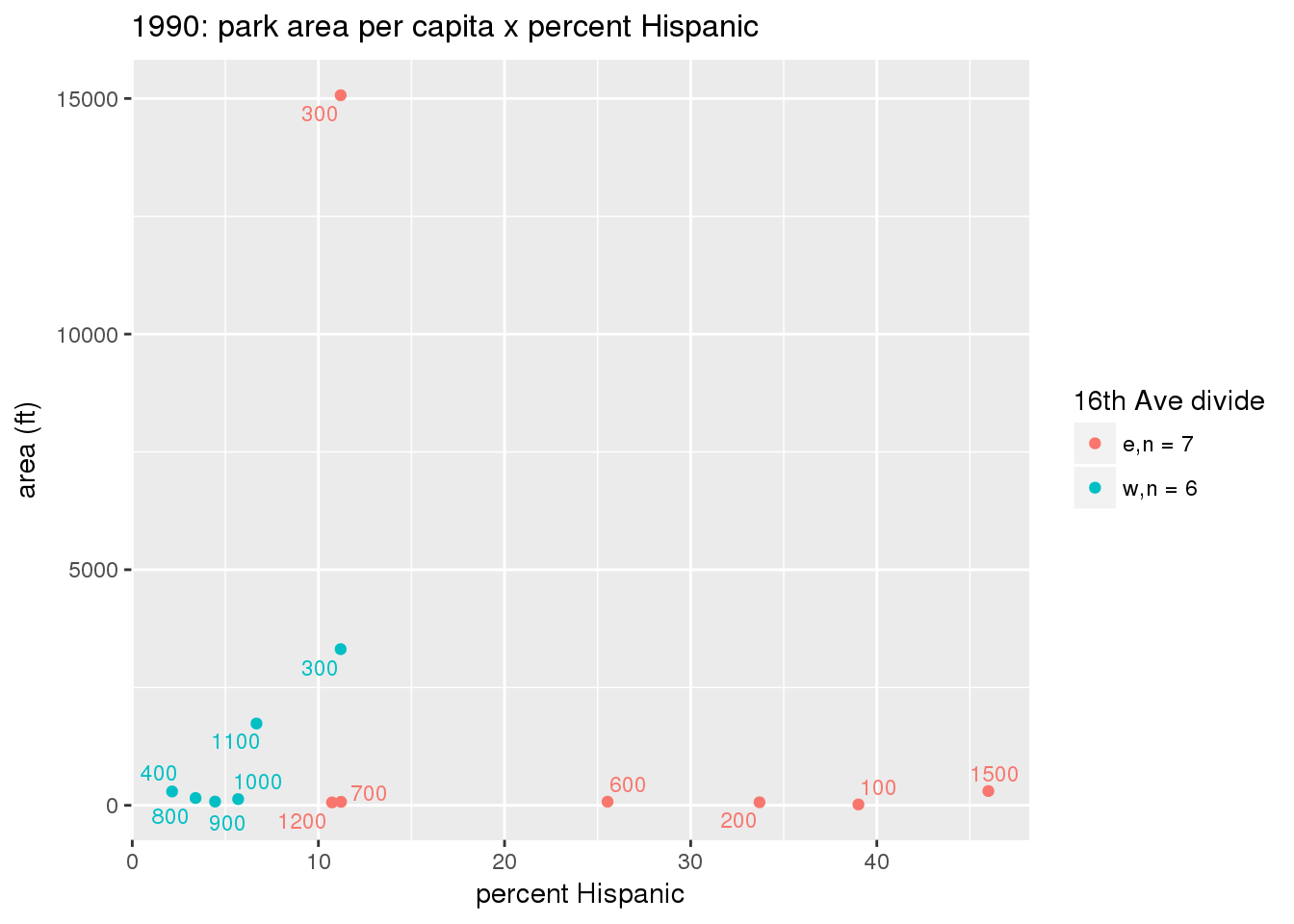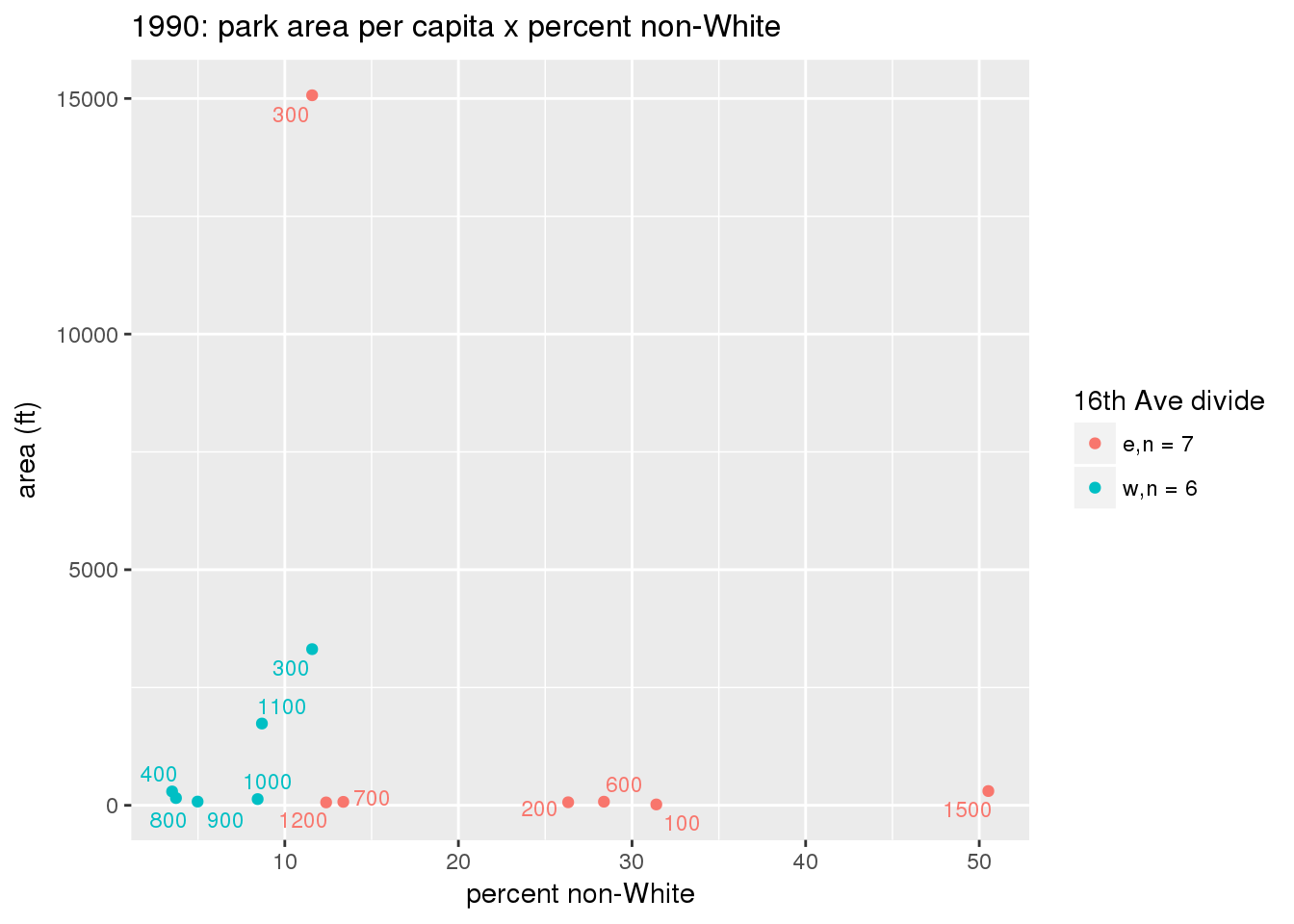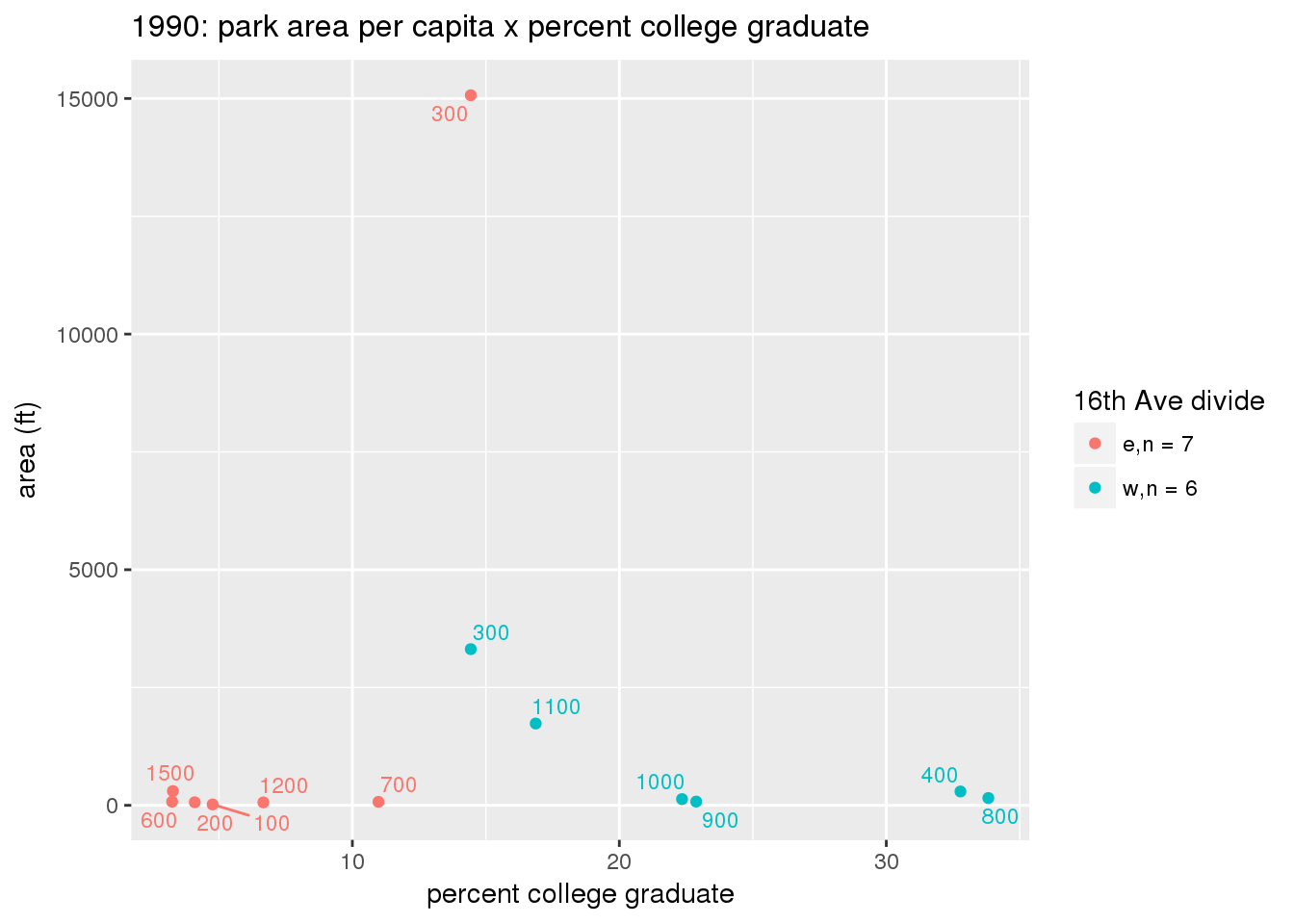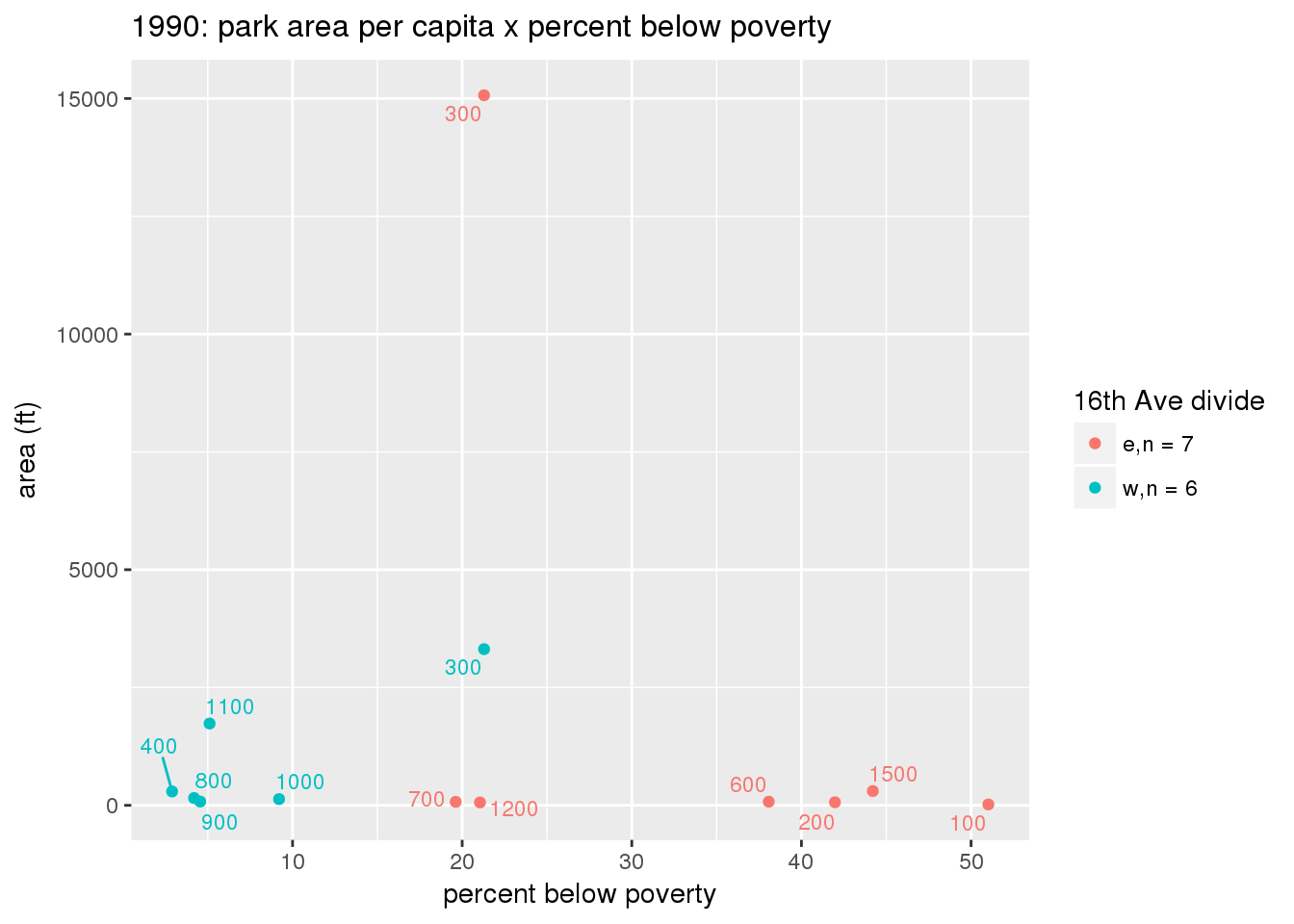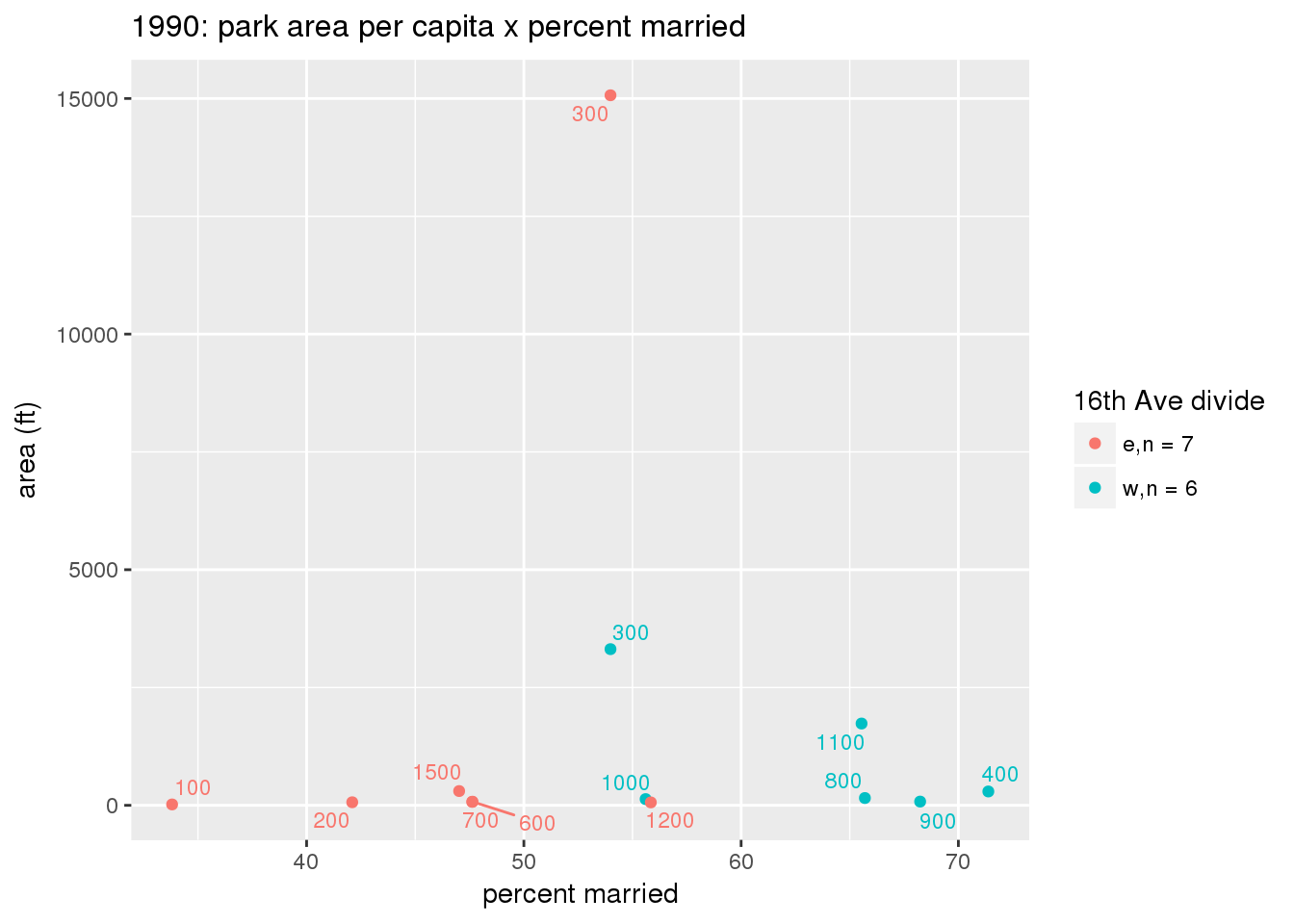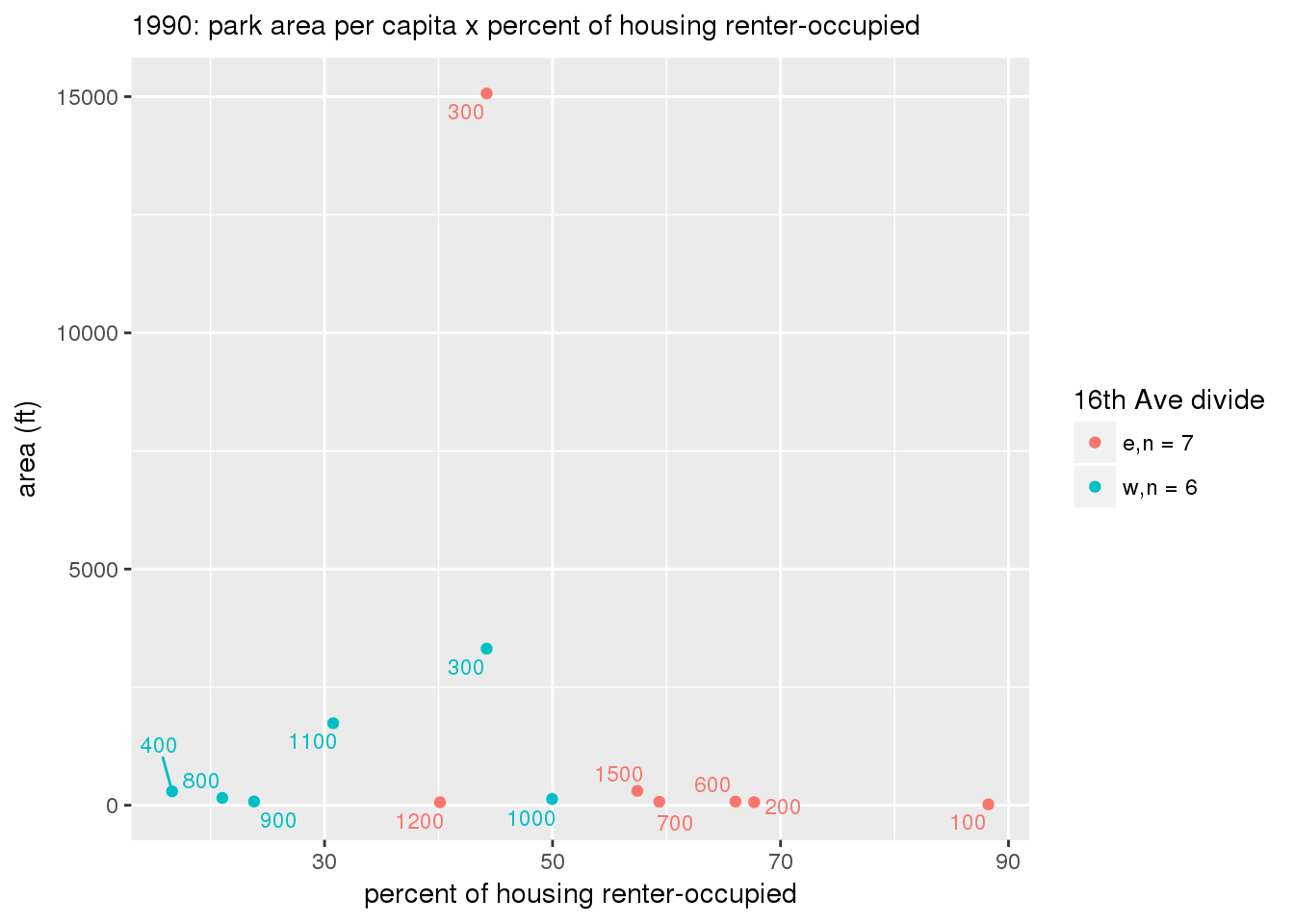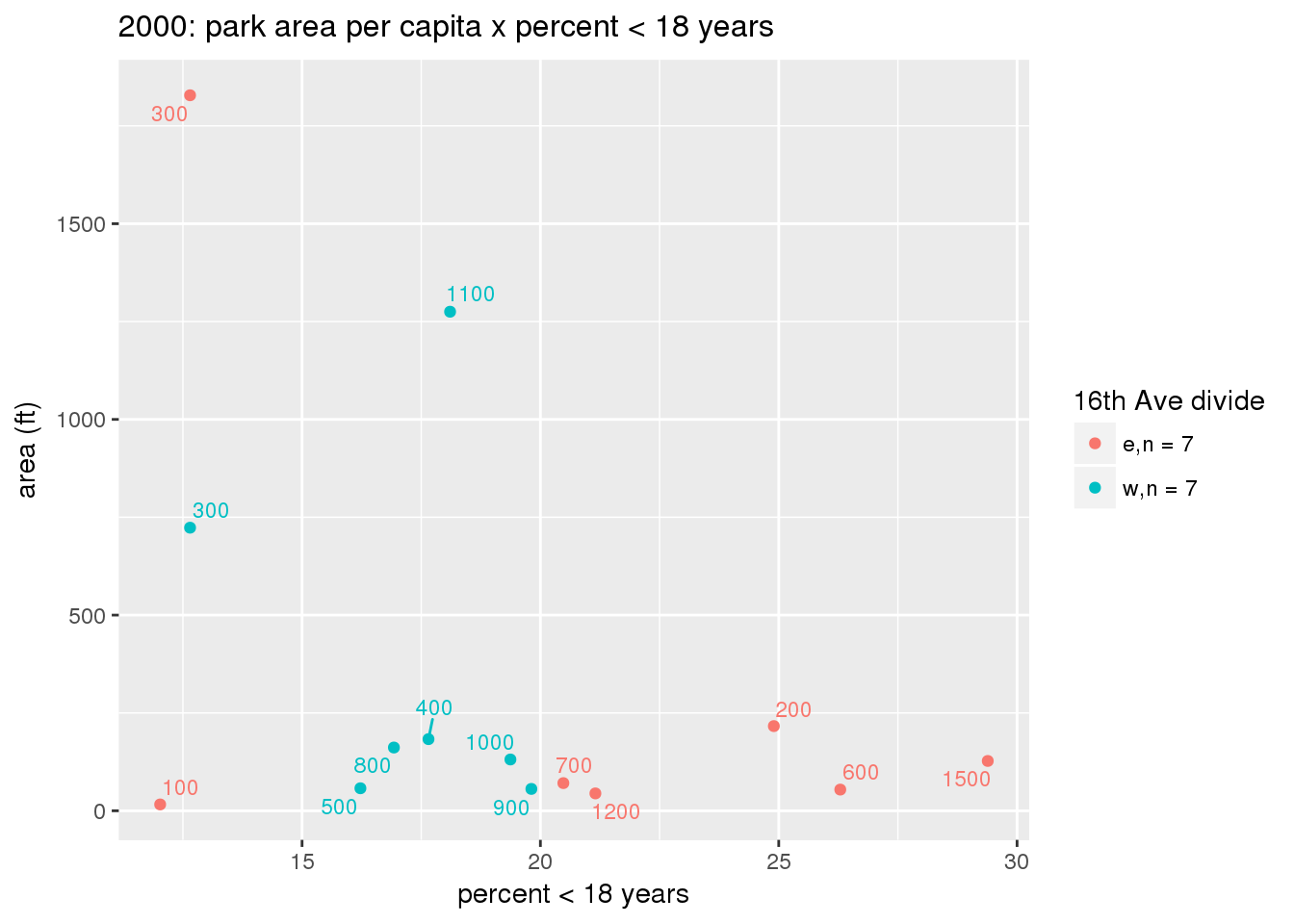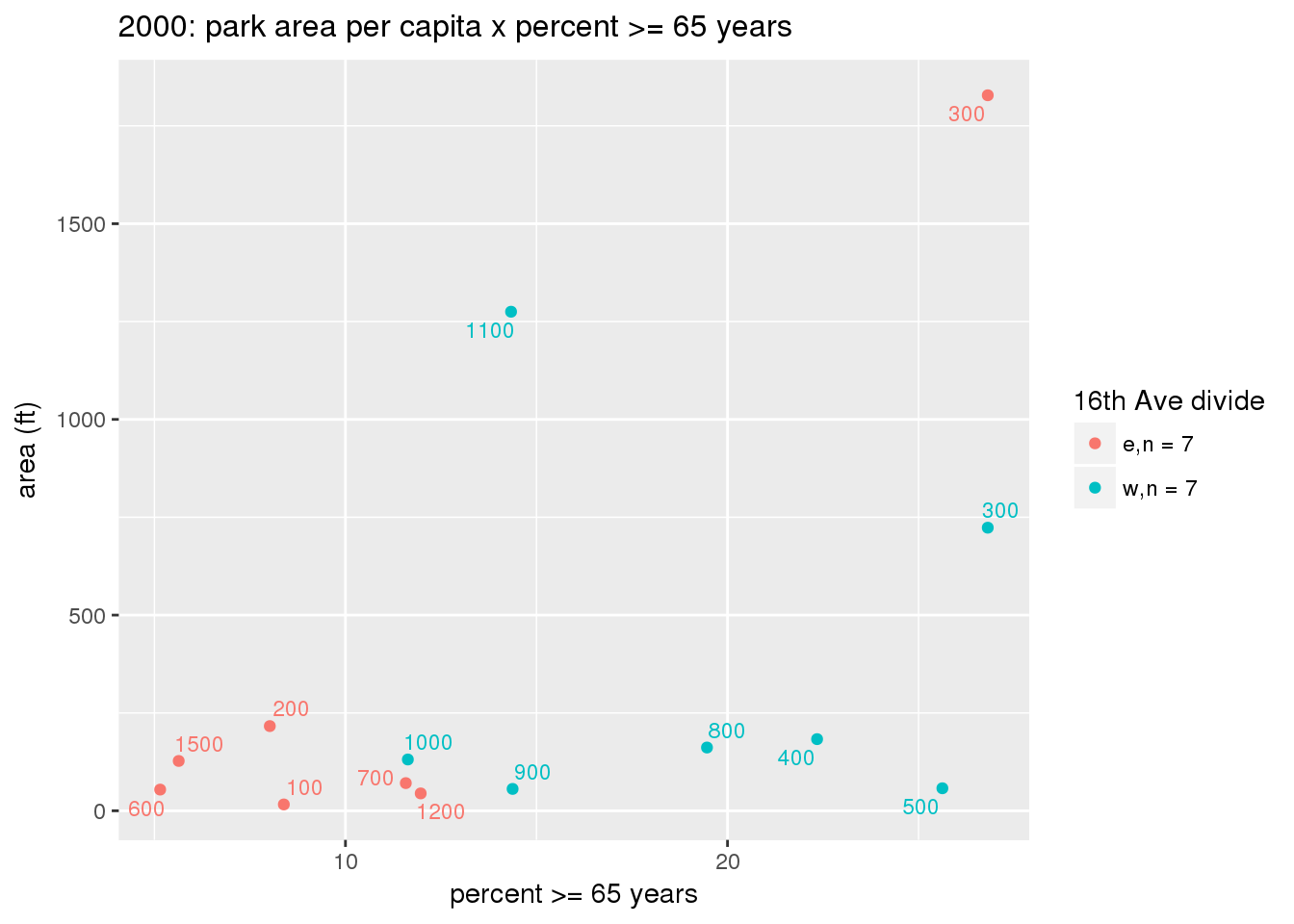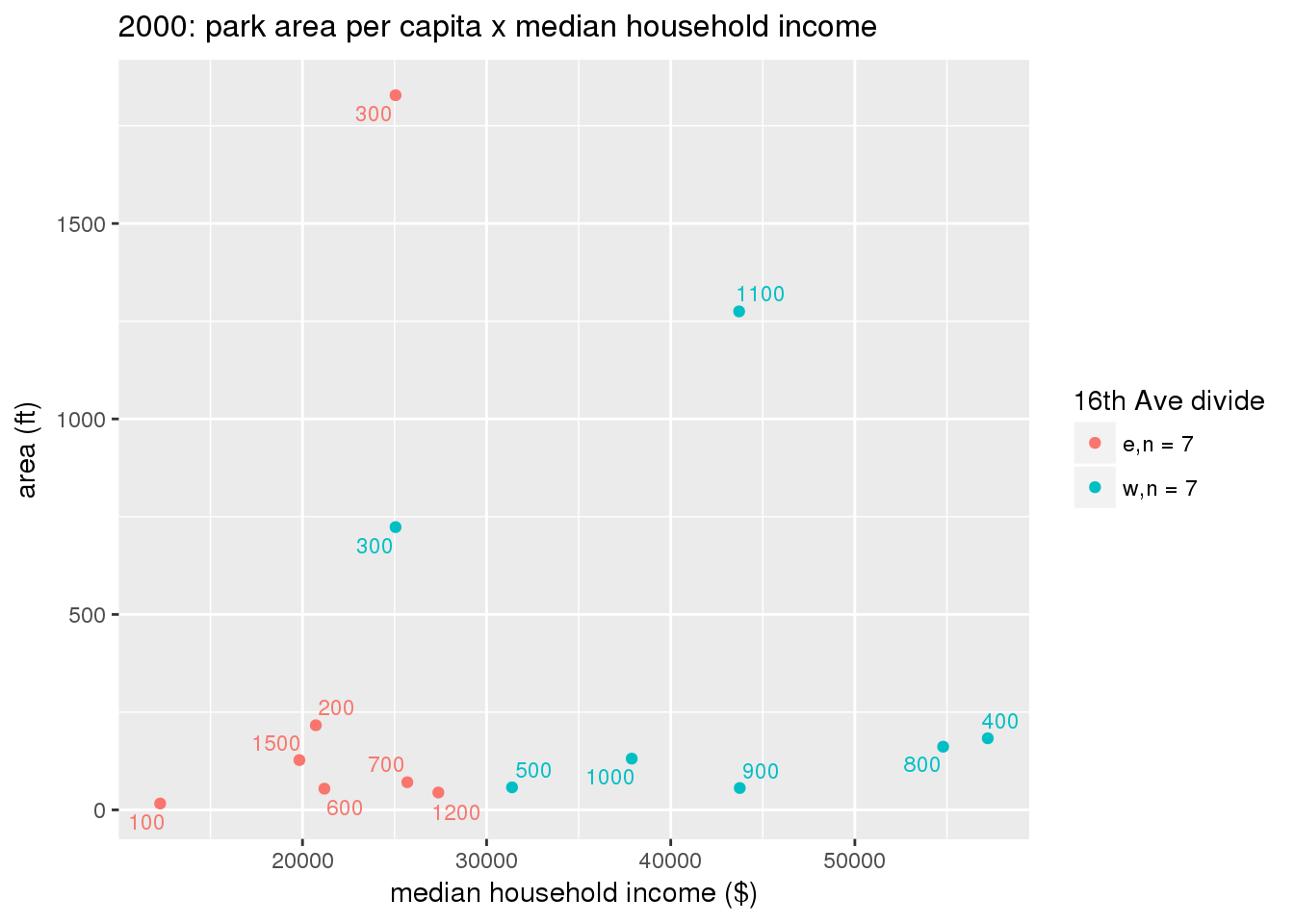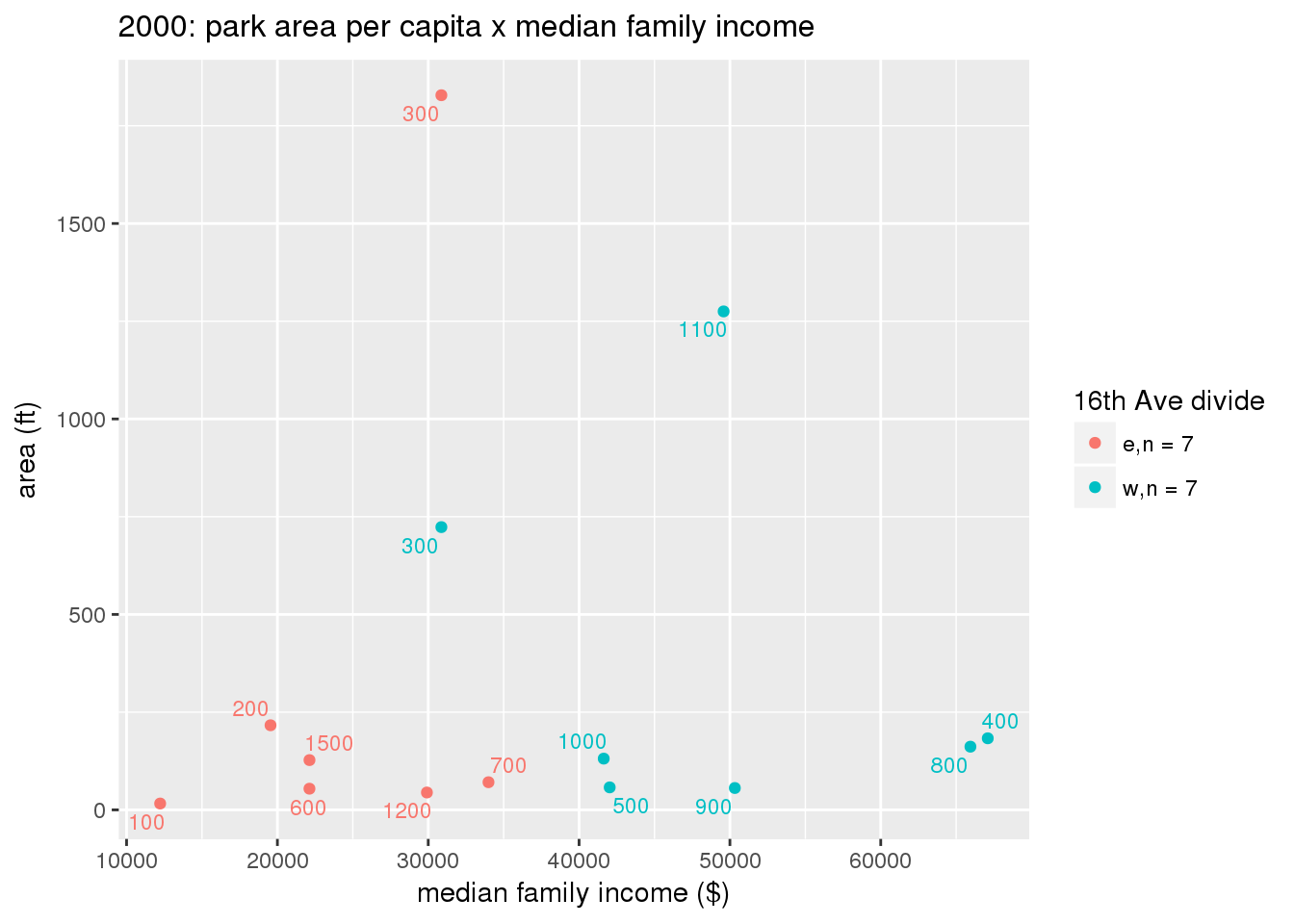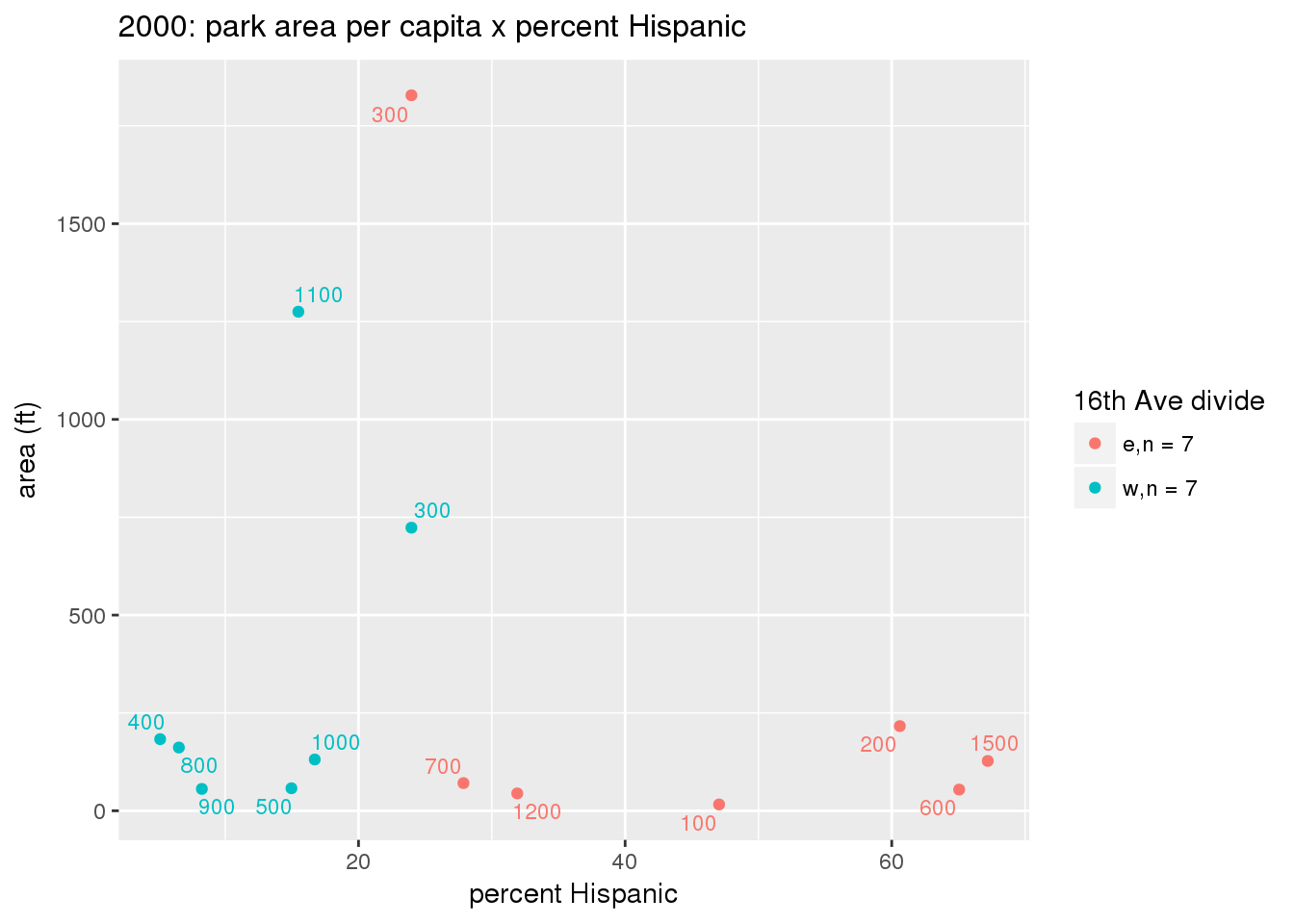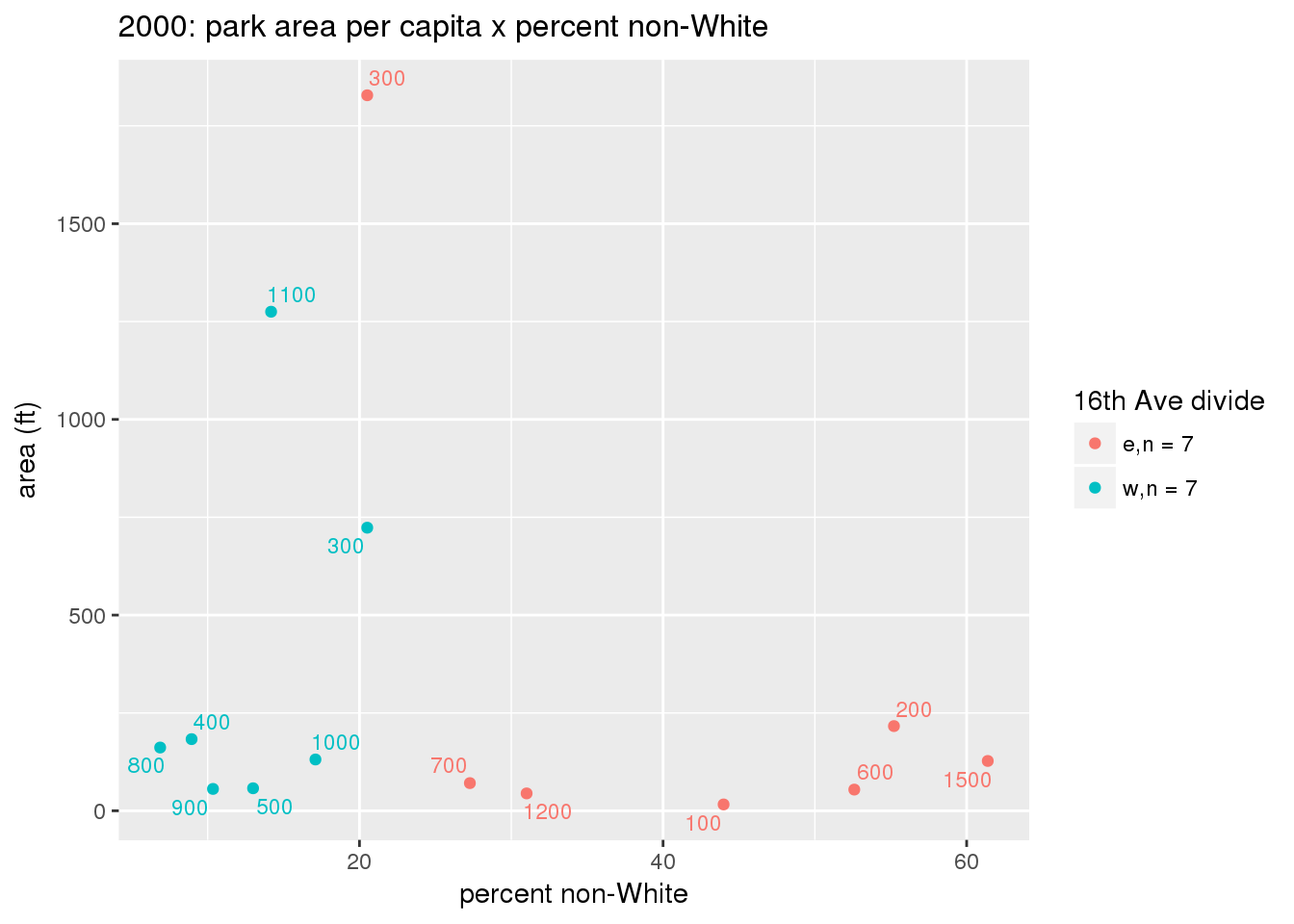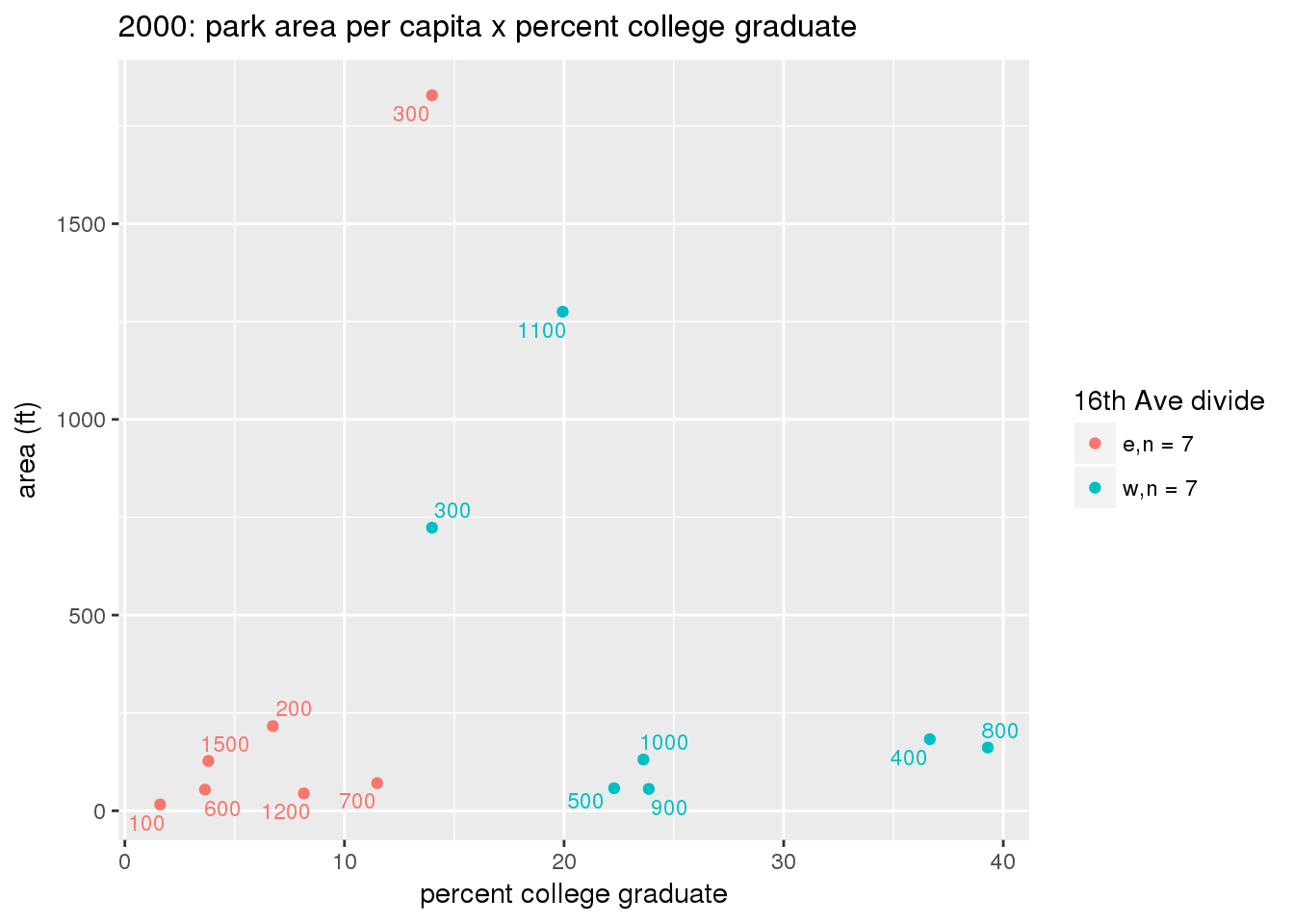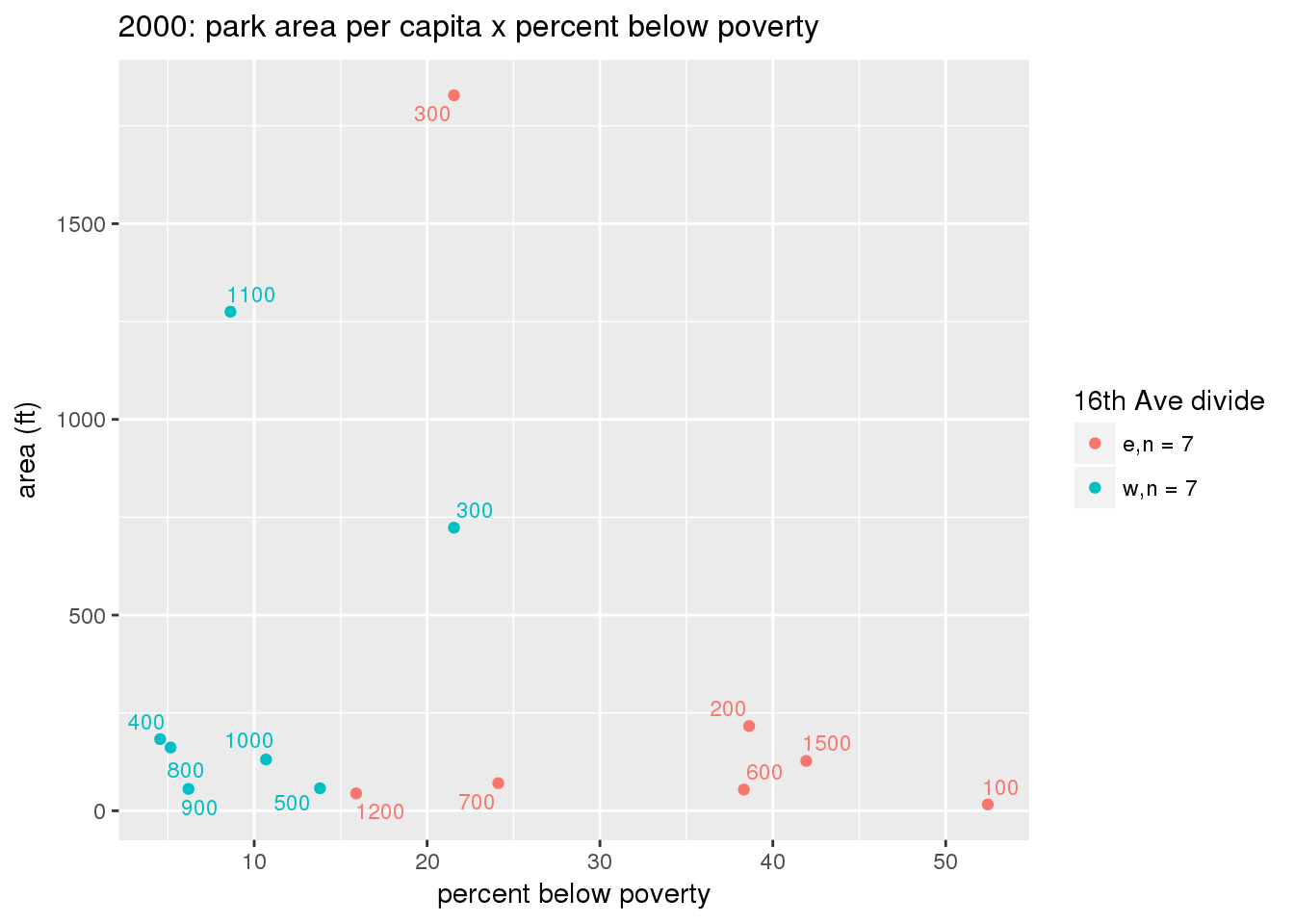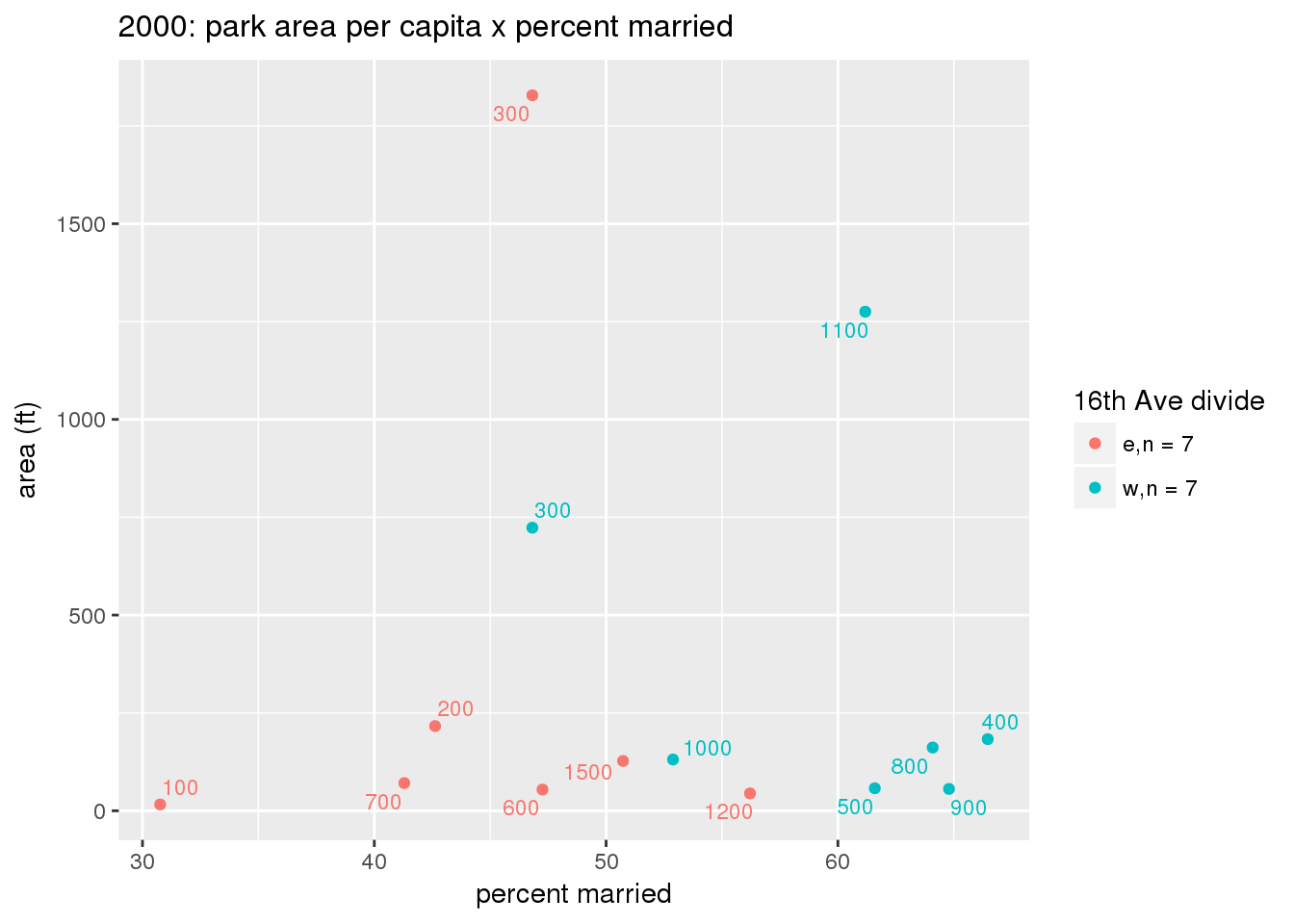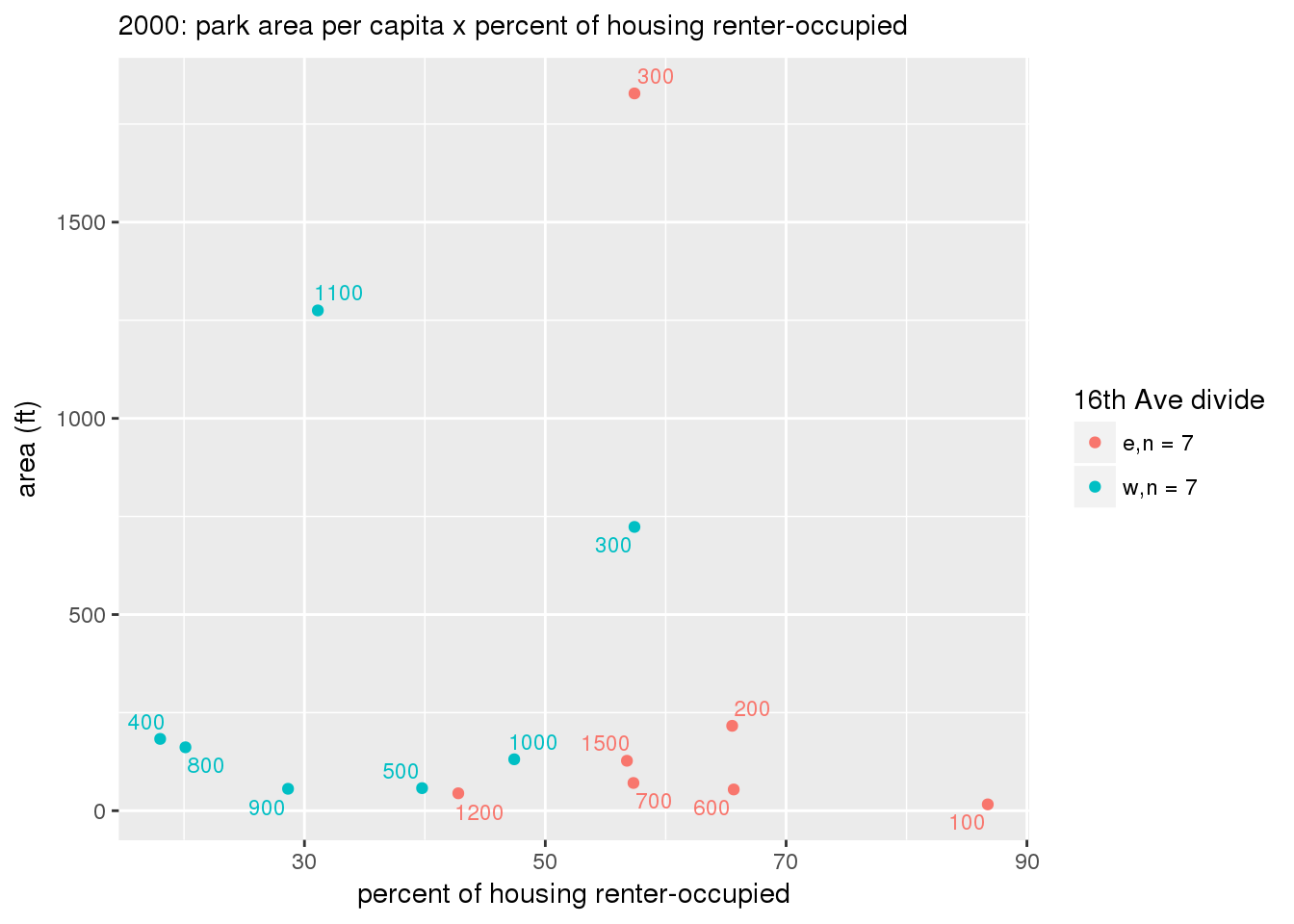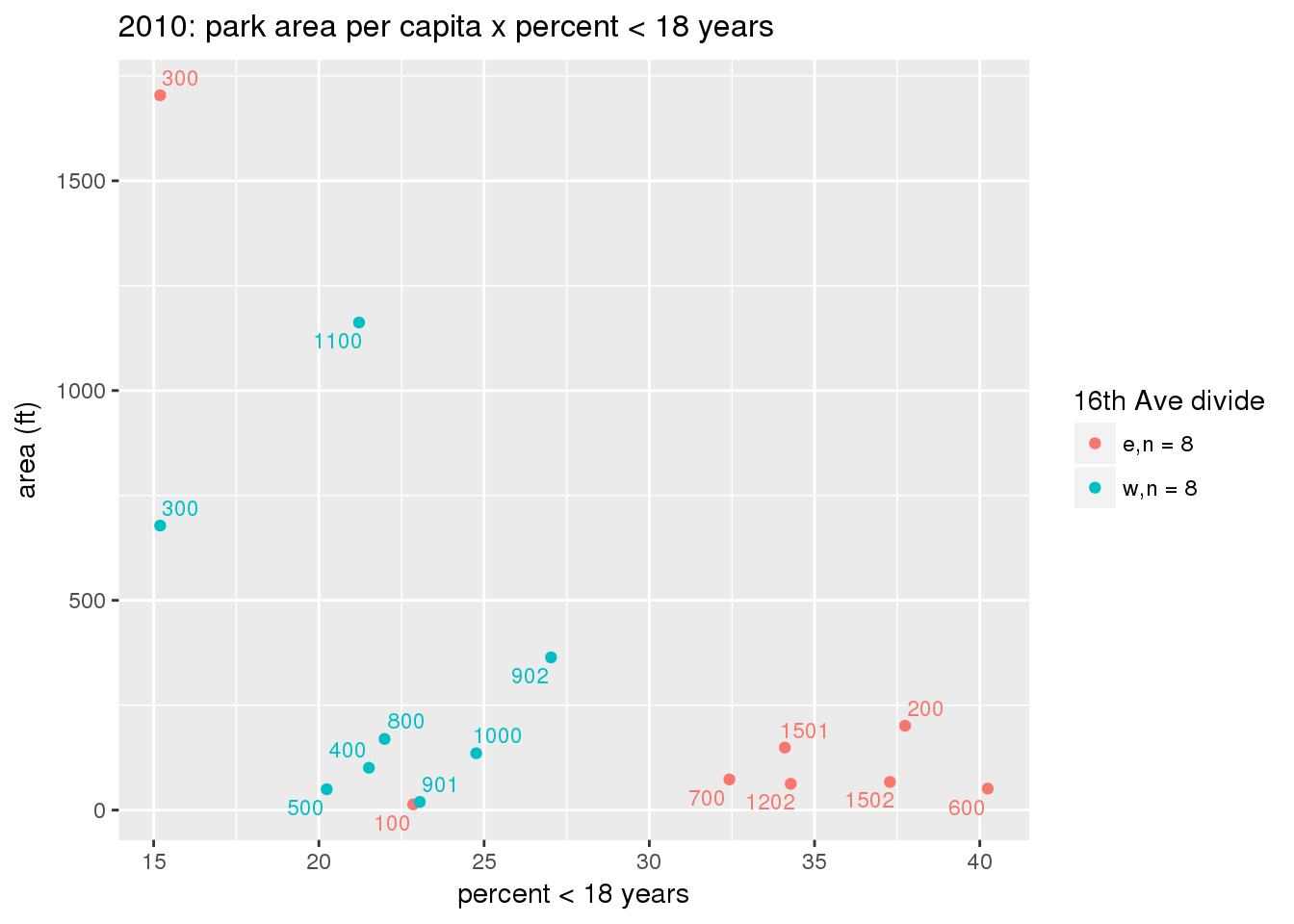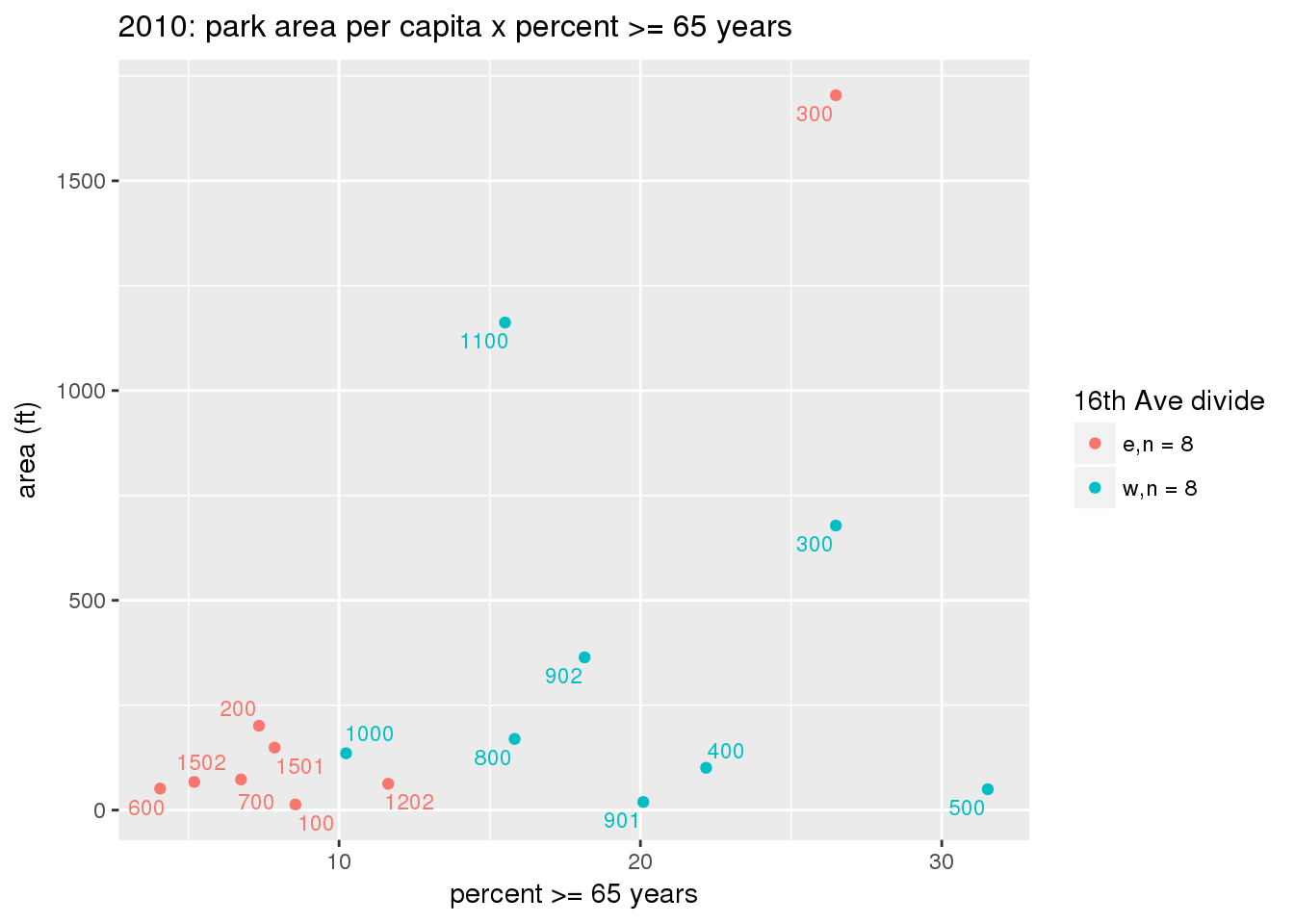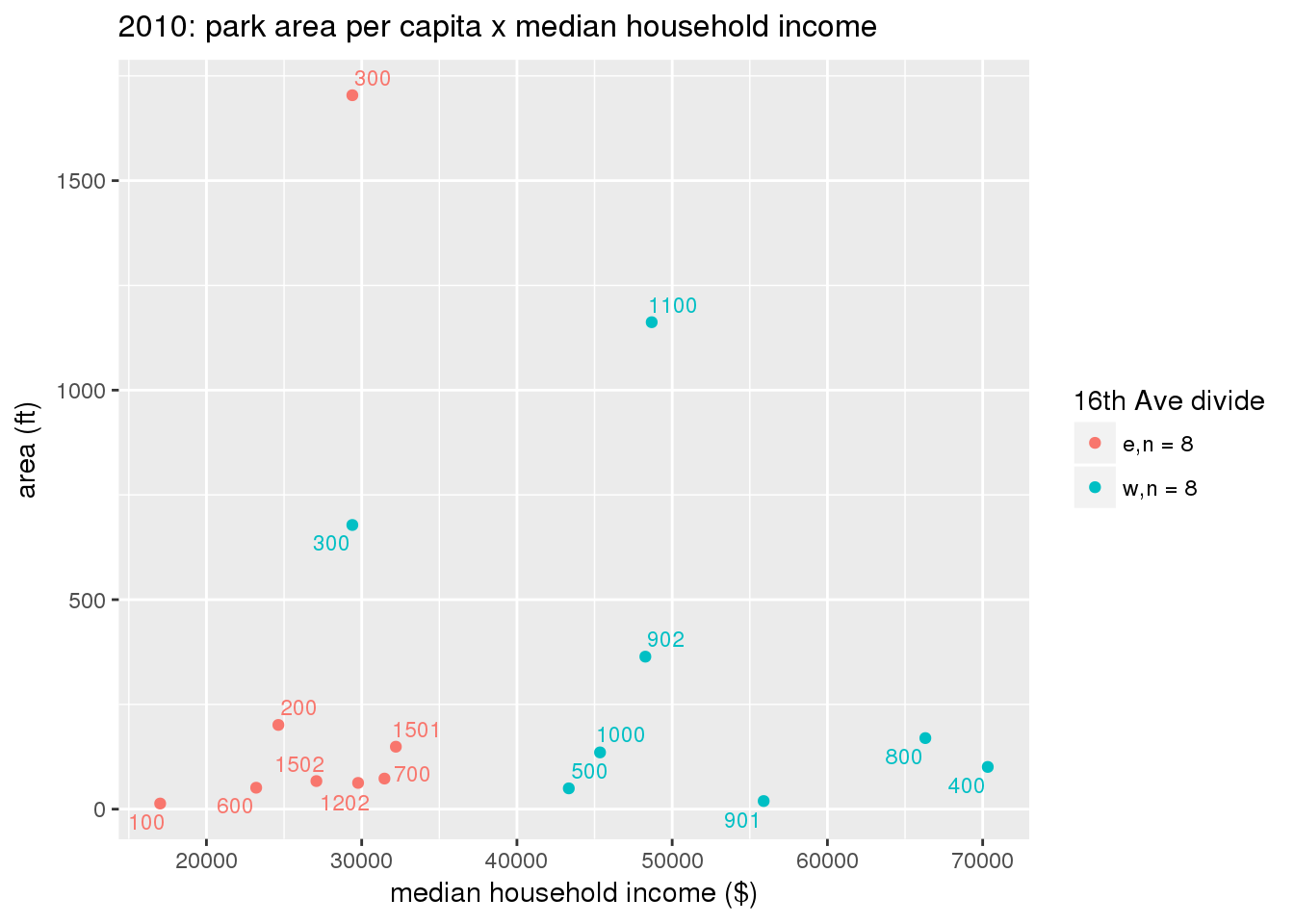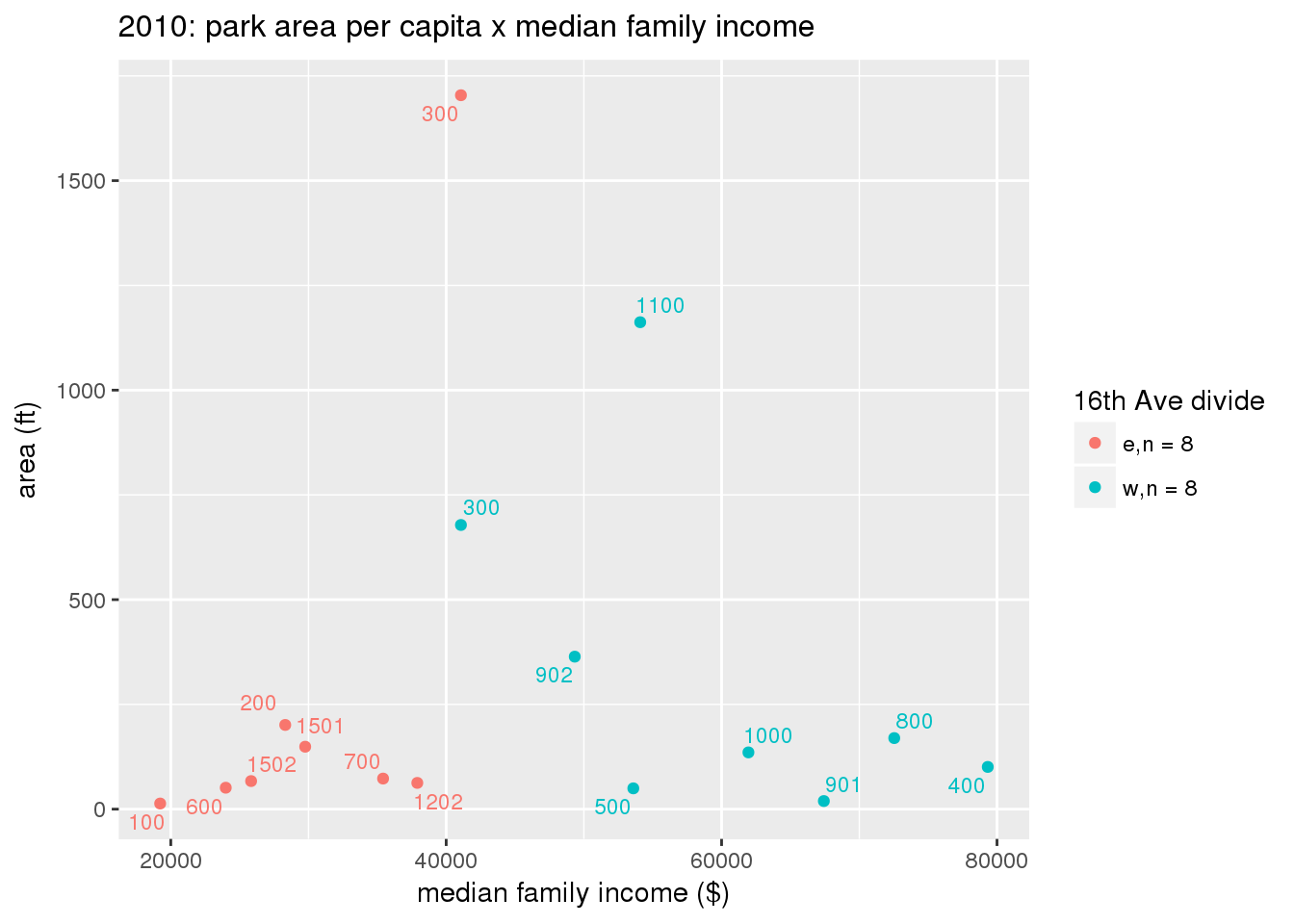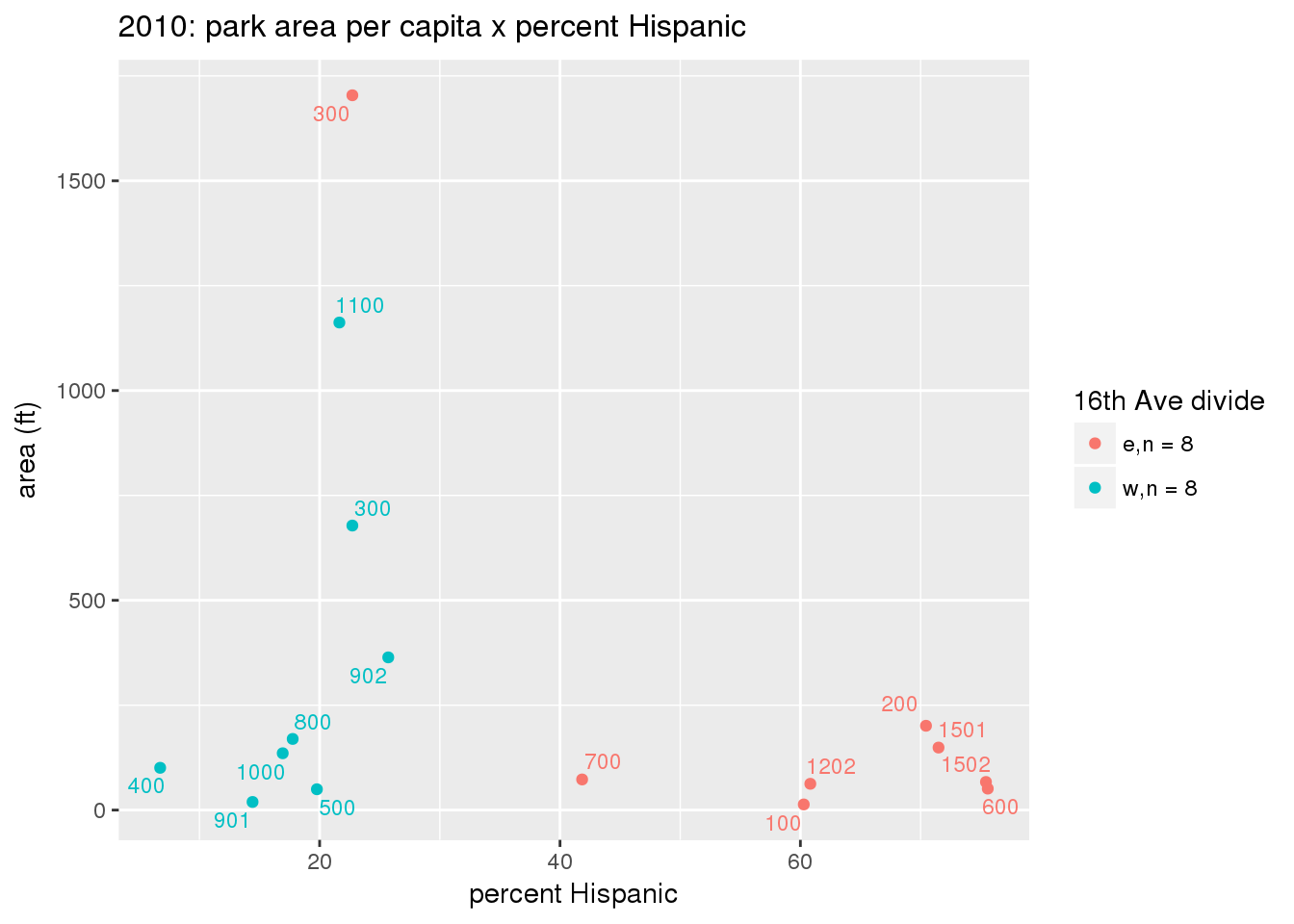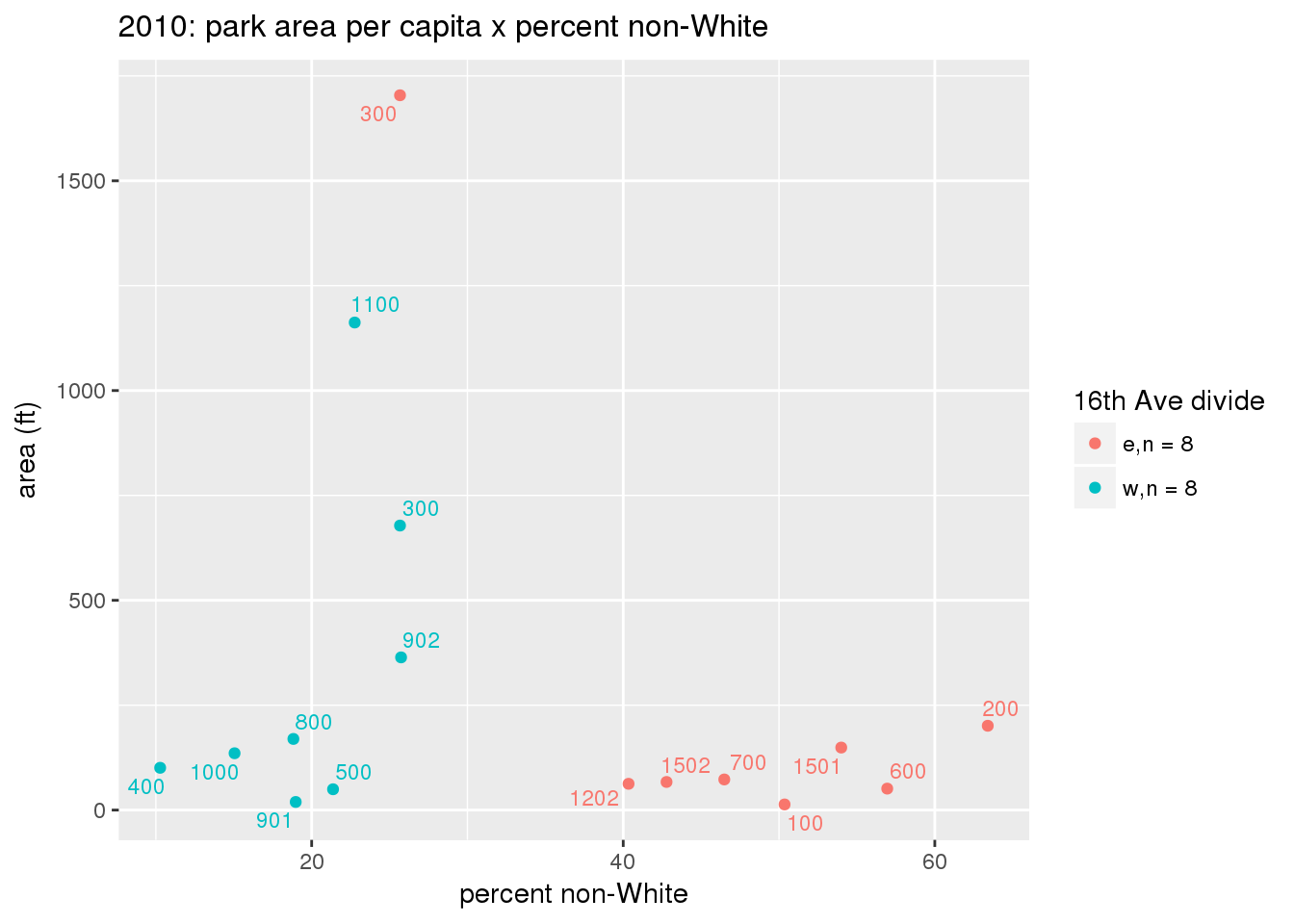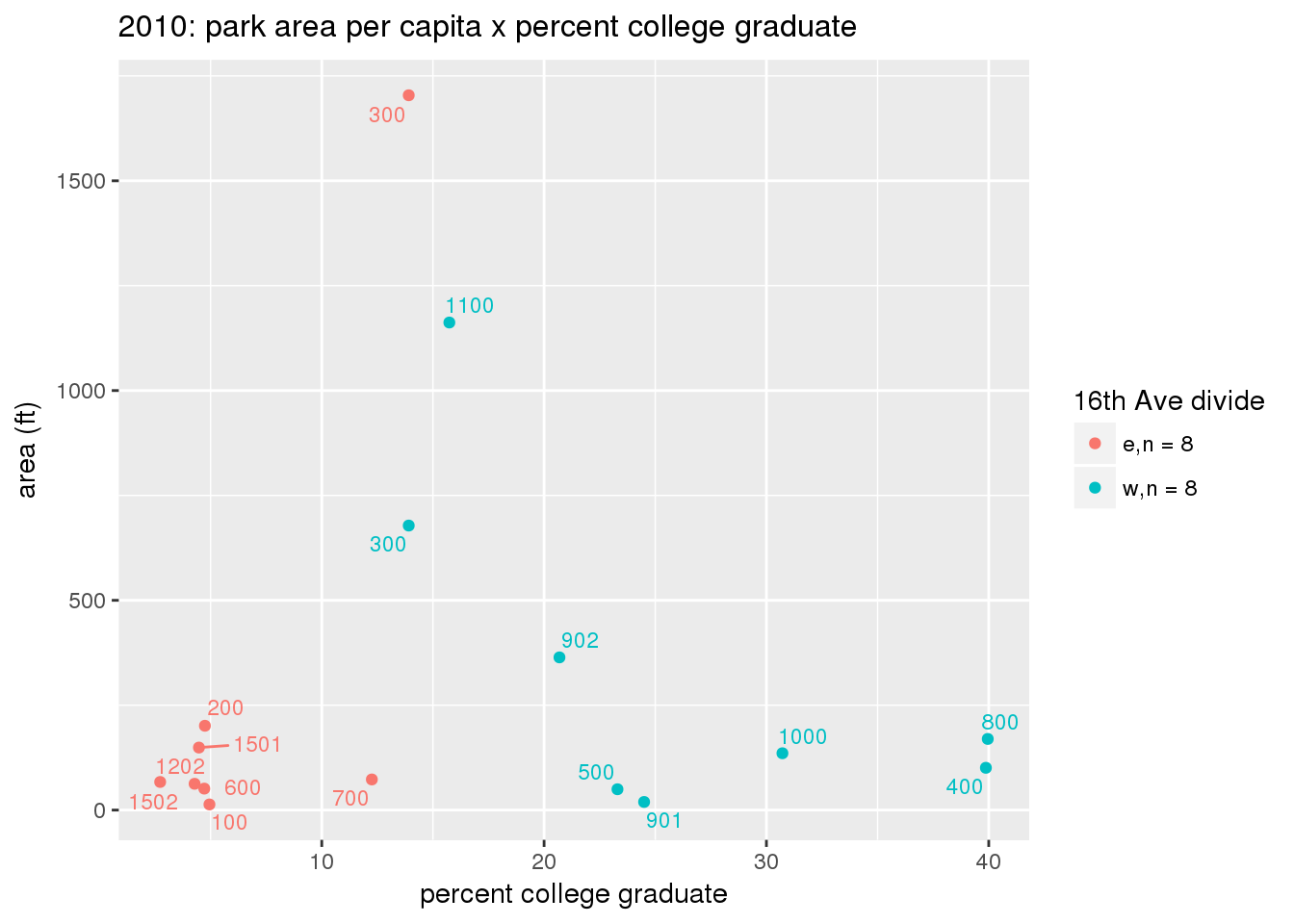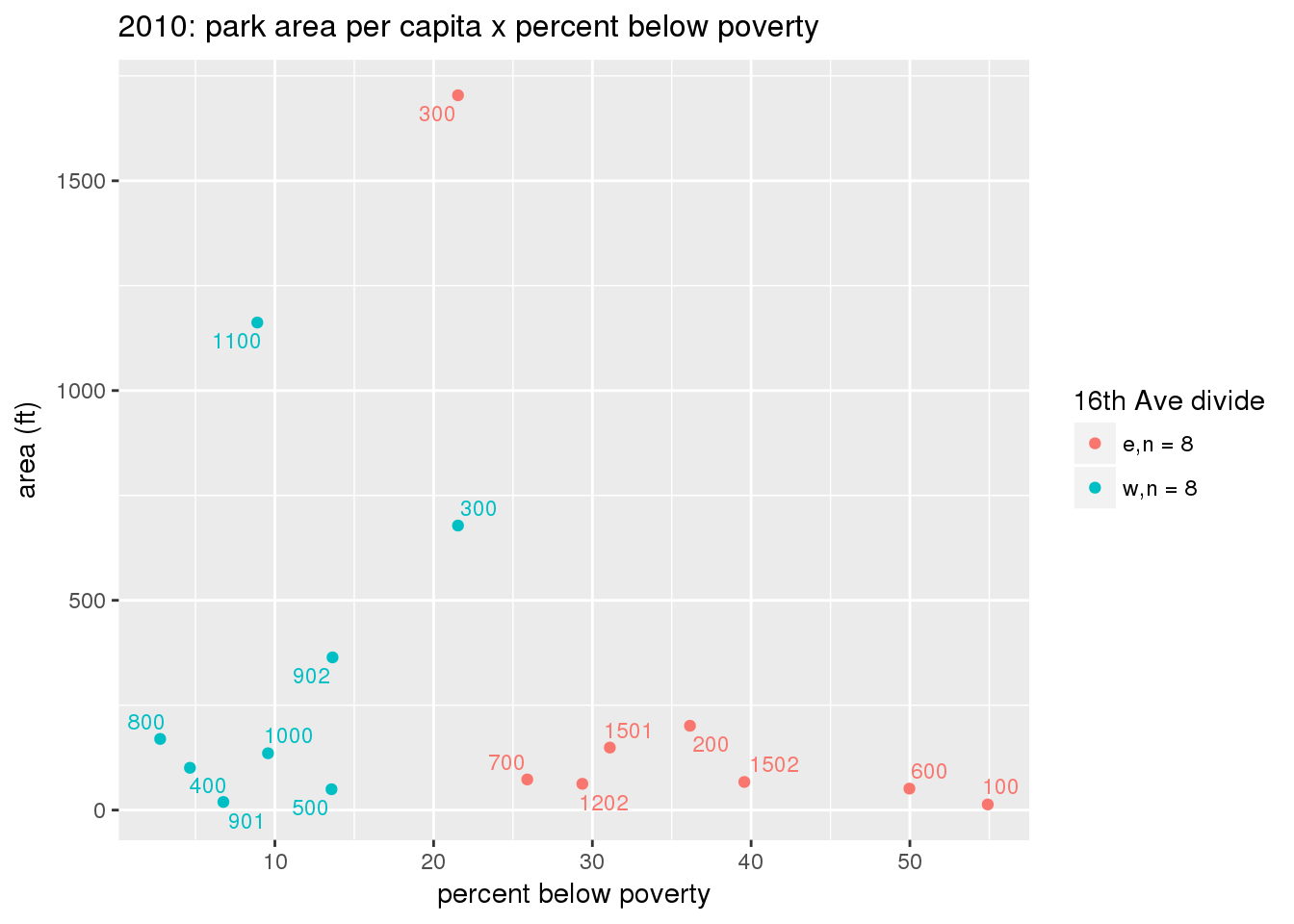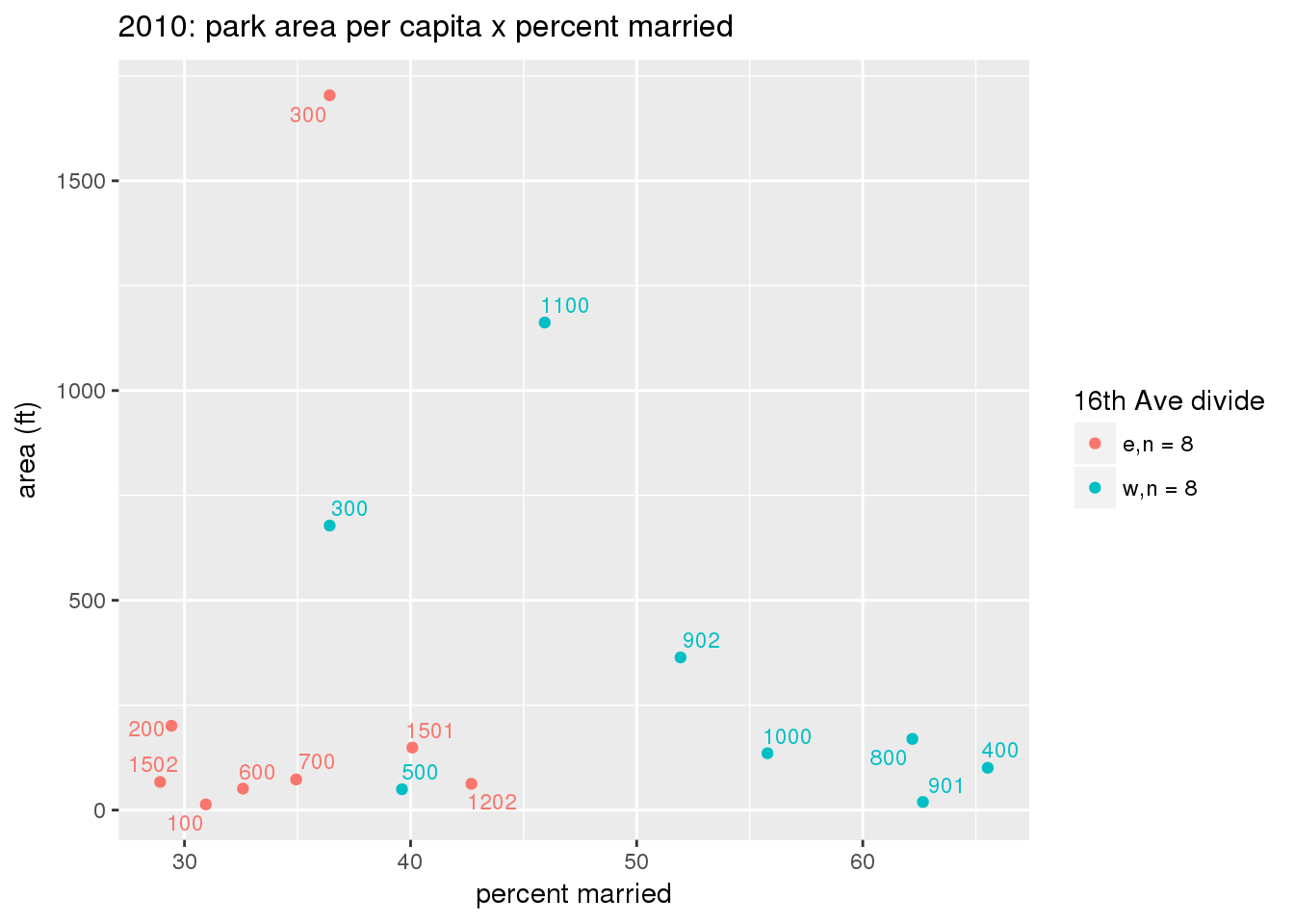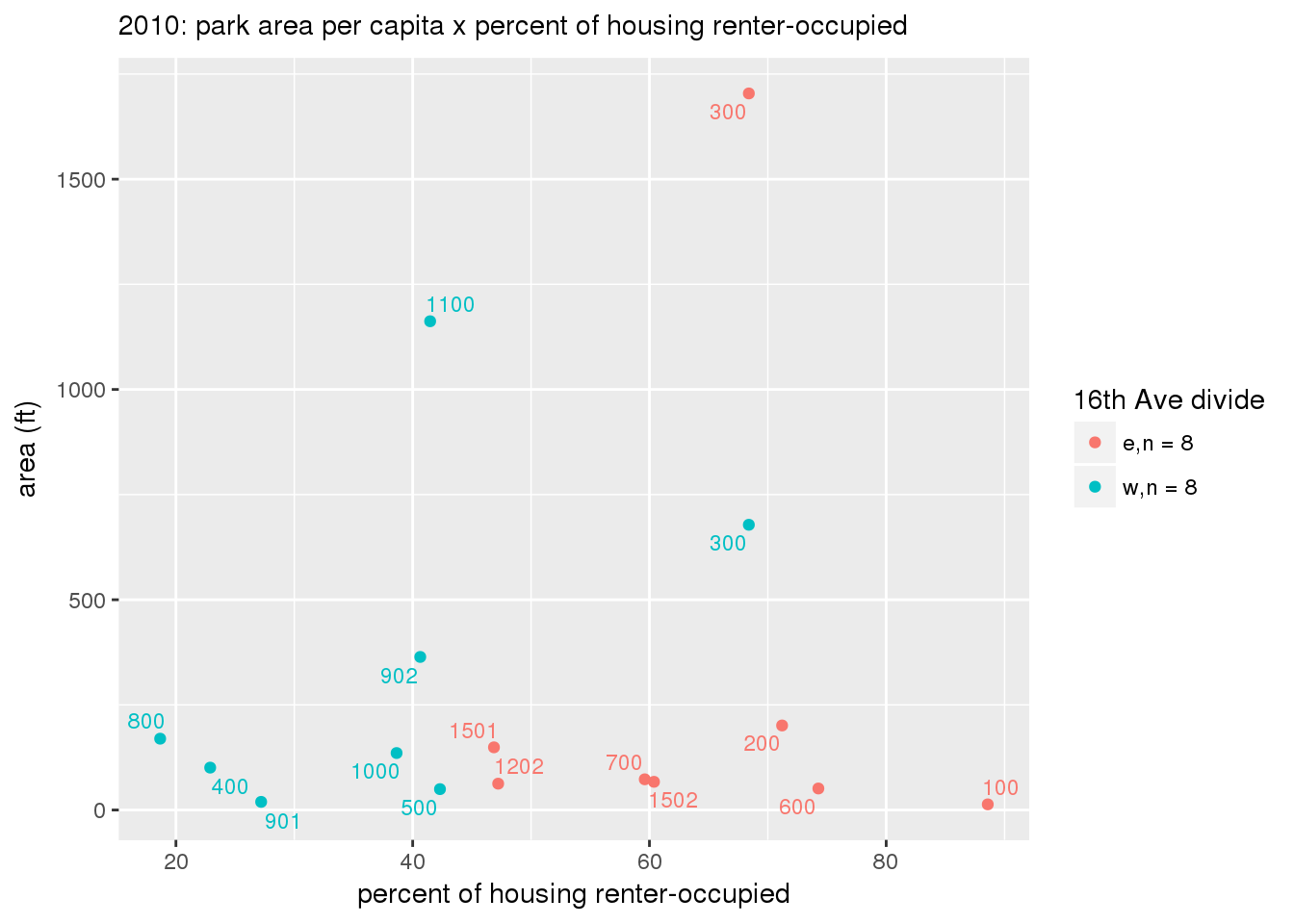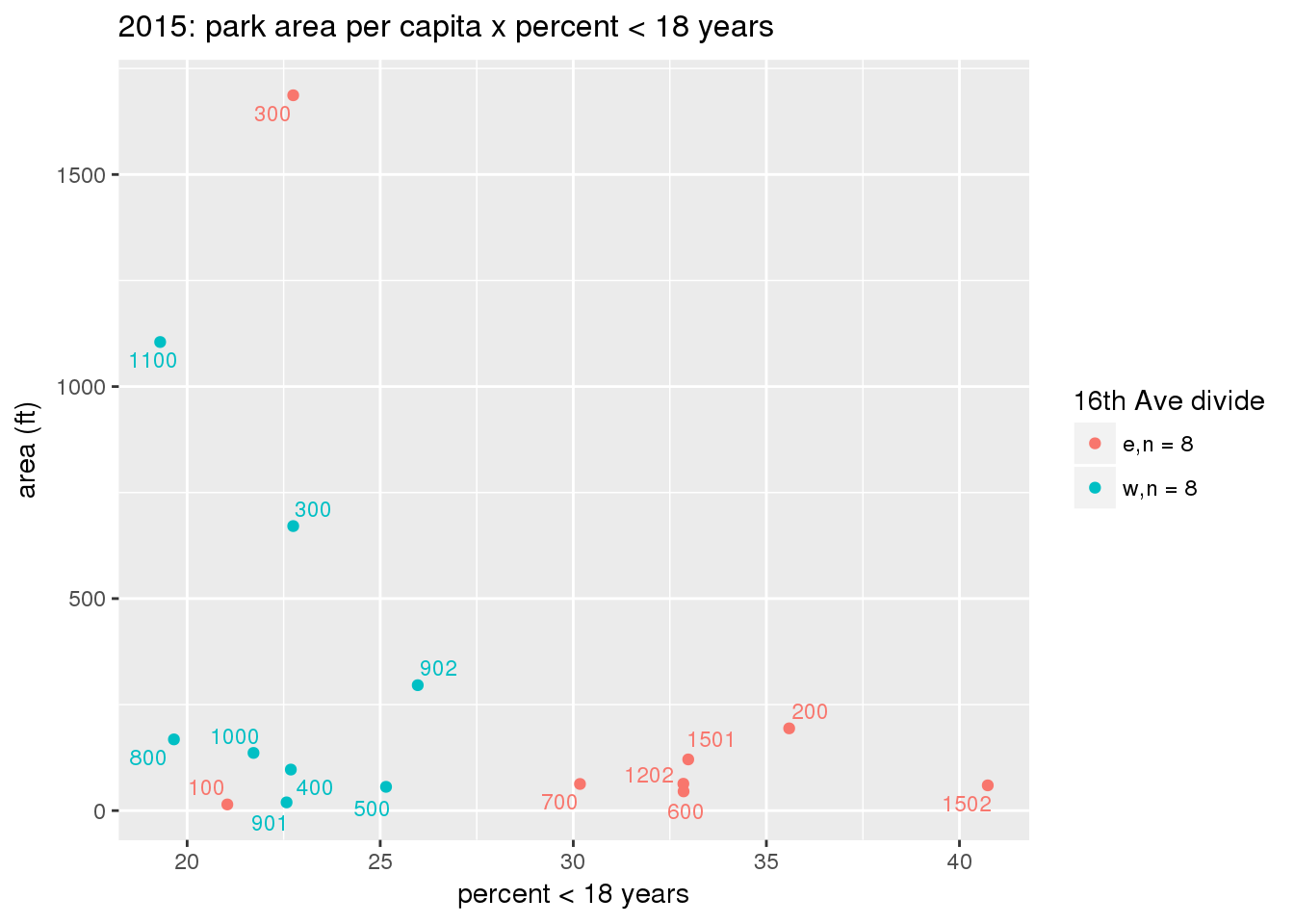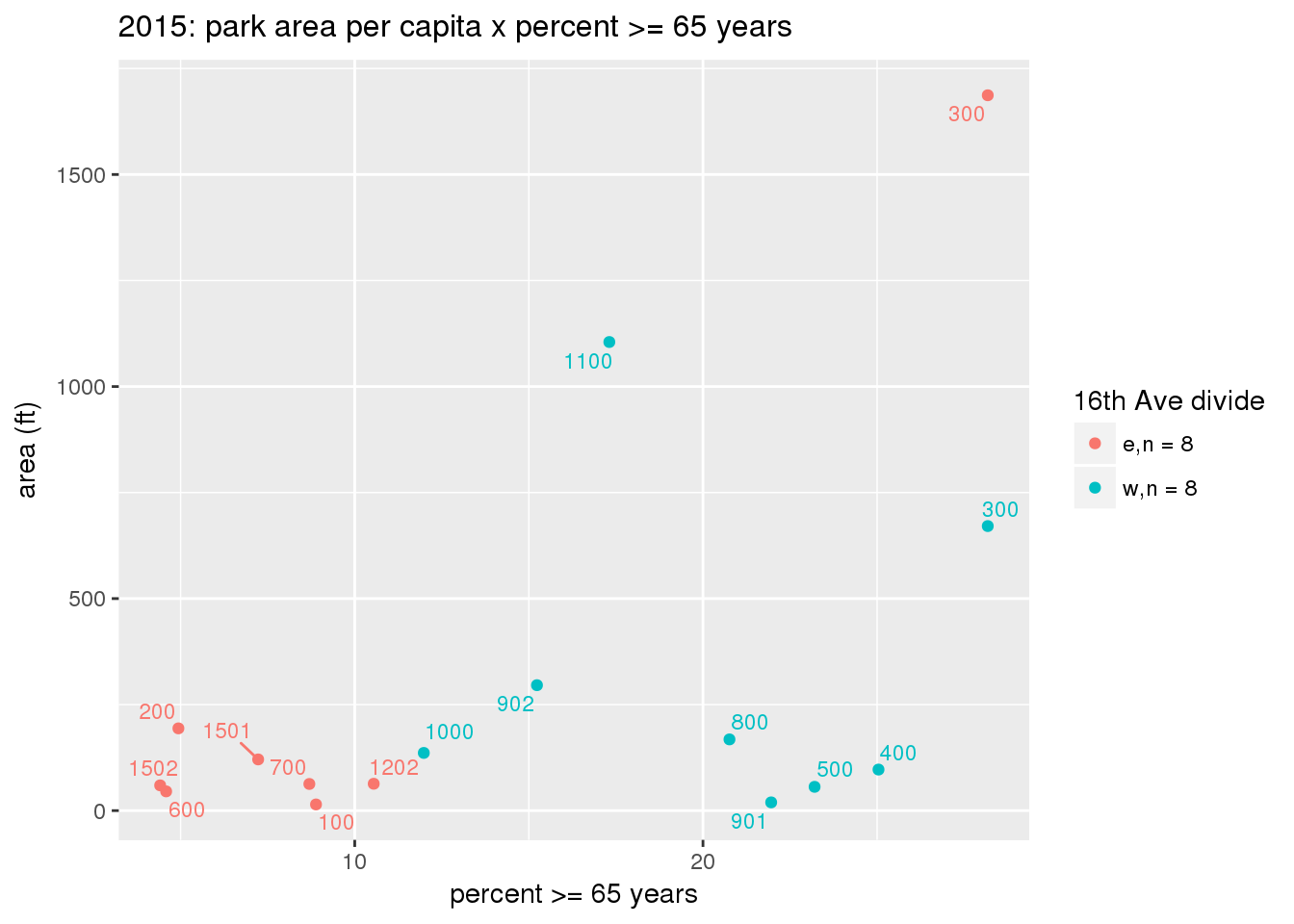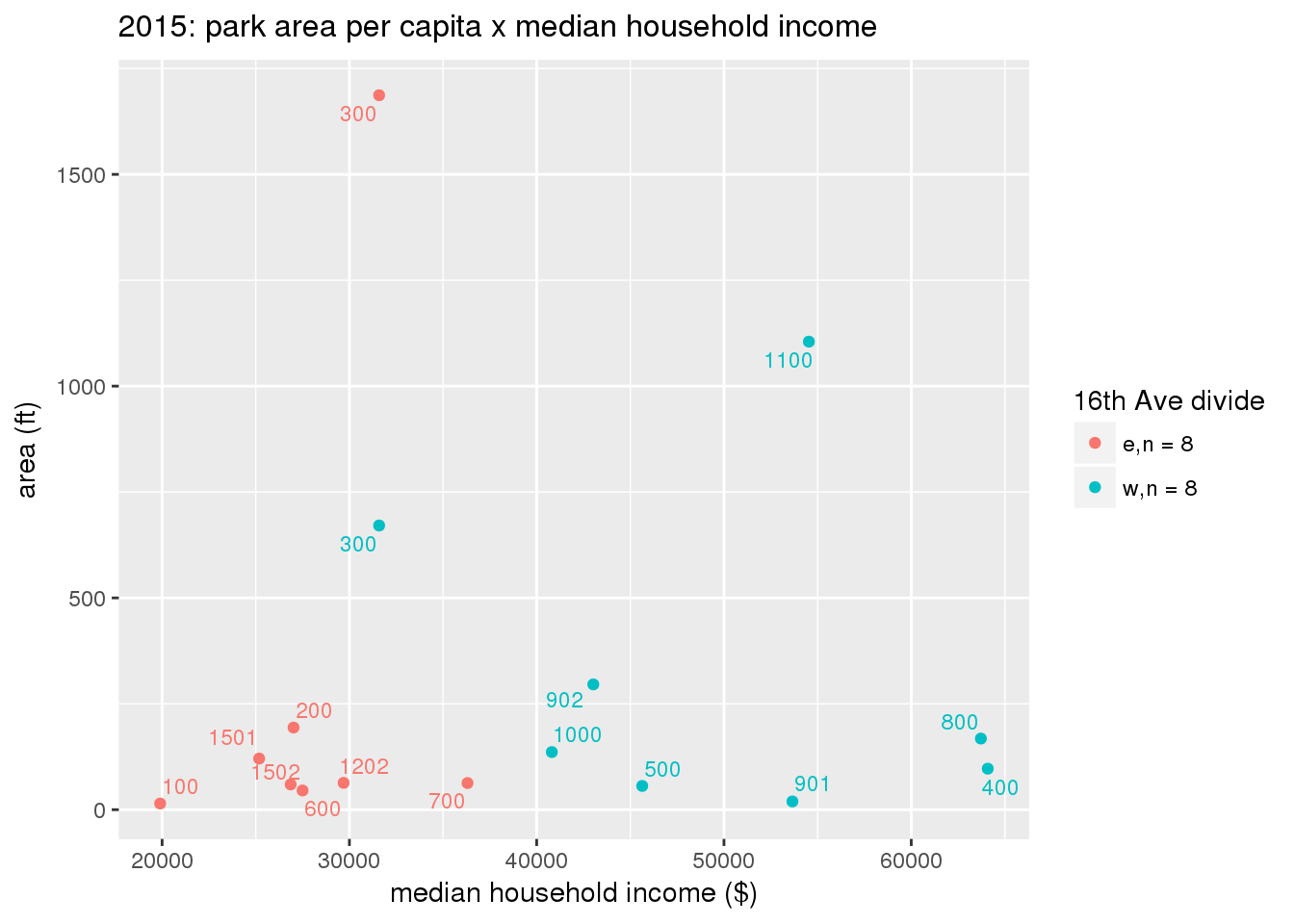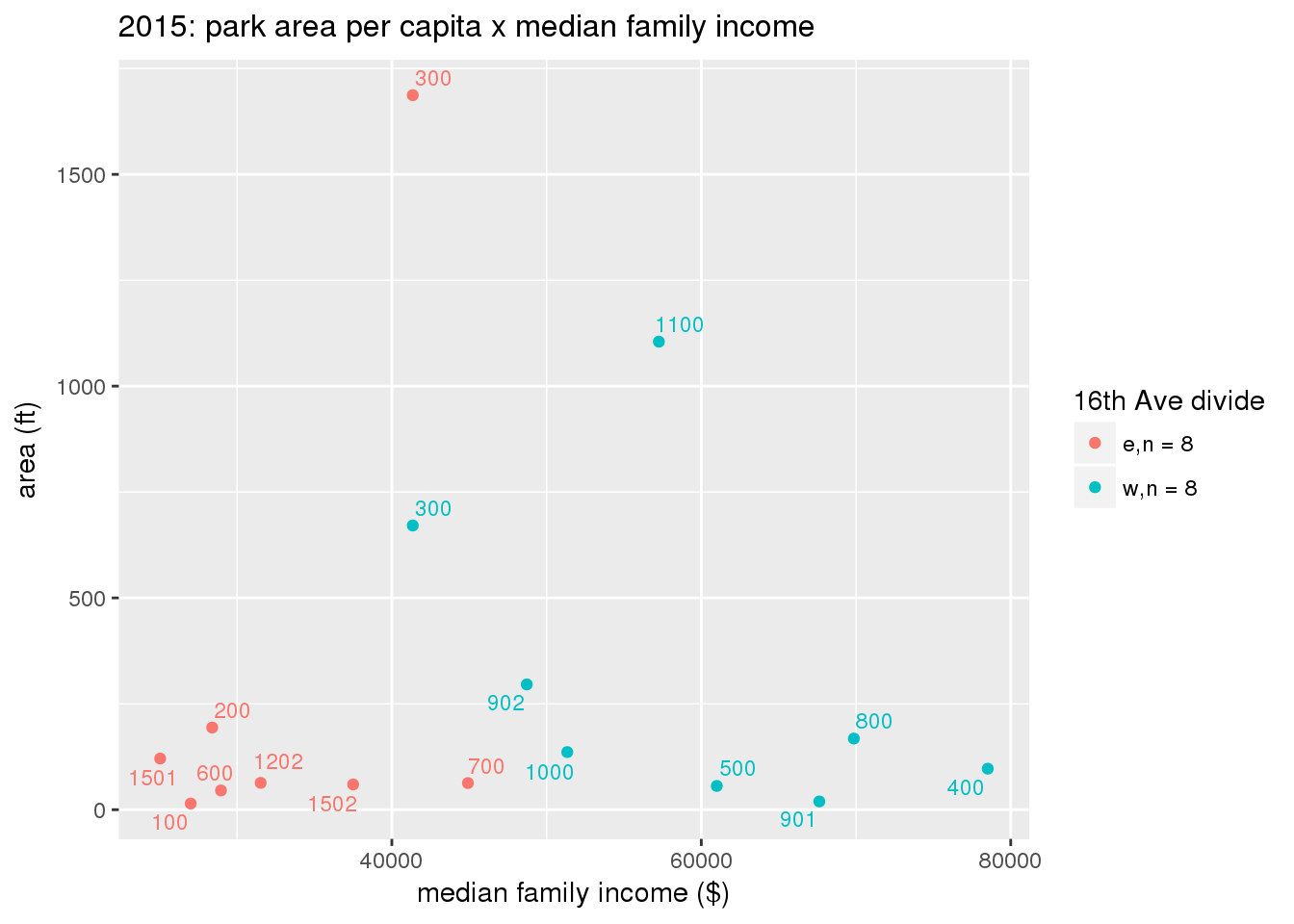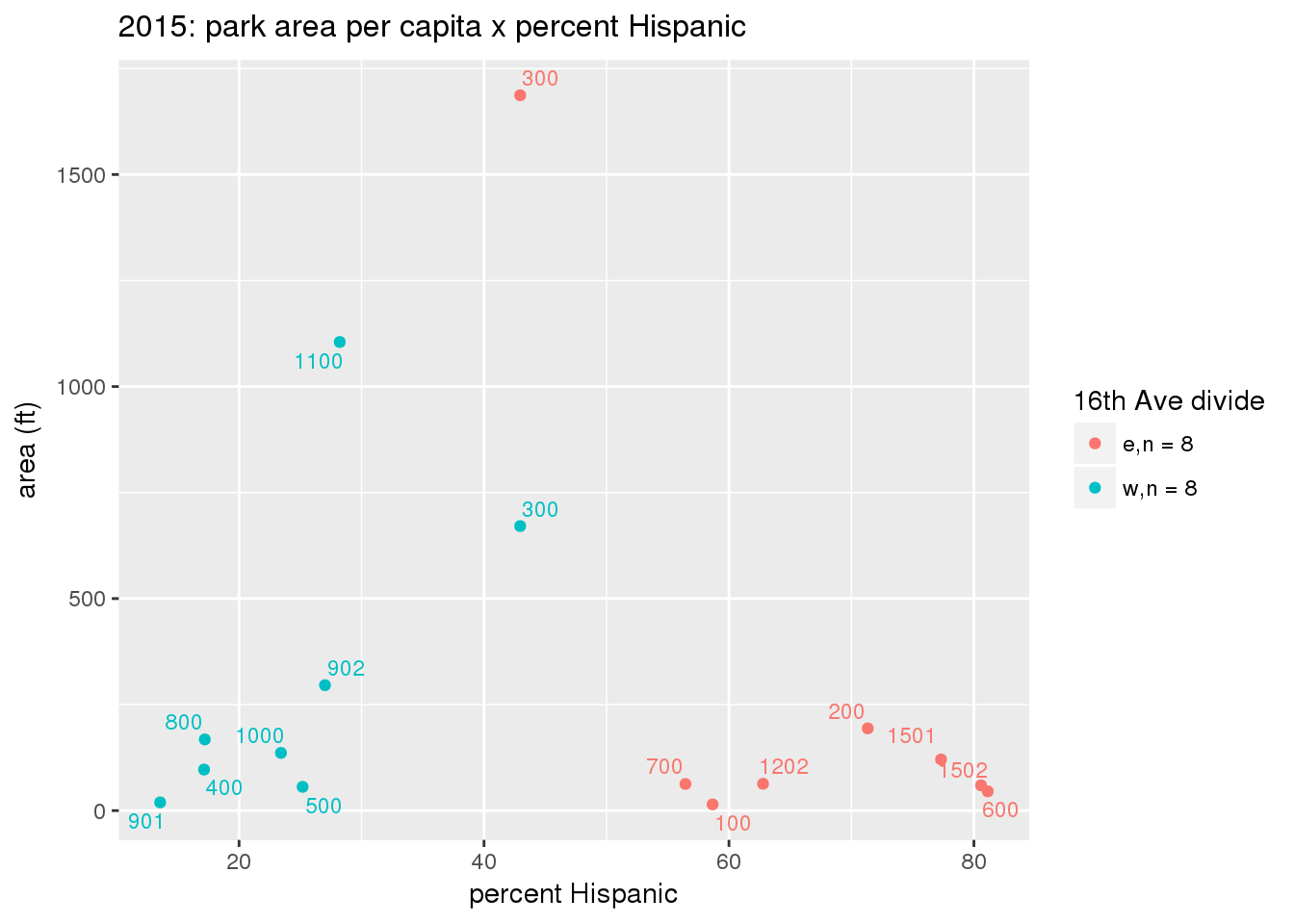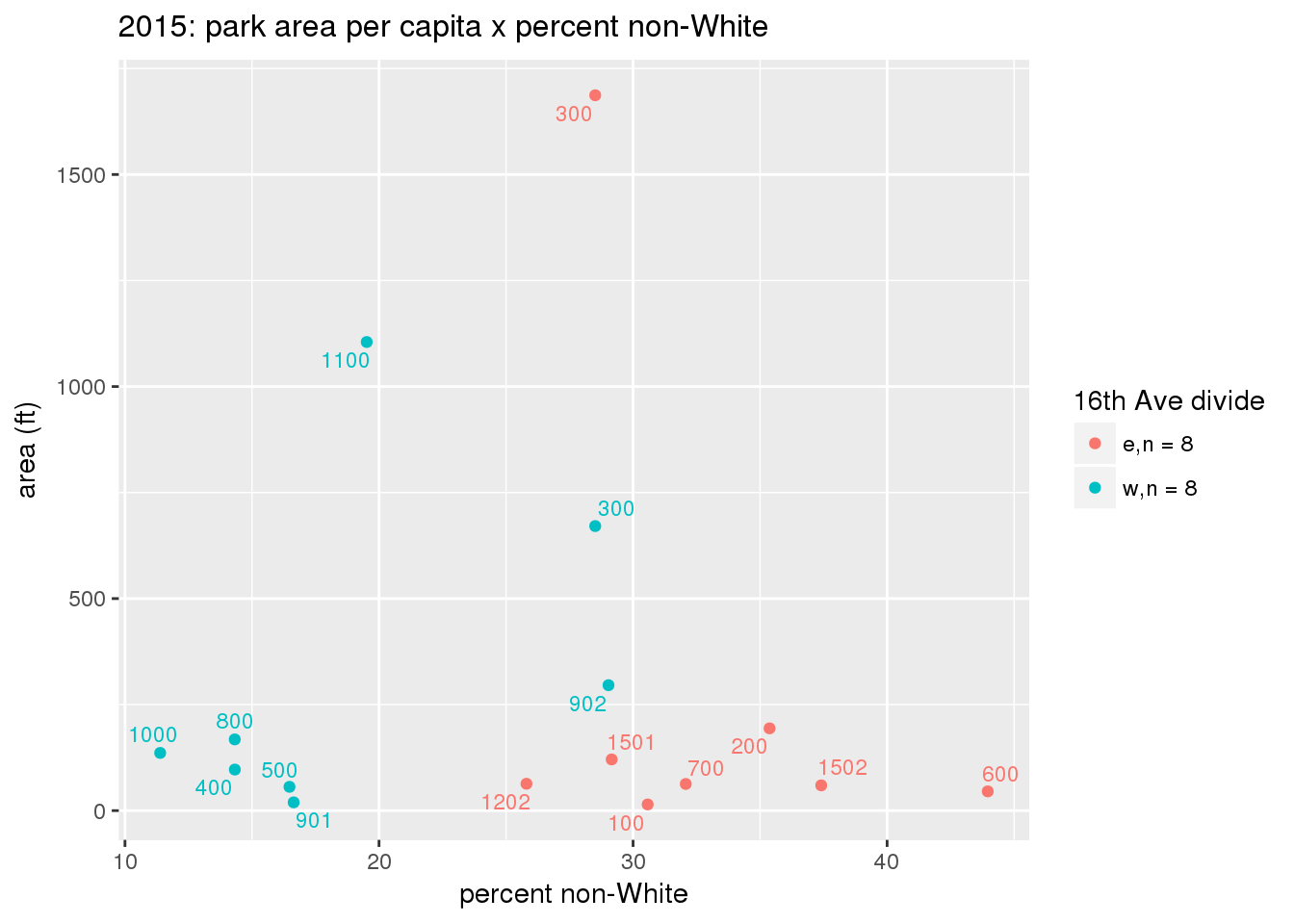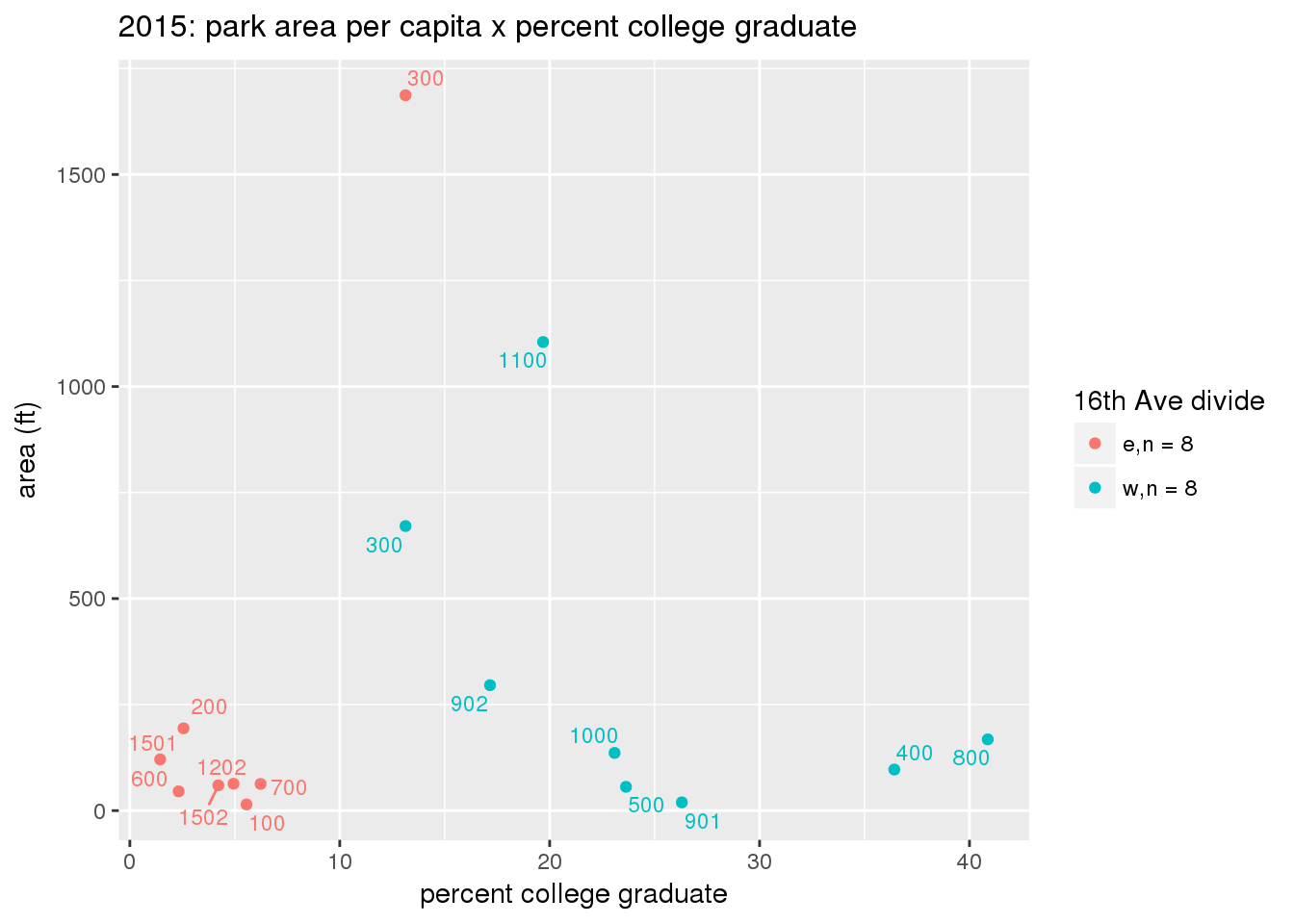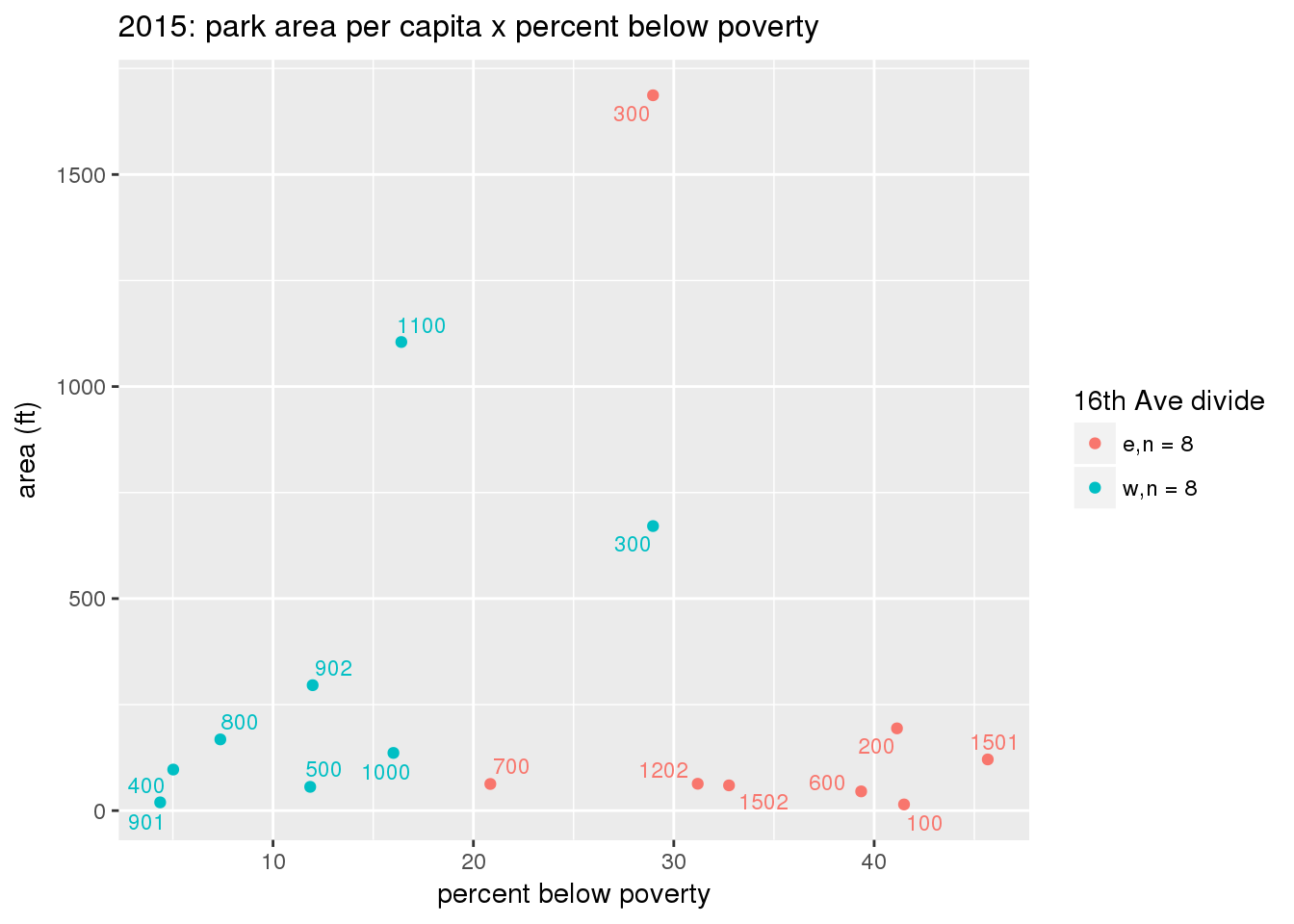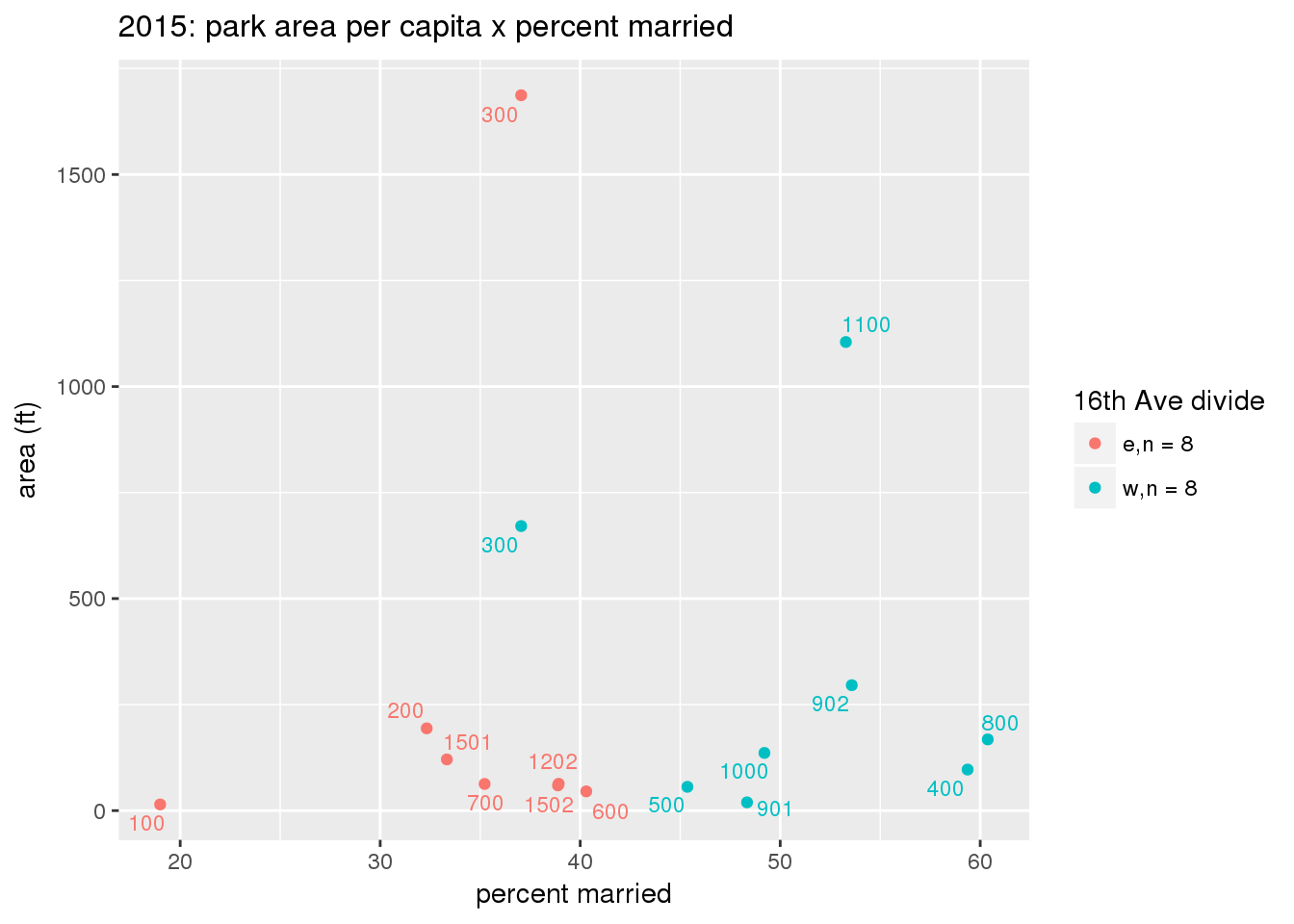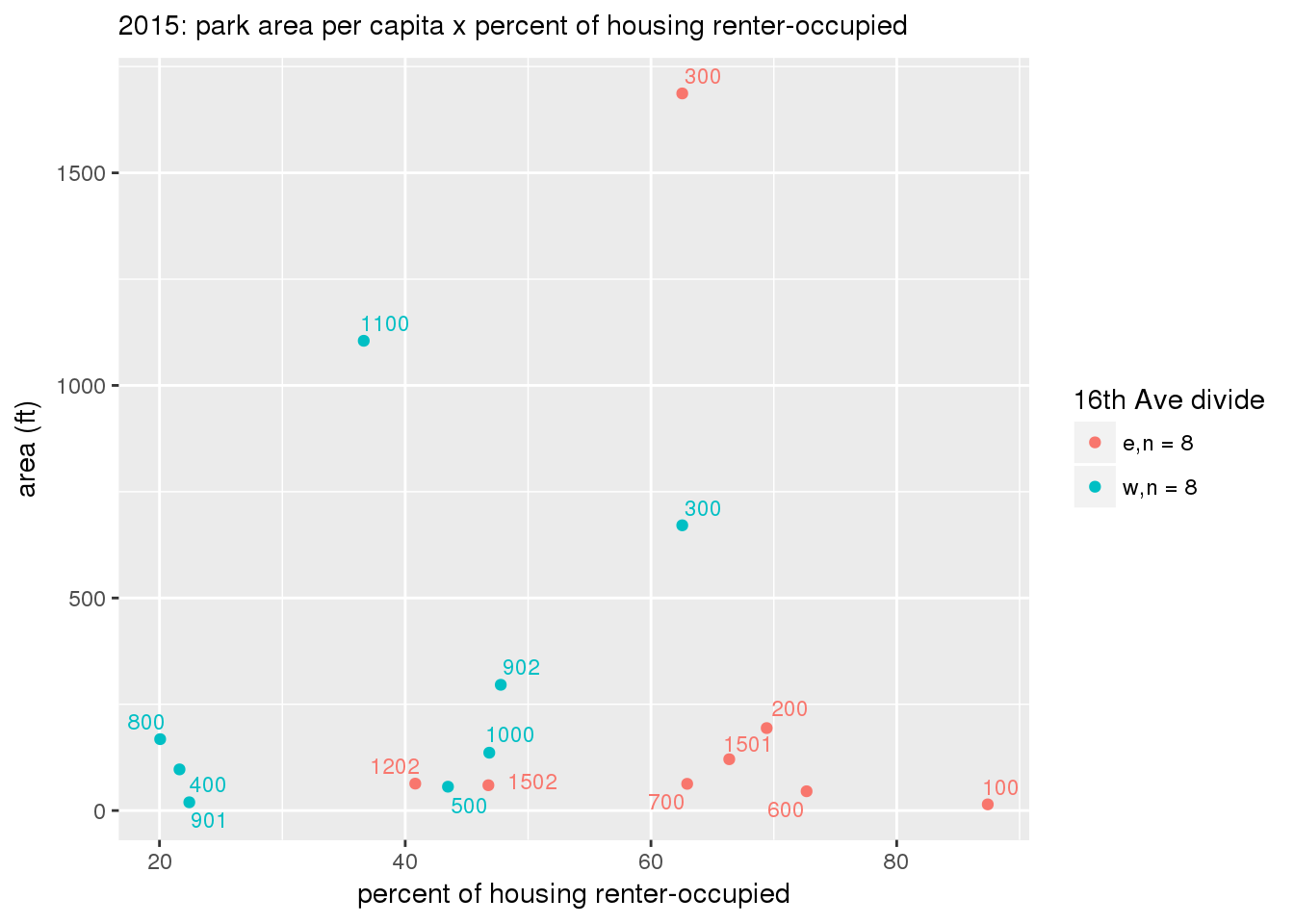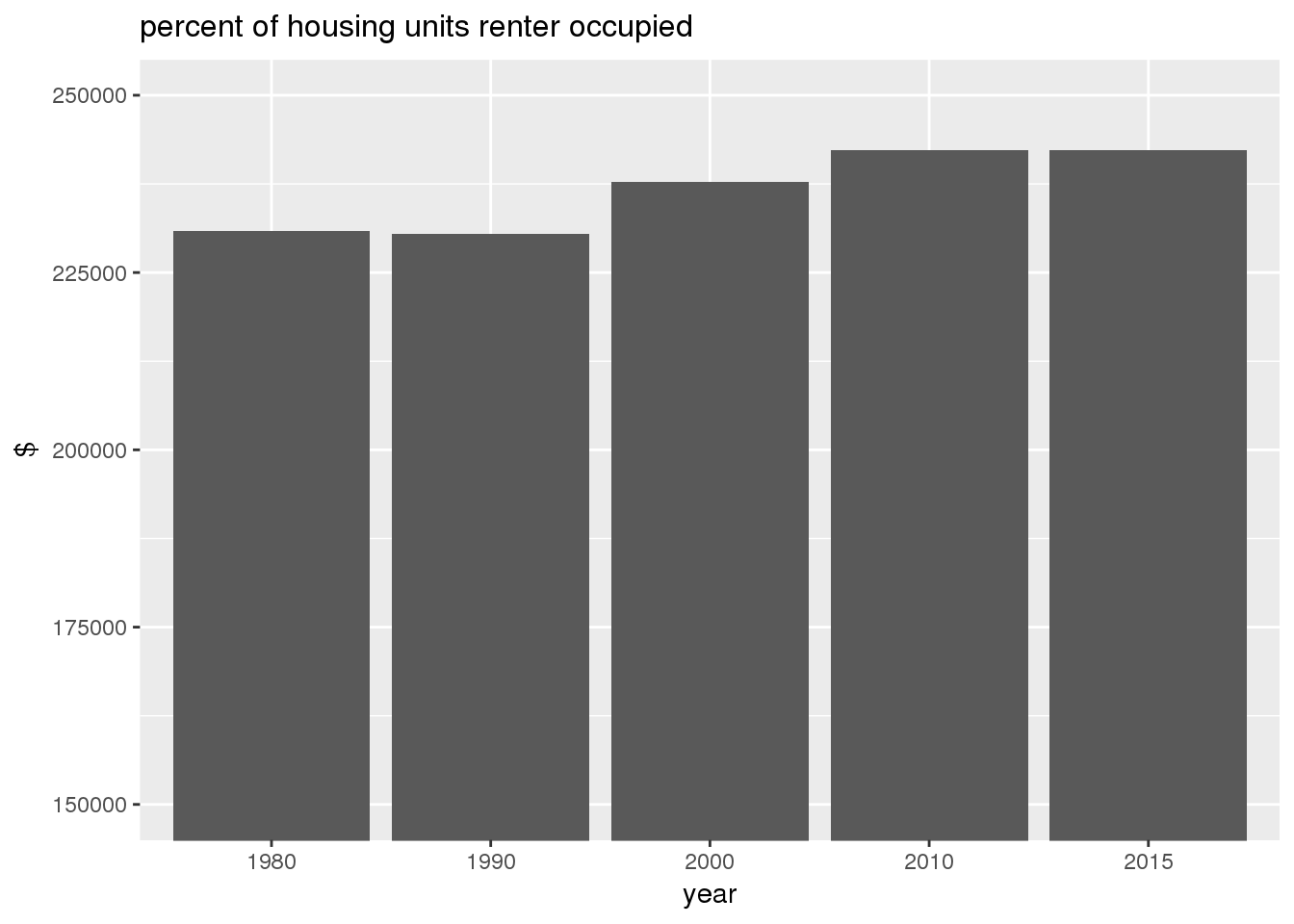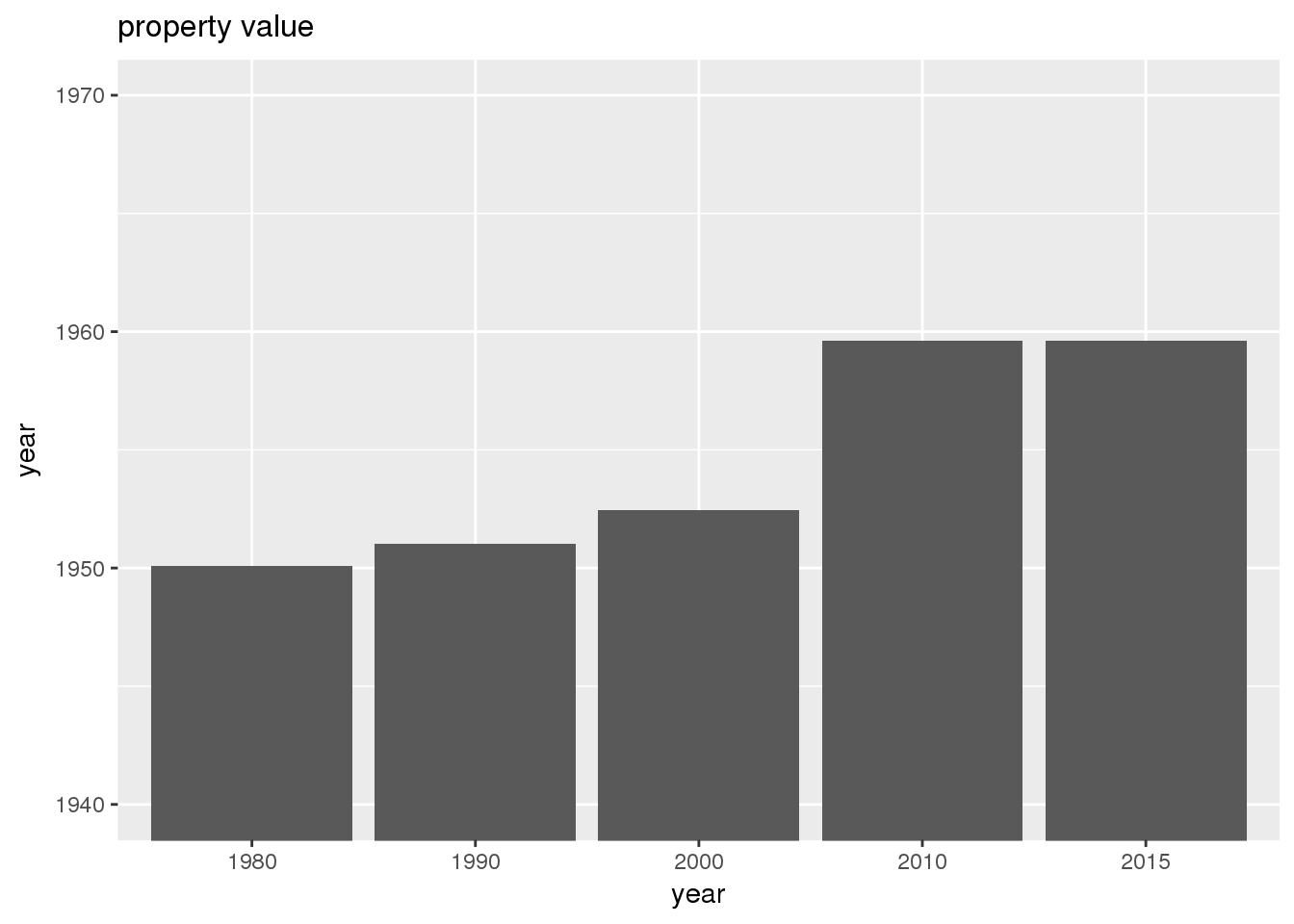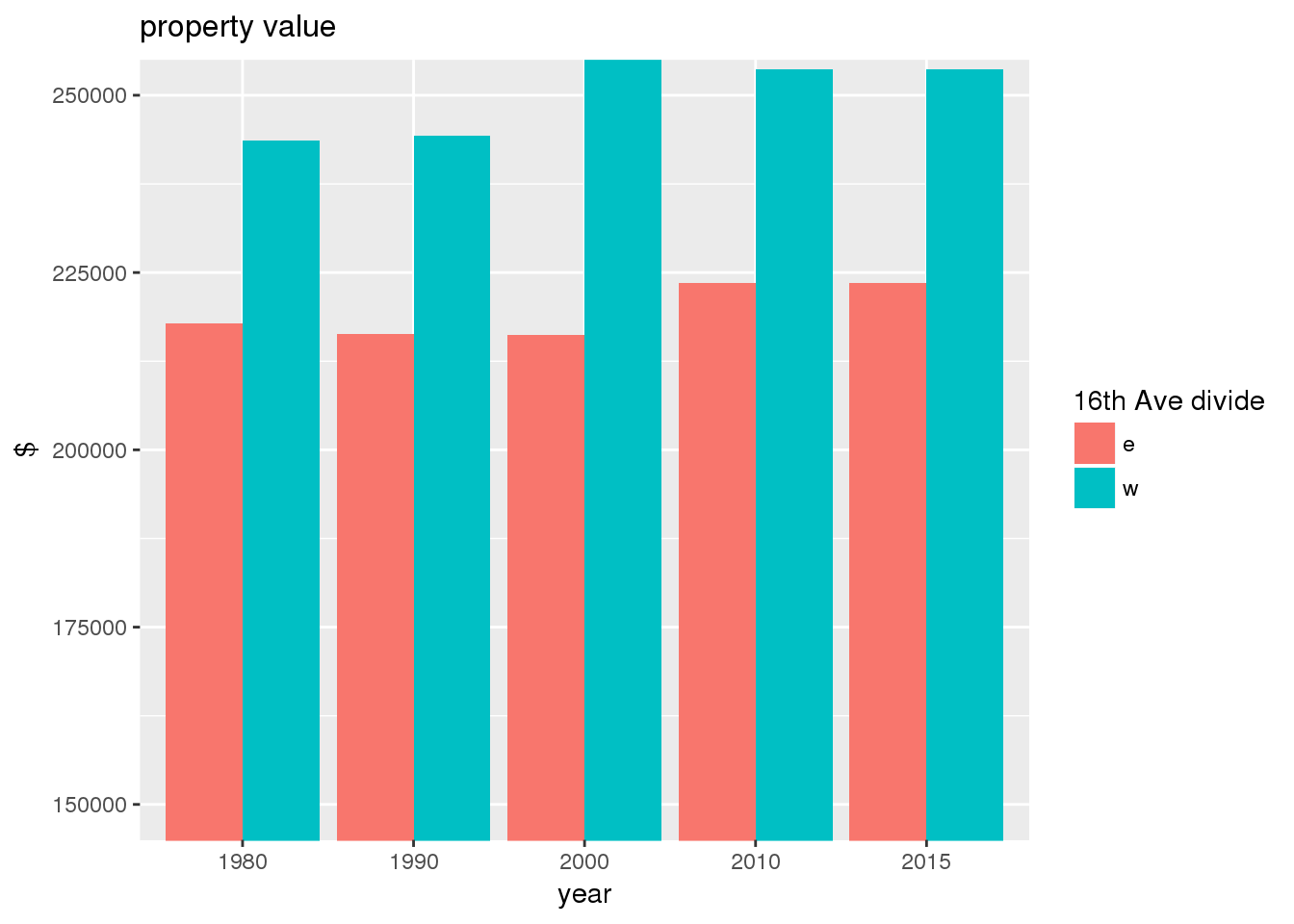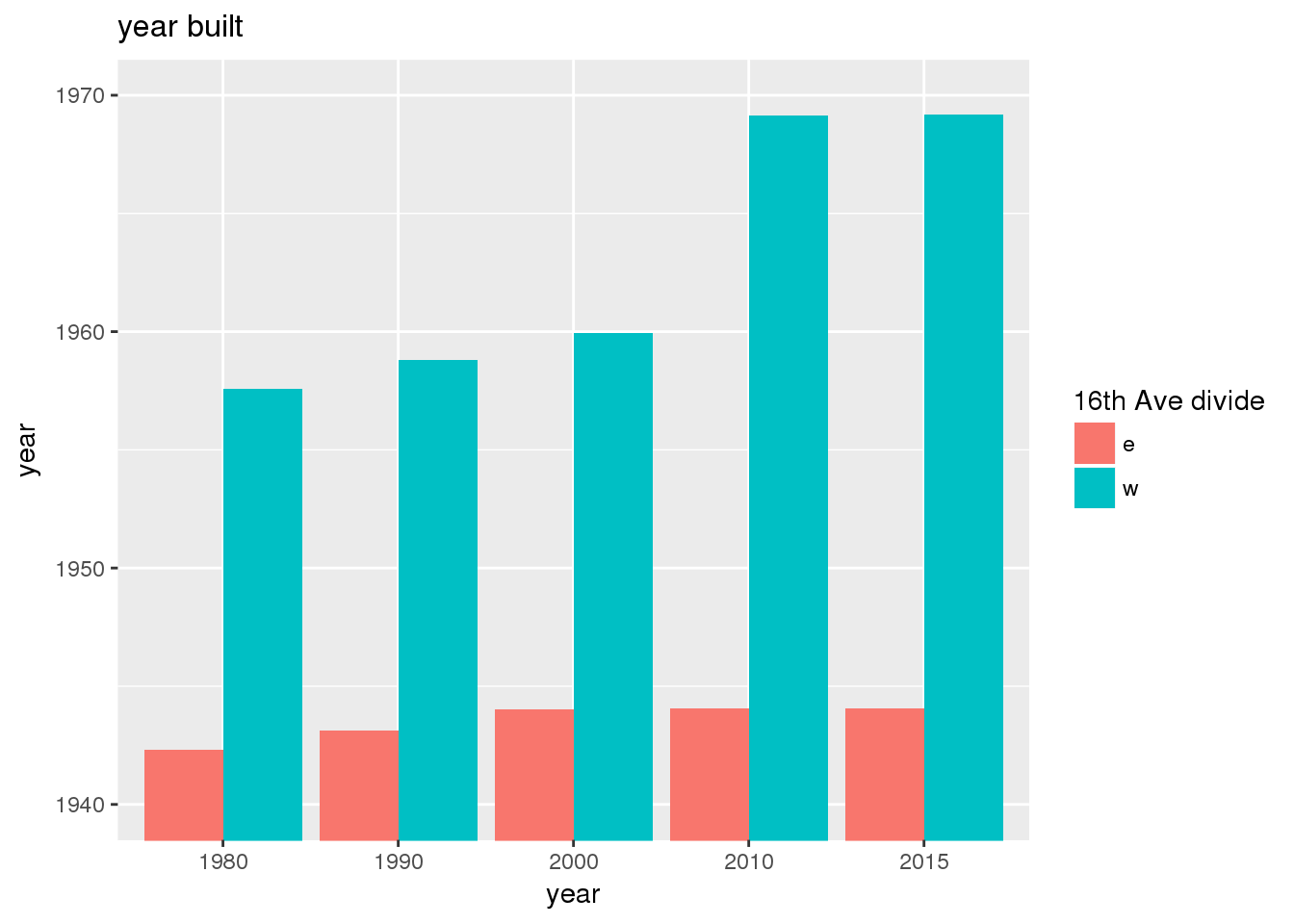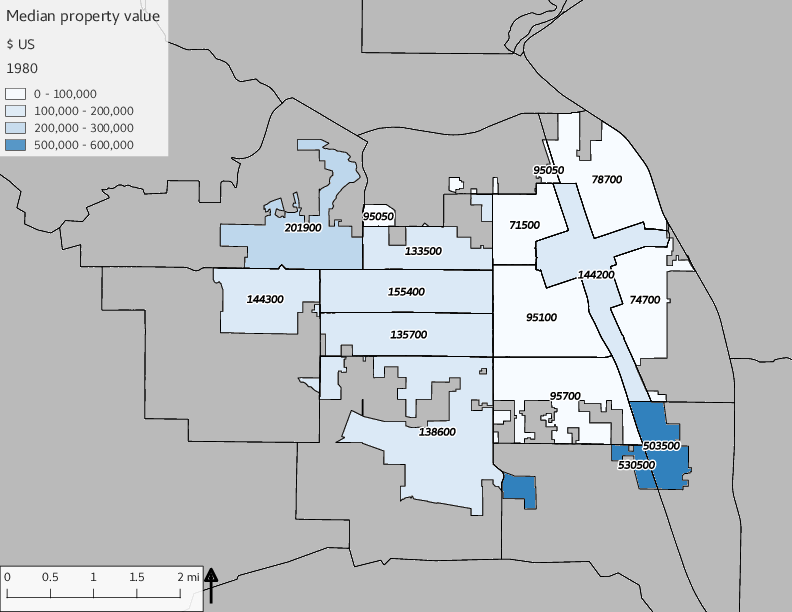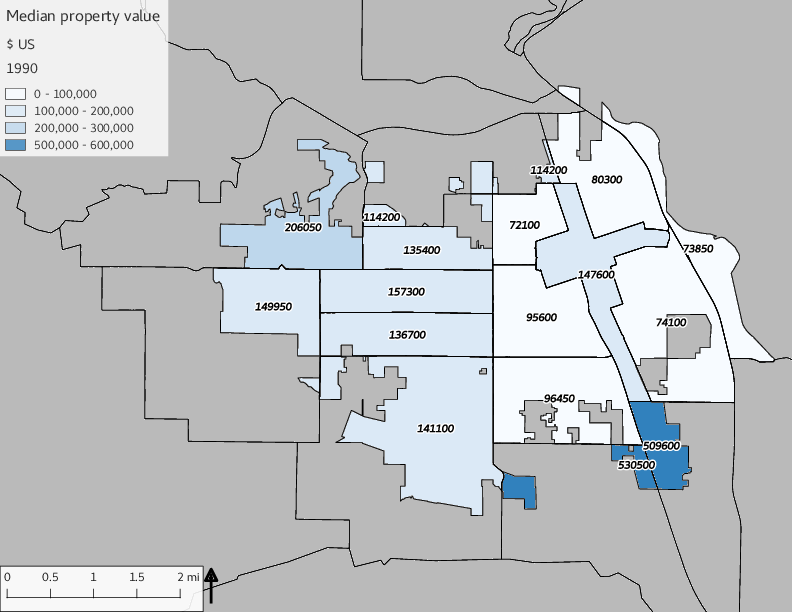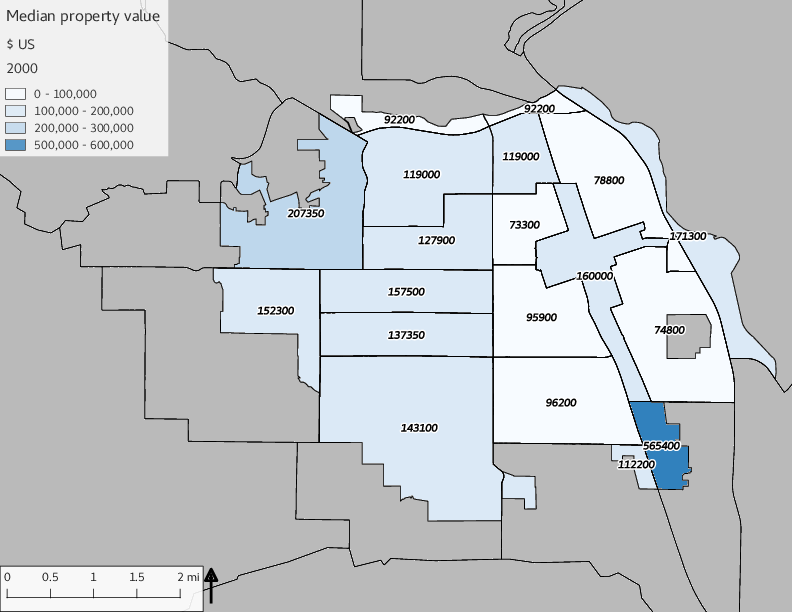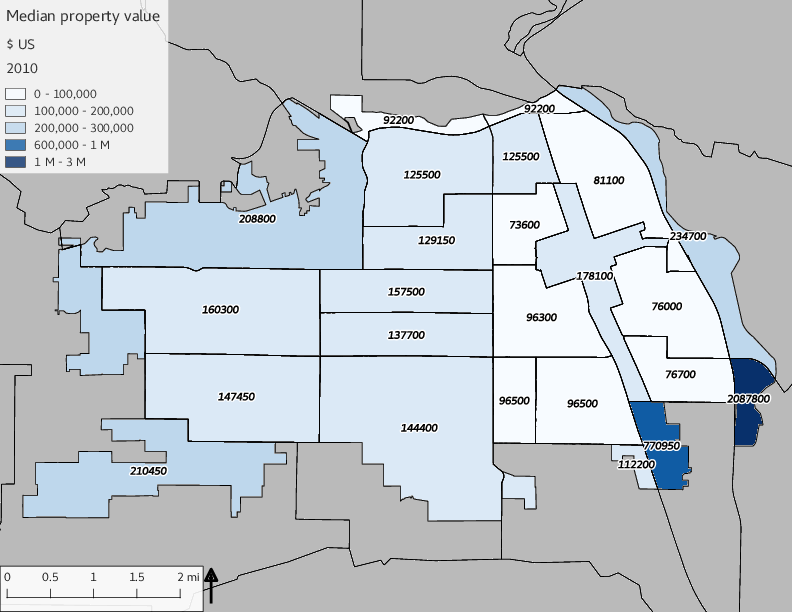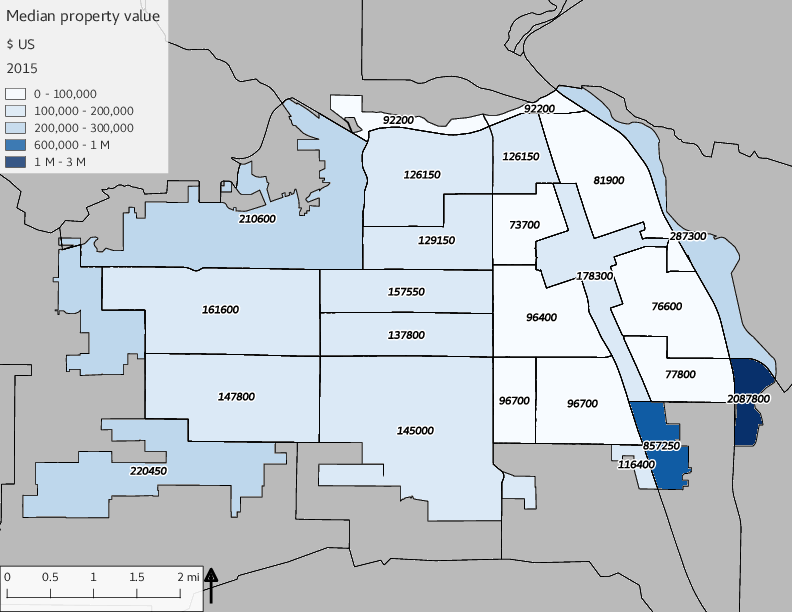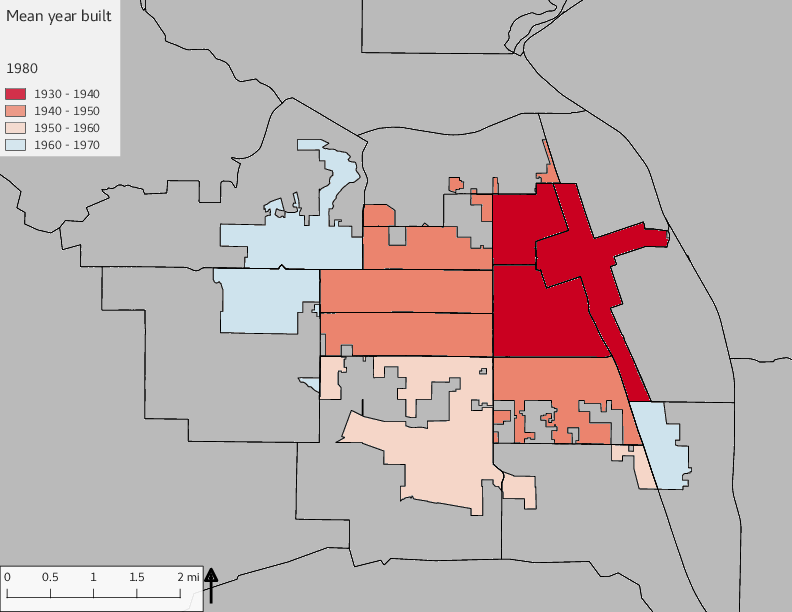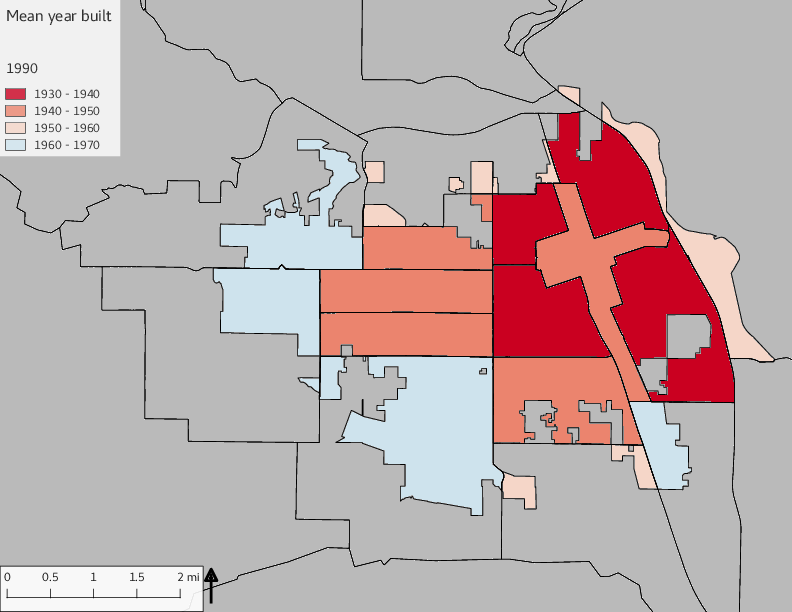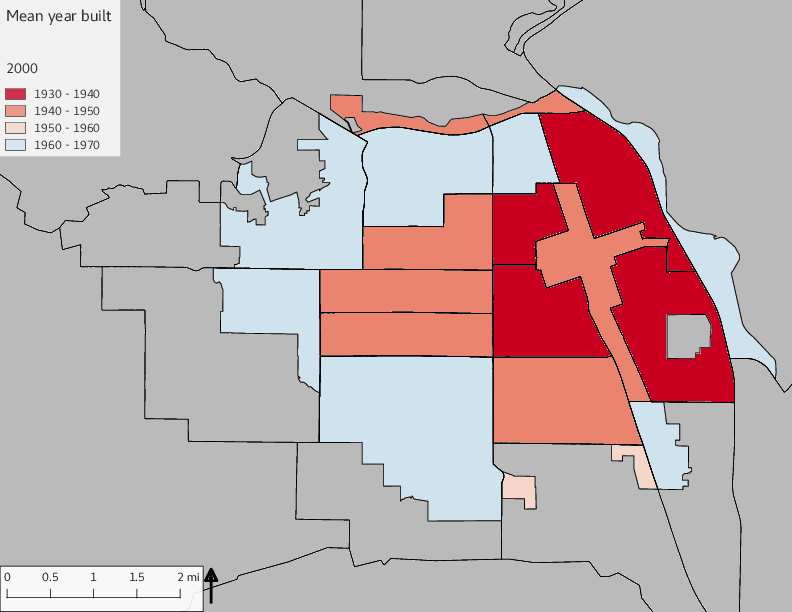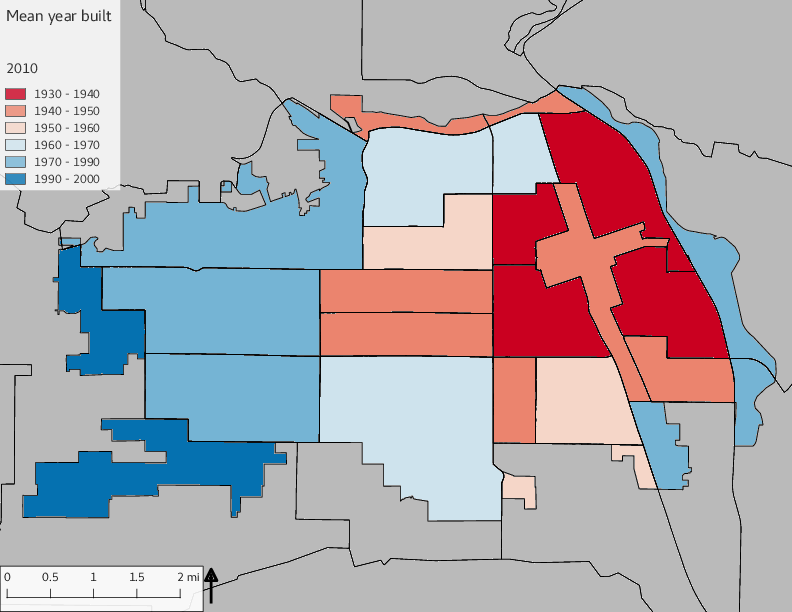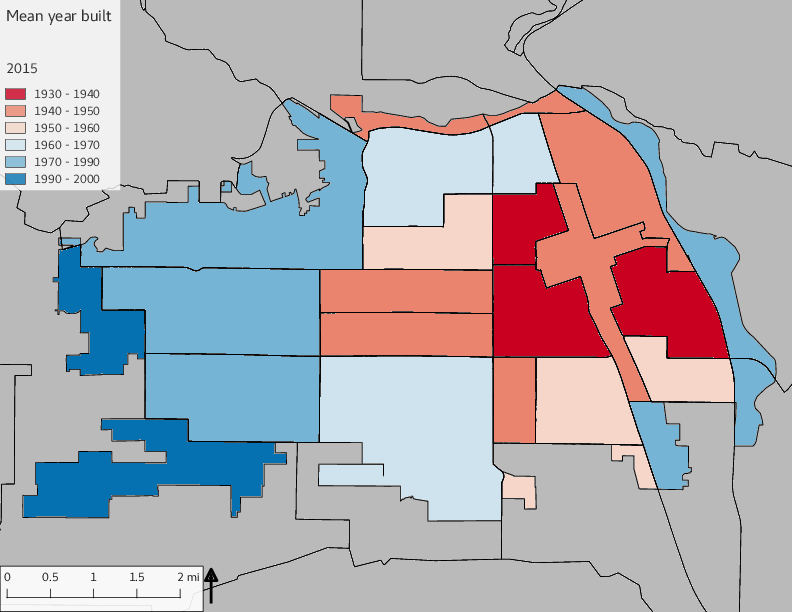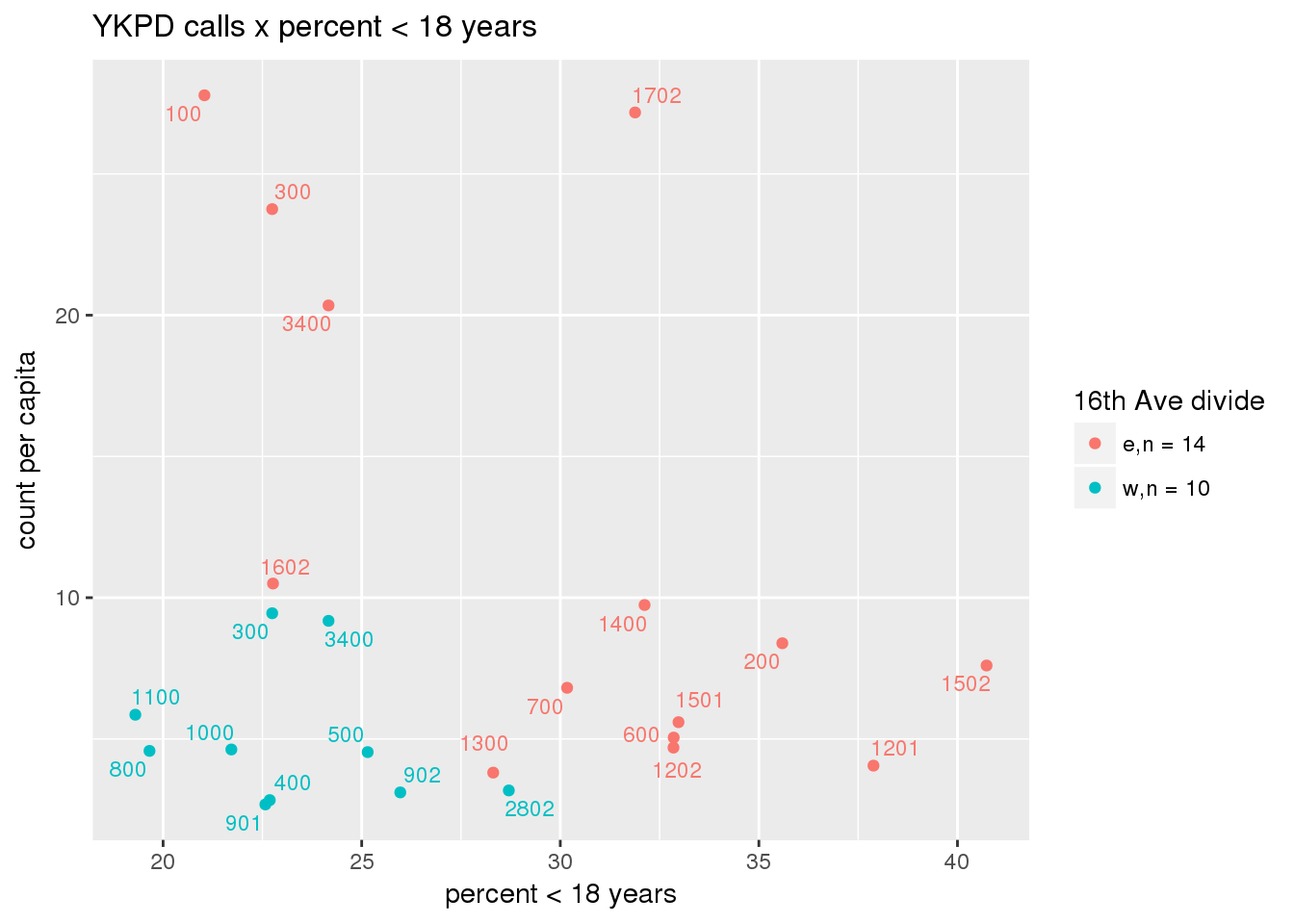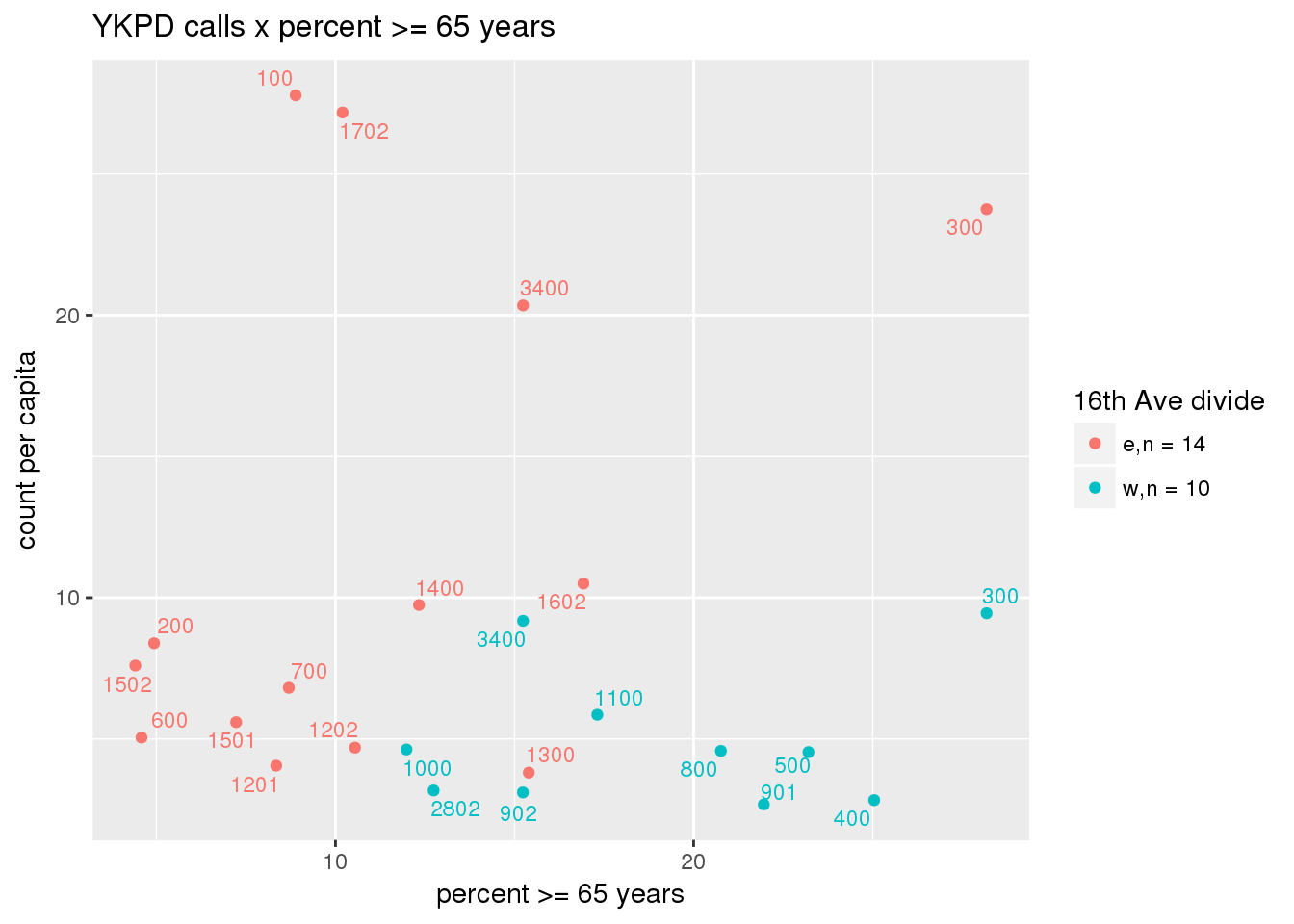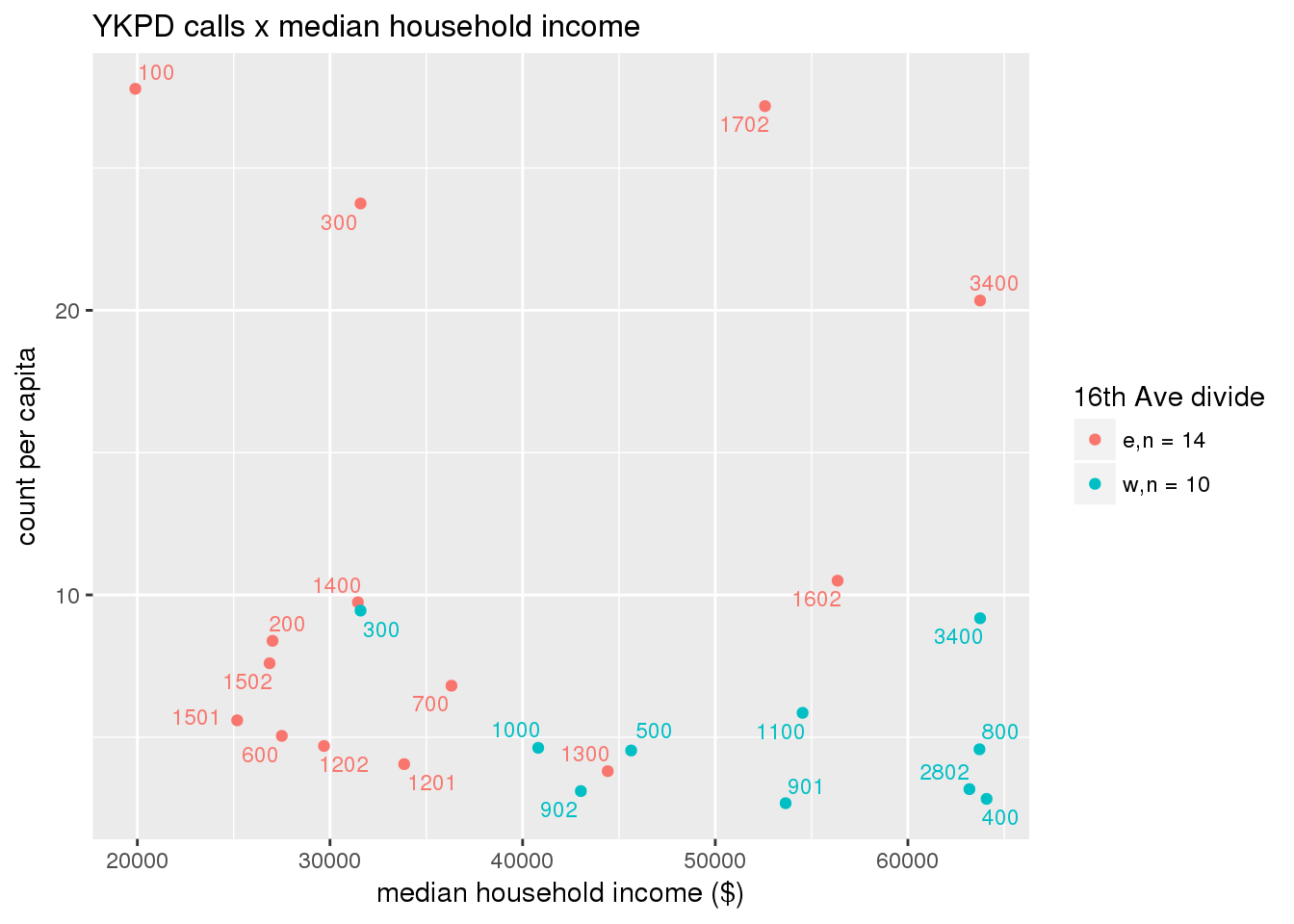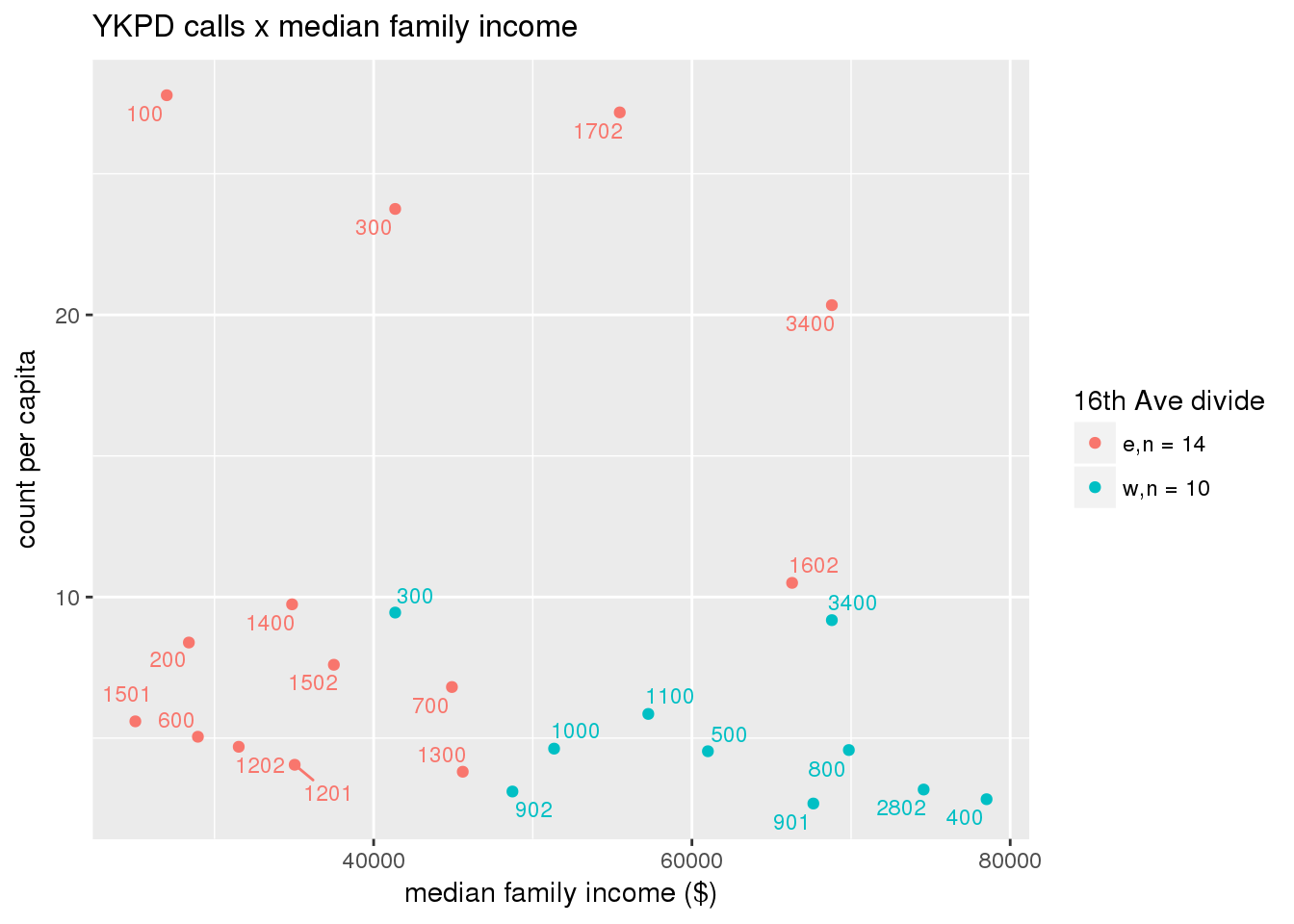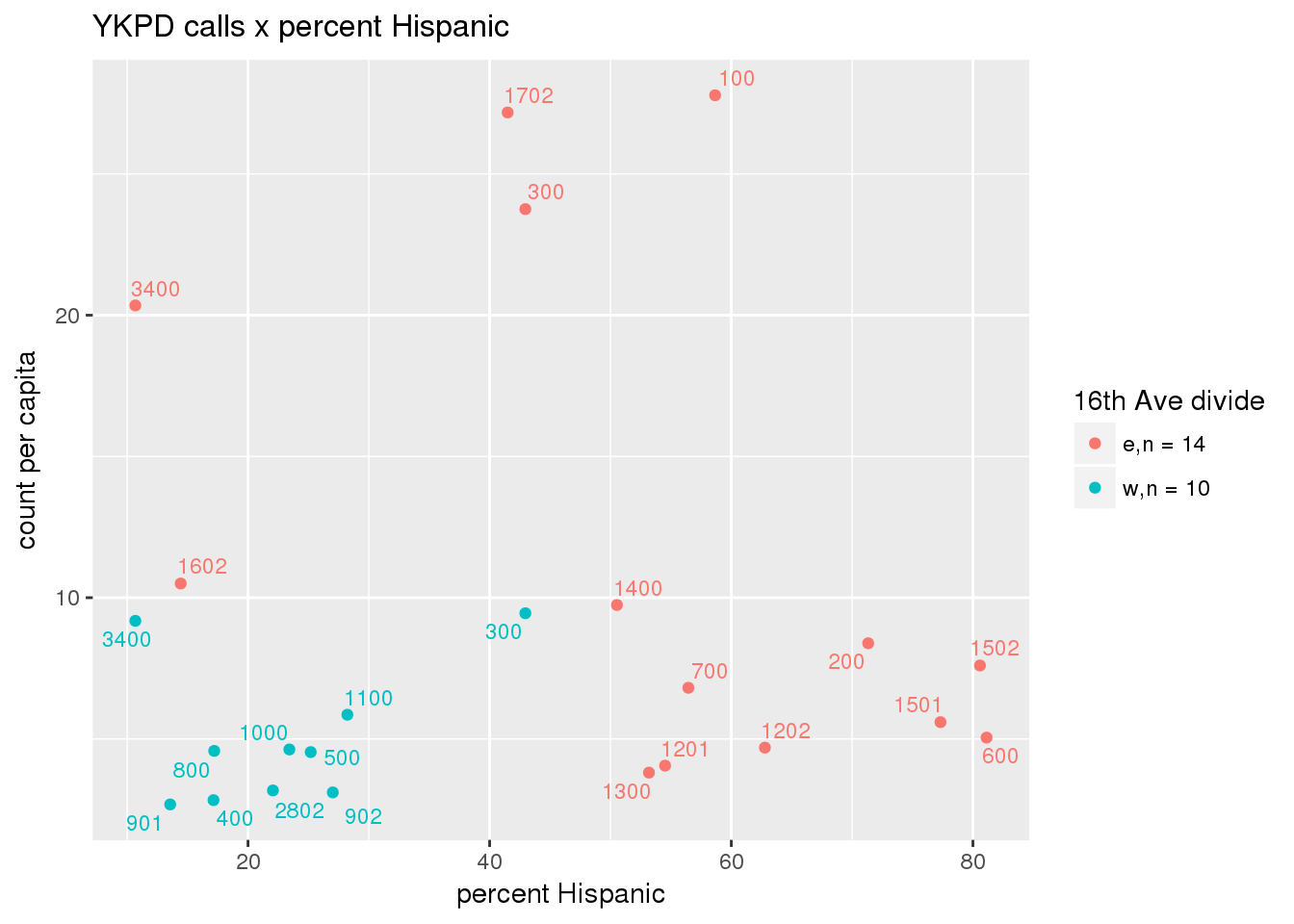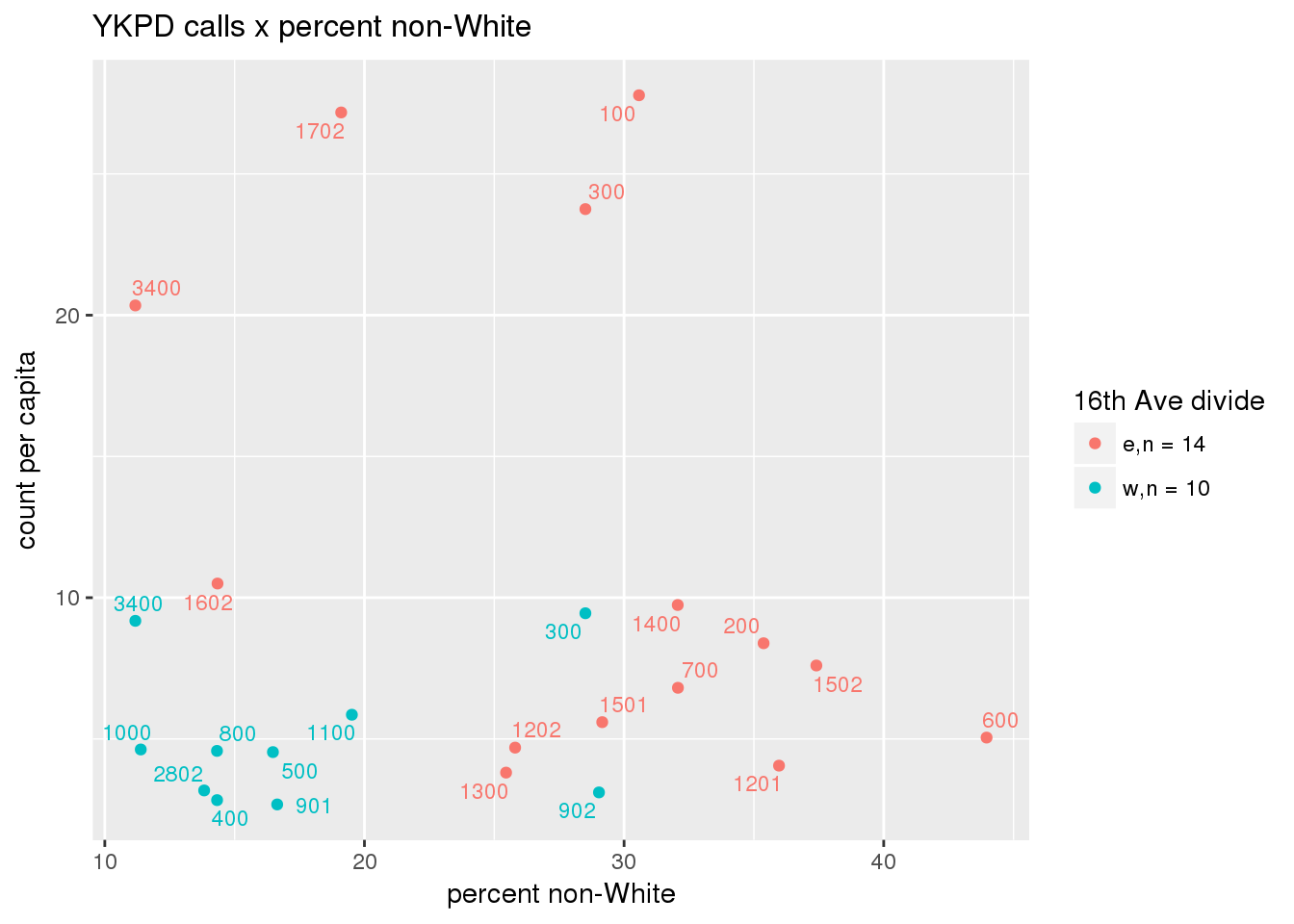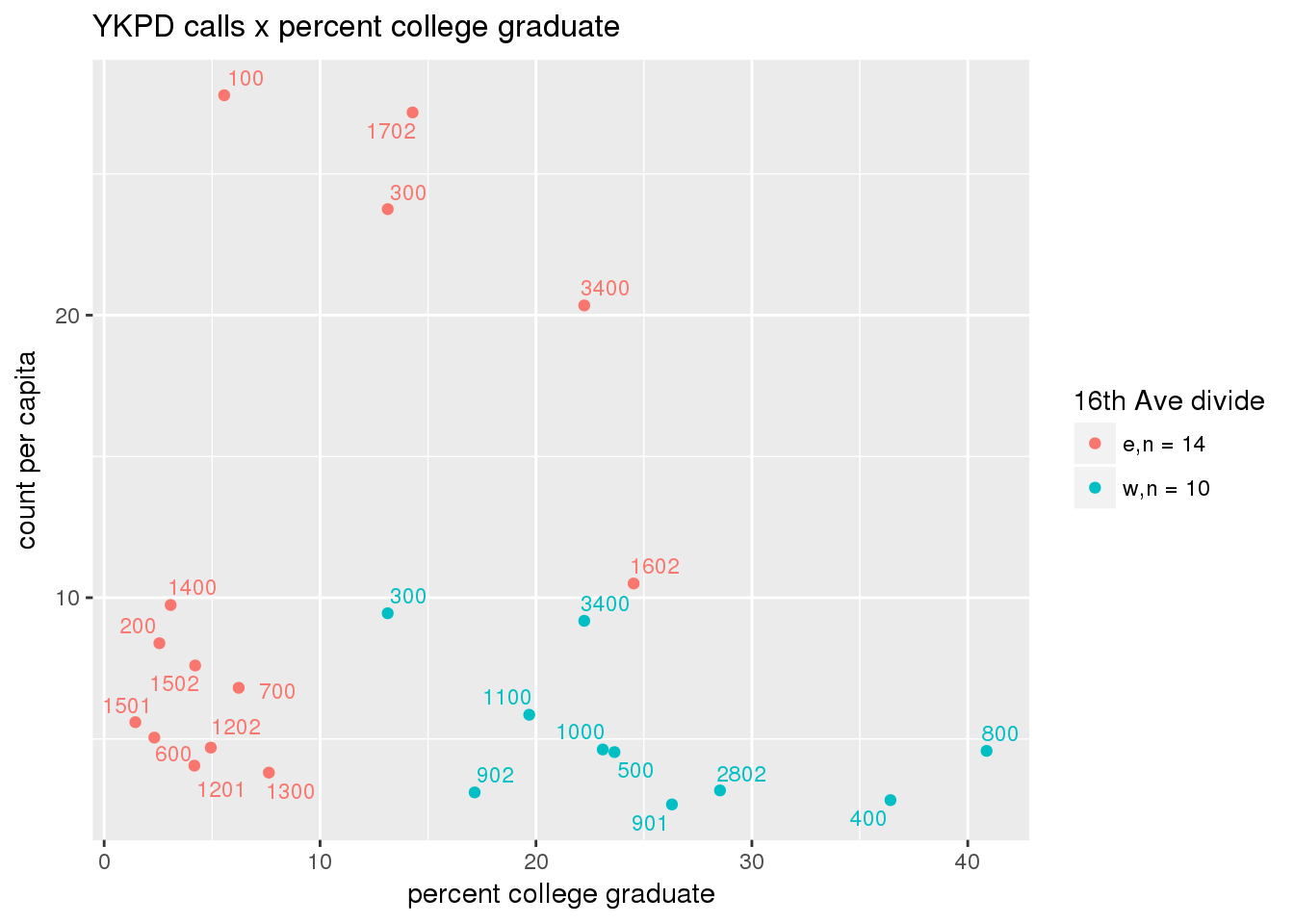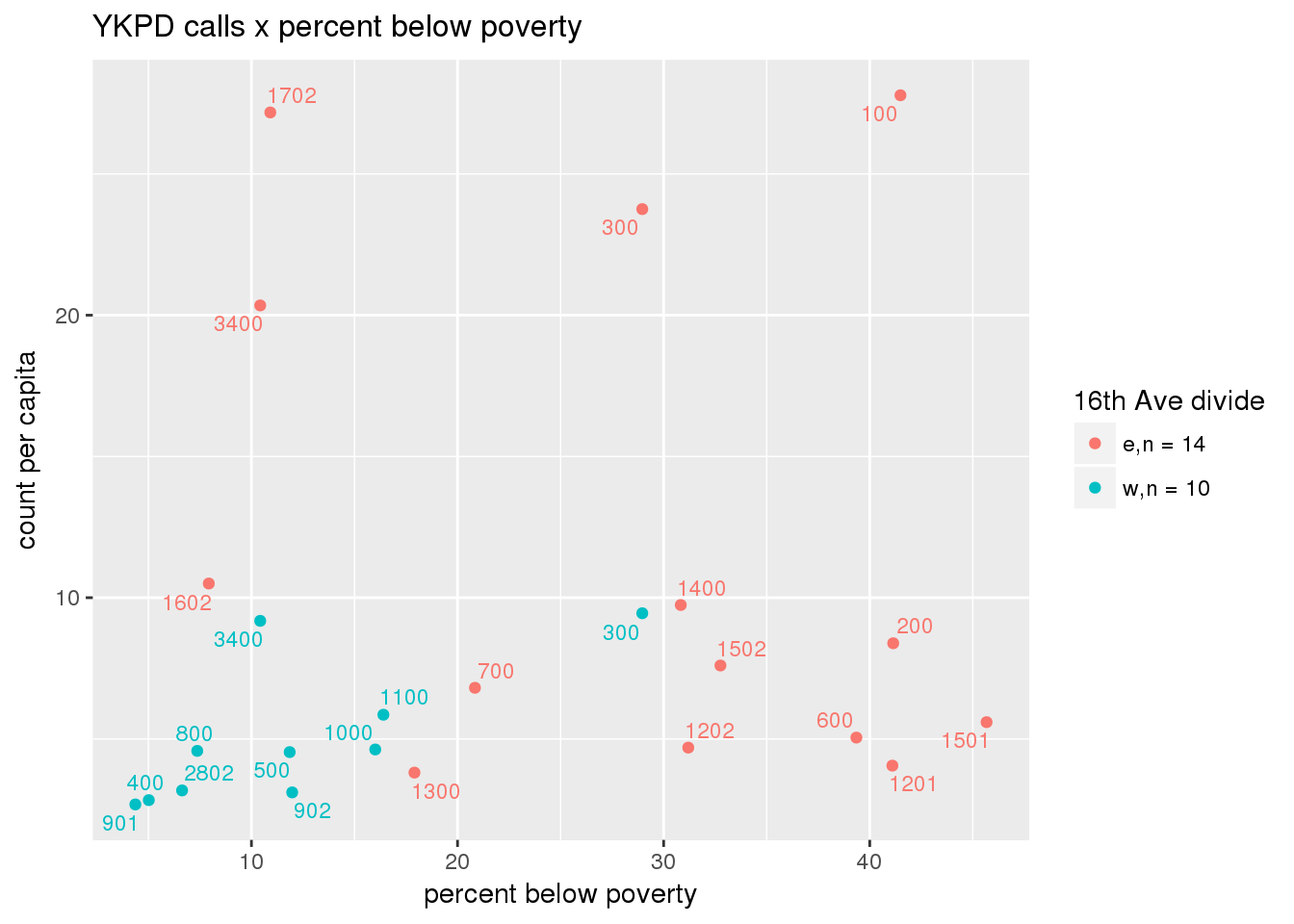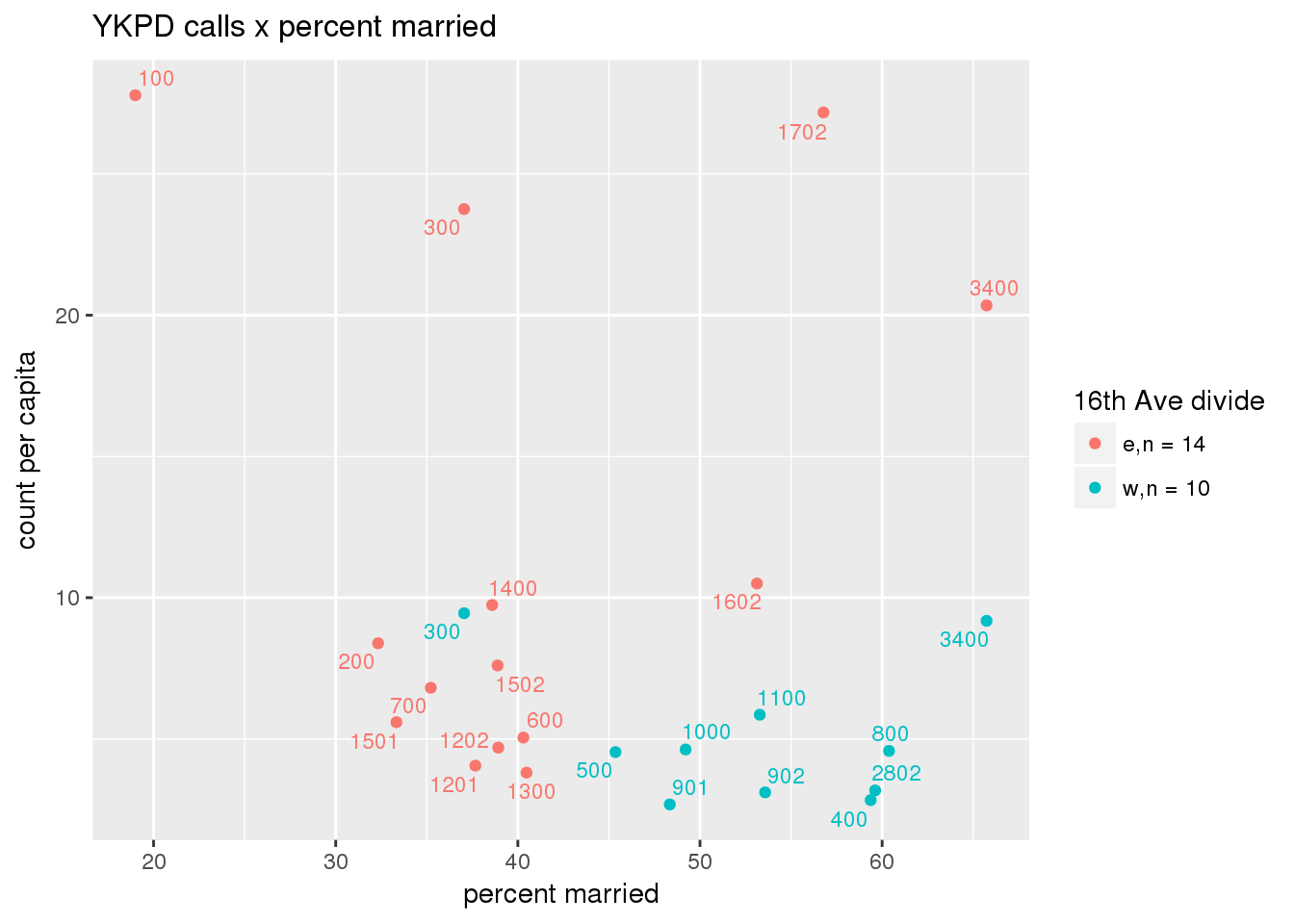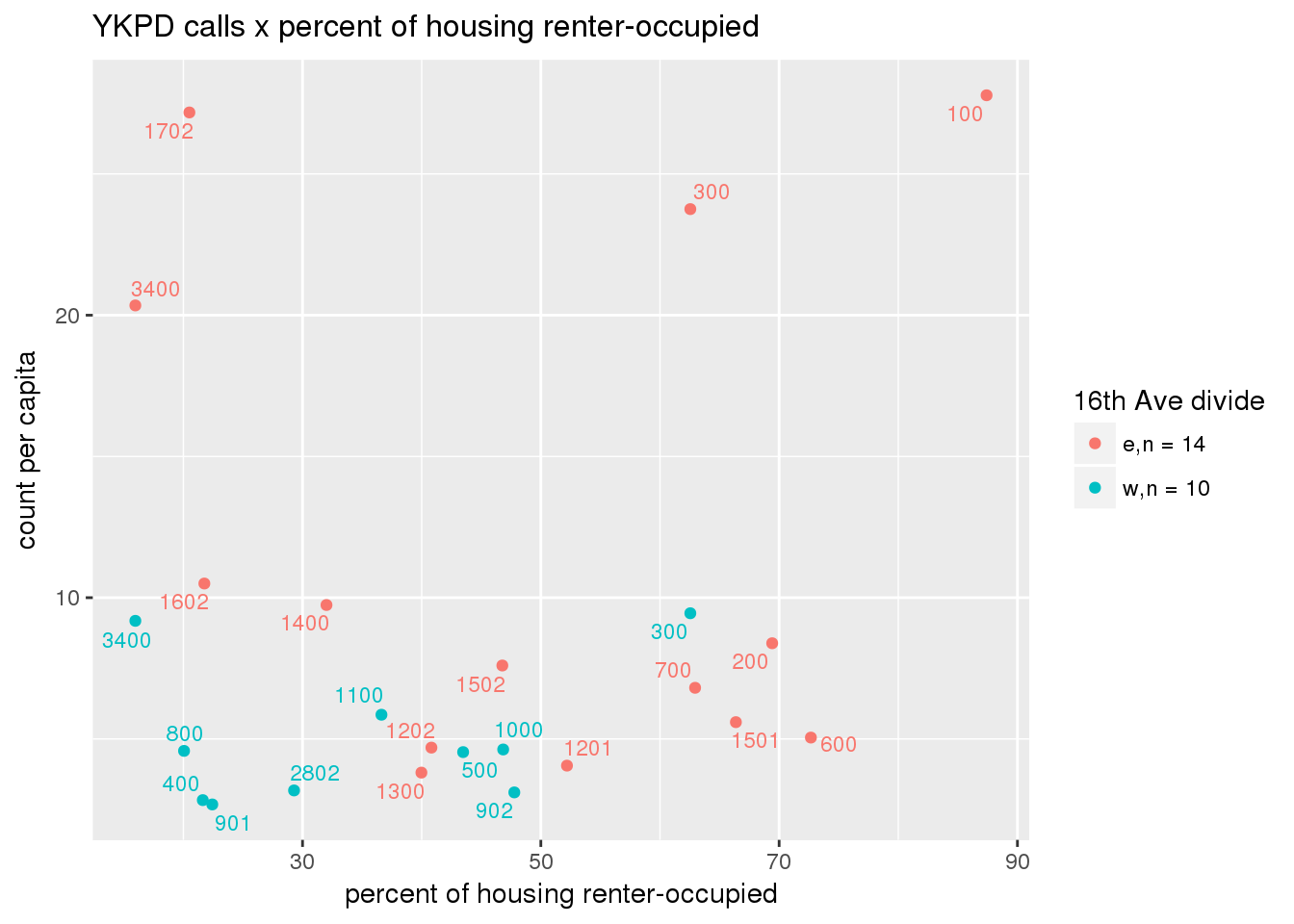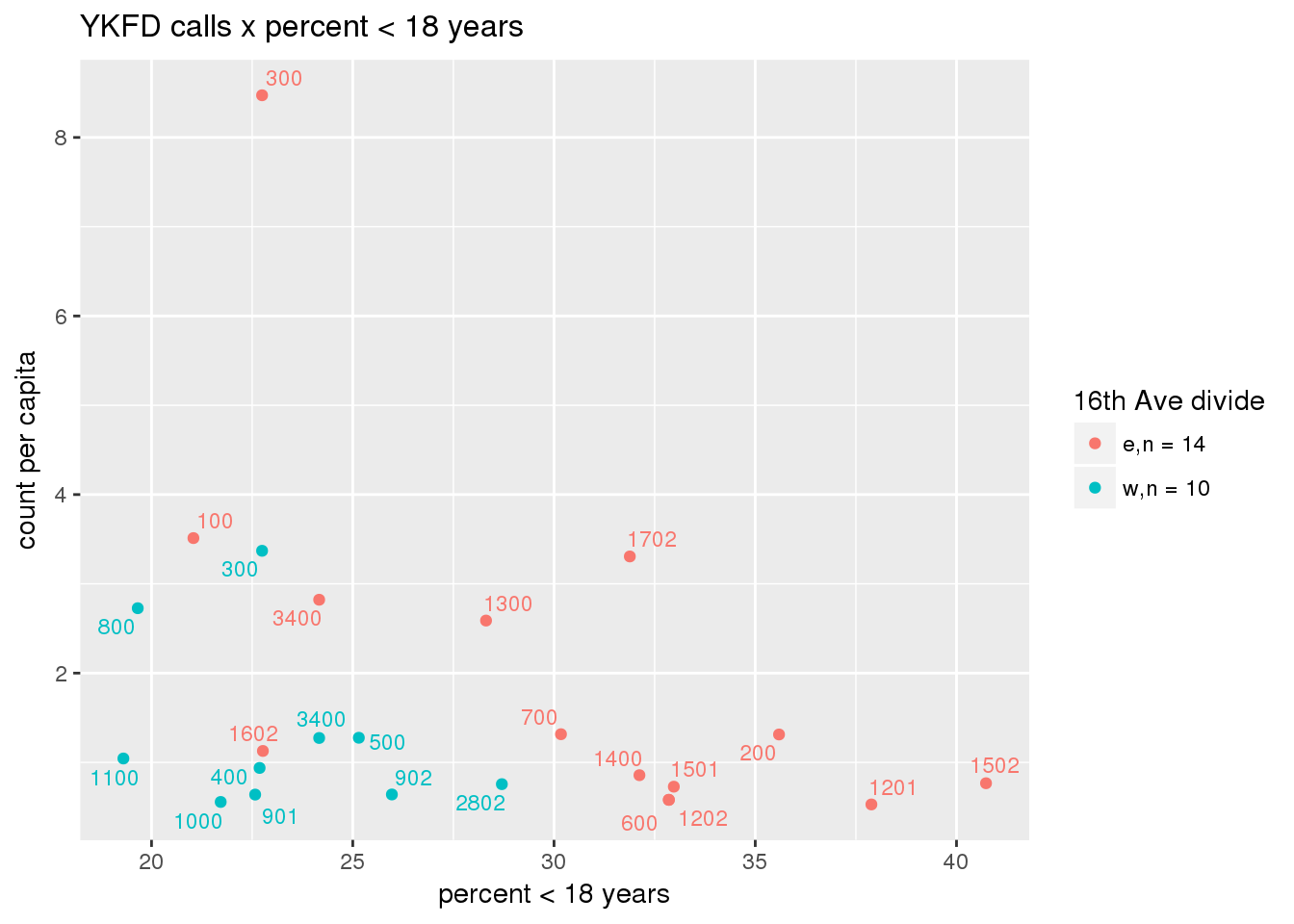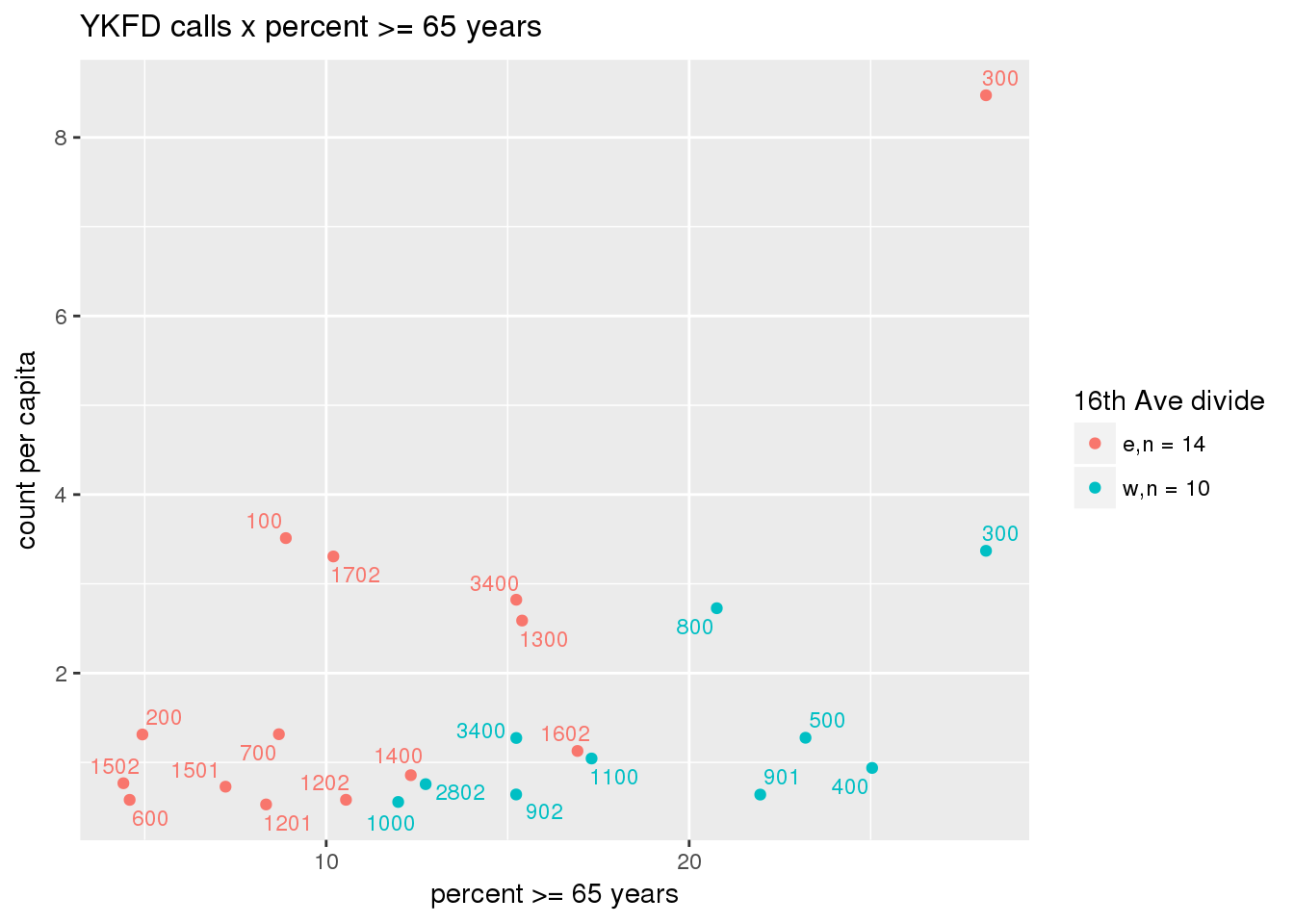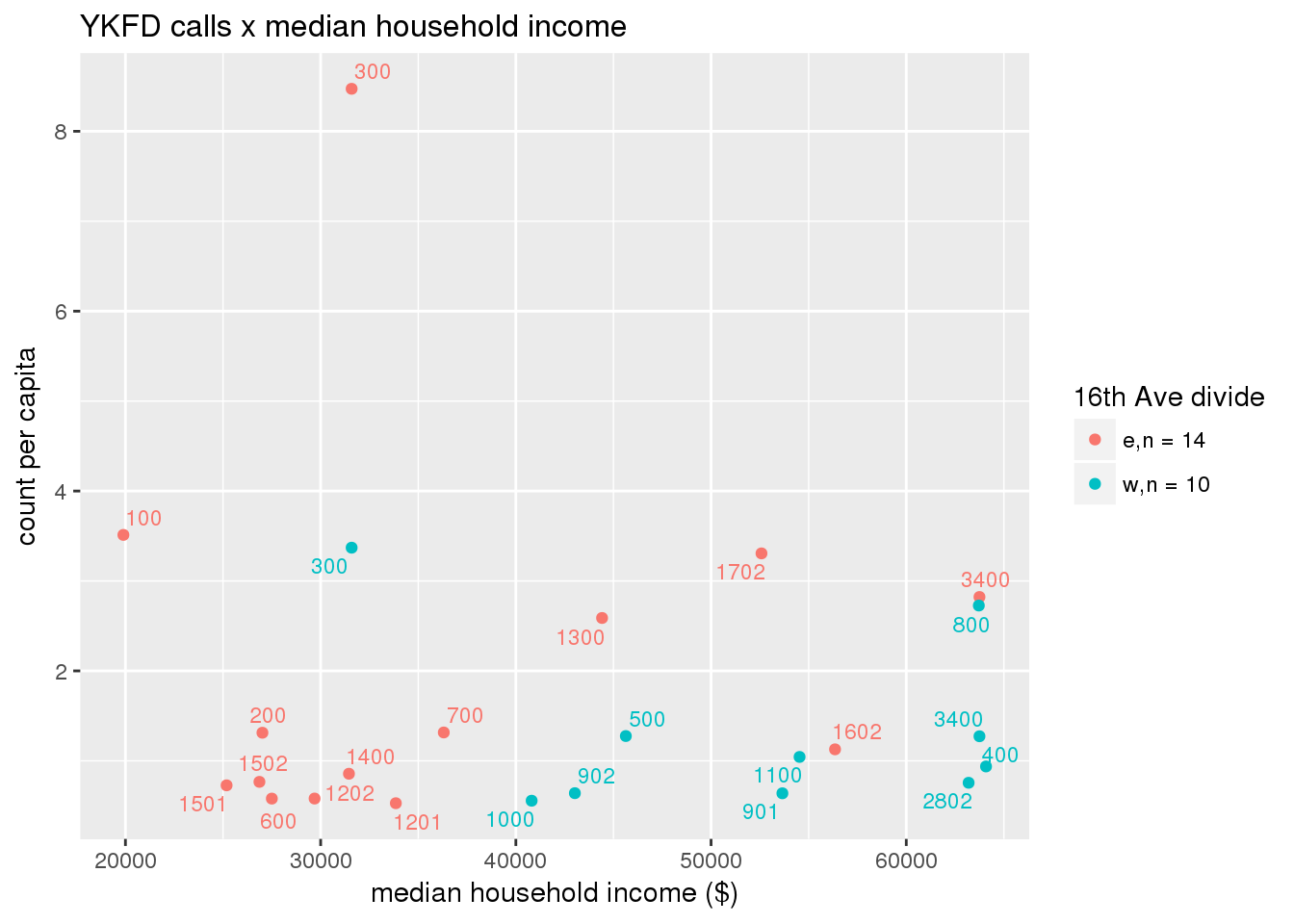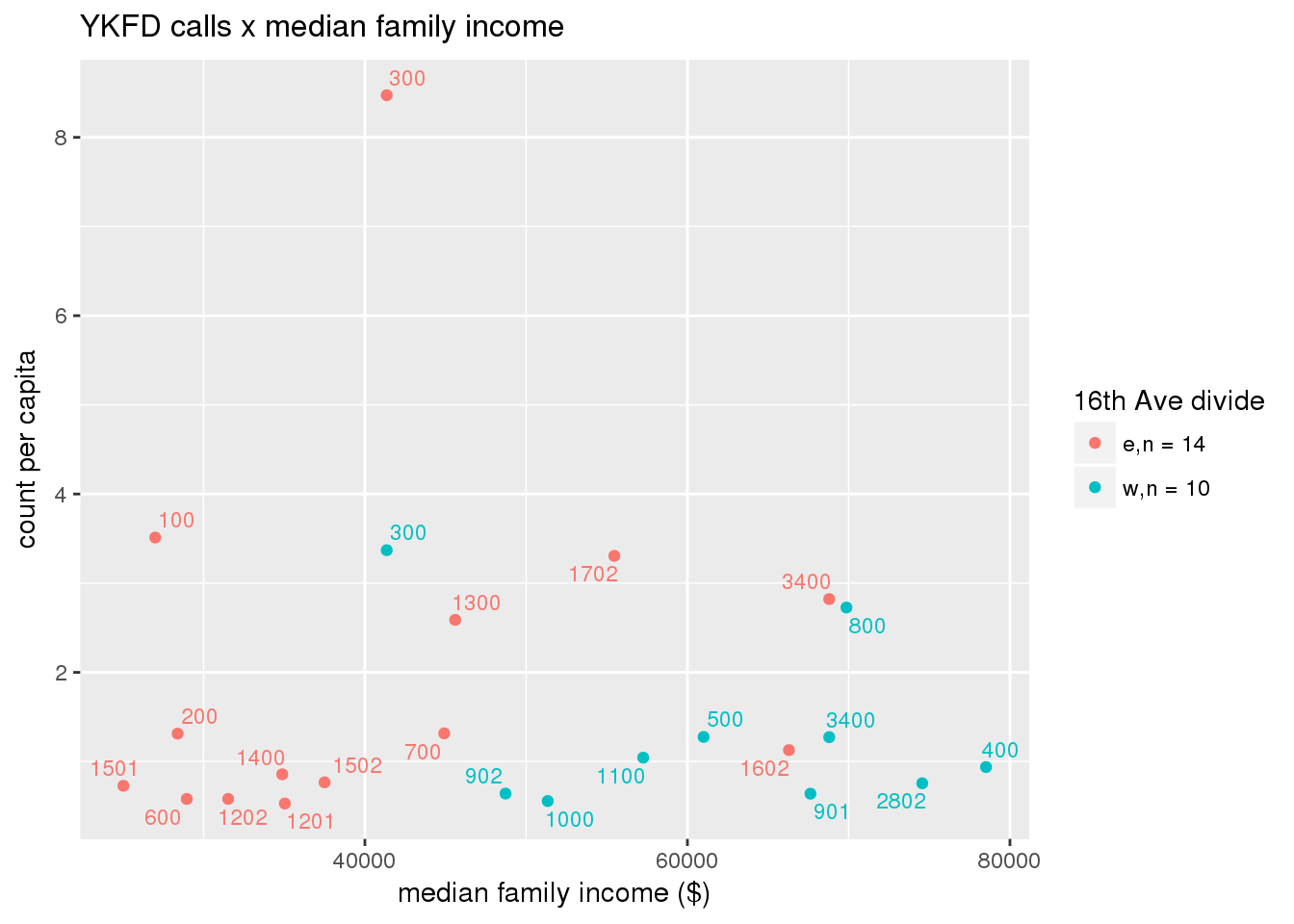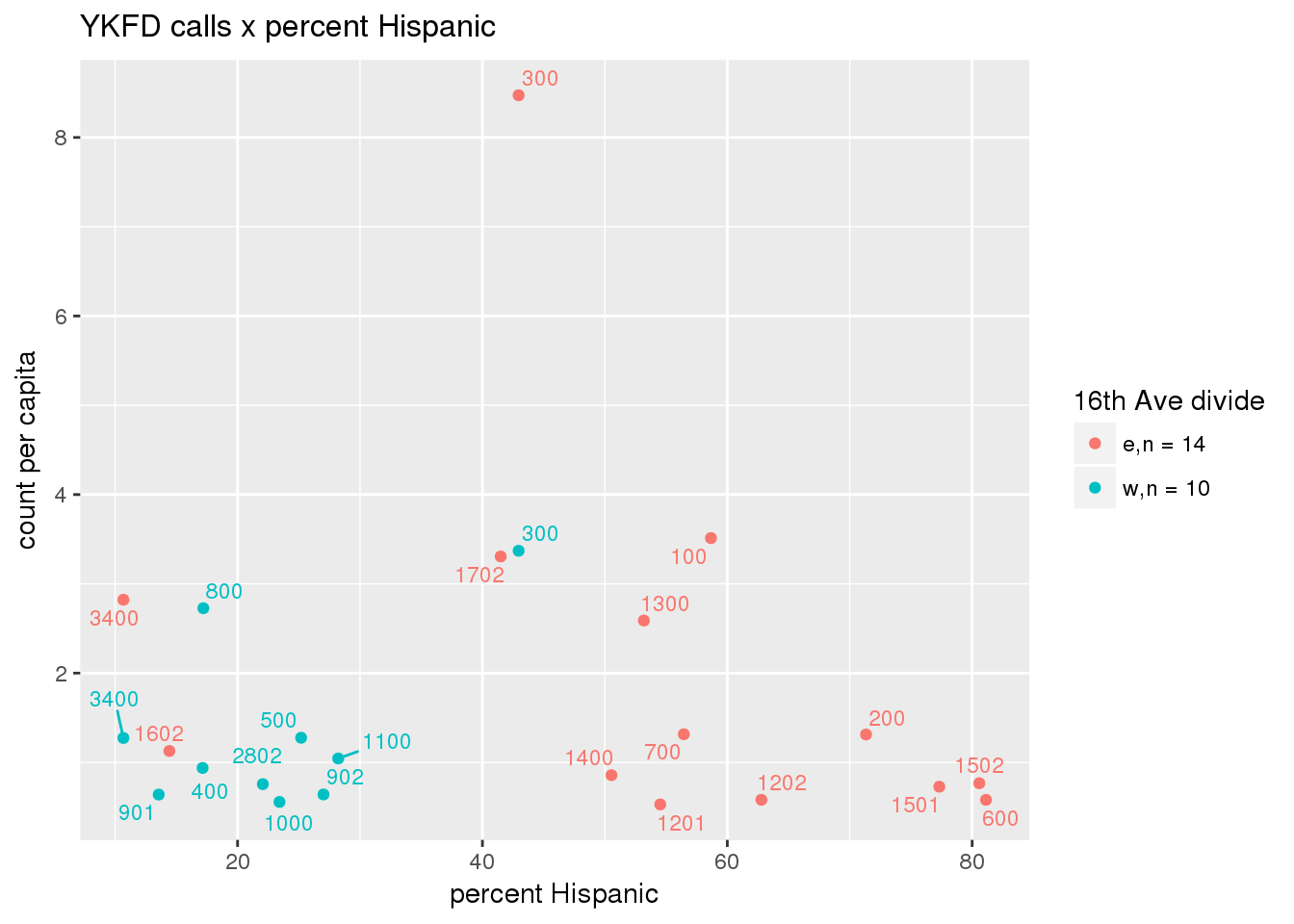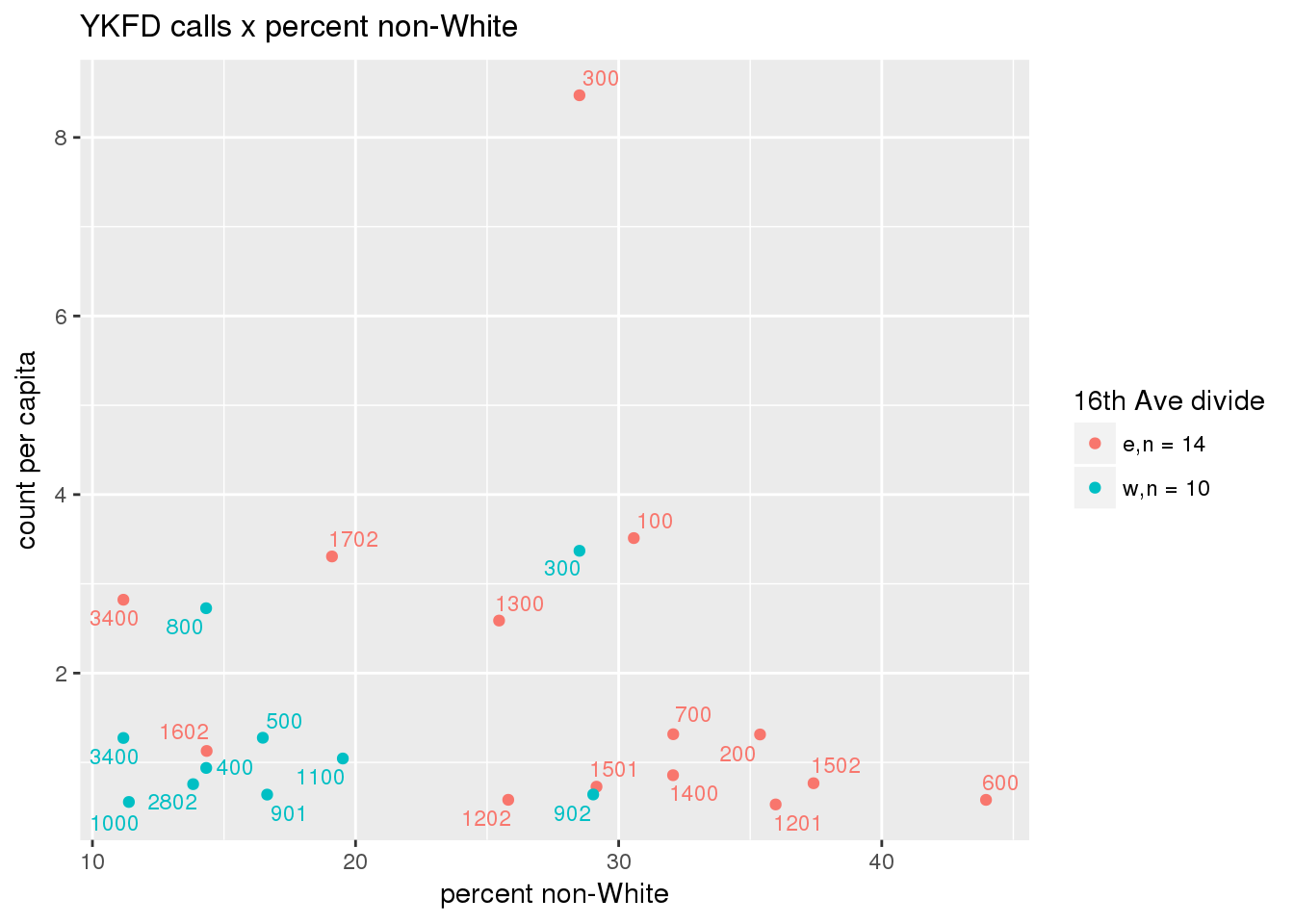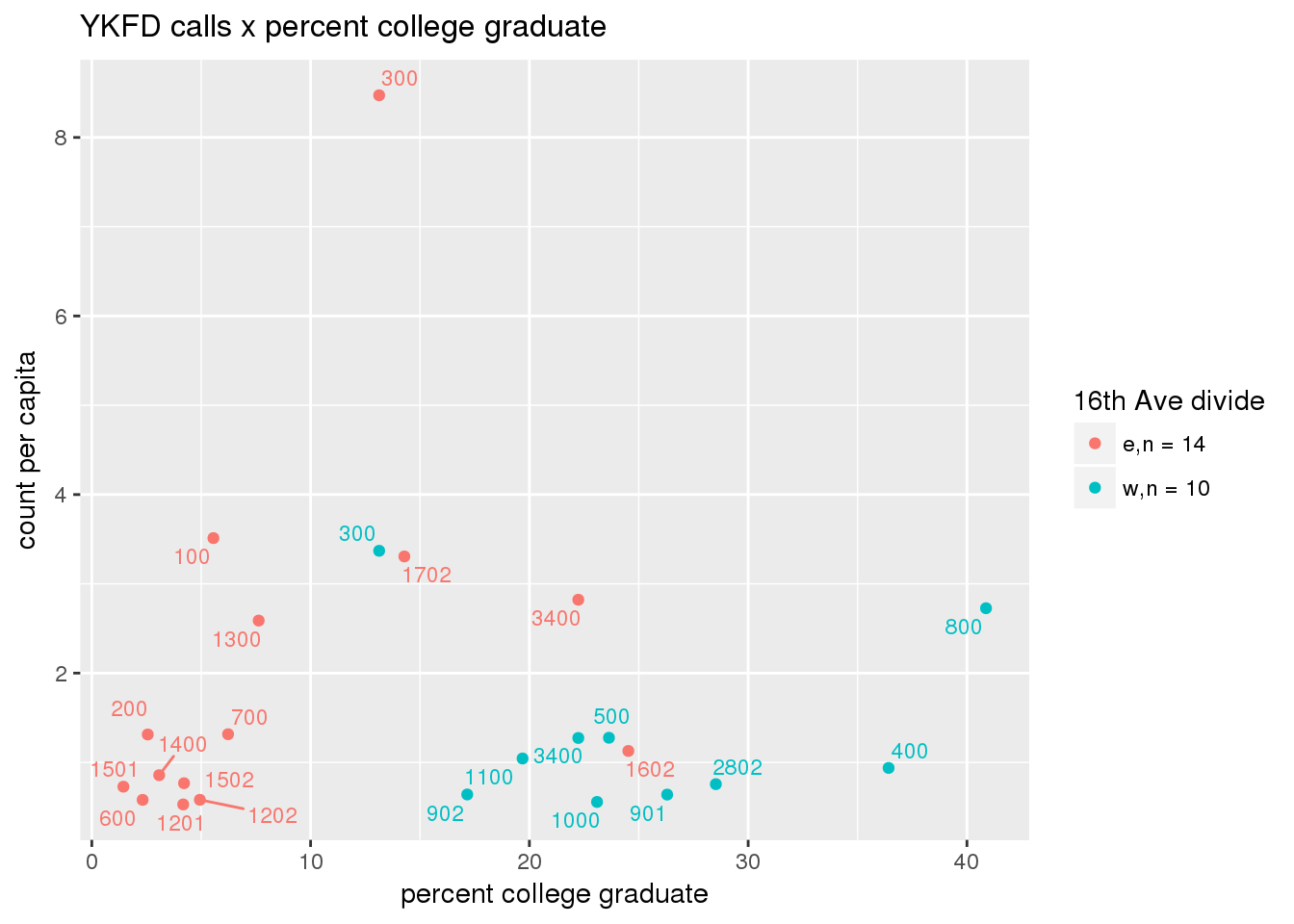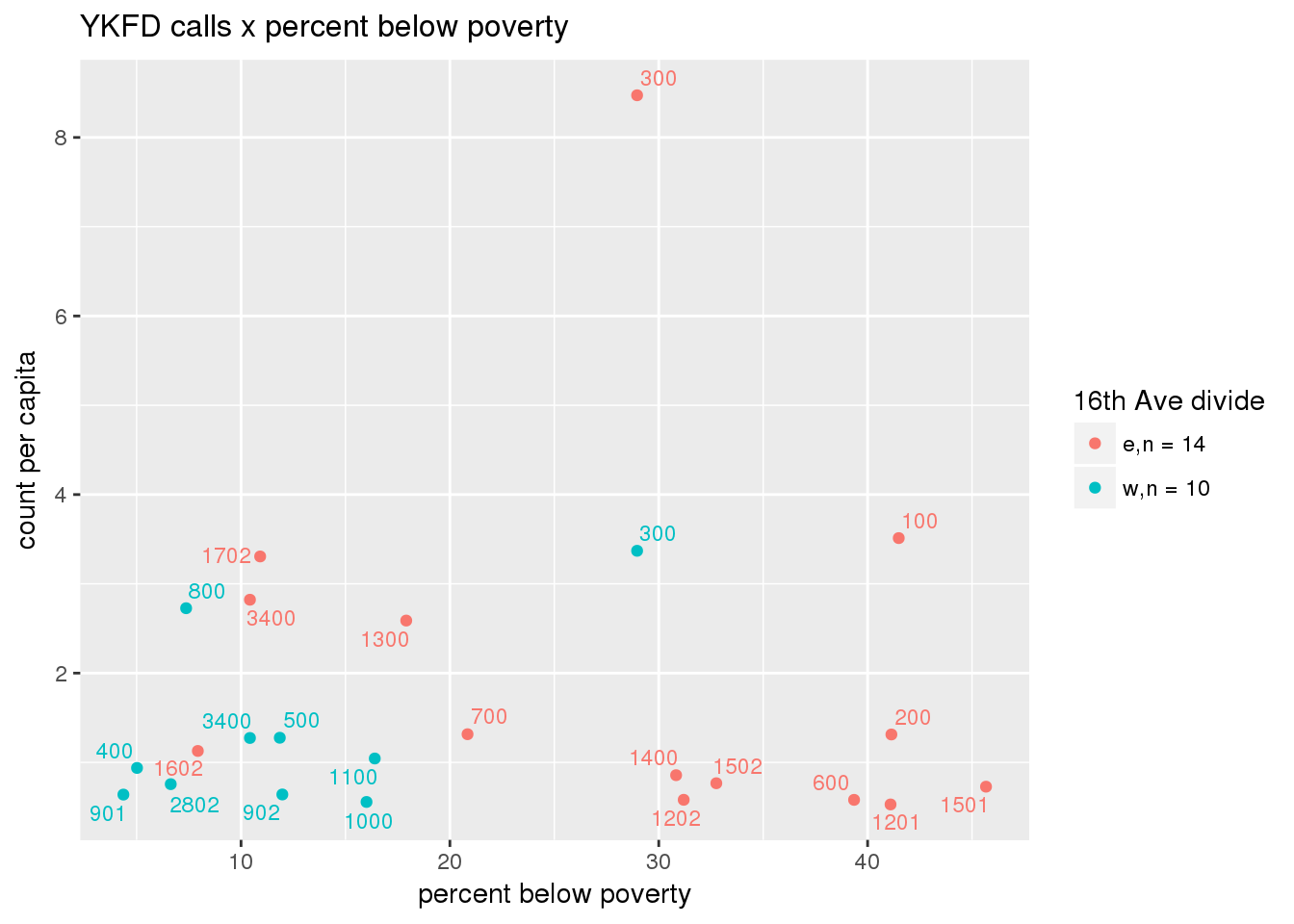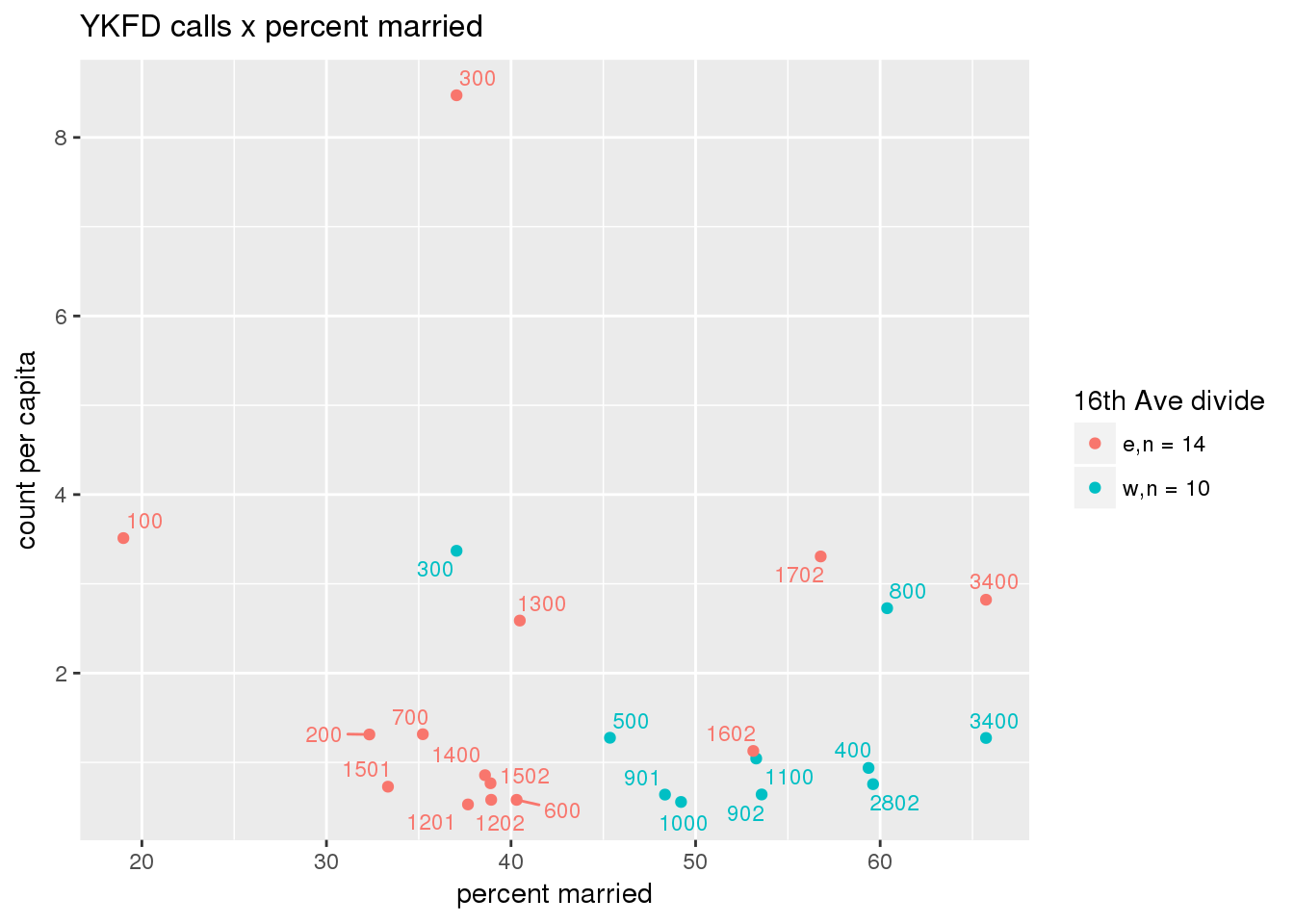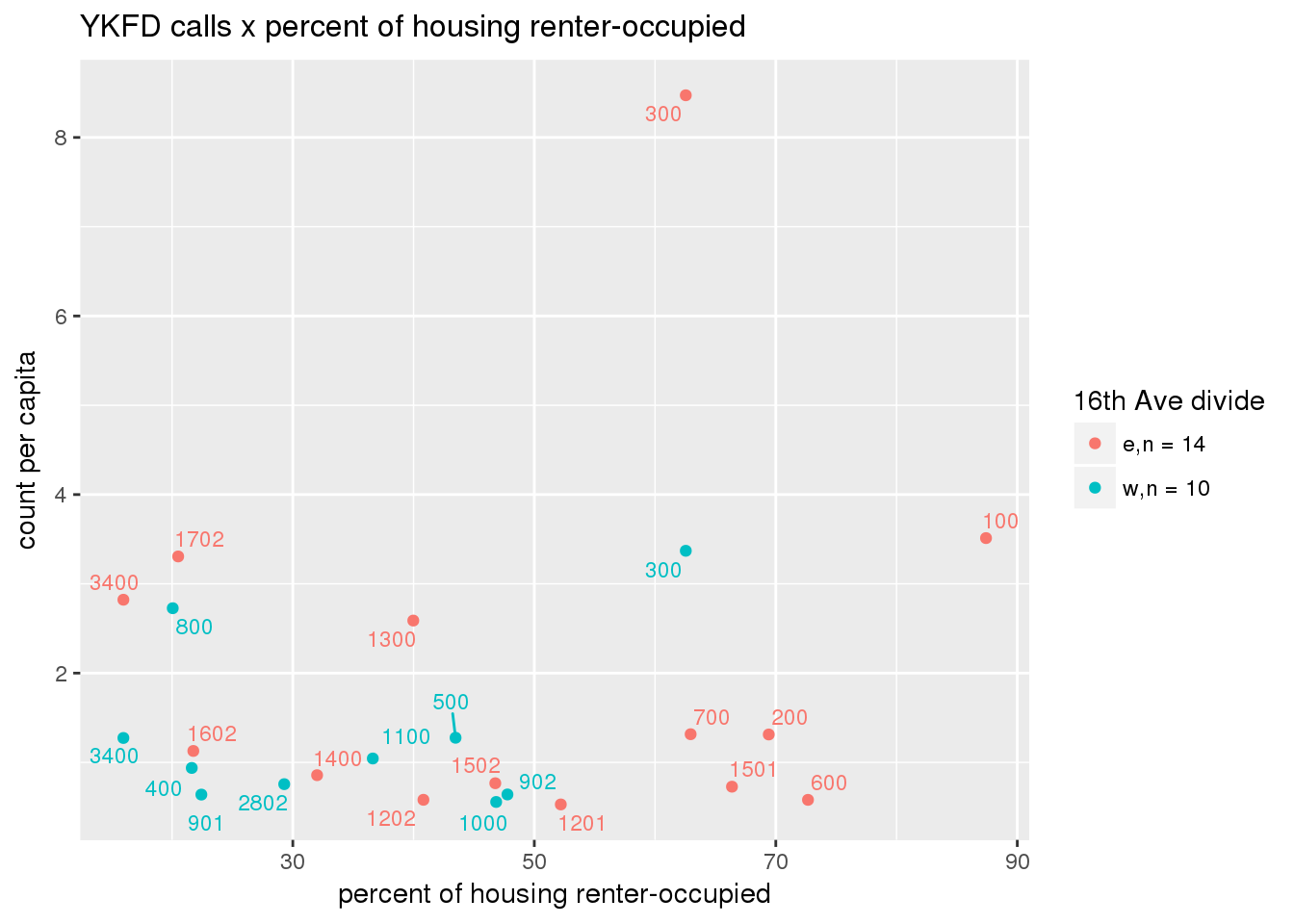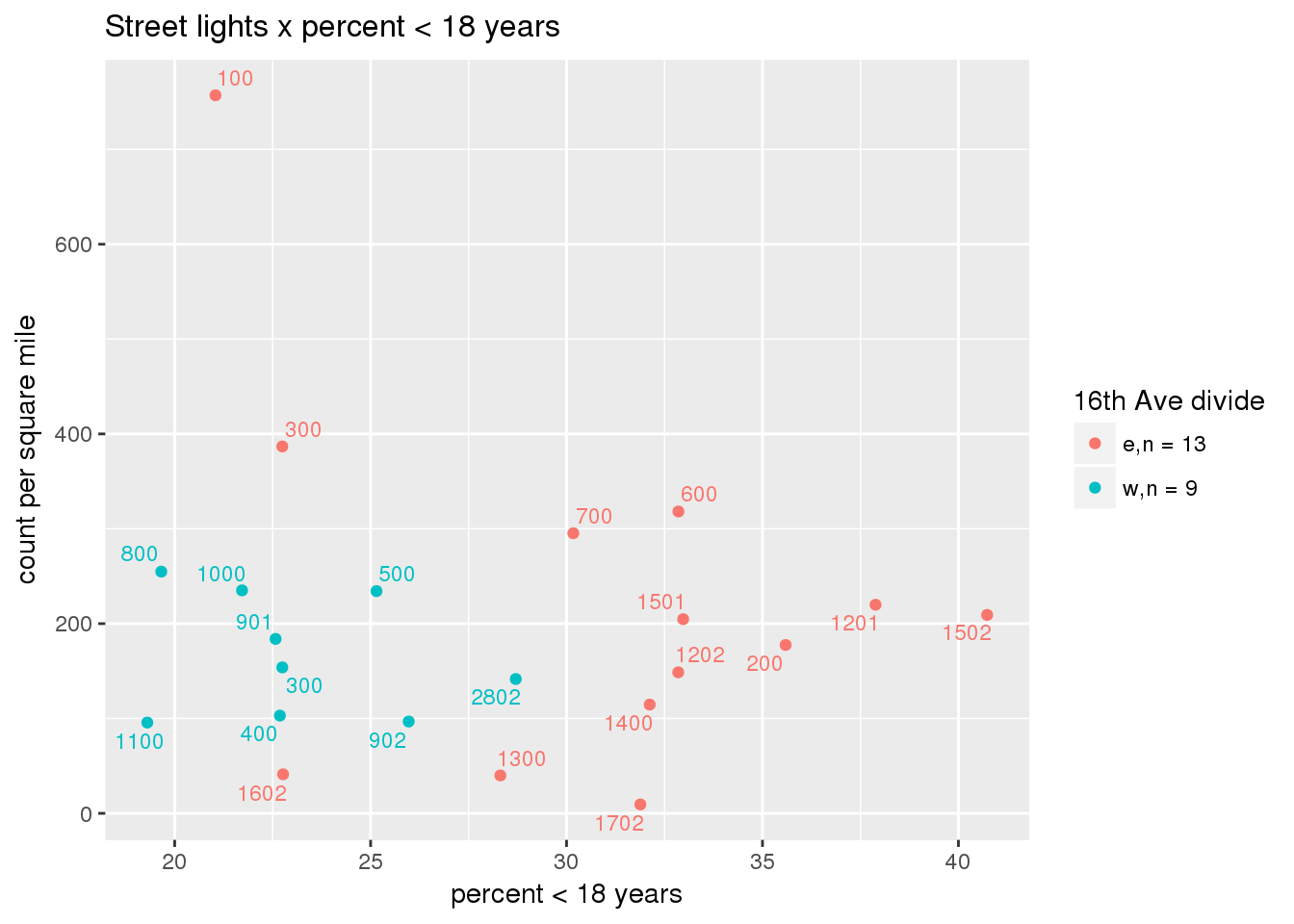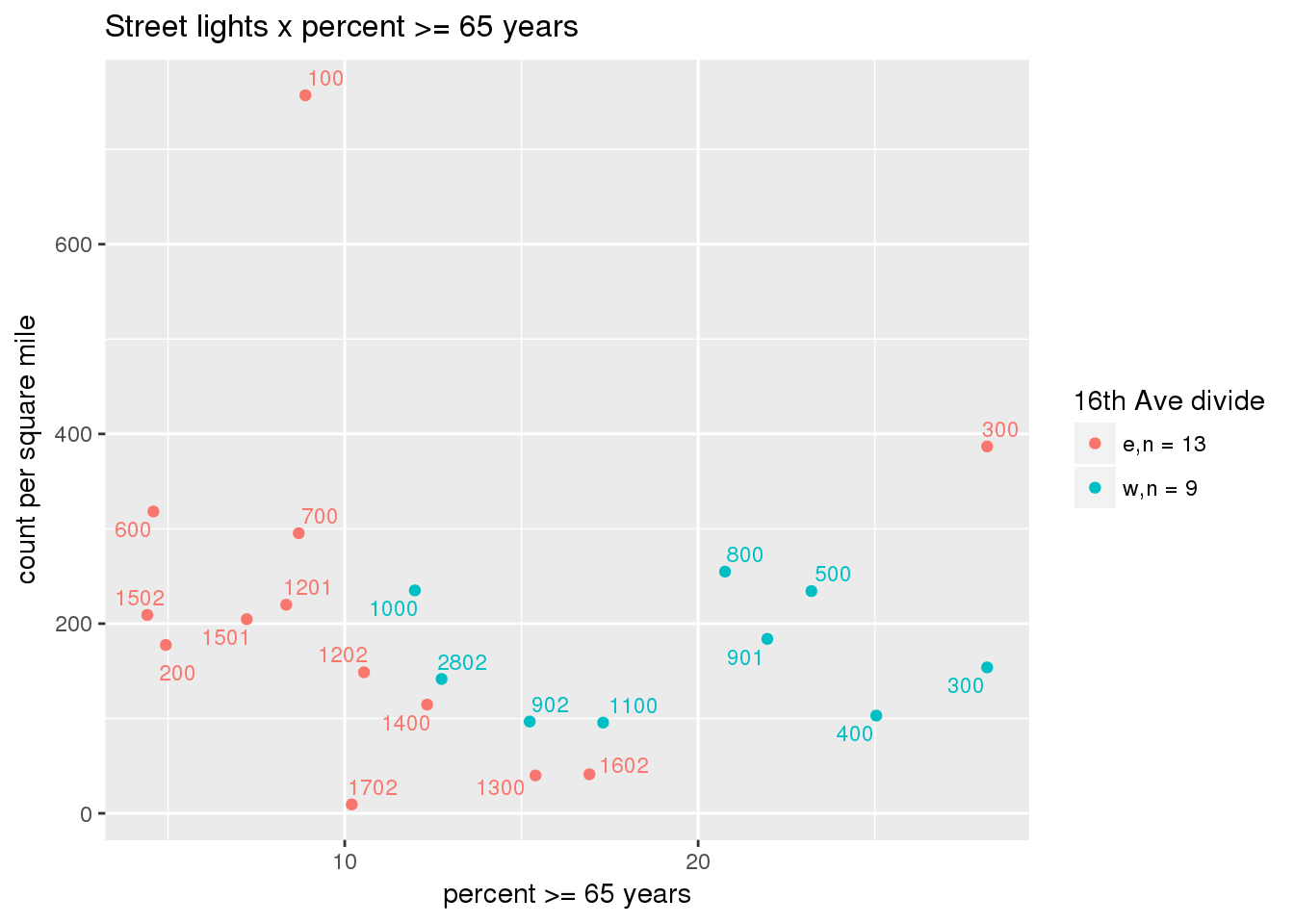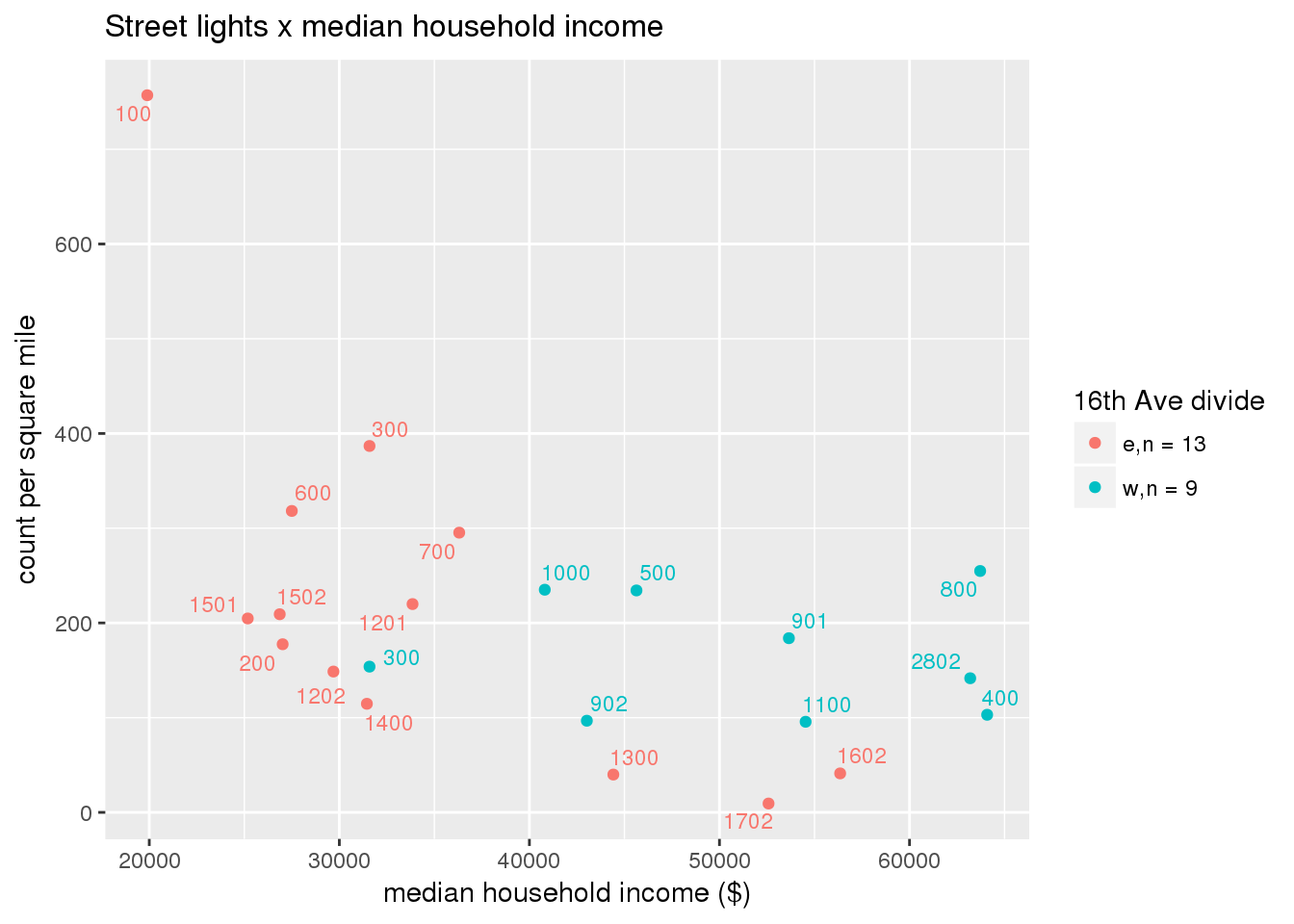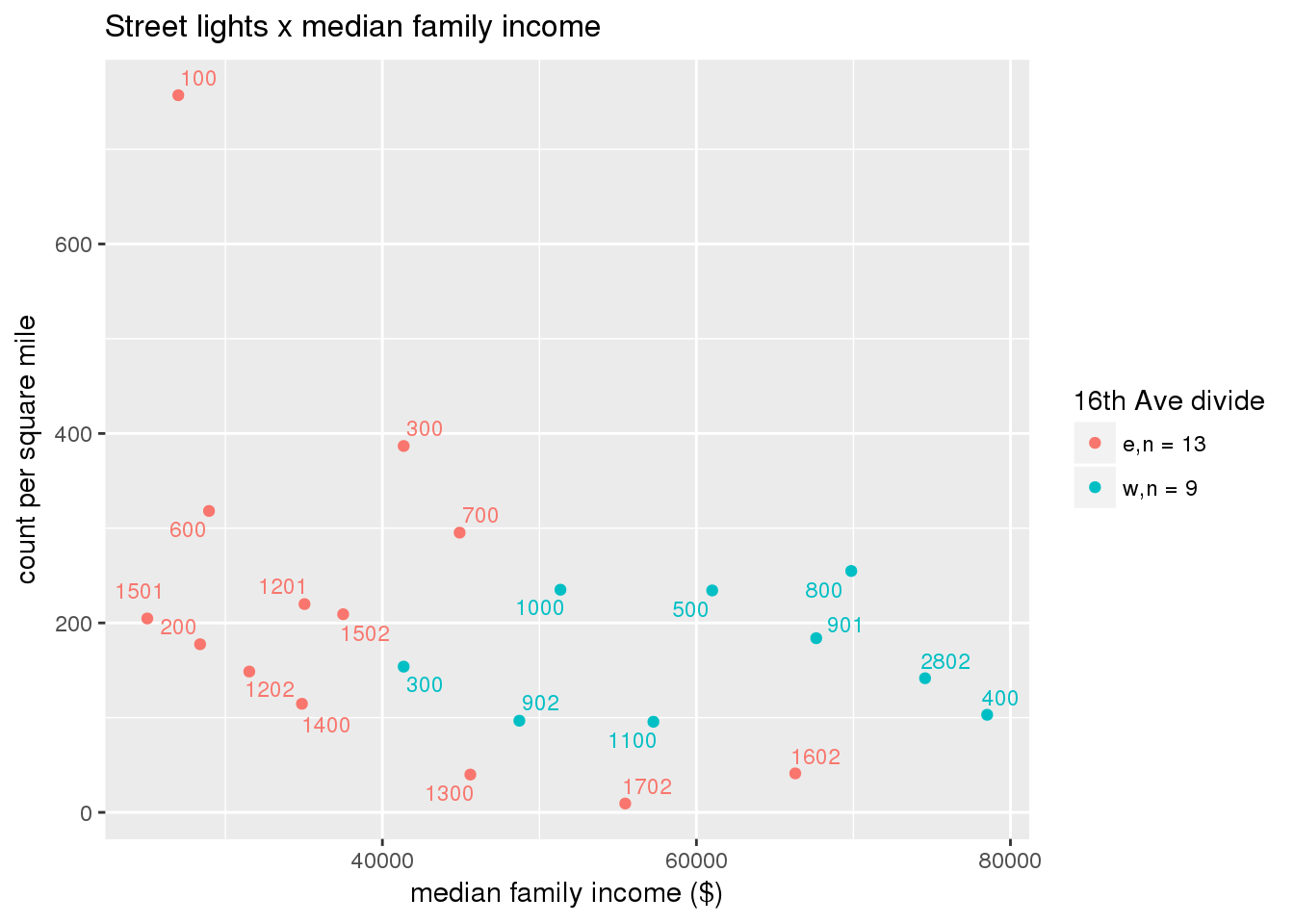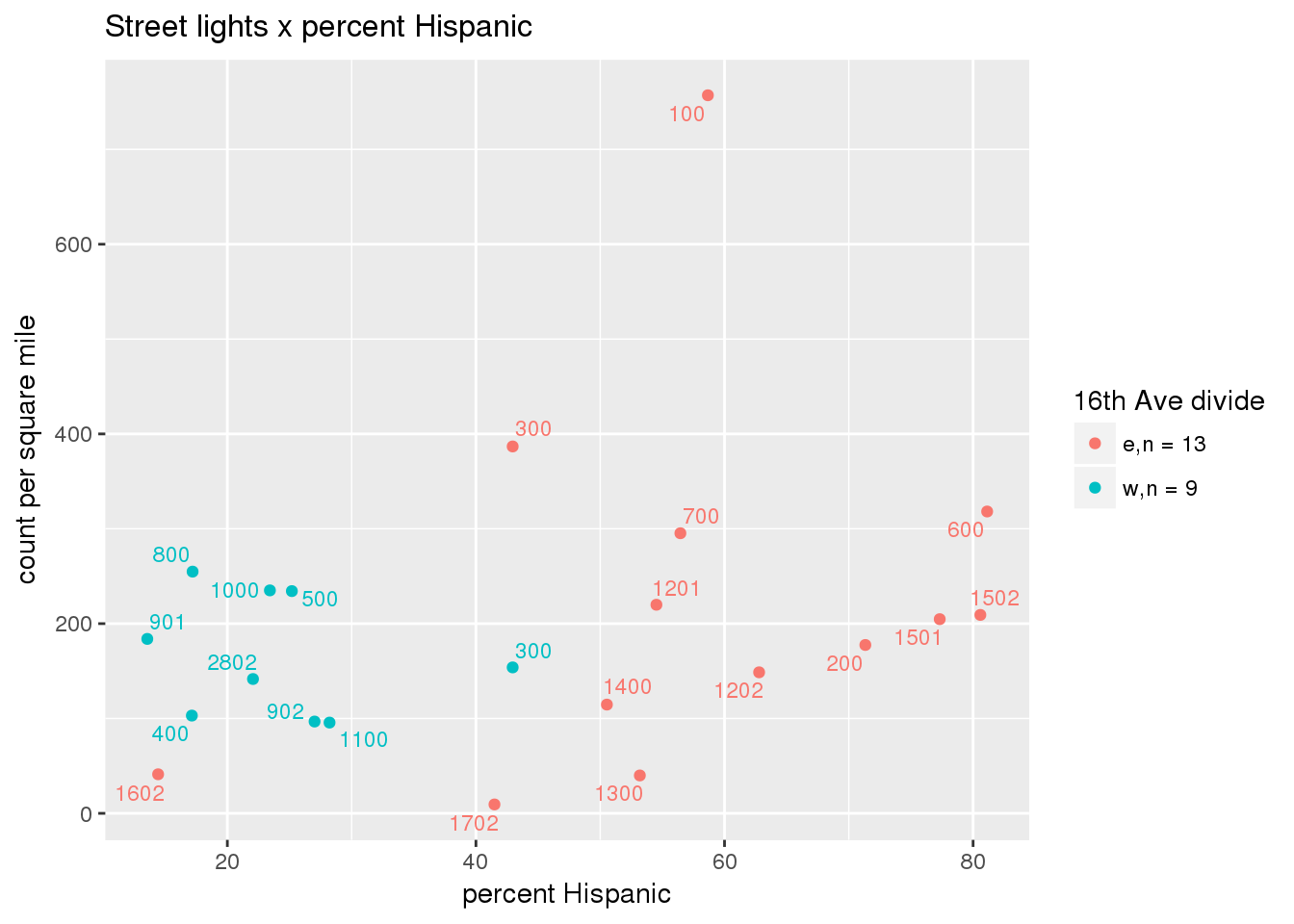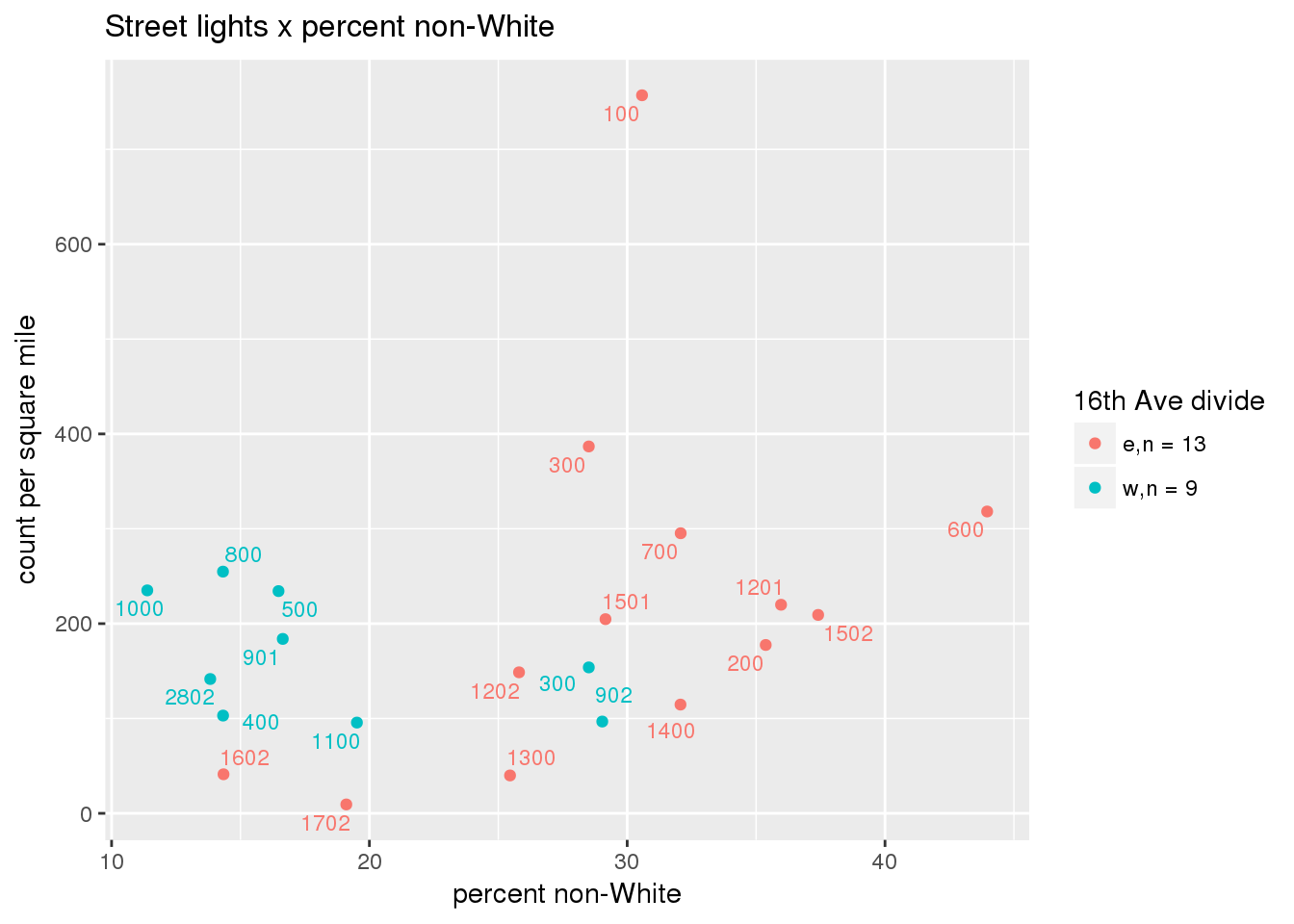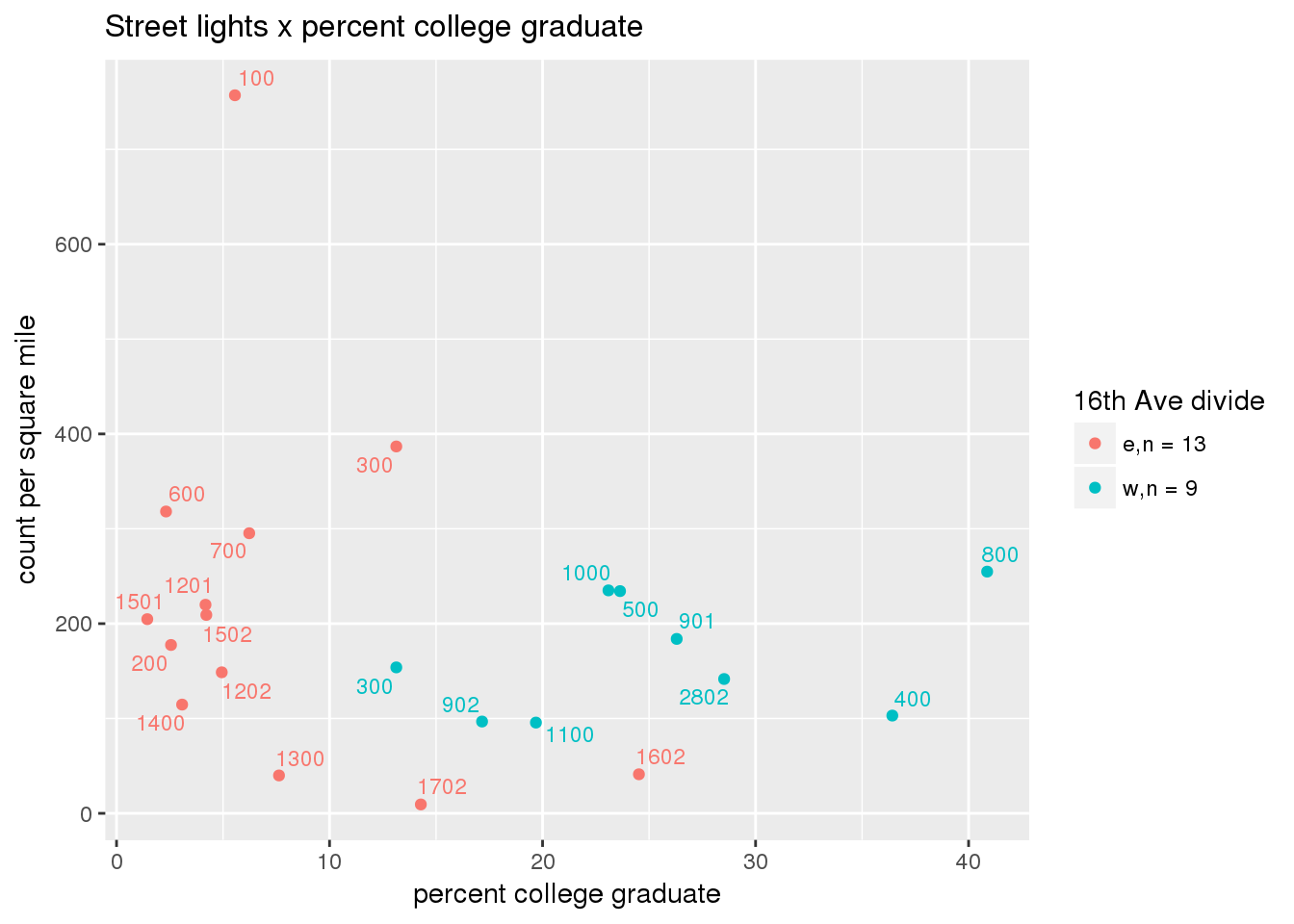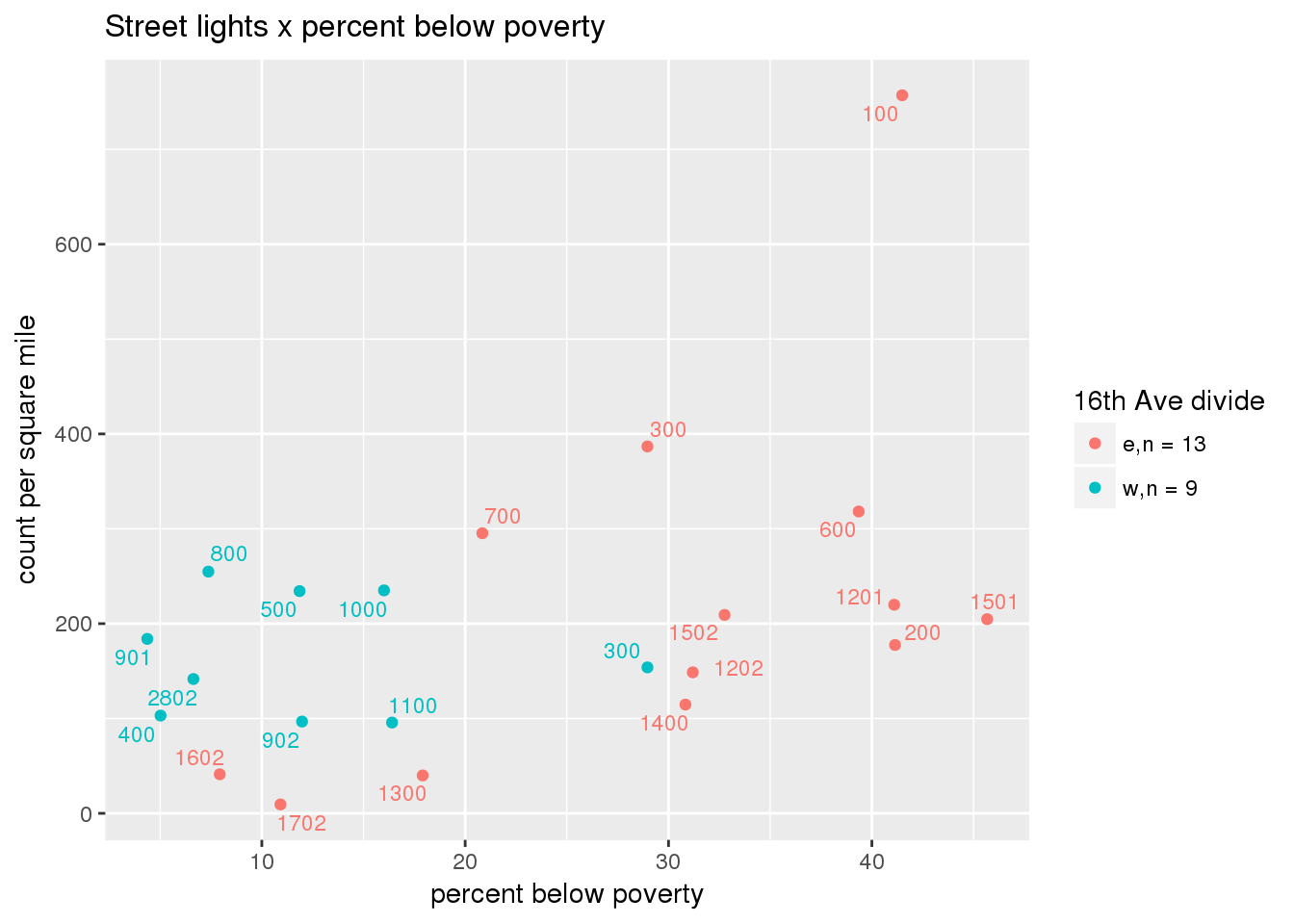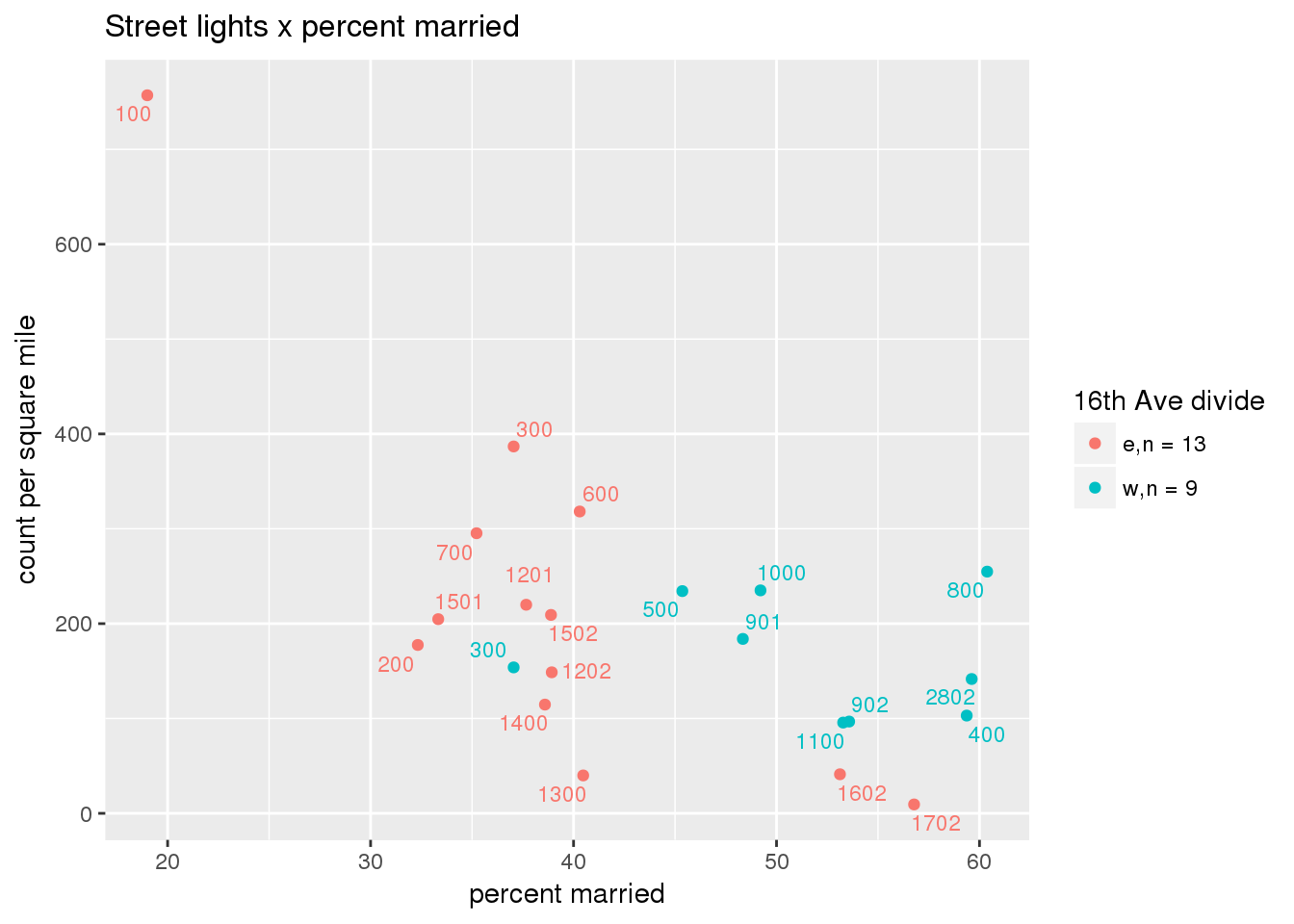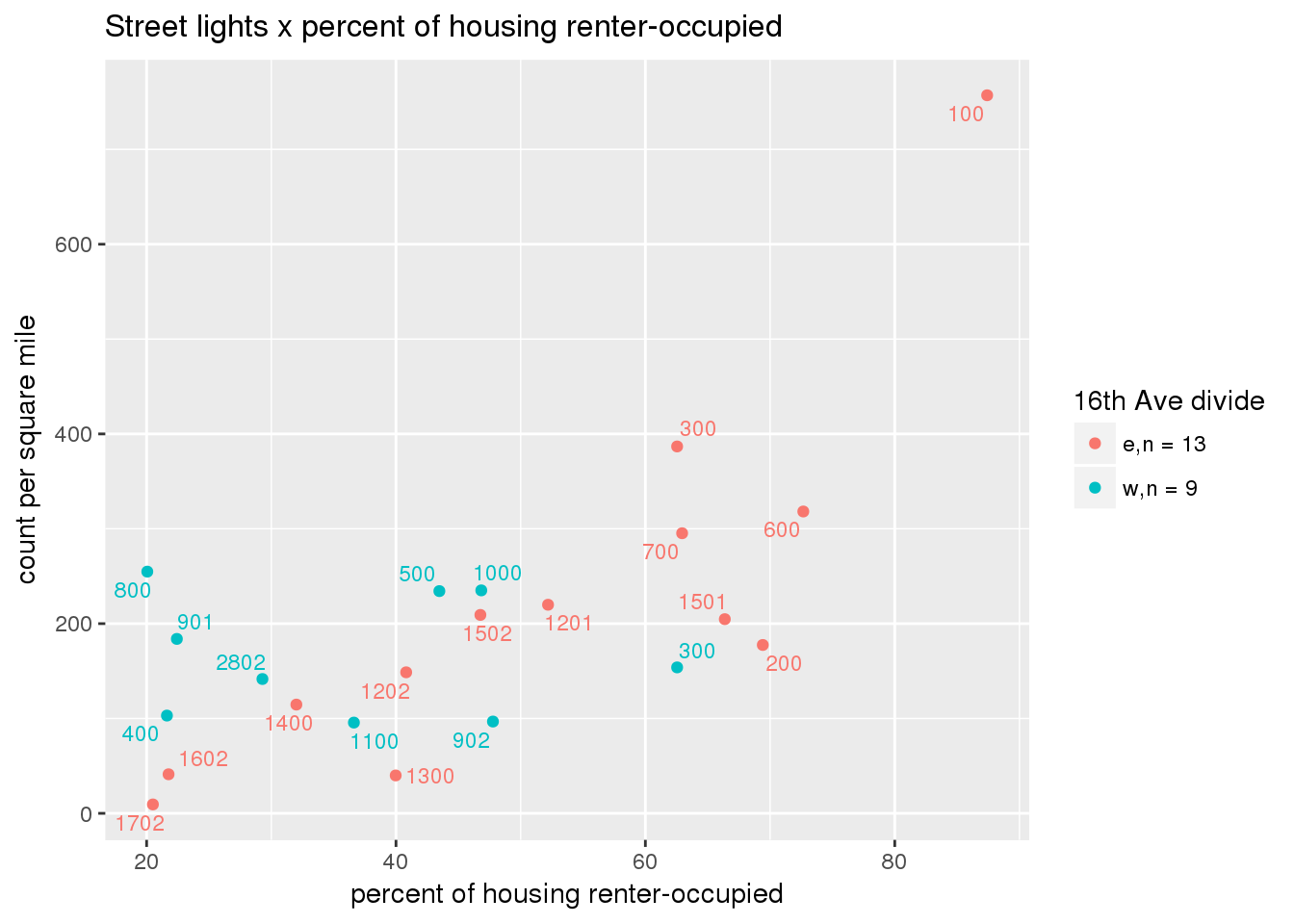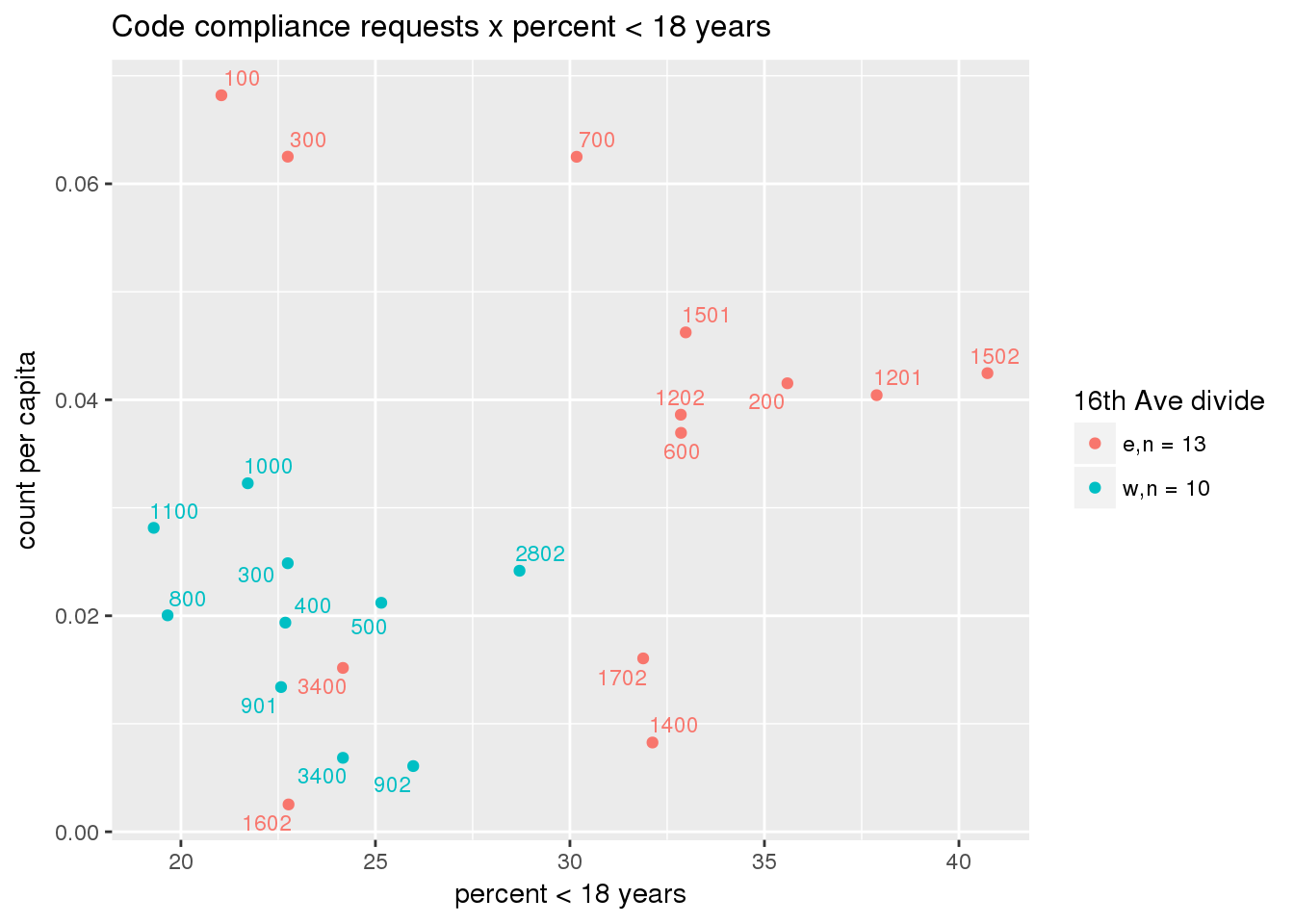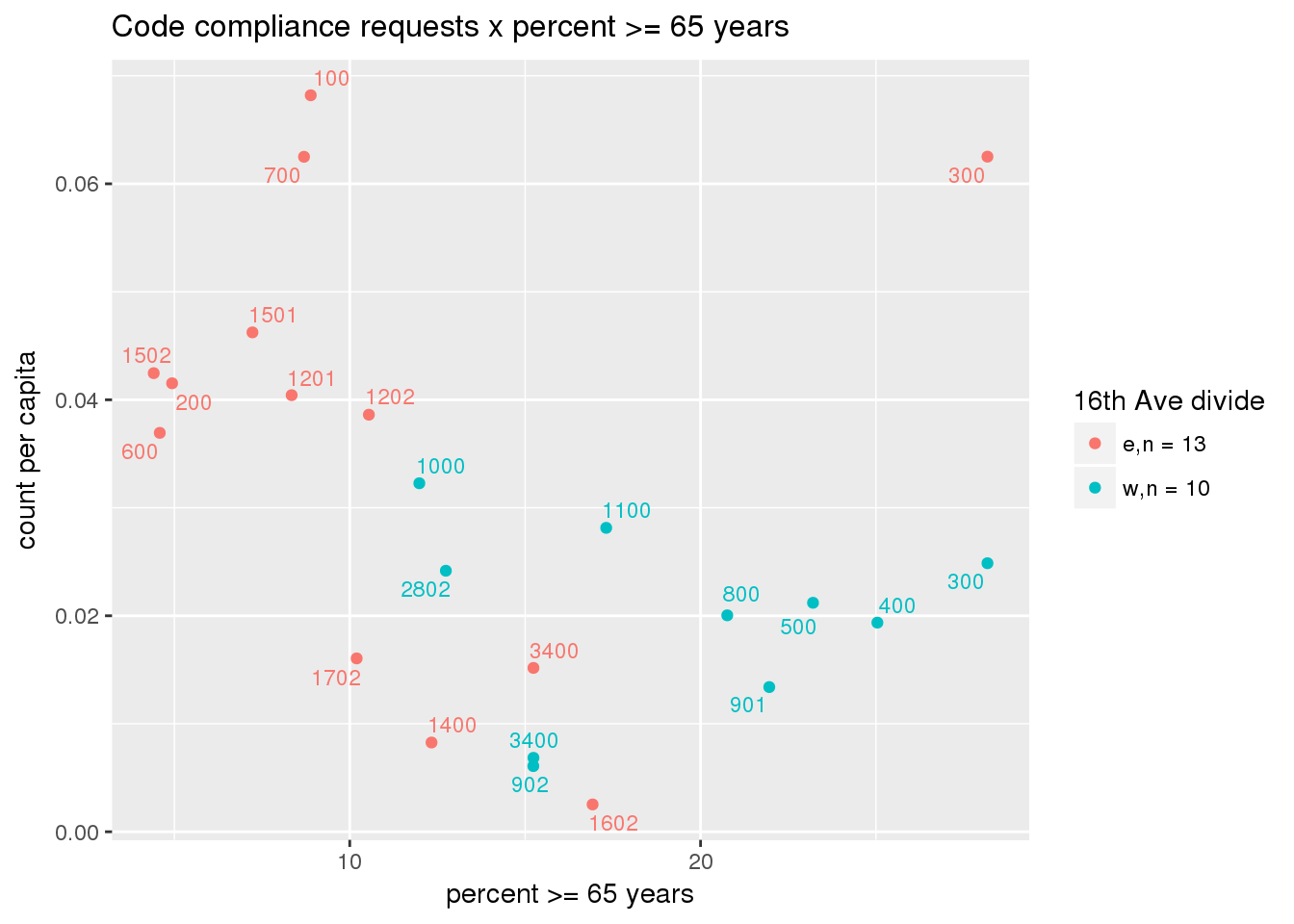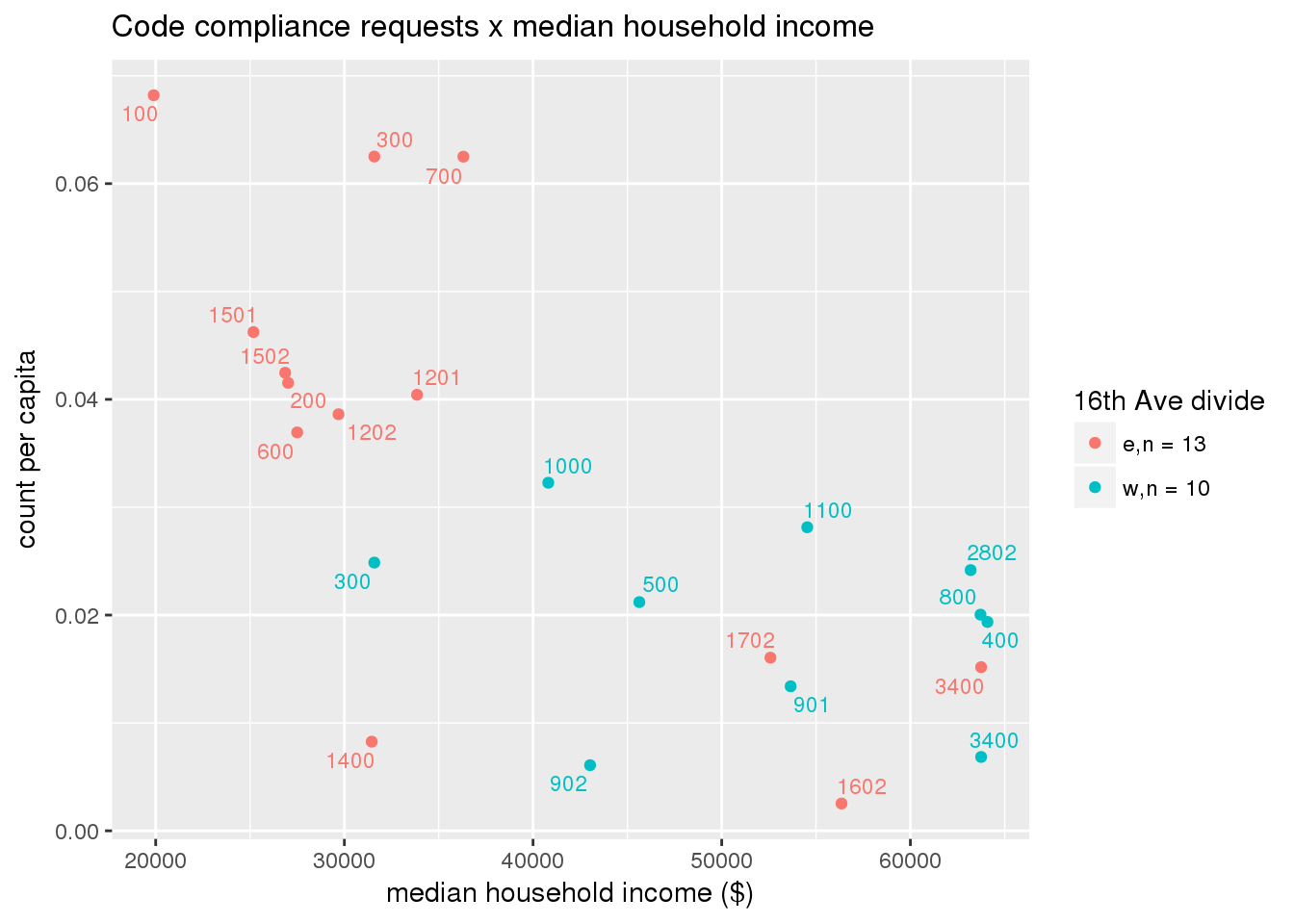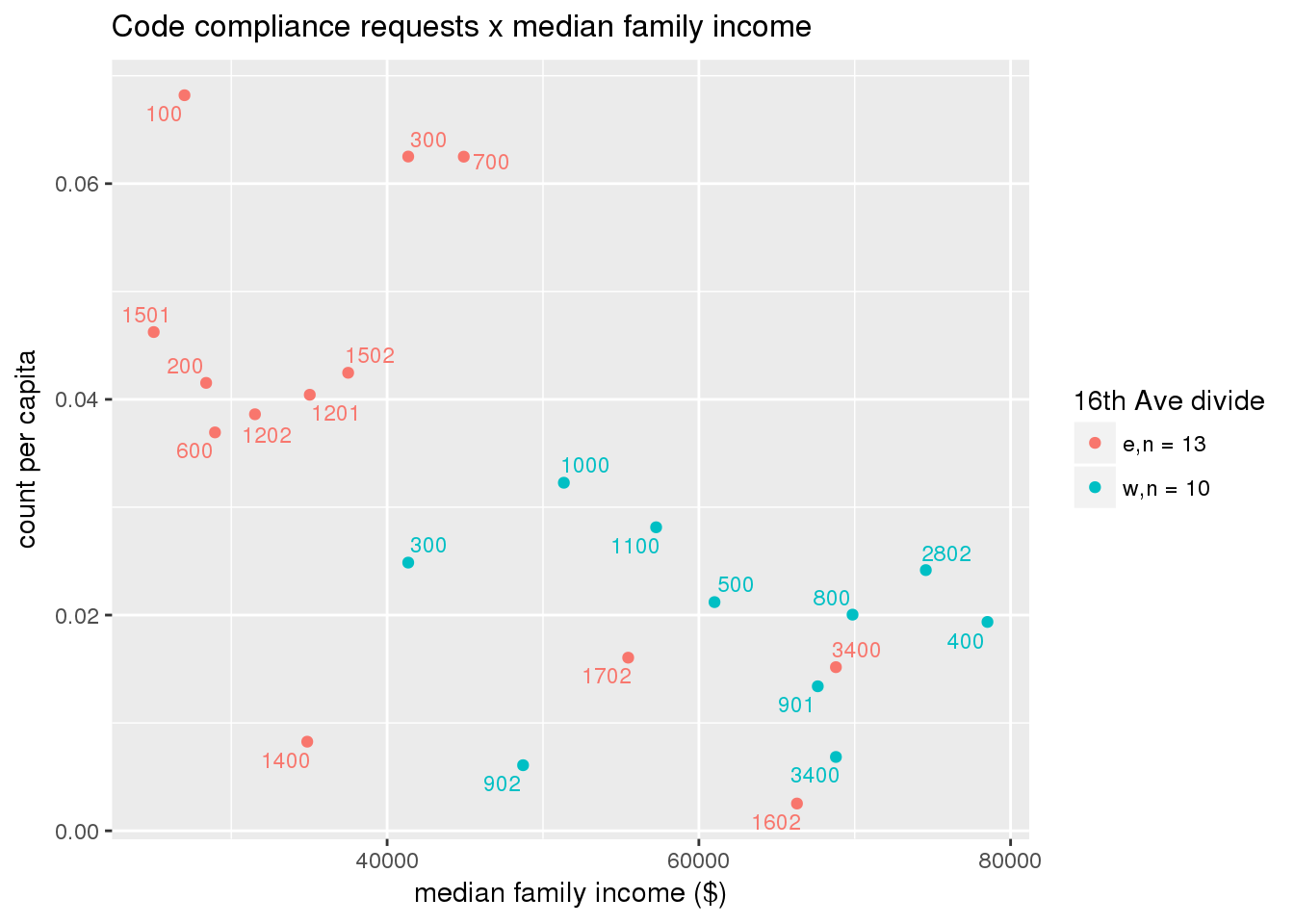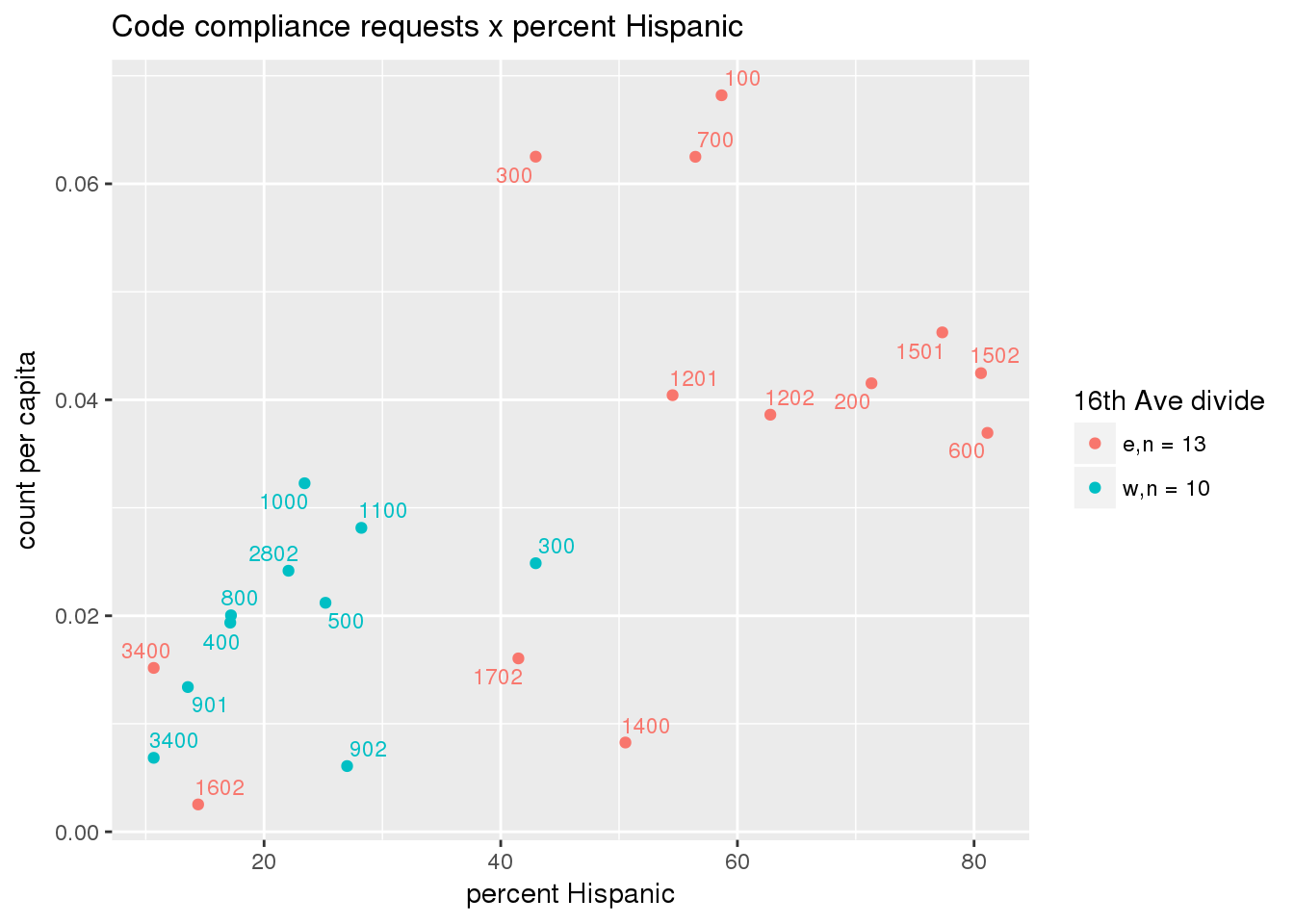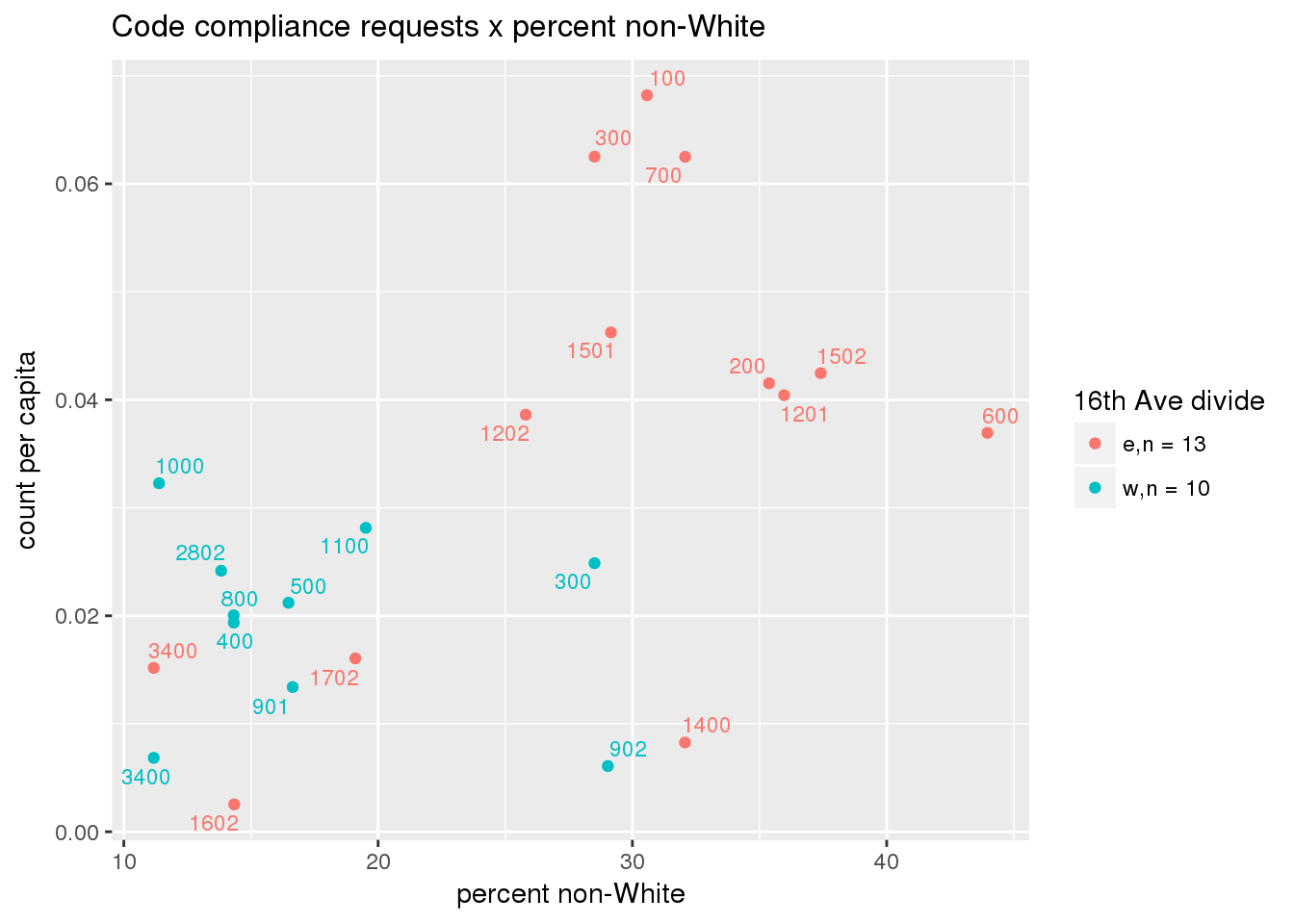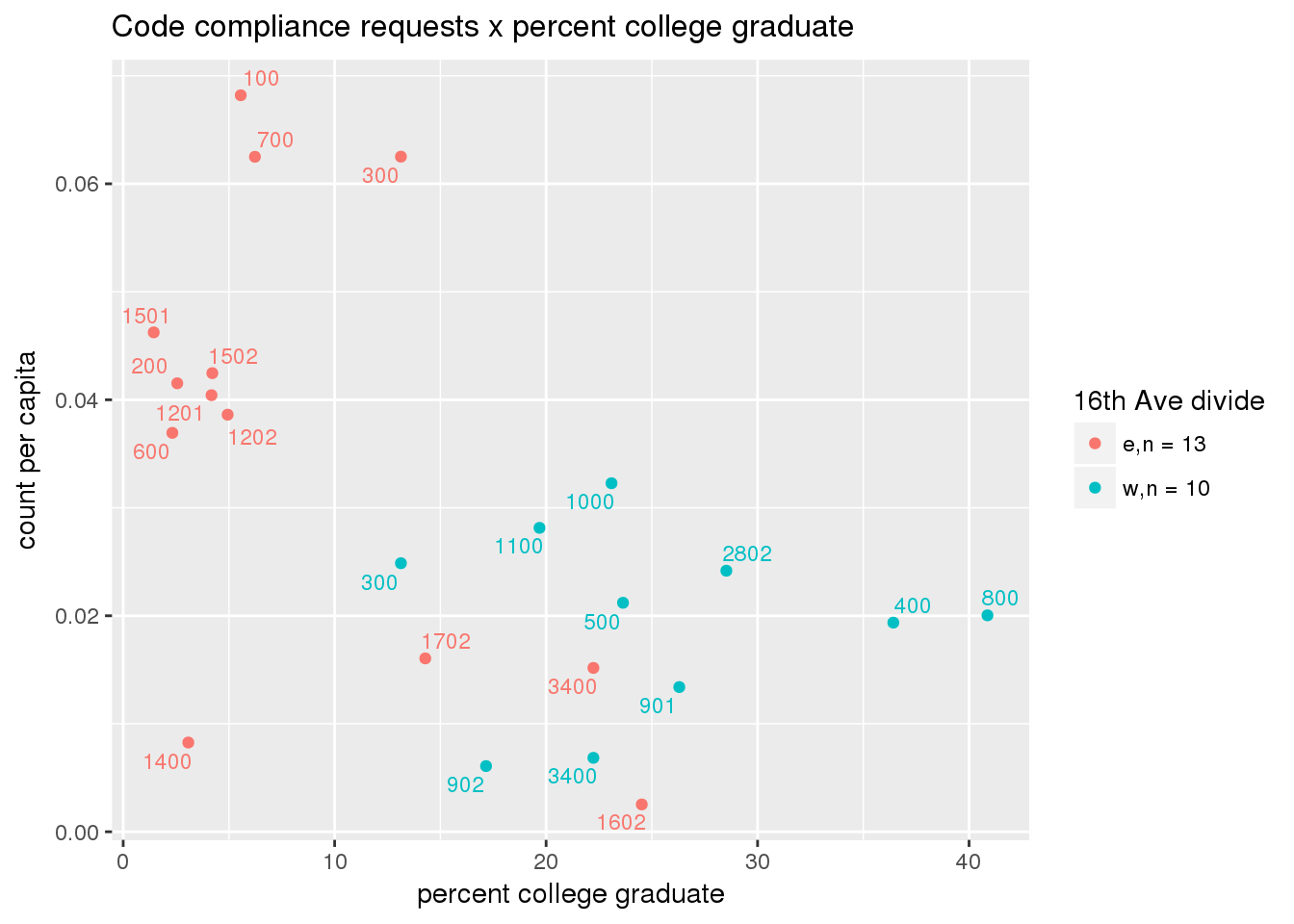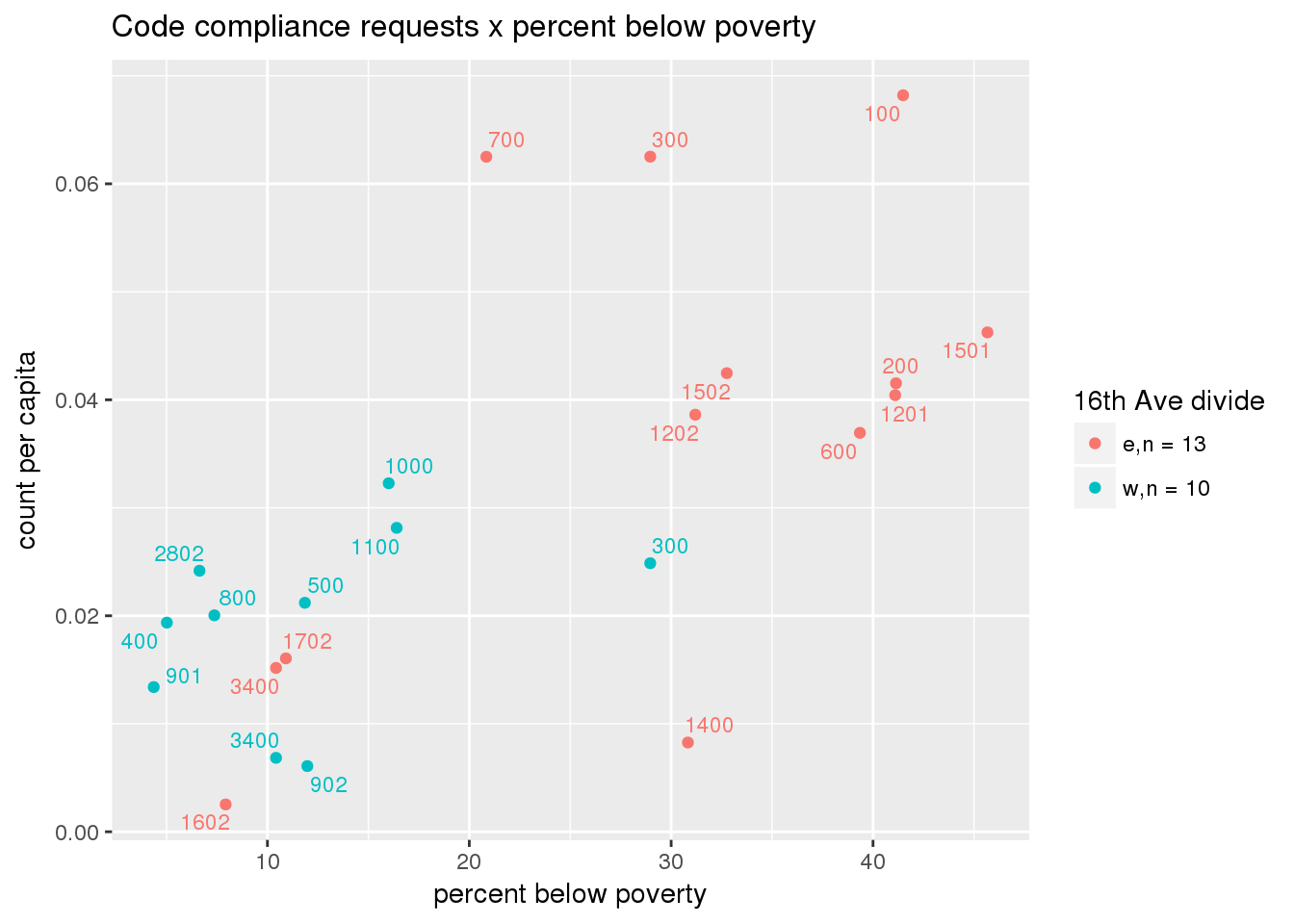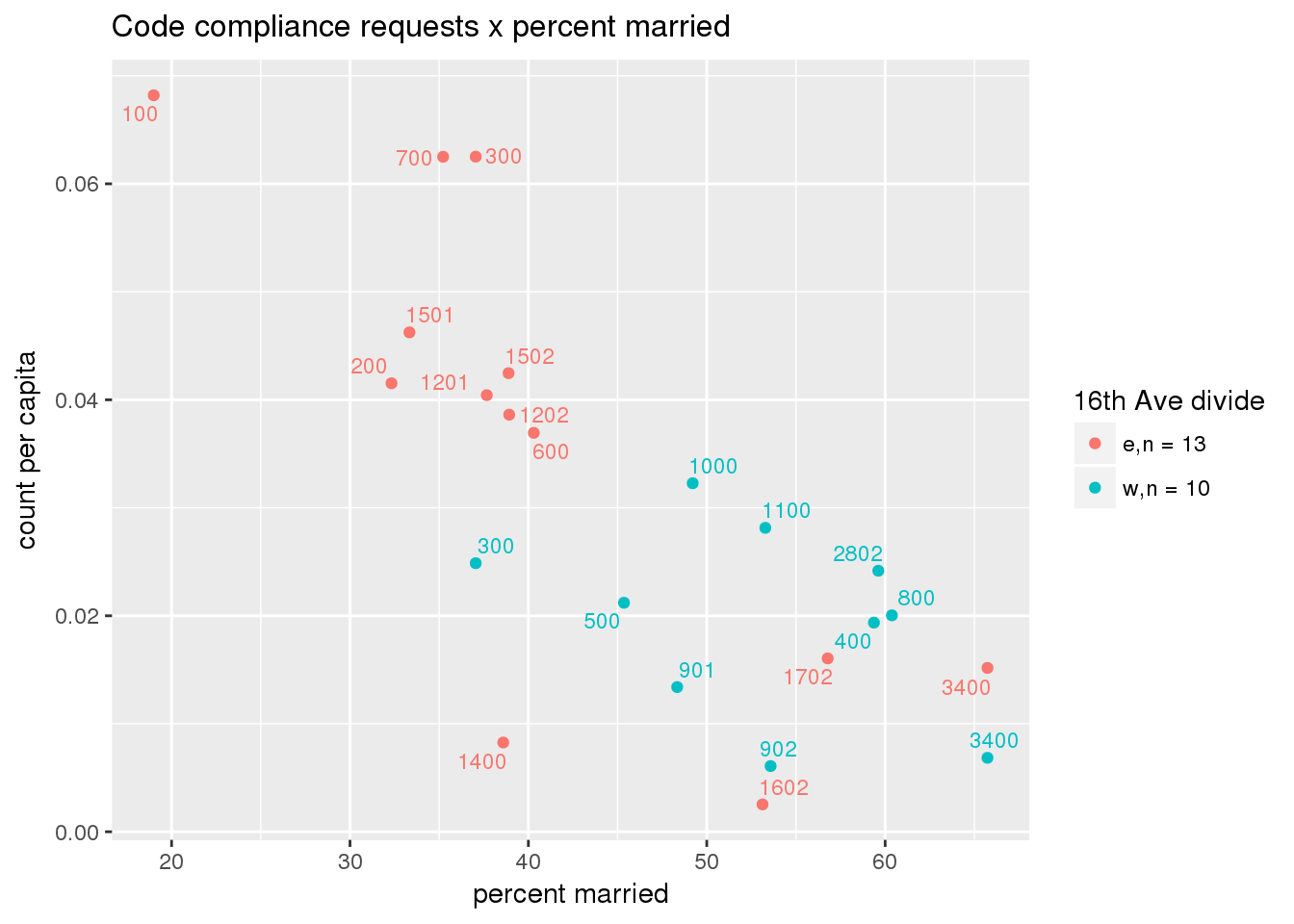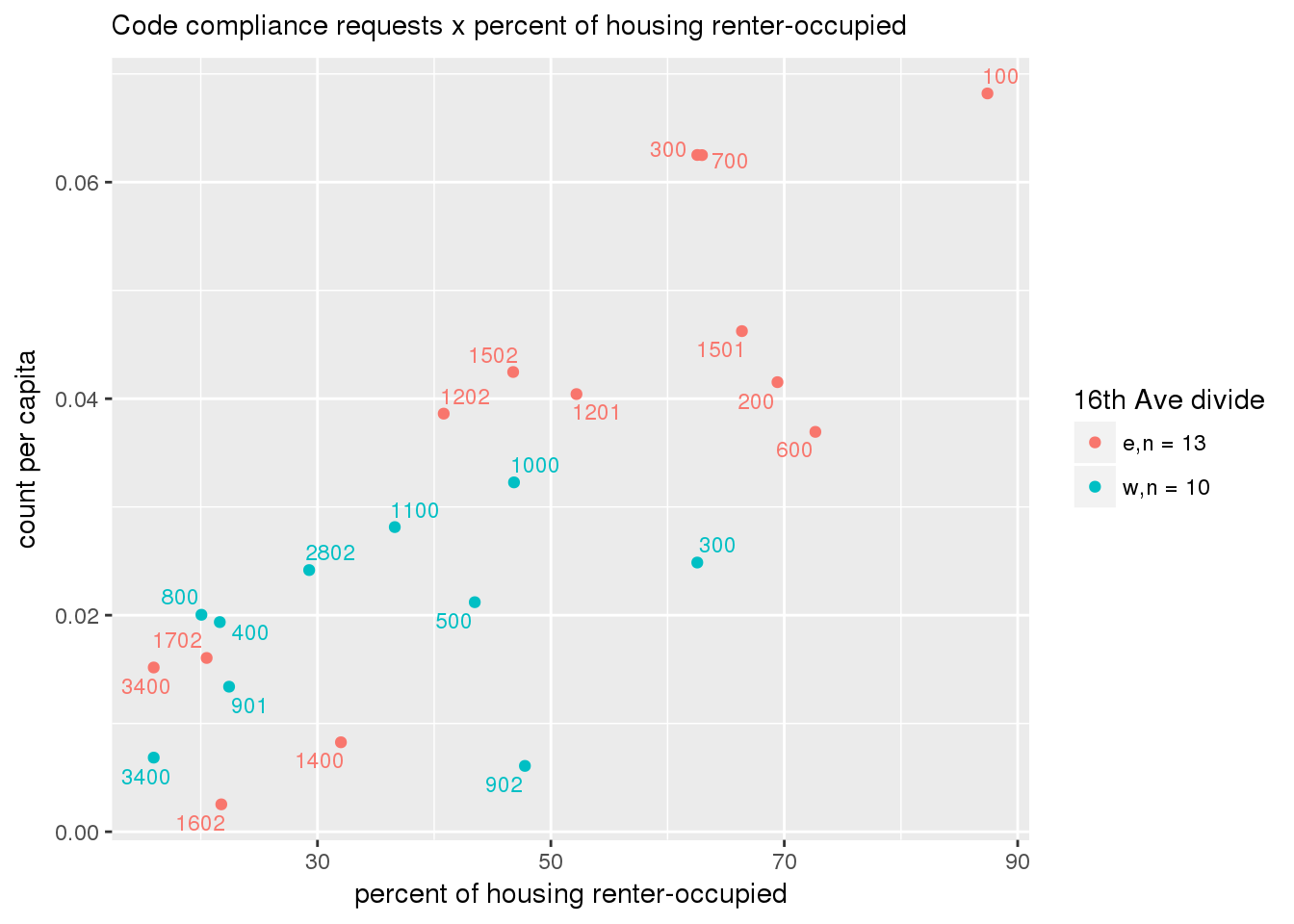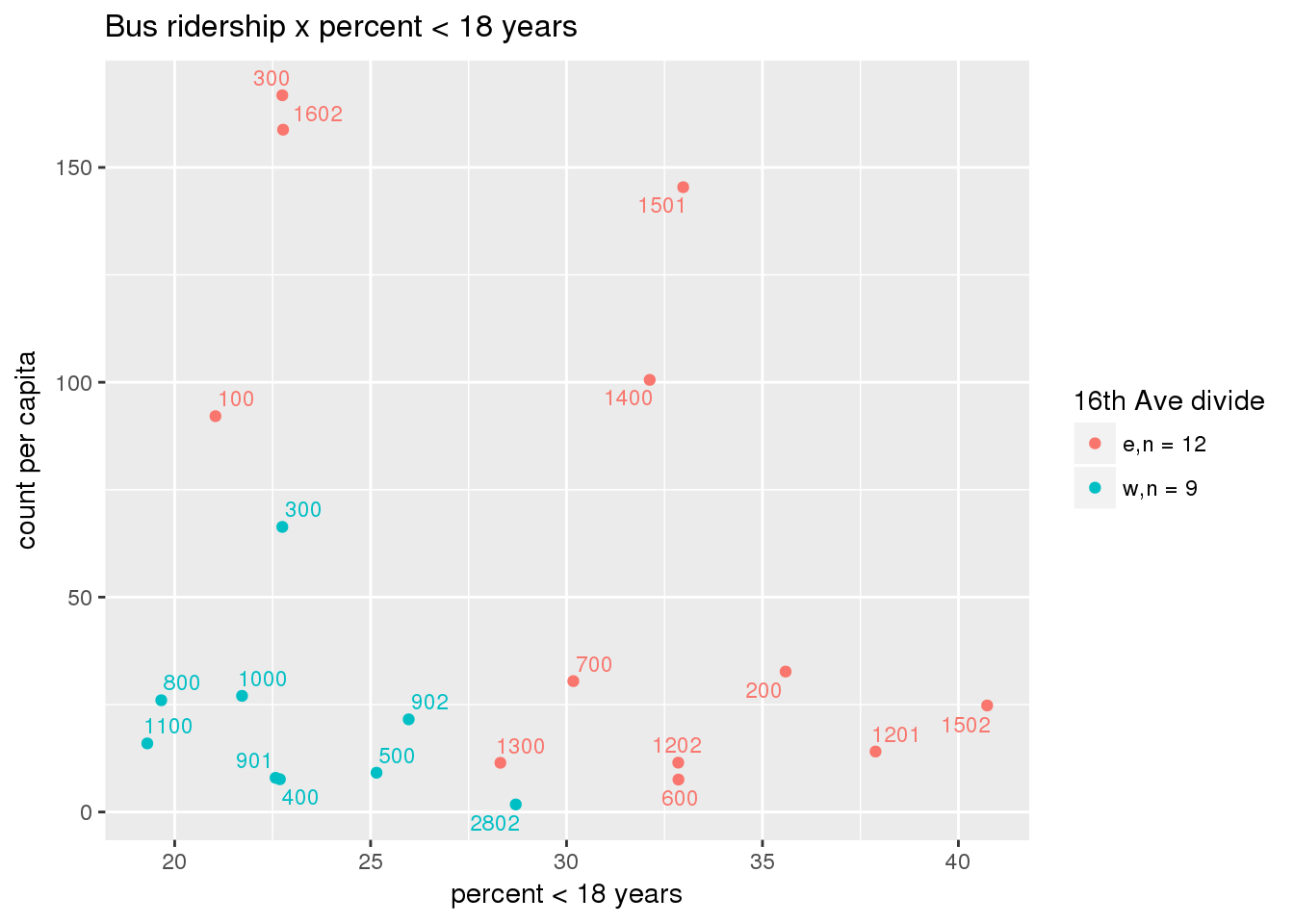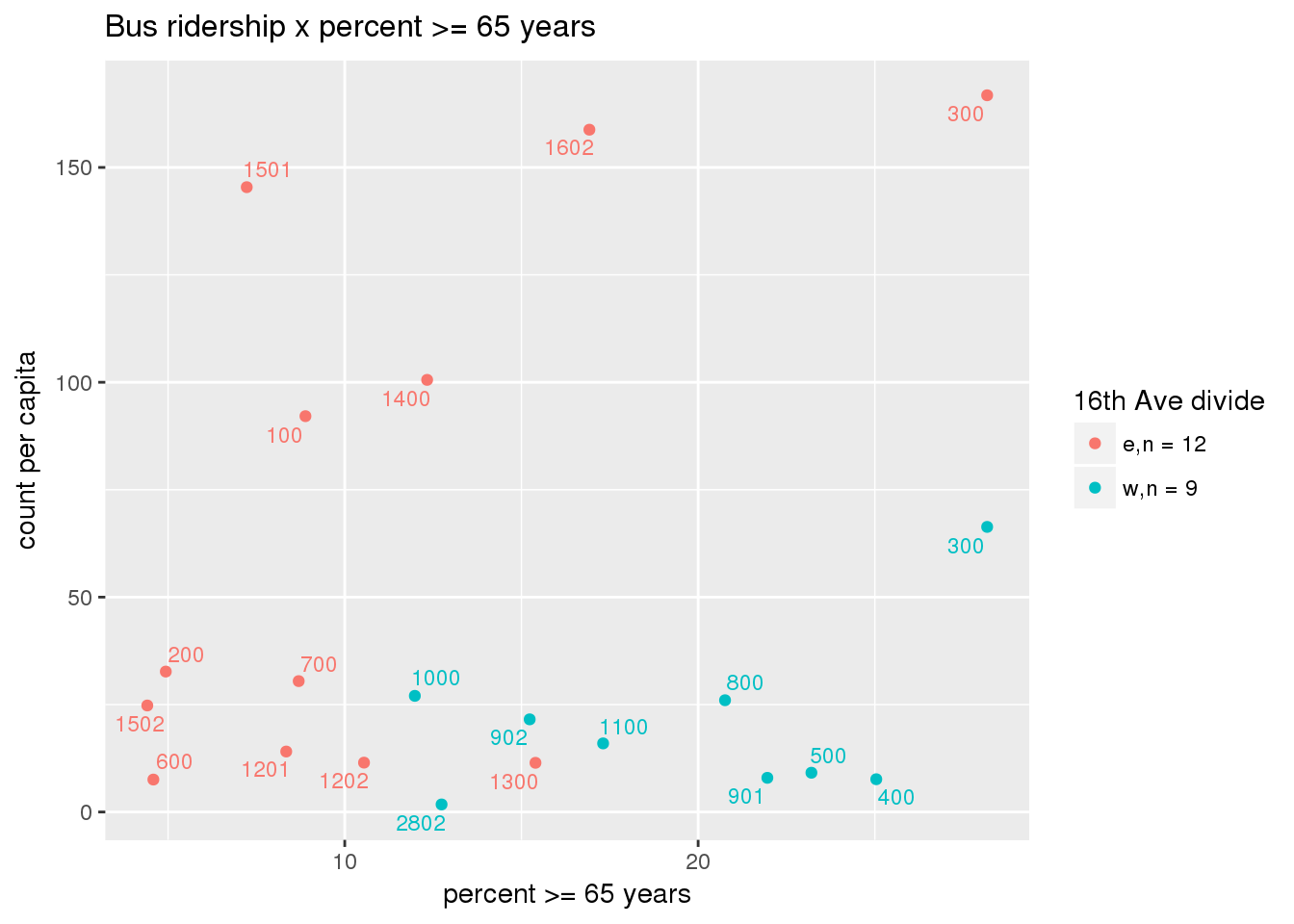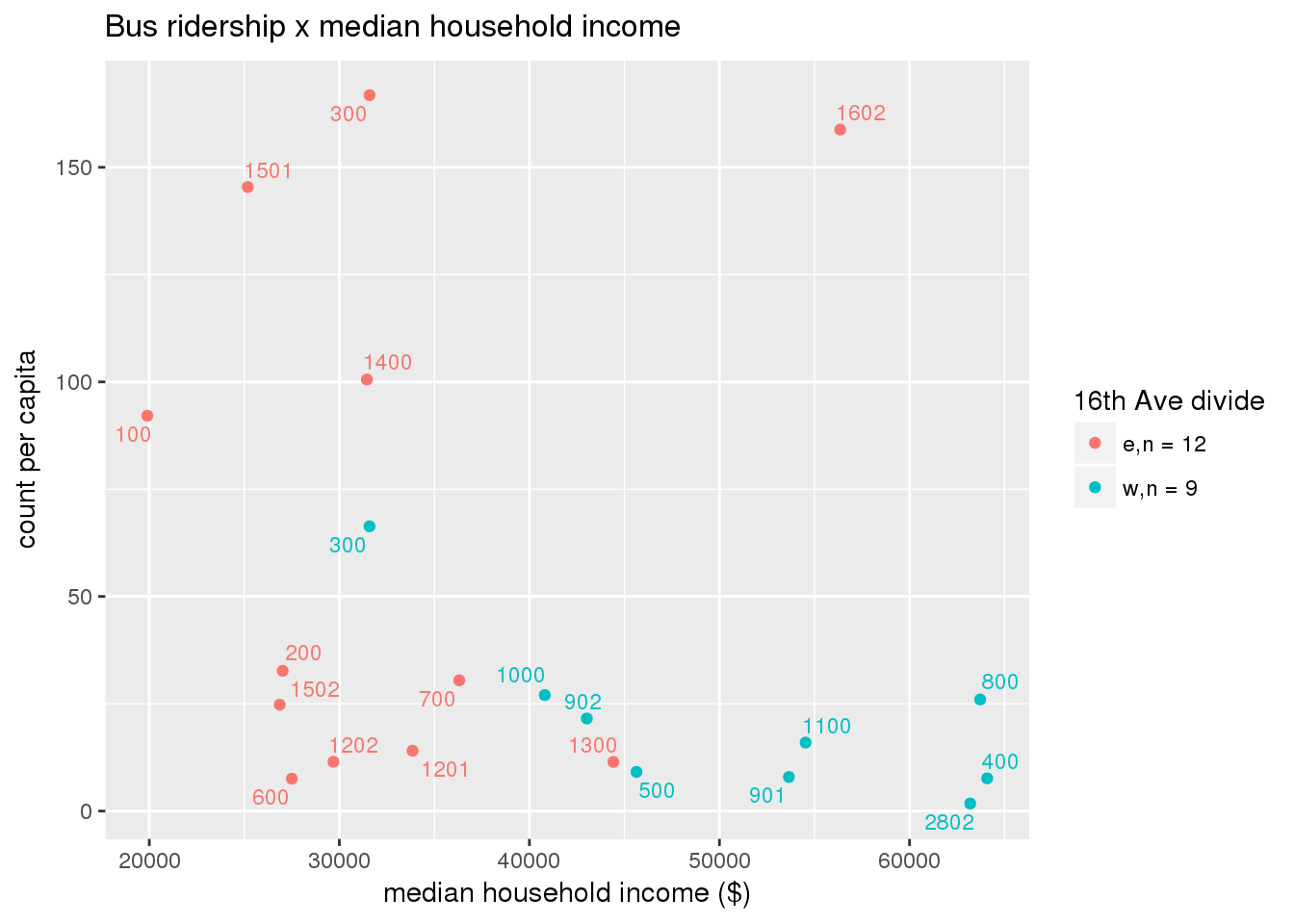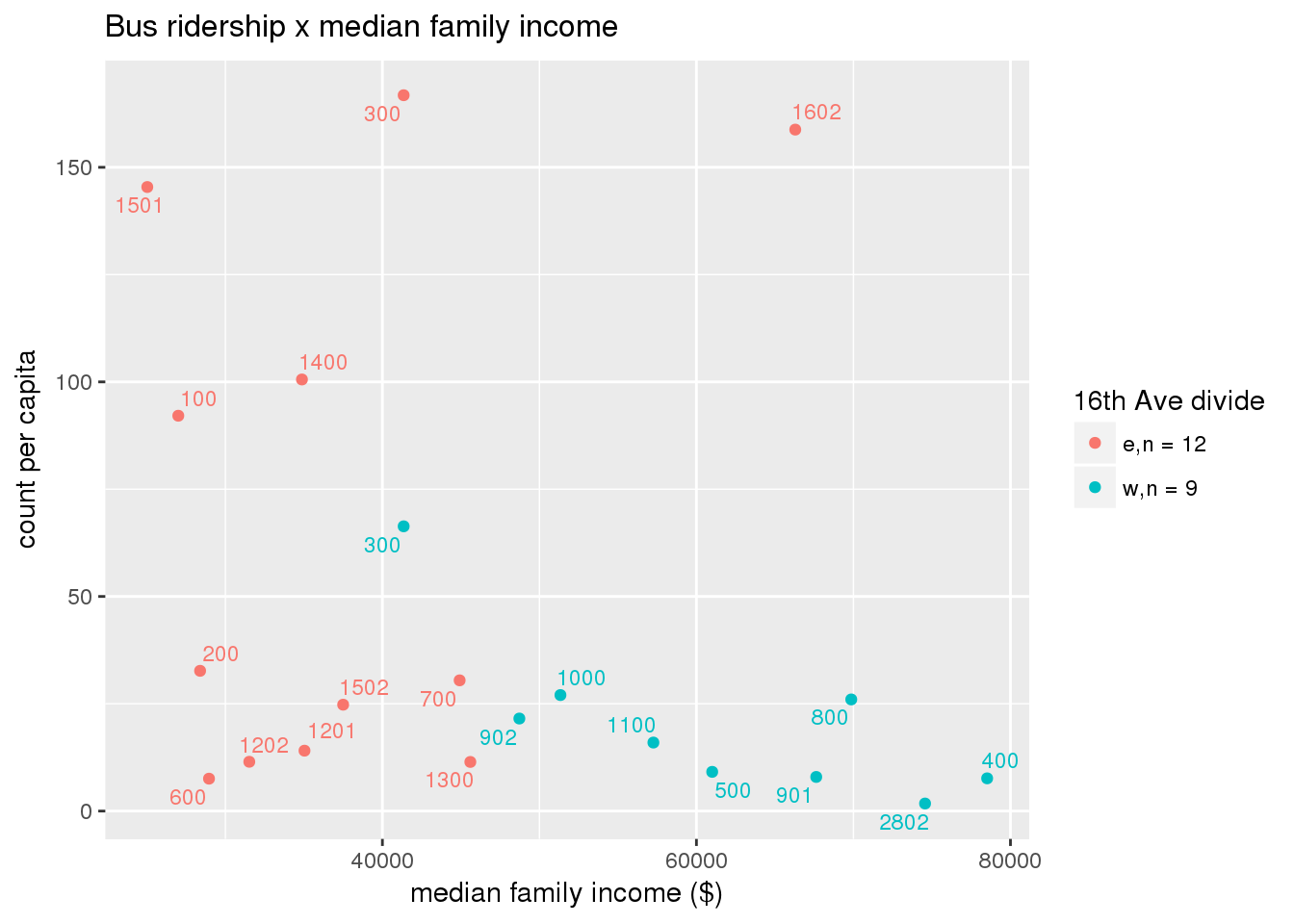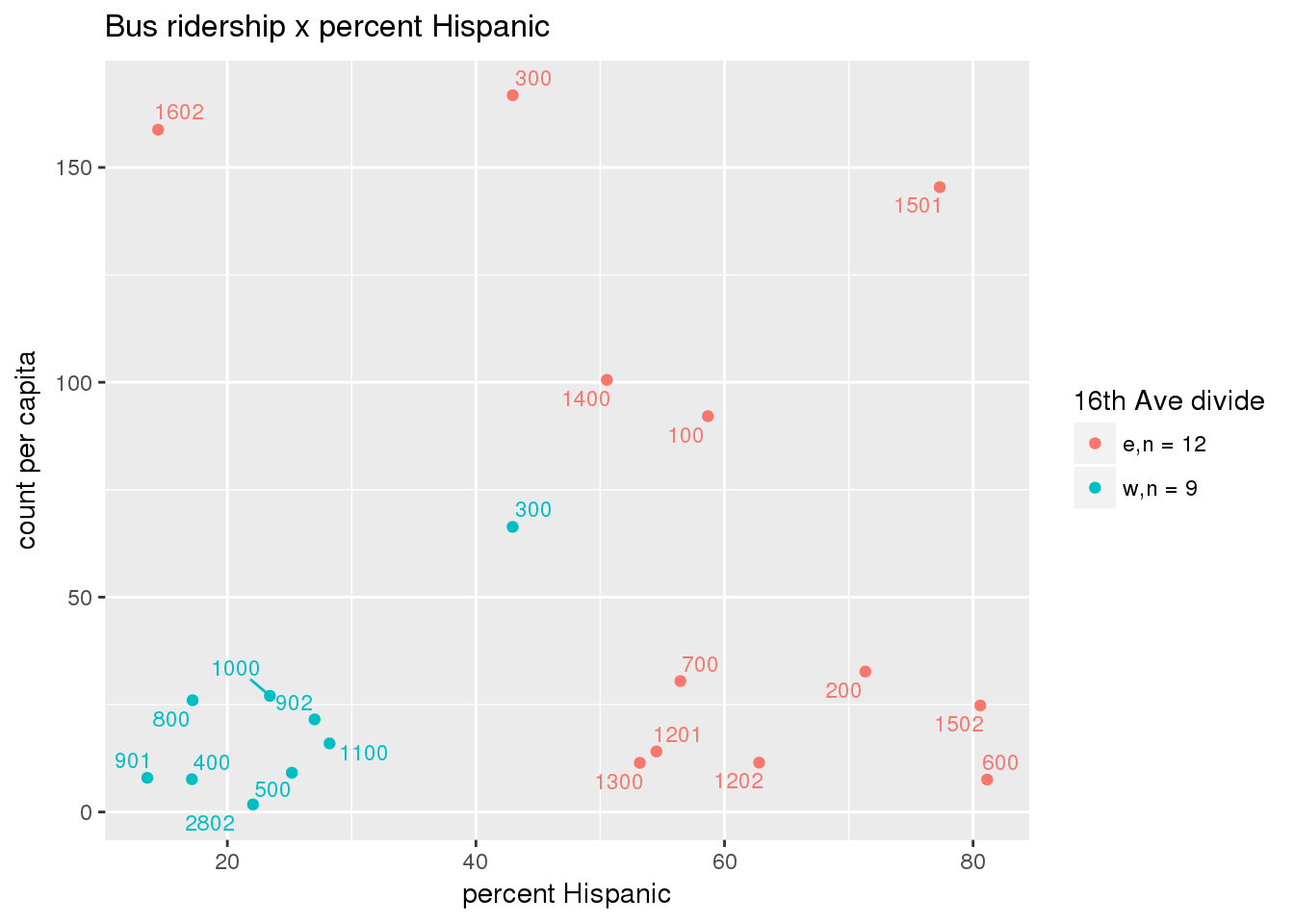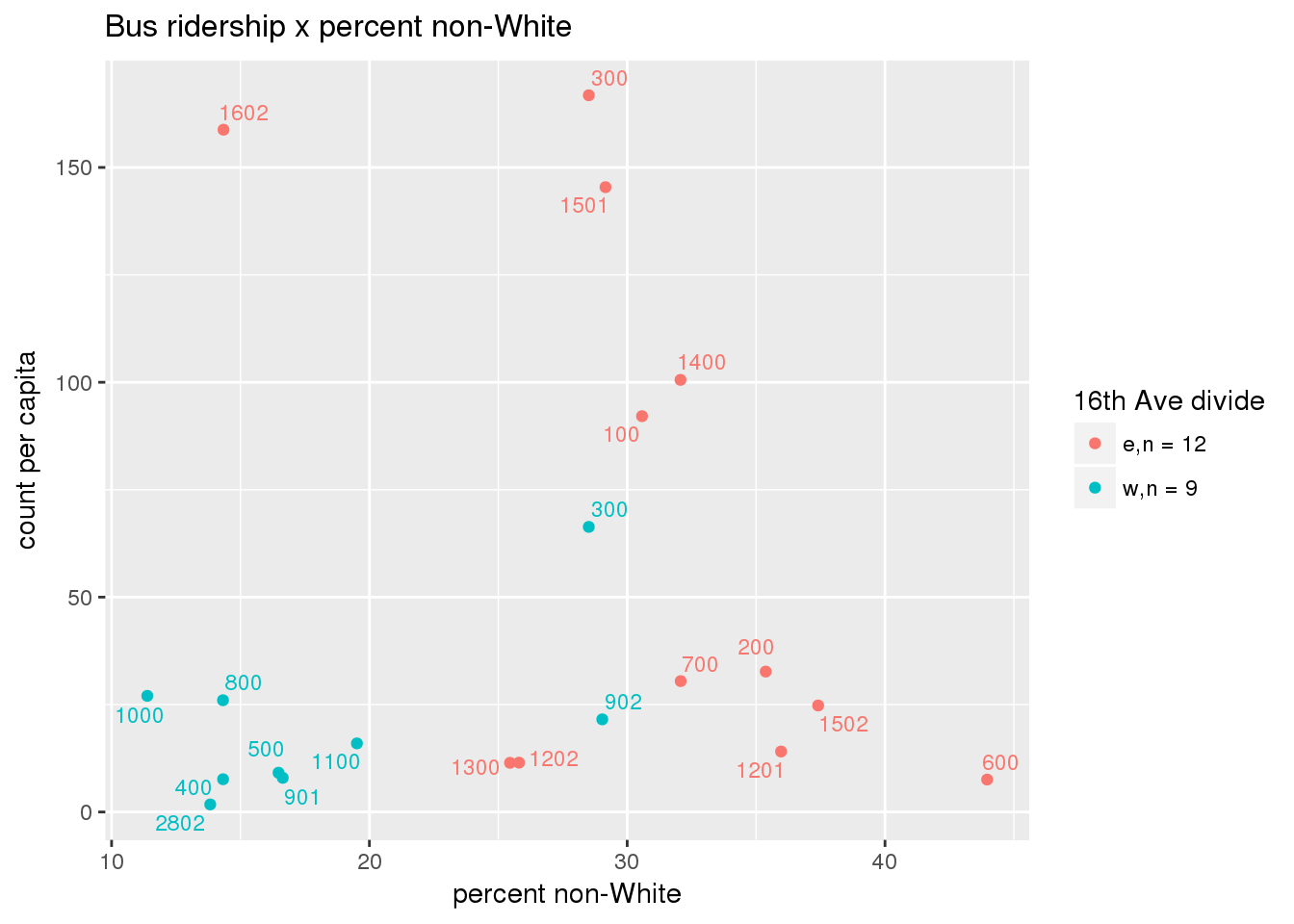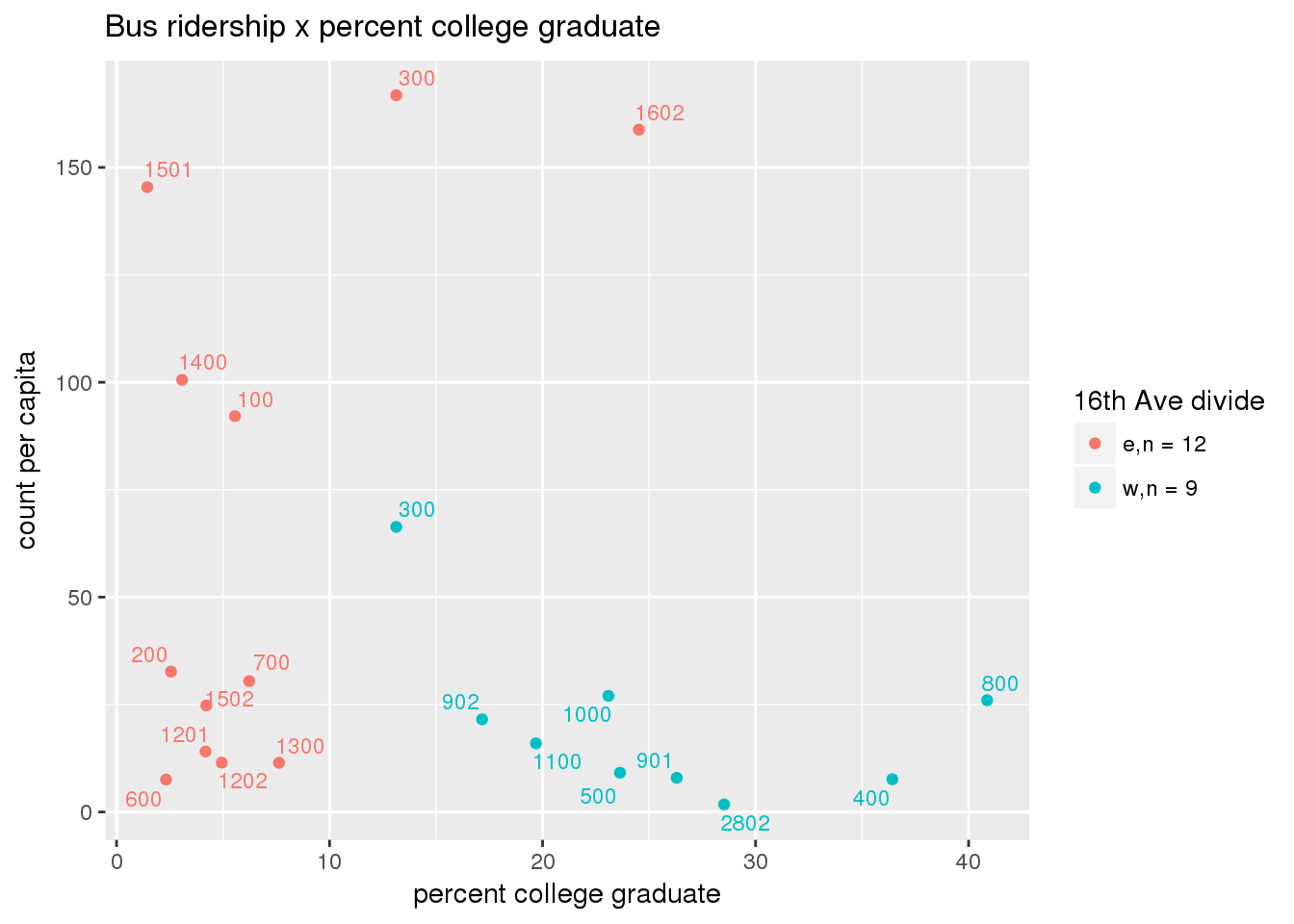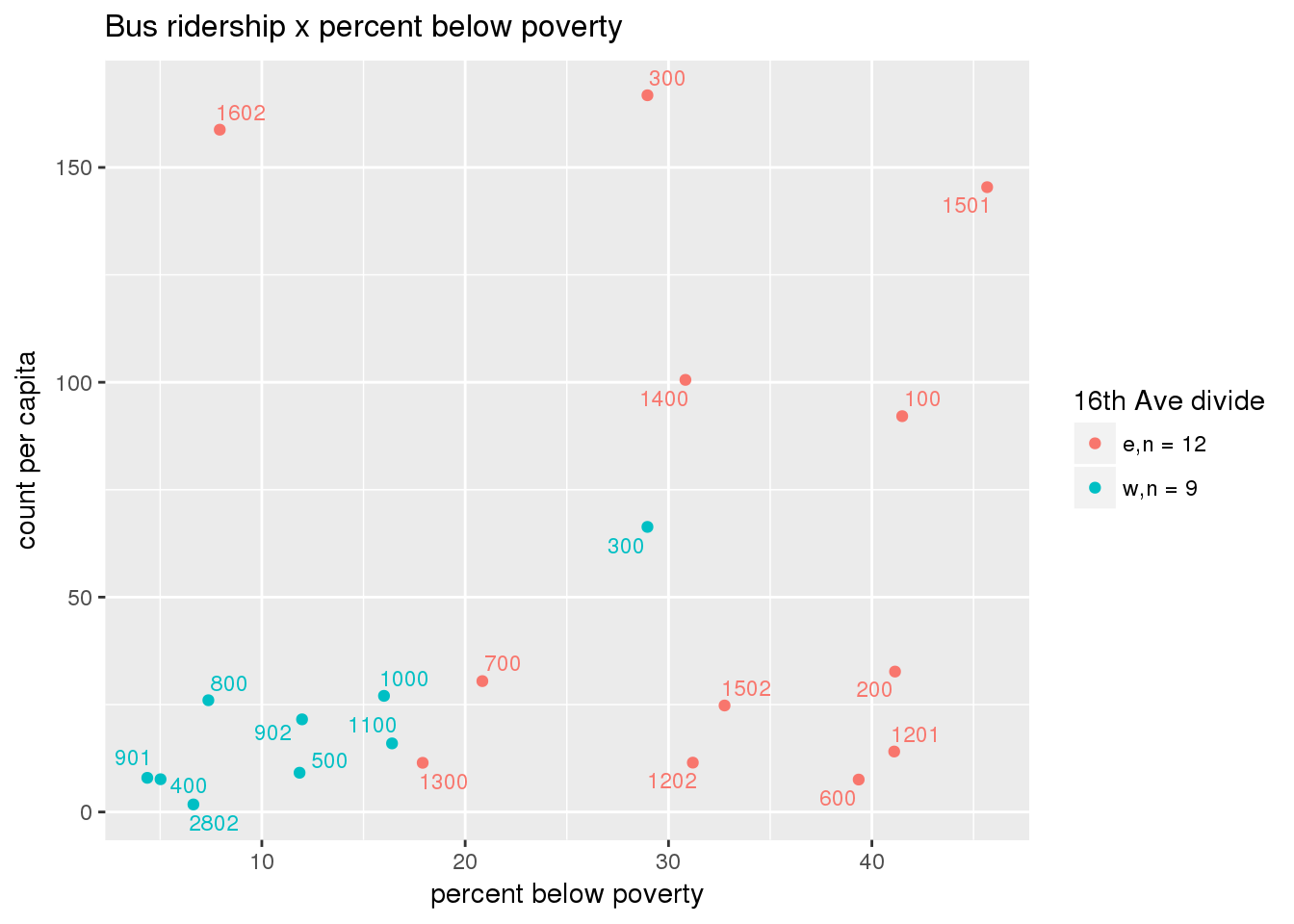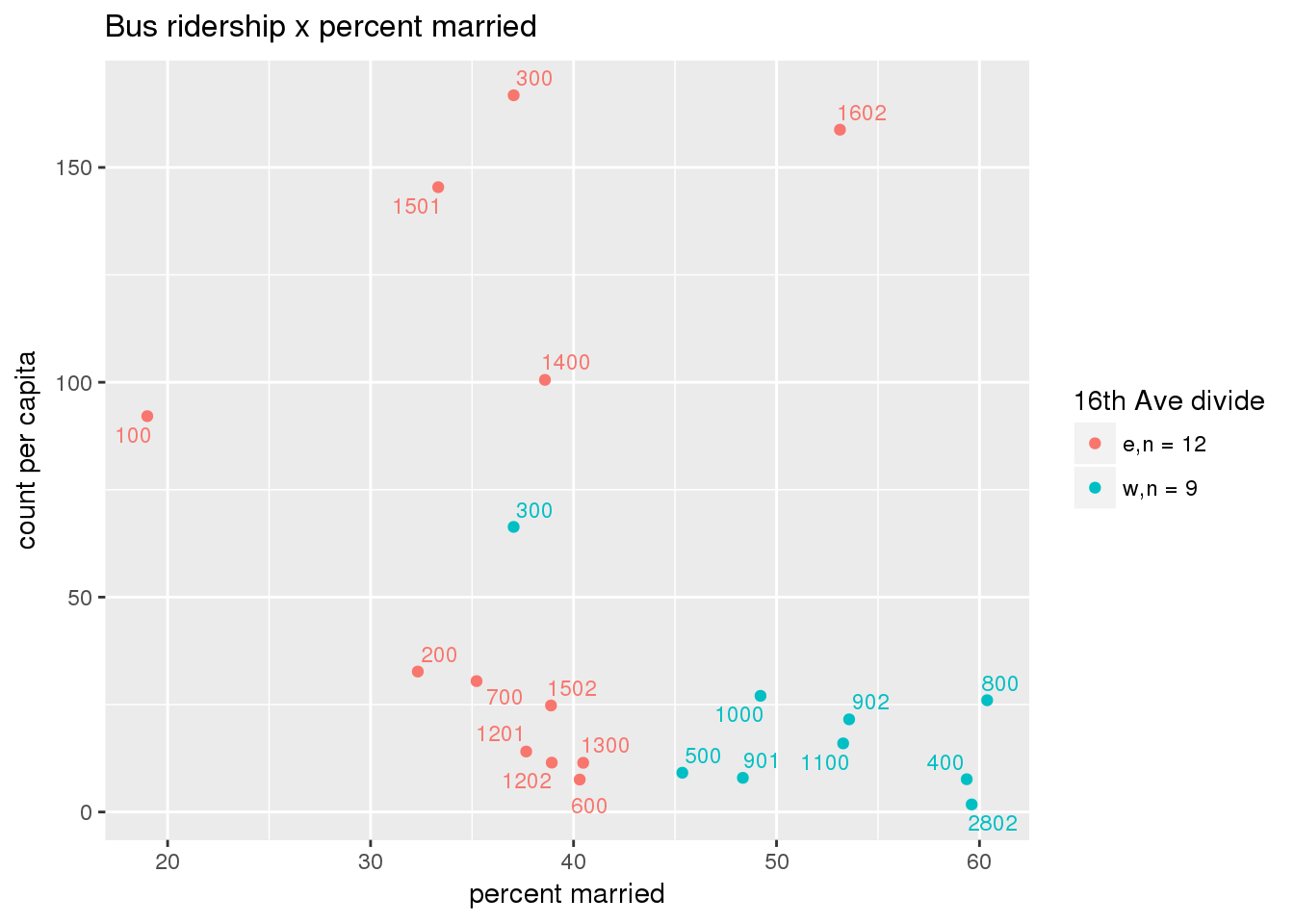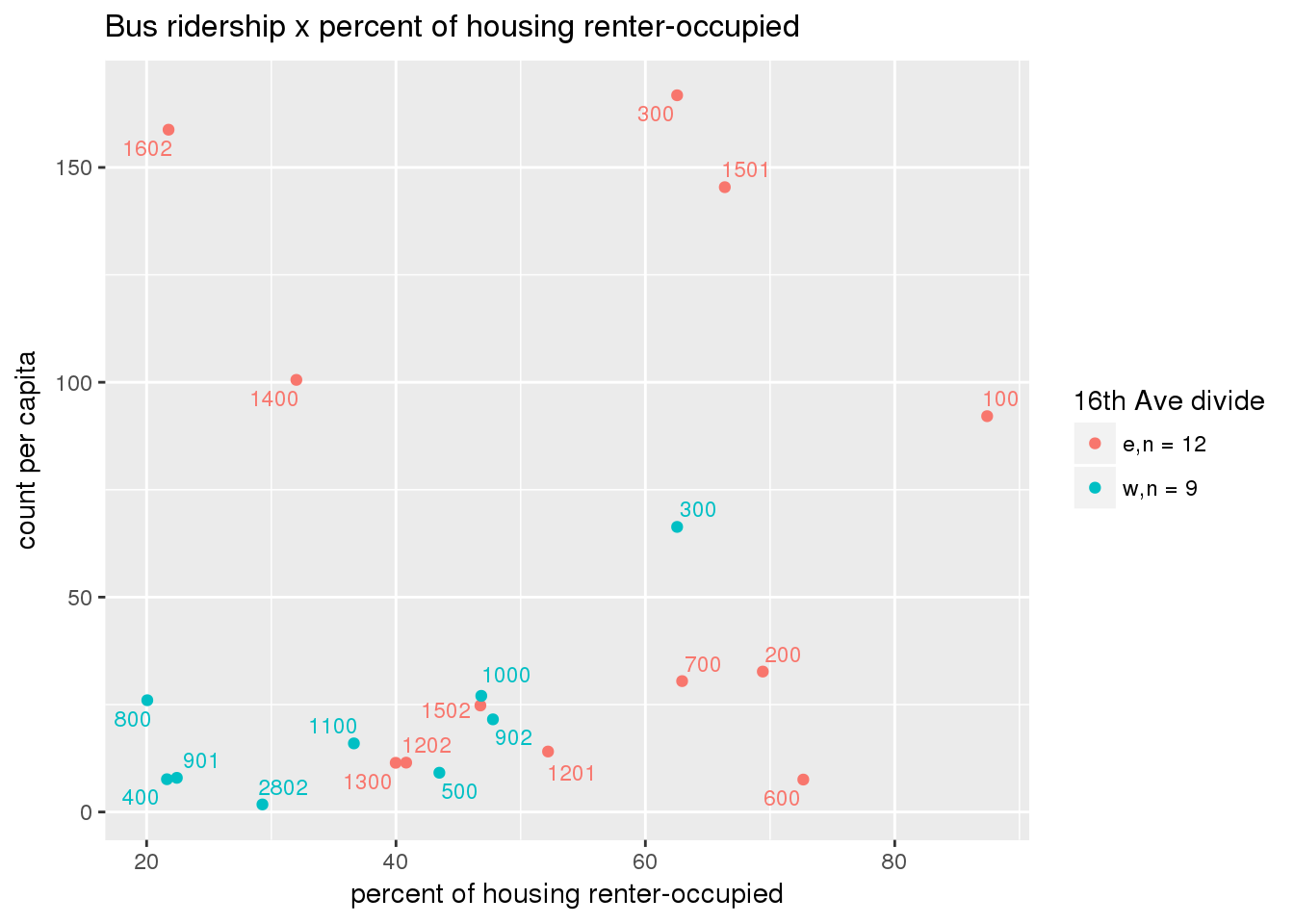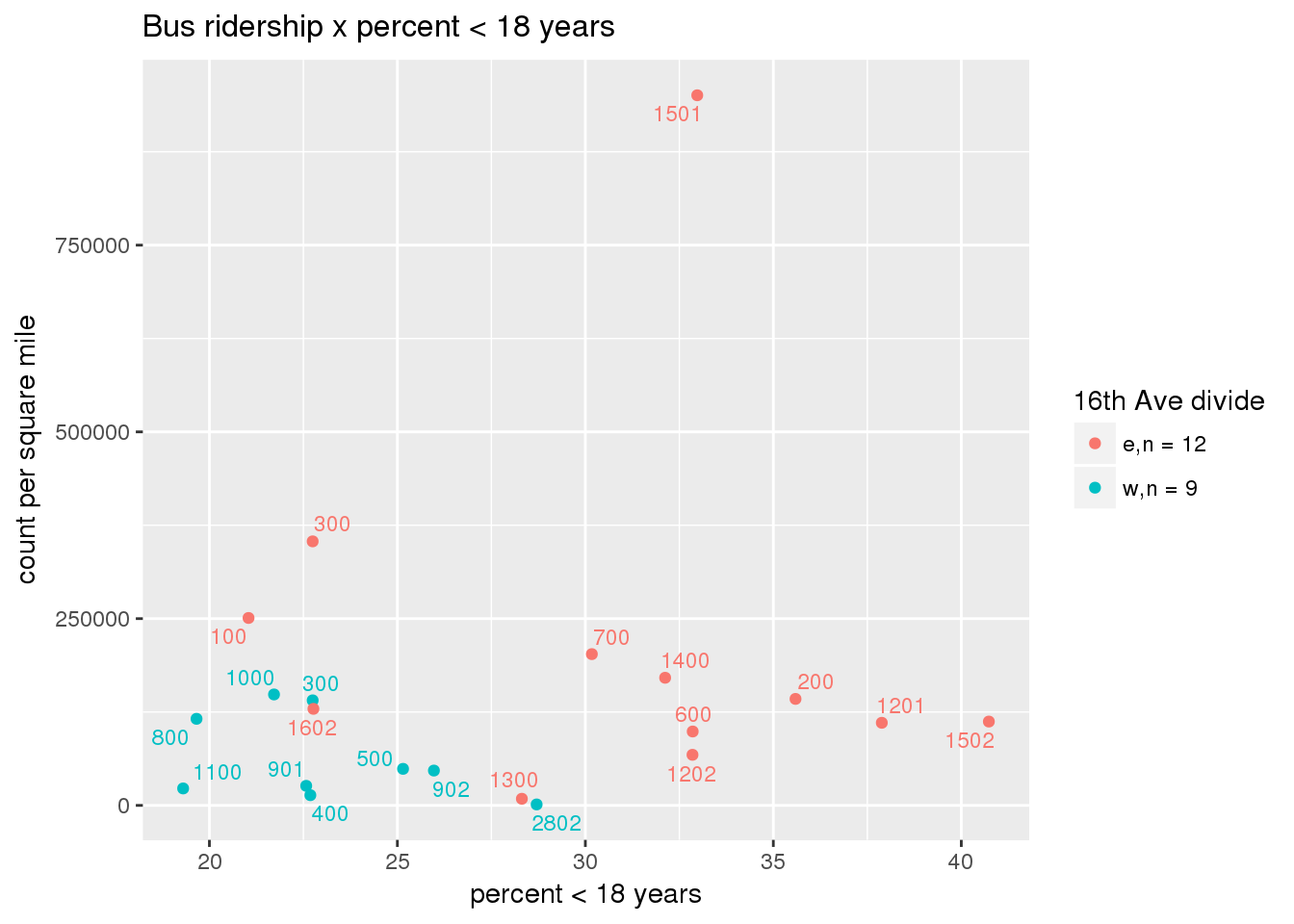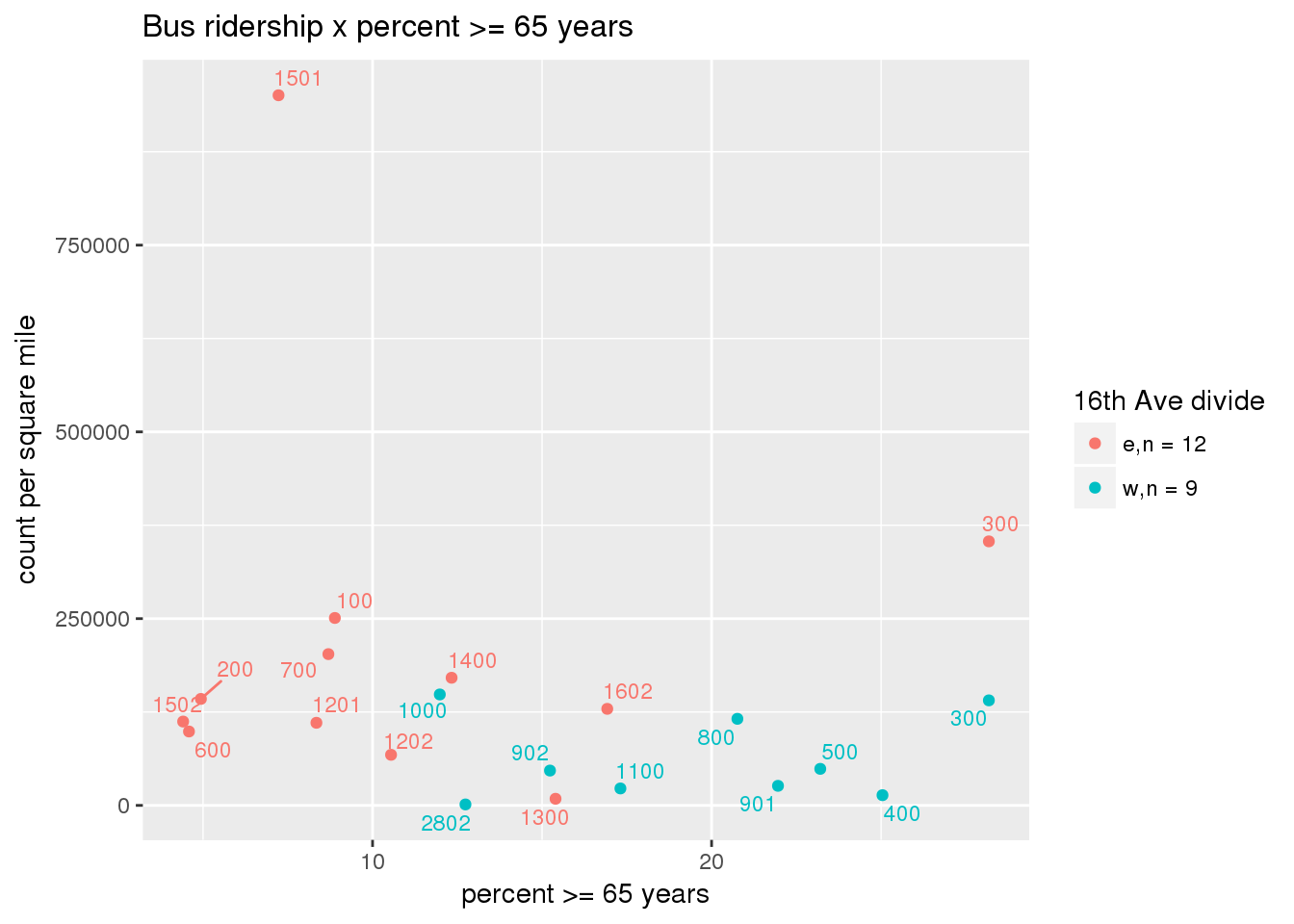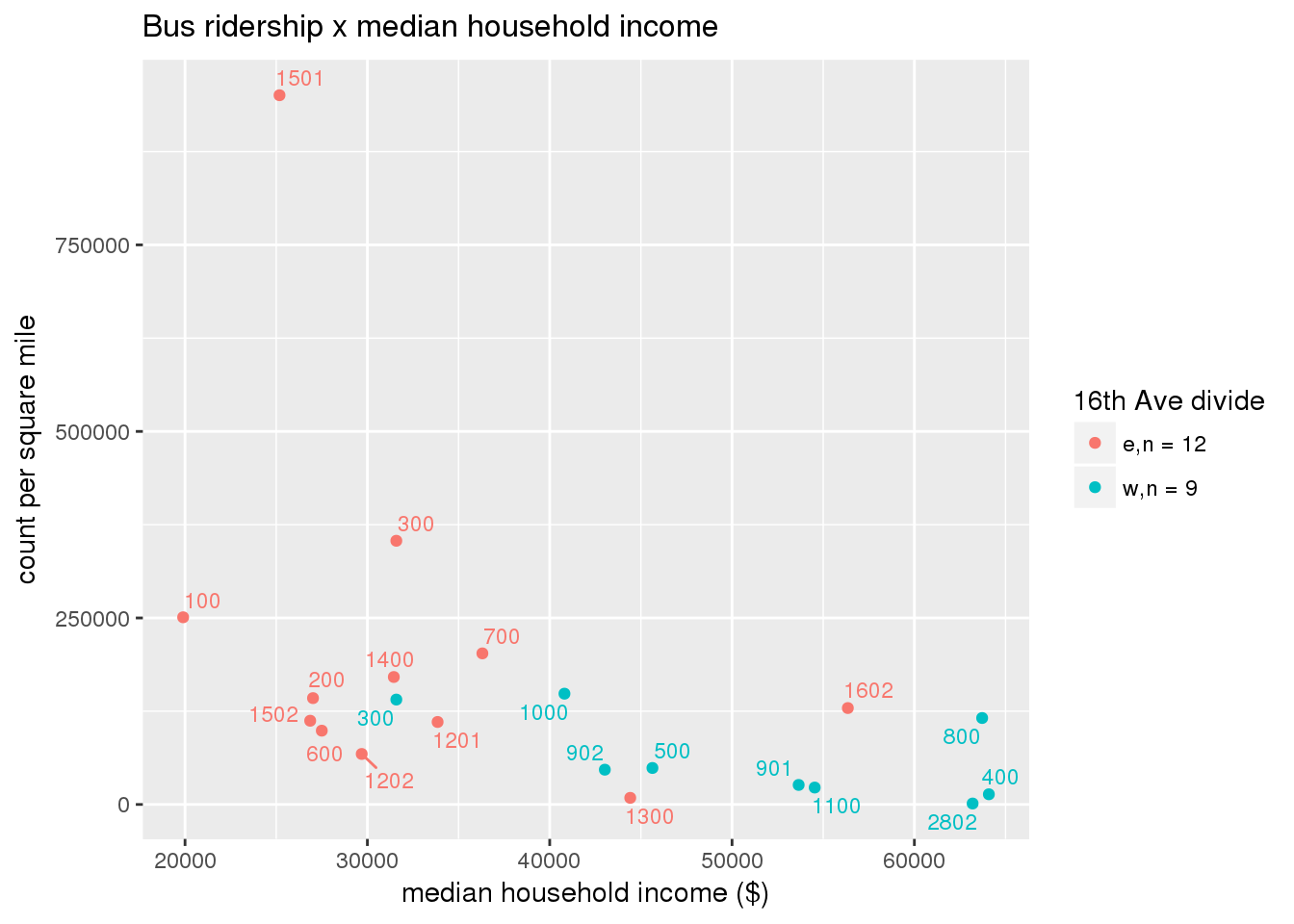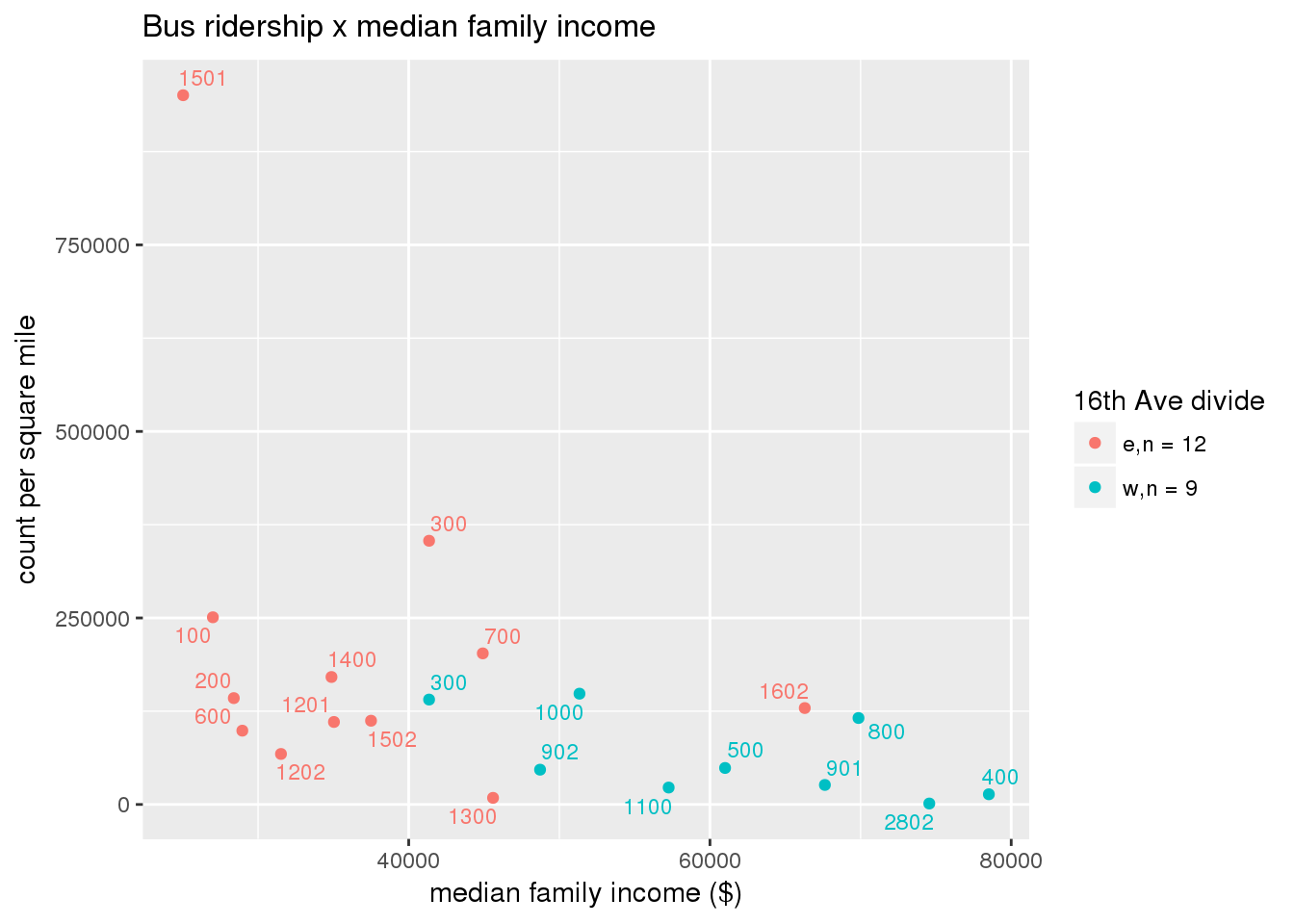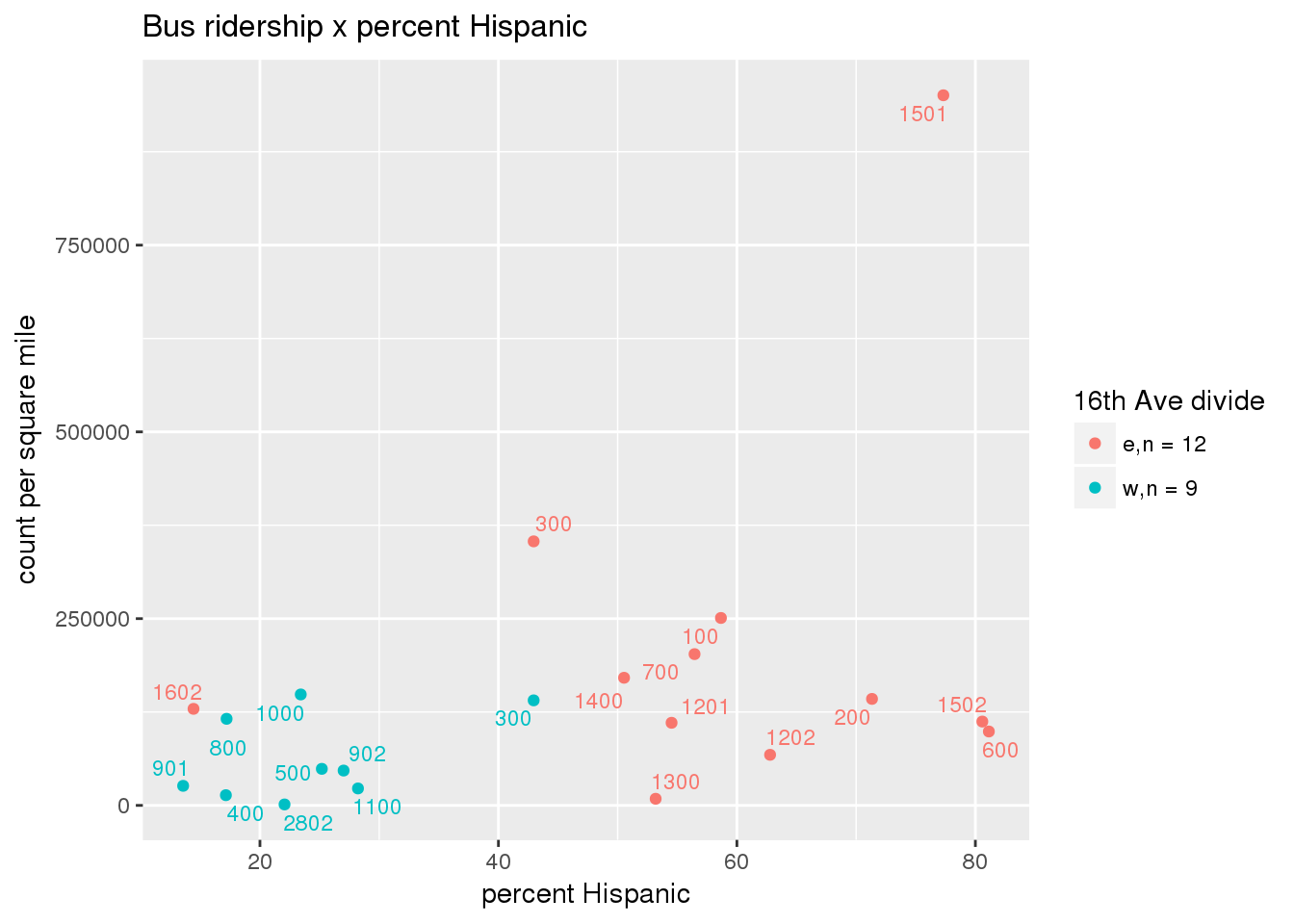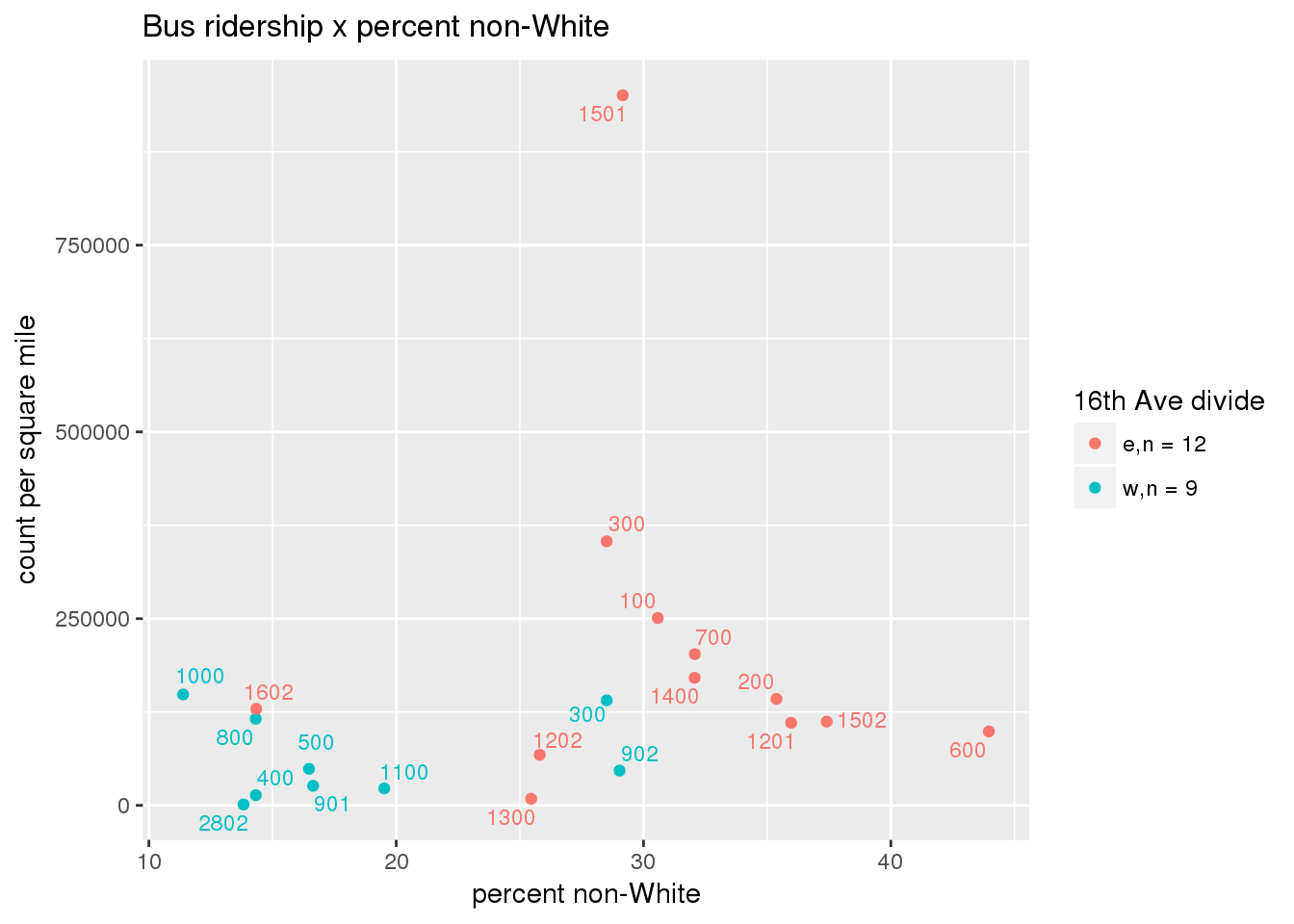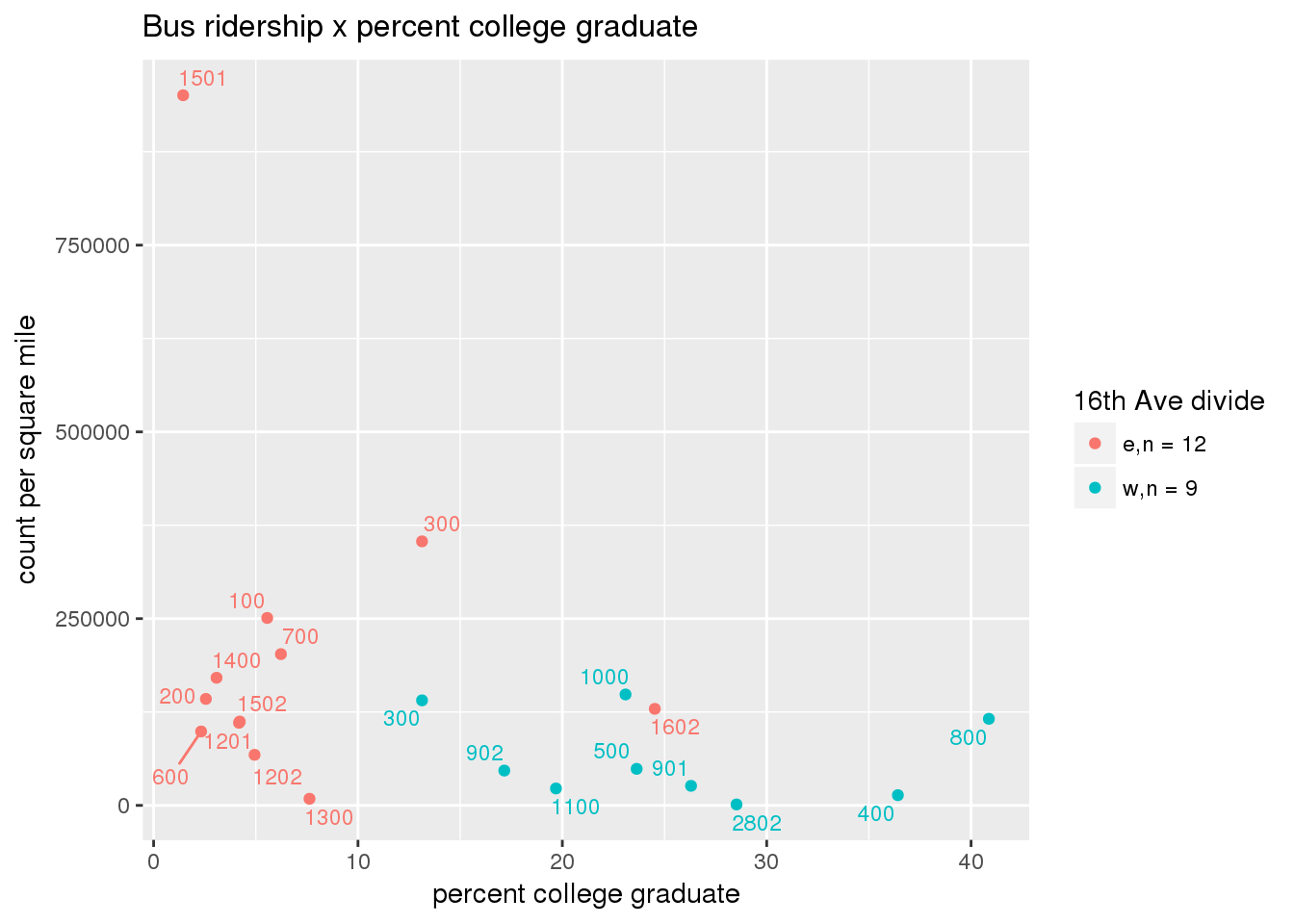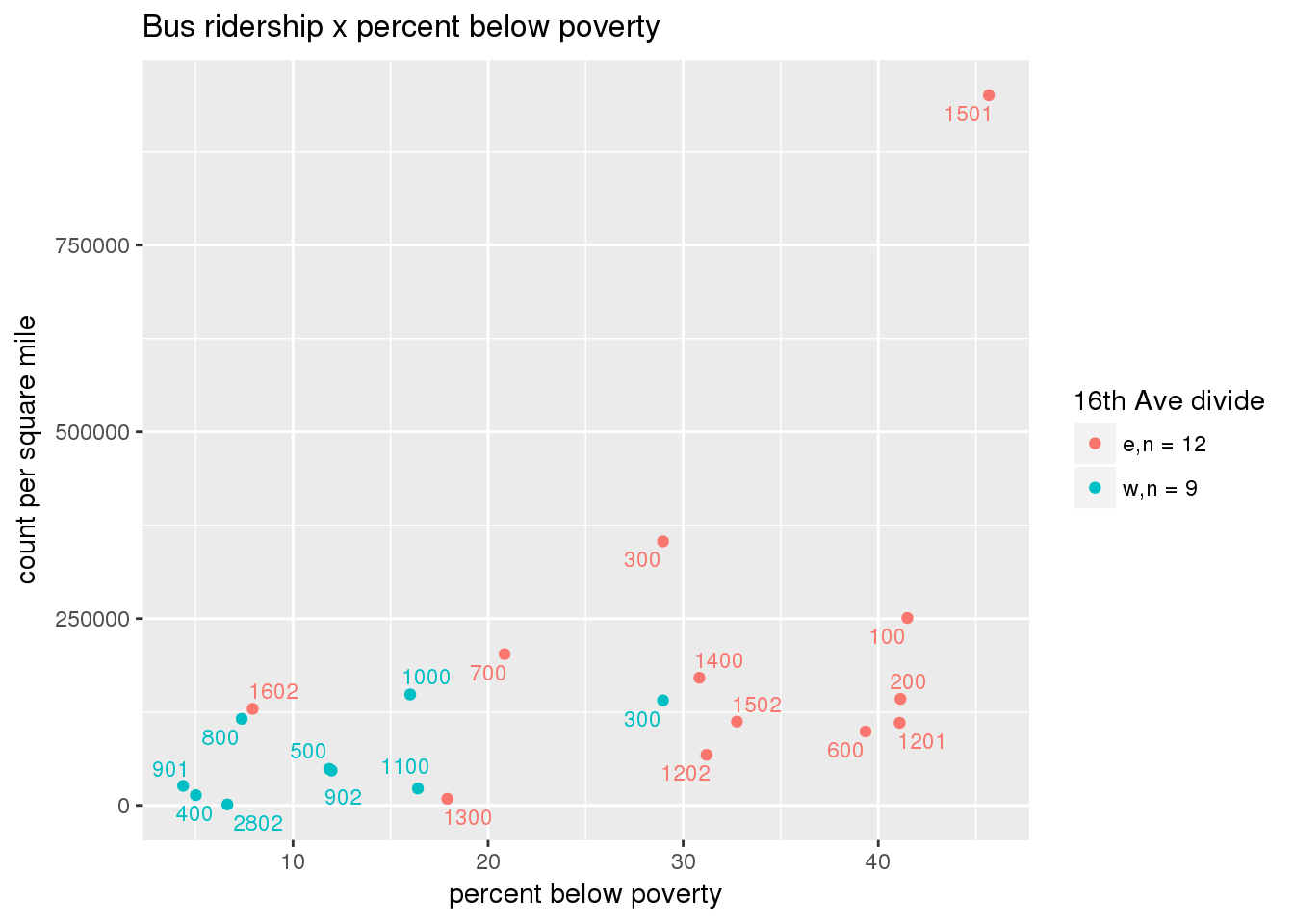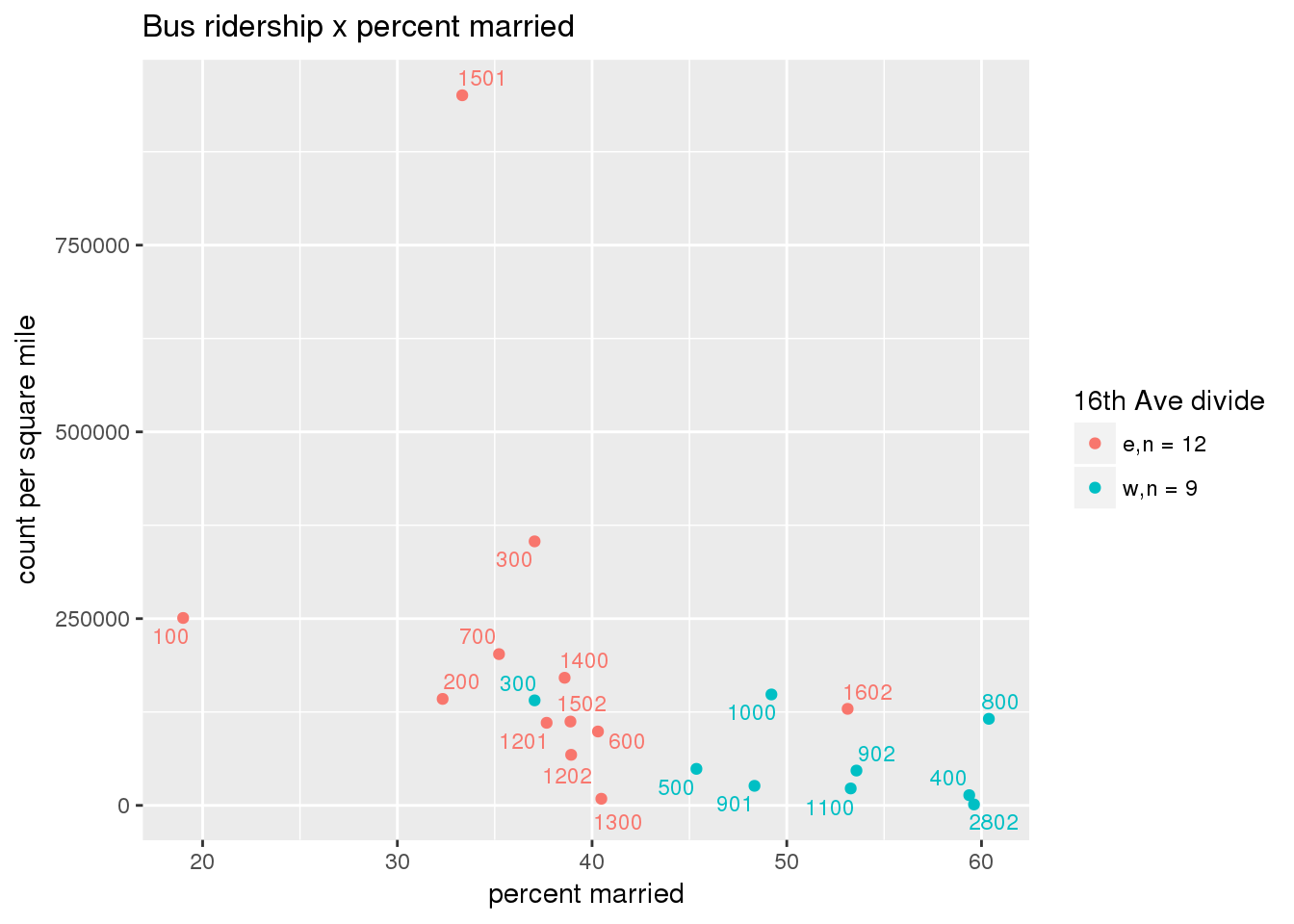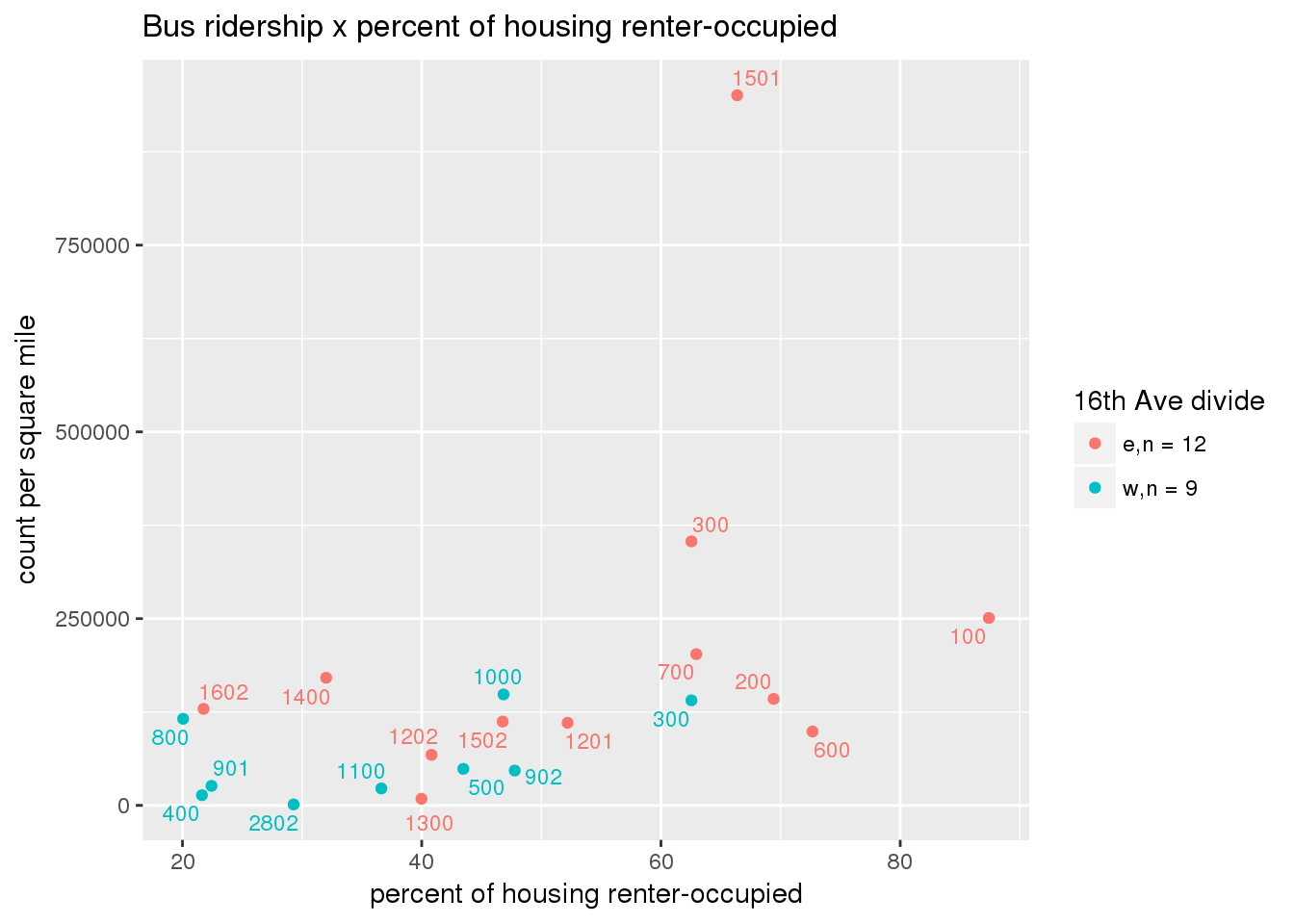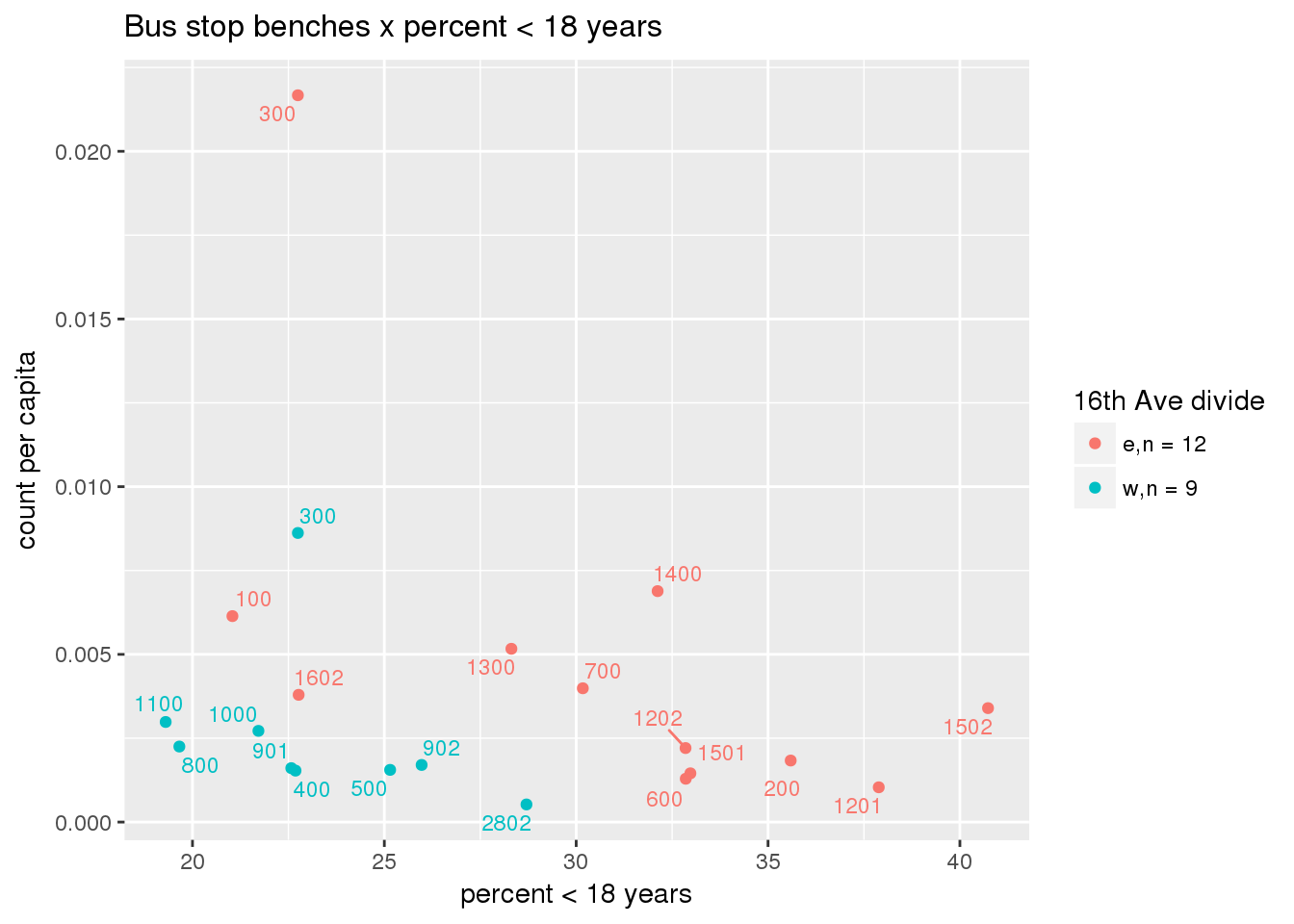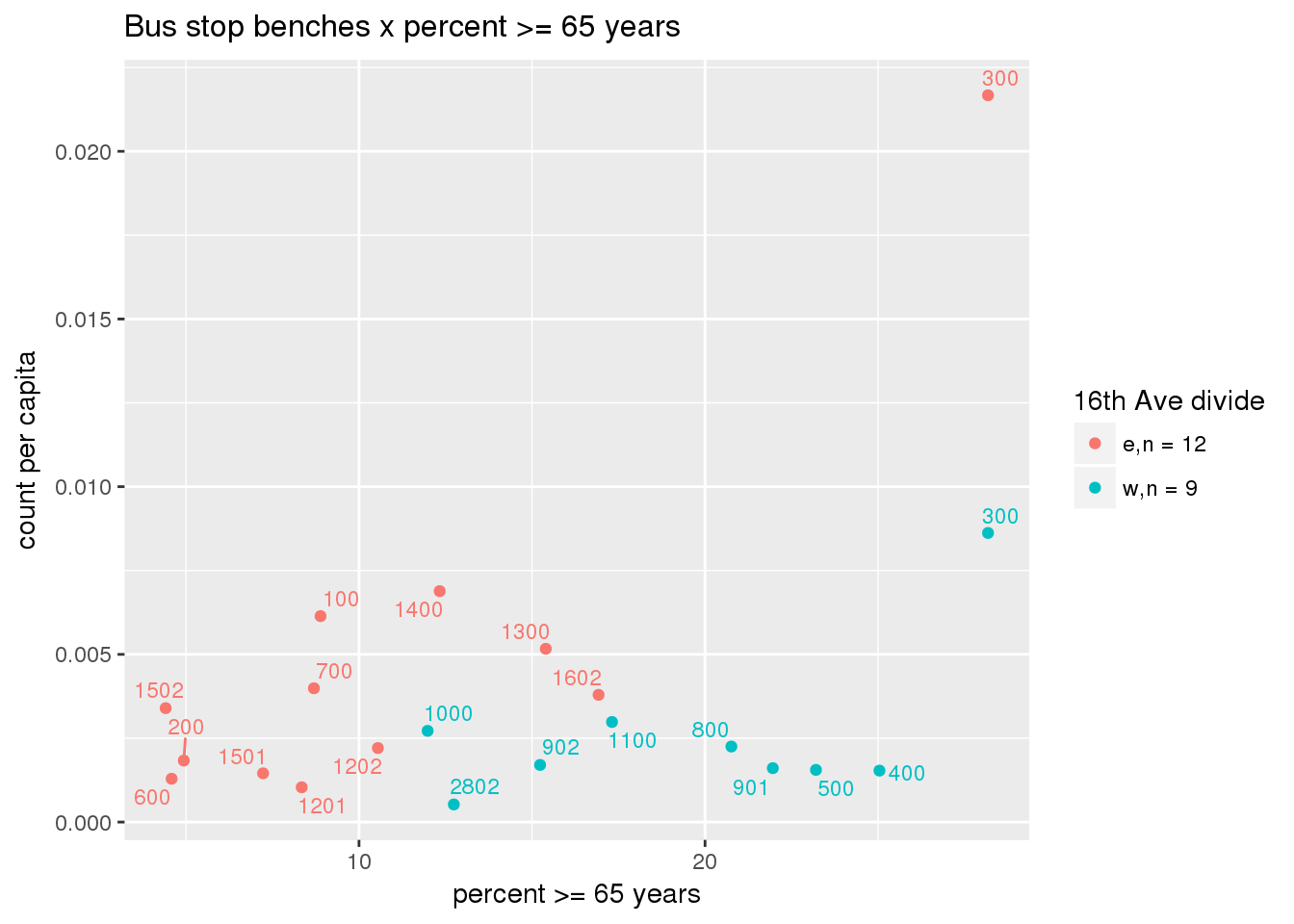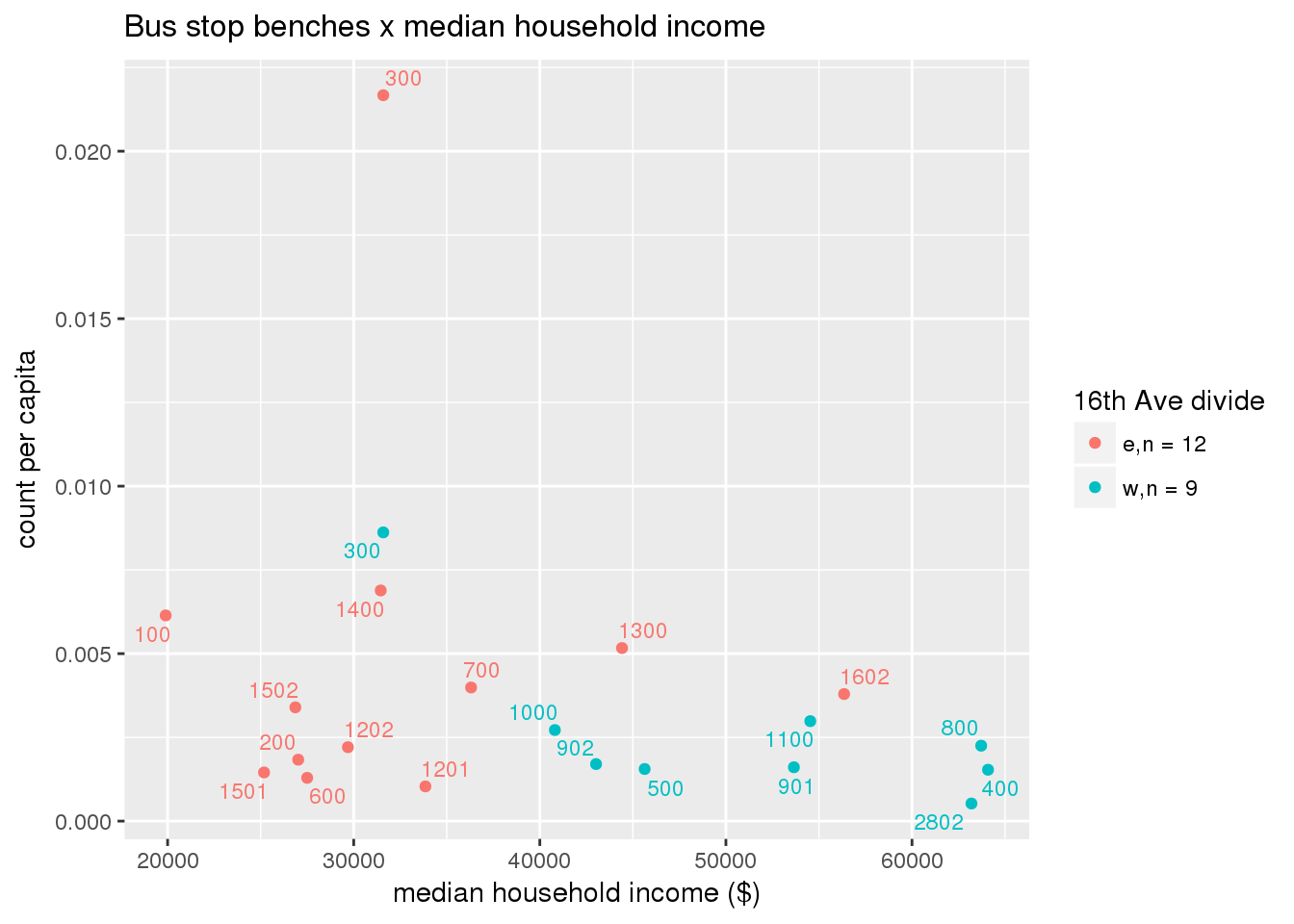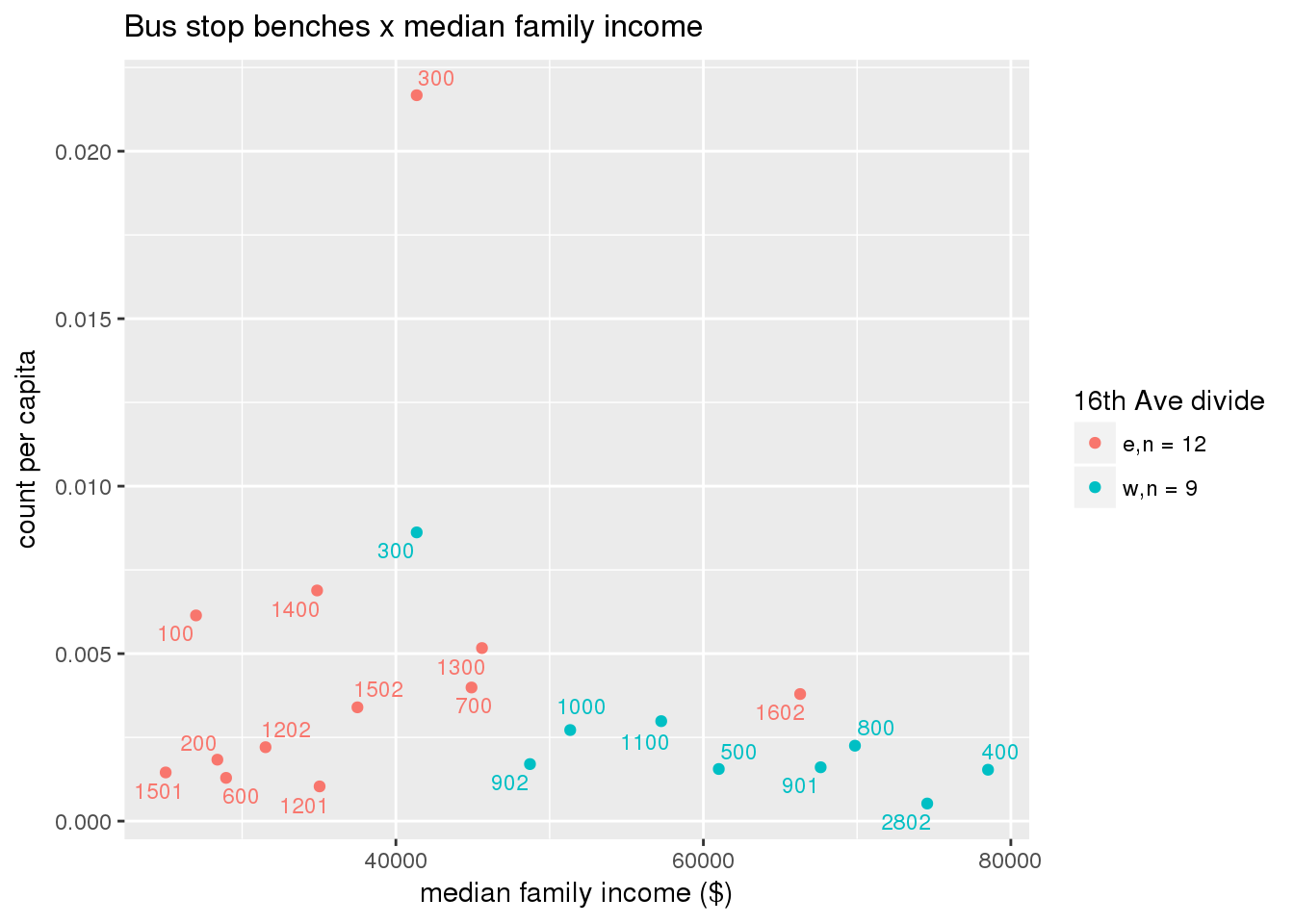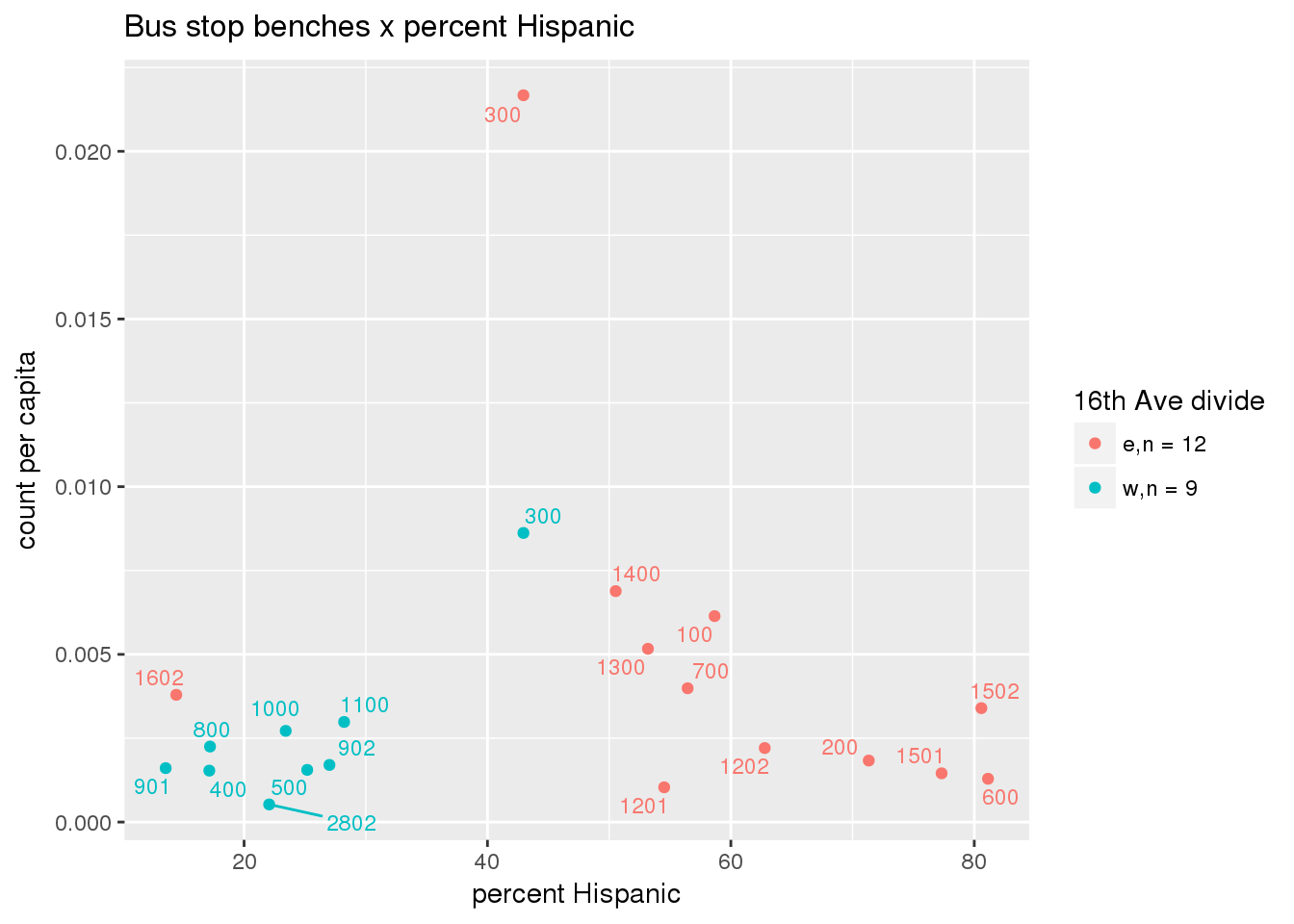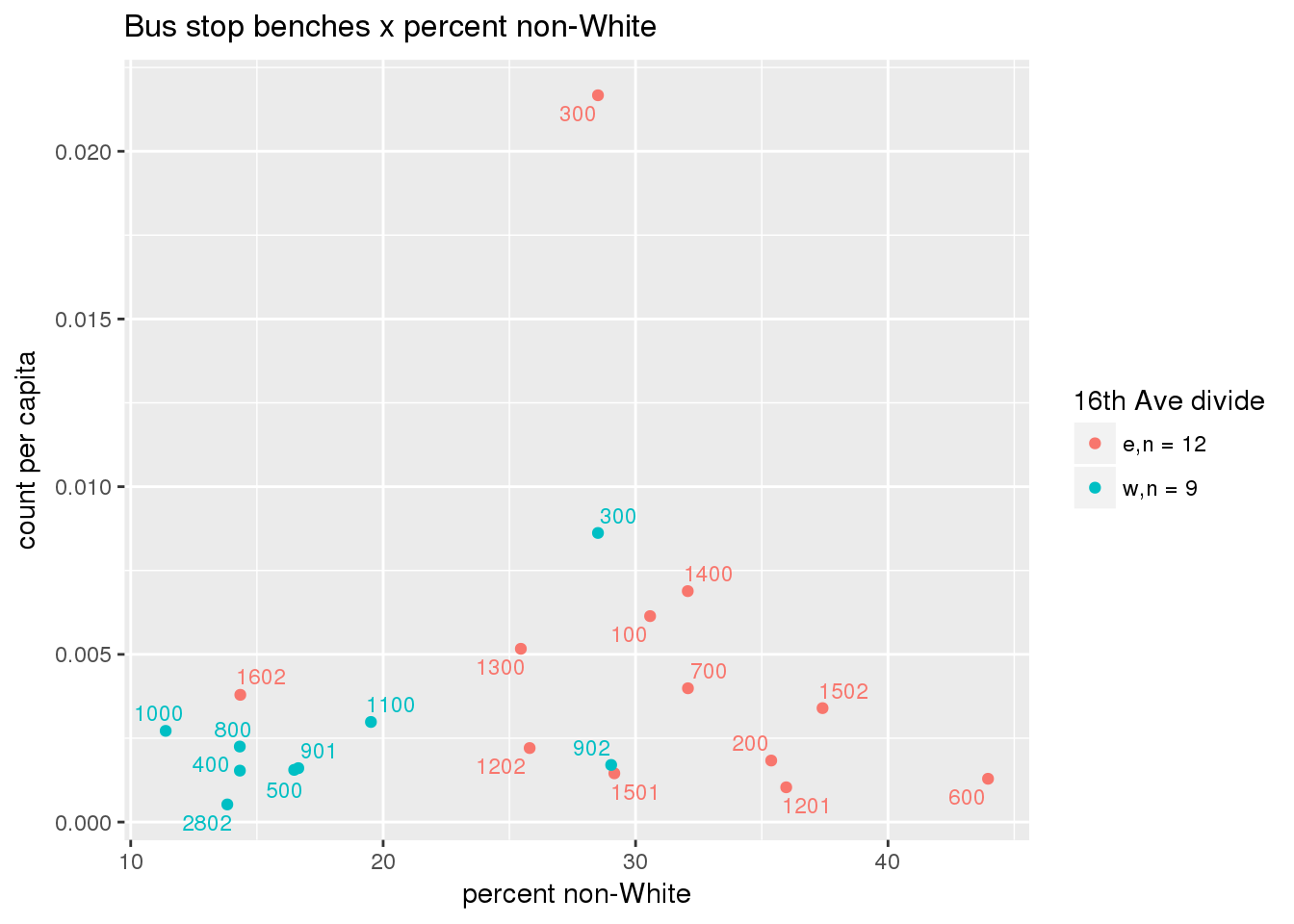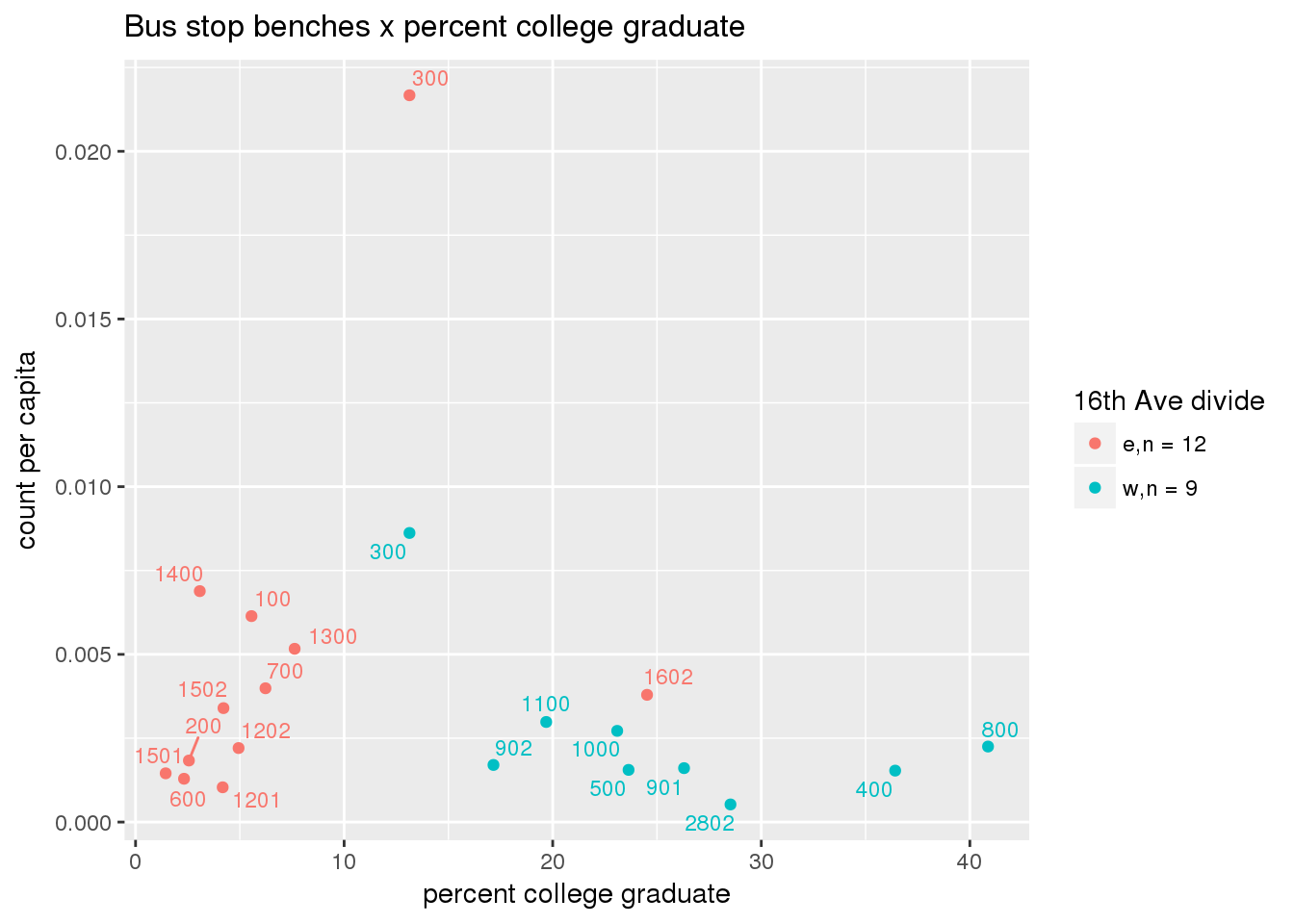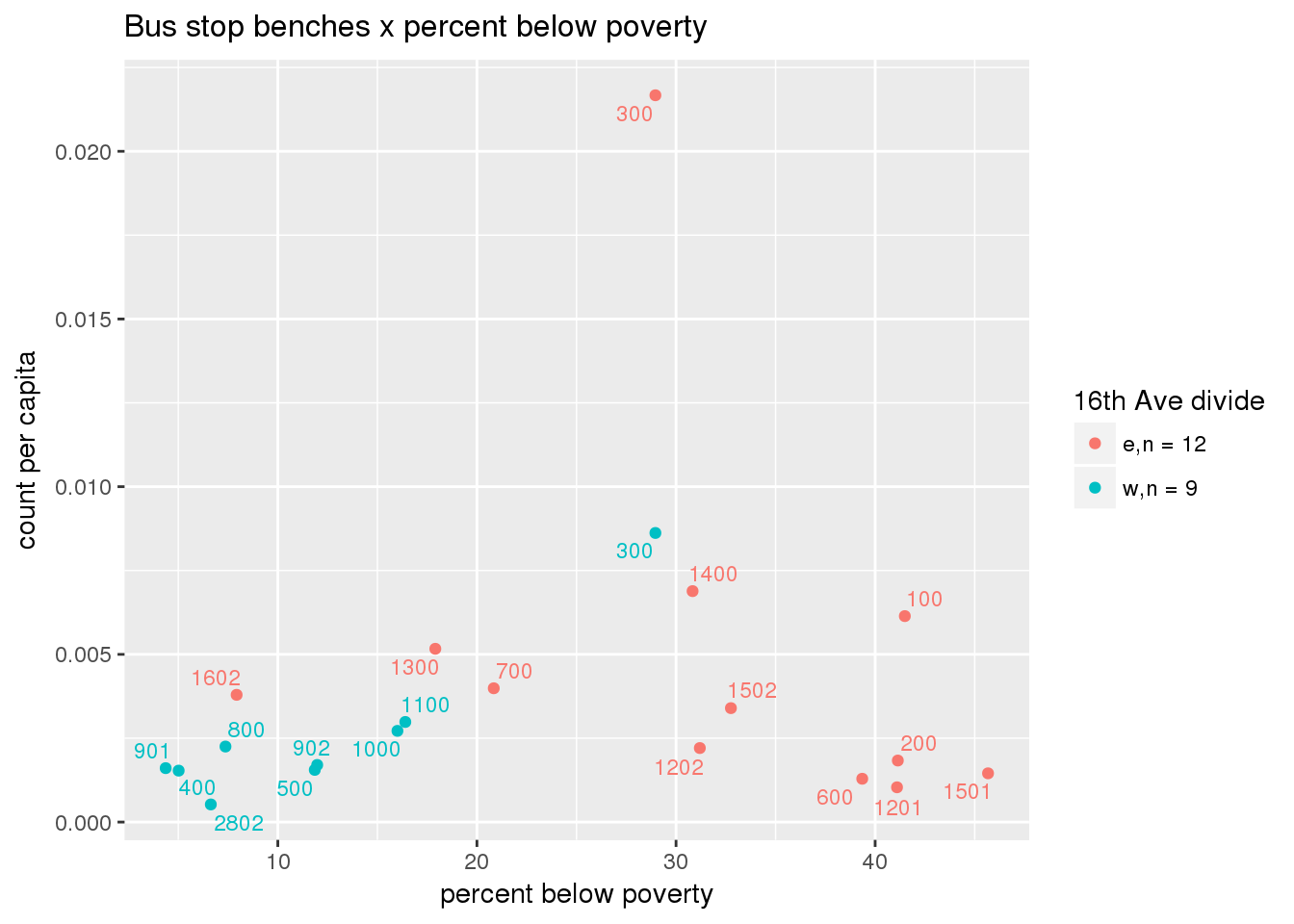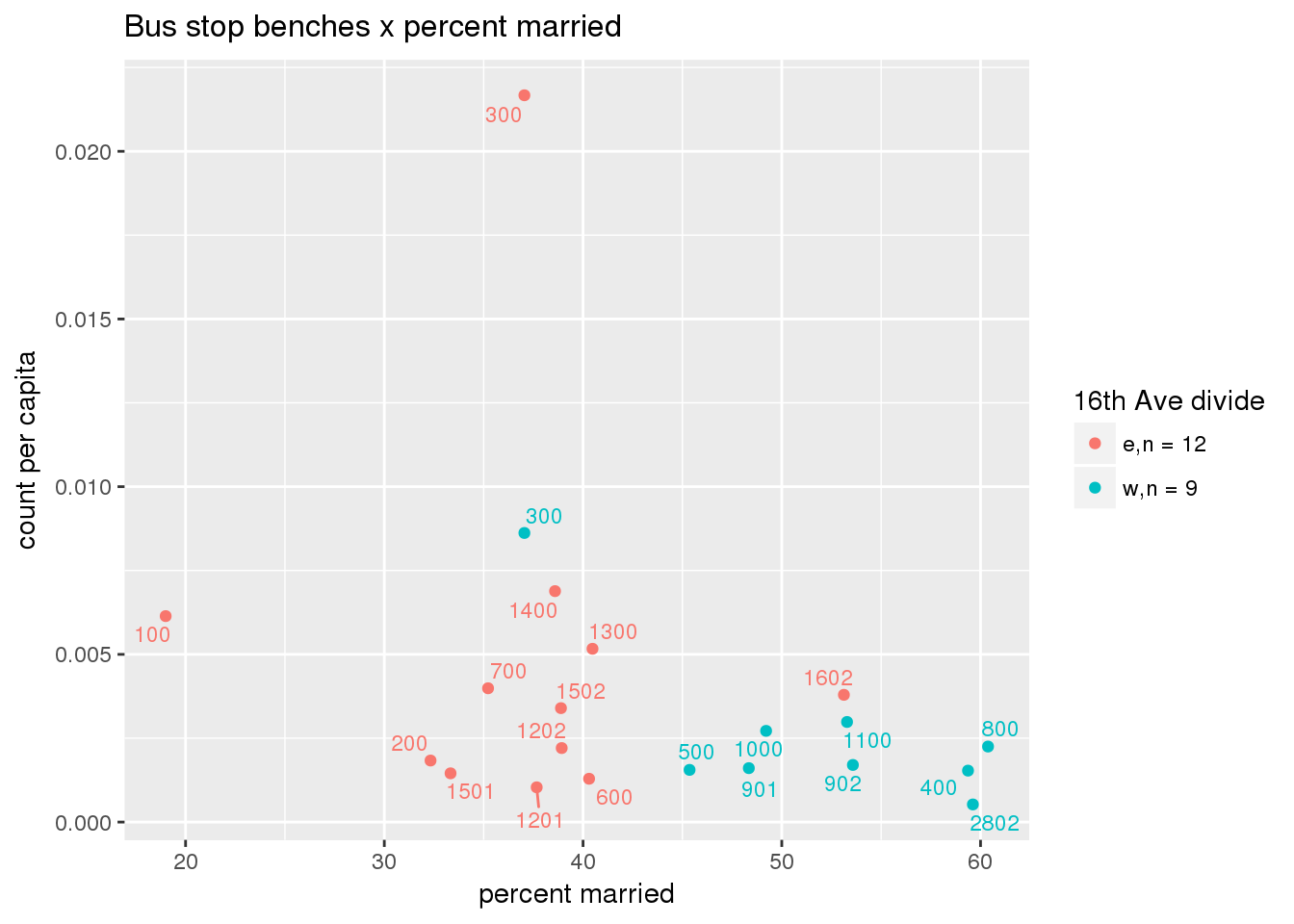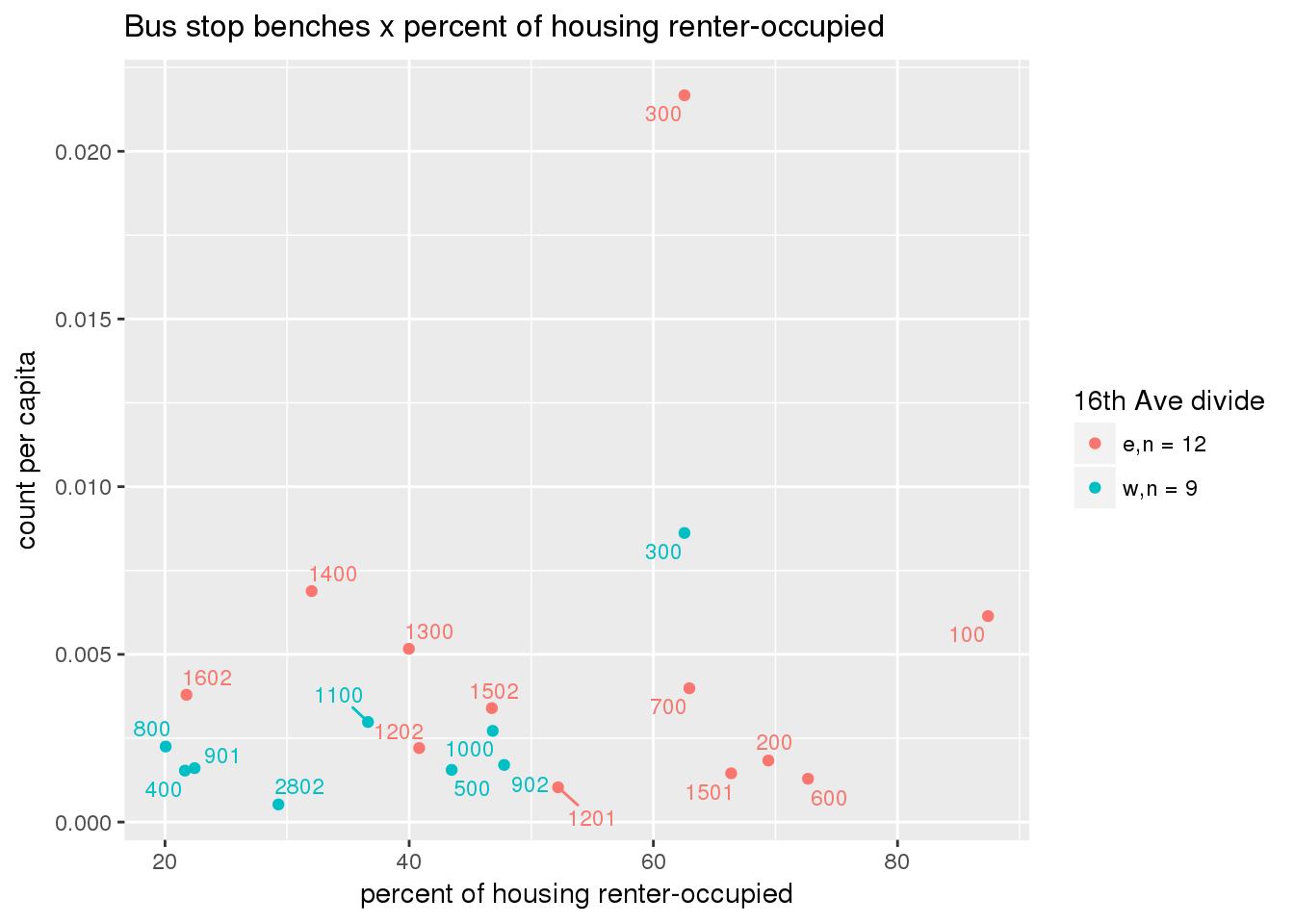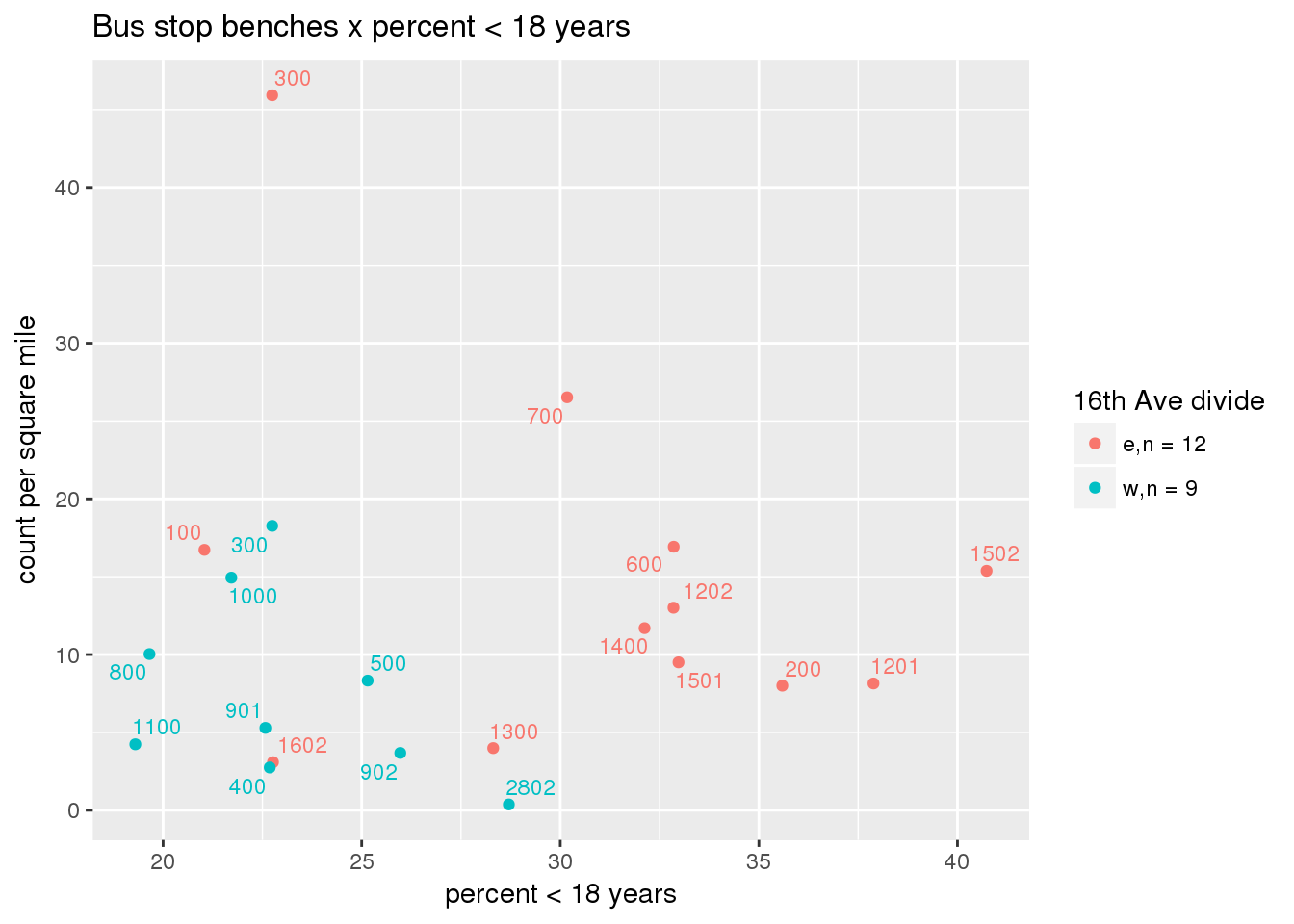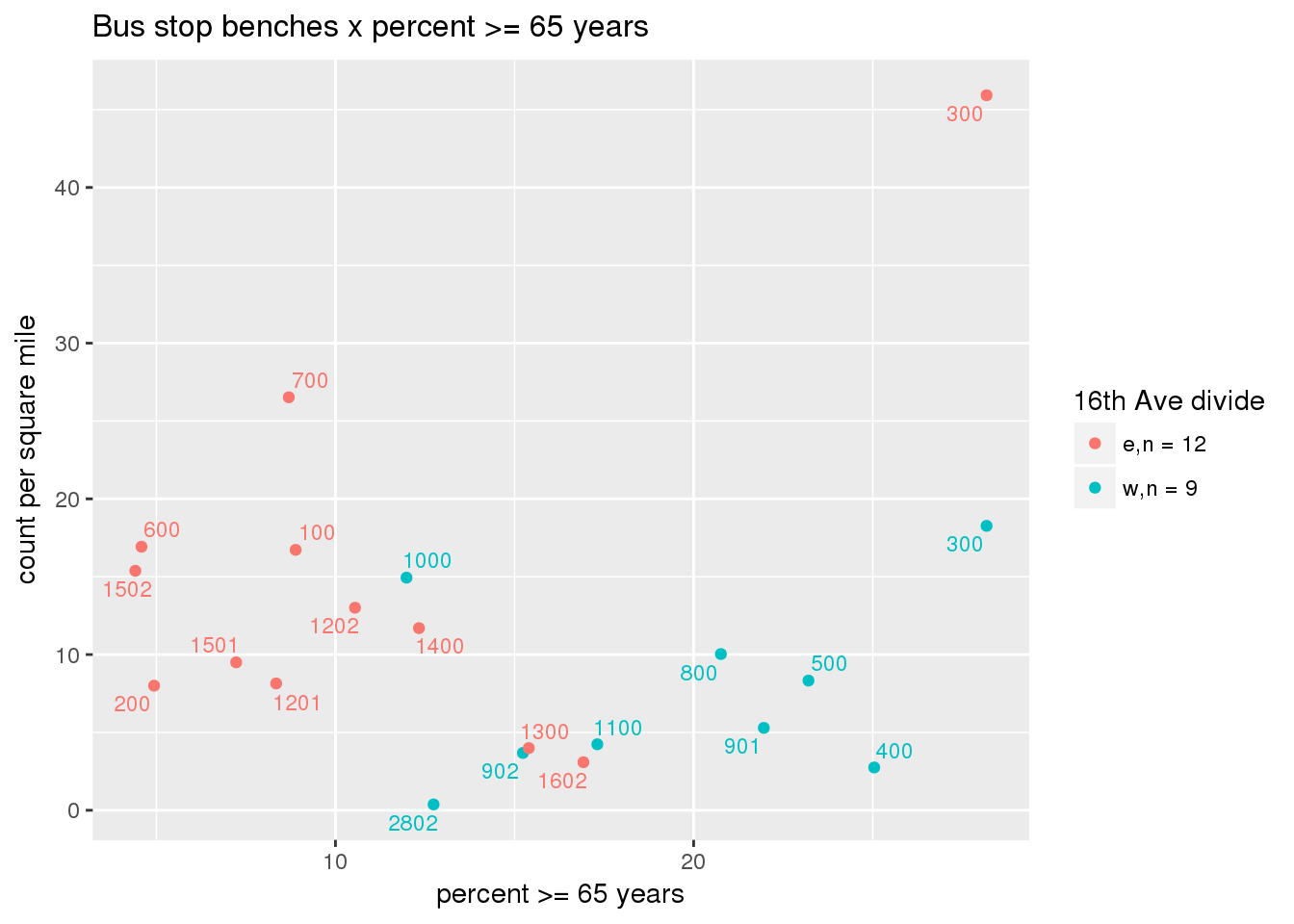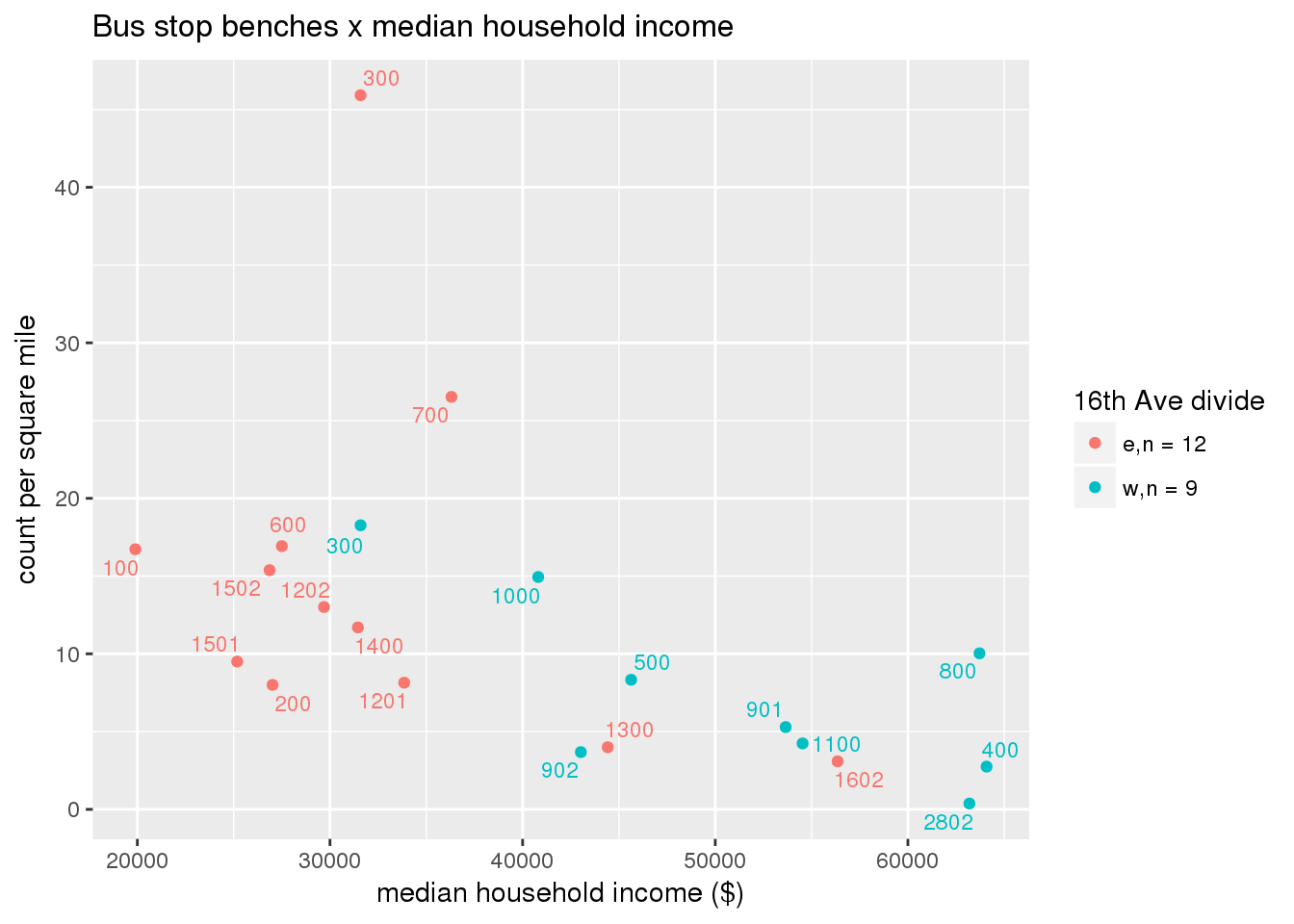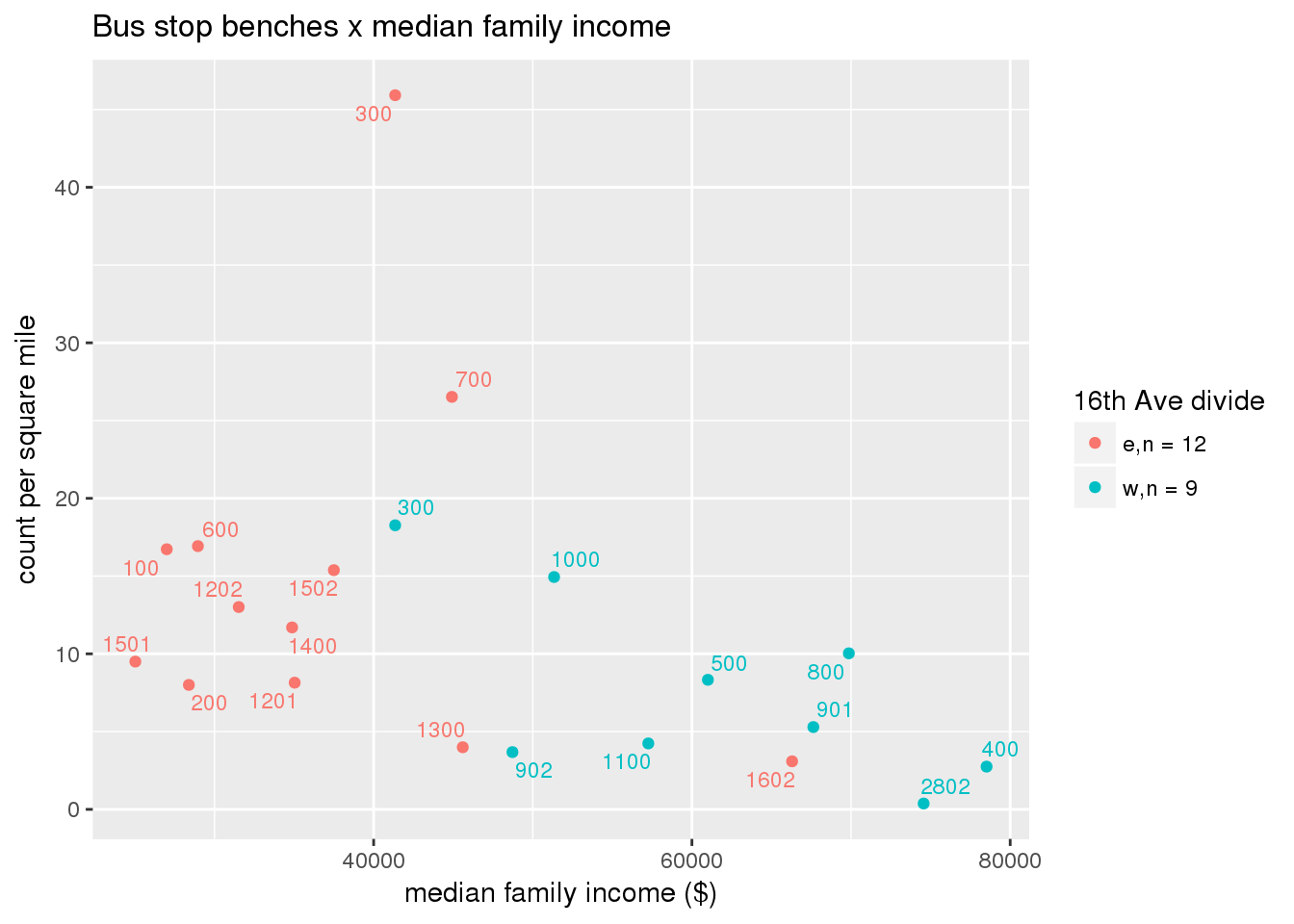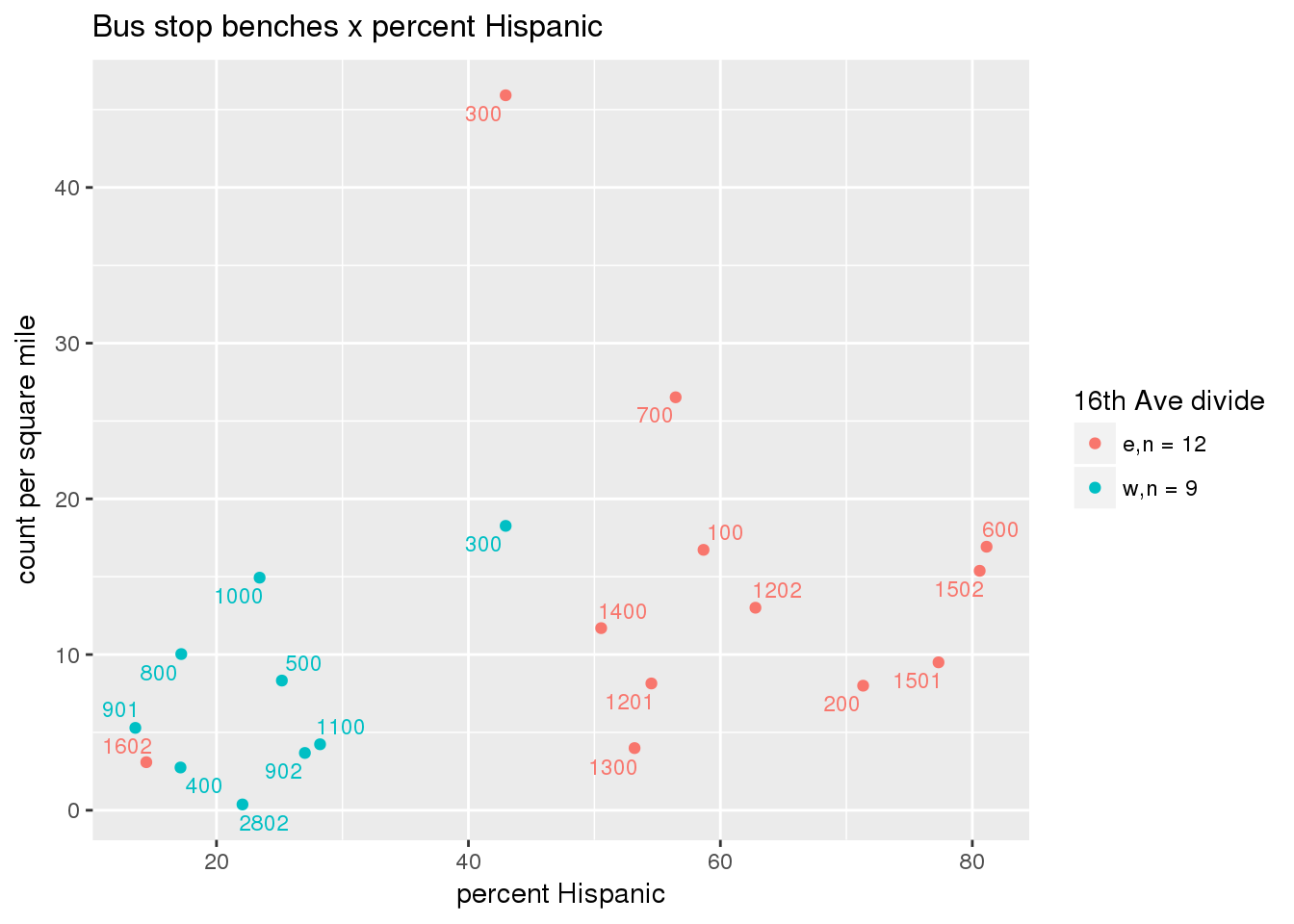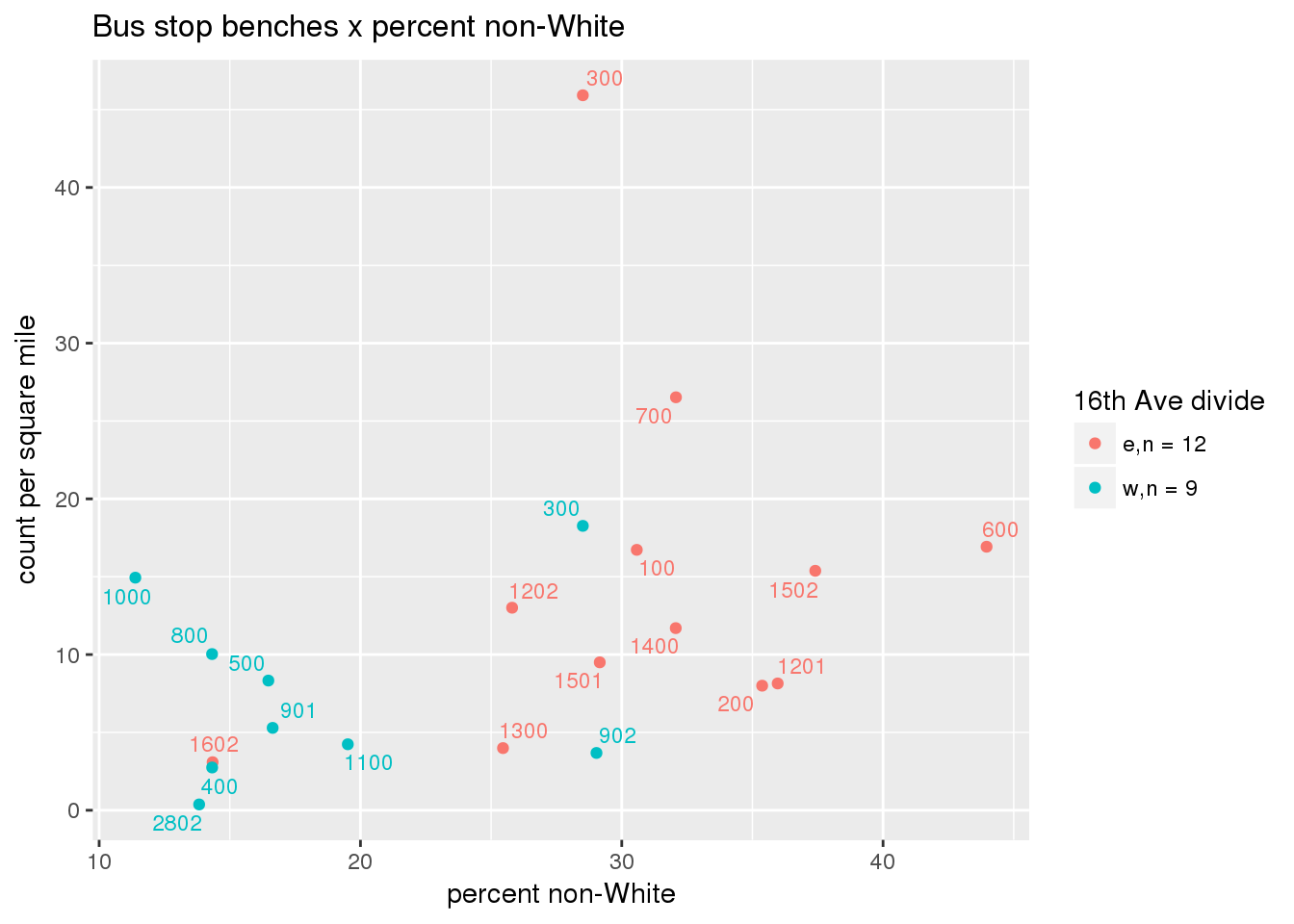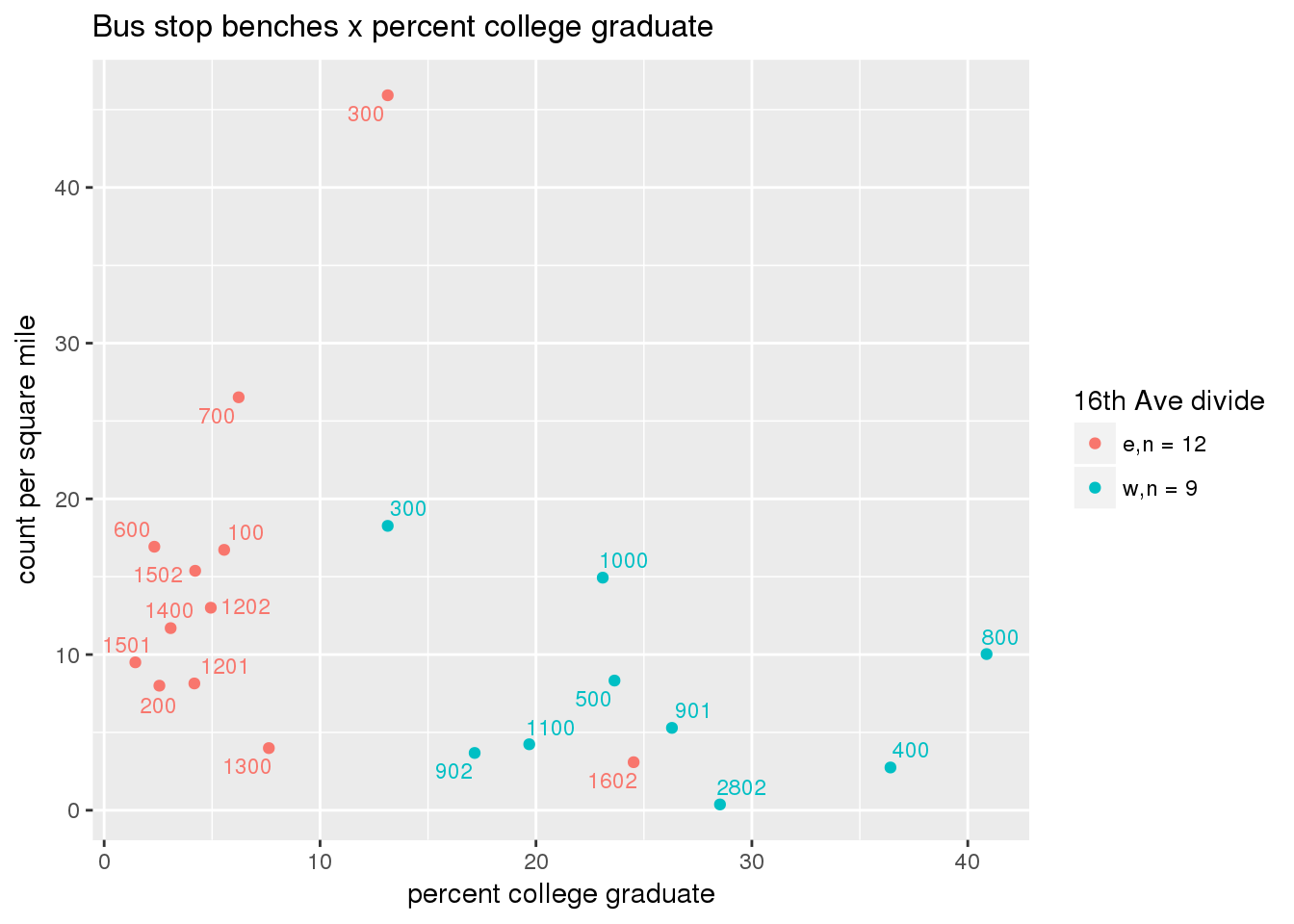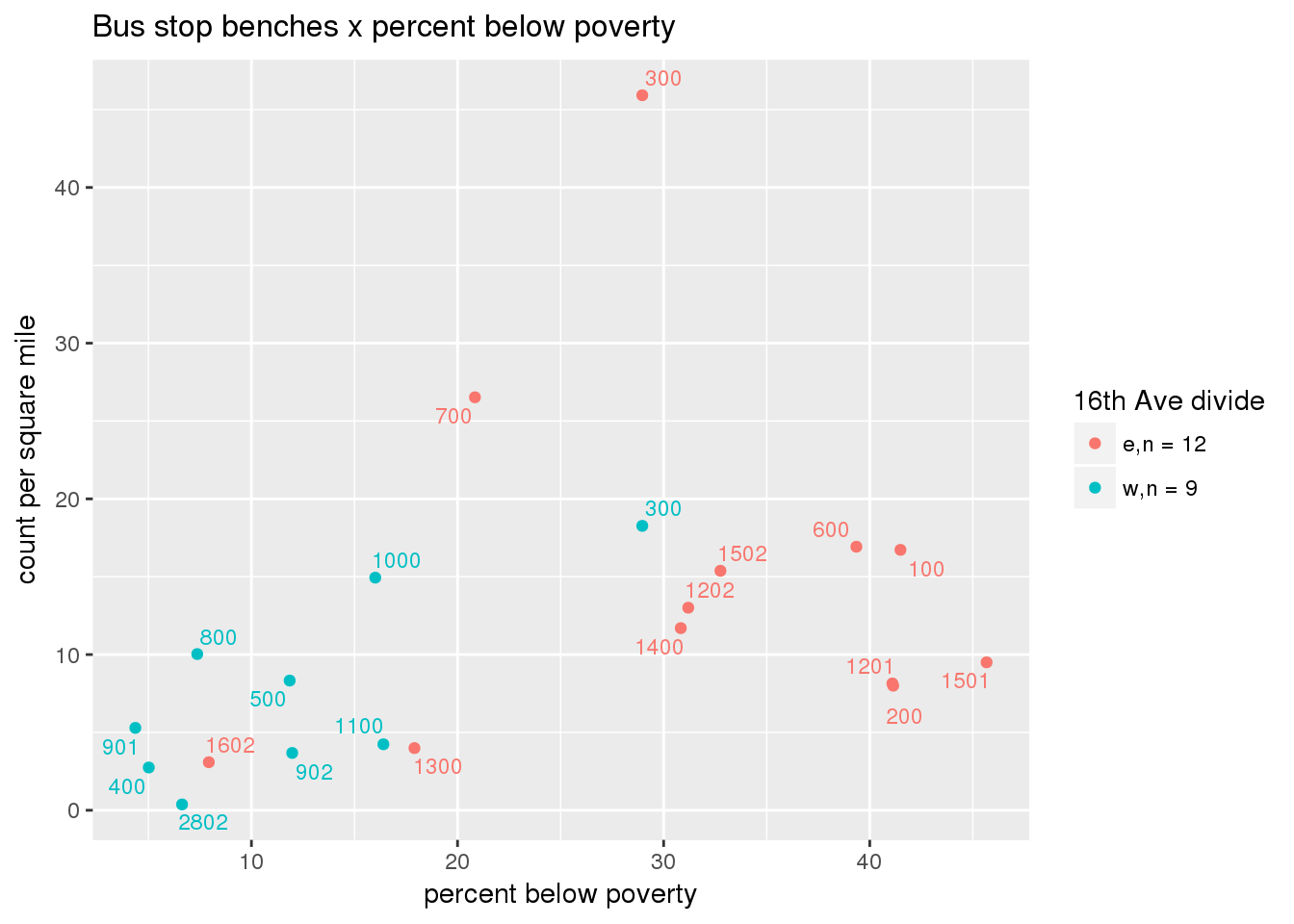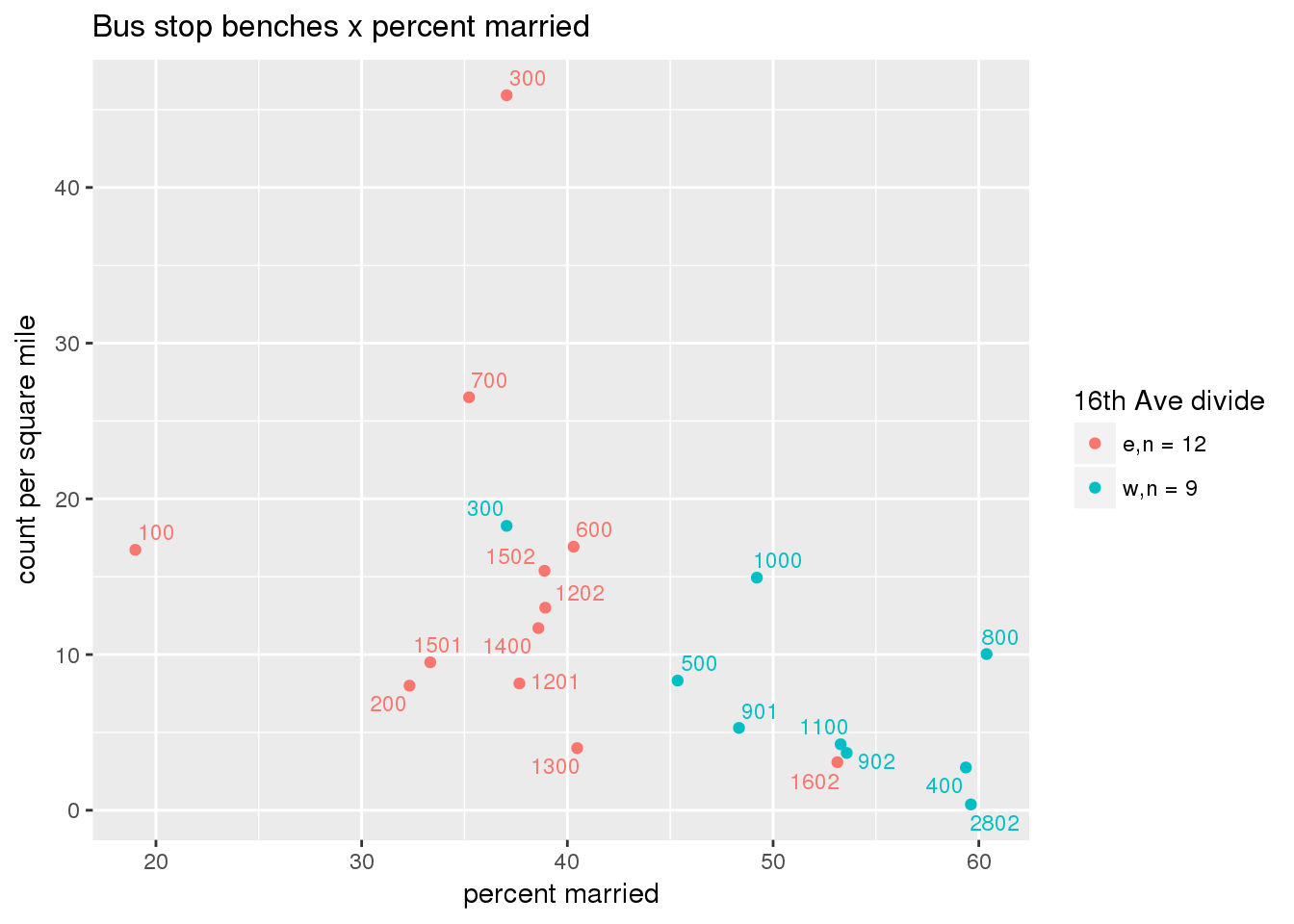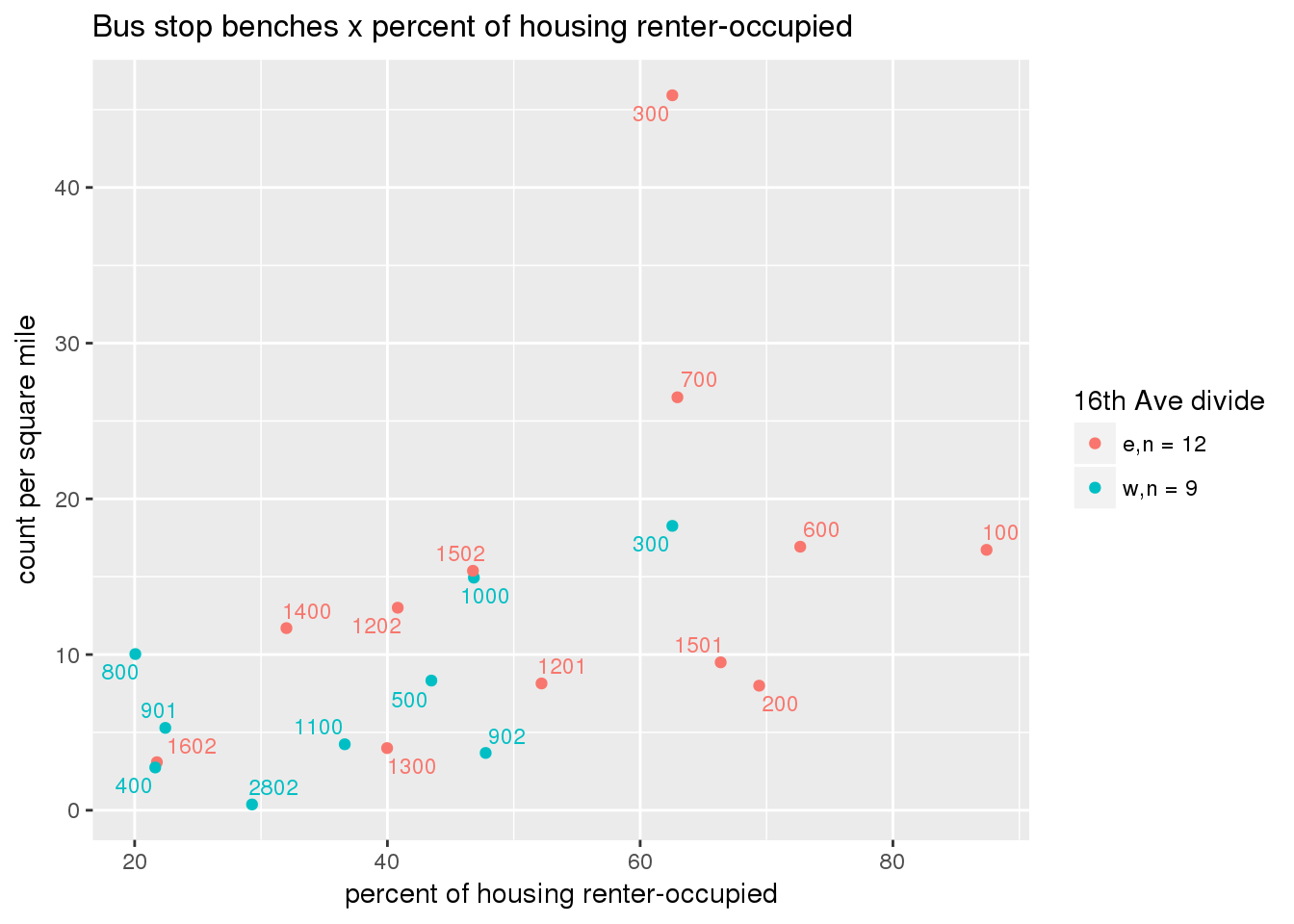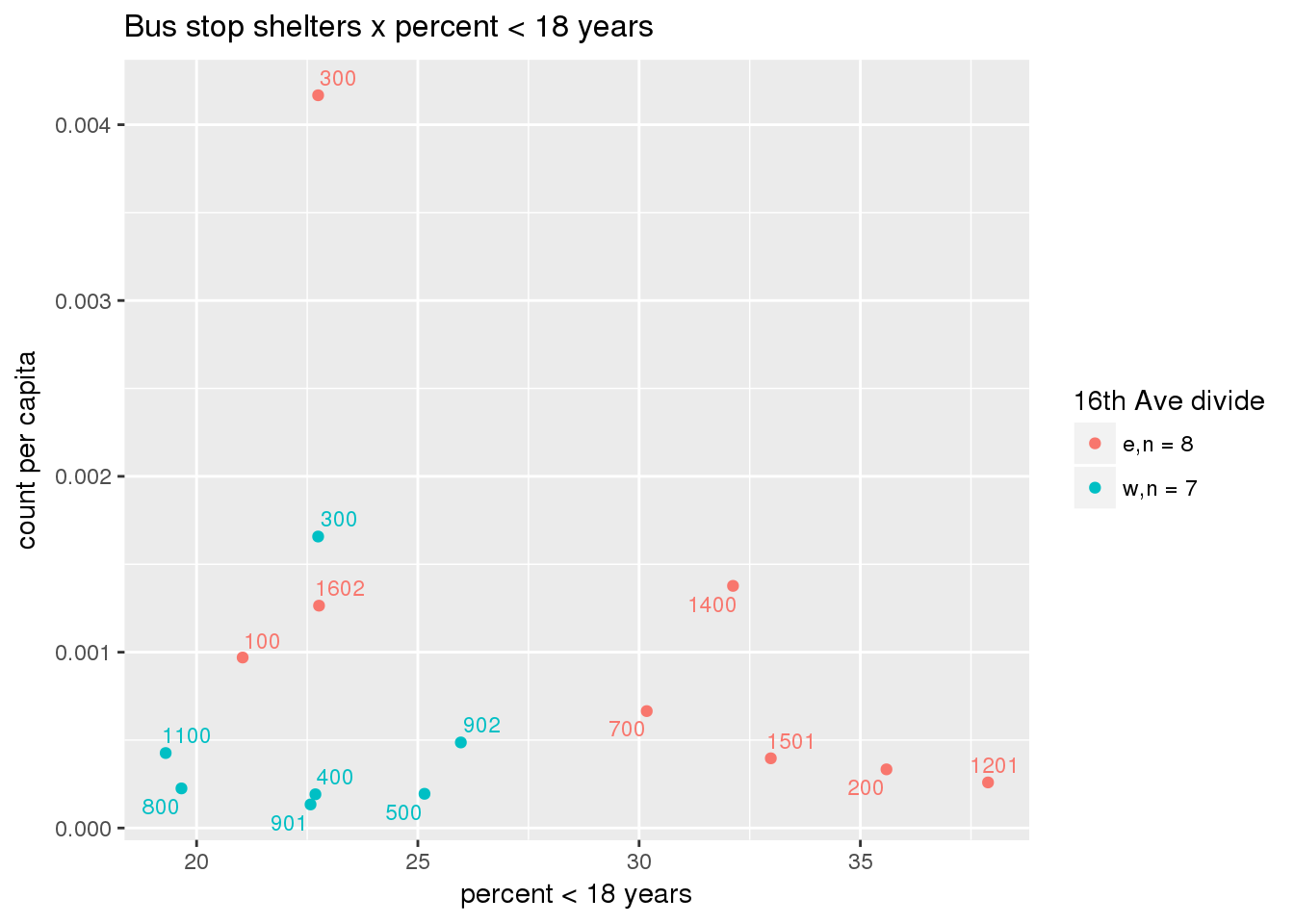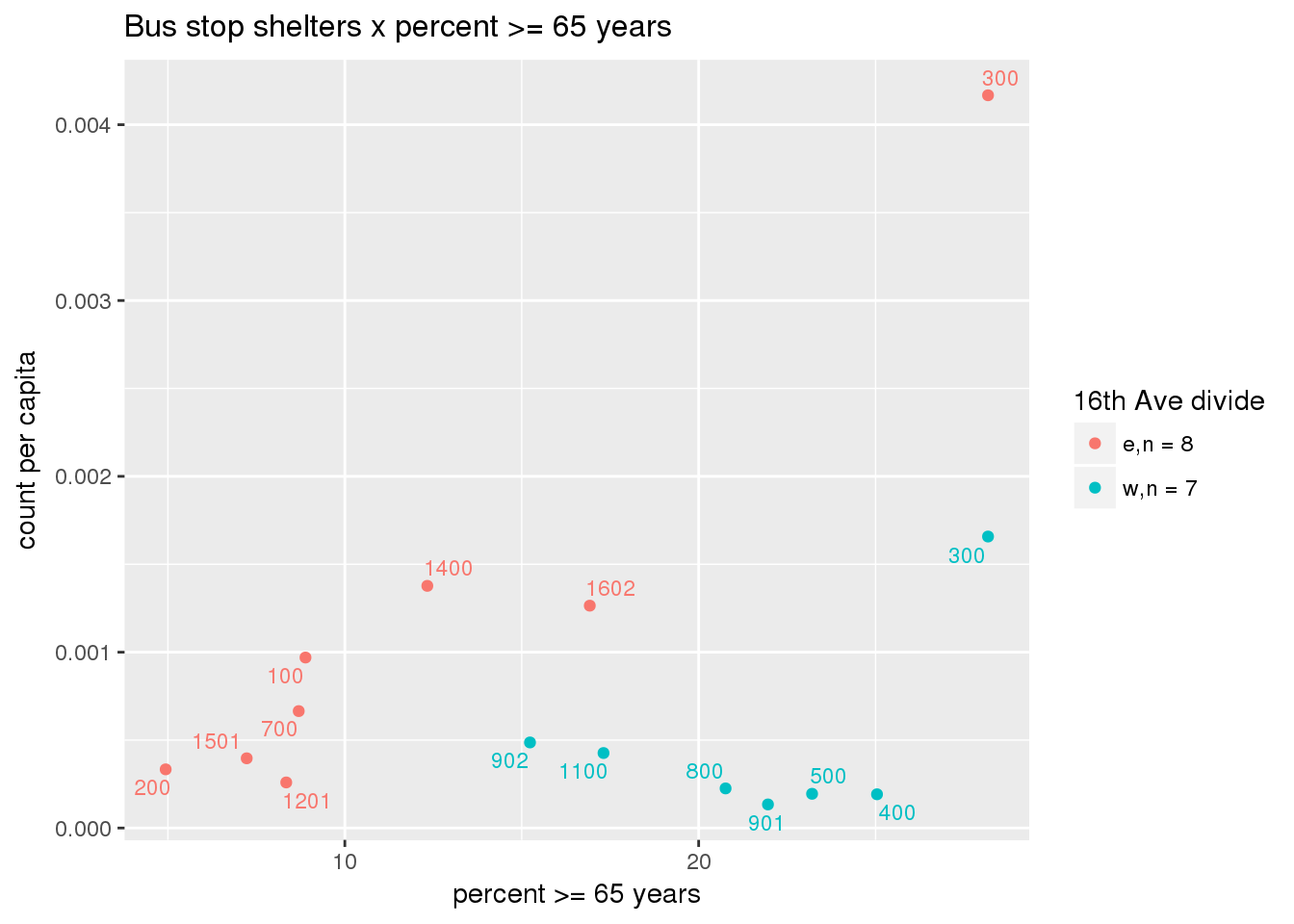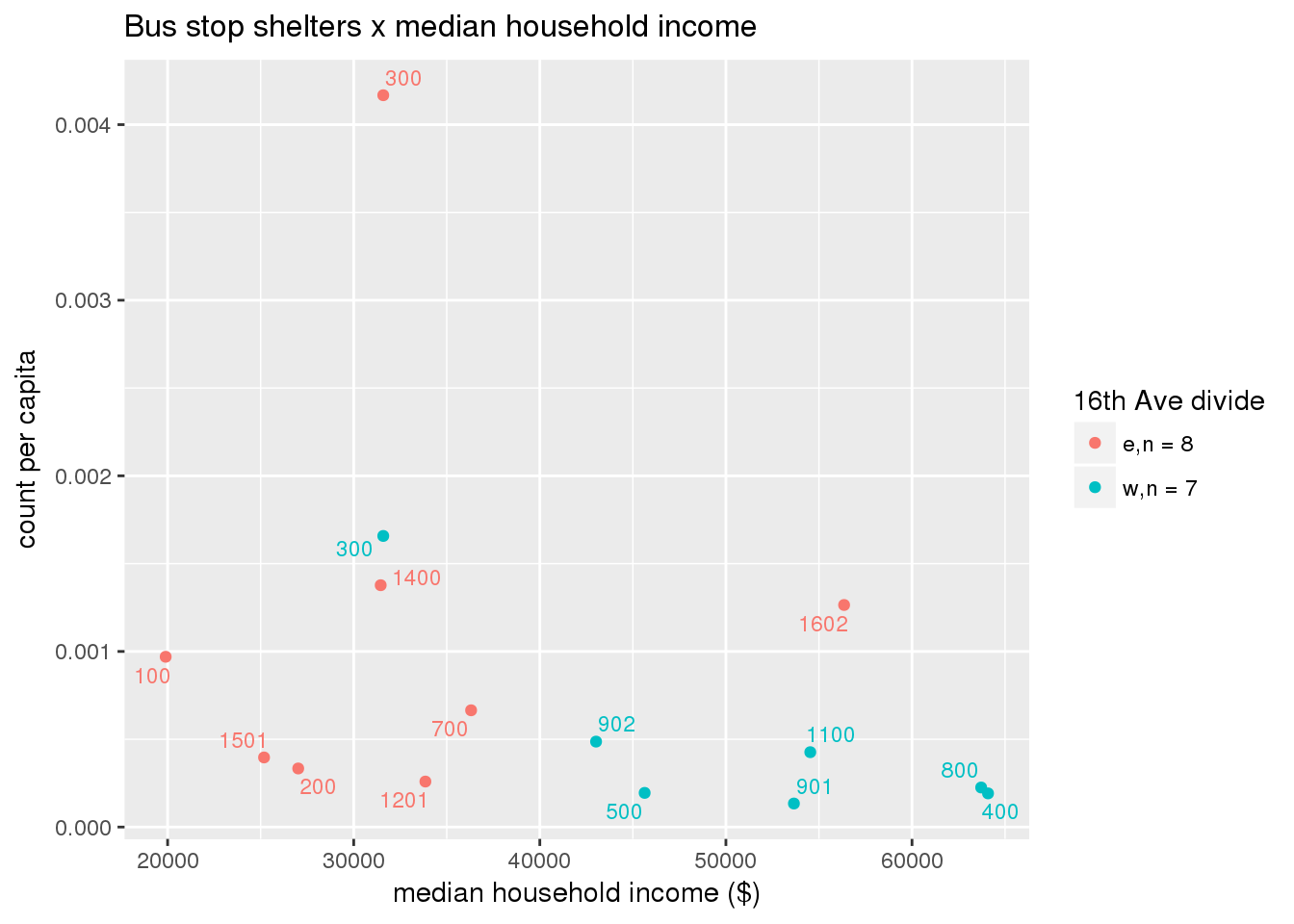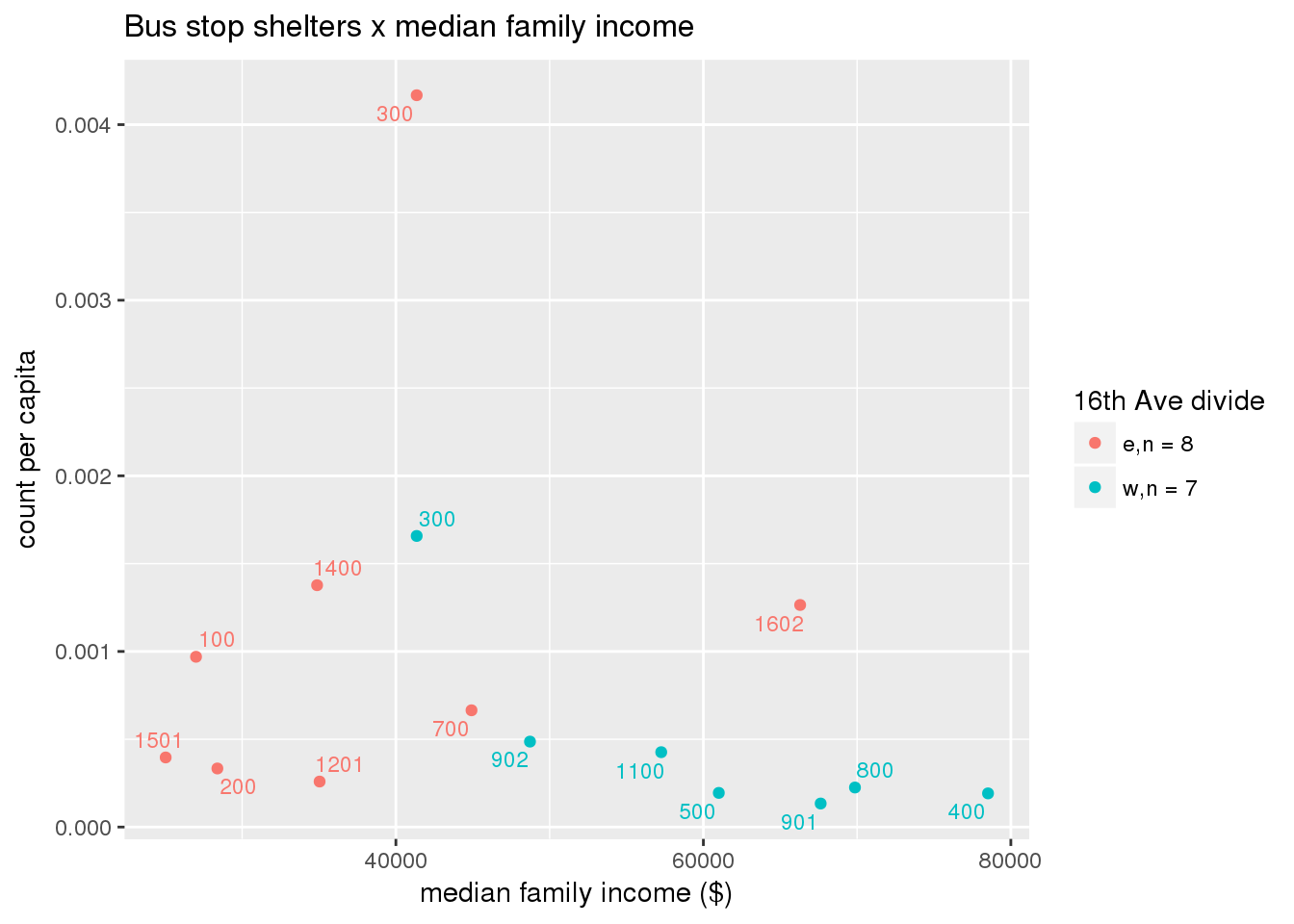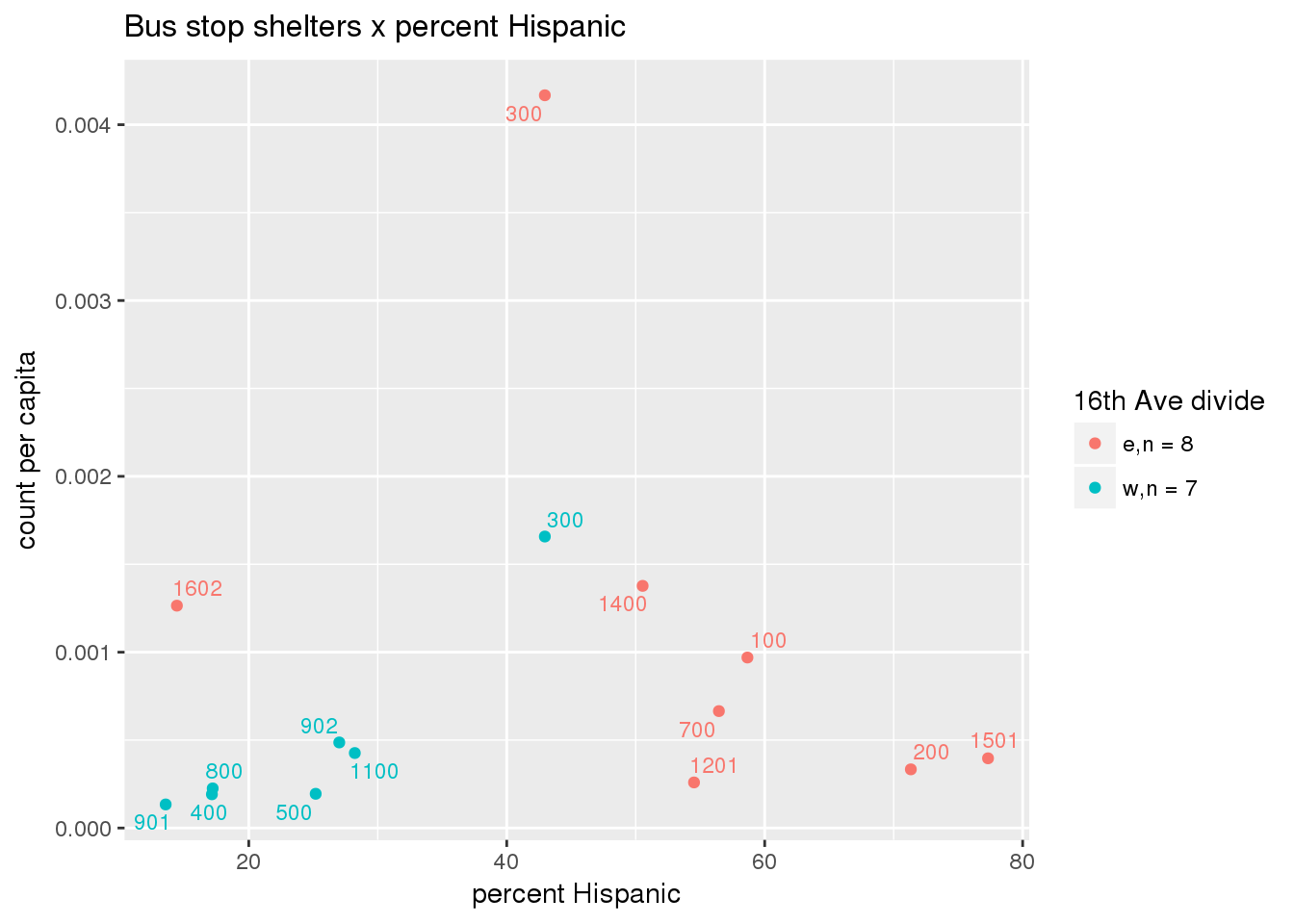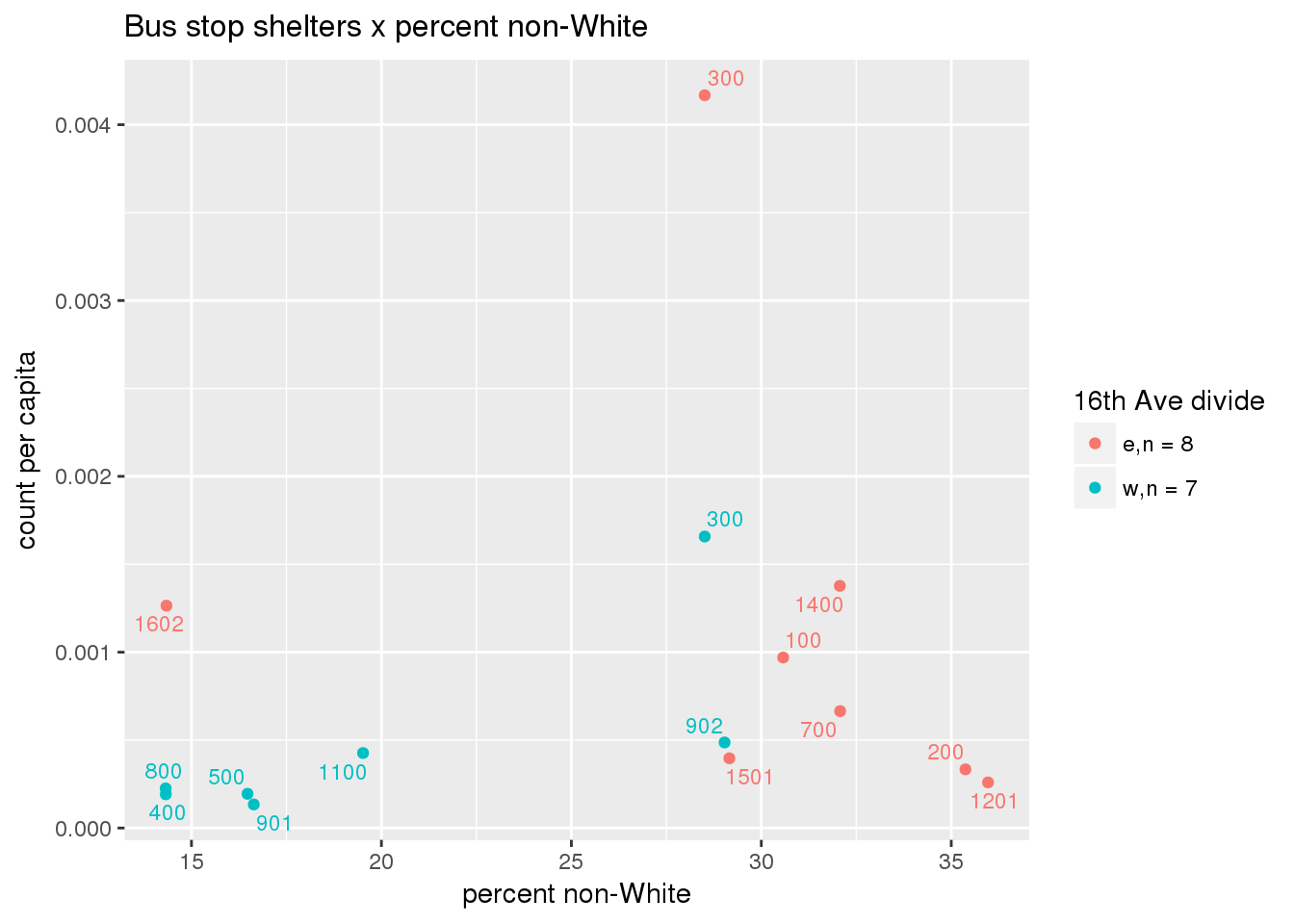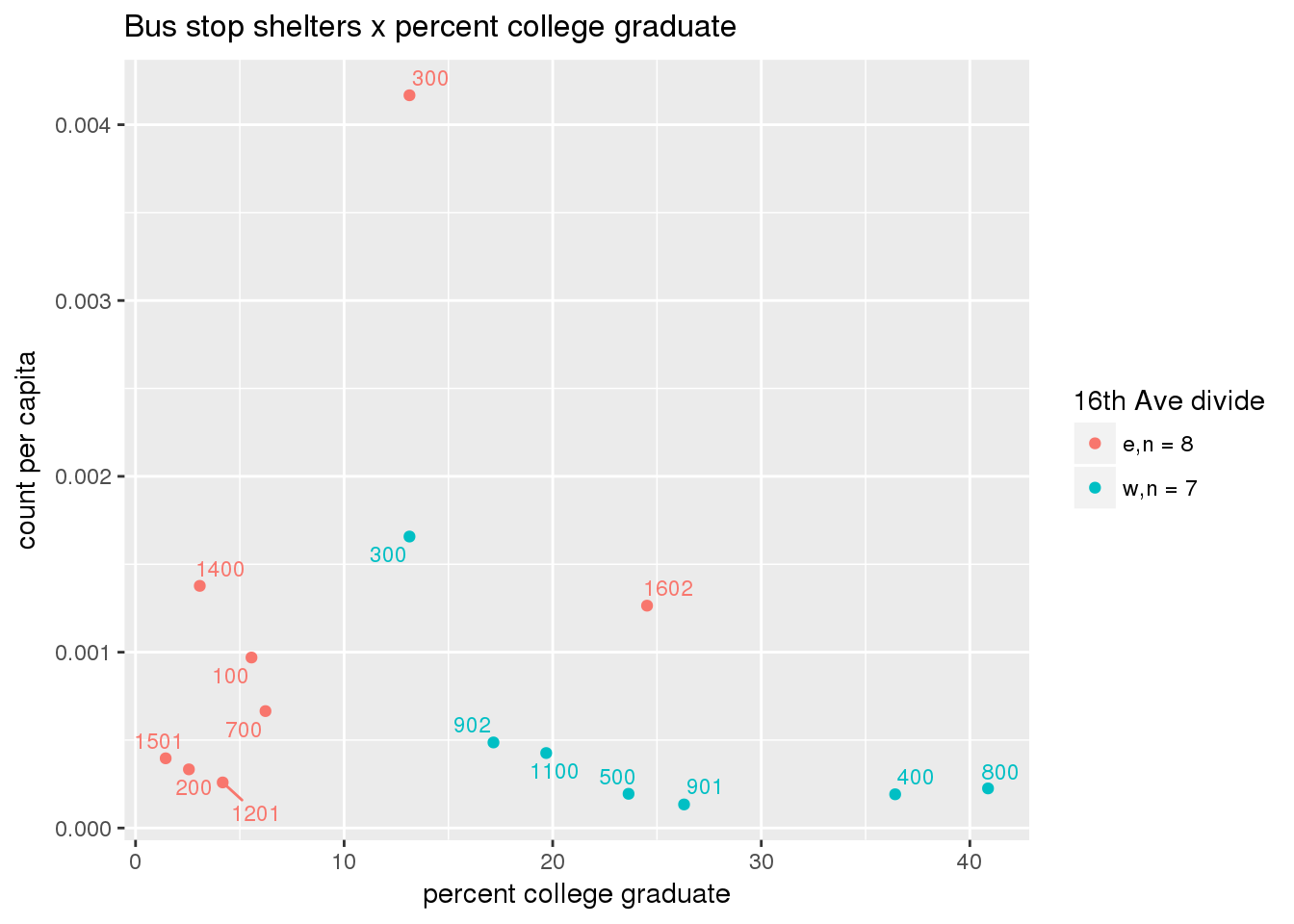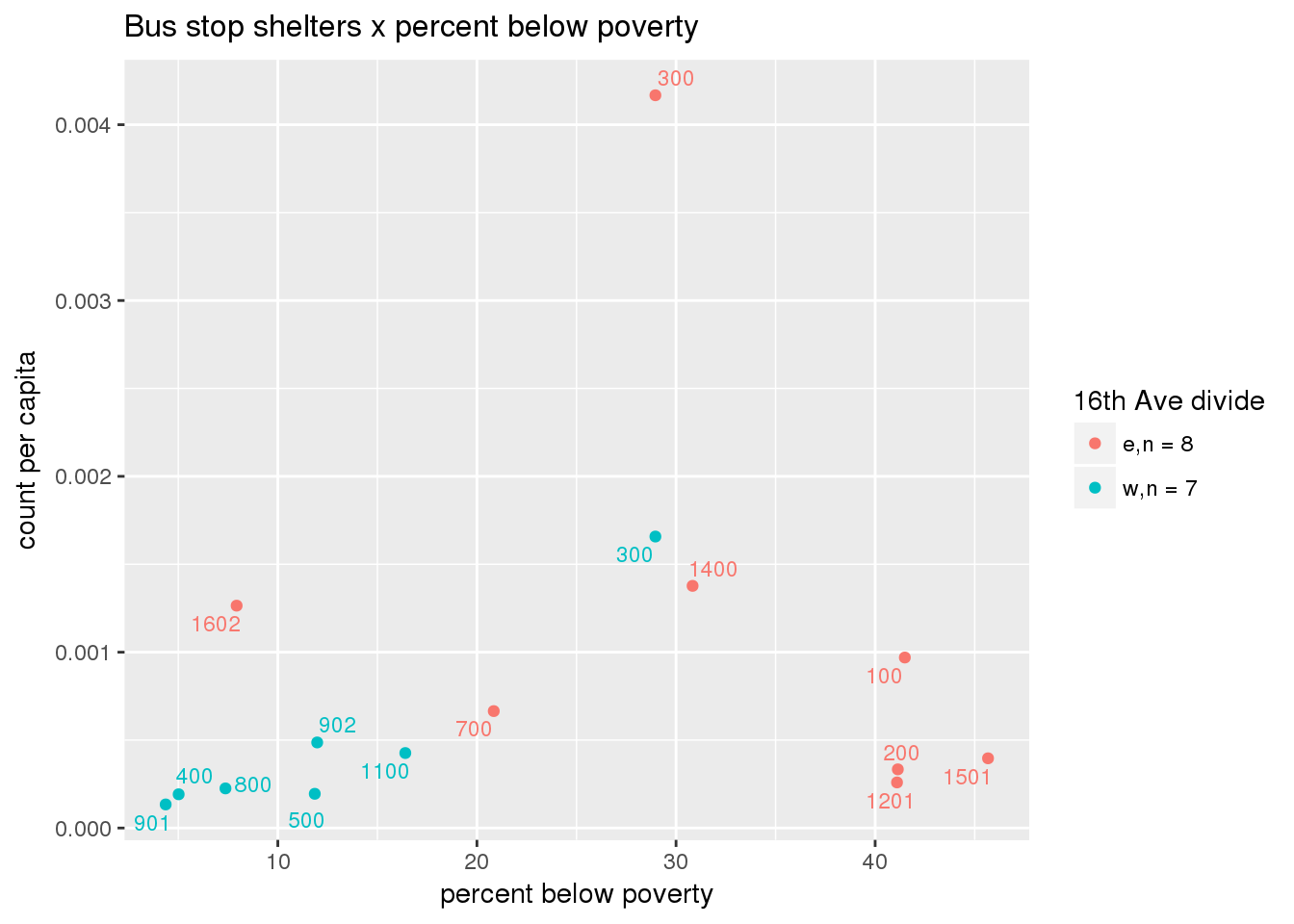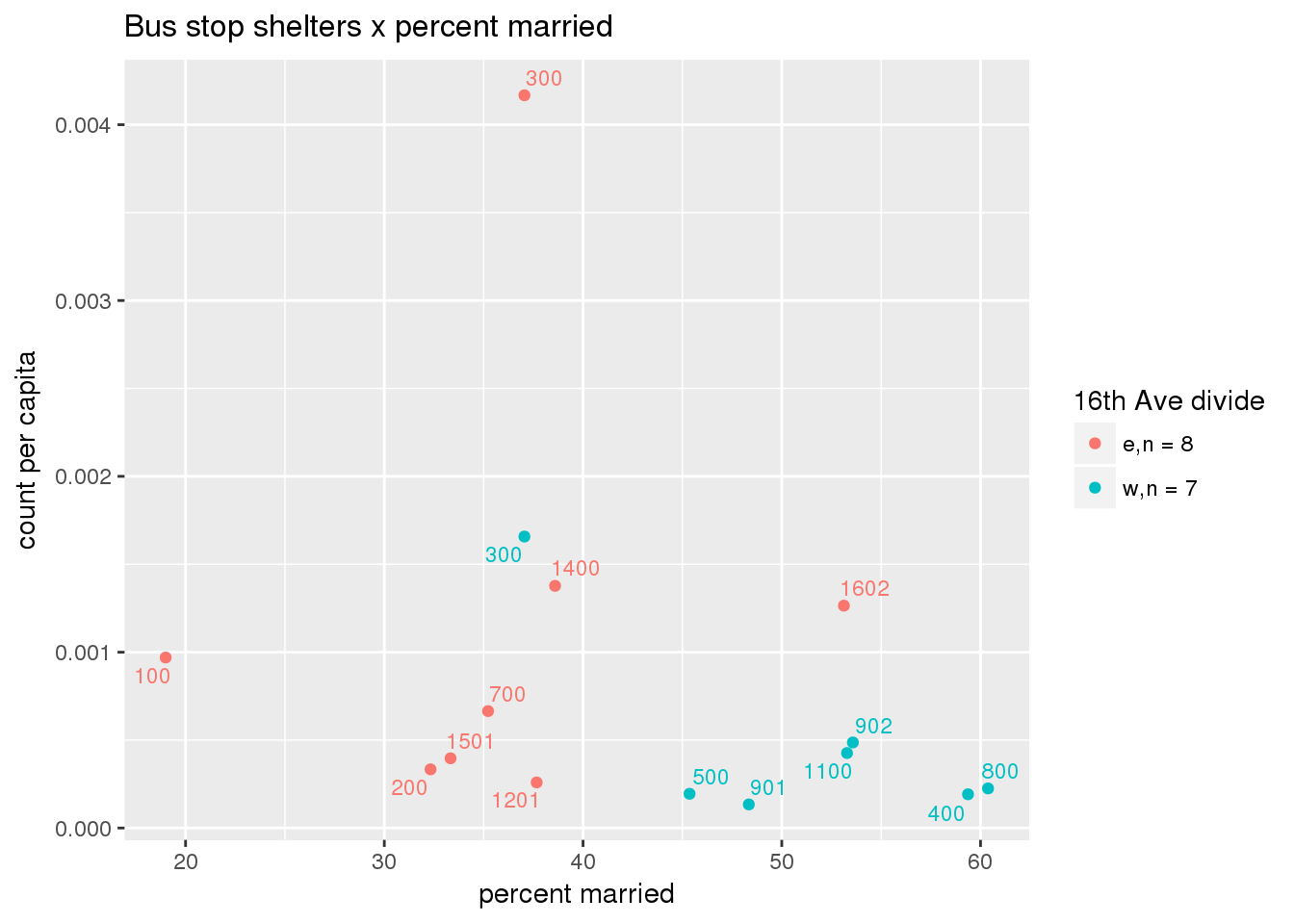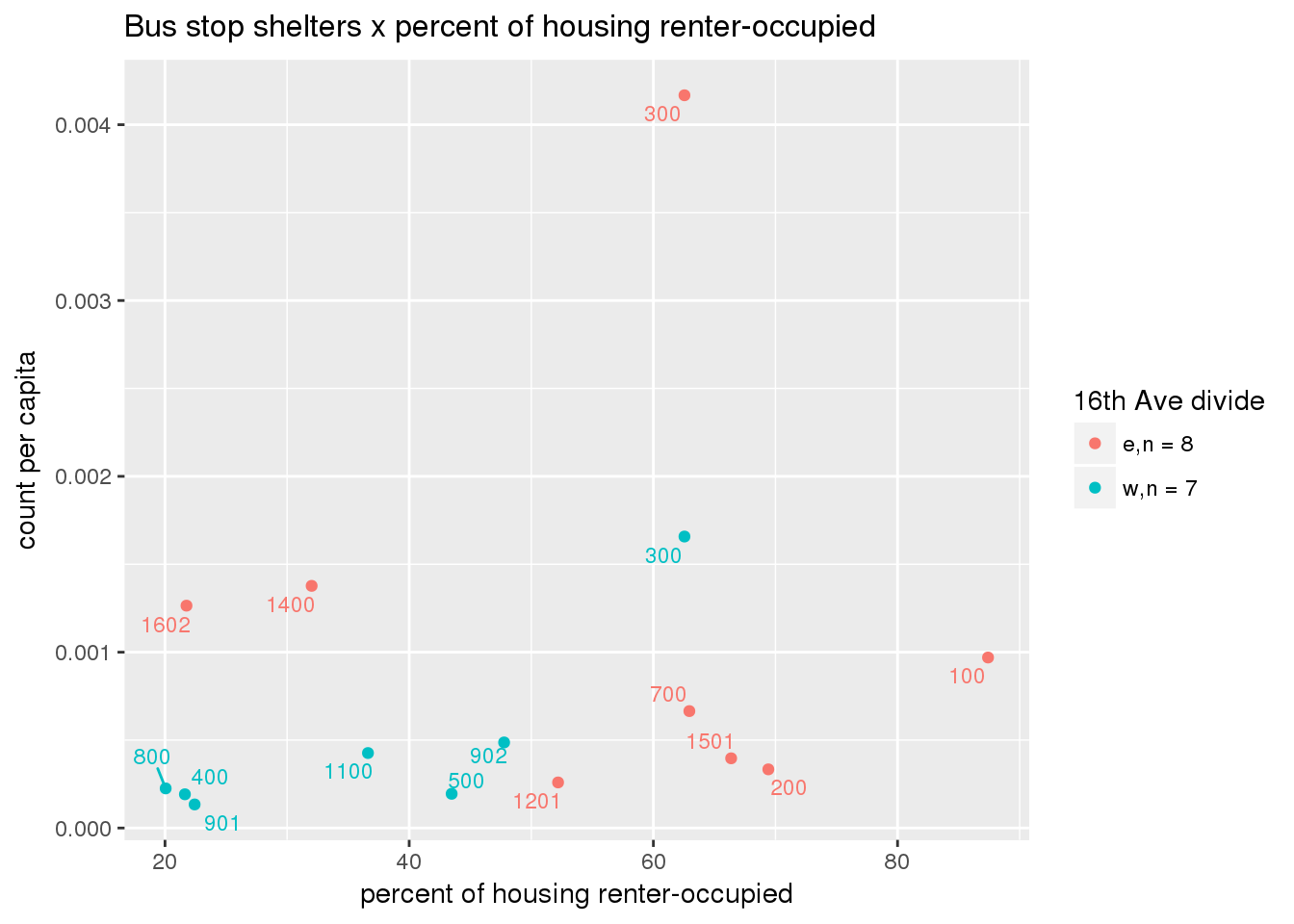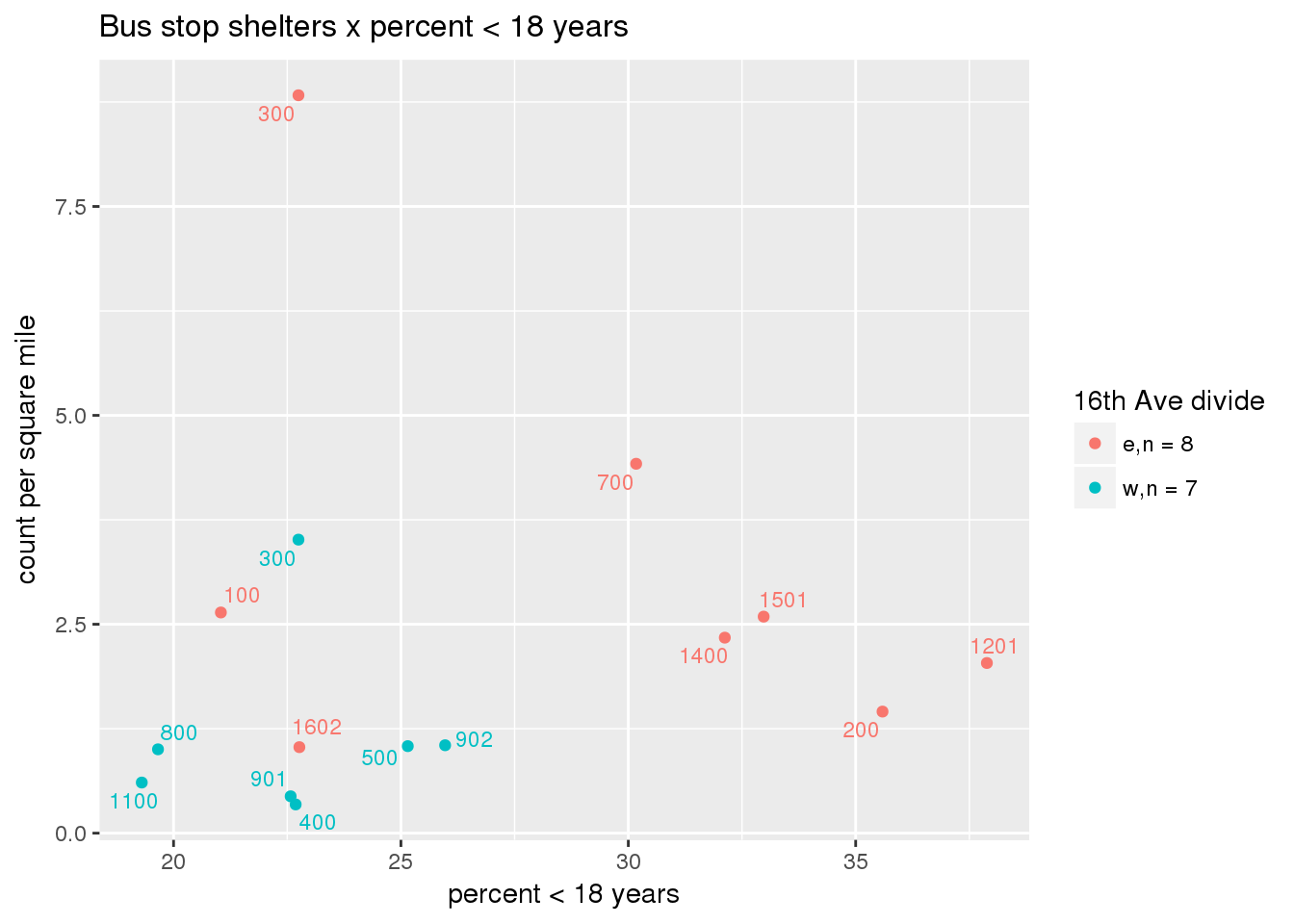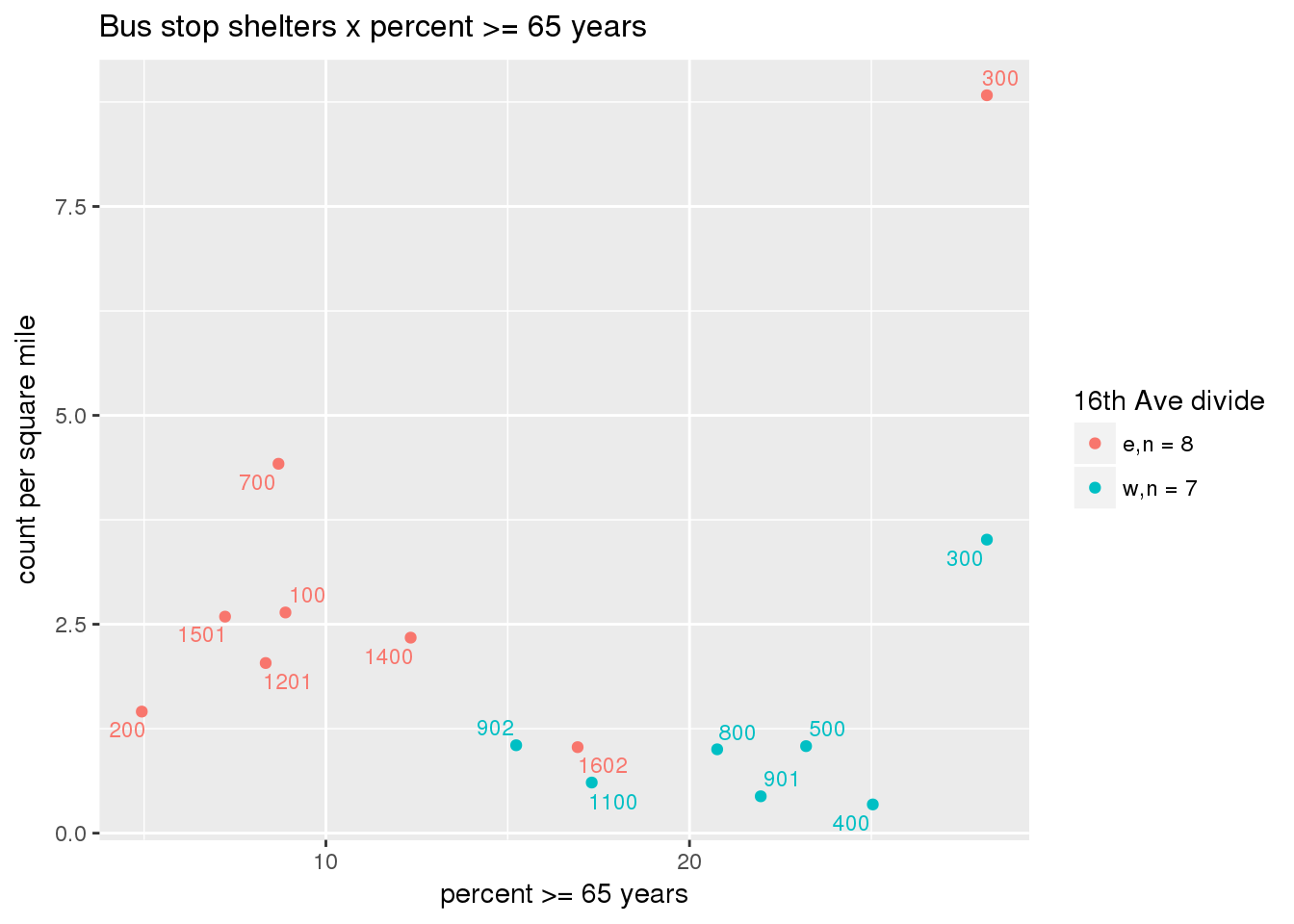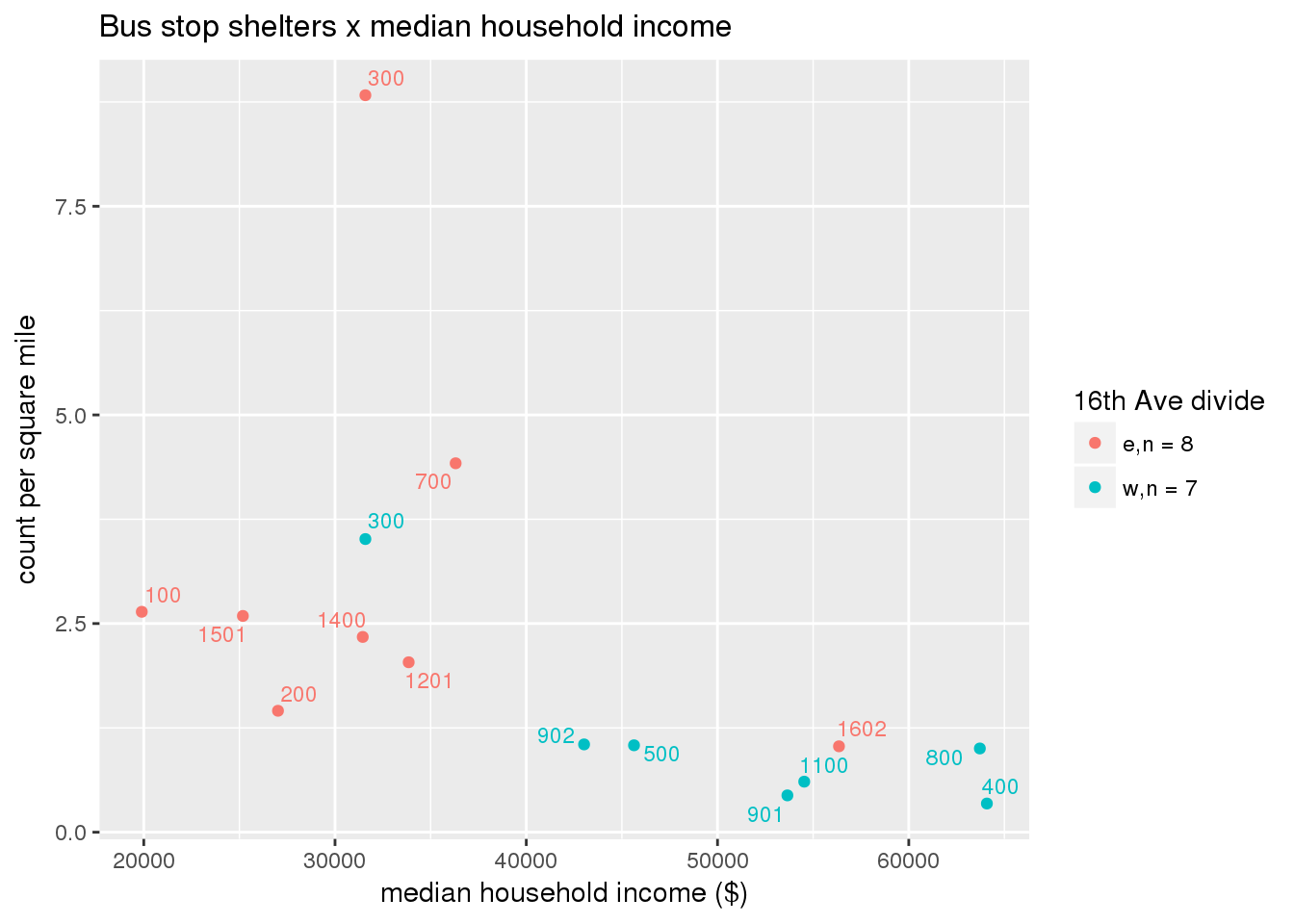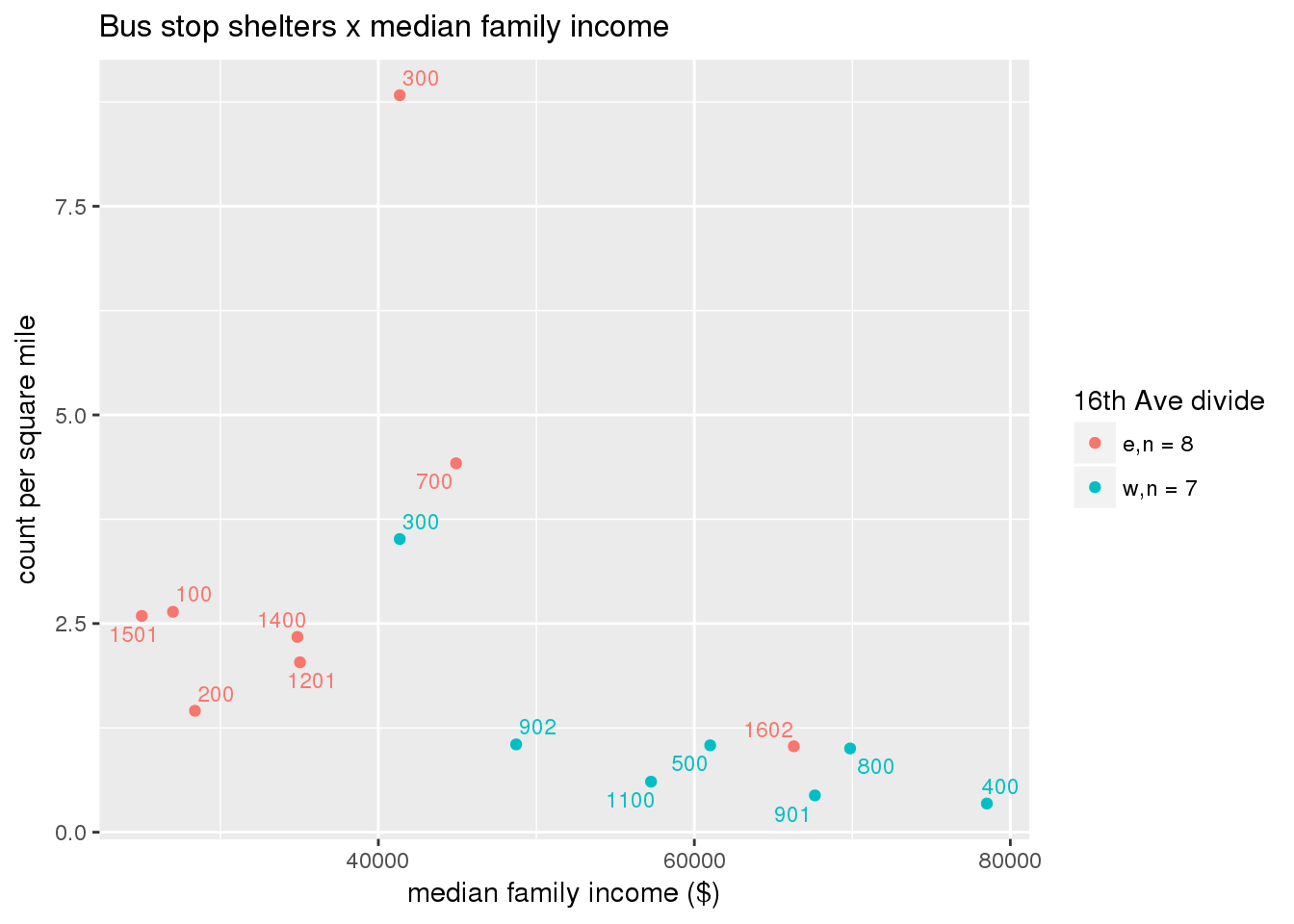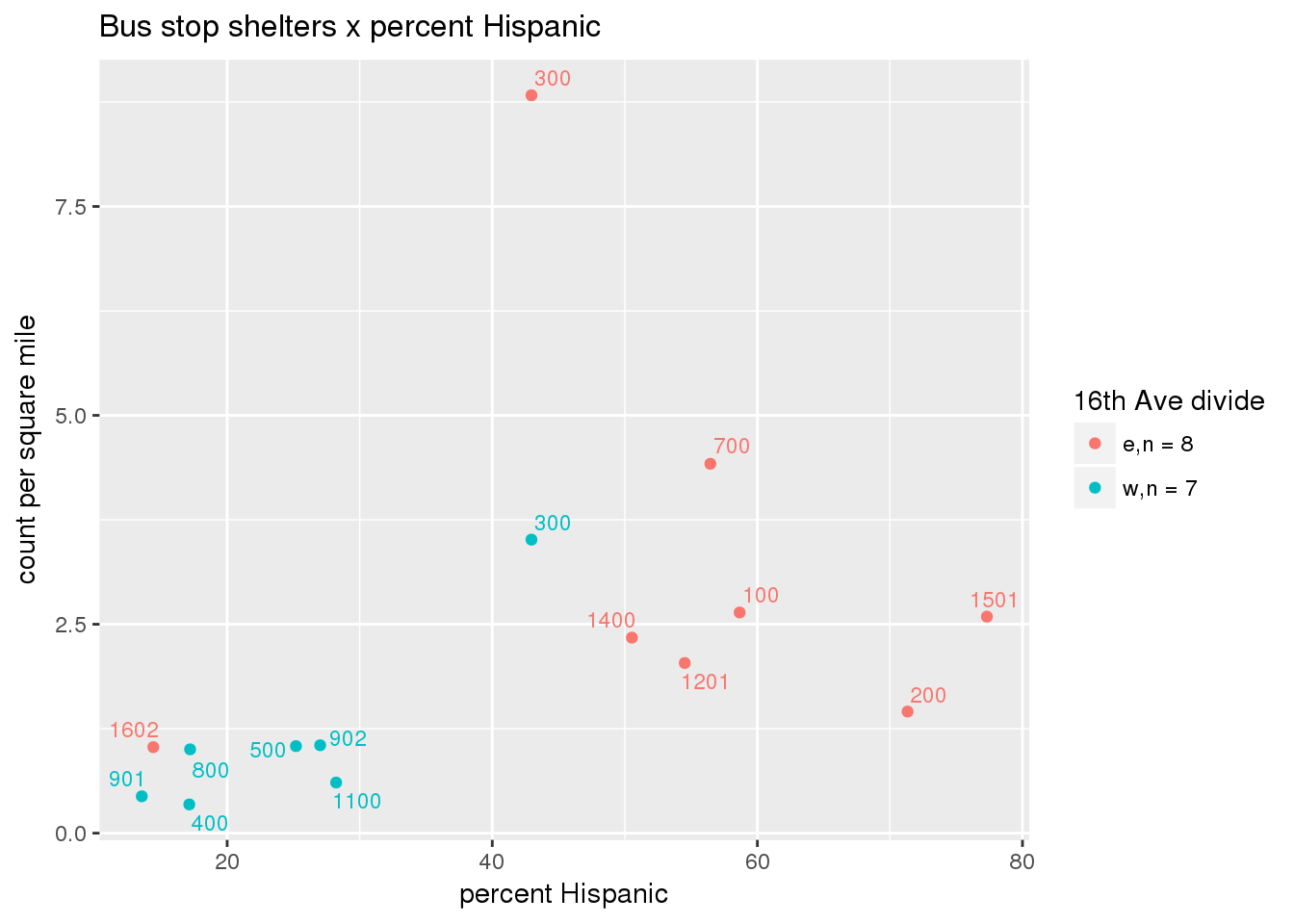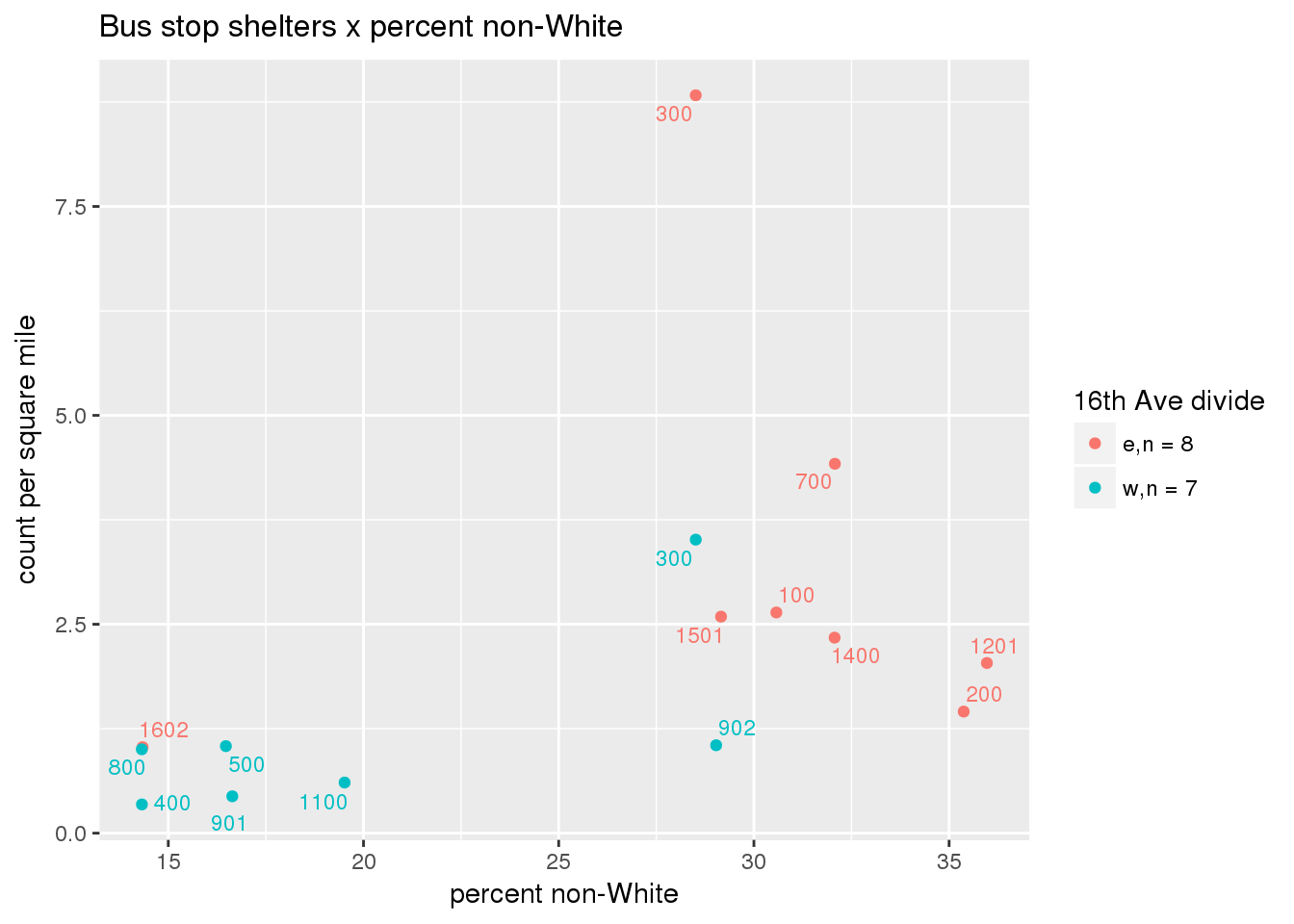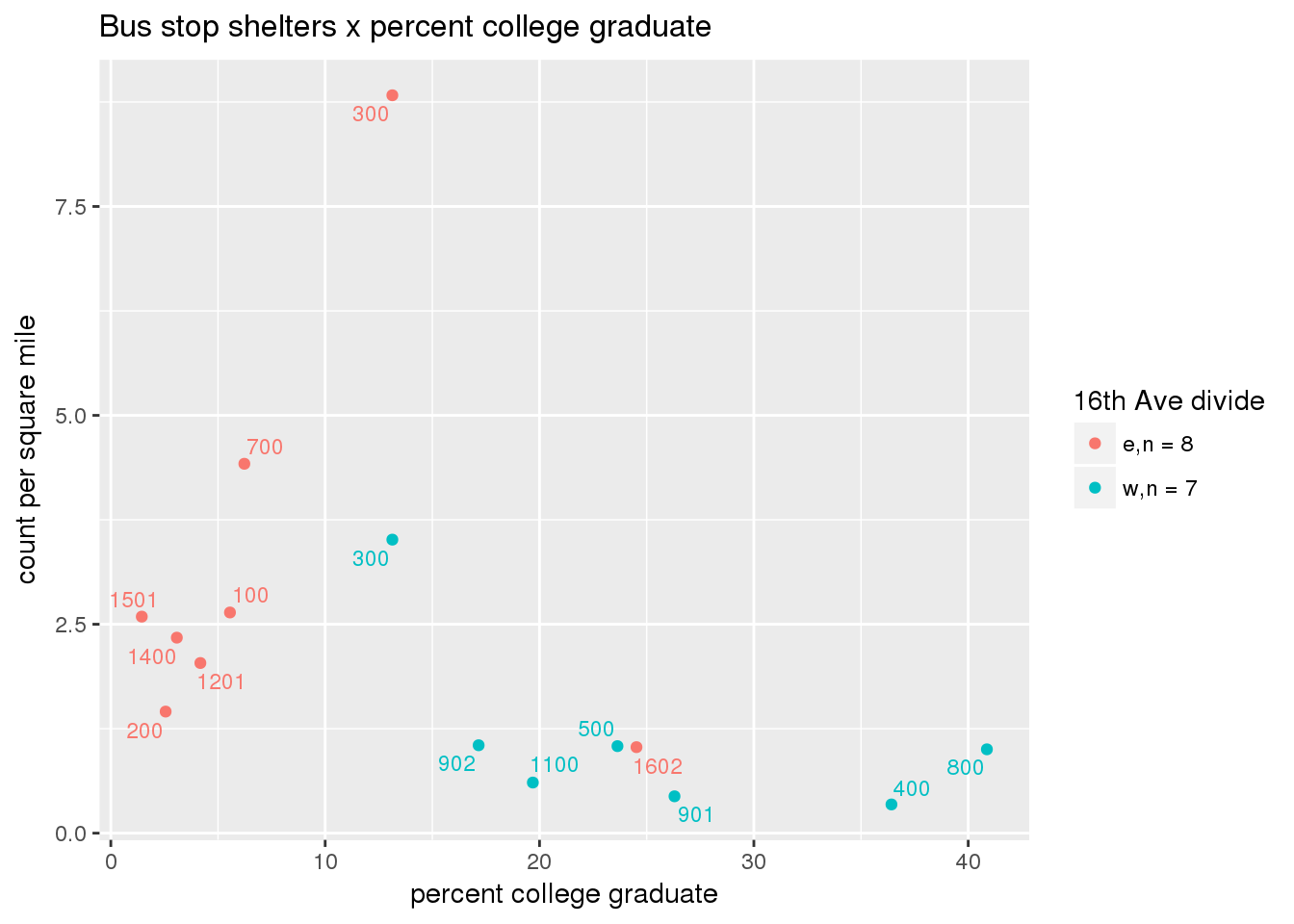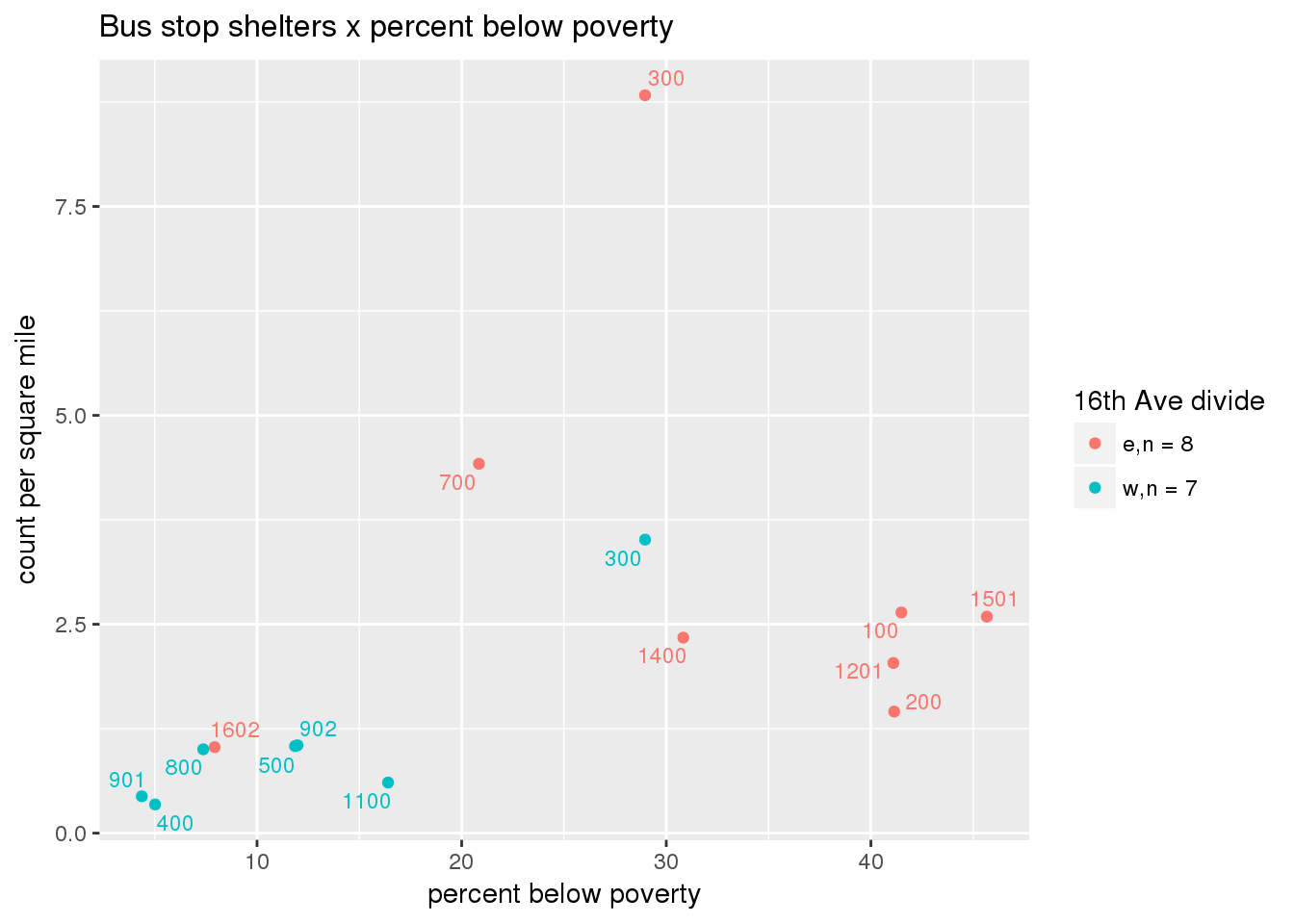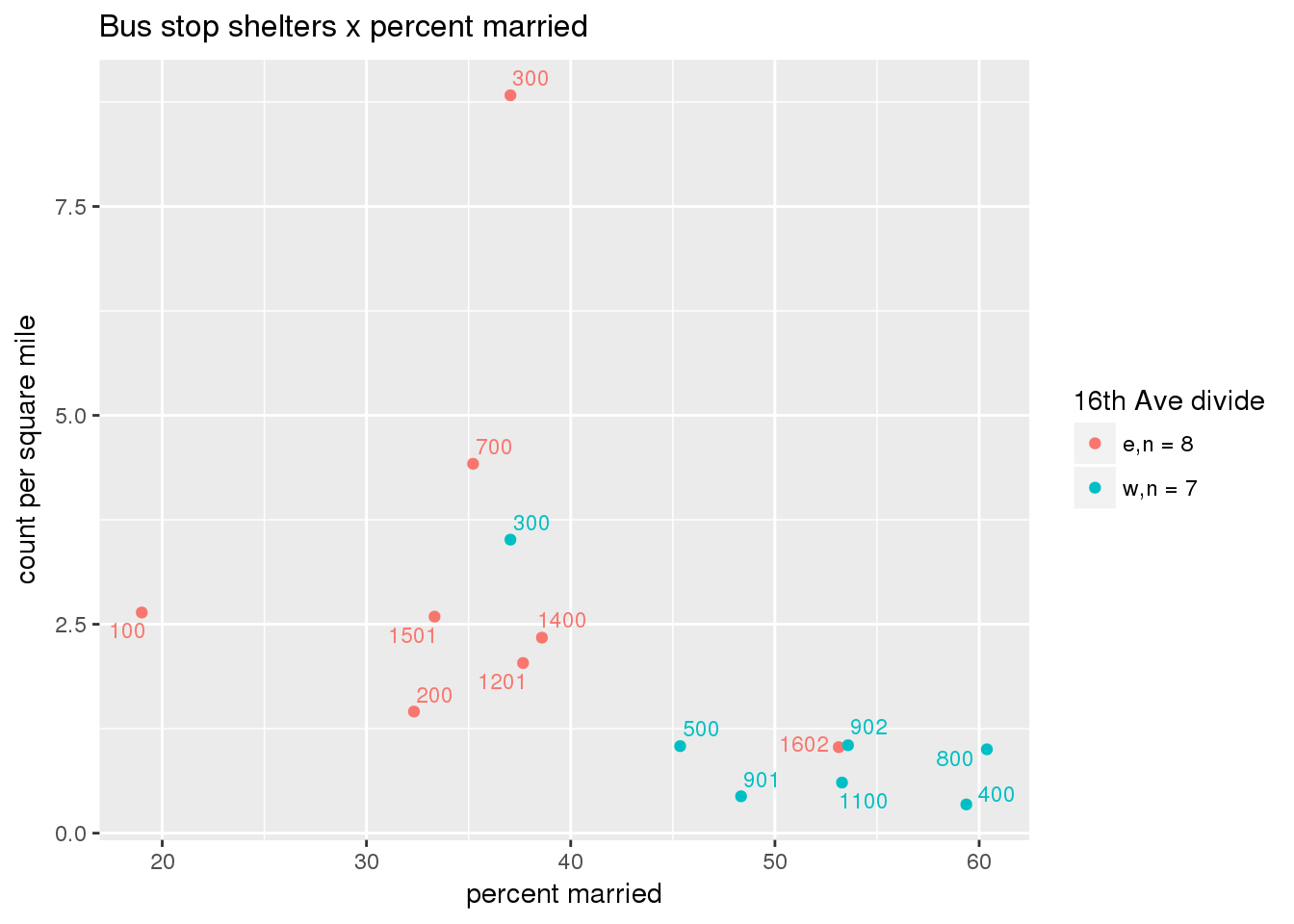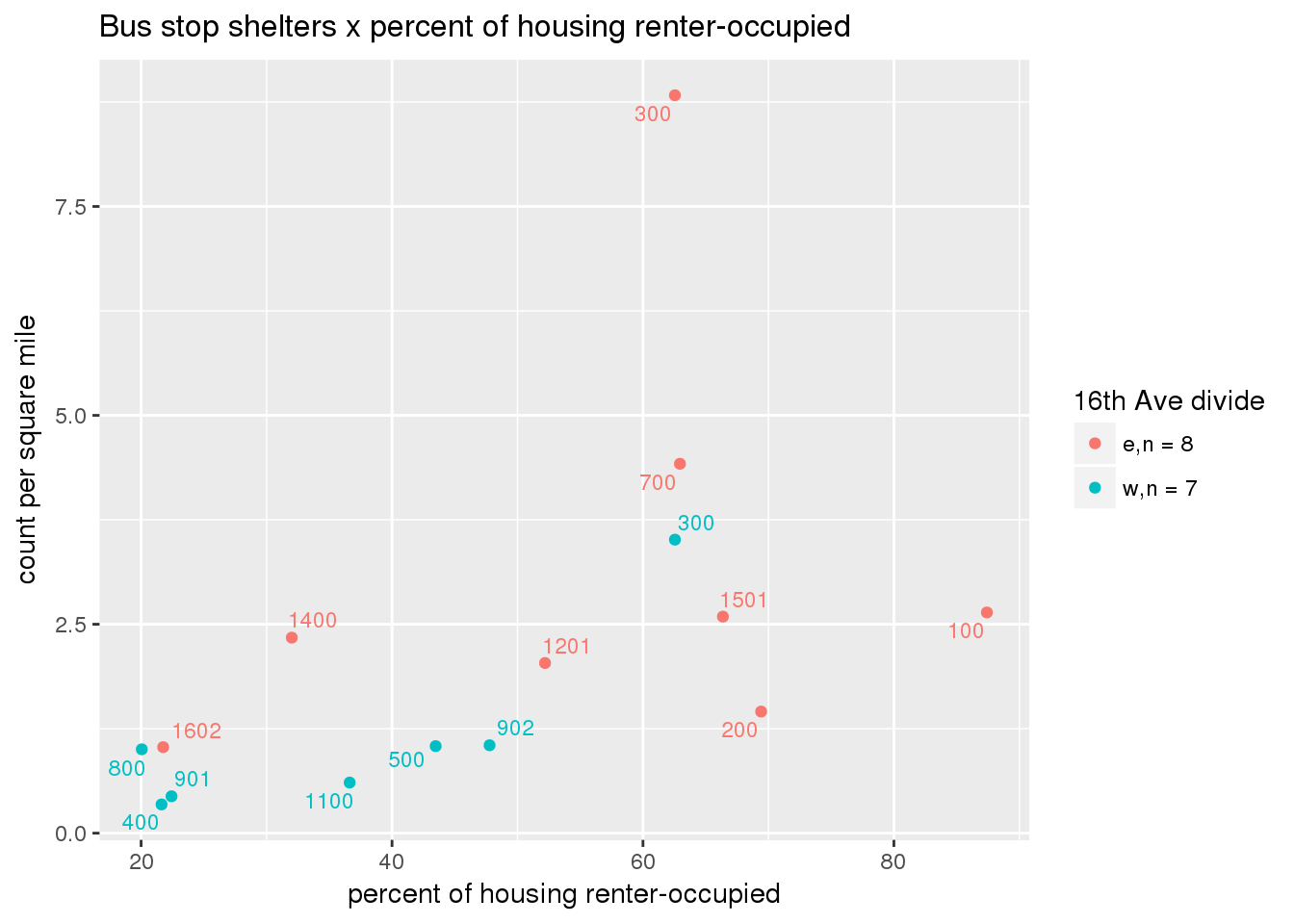Buffer of park polygons by 1/4 mile
The graphs show the estimate of the relative percent of persons in specified demographic groups residing within 1/4 mile of any park for each of the years 1980, 1990, 2000, 2010, and 2015. While this may serve as a rough measure of “accessibility,” it does not consider park count, size, quality, or amenities.
Parks with no private funding
sql <- "
with
--parks
prp as (select * from yakima_equity.park_private)
, p0 as (select * from yakima_equity.parksvalid where yearcreated <= xxxYEARxxx and name not in (select name from prp))
, p1 as (select the_geom_2286, st_area(the_geom_2286) as park_area_orig from p0)
--park buffer
, pb as (select true as buffer, st_union(st_buffer(the_geom_2286, 5280/4)) as p_geom from p1)
--annexation
, anx as (select st_union(the_geom_2286) as geom from yakima_equity.annexations where extract('year' from annex_date) <= xxxYEARxxx)
--non-buffer
, pnb as (select false as buffer, st_difference(anx.geom, pb.p_geom) as p_geom from pb, anx where st_intersects(anx.geom, pb.p_geom))
--combined
, p as (select * from pb union all select * from pnb)
--census tracts
, ct as (select st_area(the_geom_2286) as area_orig, * from yakima_equity.tract_xxxYEARxxx)
, cta as (select
tract
, total_pop
, age_lt_18
, age_lt_65
, age_ge_65
, median_hh_income
, median_family_income
, eth_hispanic
, race_nonwhite
, edu_collgrad
, edu_9th_somecoll
, edu_lt_9th
, pov_status
, pov_below_100pct
, married
, unmarried
, housingunits_renter
, housingunits_owner
from ct)
--clipped by anx
, ctanx as (select area_orig
, st_intersection(ct.the_geom_2286, anx.geom) as ctanx_geom
, tract
from ct, anx where st_intersects(ct.the_geom_2286, anx.geom))
--intersection of ctanx and parkbuf
, i as (select
st_area(st_intersection(ctanx.ctanx_geom, p.p_geom)) as area_clip
, *
from p, ctanx where st_intersects(p.p_geom, ctanx.ctanx_geom))
--ratio
, ir as (select tract, buffer, area_clip / area_orig as area_prop from i)
--proportional counts insid vs outside buffer
, props as (select tract, buffer
, total_pop * area_prop as total_pop
, age_lt_18 * area_prop as age_lt_18
, age_lt_65 * area_prop as age_lt_65
, age_ge_65 * area_prop as age_ge_65
, median_hh_income
, median_family_income
, eth_hispanic * area_prop as eth_hispanic
, race_nonwhite * area_prop as race_nonwhite
, edu_collgrad * area_prop as edu_collgrad
, edu_9th_somecoll * area_prop as edu_9th_somecoll
, edu_lt_9th * area_prop as edu_lt_9th
, pov_status * area_prop as pov_status
, pov_below_100pct * area_prop as pov_below_100pct
, married * area_prop as married
, unmarried * area_prop as unmarried
, housingunits_renter * area_prop as housingunits_renter
, housingunits_owner * area_prop as housingunits_owner
from ir left join cta using(tract))
--sum insie vs outside buffer
, ssum as (select
buffer
, sum(total_pop) as total_pop
, sum(eth_hispanic) as eth_hispanic
, sum(race_nonwhite) as race_nonwhite
, sum(age_lt_18) as age_lt_18
, sum(age_lt_65) as age_lt_65
, sum(age_ge_65) as age_ge_65
, sum(edu_collgrad) as edu_collgrad
, sum(edu_9th_somecoll) as edu_9th_somecoll
, sum(edu_lt_9th) as edu_lt_9th
, sum(pov_status) as pov_status
, sum(pov_below_100pct) as pov_below_100pct
, sum(married) as married
, sum(unmarried) as unmarried
, sum(housingunits_renter) as housingunits_renter
, sum(housingunits_owner ) as housingunits_owner
from props
group by buffer)
--proportion with access
, paxs as (select xxxYEARxxx::integer as year
, buffer
, 100 * total_pop / sum(total_pop) over() as total_pop
, 100 * eth_hispanic / sum(eth_hispanic) over() as eth_hispanic
, 100 * race_nonwhite / sum(race_nonwhite) over() as race_nonwhite
, 100 * age_lt_18 / sum(age_lt_18) over() as age_lt_18
, 100 * age_lt_65 / sum(age_lt_65) over() as age_lt_65
, 100 * age_ge_65 / sum(age_ge_65) over() as age_ge_65
, 100 * edu_collgrad / sum(edu_collgrad) over() as edu_collgrad
, 100 * edu_9th_somecoll / sum(edu_9th_somecoll) over() as edu_9th_somecoll
, 100 * edu_lt_9th / sum(edu_lt_9th) over() as edu_lt_9th
, 100 * pov_status / sum(pov_status) over() as pov_status
, 100 * pov_below_100pct / sum(pov_below_100pct) over() as pov_below_100pct
, 100 * married / sum(married) over() as married
, 100 * unmarried / sum(unmarried) over() as unmarried
, 100 * housingunits_renter / sum(housingunits_renter) over() as housingunits_renter
, 100 * housingunits_owner / sum(housingunits_owner ) over() as housingunits_owner
from ssum)
select * from paxs"
ydat <- NULL
for(y in c(1980, 1990, 2000, 2010, 2015)){
sqly <- gsub("xxxYEARxxx", y, sql)
ydat <- rbind(ydat, dbGetQuery(conn = dbconn, statement = sqly))
}
# drop some columns, rename some.
ydat$pov_status <- ydat$unmarried <- ydat$total_pop <- ydat$age_lt_65 <- ydat$edu_9th_somecoll <- ydat$edu_9th_somecoll <- NULL
names(ydat) <- c("year", "buffer", "total population", "Hispanic", "nonwhite", "age < 18", "age >= 65", "college graduate", "below poverty", "married", "renter", "owner")
# melt
ydatl <- ydatl0 <- melt(ydat, id.vars=c("year","buffer"), value.name = "percent")
# ydatl0$year <- factor(ydatl0$year)
# g <- ggplot(data = ydatl0, aes(x = year, y = percent, fill = buffer)) +
# geom_bar(position = "dodge", stat = "identity") +
# facet_wrap(~variable, ncol = 2) +
# scale_fill_discrete(name="in 1/4 mile buffer")
# print(g)
# ggsave(filename = file.path(imagedir, "parks_demographics_16th.png"), plot = g, width = ggsavewidth, height = ggsaveheight, units = "in")
ydatl <- ydatl[ydatl$buffer,]
g <- ggplot(data = ydatl, aes(x = year, y = percent)) +
geom_line() +
facet_wrap(~variable, ncol = 2) +
labs(title = "percent of persons residing within 1/4 mile of any park (non private)") +
theme(plot.title = element_text(size=10))
print(g)
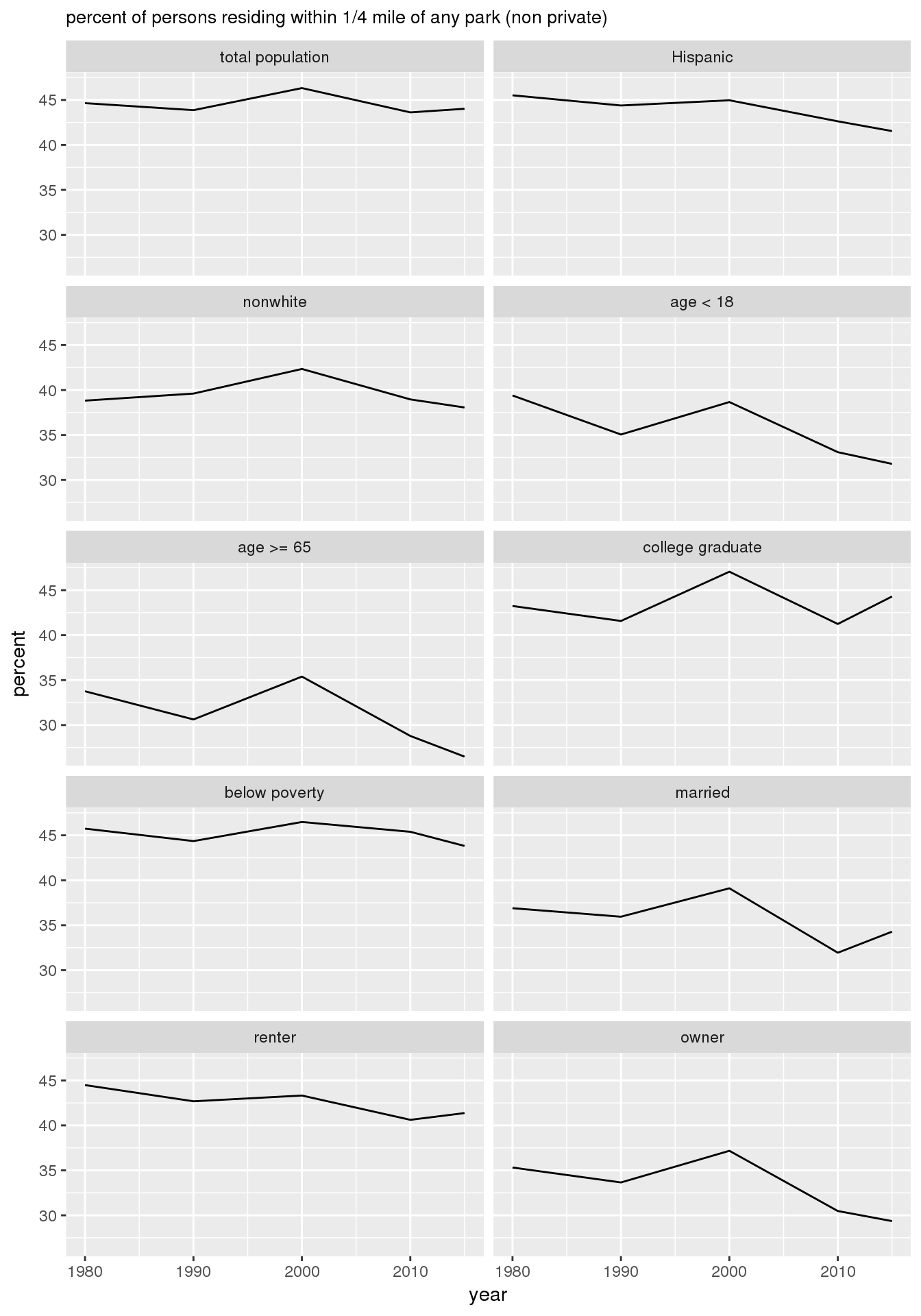
ggsave(filename = file.path(imagedir, "parks_noprivate_demographics.png"), plot = g, width = 4, height = 6, units = "in")
All parks
sql <- "
with
--parks
prp as (select * from yakima_equity.park_private)
, p0 as (select * from yakima_equity.parksvalid where yearcreated <= xxxYEARxxx)
, p1 as (select the_geom_2286, st_area(the_geom_2286) as park_area_orig from p0)
--park buffer
, pb as (select true as buffer, st_union(st_buffer(the_geom_2286, 5280/4)) as p_geom from p1)
--annexation
, anx as (select st_union(the_geom_2286) as geom from yakima_equity.annexations where extract('year' from annex_date) <= xxxYEARxxx)
--non-buffer
, pnb as (select false as buffer, st_difference(anx.geom, pb.p_geom) as p_geom from pb, anx where st_intersects(anx.geom, pb.p_geom))
--combined
, p as (select * from pb union all select * from pnb)
--census tracts
, ct as (select st_area(the_geom_2286) as area_orig, * from yakima_equity.tract_xxxYEARxxx)
, cta as (select
tract
, total_pop
, age_lt_18
, age_lt_65
, age_ge_65
, median_hh_income
, median_family_income
, eth_hispanic
, race_nonwhite
, edu_collgrad
, edu_9th_somecoll
, edu_lt_9th
, pov_status
, pov_below_100pct
, married
, unmarried
, housingunits_renter
, housingunits_owner
from ct)
--clipped by anx
, ctanx as (select area_orig
, st_intersection(ct.the_geom_2286, anx.geom) as ctanx_geom
, tract
from ct, anx where st_intersects(ct.the_geom_2286, anx.geom))
--intersection of ctanx and parkbuf
, i as (select
st_area(st_intersection(ctanx.ctanx_geom, p.p_geom)) as area_clip
, *
from p, ctanx where st_intersects(p.p_geom, ctanx.ctanx_geom))
--ratio
, ir as (select tract, buffer, area_clip / area_orig as area_prop from i)
--proportional counts insid vs outside buffer
, props as (select tract, buffer
, total_pop * area_prop as total_pop
, age_lt_18 * area_prop as age_lt_18
, age_lt_65 * area_prop as age_lt_65
, age_ge_65 * area_prop as age_ge_65
, median_hh_income
, median_family_income
, eth_hispanic * area_prop as eth_hispanic
, race_nonwhite * area_prop as race_nonwhite
, edu_collgrad * area_prop as edu_collgrad
, edu_9th_somecoll * area_prop as edu_9th_somecoll
, edu_lt_9th * area_prop as edu_lt_9th
, pov_status * area_prop as pov_status
, pov_below_100pct * area_prop as pov_below_100pct
, married * area_prop as married
, unmarried * area_prop as unmarried
, housingunits_renter * area_prop as housingunits_renter
, housingunits_owner * area_prop as housingunits_owner
from ir left join cta using(tract))
--sum insie vs outside buffer
, ssum as (select
buffer
, sum(total_pop) as total_pop
, sum(eth_hispanic) as eth_hispanic
, sum(race_nonwhite) as race_nonwhite
, sum(age_lt_18) as age_lt_18
, sum(age_lt_65) as age_lt_65
, sum(age_ge_65) as age_ge_65
, sum(edu_collgrad) as edu_collgrad
, sum(edu_9th_somecoll) as edu_9th_somecoll
, sum(edu_lt_9th) as edu_lt_9th
, sum(pov_status) as pov_status
, sum(pov_below_100pct) as pov_below_100pct
, sum(married) as married
, sum(unmarried) as unmarried
, sum(housingunits_renter) as housingunits_renter
, sum(housingunits_owner ) as housingunits_owner
from props
group by buffer)
--proportion with access
, paxs as (select xxxYEARxxx::integer as year
, buffer
, 100 * total_pop / sum(total_pop) over() as total_pop
, 100 * eth_hispanic / sum(eth_hispanic) over() as eth_hispanic
, 100 * race_nonwhite / sum(race_nonwhite) over() as race_nonwhite
, 100 * age_lt_18 / sum(age_lt_18) over() as age_lt_18
, 100 * age_lt_65 / sum(age_lt_65) over() as age_lt_65
, 100 * age_ge_65 / sum(age_ge_65) over() as age_ge_65
, 100 * edu_collgrad / sum(edu_collgrad) over() as edu_collgrad
, 100 * edu_9th_somecoll / sum(edu_9th_somecoll) over() as edu_9th_somecoll
, 100 * edu_lt_9th / sum(edu_lt_9th) over() as edu_lt_9th
, 100 * pov_status / sum(pov_status) over() as pov_status
, 100 * pov_below_100pct / sum(pov_below_100pct) over() as pov_below_100pct
, 100 * married / sum(married) over() as married
, 100 * unmarried / sum(unmarried) over() as unmarried
, 100 * housingunits_renter / sum(housingunits_renter) over() as housingunits_renter
, 100 * housingunits_owner / sum(housingunits_owner ) over() as housingunits_owner
from ssum)
select * from paxs"
ydat <- NULL
for(y in c(1980, 1990, 2000, 2010, 2015)){
sqly <- gsub("xxxYEARxxx", y, sql)
ydat <- rbind(ydat, dbGetQuery(conn = dbconn, statement = sqly))
}
# drop some columns, rename some.
ydat$pov_status <- ydat$unmarried <- ydat$total_pop <- ydat$age_lt_65 <- ydat$edu_9th_somecoll <- ydat$edu_9th_somecoll <- NULL
names(ydat) <- c("year", "buffer", "total population", "Hispanic", "nonwhite", "age < 18", "age >= 65", "college graduate", "below poverty", "married", "renter", "owner")
# melt
ydatl <- ydatl0 <- melt(ydat, id.vars=c("year","buffer"), value.name = "percent")
# ydatl0$year <- factor(ydatl0$year)
# g <- ggplot(data = ydatl0, aes(x = year, y = percent, fill = buffer)) +
# geom_bar(position = "dodge", stat = "identity") +
# facet_wrap(~variable, ncol = 2) +
# scale_fill_discrete(name="in 1/4 mile buffer")
# print(g)
# ggsave(filename = file.path(imagedir, "parks_demographics_16th.png"), plot = g, width = ggsavewidth, height = ggsaveheight, units = "in")
ydatl <- ydatl[ydatl$buffer,]
g <- ggplot(data = ydatl, aes(x = year, y = percent)) +
geom_line() +
facet_wrap(~variable, ncol = 2) +
labs(title = "percent of persons residing within 1/4 mile of any park (all)") +
theme(plot.title = element_text(size=10))
print(g)
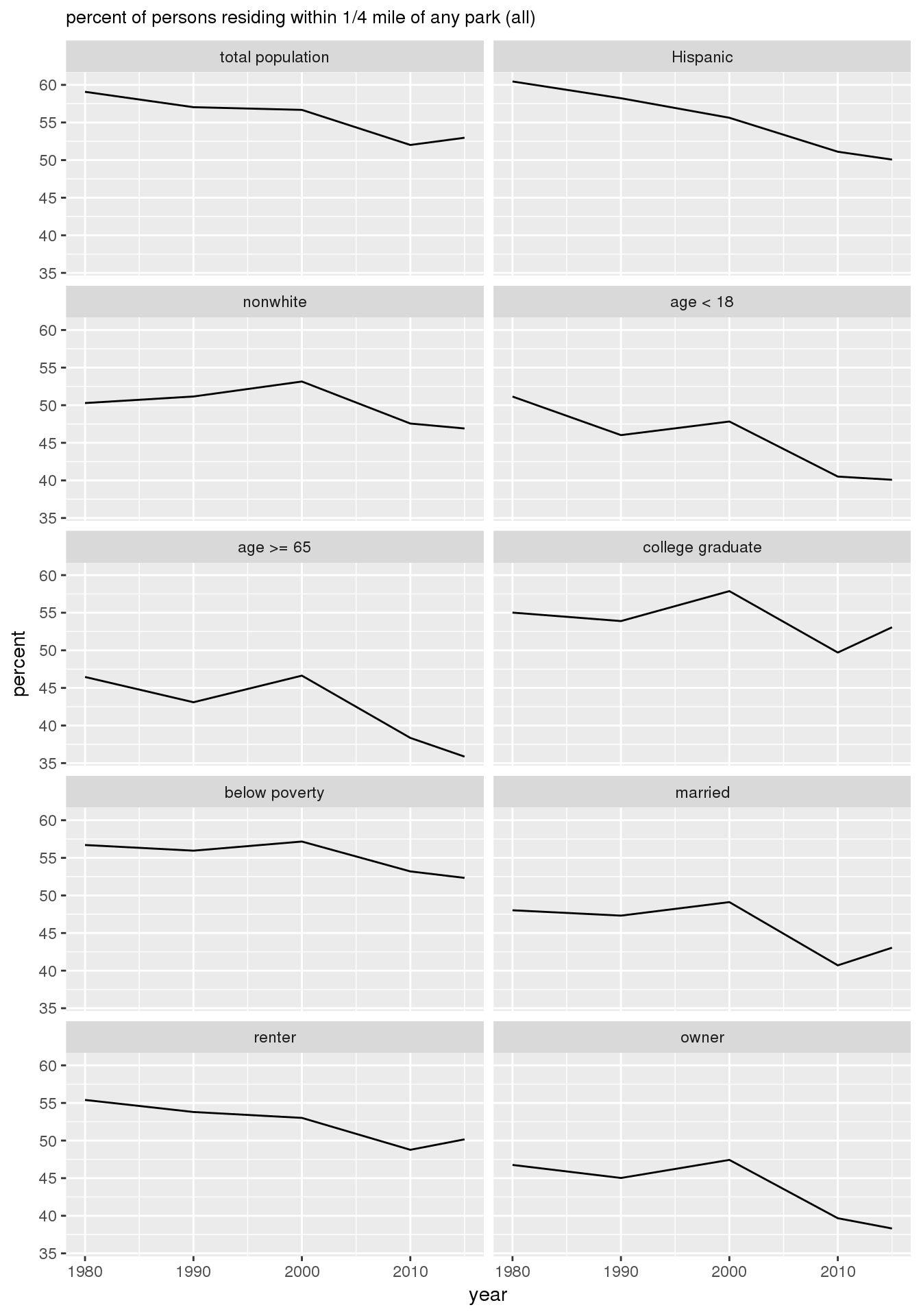
ggsave(filename = file.path(imagedir, "parks_all_demographics.png"), plot = g, width = 4, height = 6, units = "in")
Furthermore, when stratified by 16th Avenue, there were more persons residing within 1/4 mile of park on the east side than on the west side.
Parks with no private funding
sql <- "
with
--parks
prp as (select * from yakima_equity.park_private)
, p0 as (select * from yakima_equity.parksvalid where yearcreated <= xxxYEARxxx and name not in (select name from prp))
, p1 as (select the_geom_2286, st_area(the_geom_2286) as park_area_orig from p0)
--annexation
, anx as (select st_union(the_geom_2286) as geom from yakima_equity.annexations where extract('year' from annex_date) <= xxxYEARxxx)
--park buffer
, pb0 as (select true as buffer, st_union(st_buffer(the_geom_2286, 5280/4)) as geom from p1)
----clip by annexation
, pb as (select buffer, (st_multi(st_intersection(pb0.geom, anx.geom)))::geometry(multipolygon, 2286) as geom from pb0, anx where st_intersects(pb0.geom, anx.geom))
--e/w
, ew as (select zone_16th, the_geom_2286 as geom from yakima_equity.ew_16th)
--non-buffer
, pnb as (select false as buffer, (st_multi(st_difference(anx.geom, pb.geom)))::geometry(multipolygon, 2286) as geom from pb, anx where st_intersects(anx.geom, pb.geom))
--combined
, pb_pnb as (select * from pb union all select * from pnb)
--overlay e/w --note use of polygonalintersection function
, pball as (select buffer, zone_16th, polygonalintersection(ew.geom, pb_pnb.geom, 2286) as geom from ew, pb_pnb)
--census tracts
, ct as (select the_geom_2286 as geom, tract::text from yakima_equity.tract_xxxYEARxxx)
--attributes only
, cta as (select
tract::text
, st_area(the_geom_2286) as area_orig
, total_pop
, age_lt_18
, age_lt_65
, age_ge_65
, median_hh_income
, median_family_income
, eth_hispanic
, race_nonwhite
, edu_collgrad
, edu_9th_somecoll
, edu_lt_9th
, pov_status
, pov_below_100pct
, married
, unmarried
, housingunits_renter
, housingunits_owner
from yakima_equity.tract_xxxYEARxxx)
--intersection of ct and pball
, i0 as (select
polygonalintersection(ct.geom, pball.geom, 2286) as geom
, st_area(st_intersection(ct.geom, pball.geom)) as area_int
, buffer
, zone_16th
, tract
from pball, ct where st_intersects(pball.geom, ct.geom))
, i as (select
area_int
, buffer
, zone_16th
, tract::text
--ratio
, area_int / area_orig as area_prop
from i0 join cta using (tract) where area_int > 0)
--proportional counts inside vs outside buffer
, props as (select tract, buffer, zone_16th
, total_pop * area_prop as total_pop
, age_lt_18 * area_prop as age_lt_18
, age_lt_65 * area_prop as age_lt_65
, age_ge_65 * area_prop as age_ge_65
, median_hh_income
, median_family_income
, eth_hispanic * area_prop as eth_hispanic
, race_nonwhite * area_prop as race_nonwhite
, edu_collgrad * area_prop as edu_collgrad
, edu_9th_somecoll * area_prop as edu_9th_somecoll
, edu_lt_9th * area_prop as edu_lt_9th
, pov_status * area_prop as pov_status
, pov_below_100pct * area_prop as pov_below_100pct
, married * area_prop as married
, unmarried * area_prop as unmarried
, housingunits_renter * area_prop as housingunits_renter
, housingunits_owner * area_prop as housingunits_owner
from i join cta using(tract))
-- select * from props order by tract, buffer
--sum insie vs outside buffer
, ssum as (select
buffer
, zone_16th
, sum(total_pop) as total_pop
, sum(eth_hispanic) as eth_hispanic
, sum(race_nonwhite) as race_nonwhite
, sum(age_lt_18) as age_lt_18
, sum(age_lt_65) as age_lt_65
, sum(age_ge_65) as age_ge_65
, sum(edu_collgrad) as edu_collgrad
, sum(edu_9th_somecoll) as edu_9th_somecoll
, sum(edu_lt_9th) as edu_lt_9th
, sum(pov_status) as pov_status
, sum(pov_below_100pct) as pov_below_100pct
, sum(married) as married
, sum(unmarried) as unmarried
, sum(housingunits_renter) as housingunits_renter
, sum(housingunits_owner ) as housingunits_owner
from props
group by buffer, zone_16th)
--proportion with access
, paxs as (select xxxYEARxxx::integer as year
, buffer
, zone_16th
, 100 * total_pop / sum(total_pop) over() as total_pop
, 100 * eth_hispanic / sum(eth_hispanic) over() as eth_hispanic
, 100 * race_nonwhite / sum(race_nonwhite) over() as race_nonwhite
, 100 * age_lt_18 / sum(age_lt_18) over() as age_lt_18
, 100 * age_lt_65 / sum(age_lt_65) over() as age_lt_65
, 100 * age_ge_65 / sum(age_ge_65) over() as age_ge_65
, 100 * edu_collgrad / sum(edu_collgrad) over() as edu_collgrad
, 100 * edu_9th_somecoll / sum(edu_9th_somecoll) over() as edu_9th_somecoll
, 100 * edu_lt_9th / sum(edu_lt_9th) over() as edu_lt_9th
, 100 * pov_status / sum(pov_status) over() as pov_status
, 100 * pov_below_100pct / sum(pov_below_100pct) over() as pov_below_100pct
, 100 * married / sum(married) over() as married
, 100 * unmarried / sum(unmarried) over() as unmarried
, 100 * housingunits_renter / sum(housingunits_renter) over() as housingunits_renter
, 100 * housingunits_owner / sum(housingunits_owner ) over() as housingunits_owner
from ssum)
select * from paxs;"
ydat <- NULL
for(y in c(1980, 1990, 2000, 2010, 2015)){
sqly <- gsub("xxxYEARxxx", y, sql)
ydat <- rbind(ydat, dbGetQuery(conn = dbconn, statement = sqly))
}
# drop some columns, rename some.
ydat$pov_status <- ydat$unmarried <- ydat$total_pop <- ydat$age_lt_65 <- ydat$edu_9th_somecoll <- ydat$edu_9th_somecoll <- NULL
names(ydat) <- c("year", "buffer", "zone_16th", "total population", "Hispanic", "nonwhite", "age < 18", "age >= 65", "college graduate", "below poverty", "married", "renter", "owner")
# melt
ydatl <- ydatl0 <- melt(ydat, id.vars=c("year","buffer","zone_16th"), value.name = "percent")
# ydatl0$year <- factor(ydatl0$year)
# g <- ggplot(data = ydatl0, aes(x = year, y = percent, fill = buffer)) +
# geom_bar(position = "dodge", stat = "identity") +
# facet_wrap(~variable, ncol = 2) +
# scale_fill_discrete(name="in 1/4 mile buffer")
# print(g)
# ggsave(filename = file.path(imagedir, "parks_demographics_16th.png"), plot = g, width = ggsavewidth, height = ggsaveheight, units = "in")
ydatl <- ydatl[ydatl$buffer,]
l <- levels(ydatl$variable)
lx <- gsub(" ", "\n", l)
ydatl$vname <- factor(gsub(" ", "\n", ydatl$variable), levels = lx)
#ydatl$year <- factor(ydatl$year)
g <- ggplot(data = ydatl, aes(x = year, y = percent)) +
geom_line() +
#facet_wrap(variable ~ zone_16th, ncol = 2) +
facet_grid(vname ~ zone_16th) +
labs(title = "percent of persons residing within 1/4 mile of any park (non private)") +
theme(plot.title = element_text(size=10))
print(g)
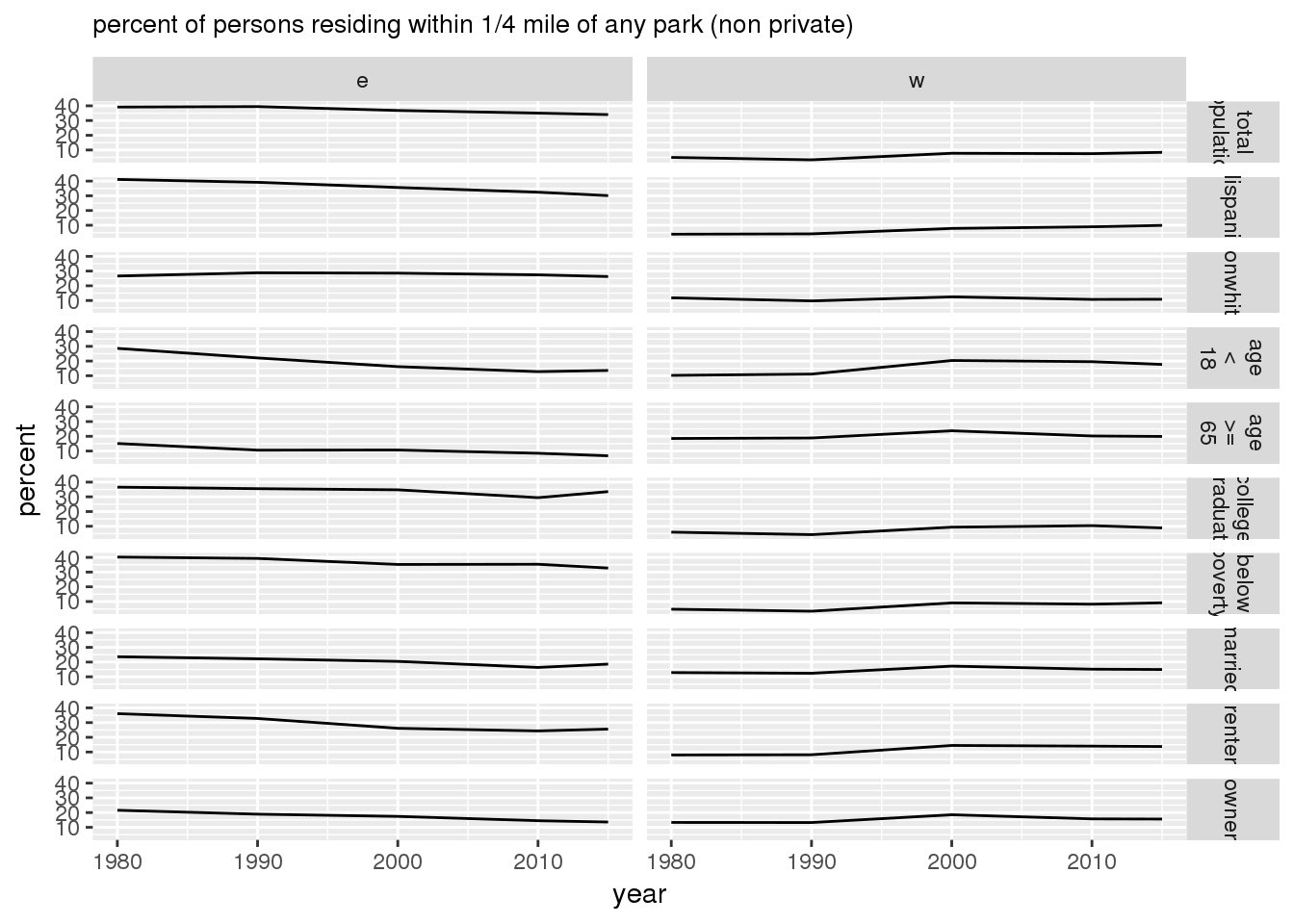
ggsave(filename = file.path(imagedir, "parks_noprivate_demographics_16th.png"), plot = g, width = 4, height = 8, units = "in")
All parks
sql <- "
with
--parks
prp as (select * from yakima_equity.park_private)
, p0 as (select * from yakima_equity.parksvalid where yearcreated <= xxxYEARxxx)
, p1 as (select the_geom_2286, st_area(the_geom_2286) as park_area_orig from p0)
--annexation
, anx as (select st_union(the_geom_2286) as geom from yakima_equity.annexations where extract('year' from annex_date) <= xxxYEARxxx)
--park buffer
, pb0 as (select true as buffer, st_union(st_buffer(the_geom_2286, 5280/4)) as geom from p1)
----clip by annexation
, pb as (select buffer, (st_multi(st_intersection(pb0.geom, anx.geom)))::geometry(multipolygon, 2286) as geom from pb0, anx where st_intersects(pb0.geom, anx.geom))
--e/w
, ew as (select zone_16th, the_geom_2286 as geom from yakima_equity.ew_16th)
--non-buffer
, pnb as (select false as buffer, (st_multi(st_difference(anx.geom, pb.geom)))::geometry(multipolygon, 2286) as geom from pb, anx where st_intersects(anx.geom, pb.geom))
--combined
, pb_pnb as (select * from pb union all select * from pnb)
--overlay e/w --note use of polygonalintersection function
, pball as (select buffer, zone_16th, polygonalintersection(ew.geom, pb_pnb.geom, 2286) as geom from ew, pb_pnb)
--census tracts
, ct as (select the_geom_2286 as geom, tract::text from yakima_equity.tract_xxxYEARxxx)
--attributes only
, cta as (select
tract::text
, st_area(the_geom_2286) as area_orig
, total_pop
, age_lt_18
, age_lt_65
, age_ge_65
, median_hh_income
, median_family_income
, eth_hispanic
, race_nonwhite
, edu_collgrad
, edu_9th_somecoll
, edu_lt_9th
, pov_status
, pov_below_100pct
, married
, unmarried
, housingunits_renter
, housingunits_owner
from yakima_equity.tract_xxxYEARxxx)
--intersection of ct and pball
, i0 as (select
polygonalintersection(ct.geom, pball.geom, 2286) as geom
, st_area(st_intersection(ct.geom, pball.geom)) as area_int
, buffer
, zone_16th
, tract
from pball, ct where st_intersects(pball.geom, ct.geom))
, i as (select
area_int
, buffer
, zone_16th
, tract::text
--ratio
, area_int / area_orig as area_prop
from i0 join cta using (tract) where area_int > 0)
--proportional counts inside vs outside buffer
, props as (select tract, buffer, zone_16th
, total_pop * area_prop as total_pop
, age_lt_18 * area_prop as age_lt_18
, age_lt_65 * area_prop as age_lt_65
, age_ge_65 * area_prop as age_ge_65
, median_hh_income
, median_family_income
, eth_hispanic * area_prop as eth_hispanic
, race_nonwhite * area_prop as race_nonwhite
, edu_collgrad * area_prop as edu_collgrad
, edu_9th_somecoll * area_prop as edu_9th_somecoll
, edu_lt_9th * area_prop as edu_lt_9th
, pov_status * area_prop as pov_status
, pov_below_100pct * area_prop as pov_below_100pct
, married * area_prop as married
, unmarried * area_prop as unmarried
, housingunits_renter * area_prop as housingunits_renter
, housingunits_owner * area_prop as housingunits_owner
from i join cta using(tract))
-- select * from props order by tract, buffer
--sum insie vs outside buffer
, ssum as (select
buffer
, zone_16th
, sum(total_pop) as total_pop
, sum(eth_hispanic) as eth_hispanic
, sum(race_nonwhite) as race_nonwhite
, sum(age_lt_18) as age_lt_18
, sum(age_lt_65) as age_lt_65
, sum(age_ge_65) as age_ge_65
, sum(edu_collgrad) as edu_collgrad
, sum(edu_9th_somecoll) as edu_9th_somecoll
, sum(edu_lt_9th) as edu_lt_9th
, sum(pov_status) as pov_status
, sum(pov_below_100pct) as pov_below_100pct
, sum(married) as married
, sum(unmarried) as unmarried
, sum(housingunits_renter) as housingunits_renter
, sum(housingunits_owner ) as housingunits_owner
from props
group by buffer, zone_16th)
--proportion with access
, paxs as (select xxxYEARxxx::integer as year
, buffer
, zone_16th
, 100 * total_pop / sum(total_pop) over() as total_pop
, 100 * eth_hispanic / sum(eth_hispanic) over() as eth_hispanic
, 100 * race_nonwhite / sum(race_nonwhite) over() as race_nonwhite
, 100 * age_lt_18 / sum(age_lt_18) over() as age_lt_18
, 100 * age_lt_65 / sum(age_lt_65) over() as age_lt_65
, 100 * age_ge_65 / sum(age_ge_65) over() as age_ge_65
, 100 * edu_collgrad / sum(edu_collgrad) over() as edu_collgrad
, 100 * edu_9th_somecoll / sum(edu_9th_somecoll) over() as edu_9th_somecoll
, 100 * edu_lt_9th / sum(edu_lt_9th) over() as edu_lt_9th
, 100 * pov_status / sum(pov_status) over() as pov_status
, 100 * pov_below_100pct / sum(pov_below_100pct) over() as pov_below_100pct
, 100 * married / sum(married) over() as married
, 100 * unmarried / sum(unmarried) over() as unmarried
, 100 * housingunits_renter / sum(housingunits_renter) over() as housingunits_renter
, 100 * housingunits_owner / sum(housingunits_owner ) over() as housingunits_owner
from ssum)
select * from paxs;"
ydat <- NULL
for(y in c(1980, 1990, 2000, 2010, 2015)){
sqly <- gsub("xxxYEARxxx", y, sql)
ydat <- rbind(ydat, dbGetQuery(conn = dbconn, statement = sqly))
}
# drop some columns, rename some.
ydat$pov_status <- ydat$unmarried <- ydat$total_pop <- ydat$age_lt_65 <- ydat$edu_9th_somecoll <- ydat$edu_9th_somecoll <- NULL
names(ydat) <- c("year", "buffer", "zone_16th", "total population", "Hispanic", "nonwhite", "age < 18", "age >= 65", "college graduate", "below poverty", "married", "renter", "owner")
# melt
ydatl <- ydatl0 <- melt(ydat, id.vars=c("year","buffer","zone_16th"), value.name = "percent")
# ydatl0$year <- factor(ydatl0$year)
# g <- ggplot(data = ydatl0, aes(x = year, y = percent, fill = buffer)) +
# geom_bar(position = "dodge", stat = "identity") +
# facet_wrap(~variable, ncol = 2) +
# scale_fill_discrete(name="in 1/4 mile buffer")
# print(g)
# ggsave(filename = file.path(imagedir, "parks_demographics_16th.png"), plot = g, width = ggsavewidth, height = ggsaveheight, units = "in")
ydatl <- ydatl[ydatl$buffer,]
l <- levels(ydatl$variable)
lx <- gsub(" ", "\n", l)
ydatl$vname <- factor(gsub(" ", "\n", ydatl$variable), levels = lx)
#ydatl$year <- factor(ydatl$year)
g <- ggplot(data = ydatl, aes(x = year, y = percent)) +
geom_line() +
#facet_wrap(variable ~ zone_16th, ncol = 2) +
facet_grid(vname ~ zone_16th) +
labs(title = "percent of persons residing within 1/4 mile of any park (all)") +
theme(plot.title = element_text(size=10))
print(g)
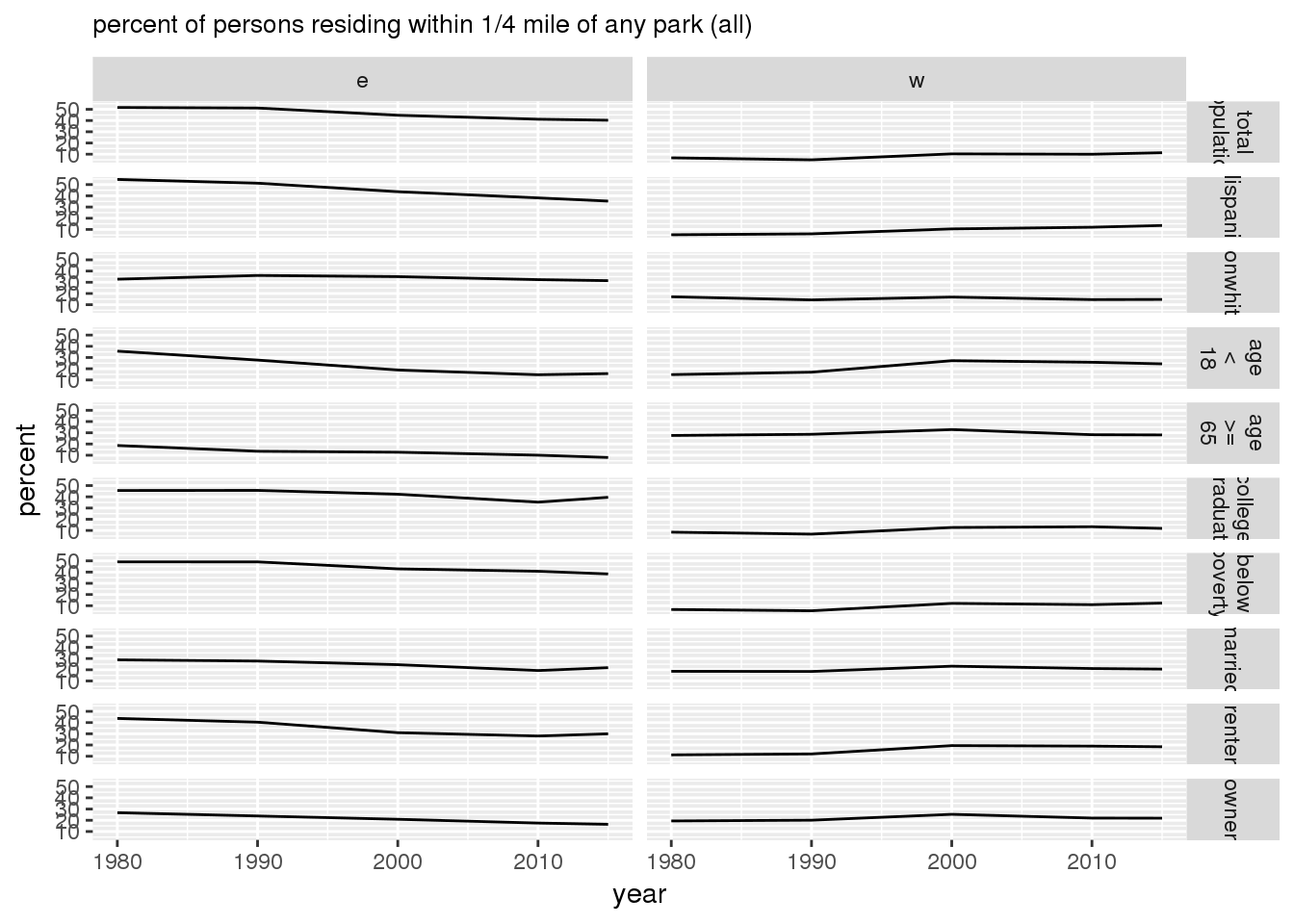
ggsave(filename = file.path(imagedir, "parks_all_demographics_16th.png"), plot = g, width = 4, height = 8, units = "in")

